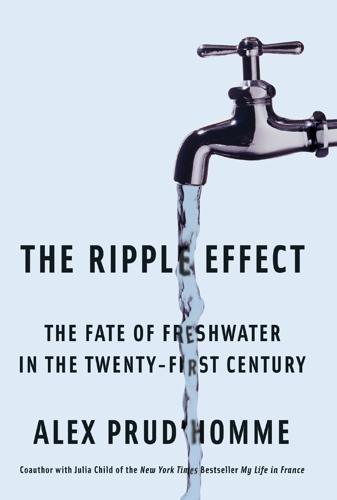
The Ripple Effect: The Fate of Fresh Water in the Twenty-First Century
by
Alex Prud'Homme
Published 6 Jun 2011
CHAPTER 9: ONE STEP FORWARD, TWO STEPS BACK 99 Tom Porta: Congressional testimony, October 15, 2009: http://www.neiwpcc.org/email-newsletter/oct09/ASIWPCA-Porta%20Testimony.pdf. 99 James Oberstar: Charles Duhigg, “Clean Water Laws Are Neglected, at a Cost in Suffering,” New York Times, September 13, 2009. 99 Underfunded, overly politicized: Ibid. 100 fifteen hundred major pollution cases: Charles Duhigg, “Rulings Restrict Clean Water Act, Foiling E.P.A.,” New York Times, February 28, 2010. 100 John Rapanos filled fifty-four acres of wetland: “Rapanos Will Pay for Clean Water Act Violations,” Environmental News Service, December 30, 2008. 101 Douglas Mundrick: Duhigg, “Rulings Restrict Clean Water Act.” 101 Peter Silva: Congressional testimony, December 8, 2009: http://www.epa.gov/ocir/hearings/testimony /111_2009_2010/2009_1208_pss.pdf. 101 Jay Shimshack: Congressional testimony, October 15, 2009. 101 William Ruckelshaus: Ruckelshaus, “New Shade of Green.” 102 Kingston Ash plant: Shaila Dewan, “Tennessee Ash Flood Larger Than Initial Estimate,” New York Times, December 26, 2008. 102 Jackson, forty-six: Tim Dickinson, “The Eco-Warrior,” Rolling Stone, January 20, 2010. 103 Jeff Ruch: Ibid., and author’s e-mails with Ruch, 2010. 103 Robert F.
…
In America, clean water seems limitless. This assumption is so ingrained that most of us never stop to think about it when we brush our teeth, power up our computers, irrigate our crops, build a new house, or gulp down a clean, clear drink on a hot summer day. It’s easy to see why. For most of its history, the United States has shown a remarkable ability to find, treat, and deliver potable water to citizens in widely different circumstances across the country. Since the seventies, America has relied on the Environmental Protection Agency and robust laws—most notably the Clean Water Act and the Safe Drinking Water Act, which have been further enhanced by state and local regulations—to protect water supplies.
…
Imagine what would happen if this place stopped working one day? Let’s just say it wouldn’t be pretty.” CHAPTER 6 Brave New World Trying to solve these [modern pollution] problems with the 1972 Clean Water Act is like trying to use a 1972 auto repair manual to repair a 2008 electric hybrid. —Paul Freedman, vice president of the Water Environment Federation SEEKING A PARADIGM SHIFT When the Clean Water Act was signed into law by President Nixon on October 18, 1972, it was hailed as landmark legislation. Over the next three decades, the law led to tangible, significant improvements in the quality of American water.

The Survival of the City: Human Flourishing in an Age of Isolation
by
Edward Glaeser
and
David Cutler
Published 14 Sep 2021
One of us (Cutler) coauthored a paper fifteen years ago that estimated the impact on mortality of clean water across the nineteenth-century United States by using the relatively random timing of the introduction of new technologies, like water filtration, in different cities as a natural experiment. The paper concluded that “clean water was responsible for nearly half of the total mortality reduction in major cities, three-quarters of the infant-mortality reduction, and nearly two-thirds of the child mortality reduction.” The ratio of benefits to costs was 23 to 1, which makes clean water among the single best investments that any government has ever made.
…
See African American Black Death deaths associated with, 171 economic impacts of, 21, 169, 171–73 in London, 173–75 Plague of Justinian (Constantinople/Byzantium), 5, 20, 34–37, 39, 40, 172, 243, 244 and Ragusa’s quarantine, 41–43 relative stability during outbreaks of, 45–46 and textiles, 174, 180 zoonotic origins of, 88 Black Lives Matter movement, 23 Bloom, Nicholas, 227, 232, 234 Bloomberg, Michael, 99, 289, 290 Bloomfield, Ashley, 18, 163, 164 Bolotnyy, Valentin, 315 border closures, 53–54, 166 Boston Boston marathon bombing (2013), 152 education impacts of pandemic, 330 elevated highway in, 251 entrepreneurship programs, 239, 335 law enforcement in, 292–93, 295 regulation in, 200–201 Boyle, Andrew, 246 Boyle Heights Anglo/Jewish exodus from, 258 anti-gentrification protests in, 260–62 and Brown Berets, 256–57 gentrification in, 258–63 highway building in, 251–52 history of, 246–52 local leadership in, 253–57 student walk out in, 254–56 upward mobility in, 257–58 Bradford, William, 46 Brazil, 197 Briggs, Claudia, 313 Brinkley, Catherine, 90 Broadberry, Stephen, 171 Bronze Age civilization, 31, 35 Brookline, Massachusetts, 268–69, 270 Brownsville, Brooklyn, New York, 103–4, 105, 127 Brundtland, Gro Harlem, 323 Bryant, William Cullen, 81–82 bubonic plague, 68 Buffett, Warren, 134 Burns, Arthur, 186 Burr, Aaron, 74 Bush, George W., 151, 155, 156, 323, 325 Caesar Augustus, 181 California, 17, 264–65, 336 California Education Code, 313–14 California Teachers Association (CTA), 313–14 Campbell, Bruce, 171 Canada health care spending in, 131, 141, 142, 143 health of urbanites in, 103 heart stents in, 146 public health spending in, 153 quarantine station of, 71 rationing of health care in, 148 testing for COVID-19 in, 156 cardiac technologies, 145, 146 Caribbean heritage, people of, 97 Carman, Harry, 213 Case, Anne, 123 Castro, Sal, 253 Centers for Disease Control and Prevention (CDC) budget for, 58, 153 on drug overdose deaths, 123 and new infectious diseases, 55 and public health funding, 154 on risk factors for COVID-19, 106 and testing for COVID-19, 150 trust placed in, 57 Centers for Medicare and Medicaid Services (CMS), 136 Central Piedmont Community College, 335 centrifugal/dispersing forces, 210, 214–18, 220 centripetal/urbanizing forces, 210–14, 223 Chauvin, Derek, 275–76, 293, 298 Chavez, Cesar, 254, 256 Chen, Keith, 159 Chetty, Raj, 216, 257, 276, 299–300, 302 Chevalier, Judy, 159 Chicago, 195, 210, 211, 214, 216, 217, 294 chimpanzees, 88 China Antonine Plague in, 32–33 Black Death in, 41 fight against mosquitoes in, 89 restrictions on movement in, 54 and travel bans of 2020, 41–42, 55, 149, 150, 163 and World Health Organization, 56–57 Chinitz, Benjamin, 199–203 cholera economic impacts of, 169 in India, 63–69, 80 and infrastructure investments of cities, 6 Jameson’s report on, 65–67, 86 in New York City, 71, 73, 74, 80 as ongoing threat, 320 spread of, between 1817 and 1923, 69–71 and strength of civil society, 244 Christians, 33 civil society, strength of, 10, 15, 45, 243–44, 321–22 clean water supply and aqueducts, 62–63, 74–75, 77, 79–80, 210 and cholera outbreak in India, 67, 68, 80 costs of clean water, 77–78 governments’ role in, 62–63, 75, 96 in Hyderabad, India, 94–95 last-mile problem for, 79–80, 83 in Lusaka, Zambia, 95–96 and mortality trends, 75 of New York City, 72–75, 83 public vs. private ownership of waterworks, 78–79 and sewer systems, 76 value of clean water, 75–76 Cleveland, Ohio, 1 Clinton, Bill, 281, 282 Clinton, DeWitt, 74 clothing and textiles, 53, 174, 176, 180, 188, 199, 217–18 collective vs. personal interests, 42–43, 44 commercial rents/real estate, 16, 17, 208, 238 Common Core State Standards Initiative, 304–8 communication, 221, 223, 224–27 competition among businesses, 178–79 compromise, value of, 10 computerization, 220, 223 Constantinople (Byzantium), 5, 20, 33–37, 39, 40, 41, 172, 244 construction workers, 192–93 consumer spending, 187 contact tracing, 155, 156, 164, 168 contagion theory of epidemics, 49, 50 Cooper, Peter, 82 cordon sanitaire, 39, 53–54 Coronavirus Aid, Relief, and Economic Security (CARES), 195 corporate relocations, 209 cost of living in urban areas, 235–36 Cothorne, Adell, 311 Council of Chief State School Officers (CCSSO), 305 COVID-19 pandemic bats linked to, 88, 91, 92 deaths associated with, 87, 131–32, 319 and drug overdose deaths, 124 economic impacts of, 61, 96, 169, 197 and essential workers, 194–95, 229–30 estimated costs of, 11 failure to prepare for, 150–52, 153–56 federal aid programs, 195–96 in Florida, 197–98 and forward-looking prevention strategies, 326–29 and George Floyd-related protests, 276 hot spots for, 7, 175, 185 humans as primary vectors of, 86 job losses due to, 2, 169, 196, 197, 228, 229, 233 lack of PPE, 150–51 leadership failures in, 149–53, 163 leadership successes in, 163–67.
…
The British elites living in Delhi’s suburban Civil Lines during the nineteenth century received clean water and sewers. During the twentieth century, the British could move into New Delhi, a segregated, modernized, Europeanized capital. But in old Delhi, where the poorer Indians lived, “until 1928 excrement and refuse were dumped within the city, in the ditch, and in pits close to town.” What Delhi needed then and what the cities of the developing world need now are the game-changing investments in clean water and sewers that were built, largely as a response to cholera, in the wealthy world. Sporadic, almost feeble, expenditures on new water tanks, or open sewers, could not protect nineteenth-century Delhi and cannot protect twenty-first-century poor world megacities from the scourge of contagious disease.
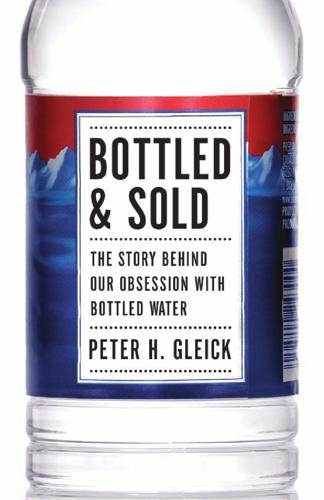
Bottled and Sold: The Story Behind Our Obsession with Bottled Water
by
Peter H. Gleick
Published 20 Apr 2010
Daily stories about our deteriorating water resources added urgency to the drive for stronger federal oversight over our worsening environment, and in 1970 the U.S. Environmental Protection Agency (EPA) was created to centralize and standardize inconsistent federal and state laws for environmental protection. That same year, Congress passed the Clean Air Act, followed in 1972 by the Clean Water Act, and in 1974 by the federal Safe Drinking Water Act (SDWA).13 The Clean Water Act reduced uncontrolled dumping of wastes into surface waters, and the SDWA is the law that requires the U.S. EPA to protect tap water quality. To do so, the EPA sets health-based standards for naturally occurring and human-made contaminants that might be found in our water supplies, and it oversees the water agencies, municipalities, and states that implement the standards.
…
This iconic image made Cleveland the butt of jokes for decades and, incidentally, led to a great Randy Newman song, “Burn on,” with the following lyrics: Cleveland, even now I can remember ’Cause the Cuyahoga River Goes smokin’ through my dreams Burn on, big river, burn on Burn on, big river, burn on Now the Lord can make you tumble And the Lord can make you turn And the Lord can make you overflow But the Lord can’t make you burn.1 This incident, however, also led to the federal Clean Water Act of 1972, the Great Lakes Water Quality Agreement, and the creation of the U.S. Environmental Protection Agency (EPA). Today, Lake Erie is far cleaner than it’s been in years, and Cleveland’s water system provides 90 billion gallons of high-quality potable water to customers every year. Two cents today will pay for nearly 30 gallons of water of a far higher quality than Benhu Johnson and his pony were able to deliver.
…
As a result, many people seek out alternatives, and the bottled water industry is happy to take advantage of this distrust. They subtly and blatantly play on our fears to boost sales through advertising and marketing, and through campaigns to move consumers from tap water to the bottle. The irony is that, behind the scenes, most local water systems do a remarkable job of ensuring a clean water supply, most of the time. I never saw bottled water when I was a child. My mother never brought home water from the grocery store—and what a bizarre event that would have been. We drank milk or apple juice or New York City tap water. My friends, family, and acquaintances all drank tap water without a second thought.
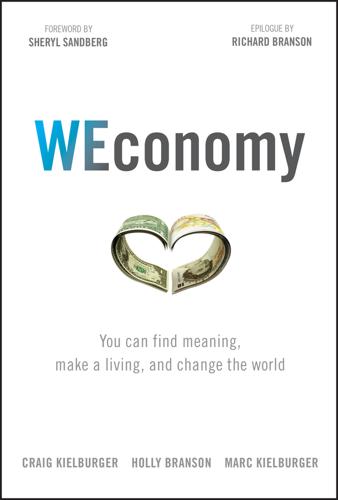
WEconomy: You Can Find Meaning, Make a Living, and Change the World
by
Craig Kielburger
,
Holly Branson
,
Marc Kielburger
,
Sir Richard Branson
and
Sheryl Sandberg
Published 7 Mar 2018
Because RBC helped us with a logistical hurdle that we couldn't possibly have done in-house—processing millions of loose coins—more than 56,000 people received a sustainable source of clean drinking water, with wells dug and pump systems installed, community members trained in maintenance and repairs, and small businesses established to generate funds for any future repairs and expansion. Clean water scarcity still affects almost 40 percent of the global population, creating a host of sanitary and disease concerns. But clean water also has an economic benefit. The United Nations estimates that every US$1 invested in clean water translates into an average return of US$9, with those benefits being experienced specifically by poor children in disadvantaged communities.3 Canadian kids rolled up their sleeves to help impoverished children they'd likely never meet.
…
Our time with Craig in Rajasthan showed all of this so clearly. We visited a one-room village school and helped build a wall for a new school that will provide multiple classrooms so more children will have the opportunity to learn. We helped families who had relied on polluted water sources carry clean water from their new community well to their homes. We attended a Lean In Circle meeting with women who are participating in a financial literacy program that has helped them save money and send their daughters to school for the first time. All of this is happening because WE Charity, a program started by Craig when he was just 12 years old, is working in these communities—and making a huge difference.
…
All of this is happening because WE Charity, a program started by Craig when he was just 12 years old, is working in these communities—and making a huge difference. This book is about how we can all work to improve the lives of others. The problems in the world can seem overwhelming—5.9 million children under the age of five die each year of preventable or curable diseases,1 more than 700 million people still lack access to clean water,2 and 46 million people live in slavery.3 But even a single person can make a huge difference, as each of the authors of this book shows us every day. There are no simple solutions, but there are solutions that can be created and deployed. Companies, nonprofits, governments, and hybrid social enterprises each have their own role to play—and the authors of this book have been leaders in all these realms.

Everything Under the Sun: Toward a Brighter Future on a Small Blue Planet
by
Ian Hanington
Published 13 May 2012
Canadians and Americans who have travelled outside of the tourist resorts in nearby Mexico know that abundant and clean water is never taken for granted there. In the U.S., climate change is expected to reduce flows in major rivers, including the Rio Grande and Colorado, by as much as 20 per cent this century, according to a report by the Department of the Interior. With an increase in droughts over the past several decades, river basins in the western U.S. and other areas are already experiencing challenges in supplying growing populations with water for drinking, irrigation, power generation, and recreation. We often take our abundant and clean water for granted, but we shouldn’t.
…
To start, metering and disincentives for high water use can help with conservation. But most importantly, governments must tackle the challenge of climate change. Along with protecting clean water supplies and human health, addressing climate change will strengthen the economy. An analysis conducted in 2010 by the Western Climate Initiative showed that addressing climate change and fostering clean-energy solutions could lead to cost savings of about US$100 billion by 2020 for the initiative’s member states and provinces. We can’t live without clean water. That’s something we all have to think about. UN knows that forests are vital to health THE UN GENERAL Assembly met in New York to declare 2011 the International Year of Forests.
…
And because we are all connected to this fragile web, we need to protect animals and their habitat not just for their sake but for our own as well. Species loss is a silent epidemic SCIENTISTS WARN THAT the twin threats of climate change and wildlife extinction threaten our planet’s life-support systems, including clean air, clean water, and productive soil. Awareness about the causes and consequences of climate change is growing, leading some governments to look for solutions in areas such as clean energy. Species extinction, however, has gone largely unnoticed by government leaders. In a June 2010 article in the Guardian newspaper titled “Give Decision Makers Access to the Value of Nature’s Services,” France’s ecology secretary and the World Resources Institute’s vice-president of science and research argue that “unlike the impacts of climate change, biodiversity—and the ecosystem services it harbours—disappears in a mostly silent, local, and anonymous fashion.
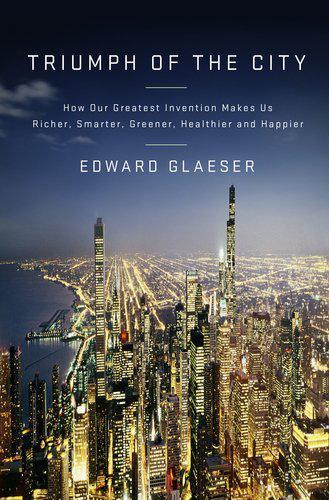
Triumph of the City: How Our Greatest Invention Makes Us Richer, Smarter, Greener, Healthier, and Happier
by
Edward L. Glaeser
Published 1 Jan 2011
The doctor didn’t quite understand the bacterial origins of cholera, but he correctly determined that the malady was being spread by infected water. Snow’s research offered early proof of a fact that now seems obvious: Cities must provide clean water to ensure urban health. Snow also provides us with an example of self-protecting urban innovation, cities’ ability to generate the information needed to solve their own problems. In the United States, city governments, driven more by intuition than by Snow’s science, had begun the Herculean job of providing clean water at the start of the nineteenth century. Somehow they grasped that foul water played a role in disease outbreaks, and for years they fought for cleaner water.
…
Since the Manhattan Company didn’t solve New York’s clean-water problem, waterborne diseases kept reappearing. New York City would occasionally lose more than a half percent of its population to an epidemic during a given year, double the death rate in a normal year, as it did during the 1832 cholera epidemic. Finally, New York City followed Philadelphia and spent millions, as Hamilton had warned, on public water provision. The Croton Aqueduct, built at a cost of $9 million (more than $170 million in 2010 dollars), provided New York’s water after 1842, and that clean water quickly had an impact. After 1860, the mortality rate experienced a remarkable sixty-year decline, from more than thirty deaths per thousand at the end of the Civil War to around ten per thousand during the 1920s.
…
In Paris, Baron Georges-Eugène Haussmann had used his virtually unlimited authority as the agent of Napoléon III to create a sewage system that still serves the city and attracts tourists to its tunnels. Economic historian Werner Troesken has done an enormous amount of research, which shows that investments in municipal waterworks significantly reduced deaths from typhoid fever and other diseases. Clean water has even reduced deaths from diseases that aren’t carried by water. Echoing centuryold research on the impact of clean water in Massachusetts, Troesken and his coauthor Joseph Ferrie found that, starting in 1850, lower rates of typhoid fever in Chicago generally went along with larger reductions in other diseases. Deaths from other ailments may have fallen because waterborne diseases were being mistaken for other diseases or because waterborne illnesses were weakening immune systems, which then failed when other ailments attacked them.
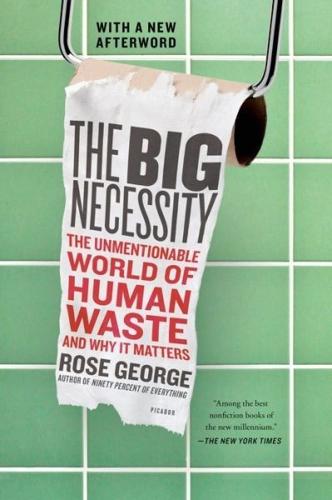
The Big Necessity: The Unmentionable World of Human Waste and Why It Matters
by
Rose George
Published 13 Oct 2008
Hollywood star Matt Damon has launched the NGO H2O, whose mission is to “bring clean water to Africa.” In the music world, the rapper Jay-Z did a three-part series for MTV on the world’s water crisis. The rock singer Chris Martin is an ambassador for WaterAid. Not one celebrity ambassador, however, has made the obvious point. Dirty water is usually dirtied by feces. It is hard to supply clean water when that clean water is contaminated by overflowing pit latrines or filthy fingernails. “We can get celebrities to talk about water,” a WaterAid employee tells me. “But none of them want to be pictured on a toilet.” Clean water gushing from a new hand pump makes for great press coverage.
…
It described Ohio’s Cuyahoga River, which caught fire twice that year, as “chocolate-brown, oily, bubbling with sub-surface gases.” Consequently, the Clean Water Act of 1972 provided big money for municipalities to improve their sewage treatment. The construction and renovation frenzy that ensued was the largest public works project in the country to date. By its completion, the United States had 16,000 sewage treatment plants and an improved sewage treatment process. But cleaning sewage more efficiently meant removing more dirt. In other words, the Clean Water Act increased the amount of sludge being produced, which was mostly dumped at sea. Farmers like sludge because it has nutrients, but the same nitrogen and phosphorous can feed and breed algae that suck out water’s dissolved oxygen content, leaving it lifeless.
…
The HarperCollins Dictionary of Environmental Science defines sludge as “a viscous, semisolid mixture of bacteria and virus-laden organic matter, toxic metals, synthetic organic chemicals and settled solids removed from domestic industrial waste water at a sewage treatment plant.” The Clean Water Act keeps it simple and calls it a pollutant. I have to use words like if and may because no one actually knows what’s in sludge. Technically, industries are supposed to pretreat hazardous chemicals and waste, but oversight is minimal. And anyway, no one regulates how thousands of chemicals might react with one another or with the pathogens floating alongside them. The most optimistic view of sludge is that it is a soup of unknowns. Others think it’s toxic and can’t be anything else. Cleaning water is done by removing contaminants and concentrating them in sludge.
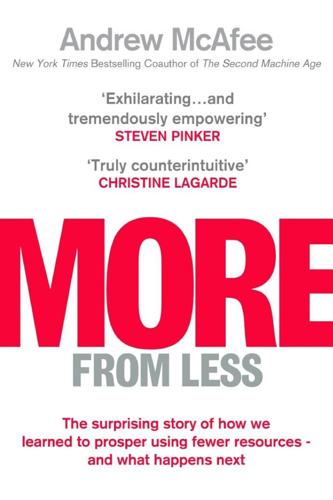
More From Less: The Surprising Story of How We Learned to Prosper Using Fewer Resources – and What Happens Next
by
Andrew McAfee
Published 30 Sep 2019
A flush toilet and water on demand out of a tap are certainly convenient, but are they fundamentally important to the story of twentieth-century growth? They absolutely are. Health researchers David Cutler and Grant Miller estimate that the availability of clean water explains fully half of the total decline in the overall US mortality rate between 1900 and 1936, and 75 percent of the decline in infant mortality. Historian Harvey Green calls the technologies of widespread clean water “likely the most important public health intervention of the twentieth century.” Plumbing was critical in the countryside as well as in the city. Before it came along, domestic work on farms could literally be close to backbreaking.
…
Poverty pollutes, while affluence cleans up from its prior mistakes via public awareness and responsive government. A clear example of this is the effort by both government and industry in the United States to clean up the country’s lakes, ponds, streams, and rivers after the passage of 1972’s Clean Water Act. Economists David Keiser and Joseph Shapiro brought together 50 million pollution readings from 170,000 sites across the country and concluded that “water pollution has declined dramatically over time and that the Clean Water Act… contributed to this decline.” After ocean acidification and plastic trash, nitrogen pollution might well be the most serious problem facing the world’s waters. Nitrogen fertilizer that isn’t absorbed by crops can wash into rivers and oceans.
…
and years of life lost have fallen even more quickly: Hannah Ritchie and Max Roser, “Air Pollution,” Our World in Data, April 17, 2017, https://ourworldindata.org/air-pollution. “Poverty is the biggest polluter”: Akash Kapur, “Pollution as Another Form of Poverty,” New York Times, October 8, 2009, https://www.nytimes.com/2009/10/09/world/asia/09iht-letter.html. “the Clean Water Act… contributed to this decline”: David A. Keiser and Joseph S. Shapiro, “Consequences of the Clean Water Act and the Demand for Water Quality,” Quarterly Journal of Economics 134, no. 1 (2018): 349–96. The results of this intervention were impressive: Zhenling Cui et al., “Pursuing Sustainable Productivity with Millions of Smallholder Farmers,” Nature 555, no. 7696 (2018): 363.
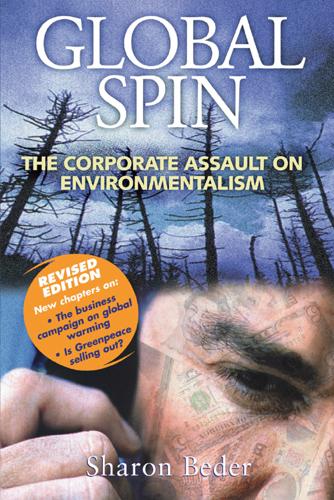
Global Spin: The Corporate Assault on Environmentalism
by
Sharon Beder
Published 1 Jan 1997
Anderson and Leal juxtapose the market with the political process as a means of allocating environmental resources and argue that the political process is inefficient, that is it doesn’t reach the ‘optimal’ level of pollution, that is the level of pollution where costs are minimized: If markets produce ‘too little’ clean water because dischargers do not have to pay for its use, then political solutions are equally likely to produce ‘too much’ clean water because those who enjoy the benefits do not pay the cost. . . Just as pollution externalities can generate too much dirty air, political externalities can generate too much water storage, clear-cutting, wilderness, or water quality. . . Free market environmentalism emphasizes the importance of market processes in determining optimal amounts of resource use.68 ‘Too much’ clean water, it seems, is where the company polluting the water has to pay too much to clean up the mess they make.
…
Index Abramsky, Sasha ref1–ref2 Accuracy in Media (AIM) ref1 acid rain ‘benefits’ of ref1 corporate responsibility ref1 debunking ref1, ref2, ref3 activism corporate ref1, ref2–ref3, ref4–ref5, ref6–ref7, ref8–ref9 employee ref1–ref2, ref3, ref4 environmental ref1, ref2–ref3, ref4, ref5, ref6–ref7, ref8, ref9 Adatto, Kiko ref1–ref2 Adler, Jonathan ref1 The Advancement of Sound Science Coalition (TASSC) ref1 advertising advocacy ref1–ref2, ref3–ref4 brand loyalty ref1, ref2 campaigns ref1–ref2, ref3–ref4, ref5–ref6, ref7–ref8 children targeted ref1–ref2 complaints ref1, ref2–ref3, ref4–ref5 consumerism as result of ref1–ref2, ref3–ref4, ref5–ref6 corporate bias ref1–ref2, ref3–ref4 corporate sponsorship ref1, ref2–ref3, ref4, ref5 environmentalism ref1–ref2, ref3–ref4, ref5–ref6 green ref1–ref2, ref3–ref4 influence of ref1, ref2–ref3, ref4 the ‘infomercial’ ref1–ref2 on the internet ref1–ref2 misleading ref1–ref2 in newspapers ref1–ref2, ref3, ref4 Procter & Gamble ref1–ref2 pseudo-environmentalism ref1–ref2, ref3 regulation of ref1, ref2–ref3, ref4, ref5 research ref1 revenue ref1 in schools ref1–ref2, ref3–ref4 soap operas ref1, ref2 strategies ref1–ref2 TV programs influenced ref1, ref2–ref3, ref4, ref5–ref6 Advertising Age ref1 Advertising Standards Authority (ASA) ref1, ref2–ref3, ref4 advocacy advertising ref1–ref2, ref3–ref4 AEI see American Enterprise Institute aerosol industry ref1–ref2 Agent Orange ref1 Agricultural Chemical Association ref1 agricultural industry ref1, ref2 air pollution ref1, ref2, ref3, ref4 Alliance for Responsible CFC Policy ref1 Alliance for the Responsible Use of Chlorine Chemistry (ARCC) ref1, ref2, ref3–ref4, ref5 Alterman, Eric ref1 Alton, David ref1–ref2 American Automobile Manufacturers Association ref1 American Coal Foundation ref1 American Council on Science and Health ref1, ref2 American Electric Power ref1 American Enterprise Institute (AEI) ref1, ref2, ref3, ref4, ref5, ref6 American Farm Bureau Federation ref1 American Freedom Coalition (AFC) ref1 American Nuclear Society ref1, ref2 American Paper Institute ref1 American Petroleum Institute (API) ref1, ref2, ref3 American Public Health Association ref1 American Society of Mechanical Engineers ref1 Amway ref1 Anderson, Paul ref1–ref2 Anderson, Terry ref1, ref2, ref3 Angel, Jeff ref1 animal testing ref1–ref2, ref3, ref4, ref5, ref6–ref7, ref8, ref9 anti-climate treaty campaign ref1–ref2 anti-environmentalism ref1–ref2, ref3–ref4, ref5–ref6, ref7–ref8, ref9 Apple Computers ref1, ref2 Arizona Republic ref1 Arnold, Ron ref1–ref2, ref3–ref4, ref5–ref6, ref7–ref8, ref9, ref10, ref11 Artzt, Edward ref1 ASA see Advertising Standards Authority Associated Newspapers ref1 ‘astroturf ’ ref1 Atomic Energy Commission ref1 Audubon Society ref1, ref2, ref3 Australia advertising ref1, ref2, ref3, ref4 anti-environmentalism ref1, ref2 community advisory panels ref1 conservatism ref1–ref2 corporate activism ref1–ref2 corporate funding ref1, ref2 dioxin ref1, ref2, ref3, ref4–ref5 education ref1, ref2, ref3, ref4 environmentalism ref1, ref2, ref3 front groups ref1 government influence ref1, ref2–ref3 greenhouse gas emissions ref1, ref2, ref3 influence of economists in ref1–ref2 lawsuits ref1, ref2–ref3, ref4 the media ref1 MPs’ financial interests ref1 ‘New Right’ ref1–ref2 PR industry ref1, ref2, ref3, ref4–ref5, ref6–ref7, ref8–ref9 propaganda ref1–ref2 public opinion ref1, ref2, ref3 ‘revolving door’ syndrome ref1, ref2, ref3 think-tanks ref1–ref2, ref3, ref4, ref5, ref6, ref7, ref8 trade associations ref1 Australian Broadcasting Corporation (ABC) ref1, ref2, ref3 Australian Bureau of Agricultural and Resource Economics (ABARE) ref1 Australian Business Roundtable ref1–ref2 Australian Centre for Independent Journalism ref1 Australian Chamber of Commerce ref1 Australian Conservation Foundation ref1 Australian Defence Industries (ADI) ref1 Australian Institute of Petroleum ref1 Australian Institute of Public Affairs (IPA) ref1 Australian Petroleum Exploration Association ref1 automobile industry ref1, ref2, ref3, ref4, ref5 automobiles ref1 Bagdikian, Ben ref1, ref2, ref3 Bailar, John ref1 Bailey, Ronald ref1, ref2, ref3 Baird, Bruce ref1, ref2, ref3 Baker, Dean ref1 Baliunas, Sallie ref1 Balling, Robert ref1 BANANA ref1 Bandow, Doug ref1 Barnett, Steve ref1 BASF ref1, ref2–ref3 BBC ref1–ref2 BC Council of Forest Industries ref1 Beder, Sharon ref1–ref2, ref3 Beef Industry Council ref1 Bell, Karla ref1, ref2, ref3, ref4 Bell Potinger Communications ref1 Bennett, Lance ref1 Berlusconi, Silvio ref1 Bernays, Edward ref1, ref2 Beutler, Warwick ref1 Bevins, Anthony ref1 BGH ref1 BHP ref1, ref2, ref3, ref4, ref5, ref6 Biodiversity treaty ref1 Birnbaum, Linda ref1, ref2 Blackburn, Thomas ref1 Bland, Michael ref1, ref2, ref3–ref4 Block, Walter ref1 Blue Ribbon Coalition ref1, ref2 Blyskal, Jeff and Marie ref1, ref2 Bode, Thilo ref1, ref2, ref3 Body Shop ref1, ref2–ref3 Body Shop International ref1 Boff, Richard Du ref1 Bolivia ref1 Bonner, Jack ref1–ref2 Boren, Frank ref1 boycotts, consumer ref1–ref2, ref3, ref4, ref5 BP Australia ref1 BP Company plc ref1, ref2, ref3 Brady, John ref1 Brent Spar ref1, ref2 Britain advertising ref1, ref2, ref3–ref4, ref5–ref6 anti-environmentalism ref1 corporate funding ref1–ref2 dioxin ref1, ref2–ref3 education ref1 environmental legislation ref1, ref2 environmentalism ref1 lawsuits ref1, ref2–ref3 the media ref1 media ownership ref1–ref2 MPs’ financial interests ref1–ref2 political alienation ref1 political coverage ref1 political donations ref1 PR industry ref1, ref2–ref3 ‘revolving door’ syndrome ref1 SLAPPs ref1–ref2 think-tanks ref1–ref2, ref3, ref4, ref5–ref6, ref7, ref8–ref9 British Nuclear Fuels ref1–ref2 British Plastics Federation ref1, ref2–ref3 Brody, Bill ref1 Brookings Institution ref1, ref2 Browner, Carol ref1 Browning-Ferris Industries ref1 Brunton, Ron ref1 Brzezinski, Zbigniew ref1 BSMG Workwide (UK) ref1 Buchanan, Pat ref1 Bulgaria ref1 Burger King ref1 Burson, Harold ref1 Burson-Marsteller ref1–ref2, ref3, ref4–ref5, ref6, ref7, ref8–ref9, ref10, ref11, ref12 Burton, Bob ref1 Bush, George ref1, ref2, ref3, ref4, ref5, ref6 Bush, George (Jnr) ref1 Business Council for Sustainable Development ref1–ref2 Business Council of Australia ref1 Business Roundtable ref1, ref2, ref3, ref4 Business Week ref1–ref2 Button, John ref1 Cable News Network see CNN Caldicott, Helen ref1 Campaign for Nuclear Disarmament Cymru ref1–ref2 campaigns advertising ref1–ref2, ref3–ref4, ref5–ref6, ref7–ref8 fax ref1, ref2 letter-writing ref1, ref2–ref3, ref4–ref5, ref6, ref7, ref8 litter ref1, ref2 media ref1, ref2–ref3, ref4 public relations ref1–ref2, ref3–ref4, ref5–ref6, ref7, ref8–ref9, ref10, ref11 telephone ref1, ref2, ref3, ref4, ref5 by think-tanks ref1 Wise Use Movement ref1–ref2, ref3, ref4 Canada advertising ref1, ref2 education ref1, ref2 environmentalism ref1 front groups ref1–ref2 grassroots organisations ref1–ref2, ref3 greenhouse gas emissions approval for ref1 lawsuits ref1, ref2, ref3–ref4 PR industry ref1–ref2 public opinion ref1–ref2 Share Movement ref1, ref2 think-tanks ref1 Wise Use Movement ref1, ref2 Canadian Nuclear Association ref1, ref2 Canan, Penelope ref1, ref2, ref3, ref4 CAP see Civic Action Program capitalism ref1–ref2, ref3, ref4 see also free enterprise carbon dioxide ref1, ref2, ref3 career opportunities for green leaders ref1–ref2 Carey, Alex ref1, ref2–ref3 Carlo, George ref1, ref2 Carmody, Kevin ref1 Carothers, Andre ref1–ref2 Cartmel, Robert ref1, ref2 cars see automobiles Carson, Rachel ref1 Cass, Penny ref1–ref2 Cato Institute ref1–ref2, ref3–ref4, ref5, ref6, ref7, ref8, ref9, ref10, ref11 CEI see Competitive Enterprise Institute cement industry ref1 Center for Disease Control (CDC) ref1 Center for Strategic and International Studies ref1, ref2 Center for the Defense of Free Enterprise ref1, ref2, ref3–ref4, ref5–ref6, ref7 Center for the Study of Carbon Dioxide and Global Change ref1 Central Newspapers ref1 Centre for Independent Studies (CIS) ref1–ref2, ref3 Centre for Policy Studies (CPS) ref1, ref2 CFCs ref1, ref2, ref3, ref4, ref5–ref6, ref7, ref8 CFE see Citizens for Full Evaluation Chamber of Commerce and Industry of Western Australia ref1 Chamber of Commerce (US) ref1, ref2, ref3, ref4, ref5, ref6 Channel One ref1–ref2, ref3 chemical industry ref1, ref2, ref3–ref4, ref5, ref6, ref7, ref8 Chemical Manufacturers Association ref1, ref2, ref3, ref4, ref5, ref6 Chemistry and Industry ref1 Chevron Corporation ref1, ref2, ref3 Chicago Tribune ref1 children advertising targets ref1–ref2 brand loyalty ref1, ref2 consumerism ref1–ref2, ref3, ref4–ref5 environmental education ref1–ref2 green toys ref1 internet users ref1–ref2 television ref1 chloracne ref1, ref2, ref3, ref4, ref5 chlorine ref1 banning ref1–ref2, ref3, ref4, ref5, ref6 ‘benefits’ of ref1–ref2 defence of ref1–ref2 and dioxin ref1–ref2, ref3, ref4–ref5, ref6–ref7 industry ref1, ref2–ref3, ref4–ref5 in paper industry ref1, ref2, ref3, ref4 PR defence ref1–ref2 products ref1, ref2–ref3 toxicity of ref1 Chlorine Chemistry Council ref1, ref2, ref3–ref4, ref5–ref6, ref7 Chlorine Institute ref1–ref2, ref3 Chlorophiles ref1, ref2, ref3 Chomsky, Noam ref1, ref2, ref3 Christian Science Monitor ref1 Ciba-Geigy AG ref1 Citigate Dewe Rogerson ref1 Citizen’s Advisory Council ref1 Citizen’s Clearinghouse for Hazardous Waste ref1–ref2 Citizens for Full Evaluation (CFE) ref1 Civic Action Program (CAP) ref1, ref2 Claney, Stephen ref1 Clean Air Act (1968) ref1 Clean Air Act (1990) ref1, ref2, ref3, ref4, ref5, ref6, ref7 Clean Water Act ref1, ref2 Clean Water Act (1973) ref1 Clearinghouse on Environmental Advocacy and Research (CLEAR) ref1 climate change ref1, ref2 Clinton, Bill ref1, ref2, ref3, ref4, ref5 Clorox Corporation ref1 CNN ref1, ref2 CO2 see carbon dioxide coal industry ref1, ref2, ref3, ref4 Coalition for Environmentally Responsible Economies (CERES) ref1 Coalition for Vehicle Choice ref1 Cockett, Richard ref1 Code of Advertising and Sales Promotion ref1, ref2 Cohen, Jeff ref1–ref2, ref3 Coles Supermarkets ref1 commercialism ref1–ref2, ref3–ref4 Committee for Economic Development in Australia (CEDA) ref1 Committee to Preserve American Security and Sovereignty (COMPASS) ref1–ref2 Commoner, Barry ref1 communications industry ref1 communism ref1, ref2, ref3 Community Advisory Panels ref1–ref2 Community Projects Ltd ref1–ref2 Competitive Enterprise Institute (CEI) ref1, ref2, ref3–ref4, ref5, ref6, ref7, ref8, ref9, ref10, ref11 computers see information technology Congress Watch ref1 Connor, Desmond ref1–ref2 Conservation Foundation ref1 conservatism anti-environmentalism ref1–ref2 in Australia ref1–ref2 in education ref1–ref2 in the media ref1–ref2, ref3–ref4 in the 70s ref1–ref2 think-tanks ref1–ref2, ref3, ref4–ref5 Conservative party (Britain) ref1, ref2, ref3, ref4–ref5, ref6 Consumer Alert ref1 consumer boycotts ref1, ref2–ref3, ref4, ref5, ref6, ref7 Consumer Reports ref1 consumerism advertising results in ref1–ref2, ref3–ref4, ref5–ref6 of children ref1–ref2, ref3, ref4–ref5 planned obsolescence ref1–ref2, ref3 in USA ref1–ref2 Contract with America ref1, ref2, ref3 Control of Pollution Act (1974) ref1 Convention on Climate Change ref1 Cooler Heads Coalition ref1, ref2, ref3, ref4 Cooper, Mario ref1–ref2 Coors, Joseph ref1, ref2 corporate activism ref1, ref2–ref3, ref4–ref5, ref6–ref7, ref8–ref9 corporate culture ref1 corporate mergers ref1 Corporate Television Networks (CTN) ref1 corporations, government funded ref1, ref2, ref3–ref4, ref5 cosmetics industry ref1–ref2 cost benefit analysis ref1–ref2, ref3, ref4 Costantini, Edmond ref1 Cotton Australia ref1 Coulter, Jane ref1 Council for Wildlife Conservation and Education ref1 Council on Economic Priorities ref1–ref2, ref3 Council on Foreign Relations ref1 Countrywide Porter Novelli ref1 see also Porter/Novelli Courier Mail ref1 Cox, Hank ref1 CPS see Centre for Policy Studies Criminal Justice and Public Order Act (1994) ref1 Croatia ref1 Cronkite, Walter ref1 ‘cross-pollination’ ref1 Crowley, Chris ref1 Cushman, Charles ref1, ref2–ref3, ref4 Czech Republic ref1 Dadd, Debra Lynn ref1–ref2 Daily Herald ref1 Daily Sketch ref1 Daimler-Chrysler ref1 Daly, Fred ref1 Davies, John ref1, ref2 Davis, Stanley Clinton ref1 Dawkins, Maurice ref1 DDT ref1, ref2 Dearing, Sir Ron ref1 democracy ref1–ref2 Democratic party (US) ref1, ref2 Desai, R. ref1 Detjen, Jim ref1 Detroit News ref1 Diesendorf, Mark ref1 Dillon, John ref1–ref2 dioxin Agent Orange ref1 ‘benefits’ of ref1 chloracne ref1, ref2, ref3, ref4, ref5 and chlorine ref1–ref2, ref3, ref4–ref5, ref6–ref7 defence of ref1, ref2–ref3, ref4–ref5, ref6–ref7, ref8–ref9 effects of ref1–ref2, ref3, ref4 in the environment ref1–ref2, ref3, ref4 environmental opposition ref1–ref2 EPA assessment ref1, ref2–ref3 experiments ref1–ref2, ref3, ref4, ref5, ref6–ref7 in the food chain ref1–ref2 lawsuits ref1, ref2, ref3–ref4 media defence ref1, ref2–ref3, ref4 natural mimics ref1–ref2 PR campaigns ref1, ref2–ref3 research ref1–ref2, ref3, ref4–ref5 risk assessment ref1, ref2–ref3, ref4–ref5, ref6 safety levels ref1–ref2, ref3, ref4, ref5, ref6 scientific ‘evidence’ ref1–ref2, ref3–ref4, ref5–ref6 sources ref1 toxicity ref1–ref2, ref3, ref4, ref5–ref6 in Vietnam war ref1, ref2 Dioxin Working Group ref1 Direct Marketing ref1 Disney Corporation ref1, ref2 Dole, Bob ref1, ref2, ref3 Domino’s Pizzas ref1 Donohoe, Jenny ref1–ref2 Doolittle, John ref1 Dow Chemical Company dioxin ref1–ref2, ref3, ref4, ref5, ref6, ref7 front group funding ref1, ref2, ref3–ref4 PR campaigns ref1 pseudo-environmentalism ref1–ref2 Superfund legislation ref1 Dr Seuss ref1 Du Boff, Richard ref1 Duchin, Ronald ref1, ref2 Dumanoski, Dianne ref1 DuPont Company ref1, ref2–ref3, ref4, ref5, ref6 Durnil, Gordon ref1 Durning, Alan ref1, ref2 Dykstra, Peter ref1, ref2 E.
…
ref1, ref2 Earth Summit, Rio (1992) ref1, ref2, ref3, ref4–ref5, ref6–ref7, ref8, ref9 Easterbrook, Greg ref1 Eastman Kodak ref1 Ecology Channel ref1 Economic Affairs, Institute see Institute of Economic Affairs Economic Development Committee (Australian) ref1 economic environmentalism ref1–ref2, ref3 Economic Incentives Taskforce ref1 The Economist ref1, ref2, ref3–ref4, ref5 economists, use of ref1–ref2, ref3 Ecos Corporation ref1, ref2–ref3 ecoterrorists ref1, ref2, ref3 Edelman Medical Communications ref1 Edelman PR Worldwide ref1 Edison Electric Institute ref1 education ref1 advertising campaigns ref1–ref2, ref3–ref4, ref5–ref6 commercialism in ref1–ref2, ref3–ref4 conservative ref1–ref2 corporate propaganda ref1 corporate sponsorship ref1–ref2, ref3 environmental ref1–ref2 learning materials ref1–ref2 PR campaigns ref1, ref2, ref3, ref4 privatisation ref1 Educational Alternative Inc ref1 EIJ ref1 Eisenhower, Dwight ref1 Ekins, Paul ref1 Electric Mutual Liability ref1 Electric Power System ref1 electric-utility industry ref1, ref2 electronics industry ref1 Eli Lilly ref1 ‘élite transfer’ see ‘revolving door’ syndrome employee activism ref1–ref2, ref3, ref4 Employer’s Education Consortium of Victoria ref1 Empower America ref1 endangered species ref1, ref2, ref3, ref4–ref5, ref6 Endangered Species Act ref1, ref2, ref3, ref4, ref5 energy bill ref1, ref2, ref3 Enterprise Australia ref1–ref2 Entman, Robert ref1–ref2 ENVIRON Corporation ref1 environment legislation ref1–ref2 public concern ref1, ref2–ref3, ref4–ref5, ref6–ref7 regulation ref1, ref2, ref3–ref4, ref5, ref6–ref7, ref8–ref9, ref10, ref11–ref12 Environment Agency ref1 Environment Writer ref1–ref2 Environmental Defense Fund ref1, ref2, ref3 environmental impact statement (EIS) ref1 Environmental Law Foundation ref1 Environmental Protection Agency (EPA) dioxin assessment ref1, ref2–ref3 environmental regulation ref1–ref2, ref3, ref4 and GEC ref1, ref2 National Dioxin Study ref1 risk assessment ref1–ref2, ref3–ref4, ref5 Superfund legislation ref1, ref2 Environmental Research Foundation ref1 environmentalism activism ref1, ref2–ref3, ref4, ref5, ref6–ref7, ref8, ref9 advertising campaigns ref1–ref2, ref3–ref4, ref5–ref6 as ‘bearing witness’ ref1, ref2 children learning ref1–ref2 Clean Air Act (1968) ref1 Clean Air Act (1990) ref1, ref2, ref3, ref4 Clean Water Act ref1, ref2 Clean Water Act (1973) ref1 as communism ref1, ref2 and conflict of interest ref1 as conservation ref1–ref2 Control of Pollution Act (1974) ref1 corporate activism ref1–ref2 corporate cooperation ref1–ref2, ref3, ref4, ref5, ref6, ref7–ref8 corporate influence ref1, ref2, ref3, ref4 cost benefit analysis ref1–ref2, ref3, ref4 costs of ref1–ref2, ref3, ref4, ref5, ref6 debunking ref1, ref2, ref3–ref4, ref5, ref6–ref7, ref8–ref9 dirty tricks campaigns ref1–ref2 ‘ecofreaks’ ref1 economic instruments ref1–ref2, ref3 as ecoterrorism ref1, ref2, ref3 educational ref1–ref2 Endangered Species Act ref1, ref2, ref3, ref4, ref5 as extremism ref1, ref2–ref3 free-market ref1–ref2 front group strategies ref1–ref2 future of ref1 General Electric ref1–ref2 Global Warming Prevention Act ref1 journalists’ treatment ref1, ref2–ref3, ref4–ref5 lawsuits ref1–ref2, ref3–ref4 legislation ref1, ref2, ref3 marketing ref1, ref2–ref3 in the media ref1–ref2, ref3, ref4, ref5–ref6, ref7–ref8, ref9–ref10 merchandising ref1 ‘name-calling’ ref1, ref2, ref3–ref4, ref5–ref6, ref7 newsworthiness ref1–ref2 ‘paganism’ ref1, ref2 political influence ref1–ref2, ref3 PR campaigns ref1–ref2, ref3–ref4, ref5–ref6, ref7–ref8, ref9–ref10 as preservation ref1–ref2, ref3–ref4 of Procter & Gamble ref1–ref2 property rights ref1, ref2–ref3, ref4–ref5 ‘racism’ ref1 as radicalism ref1, ref2, ref3, ref4 as a religion ref1, ref2, ref3 revisionist ref1–ref2 in the 1990s ref1–ref2 Solid Waste Disposal Act ref1 and a solutions-oriented approach ref1–ref2 sponsored ref1–ref2 on TV ref1–ref2 unemployment caused by ref1–ref2, ref3, ref4 EPA see Environmental Protection Agency Epley, Joe ref1 Epstein, Richard ref1 Estonia ref1 Europe ref1, ref2–ref3, ref4 European Parliament ref1 experiments animal ref1–ref2, ref3, ref4, ref5, ref6–ref7 human ref1, ref2 in PR ref1–ref2 Exxon Corporation ref1, ref2 Exxon Valdez ref1, ref2 Fairness and Accuracy in Reporting (FAIR) ref1–ref2, ref3, ref4–ref5 Falk, Jim ref1 Fallows, James ref1 Farm Bureau Federation (American) ref1 Farmers Federation (National)77 fast food industry ref1, ref2, ref3 fax campaigns ref1, ref2 Federal Trade Commission ref1 Festival Records ref1 Feulner, Edwin ref1, ref2, ref3–ref4 Filene, Edward ref1–ref2 Financial Times ref1, ref2 Fingerhut, Marilyn ref1 Fischer, Tim ref1 Fitzpatrick, George ref1–ref2 Fletcher Challenge ref1, ref2 food industry ref1, ref2, ref3, ref4, ref5 see also fast food industry Forbes ref1–ref2 Ford, Gerald ref1 Ford Motor Company ref1, ref2, ref3 Forest Alliance of British Columbia ref1–ref2 Forest Industries Council (BC) ref1 Forest Industry Campaign Association ref1 Forest Protection Society ref1 forestry industry ref1, ref2 Fortune ref1, ref2, ref3, ref4–ref5 fossil fuel industry ref1, ref2 Foundation for Clean Air Progress ref1 Foundation for Public Affairs ref1 Fox Network ref1 Fraser Institute ref1–ref2 free enterprise ref1, ref2, ref3–ref4 environmental ref1–ref2 propaganda ref1, ref2 Free Enterprise Press ref1 free market see free enterprise Freedom of Information Act (FOIA) ref1, ref2, ref3 Friedman, Andy ref1, ref2 Friedman, Milton ref1, ref2, ref3 Friends of the Earth ref1, ref2, ref3–ref4, ref5, ref6 front groups ref1 anti-environmentalism ref1–ref2 in Australia ref1 in chlorine industry ref1 corporate funding ref1, ref2–ref3, ref4, ref5, ref6–ref7, ref8–ref9 dioxin defence ref1, ref2, ref3 ‘experts’ ref1, ref2, ref3, ref4 fighting legislation ref1 grassroots organisations ref1–ref2 lobbying ref1, ref2, ref3–ref4, ref5, ref6–ref7 in the media ref1–ref2 PR support ref1, ref2, ref3, ref4 pseudo-environmentalism ref1–ref2 scientific ‘evidence’ ref1–ref2 strategies ref1–ref2 Frontiers of Freedom Institute ref1 fuel consumption ref1, ref2, ref3, ref4 Fumento, Michael ref1 Gaffey, Bill ref1 Gardner, James ref1 gas industry ref1, ref2 Gelbspan, Ross ref1, ref2 General Electric Company ref1–ref2 General Foods Corporation ref1 General Motor Corporation ref1, ref2 George C.
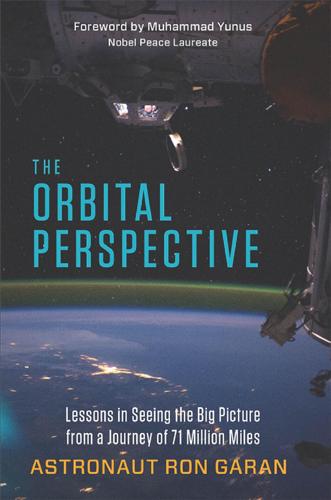
The Orbital Perspective: Lessons in Seeing the Big Picture From a Journey of 71 Million Miles
by
Astronaut Ron Garan
and
Muhammad Yunus
Published 2 Feb 2015
Perhaps helping in 72â•… L O O K I N G EARTH WARD one area creates problems in another. What if short-term assistance actually makes a situation worse in the long term? The worm’s eye view would attempt to solve a specific problem, such as providing access to clean water. The orbital perspective would see lack of access to clean water as one symptom of larger issues related to education, unemployment, and government infrastructure. In a medical response to a natural disaster, medical personnel taking the worm’s eye view would focus entirely on treating the patients right in front of them. The orbital perspective would treat those patients while also putting reconstruction projects in place to lessen the long-term risk that many more patients would end up “right in front of them.”
…
But as I looked down at the Earth—this stunning, fragile oasis, this island that has been given to us, and that has protected all life from the harshness of space—╉a sadness came over me, and I was hit in the gut with an undeniable, sobering contradiction. In spite of the overwhelming beauty of this scene, serious inequity exists on the apparent paradise we have been given. I couldn’t help thinking of the nearly one billion people who don’t have clean water to drink, the countless number who go to bed hungry every night, the social injustice, conflicts, and poverty that remain pervasive across the planet. Seeing Earth from this vantage point gave me a unique perspective—╉something I’ve come to call the orbital perspective. Part of this is the realization that we are all traveling together on the planet and that if we all looked at the world from that perspective we would see that nothing is impossible.
…
Facing a Common Enemy There are good people and organizations all over the world proving that if we all commit to working together we can live in a world without poverty, where no one dies from preventable and curable A S h i f t i n P e r sp e c t i v eâ•… 9 diseases, where everyone has access to clean water, where everyone’s children can be educated. We are limited only by our imagination and our will to act. In pulling back to the orbital perspective, it becomes clear that the first step toward solving our big challenges is to identify ourselves as a global community confronted with a common enemy.

Garbage Land: On the Secret Trail of Trash
by
Elizabeth Royte
Published 1 Jan 2005
It occurred to me late one night, as I sat peacefully on the floor surrounded by the remains of the day, that I knew something about where all this stuff had come from (particularly if it was food; the nation’s heightened health consciousness inspired a lot of ink on the provenance of foodstuffs) but almost nothing about where it went after it left my house. Much has been made, in certain circles, of humanity’s connection to the natural world. Enlightened consumers, we don’t want to eat endangered fish or buy rare hardwoods. We care about animal rights and clean water. But it wasn’t fair, I reasoned, to feel connected to the rest of the world only on the front end, to the waving fields of grain and the sparkling mountain streams. We needed to cop to a downstream connection as well. Our lifestyles took a toll on the planet, and that toll was growing ever worse.
…
In exchange for accepting 300,000 tons of waste a month, most of it from New York City, Welch would receive an $8 million fee from the development company, 367 jobs, and one wastewater treatment plant, a novelty for a county that, by dumping raw sewage into its creeks, had been in violation of the Clean Water Act since 1972. Only a handful of people had questions about the project, but just as the contract was about to be signed, a protest movement materialized. Much was made of the waste’s provenance: accepting garbage from New York and New Jersey, the landfill would surely be tainted with AIDS and by medical waste, it would be run by the mob, and “cocktailed” with toxic and nuclear dregs.
…
As of June 2003, 413 of the 1,571 sites on the EPA’s National Priorities List, representing the worst of the worst Superfund sites (which by definition contain hazardous waste) were landfills, a ratio of just over one in four. IESI Bethlehem wasn’t on the Superfund list, nor had it received any notices of significant violations of the Clean Air Act, Clean Water Act, or Resource Conservation and Recovery Act within the last two years. But then I looked back a little further. I learned that IESI had owned the Bethlehem landfill only since 1999, when it had purchased it from Waste Management for $65 million and an agreement to pay Lower Saucon Township (which included the city of Bethlehem) a host fee of $460,000 a year.

Home Comforts: The Art and Science of Keeping House
by
Cheryl Mendelson
Published 4 Nov 1999
Mix one teaspoon of a neutral detergent (a mild detergent containing no alkalies or bleaches) with a cup of lukewarm water. Blot. Sponge with clean water. Blot. Raw Egg Mix one teaspoon of a neutral detergent (a mild detergent containing no alkalies or bleaches) with a cup of lukewarm water. Blot. Mix one tablespoon of household ammonia with a half-cup of water. Blot. Repeat step one. Sponge with clean water. Blot Earth (Dirt) Mix one teaspoon of a neutral detergent (a mild detergent containing no alkalies or bleaches) with a cup of lukewarm water. Blot. Mix one tablespoon of household ammonia with a half-cup of water. Blot. Repeat step one with the detergent. Sponge with clean water. Blot. Food Coloring or Dye Seek the help of a professional carpet cleaner.
…
Mix one teaspoon of a neutral detergent (a mild detergent containing no alkalies or bleaches) with a cup of lukewarm water. Blot. Sponge with clean water. Blot. Milk Mix one teaspoon of a neutral detergent (a mild detergent containing no alkalies or bleaches) with a cup of lukewarm water. Blot. Mix one tablespoon of household ammonia with a half-cup of water. Blot. Repeat step one. Blot. Sponge with clean water. Blot. Nail Polish Apply nail polish remover (acetone). Blot. Mix one teaspoon of a neutral detergent (a mild detergent containing no alkalies or bleaches) with a cup of lukewarm water. Blot. Sponge with clean water. Blot. Paint (Latex) Mix one teaspoon of a neutral detergent (a mild detergent containing no alkalies or bleaches) with a cup of lukewarm water.
…
Blot. Mix one teaspoon of a neutral detergent (a mild detergent containing no alkalies or bleaches) with a cup of lukewarm water. Blot. Sponge with clean water. Blot again. Urine (Fresh) Blot. Sponge with clean water. Blot again. Mix one tablespoon of household ammonia with a half-cup of water. Blot. Mix one teaspoon of a neutral detergent (a mild detergent containing no alkalies or bleaches) with a cup of lukewarm water. Blot. Sponge with clean water. Blot again. Vaseline Sponge with a small amount of dry-cleaning solvent. Blot. (Use small amounts to prevent any possible damage to sizings, backings, or stuffing materials.
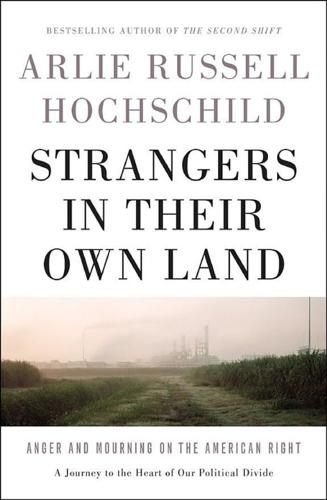
Strangers in Their Own Land: Anger and Mourning on the American Right
by
Arlie Russell Hochschild
Published 5 Sep 2016
Meanwhile, as we scrape the last delicious morsels from our dessert plates—no one had said no to the strawberries and Brother Cappy had never reached for the Vidalia onion—Tritico makes a last try to bait his adversarial friend. “So Donny, how do you feel about crossing the I-10 bridge?” “If my kids weren’t with me,” Donny answers, smiling. “I’d drive fast.” 13 The Rebel: A Team Loyalist with a New Cause Handmade signs bob and lurch above the heads of the sparse crowd: “Clean Water for Baton Rouge,” “Friends of Lake Peigneur,” “Clean Water for Clean Seafood,” “Oil Companies: Fix What You Broke.” A rotund musician dressed in loose purple pants, a striped shirt, and a white fedora sits with his washboard, waiting to start his three-person Cajun band. A protestor walks about dressed as a large brown pelican.
…
By 1987 several things had transpired that would affect the fishermen’s response to the edict. For one thing, PPG was not alone. Other industries had been polluting so much that Louisiana had become the number-one hazardous waste producer in the nation. For another thing, the U.S. Congress had established the Environmental Protection Agency (1970), the Clean Air Act (1970), and the Clean Water Act (1972). In addition, many small grassroots environmental groups had sprung up throughout the state, led by homemakers, teachers, farmers, and others appalled to discover backyard toxic waste, illness, and disease. Around the time of the advisory, local activists were rising up against toxic dumping around Lake Charles and nearby Willow Springs, Sulphur, Mossville, and elsewhere, part of the “front-porch”—or “kitchen-sink”—politics of the 1970s and 1980s.
…
We tried to meet state legislators, who ignored us as silly housewives.” As Frankland tells the story in her book Women Pioneers of the Louisiana Environmental Movement, “companies were treating our land and rivers like toilets, and we were standing up to it.” As Frankland, a Democrat, noted, “We could say, ‘Hey, there’s a federal law about clean water. You’ve contaminated our water. How’re you going to clean it up?’” But most of Frankland’s activists are now Tea Party Republicans and, like Lee Sherman himself, are averse to an overbearing federal government, and even to much of the EPA. There it was: the Great Paradox through a keyhole. In the meantime, the Louisiana Department of Health and Human Services posted warning signs about fishing and swimming, signs promptly riddled with bullets or stolen.

Liquid: The Delightful and Dangerous Substances That Flow Through Our Lives
by
Mark Miodownik
Published 5 Sep 2018
Hence the sign in the hotel bathroom, reminding me that water is a valuable resource, and encouraging me not to request new towels every day. As the world population increases to ten billion over the next few decades it is estimated that access to clean water will be an increasing struggle in many parts of the world. Currently one billion people lack access to clean water, and a third of the global population experiences shortages through the year. Without access to clean water, we can expect an increase in poverty, malnutrition and the spread of disease. It should be emphasized that this issue affects big cities as well as rural communities. For instance, the Brazilian city of São Paolo experienced severe water shortages in 2015 when the strain of drought emptied its main reservoir.
…
Their public baths were an important part of their culture, and relied on a sophisticated engineering infrastructure to provide hot and cold water. In Europe, after the Roman Empire collapsed, the infrastructure that kept the public baths going fell into ruin, and so bathing went out of fashion. In crowded cities and towns, without access to clean water, bathing was increasingly considered a health risk. During the Middle Ages, many Europeans believed that diseases were spread through miasma and bad air. They thought that washing, especially with hot water, opened up the pores and made a person more susceptible to diseases, such as the bubonic plague, also known as the Black Death.
…
It still goes on in modern times; for instance, as recently as 2014, the entire city of Flint, Michigan, in the USA, was poisoned by lead in the water due to government incompetence. The outbreak of cholera in Yemen, which began in 2016, and is now nearing one million cases, was caused by the breakdown of a clean water supply. Not surprisingly, the fear of mass infection and poisoning has become a common motif in fiction over time, perhaps most famously in the film Dr Strangelove, in which General Jack D. Ripper identifies the fluoridation of water in the USA as a Communist plot to undermine the American way of life: ‘I can no longer sit by and allow the international Communist conspiracy to sap and impurify all of our precious bodily fluids,’ says General Ripper, before initiating a nuclear attack on the USSR.
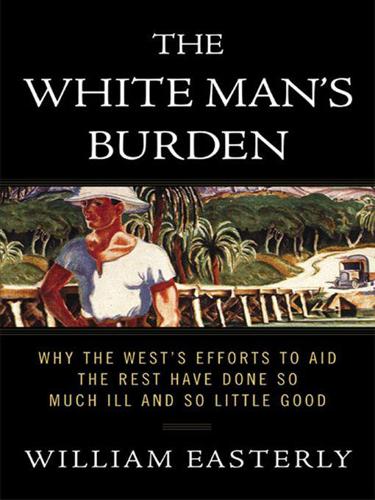
The White Man's Burden: Why the West's Efforts to Aid the Rest Have Done So Much Ill and So Little Good
by
William Easterly
Published 1 Mar 2006
A British nongovernmental aid organization called Water Aid, which receives funds from official aid agencies, had inaugurated a new project in this village. This agency seemed to be acting more like an explorer and less like a foreign aid planner. Water Aid had discovered a way to get clean water to some very poor villages in the Great Rift Valley. They built a water pipe to carry clean water from springs on top of the mountains bordering the Great Rift Valley to villages down in the valley. The project was run entirely by Ethiopians, with representatives from the villages sitting on the board of the agency. At a bustling water tap in one village, the villagers watered their cattle and collected drinking water for a nominal fee paid to Water Aid, to be used for maintenance of the system.
…
Big Problems and Big Plans Almost three billion people live on less than two dollars a day, adjusted for purchasing power.5 Eight hundred and forty million people in the world don’t have enough to eat.6 Ten million children die every year from easily preventable diseases.7 AIDS is killing three million people a year and is still spreading.8 One billion people in the world lack access to clean water; two billion lack access to sanitation.9 One billion adults are illiterate.10 About a quarter of the children in the poor countries do not finish primary school.11 So Amaretch is enslaved to a load of firewood instead of playing and learning in a school yard. This poverty in the Rest justifiably moves many people in the West.
…
Women and children walk up to eight kilometers to get spring water; some travel twenty-two kilometers on the bad roads to the nearest town to buy water.28 Some success stories show that aid agencies can make progress on problems like these. There have been successful programs feeding the hungry, which means children have been able to get food in Voluntad de Dios, Ecuador. Success on expanding access to clean water helped the villagers of Kwalala, Malawi. In Mbwadzulu, Malawi, in fact, the drilling of two new boreholes has allowed villagers to discontinue using polluted lake water, and has led to a decline in cholera.29 The Ethiopian man’s tragedy could have been avoided with cheap medicines. Brazilian favelas could get proper sanitation; in fact, there has already been progress there on sanitation compared with a decade ago.

Blood River: A Journey to Africa's Broken Heart
by
Tim Butcher
Published 2 Jul 2007
In the pitch dark there was little for me to look at and so, after a few minutes of bumping and grinding behind Odimba, my mind started to work. We were about 100 kilometres from Kabambarre and needed to travel another 200 kilometres beyond to reach Kasongo. I had planned to be able to refill my water bottles with boiled, clean water overnight, but we had got there too late and left too early. I was sure I could get clean water in Kasongo, so that meant I had to eke out the remaining three bottles of water for 300 kilometres. Okay, I thought, that meant one bottle per 100 kilometres, and I can always ration further myself if things are getting tighter later on. Those 100 kilometres to Kabambarre felt painfully long.
…
The history of this place is extraordinary - the slavers and their ivory, the Belgians who fought battles right here where the town now stands, and the wars since independence - but I have never met anyone who comes here just for history's sake. History is a luxury people cannot afford around here, where the more pressing things are where the next meal is coming from or the next drink of clean water.' He spoke slowly, concentrating hard on steering the jeep along the bouncy road into town, sitting forward in the driver's seat, anxiously trying to see over the bonnet to anticipate the next pothole. 'It's not the worst town in the country I have been to, but things are pretty basic here. The town is meant to get its electricity from a hydroelectric plant in the mountains north of here, built back in the 1950s - it's the one that Che Guevara attacked - but it's pretty intermittent these days.
…
I found it heartbreaking that a man as decent and talented as Benoit was trapped in a Congolese life lurching from crisis to crisis. I tried to sound positive. 'If anyone can find a way, you can, Benoit. Thank you for everything.' Benoit could not be spared by Tom, but Odimba was available. I set oft from Kasongo once again riding as his passenger, surrounded by numerous plastic bottles of specially cleaned water. Careering along the track, nay head clattering every so often against Odimba's motorbike helmet, I thought more about Kasongo. During the slavery period it had peaked as a capital city, and during the colonial era its strong agriculture and tropical medicine hospital had kept it alive. But in the chaos since the first Mulele Mai uprising it had been slipping backwards.

Green and Prosperous Land: A Blueprint for Rescuing the British Countryside
by
Dieter Helm
Published 7 Mar 2019
Water is for the companies a ‘crop’, to be harvested as a renewable that nature will keep giving them for free from rivers (and groundwater sources). The companies want ‘clean’ water and hence want to limit pollution from others. Cleanness in drinking water is a chemical concept: it does not necessary mean that it is biodiversity-rich, and indeed there are many organisms that water companies would rather not have in their water supplies. We want to drink clean water, pure H2O, not a host of other things that live in the river environments. Solving jointly for clean water and for biodiversity is not the same thing as just wanting the former. In providing us with clean drinking water, water companies abstract water, which reduces flows, and they discharge our sewage and the waterborne waste of industry, suitably treated.
…
There are those who decry economic approaches to the environment; who claim that they overlook the beauty and spiritual values and intrinsic nature. They make a good point when the target is a narrow and crude cost–benefit analysis. But they are wrong in two key ways: prosperity is a broad, not a narrow, concept; and the value to people of nature and all its beauty is every bit as important as the health benefits of clean water. The conventional metric of economic success, Gross Domestic Product (GDP), is a pathetically poor measure of what we get out of nature; and if conservation and enhancing the environment does not make economic sense then the evidence from the last two centuries at least is that it will be neglected.
…
It is about the things we no longer see so often, like insects and butterflies, and about the once-common that is slipping from our grasp. How many people realise that the rabbits, which were ubiquitous, have now almost vanished from some areas? That the hares may follow? And how many have failed to notice that the swallows are harder to sight now? It means fertile and productive soils, lots of pollinators, clean water and clean air, and natural flood defences too. These rely on a host of creatures at the more microscopic level, and beneath the soils and under water. The focus is often on the more iconic species at risk, since these are usually easy to measure and easy to design conservation strategies for. In almost every case, what is required is a habitat within which they can thrive, and an end to persecution.
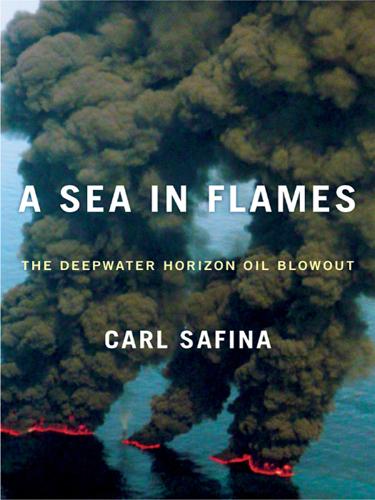
A Sea in Flames: The Deepwater Horizon Oil Blowout
by
Carl Safina
Published 18 Apr 2011
So shocked was America to see its waters on fire that the incident—along with an oil leak off Santa Barbara, California, the same year—helped precipitate the explosion of environmental laws that Republican president Richard Nixon signed in the early 1970s. (Note to the young: If you wonder why we need a Clean Water Act—a reasonable question, since you’re lucky enough not to have seen America’s waterways as they were before—consider that the Cuyahoga River had ignited about ten prior times in the last century, and also consider this description from Time magazine, August 1, 1969: Some river! Chocolate-brown, oily, bubbling with subsurface gases, it oozes rather than flows.
…
But despite “overseeing the operation” on our behalf, Allen seems to be doing nothing—incredibly enough—to ensure that we actually send down some instruments designed to get the best possible estimate of how much oil. I am not impressed with the Coast Guard so far. Admiral Thad Allen becomes to me a one-dimensional government talking head: the Thadmiral. Does he deserve to be a caricature? Of course not; does anyone? But in my anger, that’s what happens. Under the Clean Water Act, penalties are based on the number of barrels deemed spilled. Those penalties range from $1,100 to $4,300 a barrel, depending on the extent of the company’s negligence. At, say, 5 million barrels, and if BP were found willfully negligent, it could face a fine of over $20 billion. So, yes, the dispersant is “working.”
…
BP shares lose 15 percent of their value on news that its attempted stop-from-the-top hasn’t worked, indicating that the leak—and BP’s liabilities for economic and environmental damages—will likely continue mounting for months. The Justice Department announces criminal and civil investigations into the Gulf oil disaster. “All possible violations of the law,” including the Clean Water Act, Oil Pollution Act, Endangered Species Act. About 15,000 barrels of oil a day begin finding their way out the high end of the pipe and into the ship Discoverer Enterprise. BP’s Tony Hayward, sounding like he’s trying to convince even himself, says the cap will likely capture “the majority, probably the vast majority” of the gushing oil.
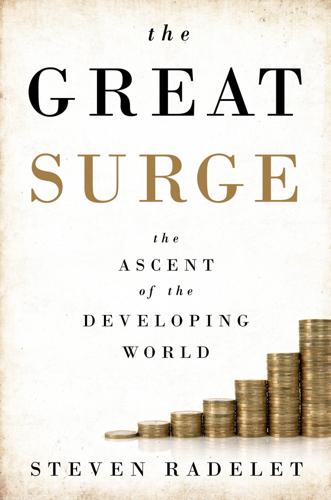
The Great Surge: The Ascent of the Developing World
by
Steven Radelet
Published 10 Nov 2015
Those who lived faced an enormous disease burden, mostly from diseases that we can control or cure. Few children had a chance to go to school or get a decent education, especially girls. The vast majority of people did not have access to clean water and basic sanitation. But that was then. Over the last several decades, there have been dramatic reductions in infant death, huge gains in fighting a range of killer diseases, big improvements in access to clean water and sanitation, and sizable increases in primary and secondary school enrollments. As with other dimensions of development, there is still far to go, and not everyone has been reached. But the facts are clear: there has been much greater progress in health and access to education across the world’s poorest countries over the last several decades than ever before.
…
The average income for hundreds of millions of people in dozens of poor countries has more than doubled, 6 million fewer children die every year from disease, war and violence have declined significantly, average life expectancy has increased by six years, tens of millions more girls are in school, the share of people living in chronic hunger has been cut nearly in half, millions more people have access to clean water, and democracy—often fragile and imperfect—has become the norm rather than the exception in developing countries around the world. To be sure, the surge of progress in health, income, poverty, education, and governance has not reached everyone: many poor countries remain mired in poverty and conflict, and even in the countries moving forward, millions of people are still left behind, even if their numbers are shrinking.
…
People born in developing countries live fully one-third longer, on average, than they did two generations ago. More children are enrolling in and completing primary education, especially girls. In 1980 only half of all girls in developing countries completed primary school; today four out of five do so. More people than ever before have access to clean water, basic sanitation, and some electricity. The changes go further, and include personal freedoms and political systems. Around the world, dictatorships have been replaced by democracies. There are fewer wars and less violence, and basic rights and liberties are far more likely to be upheld. In 1983 seventeen developing countries were democracies; by 2013, the number had more than tripled to fifty-six (excluding many more developing countries with populations less than 1 million, which I do not count here).
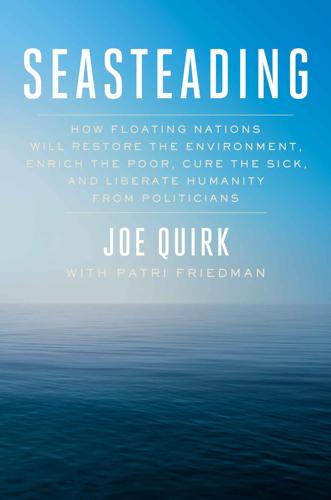
Seasteading: How Floating Nations Will Restore the Environment, Enrich the Poor, Cure the Sick, and Liberate Humanity From Politicians
by
Joe Quirk
and
Patri Friedman
Published 21 Mar 2017
“A rule of thumb,” Ricardo said, “is that a dietary calorie takes a liter of water to be produced, meaning we each consume about 3,000 liters of ‘virtual’ water per day just in our food alone.” The lack of clean water kills far more people than warfare. The Blue Planet Network, a charity dedicated to organizing globally to bring safe drinking water to people around the world, lists some sobering facts. Six thousand children die every day for lack of clean water to drink. Diarrhea has killed more children in the last decade than all humans killed in armed conflict since World War II. Eighty percent of diseases in the developing world are caused by contaminated water, and half of all hospital beds are filled with people suffering from water-related illnesses.
…
“It is estimated that 5.3 billion people, two-thirds of the world’s population, will suffer from water shortages by 2025.” See also “What Makes Clean Water So Important?,” accessed March 21, 2016, http://blueplanetnetwork.org/water. The twenty-five poorest countries spend 20 percent of their GDP on water: Dean Kamen, quoted in Abundance: The Future Is Better Than You Think (New York: Free Press, 2012), 86. Also in Forbes: www.forbes.com/sites/briancaulfield/2012/01/26/abundance-why-the-future-will-be-much-better-than-you-think. More than a billion people do not have access to safe drinking water, and Six thousand children die every day for lack of clean water to drink, and African and Asian women walk an average of six kilometers each day to provide water: accessed March 21, 2016, http://econopure.com/drinking-water. 120 gallons of water to produce one egg: accessed www.amwater.com/learning-center/water-101/what-is-water-used-for.html.
…
“This additional capability would prove invaluable in areas of the world where fresh water is a dwindling resource,” Lockheed reports. Energy, food, water. If we see outside our land-based blinders and take a planet-sized view, we can see renewable solar energy stored in the ocean, a thick layer of nutrient wealth covering the ocean floor, and clean water as a by-product from harvesting this abundance. “So the question is how many megawatts can you generate ultimately?” asks Takahashi. “The answer is, we don’t know. One of the engineers from the University of Hawaii, whom I hired a long time ago, came up with a figure of twenty-five terawatts [25 million watts] that you can sustainably draw from the ocean.

30 Days to a Clean and Organized House
by
Katie Berry
Published 13 May 2014
If you're short on help cleaning up after meals, the hassle of dealing with the food storage container cupboard might be why! 1. Empty it: Put everything on the counter. 2. Wipe it: Clean the interior of the empty cupboard with a microfiber cloth dipped in warm, soapy water. Use a baking soda paste to scrub stubborn stains or spills. Follow with another cloth dipped in clean water and allow the cupboard to air dry. 3. Sort the contents: Match up same-sized containers and make sure you have lids for each. Set aside any stained containers; you'll clean them after the cupboard is organized. 4. Toss the trash: Throw away (or recycle) any lids that don’t fit your containers, and any containers without lids.
…
As a general rule of thumb if it’s important for the medication to work, and the bottle says it expired more than a year ago, replace it. 1. Empty it: Remove everything from your medicine cabinet. If the shelves are removable, take them out, too. 2. Wipe it: Using a microfiber cloth dipped in warm, soapy water, wipe the inside of the cabinet, including the back of the door. Follow with a cloth dipped in clean water. Wash removable shelves in a sink of warm, soapy water and rinse them. 3. Sort it: Separate your cosmetics from your medicines, first aid supplies and other items. 4. Check it: Go through each group (cosmetics, pills, etc.) and toss expired items. With regards to makeup, mascara should be replaced every 2-3 months; foundation is good for 1 year; and powders expire after 2-3 years. 5.
…
Follow with a clean microfiber cloth, leaving the toilet tank for last, and your surfaces should be nice and shiny. 6. Scrub then flush: Grab your toilet brush and scrub the toilet bowl, taking extra care to get beneath the rim in the front where urine often collects and causes odor-producing stains. Flush then swish the brush in the clean water before flushing a second time. Prop the brush between the lid and seat to let it drip dry. 7. Finish the floor: Sweep or vacuum the floors and mop them thoroughly. 8. Finish up: Give the mirrors a good polish using glass cleaner then shine the faucet fixtures, change the towels and take out the trash.
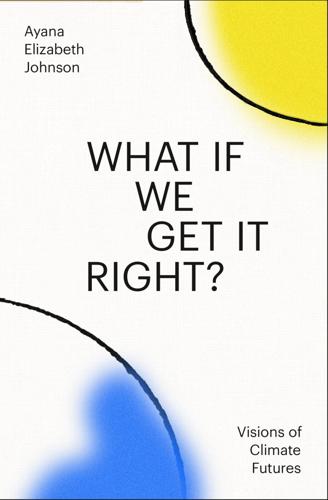
What If We Get It Right?: Visions of Climate Futures
by
Ayana Elizabeth Johnson
Published 17 Sep 2024
Ayana: When we think of New York City’s waters, we should think of seals and seahorses and whales and all the cool stuff that hangs out here. The harbor is actually an incredible restoration success story—it’s cleaner now than it’s been in a hundred years, and aquatic life is replenishing, thanks largely to the Clean Water Act. Kate: Yes, and the other part of the story here is that beyond this physical infrastructure, we’re helping to re-energize communities on shore. We’re helping create a network of schools and science teachers, and a shared curriculum around habitat restoration, bringing people to the shore with the Billion Oyster Project to restore oyster reefs that had disappeared.
…
For that to be the theme of the global youth climate justice movement is so, so special. We have the ability as youth climate activists to make changes to the public discourse in fast and striking ways. And I think adults have a lot to learn from that. The climate movement now is not so much about national parks, ecology, or the Clean Water Act as it is about justice, human rights, and loss and damage. Ayisha: Our movement truly is an international movement. And that has not happened many times in history, which also means that it cannot be, and isn’t, one paint and one shade fits all. The geopolitical situations in countries, the geopolitical situations, the climate situations are all different.
…
Our metropolitan and transit systems are much more efficient. The city is home to so much diversity and culture, but also money. Money is constantly prioritized. And if you don’t make enough to be able to live in the city, you’re pushed out. I imagine that the people here now—families and communities—would still be able to have homes. And access to clean water. Ayana: Both of you also have deep roots in other places. Xiye in Mexico, Ayisha in Pakistan. What do you imagine those places would be like if we get it right? Xiye: Well, if we get it right, my town would be stabilized culturally and ecologically. We would be wetland people again, fishing and farming.
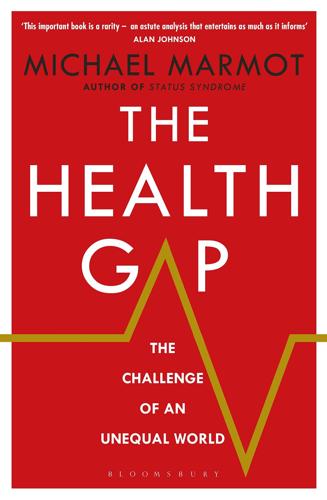
The Health Gap: The Challenge of an Unequal World
by
Michael Marmot
Published 9 Sep 2015
Actually, had I asked people in a well-heeled part of London, the answers would have been little different. Then I asked what they thought about health. I was told that in poor countries, ill-health is the result of unsanitary living conditions and lack of health care. In rich countries, now that we all have clean water and safe toilets, they told me that ill-health is the result of difficulty getting to see the doctor and our own indulgent behaviour, we dreadful feckless drinkers, smokers and overweight sloths (I am translating slightly), or just plain bad luck in the genetic lottery. My point in writing this book is that my informants were not wrong about what is important for health, just too limited.
…
Yes, it is important to improve the lot of the worst off, but the gradient demands that we improve conditions, and hence health, for everyone below the top. Not only do we need to reduce poverty, we need to improve society and have effort proportional to need. You may be thinking that a social gradient in health in Glasgow and in India are quite different. Thinking about Jimmy in Calton, described above, destitution does not come to mind. He has clean water and shelter and does not suffer from malaria, or dysentery. Surely in India it is different, where the basics are lacking. The basics are wanting, but in other respects it is not so different. Here is Gita. Gita sells vegetables on the street in Ahmedabad in the state of Gujarat in India. She has no formal education, lives in an ‘informal settlement’ (a slum made of makeshift housing) and has two children who sit with her by the roadside as she sells her vegetables, and an older girl who helps with the vegetable trade.
…
If you have little of it, money is crucial to your life and your health. For poor countries, small increments in income are associated with big increases in life expectancy. It makes sense. A country with a per capita national income of less than $1,000 can afford little in the way of food, shelter, clean water, sanitation, medical and other services – relief of what I have called destitution. With a small increment in income, more things are possible. FIGURE 1.3: RICHER AND HEALTHIER – UP TO A POINT Even more money, though, does not guarantee good health. Above a national income of about $10,000 there is very little relation between national income and life expectancy.

The Great Escape: Health, Wealth, and the Origins of Inequality
by
Angus Deaton
Published 15 Mar 2013
The historian Simon Szreter describes how, in the cities of the Industrial Revolution, fresh water was widely available, but to factories as a source of power, not to the inhabitants of the cities to drink.32 As is so often the case, the benefits of the new ways of doing things were far from equally distributed. And the factory owners, who were also those who paid taxes, had no interest in spending their own money on clean water for their workers. Szreter documents how new political coalitions of working men and displaced landholders successfully agitated to install the infrastructure for clean water, an agitation that was effective only after the Reform Acts enfranchised working men. Once the political balance had changed, the factory owners climbed on board, and cities began to compete with one another in advertising their healthfulness.
…
Lives are longer and parents no longer routinely watch a quarter of their children die. Yet millions still experience the horrors of destitution and of premature death. The world is hugely unequal. Inequality is often a consequence of progress. Not everyone gets rich at the same time, and not everyone gets immediate access to the latest life-saving measures, whether access to clean water, to vaccines, or to new drugs for preventing heart disease. Inequalities in turn affect progress. This can be good; Indian children see what education can do and go to school too. It can be bad if the winners try to stop others from following them, pulling up the ladders behind them. The newly rich may use their wealth to influence politicians to restrict public education or health care that they themselves do not need.
…
I tell the story of the fight to save the lives of children in the world that was left behind. This is a story of progress, mostly after World War II—a catch-up that would begin to close the chasm that had begun to open in the eighteenth century. It is a story with many great successes, in which antibiotics, pest control, vaccinations, and clean water saved millions of children, and in which life expectancy sometimes increased at (the apparently impossible rate of) several years each year. The chasm in life expectancy between the poor and rich worlds was narrowed, but not closed. There were also terrible setbacks, including a catastrophic man-made famine in China between 1958 and 1961, and the recent HIV/AIDS epidemic that, for several African countries, wiped out three decades of progress against mortality.
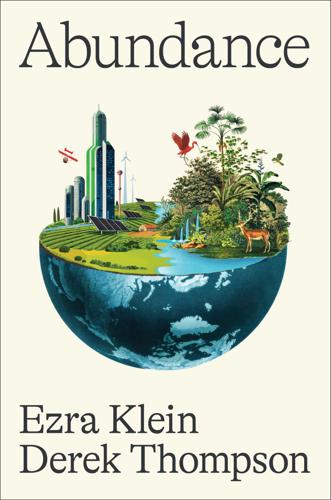
Abundance
by
Ezra Klein
and
Derek Thompson
Published 18 Mar 2025
It is a cause of particular concern to young Americans, because they more than we will reap the grim consequences of our failure to act on programs which are needed now if we are to prevent disaster later. Clean air, clean water, open spaces—these should once again be the birthright of every American. If we act now, they can be. We still think of air as free. But clean air is not free, and neither is clean water. The price tag on pollution control is high. Through our years of past carelessness we incurred a debt to nature, and now that debt is being called. Nixon promised that “the program I shall propose to Congress will be the most comprehensive and costly program in this field in America’s history.”
…
They were the National Historic Preservation Act (1966), the Department of Transportation Act, the Federal-Aid Highway Act of 1968, the National Environmental Policy Act, the Clean Air Act of 1970, the Uniform Relocation Assistance and Real Property Acquisition Policies Act, the Noise Control Act of 1972, the Clean Water Act, the Federal-Aid Highway Act of 1973, and the Endangered Species Act. In seven years, America compiled an arsenal of regulation to slow or outright stop the era of big government building. These were not partisan fights. To read President Richard Nixon’s State of the Union address from 1970 is to tumble into a politics very different than our own, where Republicans talked in ways that even few Democrats dare speak today: The great question of the seventies is, shall we surrender to our surroundings, or shall we make our peace with nature and begin to make reparations for the damage we have done to our air, to our land, and to our water?
…
“Government policies were permitting oil refineries to freely dump toxic emissions into low-income communities of color, and letting oil spills pollute the nation’s waterways and coasts.”72 Nader didn’t just criticize the government. He launched a movement to tame it. His Raiders contributed to some of the most important environmental laws in history, including the Clean Water Act. With each win, they made it easier for more citizens and groups to sue the government for wrongdoing. But what they were building was an arm of liberalism—with associated institutions, laws, and leaders—designed to relentlessly sue the government itself, and that would go on to fight for more bills and rules that would widen the opportunities to sue the government.
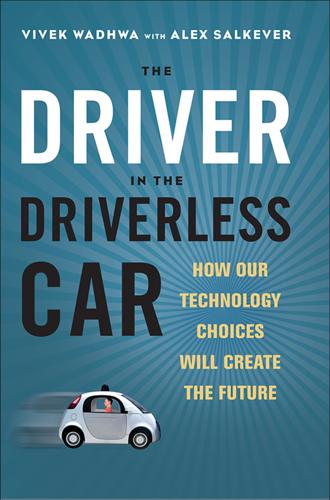
The Driver in the Driverless Car: How Our Technology Choices Will Create the Future
by
Vivek Wadhwa
and
Alex Salkever
Published 2 Apr 2017
Despite a wet 2015 El Niño year, the California drought is causing a fear that agriculture will have to be permanently curtailed, leading to long-term shortages of fruits, vegetables, and nuts. Access to clean water is one of the most serious problems in the developing world. According to the World Health Organization, 1.8 million people die every year from diarrheal diseases.1 Of these victims, 90 percent are children under five, mostly in developing countries. Eighty-eight percent of these cases are attributed to unsafe water supply and sanitation. It’s not shortage of water per se that is the problem; it’s access to clean water. Water obtained from rivers and wells is infested with deadly bacteria, viruses, and larger parasites.
…
12 Your Own Private Driver: Self-Driving Cars, Trucks, and Planes 13 When Your Scale Talks to Your Refrigerator: The Internet of Things 14 The Future of Your Body Is Electric 15 Almost Free Energy and Food Conclusion: So Will It Be Star Trek or Mad Max? Notes Acknowledgments Index About the Authors PREFACE Not long ago, I was very pessimistic about the future. I was worried about hunger and poverty, disease, overpopulation. I believed that the world would run out of clean water and energy and that we would be fighting world wars over scarce resources. Today, I talk about this being the greatest period in history, when we will solve the grand challenges of humanity and enter an era of enlightenment and exploration such as we saw in my favorite TV series, Star Trek. Yes, I grew up dreaming of tricorders, replicators, and androids and wanting to be an astronaut so that I could join Starfleet Academy.
…
You will use a 3-D printer to build your house or a replacement kidney. Your grandchildren will have an astoundingly good education delivered by an avatar—and children all over the world, in every country, will have an equally good education. There will be no more poverty. We will have plenty of clean water for everyone. We will no longer fight over oil. We won’t have any more traffic lights, because the robo-cars won’t need them! And no more parking tickets, of course. Best of all, you will have far more time to do what you want to: art, music, writing, sports, cooking, classes of all sorts, and just daydreaming.
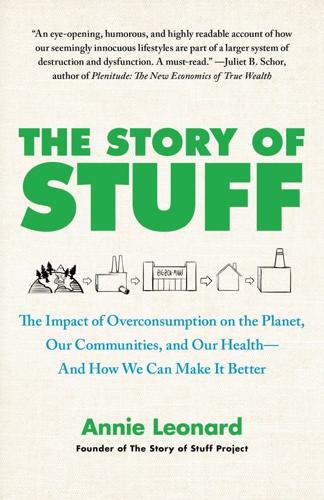
The Story of Stuff: The Impact of Overconsumption on the Planet, Our Communities, and Our Health-And How We Can Make It Better
by
Annie Leonard
Published 22 Feb 2011
Then I’d sit in the little café sipping my café au lait, listening in on the conversations of businessmen and aid workers at neighboring tables, aware of the sparkling water in the pool, aware that my cup of coffee required about 36 gallons of water to produce, and acutely aware that the only reason that such a grubby person as me was permitted to spend twenty minutes in their fancy bathroom was the color of my skin and the American Express card in my pocket. I wondered how different life would be for those hundred thousand kids who would die from lack of clean water during the next twelve months, if they each had one of those cards, or even a safe tap in their yards. Having experienced the level of scarcity that is the norm for most of the world’s people, I am now more aware of the many ways that so-called advanced societies take for granted the one substance, after air, that we most need to survive.
…
Already, about one-third of the world’s population lives in countries that are experiencing water stress.58 Despite all our technological know-how, at least one in six people doesn’t have access to safe drinking water. Every day, thousands of people—mostly children—die from preventable diseases contracted because they do not have access to clean water.59 In Asia, where water has always been regarded as an abundant resource, the amount of it available for each person declined by 40 to 60 percent between 1955 and 1990.60 Experts predict that by 2025, fully three-quarters of people on earth will experience water scarcity, a condition in which the demand for water outstrips the supply.61 Overuse of water, along with droughts, contamination, climate disruption, diversion for industrial or agricultural uses, and inequality in access to water all contribute to water scarcity.
…
As civil rights and environmental justice activist Cora Tucker said, “People don’t get all the connections [when] they say the environmental is over there, the civil rights group is over there, the women’s group is over there and the other groups are here. Actually, all of them are one group, and the issues we fight become null and void if we have no clean water to drink, no clean air to breathe and nothing to eat.”150 With the movement gaining momentum globally, the first ever National People of Color Environmental Leadership Summit was held in Washington, D.C., in 1991. Soon after, in 1993 President Clinton signed an executive order that created the National Environmental Justice Advisory Council to the EPA.151 So by then, there was solid evidence of a racial bias in the choice of locations for polluting and hazardous facilities; there was a growing broad-based movement for environmental justice; and there was a presidential executive order and a special advisory council to the national Environmental Protection Agency.
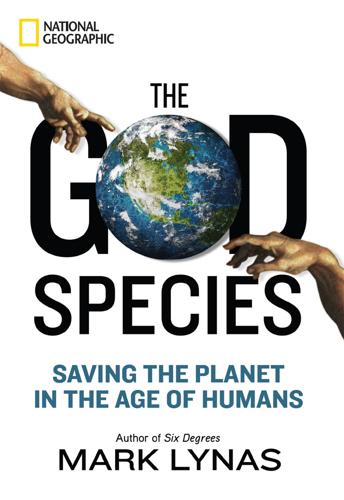
The God Species: Saving the Planet in the Age of Humans
by
Mark Lynas
Published 3 Oct 2011
The next steps for Venter’s team—and other competitors rushing to pioneer novel methods in the same field—point the way towards a new technology of awesome power and potential. Once the function of every gene is understood, scientists can begin to build truly new organisms from scratch with different useful purposes in mind. Microbial life-forms could be designed to create biofuels or new vaccines, to bioremediate polluted sites, or to clean water. In the hands of a modern-day Bond villain, they might also be used to forge virulent new superbugs that could wipe out most of the world’s population. But the technology per se is ethically inert; it is just a tool. The purpose of a machine depends upon whose hands are wielding its power. Synthetic biology reduces the cell to a machine, whose components—once properly understood—can be assembled like blocks of Lego.
…
Well-fed campaigners in rich countries may fantasize romantically about happy peasants living sustainably in self-reliant African villages, but the fact is that people across the developing world are desperate to increase their economic opportunities, security, and wealth. They want to have enough to eat, they want to have clean water and they want their young children not to die of easily treatable diseases—and that is just for starters. They want the benefits of being part of the modern world, in other words, which is why so many young people across the developing world are moving to cities in search of a job and a better way of life.
…
Helping meet the nitrogen planetary boundary is probably the least compelling reason for tackling this injustice, but nevertheless one estimate suggests that delivering modern sewage facilities to everyone in poor countries could reduce reactive nitrogen pollution by 5 million tonnes a year.26 World Health Organization estimates suggest a cost of about $11 billion a year to provide both clean water and adequate sanitation to half the world’s population by 2015, as demanded by the UN’s Millennium Development Goals.27 Because of the lives saved, the reduction of health-care costs for preventable diseases, and the waste of productive time involved in fetching and carrying water, this expenditure would be strongly cost-positive.
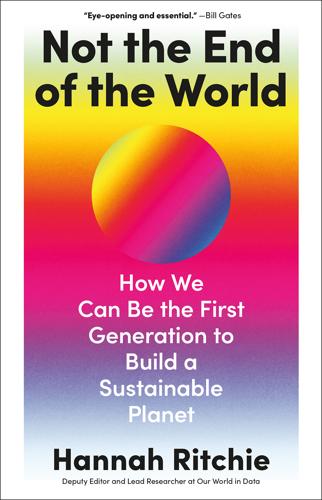
Not the End of the World
by
Hannah Ritchie
Published 9 Jan 2024
The world now produces far, far more food than it needs. Many countries have come close to eradicating hunger. We need to make sure that every country can do the same. (5) Access to basic resources: clean water, energy, sanitation For most of human history, we’d take water from the river, a stream or lake, and it was a lucky draw as to whether it was clean or not. Disease was rife. Children died from diarrhoeal diseases and infection – many in poor countries still do. Getting access to clean water sources, sanitation and hygiene has saved tens of millions of lives every year, if not more. In 2020, 75% had access to a water source that was clean and safe – up from just 60% in the year 200013 – and 90% of the world had access to electricity.14 Some might see electricity as a luxury – an unnecessary drain on natural resources – but it has become essential for a healthy and productive life.
…
Researchers looking at mortality rates across 20 different studies in modern hunter-gatherers and archaeological records found that at least a quarter died in infancy, and half died before reaching puberty.8 Until the last few centuries, there was almost no way for us to stop children from dying. It wasn’t until the rise of clean water, proper sanitary conditions, vaccines, better nutrition and other advances in health care that rates of child mortality started to plummet. As recently as 1800, about 43% of the world’s children died before reaching their fifth birthday.9 Today that figure is 4% – still woefully high, but more than 10-fold lower.
…
Progress is slower when it comes to sanitation and access to clean cooking fuels: just 54% have a safe toilet, and just 60% have clean fuels. We must ensure access to these resources, but regardless of what metric we’re looking at, the trend is consistently upward. Every day, 300,000 people get access to electricity and a similar number get clean water, for the first time. This has been the case every day for a decade. (6) Education I know how lucky I was to have the chance to finish school. Especially as a girl. In the Western world, more of us should appreciate how fortunate we are to be in that position. The world we are building, with better health care, technology, connectivity and groundbreaking innovations, rests on the power of education and learning.
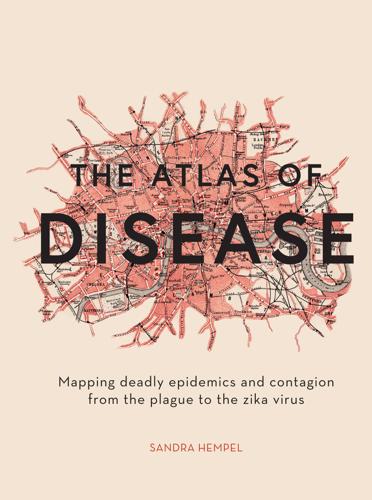
The Atlas of Disease
by
Sandra Hempel
Published 15 Sep 2018
Incidence Shigellosis is responsible for an estimated 165 million cases of severe dysentery a year Prevalence Shigellosis and amoebiasis are endemic throughout the world Prevention Clean water, good sanitation and good hygiene practices, particularly hand-washing Treatment Antibiotics for shigellosis and antiparasitic drugs for amoebiasis. Rehydration to replace fluids and body salts lost through diarrhoea. Global strategy Provision of clean water, efficient sanitation and promotion of good hygiene practices Illustration of a soldier suffering from dysentery, from a German publication on diseases, 1929.
…
Virtually non-existent in developed countries Prevention Provision of clean drinking water and efficient sewers; oral vaccines in high-risk areas Treatment Oral rehydration in mild cases; rapid treatment with intravenous fluids and antibiotics in severe cases Global strategy The World Health Organization (WHO) aims to reduce cholera deaths by 90 per cent by 2030. Strategy includes: specialist treatment centres and better access to clean water, effective sanitation and waste management; good hygiene and food safety practices; and public information. Satirical lithograph of John Bull (the personification of Britain) defending his country against the invasion of cholera, c. 1832. Cholera has probably been endemic to India for centuries.
…
Typhoid Causal agent Bacterium Salmonella Typhi Transmission Contaminated food and water Symptoms Fever, fatigue, headache, nausea, abdominal pain, constipation or diarrhoea and sometimes a rash Incidence and deaths Estimated 11–20 million cases and 128,000–161,000 deaths a year worldwide Prevalence Global but mainly parts of Africa, the Americas, Southeast Asia and the Western Pacific Prevention Vaccination; provision of clean water, good sanitation and food hygiene Treatment Antibiotics but drug resistance is growing Global strategy US$85 million funding made available from 2019 for routine vaccination of children in countries where typhoid is endemic Illustration of a man suffering with typhoid, from a German publication on diseases, 1929.

Break Through: Why We Can't Leave Saving the Planet to Environmentalists
by
Michael Shellenberger
and
Ted Nordhaus
Published 10 Mar 2009
The satisfaction of the material needs of food and water and shelter is not an obstacle to but rather the precondition for the modern appreciation of the nonhuman world. Between 1945 and the mid-1970s, the standard of living for virtually every American improved consistently and dramatically. By 1970, affluent, comfortable, and secure Americans were strongly interested in quality-of-life concerns, which included things like clean air; clean water; and local, state, and national parks. America’s unprecedented postwar prosperity created rising expectations for greater personal fulfillment and a sense that greater material wealth alone could not provide it. Social scientists often label these quality-of-life concerns postmaterial, because they emerge only after individuals and societies have met their basic material needs.
…
In the stories they tell about their movement’s birth and in the politics they make for its future, environmental leaders steadfastly ignore the central role that evolving values play in shaping society and politics. They see the postwar increase in outdoor activities as evidence of something ancient rather than something new. They view their movement as a reaction to new, visible pollution problems, such as the Cuyahoga River fire of 1969. They treat their policy victories, such as the Clean Water Act, as rational responses to new pollution problems of industrialization, and they overlook the ways in which the act was a manifestation of changing social values made possible by industrialization. And they credit the nonhuman sciences for having revealed to the public environmental degradation and ignore the social and political environment that supported the public’s faith in science. 7.
…
In private conversations, meetings, and discussions, we often hear progressives lament public apathy and cynicism and make statements such as “Things are going to have to get a lot worse before they get better.” We emphatically disagree. In our view, things have to get better before they can get better. Immiseration theory—the view that increasing suffering leads to progressive social change—has been repeatedly discredited by history.24 Progressive social reforms, from the Civil Rights Act to the Clean Water Act, tend to occur during times of prosperity and rising expectations—not immiseration and declining expectations. Both the environmental movement and the civil rights movement emerged as a consequence of rising prosperity. It was the middle-class, young, and educated black Americans who were on the forefront of the civil rights movement.
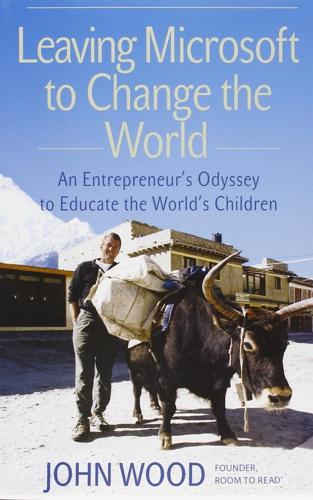
Leaving Microsoft to Change the World: An Entrepreneur's Odyssey to Educate the World's Children
by
John Wood
Published 28 Aug 2006
Let’s say, for example, that your cause is to bring clean water to villages in Africa where children are dying of diseases that nobody should be killed by in this modern world. Below are two statements that you could make while talking to a potential donor or board member about aiding your nascent organization: STATEMENT #1: My dream is to bring new wells and clean water to at least 25 villages in Kenya over the next three years. STATEMENT #2: The scale of the water problem in Africa requires bold solutions, because millions of people die of diseases that they would not contract if they had clean water. So I want to help at least 10,000 villages, throughout Africa, to have clean water within ten years.* The latter statement is probably going to scare some people away.
…
So I want to help at least 10,000 villages, throughout Africa, to have clean water within ten years.* The latter statement is probably going to scare some people away. This is fine—after all, you don’t want people who think small or who are afraid of big challenges. The second statement will also attract the attention of potential donors. One of the biggest frustrations that funders have is that “we are spending all this money, yet so little seems to change as a result.” Therefore, when they meet someone who declares a bold set of goals, they are likely to take notice and you’ll be in a position to “get the meeting.”
…
Story after story you hear from the locals about how this house was home to two parents and five kids and now there is only one child left…or how a father lost all six of his children and wife. Everybody lost someone near and dear to them that quiet Sunday morning. There are refugee camps everywhere and temporary tents line the streets. People have tents, clean water, and food in ample supply thankfully. But people complain that nothing else has happened. They have heard much was given but they have received little to rebuild their lives. The government and international relief agencies are plentiful in the south where there are good roads (tourist beach area) and it is a government-controlled area.

The Future Is Faster Than You Think: How Converging Technologies Are Transforming Business, Industries, and Our Lives
by
Peter H. Diamandis
and
Steven Kotler
Published 28 Jan 2020
That same child, connected to the bandwidth explosion heading her way, will soon be able to spin up thousands of processor cores belonging to any number of cloud-based services, and tap into everything from the billions of hours of free entertainment on YouTube to our ever-thriving gig economy. Conveniently, the poorest nations on Earth are also the sunniest and with that sun—and the ever-increasing spread of solar—comes the opportunity for abundant energy. With energy comes the power to provide clean water and with clean water comes massive increases in health and wellness, which together with increased education and lower birth rates, can help stem the tide of overpopulation. To be clear, there will still be terrorism, war, and murder. Dictatorship and disease won’t go away. But the world will quietly continue to get better.
…
See: https://www.who.int/news-room/fact-sheets/detail/drinking-water. Kamen had just made a handshake deal with Coca-Cola: Coca Cola Corporate, “Coca-Cola Announces Long-Term Partnership with DEKA R&D to Help Bring Clean Water to Communities in Need,” September 25, 2012. See Coca-Cola’s press release about their agreement here: https://www.coca-colacompany.com/press-center/press-releases/deka-partnership-announcement. See also: “EKOCENTER & Slingshot Clean Water Partnerships,” https://www.coca-colaafrica.com/stories/sustainability-water-ekocenter#. “Freestyle Fountain Beverage Dispenser”: Ted Ryan, “From Big Idea to Big Bet: How the Coca-Cola Freestyle Fountain Dispenser Came to Be,” December 6, 2017.
…
By the end of the nineteenth century, we broke forty for the first time. It was at the turn of the twentieth that real acceleration emerged. Everything from the discovery of germ theory and the creation of antibiotics, to the implementation of better sanitation and the increased availability of clean water, radically improved childhood mortality. In 1900, 30 percent of all deaths in the United States were children under five. By 1999, it was 1.4. In parallel, the green revolution and better transportation networks increased average caloric intake, thus increasing lifespan yet again. The end result was a net gain of nearly thirty years, with average lifespan hitting seventy-six by the turn of the millennium.
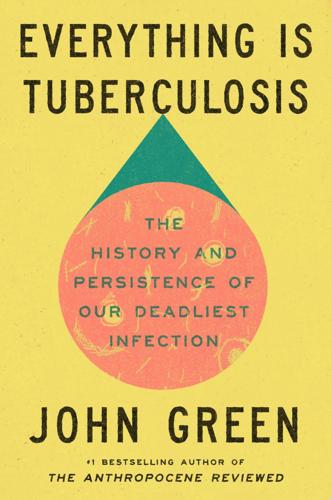
Everything Is Tuberculosis: The History and Persistence of Our Deadliest Infection
by
John Green
Published 18 Mar 2025
But relatively few high-quality health interventions existed, and the overall human life expectancy in 1804 was not much different than it had been a thousand years earlier. Surgery was generally fatal, if not from the operation itself, then from bacterial infections that emerged days afterward. No city in the world had a good sewer system or consistent access to clean water. People who received treatment from doctors were not much more likely to survive an illness than people who were treated by faith healers, and most of what we now think of as “modern medicine” did not exist. Imagine a contemporary healthcare clinic, and then, one by one, remove the items that weren’t yet available in 1804: Of course there were no antibiotic medications to treat bacterial illnesses (the first antibiotic became available in 1945) or antiviral medications (1967).
…
I really, really miss her.” * * * — A few years after Favor’s death, and just over a decade after the civil war ended, Sierra Leone was devastated by an outbreak of the hemorrhagic fever Ebola. The already fragile healthcare system completely collapsed. Because most clinics lacked clean water and protective equipment like gloves and masks, many healthcare workers were infected with Ebola. At least 221 Sierra Leonean healthcare workers died of Ebola between 2014 and 2016, including many of the nation’s most experienced physicians, nurses, and community health workers. Ophelia Dahl, co-founder of Partners In Health, has described such crises as “acute-on-chronic.”
…
And he also makes videos showing the joy and connection of his community—sharing church services, stories of young students overcoming adversity, and his beautiful poems that embrace hope without ever being saccharine or sentimental. And he uses his platform to raise money. He has fundraised for clean water solutions in Freetown and for a lifesaving operation for a young boy. In the years since his recovery, Henry has also become a TB activist with a special focus on raising money and attention for Lakka. He frequently makes videos there and encourages deeper global support for the hospital. “Lakka Hospital is developing gradually,” he noted in a recent video where he visited the hospital, highlighting the crumbling cinder block buildings and overgrown courtyards.

The Coming of Neo-Feudalism: A Warning to the Global Middle Class
by
Joel Kotkin
Published 11 May 2020
China Must Step Up,” New York Times, December 10, 2018, https://www.nytimes.com/2018/12/10/opinion/china-trump-climate-change.html. 36 Yu Shunkun et al., “China Wrestles with Power Shortages,” Power Magazine, May 1, 2013, https://www.powermag.com/china-wrestles-with-power-shortages/; Rajesh Kumar Singh and Saket Sundria, “India Nears Power Success, But Millions Still in the Dark,” T&D World, May 2, 2018, https://www.tdworld.com/utility-business/india-nears-power-success-millions-still-dark; Project Partner, “China’s Clean Water Shortage Intensifies the Poverty Crisis,” https://projectpartner.org/clean-water/chinas-clean-water-shortage-intensifies-the-poverty-crisis/; Rina Chandran, “163,000,000 People in India Don’t Have Clean Water. This Is Why,” Global Citizen, April 25, 2018, https://www.globalcitizen.org/en/content/india-day-zero-clean-water-access-shortage/; Hannah Daly, “1.1 billion people still lack electricity. This could be the solution,” World Economic Forum, June 20, 2018, https://www.weforum.org/agenda/2018/06/1-billion-people-lack-electricity-solution-mini-grid-iea/. 37 Ted Nordhaus, “Impossible Environmentalism: Green groups promote utopian fantasies,” USA Today, September 7, 2017, https://www.usatoday.com/story/opinion/2017/09/07/impossible-environmentalism-does-not-address-sustainability-ted-nordhaus-column/570651001/. 38 Lewis Page, “Renewable energy ‘simply won’t work’: Top google engineers,” Register, November 21, 2014, https://www.theregister.co.uk/2014/11/21/renewable_energy_simply_wont_work_google_renewables_engineers/; Lewis Page, “Renewable energy can’t do the job.
…
One problem is that a Malthusian approach to demographics and economics tends to favor those who are already rich, to empower the clerisy, and generally to reinforce social hierarchy.34 Moreover, the measures taken by Western nations are unlikely to affect climate change much when virtually all the growth in emissions comes from developing countries, led by China.35 Poorer developing countries also must accommodate the needs of large populations living in poverty and lacking basic amenities such as adequate electricity or clean water. Globally over one billion people lack reliable electricity. Leaders in countries such as India tend to be more concerned about the availability of energy than about reducing greenhouse gas emissions.36 Investing in Resilience In order to ind effective solutions to climate change and other problems, the environmental movement needs to give up “utopian fantasies,” writes Ted Nordhaus, a longtime California environmentalist, and “make its peace with modernity and technology.”37 Given existing technologies, the much-anticipated shift to solar and wind energy seems largely impractical as a way of cutting emissions without dramatically raising energy costs, reducing reliability, and increasing poverty.

Grow Green: Tips and Advice for Gardening With Intention
by
Jen Chillingsworth
Published 31 Mar 2021
EGGSHELLS (BIODEGRADABLE) Perfect for herbs and salad seeds. Eggshells can be planted directly into the soil and as they decompose, they provide plants with additional nutrients. Gently tap the top of the egg and, peel away the shell, then pour the egg into a bowl and set aside. Wash the empty shell in clean water and leave to air dry. Carefully pierce a small hole in the bottom of the shell for drainage (a needle or an awl works well for this). Return the empty eggshells to their egg carton and gently spray them with water. Fill each eggshell with seed potting compost and plant seeds as directed on the packet.
…
This hole is where the root will come from. Stick three toothpicks into the top part at a 45-degree angle, evenly spacing them out and avoiding the lines that run around the pit. Use an old jam (jelly) jar or Mason jar and sit the avocado pit in the jar, top side facing upwards. Fill the jar with clean water. The bottom of the avocado should sit in the water, with the top suspended out of the water with help from the toothpicks. Place the jar in a sunny spot. Top up the jar with water as needed or use fresh water if discolouration occurs. Once you have lots of roots, transplant the avocado to a container filled with good-quality potting compost.
…
However, if there are fragments of soil stuck to the skewer, there is enough moisture in the pot and the plant does not need watering. » Humidity: Some houseplants require a damp and humid atmosphere to survive. To increase the level of humidity, mist plants every day with water or place pots on a saucer or tray filled with pebbles. Fill the saucer or tray with water halfway up the pebbles. Empty and refill the saucer or tray with clean water regularly to prevent pest infestations. » Fertilizing: Most houseplants will appreciate a regular feed of an organic liquid fertilizer throughout the growing season. For zero waste options, use the leachate from a worm farm or make a batch of banana peel tea. Cacti succulents, citrus and orchids require specialist fertilizing products.

The More of Less: Finding the Life You Want Under Everything You Own
by
Joshua Becker
Published 2 May 2016
Riding the momentum, Ali established a nonprofit organization called With This Ring that calls men and women into radical generosity, boldly asking them to part with their most prized possessions for the sake of others. To date, With This Ring has collected over a thousand rings and has provided clean water for tens of thousands of people in Africa, Central America, and India.2 Ali has experienced joy in giving and fulfillment in generosity. Indeed, she would attest that it is far better to give than to accumulate. You may never feel moved to give up your wedding ring for the sake of providing clean water to people in Africa. Ali would be the first to admit that hers was a rare first step toward generosity. But each of us should feel moved to care for the poor and the needy, not just for their sake but for ours as well.
…
This experience changed my view of minimizing and forever changed my advice to others embarking on the journey. Rather than sell your unwanted items, give them away. Practice generosity with them. There’s no lack of opportunity. Countless charitable organizations around the world meet real and urgent needs. They provide food and shelter to those without. They deliver clean water to villages lacking a well. They protect battered women. They place orphans in loving families. They offer educational assistance and job training to people who need help getting a start. And much, much more. By giving your unneeded possessions to such organizations, you can make a real difference quickly and easily.
…
There are countless charities and causes that need your support. And some of them are directly in line with your most compelling passions. What are you most passionate about? Is it the environment, poverty, or religion? Maybe it’s world peace, child nutrition, or animal rights. What about education, civil rights, or clean water? Identify what passions already move you, find a committed organization working in that area, and then joyfully help them in their work. 5. Spend time with a generous person. Once, I found myself out to lunch with an older gentleman whose generosity I had admired for years and decided to ask questions about the practice in his life.

Beautiful Solutions: A Toolbox for Liberation
by
Elandria Williams, Eli Feghali, Rachel Plattus
and
Nathan Schneider
Published 15 Dec 2024
For most people on earth, capitalism hasn’t been working. If we’re united in rejecting empire-building, exploitation, and domination, what does the alternative look and feel like? These are questions that you and your community can answer together. Here’s one beginning of a list: We want safety and shelter. We want fresh food, clean water, and a healthy environment. We want good education and health care. We want a bright future for our children. We want community, culture, art, and beauty. We want meaningful work and thriving economies. We want governments that are responsive to the needs of their communities. We want freedom: of expression, of movement, of faith, of the press, of everything.
…
As a result, it has had many profitable years and has invested proceeds in improving the living standards of members and developing of the wider community. For Chitsvachirimurutsoka, contributing to the community is an essential part of being a cooperative. Over the last few decades, members have dug boreholes to provide clean water, built and repaired roads, started a preschool on the farm, paid for funerals, and supported sick and orphaned people in their community, in addition to many other contributions. GUIDED BY ALBERT VINGWE (interview and review) Vingwe is one of the founding members of Chitsvachirimurutsoka Cooperative Society and former secretary general and chairman of the Zimbabwe National Co-operative Federation.
…
Today, Muungano comprises over 100,000 people in 1,000 groups across Kenya. The movement has two main demands: secure tenure and access. “Secure tenure” means that every slum dweller, informal trader, and squatter should have a title and deed that recognizes their right to use the land. “Access” means every slum dweller should have access to clean water, health, basic services, and housing, among other human rights described in the United Nations’ Sustainable Development Goals. GUIDED BY JOSEPH MUTURI (interview and review) Muturi is the chair of the Board of Slum Dwellers International (SDI) and a national community leader with Muungano wa Wanavijiji, the Kenyan slum dweller network affiliated to SDI.

We Are All Fast-Food Workers Now: The Global Uprising Against Poverty Wages
by
Annelise Orleck
Published 27 Feb 2018
In 2012, Via Campesina began to push the United Nations to adopt an International Declaration of the Rights of Peasants to enshrine rights to land, clean water, and freedom from violence.2 “In most regions where Via Campesina is present, the leaders are women,” Mpofu says. Women are “the backbone of agriculture” and have been at the forefront of farm protests. In South Africa in 2012, women grape pickers sparked the largest farmworker strike the country had seen in decades. In the Western Cape Winelands, thousands laid down their hoes and scythes to demand gender and race equity in pay, clean water, decent housing, and an end to sexual harassment and violence. By strike’s end, they had nearly doubled their wage to $10 daily.
…
But workers said picking quotas were brutal and the hours inhuman.4 Lack of clean water was what finally moved them to organize. “They say what they offer is safe,” said Alexandra, “but it tastes like pond water and it has green slime on it.” People get “a tremendous sore stomach” from drinking it. Decades of industrial agriculture had drained the aquifer till salt seeped into San Quintín’s groundwater. Workers’ children got sick when they drank it and developed rashes when they used it to bathe. In the spring of 2015, San Quintín pickers formed the Alliance for Social Justice. Their first demand was clean water.5 But they soon moved beyond that.
…
I began this work because I felt called on in a time of globalization, as an ever-spreading flood of capital transforms our world, to better understand how low-wage workers are starting to resist, to think and act globally as well as locally. Since that time, I have spoken to many workers about what moved them to rise against poverty wages. These conversations transformed what I see, think, and feel every time I buy a shirt or a flat of berries, shop at a big-box store, check out of a hotel, or drink clean water from my kitchen faucet. Researching this book was revelatory. I traveled across the United States and to parts of the world I had never before visited. I drove, flew, walked, rode in open-air tuk-tuks and on the backs of motorcycles. With photographer Elizabeth Cooke, I conducted interviews in windowless worker dormitories, union offices, and on the streets, at protest marches, in city council hearing rooms, in brightly lit restaurants and shaded back rooms, in elegantly shabby colonial hotels, at factory gates, by phone and via Skype.
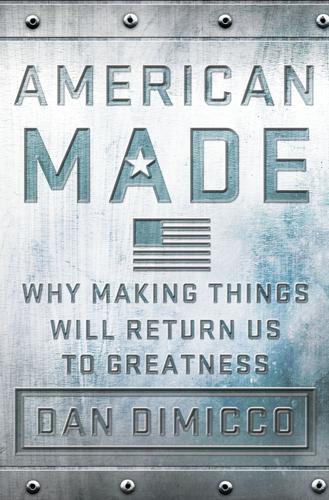
American Made: Why Making Things Will Return Us to Greatness
by
Dan Dimicco
Published 3 Mar 2015
Other countries don’t have the stringent rules we have. China’s environmental protections are paper-thin. That puts us at a massive disadvantage. I can anticipate the objection, which is often something along the lines of, “What are you saying, DiMicco? You want to repeal the Clean Water Act and the Clean Air Act and bring back acid rain?” For the record, no, I do not want to repeal the Clean Water Act or Clean Air Act, and I’m not a fan of acid rain. I’m not in favor of turning back the clock 30 or 40 years. But that’s not where the discussion is today, anyway. When we talk about environmental regulations in 2014 we’re often talking about whether it’s absolutely necessary to add another multi-billion-dollar burden to industry by tweaking the emissions standards on certain fine particles, defined as 2.5 micrometers and smaller.
…
A new, wider bridge reopened about five months later, three weeks ahead of schedule and at a cost of $7 million. What happened in California is a great example of public-private partnerships in action. Sure, a private company made some money, but taxpayers came out ahead, too. Now, I’m not saying the president should declare a state of emergency, waive the Clean Air and Clean Water Acts, and throw out 80 years of labor laws with a stroke of a pen. I don’t think he would even if he could—can you imagine the outcry from unions and environmental groups? But I am saying infrastructure is, relatively speaking, one of the easiest things we can do to get the economy back on track.
…
Myers, 173 Carnegie, Andrew, 7, 74–75, 78 Carter, Jimmy, 54, 58 Caterpillar, 59, 70, 95 China accountability and, 117–19 “Buy American” and, 136–37 currency manipulation, 101, 107 economic growth, 63–72, 99–100 environment and, 195, 198, 209–10 free trade and, 13, 96, 99–107, 135 impact on international trade, 30, 63–74, 88, 117, 192–93, 213–18, 220–21 infrastructure and, 162, 166, 170 innovation and, 114, 116–17 intellectual property and, 117 Kyoto Protocol and, 195 labor costs and, 64 manufacturing and, 17, 158, 205–6 regulation and, 147–49 skills gap and, 122, 125 space program, 52 steel industry and, 109 U.S. stimulus and, 95, 135–37, 145 WTO and, 216–18 Clean Air Act, 174, 209 Clean Water Act, 174, 209 Clinton, Bill, 65–67, 140 Cold War, 45, 63 construction sector, 2, 15, 33–34, 72, 75, 85, 89, 102, 104, 131–36, 155, 157, 169, 171–74, 178, 197, 202, 221 Consumer Electronics Association, 114 copyright, 119, 213 counterfeiting, 214 Dana, Charles, 4 Datong, 118 DiMicco, Dan, 3–19 direct reduced iron (DRI), 154, 156, 158, 186, 192–93, 222 Dodd, Chris, 180 Duke, Mike, 22 Durbin, Dick, 36 Eagle Ford shale formation, 197 economic crisis Americans leaving labor force, 26 importants statistics, 25–33 lessons learned, 39–41 overview, 21–25 path to full employment, 28 political leadership and, 35–39 real unemployment rate, 29 sectors that need jobs, 33–35 youth unemployment and student debt, 31 education author and, 5 Bush and, 23 career and, 30 Eisenhower and, 45 government spending and, 93, 124, 196, 212, 227 Kennedy and, 48 manufacturing and, 212 National Defense Education Act, 45 skills and, 14, 48, 79, 124–32 U.S. public schools, 14, 45, 48, 79 see also student debt Eisenhower, Dwight, 45, 47, 164 Emanuel, Rahm, 23, 140 energy resources “all of the above” strategy, 169, 190–95 costs and benefits, 196–99 domestic production of, 87, 89 government policy and, 17–18, 39 green energy, 143–47, 157 job creation and, 157 natural gas production, 90, 184 overview, 183–90 steel and, 103 trade deficit and, 87 U.S. oil production, 185 Enron, 12, 77 Environmental Protection Agency (EPA), 152–53, 156 Evans, Don, 110–11 Farouk Systems, 214 federal budget deficit, 11, 21–22, 83, 133 Feinstein, Dianne, 36–37 fiscal cliff deal, 40, 83, 88, 141, 226 Forbes, 9, 83, 197 Ford, Gerald, 54, 58 Ford, Henry, 4 Ford Motor Company, 97, 130 free trade, myth of impacts of China’s currency manipulation, 101 need for government-to-government solutions, 109–12 overview, 93–95 standing up to cheaters, 107–8 why free trade doesn’t work, 96–107 General Agreement on Tariffs and Trade, 102, 106 General Electric, 26, 46, 49, 59, 95, 114, 146 General Motors, 37, 130 Gospel of Wealth, The (Carnegie), 74–75 Great Depression, 47, 55, 134, 164 Great Recession areas hardest hit by, 122 causes of, 203 effect on US economy, 1–2 global impact of, 11 Nucor and, 8 Obama and, 2, 22–23, 191–92 green energy, 143–47 see also energy resources Greenpeace, 191 Hagel, Chuck, 180 Hazeltine, Barrett, 48–49 health care, 22–23, 34, 140–41, 181, 196 Hoover Dam, 164 housing bubble, 12, 76, 121, 132, 203 Hutchison, Kay Bailey, 180–81 I-Bank, 180 see also infrastructure Immelt, Jeffrey, 114 infrastructure China and, 162, 166, 170 expediting spending on, 72–74 global competitiveness of US, 165 job creation and, 169 national infrastructure bank, 178–81 needs, 168–71 overview, 161–68 paying for improvements, 175–78 return on spending, 163 state vs. federal spending on, 176 innovation, myth of areas hit hardest by Great Recession, 122 education and training, 124–32 jobs in innovative industries compared to manufacturing, 115 Kindle’s impact on US trade deficit, 118 overview, 113–19 skills gap myth, 120–23 irrational defeatism overview, 81–88 realism vs. mythology, 88–91 Iverson, Ken, 7, 9, 62, 78, 222, 223–25 Jarrett, Valerie, 22 Jindal, Bobby, 155–56 job-training programs, 123, 130 John Deere, 95, 130 Jordan, Jim, 151 Kaiser, Henry, 4 Kellogg-Briand nonaggression pact of 1928, 106 Kennedy, John F., 44–48, 52 Kerry, John, 38, 180 Keystone XL pipeline, 192 Kindle, 117–18 see also Amazon Kozlowski, Dennis, 76 Krywko, Mark, 213 Kyoto Protocol, 148, 195 Lay, Ken, 76 layoffs, League of Nations, 106 Lehman Brothers, 43, 76 liquefied natural gas (LNG), 187–88 Locke, Gary, 114 Madoff, Bernie, 76 manufacturing sector accelerating a manufacturing renaissance, 204–7 accountability and, 219–20 anti-dumping initiations since 1999, 217 economic multiplier of, 202 fostering innovation in, 220–23 overview, 201–4 relationship between government and business, 208–12 risk and, 223–27 signs of renaissance, 212–18 tax rates by country, 211 Mars, 43–44, 52 see also NASA; space exploration Marshall Plan, 54, 56, 134 McCain, John, 143, 167 McDonald’s, 84 McKinsey, 84, 121 Medicare, 21 mercantilistic policies, 14, 65, 68, 99–102, 107, 198, 217 Mexico, 17, 66, 95, 190, 198 multiplier effect, 137–38, 190, 202, 207, 216 myths that distract us American industrial policy, 156–59 “Buy American,” 136–37 federal spending, 133–35, 140–42 infrastructure, 138–40 Nucor’s experience in Louisiana, 153–56 overview, 133–40 regulation, 147–53 stimulus and green jobs, 143–47 see also free trade, myth of; innovation, myth of NASA, 5, 44, 46, 49–52 see also Mars; space exploration National Defense Education Act, 45 Nissan, 54 Nixon, Richard, 54, 58 North American Free Trade Agreement (NAFTA), 66 Nucor, 3–10, 15, 18, 51, 54, 61–63, 77–80, 82, 84, 103, 110–12, 127–30, 134, 145, 151, 153–56, 158, 165, 186, 189, 192–93, 204, 209, 219, 221–27 Obama, Barack attempts to fix US economy, 22–26, 38, 143, 150 China and, 106–7 conflict with business leaders, 150 economic stimulus, 15, 93, 134–35, 172 education and, 127 energy exports and, 187–88 exports under, 40 Great Recession and, 2, 22–23, 191–92 green energy and, 145–46, 191 infrastructure projects and, 172, 174, 180–81 innovation and, 114 international trade and, 95, 106–7 Keystone XL pipeline and, 192 NASA and, 51–52 private industry and, 219–20 regulation and, 157 skills gap and, 120 unemployment numbers and, 26, 39–40, 93, 114 OECD, 211 O’Neill, Paul, 110 O’Neill, Tip, 59 Palin, Sarah, 167 patents, 117, 119, 213 Plaza Accord, 58–63, 108 Procter & Gamble, 105 Reagan, Ronald, 47, 59–60, 63–65, 108 Reid, Harry, 36 Republican Party “Buy American” and, 95 economy and, 38–39, 86, 141, 144 government spending and, 11, 133 infrastructure and, 167, 181 national debt and, 11, 35–36 regulation and, 151 stimulus and, 86, 91, 93, 95 Rockefeller, John D., 74 Rocketdyne, 46 Romney, Mitt, 88, 107, 120, 191 Russia, 45, 47, 51, 95, 102, 116, 135, 147 Schultz, Howard, 22 Schumer, Chuck, 36–37 Schwarzenegger, Arnold, 136, 143 Seidenberg, Ivan, 22 September 11, 2001, 23–24 sequester, 40 service industry, 10, 12, 15, 18, 33–37, 51, 76, 89, 127, 203 shale, 17, 39, 157–58, 183–85, 189, 191, 194, 196–97, 199 Shami, Farouk, 214 Shapiro, Gary, 114 Sharan, Sunil, 146 Sierra Club, 191, 193 Sleek Audio, 213 Smith, Adam, 65, 101–2 Social Security, 24, 32 space exploration Apollo program, 46 Cold War and, 45 history of, 43–47 inspiring a generation, 48–52 Kennedy and, 44–46 Obama and, 51–52 public-private partnerships and, 46–47 Soviet Union and, 45–46 see also Mars; NASA Sputnik crisis, 45, 116 Stahl, Leslie, 94–95 Starbucks, 22 steel industry “Buy American” and, 135–36 Carnegie and, 7, 74 China and, 102–4, 118, 218 energy and, 186–88, 192 flat-rolled, 9 infrastructure and, 90, 139 innovation and, 221 international trade and, 14, 58, 95–97, 102–4, 109, 218–19 irrational defeatism and, 84–85 Nucor and, 3–10, 51, 62–63, 82, 145, 153–56, 186, 221–24, 226 Plaza Accord and, 62 regulation and, 145, 149, 153–54 Republic Steel, 5, 50 skills gap and, 125, 128–30 stimulus and, 135–36, 139 U.S. manufacturing and, 3, 6, 109–12 Vulcraft and, 7 WTO and, 219 Yamato Steel, 221 stimulus “Buy American” and, 94–95, 135–37 China and, 95, 135–37, 145 failures, 15, 134–35 green initiatives and, 35, 143–47 infrastructure and, 93–95, 166, 172 passage of, 15 politics of, 91, 134 Republican Party and, 86, 91, 93, 95 subsidies, 35 taxes and, 94–95, 135, 137–38 unemployment and, 93–94, 146 student debt, 30–32 Summers, Larry, 114 tariffs, 60, 63, 67, 96, 98, 102, 106, 111, 206 taxes Bush and, 23 environmental issues and, 145, 148–50 federal government and, 73–74 fiscal cliff deal and, 226 free trade and, 96 gas tax, 176–77 Great Recession and, 83 infrastructure and, 90–91, 163, 173–76 innovation and, 86, 180, 220–21 international trade and, 68–69, 71, 96, 100, 102, 117, 205 manufacturing sector and, 68–69, 86, 204, 210–12, 220 politics and, 36, 93 public-private partnerships and, 46–47 revenue from, 19, 40, 46, 140, 155, 183, 196–99 stimulus and, 94–95, 135, 137–38 tax credits, 86, 145, 221 tax cuts, 23, 36, 93 tax rates by country, 211 Tianrui, 118 Toyota, 37, 54, 60 Trumka, Richard, 135 unemployment age and, 30–32 construction sector and, 2 decline in, 2, 27 education and, 30–31, 127 energy sector and, 196 Great Recession and, 3, 22, 25–30, 36, 93–94, 122 innovation and, 114 measuring, 25–27 politics and, 39, 212 real unemployment rate, 29, 39 skills and, 85, 205 stimulus and, 93–94, 146 student debt and, 30–31 see also job creation United Nations, 106, 198 U.S. foreign trade adult conversation, 56–58 changes in global manufacturing and, 57 China’s impact on, 63–72 competitive advantages, 72–74 growth of financial sector, 75 low labor costs and, 64 Plaza Accord, 58–63 public view of, 53–54 real wealth and its opposite, 74–80 US foreign aid and, 55–56 U.S.
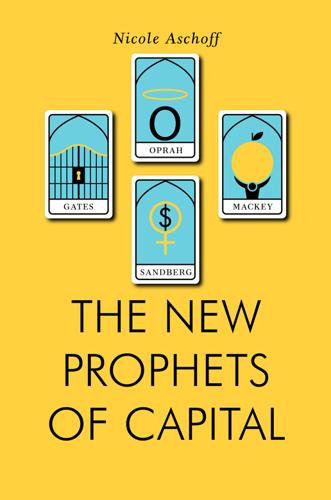
The New Prophets of Capital
by
Nicole Aschoff
Published 10 Mar 2015
In the United States, these diseases are a spectre of times past: Swamp drainage, pesticide spraying, and massive sanitation infrastructure projects to supply clean water and safely dispose of waste have essentially eliminated these diseases from wealthy countries. The foundation is pursuing a faster, potentially easier, route to eradicating disease in poor countries. The Gateses argue that with advances in biotech and logistics we can develop vaccines for these diseases instead of getting tripped up on the bigger hurdles of providing clean water, sanitation infrastructure, and nutritious food. But the pharmaceuticals industry, concentrated in wealthy countries, has not developed such vaccines and is not particularly interested in doing so.
…
But, as some of these billionaires have acknowledged, the world has not benefited equally. Absolute poverty and childhood mortality are declining in many countries, but starvation and chronic hunger afflict more than a billion people. Every year millions of children die from preventable diseases and a third of the planet lacks clean water and access to a toilet. When Bill Gates came up for air in the late 1990s after creating the Microsoft empire he looked around and was “shocked” and “revolted” by the fate of poor people around the world. “We had just assumed that if millions of children were dying and they could be saved, the world would make it a priority to discover and deliver the medicines to save them.
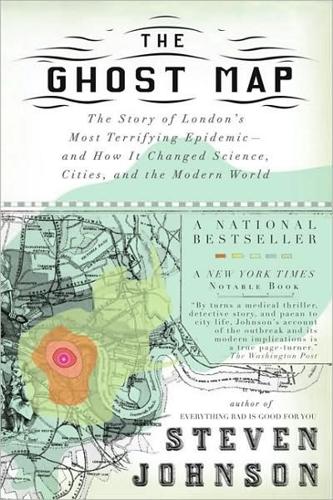
The Ghost Map: A Street, an Epidemic and the Hidden Power of Urban Networks.
by
Steven Johnson
Published 18 Oct 2006
The inventor Dean Kamen has developed two affiliated machines—each the size of a dishwasher—that together can provide electricity and clean water to rural villages or shantytown communities that lack both. The power generator runs off a readily available fuel—cow dung—though Kamen says it will run off “anything that burns.” Its output can power up to seventy energy-efficient bulbs. The ambient heat from the generator can be used to run the water purifier, which Kamen nicknamed Slingshot. The device accepts any form of water, including raw sewage, and extracts the clean water through vaporization. Kamen’s prototype includes a “manual” featuring a single instruction: just add water.
…
The writer Robert Neuwirth puts it best in his mesmerizing account of squatter culture, Shadow Cities: “With makeshift materials, they are building a future in a society that has always viewed them as people without a future. In this very concrete way, they are asserting their own being.” But that hope needs to be tempered with caution. The squatters still face significant obstacles. Arguably the most pressing obstacle is the one that confronted London a century and a half ago: the lack of clean water. Over 1.1 billion people lack access to safe drinking water; nearly 3 billion—almost half the planet—do not possess basic sanitation services: toilets, sewers. Each year 2 million children die from diseases—including cholera—that result directly from these unsanitary conditions. And so the megacities of the twenty-first century will have to learn all over again the lessons that London muddled through in the nineteenth.
…
One cannot be unduly optimistic about how these megacities will face their potential crises in the coming years. There may be new technologies that enable the squatter communities to concoct public health solutions on their own, but governments will obviously need to play a role as well. It took industrial London a hundred years to mature into a city with clean water and reliable sanitation. The scavenger classes that Mayhew analyzed with such detail no longer exist in London, but even the wealthiest cities in the developed world continue to face problems of homelessness and poverty, particularly in the United States. But the developed cities no longer appear to be on a collision course with themselves, the way London did in the nineteenth century.
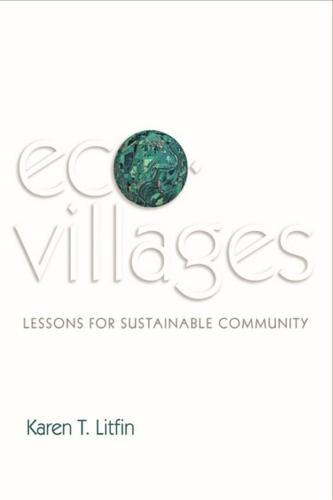
Ecovillages: Lessons for Sustainable Community
by
Karen T. Litfin
Published 16 Dec 2013
Karen Collins, the young woman running the facility, walked me through the various anaerobic and aerobic tanks that transform wastewater into clean water in just four days. At the far end of the Living Machine was an impeccable garden with a lovely fountain with sparkling clean water flowing from it. I was curious to learn about Karen’s technical background. Was she a biologist? “No,” she said. “I’m a grade school teacher and a mom. Here, it’s been on-the-job training. You don’t need to know the science of bacteria; you just need to know how the system works. I work here alone 16 hours a week, with outside help for heavy work now and then.” The electricity from Findhorn’s windmills pumps 10,000 gallons of clean water uphill to the community every day.
…
By working together, the villagers simultaneously build a cooperative spirit and enhance their material wellbeing. As one Sarvodaya activist told me, “We build the road, and the road builds us.” I traveled to Gunambil, a Sarvodaya village in the rugged hill country near Kandy, to see these ideals put into practice. Even though rain is plentiful, remote villages like Gunambil lack clean water because the rain runs off and the government will not plumb such steep terrain. In 1980, Gunambil held its first shramadana camp to build a gravity-fed system. Six months later, thanks to the backbreaking work of fifty volunteers, most households were receiving fresh water. Each family pays less than a dollar each month to the caretaker, the Shramadana Society’s only employee, who services the system.
…
With an awareness that affluence is neither sustainable nor the fast track to happiness, ecological economists are devising alternatives to GDP/capita to measure progress.6 In 2012, the Happy Planet Index, which measures sustainable wellbeing, ranked Costa Rica as No. 1 and the United States as No. 114.7 National governments, including the United Kingdom’s Office of National Statistics, are taking this work seriously and developing means other than GDP/capita to measure national wellbeing.8 Like governments, ecovillages subsidize what they value. Ecovillages create a viable future by supporting common spaces and amenities, healthy food, access to clean water, and strong relationships. For reasons ranging from entrenched ideologies to corporate lobbying, governments often end up bankrolling a highly undesirable future. Think, for instance, of the trillions of dollars spent on militarizing the Middle East. A major step toward creating a positive future would be to end subsidies for programs that foster fossil-fuel dependency, a move that is particularly urgent in the United States and Canada.
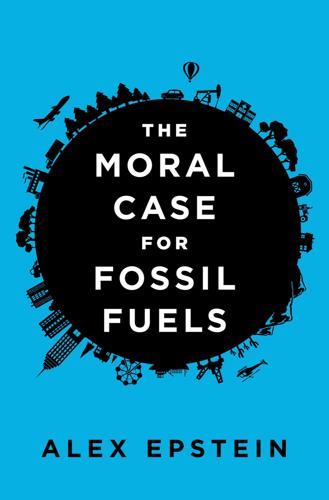
The Moral Case for Fossil Fuels
by
Alex Epstein
Published 13 Nov 2014
We’ll look at all major measures of environmental quality in chapter 8, but for now let’s look at clean air and clean water. Both have increased substantially. Here are measurements from the EPA of six major air pollutants. As fossil fuel use goes up, they go down. Figure 1.6: U.S. Air Pollution Goes Down Despite Increasing Fossil Fuel Use Source: U.S. EPA National Emissions Inventory Air Pollutant Emissions Trends Data And here are international data for the percentage of people in the world with good water quality, which has gone up dramatically in the last 25 years as countries have used more and more fossil fuels. Figure 1.7: More Fossil Fuels, More Clean Water Sources: BP, Statistical Review of World Energy 2013, Historical data workbook; World Bank, World Development Indicators (WDI) Online Data, April 2014 Overall, the improvement is incredible.
…
How much of a positive difference does fossil fuel energy make to environmental quality? Let’s look at modern trends in four key areas of environmental quality: water, disease, sanitation, and air. Here’s water quality—measured by the percentage of world population with “access to improved water sources.” Figure 6.1: More Fossil Fuels, More Clean Water Sources: BP, Statistical Review of World Energy 2013, Historical data workbook; World Bank, World Development Indicators (WDI) Online Data, April 2014 Fossil fuel energy was essential to this improvement. It enabled us to transform once unusable water into usable water. Most of Earth’s surface is covered with water.
…
This was rarely intentional, and early civilizations did construct sewer systems to isolate human waste, but natural, unrestricted water flows usually lead to a certain amount of mixing between the human waste and the nearest freshwater source—particularly as more and more people group together. Today, sewage is not only kept separate from clean water sources, but it is also extensively treated to render its most dangerous elements harmless so that it can be disposed of safely, in some cases used as a fertilizer or even, thanks to the latest technology, turned into drinking water.7 The technology of sewage treatment is another advance made possible by industrialization, and it is yet another energy-intensive process for transforming our environment.

Progress: Ten Reasons to Look Forward to the Future
by
Johan Norberg
Published 31 Aug 2016
The major change, though, came with the effective filtering and chlorination of water supplies in the first half of the twentieth century, after the germ theory of disease had been accepted. Life expectancy increased more rapidly in the USA during this period than in any other period in American history, and the introduction of filters and chlorination shows that clean water played a decisive role. One study found that clean water was responsible for forty-three per cent of the total reduction in mortality, seventy-four per cent of the infant mortality reduction and sixty-two per cent of the child mortality reduction.11 This technological shift came late to low- and middle-income countries, but once begun, it happened faster than it once had in the wealthiest countries.
…
By 2015, this had increased to 0.98 for primary and secondary education and 1.01 for tertiary education.19 This is an astonishing accomplishment, and important not just for justice and equal opportunities, but also because child mortality falls as women’s level of education increases. Part of this can be explained by the fact that education often leads to a job, a higher income, and better access to food, hygiene, and clean water. However, the effect goes beyond what can be explained by these factors indicating that better-educated mothers will assume more active responsibility for their children’s health than those who believe that illness and death are controlled by God or destiny. Few individuals have borne more powerful witness to the power of literacy than Frederick Douglass, the African-American slave who later became a celebrated orator and reformer.
…
She would have had five to seven siblings, and she would already have seen at least one or two of them die. The chance that her mother would survive childbirth was smaller than the chance that the present generation will meet their grandparents. She would have been brought up under conditions we consider unbearable. Her family would not have had access to clean water or a toilet. Chances are that they did not even have a latrine; they would have used a ditch or gone behind a tree. Her surroundings would have been littered with garbage and faeces, contaminating water sources and devastating lives. Her parents would live in constant fear that she would be taken away by tuberculosis, cholera, smallpox or measles – or starvation.
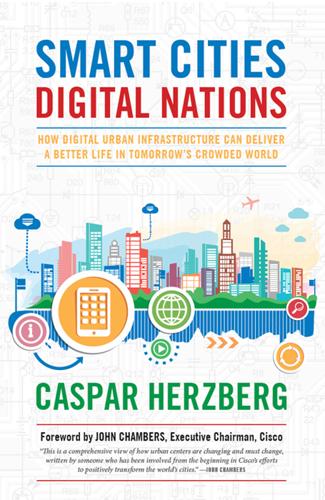
Smart Cities, Digital Nations
by
Caspar Herzberg
Published 13 Apr 2017
The World Health Organization stated in 2014 that 1.8 billion people rely on contaminated water sources, and that half of the world’s population will live in a “water-stressed” area by 2025. Among all the threats to human progress, clean water shortages are the least discriminating, affecting the city and village alike. See also Rececca Borison, “The Guy Who Invented the Segway Is Working with Coca-Cola to Bring His Water Distilling Invention to Third World Countries.”Business Insider, June 2014. http://www.businessinsider.com/segway-inventor-coke-spread-clean-water-2014-6. 3 Timothy Ogden, “Techno-Optimists Beware,” Stanford Social Innovation Review, Summer 2012, https://ssir.org/book_reviews/entry/techno_optimists_beware1. 4 Moore’s Law is cofounder of Intel Gordon Moore’s 1965 supposition that the number of transistors per square inch on integrated circuits will double every year into the foreseeable future. 5 The challenges facing the implementation of technology are illustrated by iBOT’s declining fortunes.
…
Singapore is contrasted favorably with Mumbai; the former is “tall and connected,” while Mumbai, like much of India, is burdened by building height restrictions that require its slums to spread out and increase commuting time and congestion. He also makes the point that basic infrastructure should come first: “One curse of the developing world is that governments take on too much and fail at their core responsibilities. Countries that cannot provide clean water for their citizens should not be in the business of regulating currency exchanges.”10 By the same token, a reliable Internet service delivery platform is an essential component of green- or brownfield development. Because IoE technology has the capability to deliver resources and services with greater efficiency, it should be designed and implemented as a primary tool for providing those “core responsibilities.”
…
“Like skilled people, skilled cities also seemed to be better at reinventing themselves during volatile times.”11 Dubai, once again, is an excellent example. A strong Internet platform and connectivity is imperative to the flexible city of the twenty-first century. In terms of economic competitiveness, it is nearly as important to provide a data network and security features as it is to provide clean water. Meanwhile, much of the flexibility of cities will depend on their ability to provide and manipulate information. By Glaeser’s thinking, the city is the best vehicle for smart services, simply because it provides the density we need for innovation and to counteract the twentieth-century, mostly American, predilection for sprawl, suburbs, car culture, and other sources of environmental degradation.
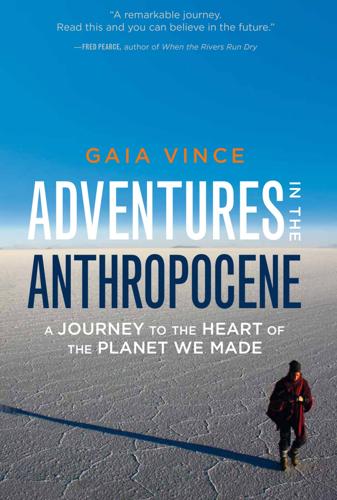
Adventures in the Anthropocene: A Journey to the Heart of the Planet We Made
by
Gaia Vince
Published 19 Oct 2014
It is one of the ten poorest countries, with more than one-third of the population living below the poverty line on less than $0.40 per day and half of children under 5 malnourished. Around 90% of Nepalis live in rural areas, many depending for survival on subsistence plots too small to support them, with little or no access to electricity, clean water, sanitation, education or health care, and national shortages of everything from rice to kerosene. More than a decade of Maoist insurgency and civil unrest has wrecked the economy and crippled infrastructure. Nepal has been incapable of even basic governance over the past few decades, and relies on an army of aid charities to avoid mass starvation – the number of NGOs in the country soared from 220 in 1990 to more than 15,000, now contributing around 60% of GDP.
…
This social structure, which has produced such an undeniably clean and functioning society, owes its success to the unique way the village manages and shares its most valuable resource: water. And that is due in no small part to Jadeja’s ingenuity and foresight – he decided some thirty years ago that clean water and sanitation were essential to underpin development, and that his village should have them. After each monsoon, the village wells would fill, indicating that the underlying aquifer here is rain-fed. The problem was that most of the monsoon rains were wasted, streaming off and disappearing before reaching the aquifer.
…
Since oil was found, parts of their tribal land have become no-go areas given over by the government to oil prospectors without the communities’ consent. But the wind farm’s project’s leader, Carlo van Wageningen, insists his development will bring opportunities, including jobs, infrastructure and electricity, to the north-east for the first time. He says that the consortium will establish fisheries at Lake Turkana, and clean-water projects that could end the interethnic conflicts over water. A promised new clinic could give these isolated people real health improvements. Some people here are already benefiting from electricity for the first time, thanks to the desert’s other major power source: the sun. A couple of the El Moro men have solar-powered mobile phones, which are sold cheaply in Nairobi, and one of the straw huts in the village has two solar panels on its roof.

This Changes Everything: Capitalism vs. The Climate
by
Naomi Klein
Published 15 Sep 2014
Austerity himself—when large parts of his country were underwater from historic flooding in February 2014 and the public was enraged that his government was not doing more to help.7 Listening to Navarro Llanos describe Bolivia’s perspective, I began to understand how climate change—if treated as a true planetary emergency akin to those rising flood waters—could become a galvanizing force for humanity, leaving us all not just safer from extreme weather, but with societies that are safer and fairer in all kinds of other ways as well. The resources required to rapidly move away from fossil fuels and prepare for the coming heavy weather could pull huge swaths of humanity out of poverty, providing services now sorely lacking, from clean water to electricity. This is a vision of the future that goes beyond just surviving or enduring climate change, beyond “mitigating” and “adapting” to it in the grim language of the United Nations. It is a vision in which we collectively use the crisis to leap somewhere that seems, frankly, better than where we are right now.
…
But desperate people can be counted on to do desperate things—which is why we all have a vested interest in taking care of one another so that many fewer communities are faced with those impossible choices. That means rescuing the idea of a safety net that ensures that everyone has the basics covered: health care, education, food, and clean water. Indeed, fighting inequality on every front and through multiple means must be understood as a central strategy in the battle against climate change. This kind of carefully planned economy holds out the possibility of much more humane, fulfilling lifestyles than the vast majority of us are experiencing under our current system, which is what makes the idea of a massive social movement coalescing behind such demands a real possibility.
…
It shows, he claimed, “what can happen when a country runs out of options. The world is headed down a similar path with the relentless burning of coal and oil, which is altering the planet’s climate, melting ice caps, making oceans more acidic and edging us ever closer to a day when no one will be able to take clean water, fertile soil or abundant food for granted.” In other words, Nauru isn’t the only one digging itself to death; we all are.22 But the lesson Nauru has to teach is not only about the dangers of fossil fuel emissions. It is about the mentality that allowed so many of us, and our ancestors, to believe that we could relate to the earth with such violence in the first place—to dig and drill out the substances we desired while thinking little of the trash left behind, whether in the land and water where the extraction takes place, or in the atmosphere, once the extracted material is burned.
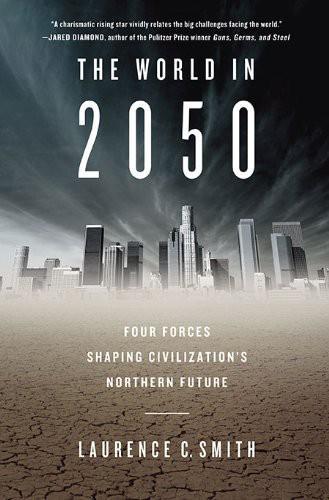
The World in 2050: Four Forces Shaping Civilization's Northern Future
by
Laurence C. Smith
Published 22 Sep 2010
In other words, climate changes are expected to both harm and help water availability in different parts of the world, whereas population and economic growth harm it nearly everywhere.206 So even if our climate-change problems could somehow disappear tomorrow (and they won’t), we would still face enormous challenges to water supply in some of the hottest, most crowded places on Earth. Drinking Sh** It’s hard to imagine the world behind those red maps. To most people—especially living in cities—clean water is like oil and electricity: one of those things upon which they depend mightily yet give barely a passing thought. In my own city of Los Angeles, everyone will gladly pay a hundred dollars a month for cable television, yet would roar in protest if forced to pay that much for life’s elixir piped directly into their homes.
…
For two months of clean drinking water, snared from faraway sources and delivered to my house by one of the world’s most expensive and elaborate engineering schemes, I was charged $20.67. I spend more on postage stamps. If only everyone could indulge such ignorant bliss. While eight in ten people have access to some sort of improved water source,207 this globally averaged number masks some wild geographic discrepancies. Some countries, like Canada, Japan, and Estonia, provide clean water to all of their citizens. Others, especially in Africa, do so for under half. The worst water poverty is suffered by Ethiopians, Somalis, Afghanis, Papua New Guineans, Cambodians, Chadians, Equatorial Guineans, and Mozambicans.208 Even their statistics hide the most glaring divide—between cities and rural areas.
…
Perhaps in part because most people who read articles such as this find it hard to imagine defecating daily in plastic bags, buckets, open pits, agricultural fields, and public areas for want of a private hygienic alternative, as do some 2.6 billion people. Or perhaps they cannot relate to the everyday life of the 1.1 billion people without access to even a protected well or spring within reasonable walking distance of their homes.209 Most experts agree that getting clean water to the world’s poorest people is largely a matter of money. According to the United Nations, the price tag for everyone to have safe, clean drinking water would be about $30 billion per year. But in the poorest countries, building water treatment plants and a network of pipes to move it is still prohibitively expensive, especially for rural areas.
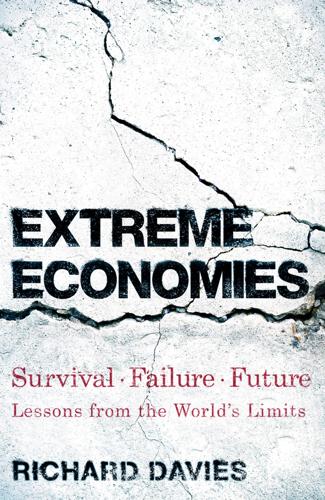
Extreme Economies: Survival, Failure, Future – Lessons From the World’s Limits
by
Richard Davies
Published 4 Sep 2019
He first came to the market as an 11-year-old, and quickly spotted a way to make money. Despite the proximity of such a mighty river, Kinshasa has no proper supply of clean drinking water. Gombe, the rich suburb, is tiny and outside it few homes have taps that are safe to drink from. Selling small plastic bags filled with clean water is a major industry here, and as a teenager Christian worked out a scheme to buy clean water cheaply in bulk, allowing him to make around 1,000 Congolese francs (60¢) each time he sold 20 water sachets. He worked his way up, first as a market porter, then opening his own retail store and finally moving into wholesale trade, which is more lucrative and more stable, he says.
…
Some things are worse today, she says: the traditional houses were preferable in style to the new ones (they were wooden and had upper floors with balconies, whereas the replacements are concrete bungalows). But the big change is having your own toilet. Before the disaster the village lacked a basic sewerage system, with the nearby river providing clean water and taking dirty water away. The modern homes have plumbed-in bathrooms, cutting out time-consuming walks to the river. As the rebuild continued, the notion of ‘building back better’ became a well-known phrase, referring to the policy of using modern designs and materials to improve the local infrastructure.
…
Soon Kutamisa had built a business buying and selling used phones. Things went so well that he was able to use the profit to enrol in university. ‘But I had to stop,’ he says. ‘While I was at classes my staff were eating my profit.’ Resigning himself to a life of trading on the street, he moved into the forex business. Like the sale of sachets containing clean water, this industry results from an acute shortage – the absence of a stable currency. The runaway inflation and rapid exchange-rate depreciations of Mobutu’s years are still seen in modern Kinshasa. In mid-2016 one dollar bought you 900 Congolese francs; by the summer of 2018 almost half the franc’s value had evaporated, with a dollar buying 1,650 francs.
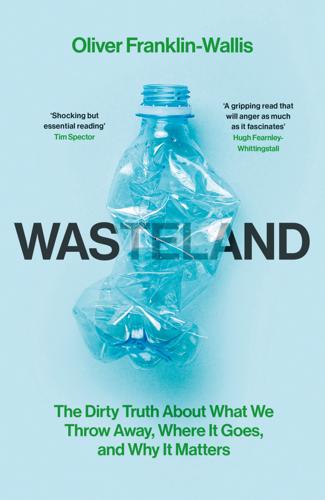
Wasteland: The Dirty Truth About What We Throw Away, Where It Goes, and Why It Matters
by
Oliver Franklin-Wallis
Published 21 Jun 2023
Snow published his findings in an 1849 essay, On the Mode of Communication of Cholera, but he was summarily dismissed – and in some case ridiculed – and his theory of cholera as a water-borne disease was not widely accepted until nearly two decades later. (He is now recognised as the father of modern epidemiology.) Snow spent his final years trying to convince his peers that a clean water supply could prevent future outbreaks, but few would listen, and Snow died on 10 June 1858. By then, the heatwave had already begun. * * * That summer, London boiled. An unseasonably dry spring stretched into a summer-long drought. In mid-June temperatures reached 34°C in the shade, setting a new record in the city, and by early July the rivers feeding the Thames had slowed to a trickle.
…
And despite the relative sterility of the modern city, the World Health Organization estimates that one in ten people consumes wastewater – that is, sewage – every year, either via unclean drinking water or contaminated food. Diseases of waste are still killing countless people. Every day about 2,200 children die of diarrhoea, most of them without access to reliably clean water.25 Every year, poor sanitation kills more children than AIDS, malaria and measles combined.26 When Bazalgette designed London’s sewer system in the 1850s, the city’s population was 2.5 million. He could have built a sewer system with the capacity needed for the time, but instead he doubled it, anticipating that the city would continue to thrive and grow in the centuries to come.
…
The process also acts to break down ammonia, a toxic pollutant found both in faecal matter and urine. ‘In crude sewage, the ammonia might be over 50 milligrams per litre. Once it’s been through the aeration lanes, that’s then down to less than one milligram per litre,’ Dina says. Finally, after a last round of settlement in smaller tanks, the cleaned water is expelled back into the river. Several times a day, on-site scientists test the water quality for pathogens and chemical content, to ensure they are below government-mandated safety levels. Sewage, like trash, can tell you a lot about a city’s population: its eating habits, its flushing habits, and even its health.
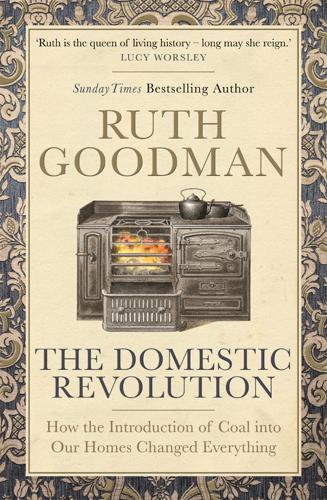
The Domestic Revolution
by
Ruth Goodman
Published 15 Apr 2020
Smith’s book contained only one recipe for a traditional thick pease pottage but seven recipes for wet-boiled pea soups. Ellis, reporting from his wood-burning neighbourhood, collected one pease pudding recipe that incorporated a wet-boiling method, calling for the dried peas to be soaked, put into a pudding bag and boiled in clean water until three-quarters cooked, then withdrawn from the pot, beaten into a mash, returned to the cloth and the pot, and boiled for a little longer. In contrast, he offered a barrage of thick pease porridge recipes, three from the wives of farmers and one from ‘A Poor Man’s Family’. Their accounts were full of instructions ‘for thickening it, and making it the more hearty’.
…
But beginning around 1570, a significant proportion of Londoners lacked sufficient ash supplies, and by 1600, with the conversion to coal almost complete in the capital, ash was very hard to come by. Black soap, bought in pots and jars for a halfpenny a pound, was the next best thing, and it did the job so long as you dissolved it in hot water. Washing-up as we know it today had arrived. To use black soap effectively, the cleaning water first had to be heated. The soap was added and stirred about, and then dishes were immersed in the hot soapy water and rubbed with a linen cloth or a handful of horsetail to dislodge stubborn dirt. Afterwards, the dishes were rinsed in clean cold water and dried with a clean dry dish cloth or wiper.
…
Dung may perhaps be particularly surprising as a cleaning agent, but it does work. Somewhat obviously, you do not use the dung directly as it falls from the beast. Instead, you lay it in a bucket of water overnight and strain off the liquid the next day. This liquid both loosens grease and bleaches stains. Understandably, you must be very thorough in rinsing your laundry in clean water afterwards. William Harrison in his Description of England (1587) mentioned the practice with noticeable distaste: ‘In some places also women do scour and wet their clothes with their [pig] dung, as others do with hemlock and nettles, but such is the savor of the clothes touched withal that I cannot abide to wear them on my body, more than such as are scoured with refuse soap, than the which (in mine opinion) there is none more unkindly savor.’

Give People Money
by
Annie Lowrey
Published 10 Jul 2018
But a glut of Toms shoes disrupts the businesses of local shoe manufacturers and shoe retailers, much as donated clothing from the United States has damaged the local retail trade in many African markets. Toms are also not appropriate in many situations and climates, but Toms shoes are what Toms gives out. And as I saw in Kenya, they tend to make their way into the hands of people who already have shoes, but might not have, say, electricity or clean water. The same critiques apply to virtually all in-kind donations of food, clothing, schoolbooks, water jugs, and sanitary items, even ones commonly thought of as productive, like the animals given out by those donate-a-cow charities. They also apply to many charities that do things like build schools, supply water pumps, and give out seeds.
…
In Mexico, Prospera benefits one in four families, asking for similar commitments to education and public health. Of course, cash is not a panacea—not for charities and not for governments either. It is no substitute for the development of public goods, like schools, courts, highways, electrical grids, clean water, and health facilities. It is also not a substitute for development priorities like widespread immunization or ending violence against women. Moreover, it is not yet clear whether cash transfers have long-range benefits after families stop receiving them, though the study of some programs suggests that they might.
…
In the United States’ NIT studies, primary earners spent more time with their children and their rates of homeownership increased. Poverty would become less of a burden, with people using the funds as they needed. As I saw so vividly by Lake Victoria, soccer nets do nothing for people who are hungry. School fees do nothing for people who need clean water. Water jugs do nothing for towns that could use farming equipment. Money, on the other hand, is universally useful and universally fungible. Just giving people money would mean that a single mother would not have to trade her food stamps for cash to keep the heat on. It would mean that she would not have to tussle with the complicated Section 8 system when what she was really struggling with was transportation costs.

Extreme How-To: The Quick & Easy Home DIY Manual: 321 Tips
by
Matt Weber
and
The Editors Of Extreme How-To
Published 28 Apr 2016
NAP ¼ inch USES Smooth surfaces on new walls, ceilings, doors, and trim ⅜ inch USES Smooth to lightly stippled walls ½ inch USES Most walls and medium-rough surfaces, including textured plaster and concrete ¾ inch USES Rough surfaces such as textured walls, concrete, and masonry 032 CLEAN UP There’s nothing worse than crusty brushes and other tools, so be sure to clean up promptly and correctly. Roller cages and paint trays can be cleaned with either clean water or mineral spirits, depending on the type of paint. Disposable roller covers should be discarded after use. Brushes can be a little trickier. When using water-based latex paint, it’s smart to clean your brushes every 2 hours. Here’s how. STEP 1 Remove excess paint from the bristles with the edge of a paint scraper and then rinse the bristles with water.
…
Any kind of porous material that shows visible signs of mold should be thrown away. CLEAN UP Surface mold growing on any nonporous materials can usually be cleaned. Thoroughly scrub contaminated surfaces using hot water, non-ammonia soap, detergent, or commercial cleaner. Use a stiff brush to scrub out all contaminants. Rinse with clean water, and collect the excess rinse water and detergent with a wet/dry vacuum, a mop, or a sponge. DISINFECT Apply a bleach solution or antimicrobial cleaner to surfaces that show any mold growth. An effective way to eliminate mold and musty smells in large or inaccessible spaces is to use a “cold fogger.”
…
Even better yet, you can undercut the edges with a chisel and hammer. STEP 2 Use a wire brush to scrape away crumbling materials and to roughen the surface if it has been finished smooth. The repair product should not be applied over painted surfaces. Clean away all debris and rinse with water. STEP 3 Before application, dampen the area with clean water. STEP 4 Apply the mix with a trowel, using heavy trowel pressure to force it into the crack. Overfill it slightly and then trowel it smooth to match with the surrounding concrete. If the cracks are deep it may be necessary to apply in a series of ¼-inch-deep layers, allowing the mix to dry for 2 hours between layers.
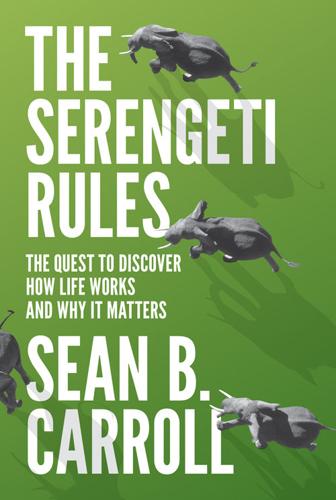
The Serengeti Rules: The Quest to Discover How Life Works and Why It Matters
by
Sean B. Carroll
Published 16 Feb 2016
The Independent, August 3, 2014; “Division of Water Treatment.” City of Toledo website. http://toledo.oh.gov/services/public-utilities/water-treatment/. 156You’re glumping the pond: Seuss (1971). 156Spurred by the dire condition: “History of the Clean Water Act.” United States Environmental Protection Agency. http://www2.epa.gov/laws-regulations/history-clean-water-act. 156In 1972, the United States and Canada: Large Lakes and Rivers Forecasting Research Branch. “Detroit River-Western Lake Erie Basin Indicator Project. INDICATOR: Algal Blooms in Western Lake Erie.” United States Environmental Protection Agency. http://www.epa.gov/med/grosseile_site/indicators/algae-blooms.html. 156The recovery of Lake Erie: Egan, D. (2014) “Toxic Algae Cocktail Brews in Lake Erie.”
…
No more can they hum, for their gills are all gummed. So I am sending them off. Oh, their future is dreary. They’ll walk on their fins and get woefully weary In search of some water that isn’t so smeary. I hear things are just as bad up in Lake Erie. Spurred by the dire condition of Erie and other lakes, the US Congress passed the 1972 Clean Water Act that authorized the Environmental Protection Agency to regulate the discharge of pollutants into waterways and to set the acceptable limits for water quality for humans and aquatic life. In 1972, the United States and Canada also signed the Great Lakes Water Agreement, which promoted a coordinated effort to reduce the loads of chemicals that were being dumped and washed into the Great Lakes.
…
See rinderpest Caughley, Graeme, 166 cell growth, regulation of, 49 Centers for Disease Control, 206 Charcot, Jean-Baptiste, 51, 54 Chissano, Joaquim, 188 chitons, 119 cholesterol: discovery of link to heart disease, 75–77; feedback regulation and synthesis of, 49, 77–81; HDL and, 79, 81; LDL and, 79–81, 85–87 cholesterolemia, 77–78, 86 chromosomes: blood disorders and, 92–93; Down syndrome and, 92; E. coli, 65; human number 9, 98–100, 99f; human number 13, 100; human number 22 (Philadelphia chromosome), 93, 98–100, 99f; leukemia and, 92–95, 98–100, 99f; retinoblastoma and, 100–102; translocation of, 93 chronic myelogenous leukemia, 93–95, 94f, 98, 102–104 Ciba-Geigy pharmaceutical company, 102–103 cisco, 176 citrinin, 82 civil wars, 186–187, 187f, 208 Clean Water Act, 156 clinical trials, 7 CML (chronic myelogenous leukemia), 93–95, 94f, 98, 102–104 coalitions, power of, 209–210 coffee, shade-grown, 196–197 collectivization of agriculture, 138 Collett, Robert, 40–41 communities, food chains as currency of, 43–46 Community Education Center (Vila Gorongosa), 196 “Community Structure, Population Control, and Competition” (HSS), 116 compactin, 82–84, 85–86 competition, population size and, 143–144, 150 complexity, reducing, 10–11 constitutive enzyme production, 64 consumers, 115–116, 117f.
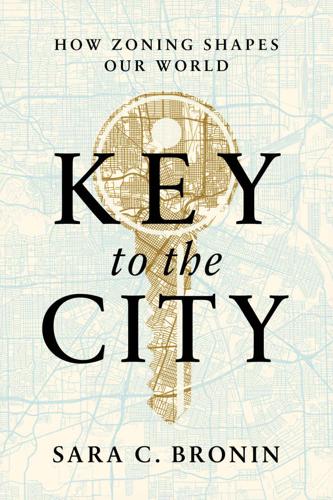
Key to the City: How Zoning Shapes Our World
by
Sara C. Bronin
Published 30 Sep 2024
The Guardian, April 16, 2017. 115 “craftsman industrial”: Hartford Zoning Regulations, fig. 3.3-E. 117 currently produce 50 percent: Doug Gurian-Sherman, CAFOs Uncovered: The Untold Costs of Confined Animal Feeding Operations (Cambridge: UCS Publications, 2008). 117 defines a CAFO to include: U.S. Environmental Protection Agency, Regulatory Definitions of Large CAFOs, Medium CAFOs, and Small CAFOs, 2015. The Clean Water Act includes CAFOs in its definition of “point source” pollution and regulates the largest CAFOs accordingly. See 33 U.S.C. § 1362(14). 117 distribute fecal matter: Sierra Club, “Why Are CAFOs Bad?” www.sierraclub.org/michigan/why-are-cafos-bad. 118 an array of health problems: Carrie Hribar and Mark Schultz, “Understanding Concentrated Animal Feeding Operations and Their Impact on Communities,” National Association of Local Boards of Health, 2010. 118 have adopted “right-to-farm” laws: National Agricultural Law Center, “Right-to-Farm Statutes,” https://nationalaglawcenter.org/state-compilations/right-to-farm/.
…
city councils, 20 of Austin, 187 of Baltimore, 37, 63 of Chicago, 42 of Galveston, 159 of Minneapolis, 81–82 of Pittsburgh, 86 of San Diego, 24–27, 183 civil rights free speech, 64, 66, 68, 163–64 LGBTQ rights, 198 protests, 3 See also race and racism Clark County, NV, 162. See also Las Vegas, NV Clean Water Act, 117 Cleveland, 44 Coe, David Allan, 119 colonial life in America, 17, 111 Colorado Aspen, 88 Denver, 133, 146–47, 204 Colt Armory, Hartford, 35–37, 123 Colt, Elizabeth and Sam, 35, 124 commercial use corner stores, 22, 23, 32, 166, 168–70 “craftsman industrial” uses, 35–36, 115 detachment from the reality that heavy industry would not be returning, 31 family restaurants, 109–10 five-and-dimes, 24 food deserts, 110, 114–15 home-based businesses, 22, 28, 170 malls, 24–27 small-scale artisanal production, 29–38, 100, 116, 120, 170 strip malls, 3, 15, 44, 153, 154, 165 tourism, 24–25, 62, 64, 65, 68, 88, 90–91, 157, 158, 161 See also adult use; agricultural use; nightlife communities, 1–11, 16–19, 25–27, 37, 38, 84–85 architectural essence of, 157, 160–62, 165 car-centric, 92–93, 99, 107–8 community centers, 145, 150–51 community groups, 82 farming/rural, 51, 97, 116–20 gardens, 114–16 inclusive, 16–17, 77, 153–54 nightlife and nuisance, 52–54, 58, 65–68 planned, 17 power through zoning, 160–62, 165 space to assemble, 50–51 stagnating, homogenous, 41 support for reinvestment, 60–61 urban communities of color, 78–80, 172–73 See also city councils; governance; land use; zoning Community Wellbeing Index, 195 “complete streets” policies, 139–41, 147–48, 203 composting, 109, 112–16 comprehensive planning, 77, 81, 102, 182 concentrated animal feeding operations (CAFOs), 116–20, 200 condominiums, 16, 77, 131, 167, 196 Congress, 36, 82, 119–20.
…
Wax Records, Chicago, 42 Driskill Hotel, Austin, 55, 57 Dubay, Lelaneia, 37 Dutch elm disease, 201 East Atlantic Avenue, Delray Beach, FL, 152–57 East End neighborhood of Galveston, TX, 158–60, 161 Ebony magazine, 44 “ecosystem services,” 125–27, 129 ecosystems, natural, 123–35 El Principe Azul nightclub, Houston, 15, 19 emergency zoning measures, 27–28 enforcement, 30, 58–59, 67–68, 156, 181 England, 17, 158 environmental issues algal blooms, 117 Clean Water Act, 117 conservation incentives, 110–11 conservation land, 20 conservation overlay districts, 49–50 “conservation”-type zoning protections, 186 “ecosystem services,” 125–27, 129 environmental impact statements, 119 fossil fuels, 21, 93 greenhouse gas emissions, 93, 96, 164 heat islands, 9–10, 96, 125, 131, 134, 144 manure, 117–19 pollution, 4, 78, 96, 117, 128, 140, 141, 169, 200 See also water use and management environmental justice movement, 78 Environmental Protection Agency (EPA), 117, 141 Erie Canal, 102 “Euclidean” zoning, 20, 30–31, 181 European cities, 39, 68 “Everybody Loves a Parade” mural, Burlington, 137 exclusionary zoning, 16, 20, 35, 77–78, 79, 84–87, 106, 168 family restaurants, 109–10 Farm Aid concert, 109–11, 119–20 farmland, 126–27 bans against agricultural use, 111, 114–15, 189 family farms, 109, 117, 119 “right-to-farm” laws, 118, 120 See also agricultural use Fashion Valley mall, San Diego, 24–25 fast-food restaurants, 2, 3, 9, 110 Federal Aid Highway Act of 1956, 92 federal government.

The Singularity Is Nearer: When We Merge with AI
by
Ray Kurzweil
Published 25 Jun 2024
BACK TO NOTE REFERENCE 247 For more on Dean Kamen’s Slingshot technology, see “Slingshot Water Purifier,” Atlas Initiative Group, YouTube video, February 11, 2012, https://www.youtube.com/watch?v=Uk_T9MiZKRs; Tom Foster, “Pure Genius: How Dean Kamen’s Invention Could Bring Clean Water to Millions,” Popular Science, June 16, 2014, https://www.popsci.com/article/science/pure-genius-how-dean-kamens-invention-could-bring-clean-water-millions. BACK TO NOTE REFERENCE 248 For a long but clear and entertaining video on how Stirling engines work and why they offer some important advantages, see “Stirling Engines—The Power of the Future?
…
Keep in mind that average LCOS figures are higher for a given year but follow similar trends—so the best LCOS in one year may be the average LCOS several years later. Total US Energy Storage[240] Annual US electricity from utility-scale energy storage (excluding hydro), GWh Source: US Energy Information Administration We Are Approaching Clean Water Access for Everyone A key challenge of the twenty-first century will be making certain that earth’s growing population has a reliable supply of clean, fresh water. In 1990, about 24 percent of the world’s people did not have regular access to relatively safe sources of drinking water.[241] Thanks to development efforts and advancing technology, the figure is now down to somewhere around 1 in 10.[242] That is still a large problem, however.
…
This opposition will ultimately fail, however, because the demand for therapies that can overcome the pain, disease, and short life spans inherent in our version 1.0 bodies will ultimately prove irresistible. When people are presented with the prospect of radical life extension, two objections are quickly raised. The first is the probability of running out of material resources to support an expanding biological population. We frequently hear that we are running out of energy, clean water, housing, land, and the other resources we need to support a growing population, and that this problem will only be exacerbated when the death rate starts to plummet. But as I articulated in chapter 4, as we begin to optimize our use of the earth’s resources, we’ll find they are thousands of times greater than we require.
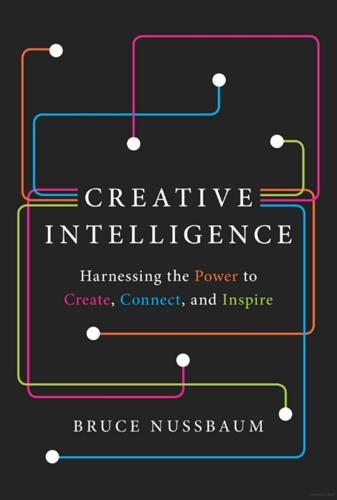
Creative Intelligence: Harnessing the Power to Create, Connect, and Inspire
by
Bruce Nussbaum
Published 5 Mar 2013
The tank is filled with contaminated local well water and cleaned with chlorine. The shopkeepers then sell the clean water for four cents per ten liters—a day’s worth of water. If you wanted home delivery, as many did, it would cost you five cents. Idiom then designed a local transportation system to deliver clean water to families outside the village and designed a new ten-liter plastic jug and a bicycle “saddle” that could hold six liter-size water containers. For a family living within three kilometers, clean water can be delivered for eight cents a day. In the first six months of operation, in 2012, village medical expenses for diarrhea and other waterborne diseases dropped dramatically.
…
Members of the higher castes control access to water where it’s available; in one instance, according to Polak, when someone from the “Untouchable” caste touched a faucet in a village, members of the higher caste insisted that the tank be drained, “purified,” and refilled. Where water is scarce, higher caste farmers call upon political connections to build dams that funnel clean water to their villages. Polak’s ability to see the hole in the conventional wisdom led to a different kind of solution. The system was rigged and irrigation was expensive, yes, but purification was cheap. He set up a private company, Spring Health, and with the help of Indian design consultancy Idiom designed a business plan: Spring Health pays for a $100 concrete water tank to be set up next to one of the two local kiosks called “kirana shops” that exist in every village.
…
With millions of kirana shops in India, the potential to replicate this model throughout the country is huge. The Acumen Fund, founded by Jacqueline Novogratz, is now investing in Spring Health to scale it. Polak hopes it can reach 5 million villagers in three years and 100 million in ten. Many, if not most, of the beneficiaries will be Untouchables handling their own clean water, some for the first time in their lives. Polak thinks Spring Health could be the first billion-dollar business specifically designed for the demographic C. K. Prahalad dubbed the “bottom of the pyramid.” None of this would have been possible without Polak’s deep domain expertise developed over decades of work in the field.
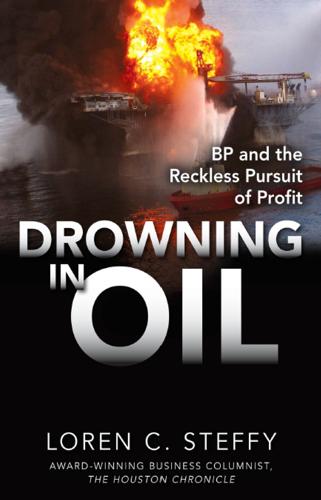
Drowning in Oil: BP & the Reckless Pursuit of Profit
by
Loren C. Steffy
Published 5 Nov 2010
A BP worker on the line called West in Seattle and told him, “There’s oil everywhere.” Had tranisit line breakage happened in the summer, when the ground was thawed, it could have been a major environmental disaster. In March, when the tundra was still frozen, the oil was easier to contain. Because it had soiled a lake, West intended to prosecute BP under the Clean Water Act, which assesses fines based on the amount of oil spilled. Meanwhile, the U.S. Department of Transportation, which regulates pipelines, ordered BP to begin using smart pigs to inspect all the transit lines. R T h e P r i c e o f F a i l u r e 107 When it did finally send pigs down the lines, the results were stunning: 16 miles of pipe had corroded to the point where leaks were a serious threat.
…
R BP’s three-pronged plea agreement had come together months earlier, in late 2007, as part of a sweeping pact with the Justice Department to settle all of the company’s outstanding criminal 141 1 42 D R O W N I N G I N O I L investigations. In addition to the Texas City case, a BP subsidiary in Alaska pleaded guilty to misdemeanor violations of the Clean Water Act related to the pipeline leaks, admitting that its corrosion monitoring and oversight had been inadequate. The company also agreed to pay a $12 million fine, accept three years’ probation, and pay $4 million in restitution in the form of funding for environmental research. In the trading case, BP America admitted that it had manipulated propane prices in 2004, had attempted to do so in 2003, and had failed to properly oversee its trading operation.
…
The political backlash from the spill posed two threats to the company’s future: the cost of its liability from the accident and the prospect of losing access to its lucrative oilfields in the Gulf. It still had dozens of potentially profitable deepwater prospects to explore, and it couldn’t afford to allow the Obama administration to deny it new drilling permits or ban it from U.S. waters. It also faced the potential for huge fines under the Clean Water Act, which regulates water pollution. The amount of the fine is determined by, among other things, the amount of oil that leaks. If the well was leaking 60,000 barrels a day and BP was found to be grossly negligent in its oversight of the spill, it could face fines of as much as $4,300 for each barrel—roughly $140 million for each day that the leak persisted.

The Rise and Fall of American Growth: The U.S. Standard of Living Since the Civil War (The Princeton Economic History of the Western World)
by
Robert J. Gordon
Published 12 Jan 2016
But others did not—the transition from tenements to suburban single-family homes largely resulted from the positive income elasticity of housing square feet, as well as from the development of credit institutions that allowed working-class families to buy their own homes. Higher incomes also spilled over to affect other types of purchases that did not necessarily require innovations, including public expenditures on clean water and education. This distinction between innovation-driven and income-driven progress should be qualified: The demand for residential space required transportation innovations to make suburbs possible, while clean water depended on filtration and chlorination technology. The coexistence of industries experiencing rapid productivity growth (e.g., manufacturing) and those with little or no productivity growth (e.g., house-building or education) is summarized by the paradigm of “Baumol’s disease,” in which the relative price of the innovation-intensive industries, e.g., the production of computers, declines over time while the relative price of the noninnovative industries, e.g., the playing of a string quartet, increases over time.
…
It was far different before indoor plumbing, when a bath was taken in a large metal container after a tedious process of carrying water into the home and heating it.33 The primary goal of the public health movement of the late nineteenth century was to create universal clean water supplies and sewage systems. In fact, clean water technologies have been labeled as “likely the most important public health intervention of the twentieth century.”34 Empirical research based on a comparison of cities in 1890 and 1900 shows that the extent of construction of waterworks, measured by miles of waterworks per person and per acre, have a significant negative correlation not just with infant mortality, but also with adult mortality.
…
Home filters “had been available since the mid-1850s but did not become common items in the home until the 1870s.”37 These authors estimate that clean water filtration and chlorination systems explain half of the overall reduction in mortality between 1900 and 1936, as well as 75 percent of the decline in infant mortality and 67 percent of the decline in child mortality. PASTEUR’S GERM THEORY AND THE TRANSITION FROM ADULTERATION TO REGULATION Even the Cutler–Miller results leave room for a complementary set of additional explanations of the reduction in mortality before 1940 beyond the rapid diffusion of urban sanitation infrastructure. There were other goals of the public health movement besides clean water and sewers, including “general street cleaning, improvements in slum housing, inspections of food and milk, use of quarantine and disinfection practices, and the distribution of diphtheria antitoxin.”38 A set of scientific discoveries together have been called the “Pasteur Revolution,” in which during 1880–1900 “pathogenic organisms were discovered at the average rate of one a year.”39 Experiments in the latter decades of the nineteenth century identified the bacterial causes of numerous diseases, a scientific revolution that occurred with amazing speed.40 Although much of the initial research had been carried out in Germany, by 1900, the United States became a leader in the implementation of preventive measures against germ disease.
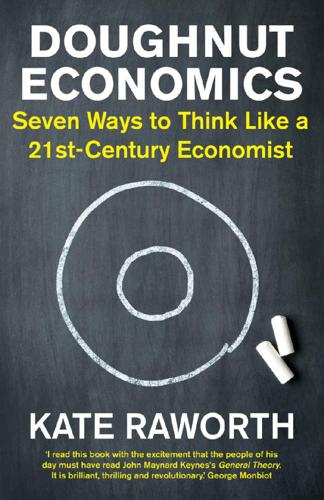
Doughnut Economics: Seven Ways to Think Like a 21st-Century Economist
by
Kate Raworth
Published 22 Mar 2017
But between these two sets of boundaries lies a sweet spot – shaped unmistakably like a doughnut – that is both an ecologically safe and socially just space for humanity. The twenty-first-century task is an unprecedented one: to bring all of humanity into that safe and just space. The Doughnut’s inner ring – its social foundation – sets out the basics of life on which no one should be left falling short. These twelve basics include: sufficient food; clean water and decent sanitation; access to energy and clean cooking facilities; access to education and to healthcare; decent housing; a minimum income and decent work; and access to networks of information and to networks of social support. Furthermore, it calls for achieving these with gender equality, social equity, political voice, and peace and justice.
…
They are all included in the United Nation’s Sustainable Development Goals – agreed by 193 member countries in 2015 – and the vast majority of these goals are to be achieved by 2030.23 Since the mid-twentieth century, global economic development has already helped many millions of people worldwide escape deprivation. They have become the first generations in their families to lead long, healthy and educated lives, with enough food to eat, clean water to drink, electricity in their homes, and money in their pockets – and, for many, this transformation has been accompanied by greater equality between women and men, and greater political voice. But global economic development has also fuelled a dramatic increase in humanity’s use of Earth’s resources, at first driven by the resource-intensive lifestyles of today’s high-income countries, and more recently redoubled by the rapid growth of the global middle class.
…
If universal access to markets is to become a twenty-first-century norm, along with universal access to public services, then so too should universal access to the global commons – particularly to Earth’s life-giving systems and to the global knowledge commons. Given what we now understand about planetary boundaries, the integrity of the living world is clearly and profoundly in the common interest of all: clean air and clean water, a stable climate, and thriving biodiversity are among the most important ‘common pool’ resources for all of humanity. ‘The great task of the twenty-first century,’ writes the ecological thinker Peter Barnes, ‘is to build a new and vital commons sector that can resist enclosure and externalization by the market, protect the planet, and share the fruits of our common inheritances more equitably than is now the case.’96 One way of achieving this, he proposes, is to create an array of Commons Trusts, each one endowed with property rights enabling it to protect and steward a particular realm of Earth’s commons – be it a local watershed or the global atmosphere – to the benefit of all citizens and future generations.
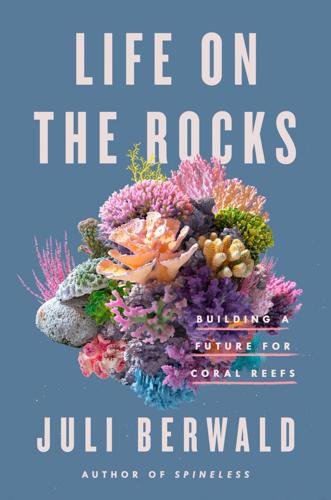
Life on the Rocks: Building a Future for Coral Reefs
by
Juli Berwald
Published 4 Apr 2022
In the late 1950s, a surge in the demand for electricity called for an expansion of the power supply in Hawai`i. The Hawaiian Electric Company built a new oil-powered facility on the western side of Oahu, about eighteen miles from Honolulu. Like many power plants, it was situated on the shoreline so that it could use seawater to cool its turbines. When it passed in the 1970s, the Clean Water Act required that the electric company develop a monitoring program to document how the discharged water, which could be as much as 6°C warmer than the surrounding seawater, affected the coral reefs. Two young researchers at the Hawai`i Institute of Marine Biology took the monitoring job. Paul Jokiel had just moved to Hawai`i from Illinois on a teaching fellowship and was hoping to study coral.
…
And like us, microbiomes shift when corals are stressed. Populations of Vibrio bacteria (relatives of the bacterium that causes cholera in humans) increase when a coral bleaches but return to normal levels after a coral recovers. One species of coral shifted its microbiome when transplanted from clean water to more polluted surroundings. It then shifted back when returned to the healthy environment, recovering its original bacterial entourage. Corals also shift their microbial communities in the summer and the winter, something that’s been observed in humans too: bacteria that cause bad breath and flatulence peak in January, those that cause foot odor in February, and those that cause underarm odor in July.
…
When Hardin wrote about the Tragedy of the Commons, power plants were spewing sulfates and nitrates into the air, causing acid rain. Cancer-causing chemicals like DDT were being dumped into rivers and soils. As a nation, we solved these tragedies of our commons through a raft of environmental measures. Passed in the early 1970s, the Clean Air and Clean Water Acts went a long way toward maintaining the commons that are our shared air and water, a legacy we still enjoy today. For too long, we have failed to recognize CO2 in this same way, creating a legacy that will haunt our children. The future of the coral reefs requires reckoning with the Tragedy of the Commons.
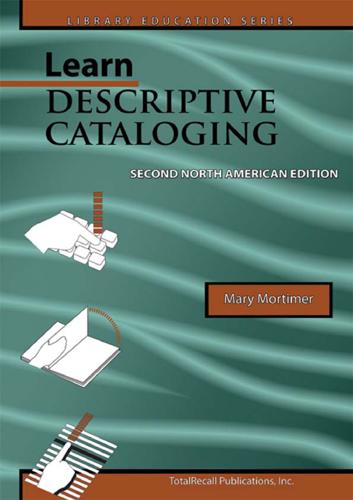
Learn Descriptive Cataloging Second North American Edition
by
Mary Mortimer
Published 1 Jan 1999
Guadalajara (Mexico) Guadalajara (Spain) New York (N.Y.) New York (State) Chapter 14 HEADINGS FOR CORPORATE BODIES 161 E XERCISE 14.1 Write these names in the correct AACR2 form. After you have decided, check them in LCA. a. ICI Limited b. Music Educators National Conference c. Duke University of Durham, North Carolina d. Missouri Clean Water Commission e. The Lao People’s Democratic Republic f. United Nations International Children’s Emergency Fund (UNICEF) g. Native Plant Society of Oregon h. The Reference Book Division of the National Underwriter Company i. The New York Times newspaper j. The Australian newspaper Subordinate Bodies (24.12) If the name of a corporate body is distinctive, it is entered directly under its own name.
…
a subordinate body entered indirectly under the name of a government Chapter 14 HEADINGS FOR CORPORATE BODIES MARC 167 Corporate names are coded in the same way as personal names, by referring to the MARC codes at the back of the book (or the MARC manual if you have access to it). First you need to know whether the name is a main or an added entry, and then use the tag, indicators and subfield codes you need. E XERCISE 14.4 Here are some names from Exercises 14.1 and 14.2. Code them as main entries. a Native Plant Society of Oregon 110 b. Missouri. Clean Water Commission 110 c. Imperial Chemical Industries. Organics Division 110 d. United States. Interstate Commerce Commission. Section of Energy and Environment 110 e. National Computer Security Center (United States) 110 E XERCISE 14.5 Here are more names from Exercises 14.1 and 14.2. Code them as added entries. a.
…
Ayrshire (Scotland) l. East Pakistan (Pakistan) see also later heading Bangladesh Bangladesh see also former heading East Pakistan (Pakistan) E XERCISE 14.1 a. b. c. d. e. f. g. h. i. 253 Imperial Chemical Industries Ltd. Music Educators National Conference (U.S.) Duke University Missouri. Clean Water Commission Laos UNICEF Native Plant Society of Oregon National Underwriter Company. Reference Book Division New York Times Company 254 LEARN DESCRIPTIVE CATALOGING j. Australian (Newspaper) E XERCISE 14.2 a. b. c. d. e. f. g. h. i. j. United States. Dept. of Housing and Urban Development American Stock Exchange.

398 DIY Tips, Tricks & Techniques: Practical Advice for New Home Improvement Enthusiasts
by
Ian Anderson
Published 31 Mar 2019
Generally, do this… Scrape away any old flaky layers of old paint. Clean paintwork with a ‘house cleaner’ detergent, with a mould killer element if there are green of black spores on the paintwork. A bucket of cleaner and another of clean water and a couple of sponges work well indoors. Wipe over with one sponge and detergent and ‘rinse’ with the other sponge and clean water. Outdoors, careful use of a pressure washer to pump cleaner onto the paintwork works well (don’t go too close). Scrub with a small brush on a long handle and afterwards rinse everything away being careful with the angle you use (avoid getting water behind anything), mimic how the rain would hit the surface to be safe.
…
, rotate the brush between your palms as fast as you can (like a boy scout starting a fire…). Done properly this flings out any water in the brush. Double check with the old ‘brush above the shoulder and a couple of sharp flings down’ technique (as if you’re throwing a knife into the ground). Best do this outside though… Easily clean water-based paint from your brush at the end of the day using a wire brush (just like combing your hair) and lots of warm water. A pinch of soap doesn’t hurt either Lastly and once again (because it’s that good!), buy the best brushes you can find and look after them. It’s a nightmare to get a good finish with cheap (throwaway) brushes and they’ll shed bristles too, driving you crazy. 301.
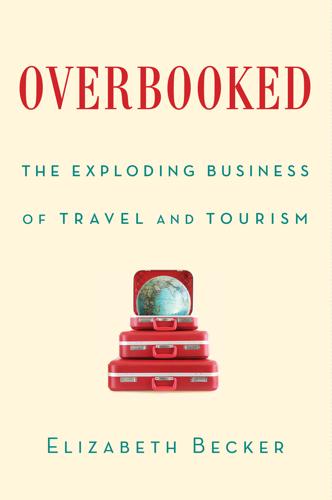
Overbooked: The Exploding Business of Travel and Tourism
by
Elizabeth Becker
Published 16 Apr 2013
Multiply this by those 400 ships cruising year-round and you have a sense of the magnitude of the problem. But there are no accurate studies of how well that waste is disposed of because the ships are not required to follow any state or national laws once in international waters. Cruise companies won an exemption from the Clean Water Act’s requirement for waste disposal discharge permits that apply to the resorts and hotels. Waste disposal discharge permits are given out by the Environmental Protection Agency, which decides what waste they can discharge and the sewage treatment required to limit and reduce the damage of pollution to water.
…
Their cruise ships, which sailed through some of Alaska’s most sensitive harbors and coastal waterways, including the Inside Passage, were caught illegally dumping bilge water containing waste oil and hazardous chemicals. The bilge water routinely dumped by the cruise ships was sufficiently toxic that the U.S. Clean Water Act forbids its discharge within 200 miles of the coast because it endangers fish and wildlife and the habitat they depend on. Royal Caribbean was convicted in 1999 of a “fleet-wide conspiracy” to rig their ship’s piping system to avoid using pollution treatment equipment and then lying to the Coast Guard about it.
…
Sweeting of the Royal Caribbean said the company’s ships are being outfitted with advanced waste treatment systems that transform human waste into watery discharge that is “as good as or better than municipalities.” At the same time, the industry has forcefully opposed the Clean Cruise Ship Act, sponsored by Senator Richard Durbin, Democrat of Illinois, which would require sewage and gray water discharges to be controlled by the Clean Water Act. The legislation would also require cruise ships to use advanced treatment systems and to sail beyond the current 12-mile limit before discharging treated sewage. The U.S. Coast Guard is charged with enforcing existing laws and standards in American waters, but it has done a lackluster job, largely because inspecting sewage from cruise ships is close to the bottom of its to-do list.
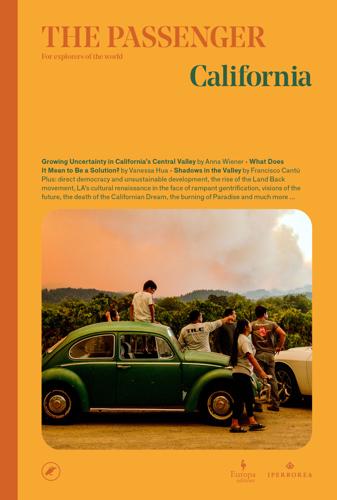
The Passenger
by
AA.VV.
Published 23 May 2022
“It’s like something out of a Jonathan Franzen novel,” I said. My friend misheard. “Really?” he replied. “I’d love to read that.” * California went through an extreme drought in 2021, after a decade marked by record-breaking dry spells. Rivers and reservoirs were low and strained. Aquifers drained; wells dried up. Some households didn’t have access to clean water, whereas others were rationed for months. This led to a great many uses of the word “emergency”: a drought state of emergency was declared for 42 per cent of the state’s residents; an emergency curtailment order prohibited further depletion of the Sacramento-San Joaquin Delta watershed; in an emergency procedure, nearly seventeen million juvenile Chinook salmon, spawned in Central Valley hatcheries, were displaced by truck to deeper, cooler bodies of water.
…
Other solutions rely on higher-tech farming methods, but after the trauma of 2020, to many producers it seems to make more sense to lower their expectations in light of a changing climate and a compromised ecosystem. Peppas and her husband Tom, a fly-fishing guide, bought a trailer and parked it at a house in Chico that belonged to friends. They always had planned on spending the rest of their lives in Paradise, but it was going to take a year at least for the ash and other contaminants to be removed and clean water to be restored and the lots cleared for rebuilding. Most of the evacuees she encountered in Chico were sure of one thing: they weren’t coming back. There was too much uncertainty, they told her, and that didn’t count the next wildfire. The local chamber of commerce, building trades, churches, and civic clubs were trying mightily to persuade them otherwise.
…
RINGO CHIU is a Pulitzer Prize-winning photojournalist whose work has been published around the world and received numerous awards, including the National Press Photographers Association’s Best of Photojournalism, Los Angeles Press Club’s Southern California Photojournalist of the Year on several occasions and the Best Hong Kong News Photography three years running. Born in China and raised in Hong Kong, he lives in Los Angeles. Food, the essential to living along with unpolluted air to breathe and clean water to drink, has always been the gathering place for community. I spent most every Sunday of my childhood and early teen years at my Panamanian grandmother’s house in the Historic West Adams District, which was one of the many Los Angeles areas to experience white flight until becoming predominantly Black by the time my mother arrived from Panama in the 1950s.

Paris Revealed
by
Stephen Clarke
Published 12 Aug 2012
After the Prussian siege, when water supplies were even less reliable than usual, the price of drinking water went up alarmingly, so that many people began quenching their thirst with wine. And unlike the toffs, they didn’t have access to high-quality Champagne—they were quaffing vinegary gut-rot. It was no surprise that when the first Fontaine Wallace was connected up in August 1872, there was a small riot as people literally fought to get at the clean water. Today, there are over 900 public drinking fountains in Paris, including three rather special ones that provide genuine French mineral water for free. The fountains in the place Paul Verlaine in the 13th arrondissement, the square Lamartine in the 16th and the square de la Madone in the 18th tap into a spring 500 metres below the city, and you can often see people filling up bottles to take home.
…
The fountains in the place Paul Verlaine in the 13th arrondissement, the square Lamartine in the 16th and the square de la Madone in the 18th tap into a spring 500 metres below the city, and you can often see people filling up bottles to take home. The water is very soft (unlike Parisian drinking water), and is therefore said to give a purer taste to tea and coffee. These fountains also take the Parisian need for free drinking water to its logical French conclusion. They can’t be content with plain clean water—they want eau minérale. La vie est une plage The Parisian love affair with water comes into full fruition in summer, during Paris Plage (Paris Beach), the festival started by Mayor Bertrand Delanoë in 2002. For four weeks, from around 20 July to 20 August, a sizeable chunk of the city’s population can be seen streaming down to the river banks.
…
Although that might only be to avoid having them float in through the windows of the Louvre. Perhaps the most dramatic measure of all in Plan Neptune is that Paris’s transport company, the RATP, plans to deliberately flood métro lines running alongside the river, presumably on the grounds that it’s better to drain off clean water than dirty. Though of course the water would no longer be clean when the flood receded—someone would have to collect up all the dead rats, mice and accumulated rubbish. It is to be hoped that Plan Neptune includes a few pairs of rubber gloves. Throughout 2010, the city expressed this obsession with flooding in a series of exhibitions about the events of 1910, and at each one Parisians could be seen studying maps of the flooded area to see if their current address was in there.
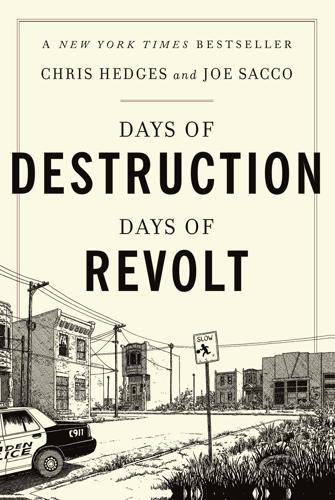
Days of Destruction, Days of Revolt
by
Chris Hedges
and
Joe Sacco
Published 7 Apr 2014
Rob Goodwin, “Report from Citizens’ Inspection of Coal River Mountain,” Coal River Mountain Watch, http://www.crmw.net/crmw/content/report-citizens-inspection-coal-river-mountain (accessed 27 Dec. 2011). 20. “Electric Power Monthly,” http://www.eia.gov/electricity/monthly (accessed 10 Sept. 2013). 21. “A One-Two Punch in the Fight for Clean Water,” Appalachian Voices, http://appvoices.org/2012/08/23/a-one-two-punch-in-the-fight-for-clean-water/ (accessed 10 Sept. 2013).\ 22. Naomi Spencer and Rosa Lexington, “The Social Crisis in Appalachia Part 3: Environmental Disaster and Private Profit,” World Socialist Web Site, July 27, 2010, http://www.wsws.org/en/artcles/2010/07/app3-j27.html (accessed 27 Aug. 2013). 23.
…
Massey, the third-largest coal company in the country, has, over the past decade, leveled an area the size of Delaware—1.4 million acres—and left behind a poisoned and dead landscape. Coal companies like Massey rack up appalling safety and environmental violations. Yet for such companies, it is less expensive to pay the fines than comply with the strictures of the Clean Water Act or mine safety standards. The EPA office in West Virginia rarely enforces the fines, and when Massey was fined for violations over a six-year period by the federal EPA office, the company paid $20 million,54 less than one percent of what was required under the law. The Sylvester lawsuit brought the town $100,000.
…
“Elk Run Completes Coal Stockpile Dome,” Coal Age 170, no. 9 (2002), 4. 52. Shirley Stewart Burns, Bringing Down the Mountains: The Impact of Mountaintop Removal on Southern West Virginia Communities (Morgantown, WV: West Virginia University Press, 2007), 111. 53. Shirley Stewart Burns, et al., Coal Country, 237–238. 54. “Massey Energy Company, Inc. Clean Water Act Settlement,” U.S. Environmental Protection Agency, http://www.epa.gov/compliance/resources/cases/civil/cwa/massey.html (accessed 31 Dec. 2011). 55. “25 Miners Dead in WV Coal Mine Explosion, Massey Energy Mine Cited for Hundreds of Safety Violations,” Democracy Now!, April 6, 2010, http://www.democracynow.org/2010/4/6/25_miners_dead_in_wv_coal. 56.
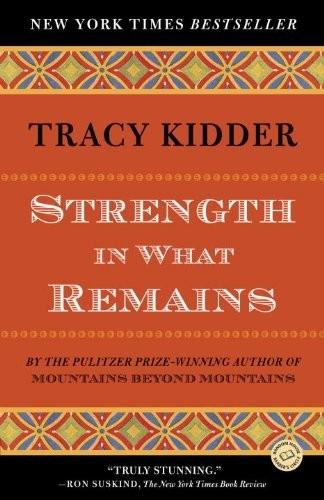
Strength in What Remains
by
Tracy Kidder
Published 29 Feb 2000
“There are many ways in which poverty finds its way into the bodies of the destitute.” This was a favorite saying of Bududira’s. He traveled widely through his territory, visiting many hills, and he would talk to Deo and the other boy about what he saw, especially about the almost universal need for clean water and medicine. He told them he was distressed at the great numbers of impoverished children who joined the army at twelve or thirteen, and told them about his campaign to build alternatives in the form of technical schools. At the end of eleventh grade—high school ended with thirteenth—Deo started his own project, an attempt to build a clinic in Sangaza that would serve the surrounding hills.
…
You could look down to the east and see Tanganyika’s waters, like a cerulean sky. To the west, your eyes climbed tiers of mountains, often shrouded in mist, though not today. Unlike Switzerland, of course, the place lacked just about everything necessary and useful for health: sanitation, medicine, mosquito nets. Most of the people here had no access to clean water. No one had electricity. “Here you are in the land of Joe Conrad,” said Deo. “This is the heart of darkness right here.” On the other hand, there was an elementary school, just up ahead. While working at PIH, Deo had managed to save enough of his salary to send about one thousand dollars for that school’s reconstruction—money went a long way here.
…
There were greetings—chants of “Amahoro”—and speeches, which the villagers cheered, and more speeches, and during the course of all this, Deo exclaimed to me, “I am so happ-ee!” He said, “I really get so excited when I see people so excited.” Religious people, I’m told, have their meanest thoughts in church. I found myself thinking that tomorrow morning Kayanza’s residents would wake up and still have no doctor or nurses or clean water nearby, just this misplaced pile of rocks. I felt for a perverse moment like reminding Deo of all this. But it was good to see him happy, as always. And after all, he knew far better than I the obstacles he faced. As we drove away, the figures of the villagers receding in the SUV’s back window, Deo said to us, his American friends, “Thank you so much.”
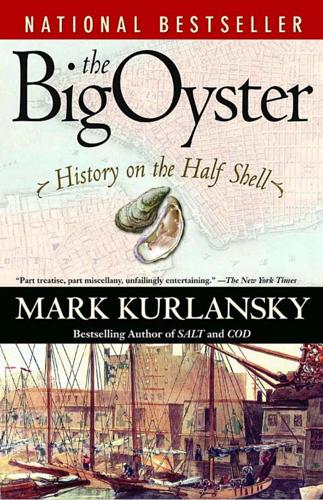
The Big Oyster
by
Mark Kurlansky
Published 20 Dec 2006
On the Fourth of July, former mayor Philip Hone wrote: T h e C ra s s o s t re a s n e s s o f Ne w Yo rk e r s • 145 It is a lovely day, but very different from all the previous anniversaries of independence. The alarm about the cholera has prevented all the usual jollification under the public authority. There are no booths in Broadway, the parade which was ordered here has been countermanded, no corporation dinner and no ringing of bells. Cholera victims were literally begging for clean water. By October, five hundred New Yorkers had died. The city responded with a ten-year project, damming the Croton River, a tributary of the Hudson, creating a reservoir, and building an aqueduct. With the project’s completion in 1842, the city announced that water needs had been secured for the next one hundred years.
…
A company that pollutes shellfish beds and poisons fish populations is, according to this legal argument, impeding the long-recognized right of residents to fish their wild waters. In the 1970s, some forty acts of Congress were passed for the protection of the environment. Among the most crucial for the waters of New York was the 1972 Clean Water Act, which gave a deadline of 1985 for all bodies of water in the United States to be swimmable and fishable. In the 1980s, the city proposed to do what it had been doing ever since Dutch times, creating more Manhattan real estate by filling in the coastal waters. In this case, it was a highway called Westway that was to cut into the Hudson River bed.
…
But the Hudson is rich in fish, and for Enduring Shellfishness • 277 all its continuing faults, especially PCBs, it is now considered one of the healthier estuaries in the North Atlantic. Today, all of the Hudson River and almost all of the waters of New York Harbor are swimmable and most are fishable, as the Clean Water Act mandated, but the fish that are caught are not all edible. Health authorities do not recommend eating most New York Harbor fish, though some people do, with a great deal of the fish consumed by poor people who are probably eating poisoned food. Shad is an exception, because it spends its time in the Hudson so obsessed with sex that it does not eat.
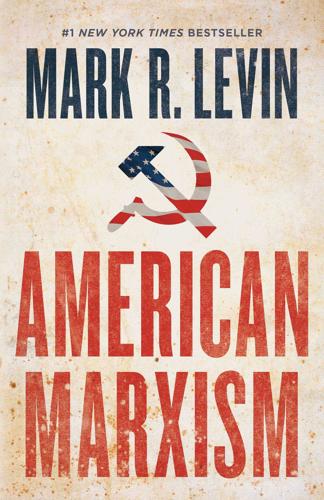
American Marxism
by
Mark R. Levin
Published 12 Jul 2021
These insights are important for building an understanding of the ways that intra-human inequality and oppressions function and how they intersect with human-nonhuman oppression.”38 I must confess, it is difficult to keep up with the number and kind of alleged and proclaimed maladies supposedly unleashed by the most diverse, beneficent, tolerant, successful, and free nation ever established by mankind. But it would certainly seem that this movement has attracted them all. So much for clean air, clean water, and polar bears. Skipping ahead, Pellow informs us that the third pillar “is the view that social inequalities—from racism to speciesism—are deeply embedded in society (rather than aberrations) and reinforced by state power, and that therefore the current social order stands as a fundamental obstacle to social and environmental justice.
…
It states, in part: Whereas climate change, pollution, and environmental destruction have exacerbated systemic racial, regional, social, environmental, and economic injustices (referred to in this preamble as “systemic injustices”) by disproportionately affecting indigenous communities, communities of color, migrant communities, deindustrialized communities, depopulated rural communities, the poor, low-income workers, women, the elderly, the unhoused, people with disabilities, and youth (referred to in this preamble as “frontline and vulnerable communities”); …Resolved, That it is the sense of the House of Representatives that— (1) it is the duty of the Federal Government to create a Green New Deal— (A) to achieve net-zero greenhouse gas emissions through a fair and just transition for all communities and workers; (B) to create millions of good, high-wage jobs and ensure prosperity and economic security for all people of the United States; (C) to invest in the infrastructure and industry of the United States to sustainably meet the challenges of the 21st century; (D) to secure for all people of the United States for generations to come— (i) clean air and water; (ii) climate and community resiliency; (iii) healthy food; (iv) access to nature; and (v) a sustainable environment; and (E) to promote justice and equity by stopping current, preventing future, and repairing historic oppression of indigenous communities, communities of color, migrant communities, deindustrialized communities, depopulated rural communities, the poor, low-income workers, women, the elderly, the unhoused, people with disabilities, and youth (referred to in this resolution as “frontline and vulnerable communities”); (2) the goals described in subparagraphs of paragraph (1) above (referred to in this resolution as the “Green New Deal goals”) should be accomplished through a 10-year national mobilization (referred to in this resolution as the “Green New Deal mobilization”) that will require the following goals and projects— (A) building resiliency against climate change-related disasters, such as extreme weather, including by leveraging funding and providing investments for community-defined projects and strategies; (B) repairing and upgrading the infrastructure in the United States, including— (i) by eliminating pollution and greenhouse gas emissions as much as technologically feasible; (ii) by guaranteeing universal access to clean water; (iii) by reducing the risks posed by flooding and other climate impacts; and (iv) by ensuring that any infrastructure bill considered by Congress addresses climate change; (C) meeting 100 percent of the power demand in the United States through clean, renewable, and zero-emission energy sources, including— (i) by dramatically expanding and upgrading existing renewable power sources; and (ii) by deploying new capacity; (D) building or upgrading to energy-efficient, distributed, and “smart” power grids, and working to ensure affordable access to electricity; (E) upgrading all existing buildings in the United States and building new buildings to achieve maximal energy efficiency, water efficiency, safety, affordability, comfort, and durability, including through electrification; (F) spurring massive growth in clean manufacturing in the United States and removing pollution and greenhouse gas emissions from manufacturing and industry as much as is technologically feasible, including by expanding renewable energy manufacturing and investing in existing manufacturing and industry; (G) working collaboratively with farmers and ranchers in the United States to eliminate pollution and greenhouse gas emissions from the agricultural sector as much as is technologically feasible, including— (i) by supporting family farming; (ii) by investing in sustainable farming and land use practices that increase soil health; and (iii) by building a more sustainable food system that ensures universal access to healthy food; (H) overhauling transportation systems in the United States to eliminate pollution and greenhouse gas emissions from the transportation sector as much as is technologically feasible, including through investment in— (i) zero-emission vehicle infrastructure and manufacturing; (ii) clean, affordable, and accessible public transportation; and (iii) high-speed rail; (I) mitigating and managing the long-term adverse health, economic, and other effects of pollution and climate change, including by providing funding for community-defined projects and strategies; (J) removing greenhouse gases from the atmosphere and reducing pollution, including by restoring natural ecosystems through proven low-tech solutions that increase soil carbon storage, such as preservation and afforestation; (K) restoring and protecting threatened, endangered, and fragile ecosystems through locally appropriate and science-based projects that enhance biodiversity and support climate resiliency; (L) cleaning up existing hazardous waste and abandoned sites to promote economic development and sustainability; (M) identifying other emission and pollution sources and creating solutions to eliminate them; and (N) promoting the international exchange of technology, expertise, products, funding, and services, with the aim of making the United States the international leader on climate action, and to help other countries achieve a Green New Deal; (3) a Green New Deal must be developed through transparent and inclusive consultation, collaboration, and partnership with frontline and vulnerable communities, labor unions, worker cooperatives, civil society groups, academia, and businesses; and (4) to achieve the Green New Deal goals and mobilization, a Green New Deal will require the following goals and projects— (A) providing and leveraging, in a way that ensures that the public receives appropriate ownership stakes and returns on investment, adequate capital (including through community grants, public banks, and other public financing), technical expertise, supporting policies, and other forms of assistance to communities, organizations, Federal, State, and local government agencies, and businesses working on the Green New Deal mobilization; (B) ensuring that the Federal Government takes into account the complete environmental and social costs and impacts of emissions through— (i) existing laws; (ii) new policies and programs; and (iii) ensuring that frontline and vulnerable communities shall not be adversely affected; (C) providing resources, training, and high-quality education, including higher education, to all people of the United States, with a focus on frontline and vulnerable communities, so those communities may be full and equal participants in the Green New Deal mobilization; (D) making public investments in the research and development of new clean and renewable energy technologies and industries; (E) directing investments to spur economic development, deepen and diversify industry in local and regional economies, and build wealth and community ownership, while prioritizing high-quality job creation and economic, social, and environmental benefits in frontline and vulnerable communities that may otherwise struggle with the transition away from greenhouse gas intensive industries; (F) ensuring the use of democratic and participatory processes that are inclusive of and led by frontline and vulnerable communities and workers to plan, implement, and administer the Green New Deal mobilization at the local level; (G) ensuring that the Green New Deal mobilization creates high-quality union jobs that pay prevailing wages, hires local workers, offers training and advancement opportunities, and guarantees wage and benefit parity for workers affected by the transition; (H) guaranteeing a job with a family-sustaining wage, adequate family and medical leave, paid vacations, and retirement security to all people of the United States; (I) strengthening and protecting the right of all workers to organize, unionize, and collectively bargain free of coercion, intimidation, and harassment; (J) strengthening and enforcing labor, workplace health and safety, antidiscrimination, and wage and hour standards across all employers, industries, and sectors; (K) enacting and enforcing trade rules, procurement standards, and border adjustments with strong labor and environmental protections— (i) to stop the transfer of jobs and pollution overseas; and (ii) to grow domestic manufacturing in the United States; (L) ensuring that public lands, waters, and oceans are protected and that eminent domain is not abused; (M) obtaining the free, prior, and informed consent of indigenous people for all decisions that affect indigenous people and their traditional territories, honoring all treaties and agreements with indigenous people, and protecting and enforcing the sovereignty and land rights of indigenous people; (N) ensuring a commercial environment where every businessperson is free from unfair competition and domination by domestic or international monopolies; and (O) providing all people of the United States with— (i) high-quality health care; (ii) affordable, safe, and adequate housing; (iii) economic security; and (iv) access to clean water, clean air, healthy and affordable food, and nature.66 Milton Ezrati at Forbes rounded up some of the cost estimates for this proposal.
…
It states, in part: Whereas climate change, pollution, and environmental destruction have exacerbated systemic racial, regional, social, environmental, and economic injustices (referred to in this preamble as “systemic injustices”) by disproportionately affecting indigenous communities, communities of color, migrant communities, deindustrialized communities, depopulated rural communities, the poor, low-income workers, women, the elderly, the unhoused, people with disabilities, and youth (referred to in this preamble as “frontline and vulnerable communities”); …Resolved, That it is the sense of the House of Representatives that— (1) it is the duty of the Federal Government to create a Green New Deal— (A) to achieve net-zero greenhouse gas emissions through a fair and just transition for all communities and workers; (B) to create millions of good, high-wage jobs and ensure prosperity and economic security for all people of the United States; (C) to invest in the infrastructure and industry of the United States to sustainably meet the challenges of the 21st century; (D) to secure for all people of the United States for generations to come— (i) clean air and water; (ii) climate and community resiliency; (iii) healthy food; (iv) access to nature; and (v) a sustainable environment; and (E) to promote justice and equity by stopping current, preventing future, and repairing historic oppression of indigenous communities, communities of color, migrant communities, deindustrialized communities, depopulated rural communities, the poor, low-income workers, women, the elderly, the unhoused, people with disabilities, and youth (referred to in this resolution as “frontline and vulnerable communities”); (2) the goals described in subparagraphs of paragraph (1) above (referred to in this resolution as the “Green New Deal goals”) should be accomplished through a 10-year national mobilization (referred to in this resolution as the “Green New Deal mobilization”) that will require the following goals and projects— (A) building resiliency against climate change-related disasters, such as extreme weather, including by leveraging funding and providing investments for community-defined projects and strategies; (B) repairing and upgrading the infrastructure in the United States, including— (i) by eliminating pollution and greenhouse gas emissions as much as technologically feasible; (ii) by guaranteeing universal access to clean water; (iii) by reducing the risks posed by flooding and other climate impacts; and (iv) by ensuring that any infrastructure bill considered by Congress addresses climate change; (C) meeting 100 percent of the power demand in the United States through clean, renewable, and zero-emission energy sources, including— (i) by dramatically expanding and upgrading existing renewable power sources; and (ii) by deploying new capacity; (D) building or upgrading to energy-efficient, distributed, and “smart” power grids, and working to ensure affordable access to electricity; (E) upgrading all existing buildings in the United States and building new buildings to achieve maximal energy efficiency, water efficiency, safety, affordability, comfort, and durability, including through electrification; (F) spurring massive growth in clean manufacturing in the United States and removing pollution and greenhouse gas emissions from manufacturing and industry as much as is technologically feasible, including by expanding renewable energy manufacturing and investing in existing manufacturing and industry; (G) working collaboratively with farmers and ranchers in the United States to eliminate pollution and greenhouse gas emissions from the agricultural sector as much as is technologically feasible, including— (i) by supporting family farming; (ii) by investing in sustainable farming and land use practices that increase soil health; and (iii) by building a more sustainable food system that ensures universal access to healthy food; (H) overhauling transportation systems in the United States to eliminate pollution and greenhouse gas emissions from the transportation sector as much as is technologically feasible, including through investment in— (i) zero-emission vehicle infrastructure and manufacturing; (ii) clean, affordable, and accessible public transportation; and (iii) high-speed rail; (I) mitigating and managing the long-term adverse health, economic, and other effects of pollution and climate change, including by providing funding for community-defined projects and strategies; (J) removing greenhouse gases from the atmosphere and reducing pollution, including by restoring natural ecosystems through proven low-tech solutions that increase soil carbon storage, such as preservation and afforestation; (K) restoring and protecting threatened, endangered, and fragile ecosystems through locally appropriate and science-based projects that enhance biodiversity and support climate resiliency; (L) cleaning up existing hazardous waste and abandoned sites to promote economic development and sustainability; (M) identifying other emission and pollution sources and creating solutions to eliminate them; and (N) promoting the international exchange of technology, expertise, products, funding, and services, with the aim of making the United States the international leader on climate action, and to help other countries achieve a Green New Deal; (3) a Green New Deal must be developed through transparent and inclusive consultation, collaboration, and partnership with frontline and vulnerable communities, labor unions, worker cooperatives, civil society groups, academia, and businesses; and (4) to achieve the Green New Deal goals and mobilization, a Green New Deal will require the following goals and projects— (A) providing and leveraging, in a way that ensures that the public receives appropriate ownership stakes and returns on investment, adequate capital (including through community grants, public banks, and other public financing), technical expertise, supporting policies, and other forms of assistance to communities, organizations, Federal, State, and local government agencies, and businesses working on the Green New Deal mobilization; (B) ensuring that the Federal Government takes into account the complete environmental and social costs and impacts of emissions through— (i) existing laws; (ii) new policies and programs; and (iii) ensuring that frontline and vulnerable communities shall not be adversely affected; (C) providing resources, training, and high-quality education, including higher education, to all people of the United States, with a focus on frontline and vulnerable communities, so those communities may be full and equal participants in the Green New Deal mobilization; (D) making public investments in the research and development of new clean and renewable energy technologies and industries; (E) directing investments to spur economic development, deepen and diversify industry in local and regional economies, and build wealth and community ownership, while prioritizing high-quality job creation and economic, social, and environmental benefits in frontline and vulnerable communities that may otherwise struggle with the transition away from greenhouse gas intensive industries; (F) ensuring the use of democratic and participatory processes that are inclusive of and led by frontline and vulnerable communities and workers to plan, implement, and administer the Green New Deal mobilization at the local level; (G) ensuring that the Green New Deal mobilization creates high-quality union jobs that pay prevailing wages, hires local workers, offers training and advancement opportunities, and guarantees wage and benefit parity for workers affected by the transition; (H) guaranteeing a job with a family-sustaining wage, adequate family and medical leave, paid vacations, and retirement security to all people of the United States; (I) strengthening and protecting the right of all workers to organize, unionize, and collectively bargain free of coercion, intimidation, and harassment; (J) strengthening and enforcing labor, workplace health and safety, antidiscrimination, and wage and hour standards across all employers, industries, and sectors; (K) enacting and enforcing trade rules, procurement standards, and border adjustments with strong labor and environmental protections— (i) to stop the transfer of jobs and pollution overseas; and (ii) to grow domestic manufacturing in the United States; (L) ensuring that public lands, waters, and oceans are protected and that eminent domain is not abused; (M) obtaining the free, prior, and informed consent of indigenous people for all decisions that affect indigenous people and their traditional territories, honoring all treaties and agreements with indigenous people, and protecting and enforcing the sovereignty and land rights of indigenous people; (N) ensuring a commercial environment where every businessperson is free from unfair competition and domination by domestic or international monopolies; and (O) providing all people of the United States with— (i) high-quality health care; (ii) affordable, safe, and adequate housing; (iii) economic security; and (iv) access to clean water, clean air, healthy and affordable food, and nature.66 Milton Ezrati at Forbes rounded up some of the cost estimates for this proposal. Here are figures for just some of its goals: “The proposed expansion of renewables to provide 100% of the nation’s power needs would, according to respected physicist Christopher Clark, cost about $2 trillion or approximately $200 billion a year for ten years.
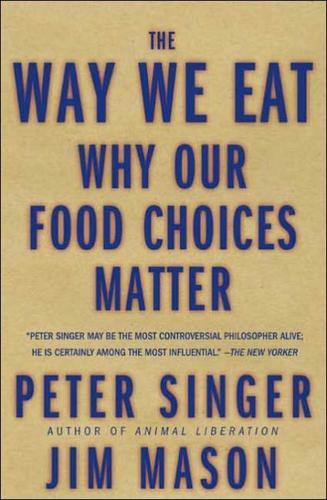
The Way We Eat: Why Our Food Choices Matter
by
Peter Singer
and
Jim Mason
Published 1 May 2006
The air and water pollution caused by factory farming was also in the news, sparked partly by the legal efforts of Robert F. Kennedy Jr. and organizations like the Natural Resources Defense Council, Waterkeeper Alliance, and the Sierra Club. Kennedy, acting for several farm and fishermen's groups, won a major victory against Smithfield Foods that suggested that almost all American factory farms were violating the Clean Water Act. (The Bush administration thereupon instructed the Environmental Protection Agency to weaken the rules and curtail its investigations of factory farms.)2 Naturally, when I came back to the States, Jim and I met again and talked about this new surge of interest in the issues we had raised in our earlier book.
…
Factory farming spread because it seemed to be cheaper than more traditional forms of farming. We have seen that it was cheaper to the consumer, but only because it was passing some of its costs on to others-for example, to people who lived downstream or downwind from the factory farms and could no longer enjoy clean water and air and to workers who were injured by unsafe conditions. Now we can see that this was only the small stuff. Factory farming is passing far bigger costs-and risks-on to all of us. If chicken were taxed to raise enough revenue to pay for the precautions that governments now have to take against avian influenza, again we might find that factory farm chicken isn't really so cheap after all.
…
The day was pleasant, and the sun had lost the sting it has at the height of summer, but once the cattle had moved into the new pasture, they soon found the shade cast by a row of cypresses, and most of them stood under the trees. Though the youngest calves were six months old, they were still keeping company with their mothers. The lives of these cattle were, it seemed, entirely comfortable. They had what cattle need: plenty of grass, clean water, shade, and their own social group. Patrick told us that he prefers to sell his cattle direct from the farm to the slaughterhouse, but there are times of the year when he doesn't have enough grass on his pasture to get them ready to market. Then he sells them to a feedlot for short-term fattening.
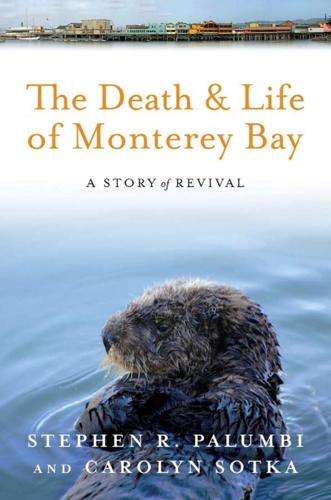
The Death and Life of Monterey Bay: A Story of Revival
by
Dr. Stephen R Palumbi Phd
and
Ms. Carolyn Sotka M. A.
Published 12 Nov 2010
When the Hopkins Marine Station first opened its new science labs on China Point in 1917, the next-door canneries dumped all their waste and guts (officially known as offal) in the nearby waters, and China Point floated with “globs of fat and oil,” making it extremely difficult to work among the rocks. A 1925 report to the Pacific Improvement Company, which owned the railroad in Monterey, lambasted the “foul condition of the water caused by the canneries discharge of sewage and waste.” Cannery operators exacerbated the problem when they cleaned their machines, flushing the offal-laden cleaning water into the bay. No one has ever accused fish processing of being a tidy, clean business, and the millions of pounds processed daily took a serious toll on the local environment. Few statistics of the pollution impact of the Monterey canneries exist, but Hopkins Marine Station professor Dr. Rolf Bolin complained that “the fumes from the scum floating on the waters of the inlets of the bay were so bad that they turned lead-based paints black.”
…
“Like pandas,” she said with a wistful look, “sea otters are enchanting creatures.” These enchanting creatures took up residence at the Hopkins Marine Refuge and began transforming Julia’s protected area back into the kelp forest it had been before otters were hunted. Where the 1930s and 1940s saw a polluted coast next door to one of the world’s biggest canneries, clean water and sea otters re-created the ecological community that the area typically had. It took more than three decades for Julia Platt’s stubborn advocacy to lay the foundations of this change, and maybe otters would have found an enticing home at Hopkins even if the shore had been stripped of abalone and mussels.
…
They were teachers and students of ecology and conservation, and they were the first generation at the Hopkins Marine Station to think that the recovery of the life of the bay was normal. Throughout the United States, the environment and the science of ecology were becoming an important part of the social culture, spawning national laws in the 1970s such as the Clean Water Act and national events such as Earth Day. Ecology as a research topic overtook the Hopkins station too, and there were suddenly more students diving in the new kelp forests than there were laboring in the old biochemistry labs. For the first time in a century, the ocean environment in front of the marine station was beginning to thrive, and the students of marine biology who worked there were in a golden moment of nature discovery.

Alcohol: A History
by
Rod Phillips
Published 14 Oct 2014
To reduce fire hazards even more, some cities stipulated that breweries should be built of stone rather than wood.1 In the Netherlands, urban governments controlled the sale of gruit (the herbs used for bittering and flavoring ale), which they sold at inflated prices. There were savings in bulk purchases, but only commercial brewers could take advantage of them. Good ale also needed plenty of fresh, clean water, but brewers also polluted water with their refuse, to the extent that some English towns (like London, Bristol, and Coventry) forbade brewers access to sources of public drinking water.2 Regulations such as these, many imposing considerable costs on brewers, made the survival of small-scale, domestic brewing in the medieval city increasingly difficult.
…
One seventeenth-century proposal for supplying London with “good and cleare strong water” noted that the prevailing supply was foul and muddy and “not fit for many uses.” It called for the construction of a closed aqueduct to provide the city with “excellent good water, fit for any use, either for dressing of meate, for washing, baking, brewing, or drinking.”41 Maybe it is significant that drinking was placed last in this list of purposes to which clean water would be put. The same period also threw up proposals for desalinizing (removing the salt from) seawater, a process that would have been invaluable for the navy and merchant marine. Long voyages at sea were becoming more and more common as Europeans explored the rest of the world; established settlements in the Americas, Africa, and Asia; and fished as far from Europe as the cod-rich seas off the coast of Newfoundland.
…
Inhabitants of the poorer districts of Leeds, in northern England, had no water within a quarter of a mile of their dwellings, and very few even had vessels in which they could fetch water.31 The drinking water of Brussels, in Belgium, was described in the 1830s and 1840s as having a “disgusting flavour,” a “foul odor,” an “extremely disagreeable smell of rotten wood,” and a “nauseating taste.” An 1844 study of Paris concluded that barely 10 percent of the water drawn from the public fountains was drinkable.32 From the mid-1800s, central and urban governments began to address the water problem by constructing systems that piped clean water to cities. They were driven by several considerations. First, there were waves of epidemics of waterborne diseases such as cholera and typhoid fever between the 1830s and 1850s. An outbreak of cholera in the Soho district of London in 1854 killed more than 500 people in ten days.33 Second, the ruling classes believed that the urban masses needed the means to keep themselves and their environments clean and hygienic, and that meant providing water suitable for washing as well as sewage systems to carry waste away.

Endurance: A Year in Space, a Lifetime of Discovery
by
Scott Kelly
and
Margaret Lazarus Dean
Published 14 Aug 2017
The lettuce we will grow later in the year is a study for future space travel—astronauts on their way to Mars will have no fresh food but what they can grow—but it is also teaching us more about growing food efficiently on Earth. The closed water system developed for the ISS, where we process our urine into clean water, is crucial for getting to Mars, but it also has promising implications for treating water on Earth, especially in places where clean water is scarce. This overlapping of scientific goals isn’t new—when Captain Cook traveled the Pacific it was for the purpose of exploration, but the scientists traveling with him picked up plants along the way and revolutionized the field of botany.
…
I pull out the broken distillation assembly, double-bag it, label it, then store it in the PMM (Permanent Multipurpose Module, sort of a storage closet off Node 3) until it can be returned to Earth on a SpaceX. Engineers on the ground will examine it and, if they can, repair it to be sent up again. The next step is to fit the new assembly in place and torque it to a specific value. I start hooking up the fluid lines again very carefully, making sure not to combine clean water and urine lines, then connect the electrical cables. I am taking pictures of all of my work so the ground can later verify I did everything properly. As I’m working, the ground tells us Progress has officially been declared lost. With a sinking feeling, I float over to the Russian segment to confer.
…
“What are you going to do?” she asks, then points out that she will likely exceed the world record for the longest single spaceflight by a woman, 195 days. When I finally finish the huge job of changing out the urine processor, it is satisfying knowing that we will be able to process urine and make clean water. But it’s also strangely unsatisfying in that all I’ve done is put everything back the way it usually is. I reinstall the kabin, making sure all the tools are stowed properly, downlink the photos, then run on the treadmill for half an hour. While I’m running, a smoke alarm annunciates loudly. The treadmill under my feet stops automatically.

City: A Guidebook for the Urban Age
by
P. D. Smith
Published 19 Jun 2012
Each day, more than a billion gallons of water flow into Manhattan along two tunnels from upstate New York. A third tunnel has been under construction for forty years and is due to be completed in 2020. In the developed world, 98 per cent of city dwellers now have access to clean water. In the developing world, however, nearly a third of urban households do not have clean water, a figure that rises to 60 per cent in informal settlements. But urban plumbing is just one, albeit vital, aspect of the city’s infrastructure. The remarkable technological systems on which modern urban life depends are a reminder that the city is a uniquely human achievement: an artificial environment forged by our ingenuity and skill.
…
Their reclaimed chinampas, or floating gardens, produced at least two harvests a year, their fertility boosted by regular treatments with human manure collected in the city. Each day a flotilla of perhaps fifty thousand canoes – each cut from a single tree trunk – swarmed to and from the great metropolis carrying produce from these hydroponic gardens and from further afield, the life blood of the city. But as well as food, clean water was essential, as it is for any city. Skilfully engineered aqueducts brought fresh water in from the surrounding mountains. Canoes then dispensed the water to individual residences. The city itself was divided into four by grand avenues which converged on a central walled complex of palaces and temples.
…
Indeed, immigration has always been essential to the economic growth of cities (although new arrivals did not have immunity to urban diseases and so were more likely to fall victim to epidemics). Along with improved medical services and treatments such as vaccination, creating adequate infrastructure to provide clean water and to dispose of waste and sewage was an essential stage in the development of healthy cities. By the 1850s, London’s population had risen to two and a half million, in a city thirty miles in circumference. Even a modern planned city would struggle to cope with a situation in which its population more than doubled in fifty years.
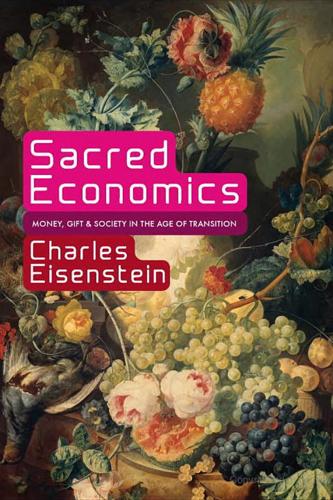
Sacred Economics: Money, Gift, and Society in the Age of Transition
by
Charles Eisenstein
Published 11 Jul 2011
And when the money system collapses, if you already do not depend on money for some portion of life’s necessities and pleasures, then the collapse of money will pose much less of a harsh transition for you. The same applies on the social level. Any form of natural wealth, whether biodiversity, fertile soil, or clean water, and any community or social institution that is not a vehicle for the conversion of life into money, will sustain and enrich life after money. I am referring to money as we know it. I will soon describe a money system that does not drive the conversion of all that is good, true, and beautiful into money.
…
This book will describe a concrete way to back money with the things that are becoming sacred to us today. And what are those? We can see what they are through people’s altruistic efforts to create and preserve them. The money of the future will be backed by the things we want to nurture, create, and preserve: by undeveloped land, clean water and air, great works of art and architecture, biodiversity and the genetic commons, unused development rights, unused carbon credits, uncollected patent royalties, relationships not converted into services, and natural resources not converted into goods. Even, indeed, by gold still in the ground.
…
If it is oil, then an incentive will be created to pump more oil—the amount needed for fuel, plus an additional amount for money. Generalized, the principle is, “The use of any thing for money will increase the supply of that thing.” Chapter 11 draws on this principle to create a money system to increase the supply of things we agree are positive goods for humanity and the planet. What if money were “backed” by clean water, unpolluted air, healthy ecosystems, and the cultural commons? Is there a way to encourage the creation of more and more of these in the same way that the social agreement of gold’s value drives us to mine more and more of it? Just as the monetization of gold causes us to covet it and seek to produce more of it, and to relinquish it only to meet a real, pressing need, so also might the use of these things for money cause us to create more of them, to create a more beautiful planet, and to sacrifice them only for a well-considered reason, only in response to a real need, only to create something as valuable as what has been destroyed.
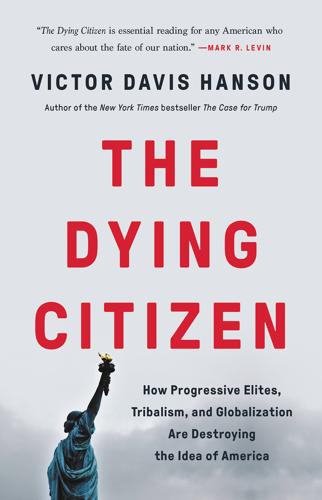
The Dying Citizen: How Progressive Elites, Tribalism, and Globalization Are Destroying the Idea of America
by
Victor Davis Hanson
Published 15 Nov 2021
Clyde Wayne Crews Jr., “Ten Thousand Commandments 2019,” Competitive Enterprise Institute, May 7, 2019, https://cei.org/10kc2019. 14. For the official version of the regulation and its consequences and modifications in 2020, see “Documents Associated with the 2015 Clean Water Rule,” United States Environmental Protection Agency, www.epa.gov/cwa-404/documents-associated-2015-clean-water-rule; cf. farmer anger: Ledyard King, “Trump’s EPA Washes Away Obama-Era Clean Water Rule That Farmers, Manufacturers Hated,” USA Today, September 12, 2019, www.usatoday.com/story/news/politics/2019/09/12/epa-repeals-obama-era-waters-u-s-rule-criticized-overreach/2301997001. In general, see James Copland, The Unelected: How an Unaccountable Elite Is Governing America (New York: Encounter Books, 2020), 52–54. 15.
…
Even if our 535 elected federal representatives knew the details of the 214 bills they passed, there is no way they could master the 3,853 new bureaucratic edicts that they did not pass.13 One example was the creation by the Environmental Protection Agency (EPA) of a new regulation in May 2015 known as the Clean Water Rule. The unelected EPA decided that under its new statute, it could now extend the law protecting “navigable waters” (streams and wetlands) from pollution and defilement to cover even standing water on private property. The law even extended to local irrigation district canals and ditches that run across private farm property but are neither navigable streams nor wetlands.14 Sometimes EPA regulators singled out farmers with low ground that collected temporary storm runoff or with irrigation ditch laterals, arguing that such temporary stagnant pools or tiny weed-filled ditches were subject to water analyses and possible punitive action.
…
The EPA acted as a combined legislative, judicial, and executive entity that by fiat infringed on the citizen’s private property. The aggrieved, of course, could always go to federal court to sue the federal government for overreach, but with limited means in comparison to the bureaucracy’s legal resources. The Clean Water Rule was just one of many efforts by federal government employees to harass small business owners, on the false premise that myriads of new regulations were cost-effective to society—or reflected proper and vital agendas that only experts such as themselves, certainly not an otherwise ignorant public, could appreciate.
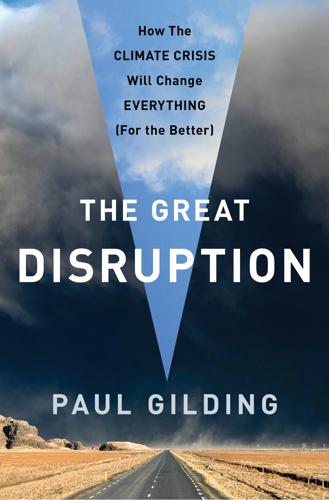
The Great Disruption: Why the Climate Crisis Will Bring on the End of Shopping and the Birth of a New World
by
Paul Gilding
Published 28 Mar 2011
As we’ve swept across the world in just ten thousand years, we have established a quality of life for billions of people that was unimaginable at this scale even just a few hundred years ago. Of course, still left behind are many more billions, many of whom live in grinding, soul-destroying poverty. While we strive for larger televisions, DVD screens in our cars, and the perfectly grilled tender steak, they die for a glass of clean water or a bowl of rice. We will return to this cancer on humanity’s soul, but for now let’s stay with those of us who are, by comparison, filthy, stinking rich. We have done well. Our needs are met. We have the capacity not just to make our lives comfortable, but to explore space, to develop extraordinary scientific knowledge, to cure diseases, to invent amazing technologies that will help us and future generations live even better lives.
…
Activists were joining together as a connected network, with cheap technology enabling anyone to send a message to corporate headquarters via the media. So suddenly behavior anywhere was public everywhere. The best organization in the world at doing this in the late 1980s was without doubt Greenpeace. I joined them in 1989 to lead the Clean Waters Clean Seas campaign in Australia, which focused on exposing the more outrageous examples of corporate pollution. It was a classic Greenpeace pipe-plugging campaign, with our first direct action being to send divers to plug up the underwater discharge pipes that an oil refinery used to discharge toxic waste into the ocean.
…
We face threats to our food supply because of excessive degradation of land and changing rainfall patterns brought about by climate change. We face further risks to food supply because of the potential collapse of fisheries both through overfishing and through broader damage to ocean ecosystems. Billions of people face increasingly urgent issues about access to fresh and clean water, both for everyday consumption and to supply industrial and agricultural processes. These and many other issues will have a direct impact on economic growth, on geopolitical and domestic security, and on our quality of life. The flow on effects of any one of these trends, let alone a number of them in combination, will be dramatic.

The New Harvest: Agricultural Innovation in Africa
by
Calestous Juma
Published 27 May 2017
Developed by US-based Seldon Laboratories, these products require low energy usage to filter various pathogens and chemical contaminants and are already in use by aid workers in Rwanda and Uganda.33 One of the most promising applications of nanotechnology is low-cost, energy-efficient water purification. Nearly 300 million people in Africa lack access to clean water. Water purification technologies using reverse osmosis are not available in much of Africa, partly because of high energy costs. Through the use of a “smart plastic” membrane, the US-based Dais Analytic Corporation has developed a water purification system 56 THE NEW HARVEST that could significantly increase access to clean water and help to realize the recent proclamation by the United Nations that water and sanitation are fundamental human rights. The capital costs of the NanoClear technology are about half the cost of using a reverse osmosis water purification system.
…
The focus of dominant policies was to subsidize consumers in urban areas.3 This policy approach prevailed in most African countries and was associated with the continued decline of the agricultural sector. In 2005, over half of the population in Malawi lived on less than a dollar a day, a quarter of the population lacked sufficient food daily, and a third lacked access to clean water. This started to change when Malawi’s wa Mutharika took on food insecurity, a dominant theme in the history of the country.4 His leadership helped to revitalize the agricultural sector and provides an inspiring lesson for other figures in the region who wish to enable and empower their people to meet their most basic needs.
…
The system is modular and can be readily scaled up on demand. A first-generation pilot plant opened in Tampa, Florida, in 2010, to be followed later in the year by the deployment of the first fully operational NanoClear water treatment facility in northern China. The example of NanoClear illustrates how nanotechnology can help provide clean water, reduces energy usage, and charts an affordable course toward achieving sustainable development goals.34 The potential for technologies as convenient as these would revolutionize the lifestyles of farmers and agricultural workers in Africa. Both humans and livestock would benefit from disease-free, contaminant-free water for consumption and agricultural use.
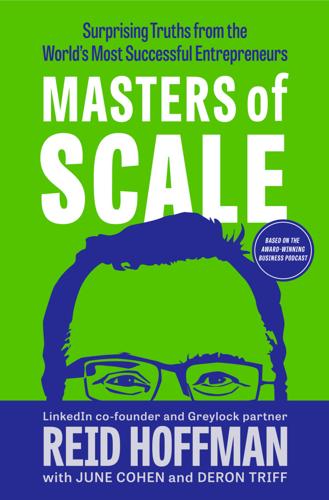
Masters of Scale: Surprising Truths From the World's Most Successful Entrepreneurs
by
Reid Hoffman
,
June Cohen
and
Deron Triff
Published 14 Oct 2021
“They said, ‘Oh, I don’t give to charities, charities are ineffective, they’re bureaucratic, the CEO is probably just trying to make millions of dollars for himself and driving a Mercedes-Benz around.’ ” In that cynicism, Scott saw an opportunity. He would launch a nonprofit designed to bring clean water to the world and inspire generosity by tackling cynicism head-on. The nonprofit he created, Charity: Water, was based on a three-pronged plan. The organization would commit to total, radical transparency about where every penny of donated money was being spent; he would guarantee that 100 percent of public donations went directly to the water projects; and he would create a brand that inspired—one that used photos and videos to tell the kind of true stories that people would yearn to be part of, stories they would share with others.
…
The organization would commit to total, radical transparency about where every penny of donated money was being spent; he would guarantee that 100 percent of public donations went directly to the water projects; and he would create a brand that inspired—one that used photos and videos to tell the kind of true stories that people would yearn to be part of, stories they would share with others. Scott would make positivity the very fabric of Charity: Water. “We would have these sayings at the organization, Hope, not guilt. Invitation, inspiration. The images that we would take would be people getting clean water—not the child drinking dirty water. We would say, ‘Here is what we’re about, we’re providing this life-giving party and there’s before the water and there’s after the water. Do you want to be a part of that solution?’ ” As chief evangelist for his company, Scott knew he had to spark a global virtuous cycle with Charity: Water.
…
And it tapped into the fact that people build their strongest emotional relationships with other people, not brands or charities. “The idea just exploded as people of all ages started giving up their birthdays,” says Scott. The birthday initiative went on to become one of Charity: Water’s signature methods of fundraising. In 2014, they raised $45 million and helped a million people get clean water that year—twenty-five hundred every day of the year. Charity: Water’s donations soared for years…until they didn’t. “The problem for our organization,” says Scott, “was that people did one birthday for Charity: Water, then said, ‘I did it, I built my well, I raised my $1,000.’ We didn’t have any sort of repeatability in that.”
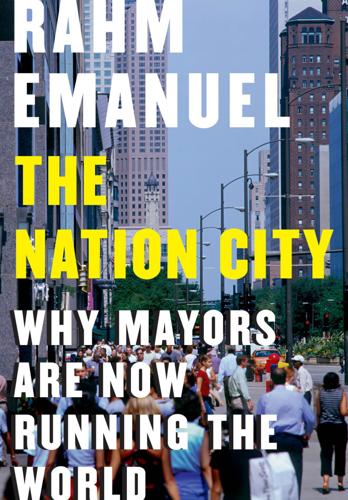
The Nation City: Why Mayors Are Now Running the World
by
Rahm Emanuel
Published 25 Feb 2020
But a compromise was achieved, and subsequent Republican presidents—Richard Nixon and Gerald Ford—ended up expanding the programs during their terms. (This prompted Nixon’s famous “I am now a Keynesian in economics” line.) There was the formation of Medicare and Medicaid, and the Clean Air and Clean Water Acts, and the War on Poverty. All of them were worked on as compromises. In 1986, Ronald Reagan’s Tax Reform Act was sponsored by Dan Rostenkowski, who was a Democratic representative. The art of compromise—really, the art of the executive branch of government working with the legislative one to conquer evil, fix problems, and respond to constituents—continued all the way into Bill Clinton’s second term.
…
Mayors and cities began to repurpose old industrial sites, turning them into playgrounds and parks. They focused on reducing car traffic by rebuilding mass transit systems and making cities more walkable and bikeable. Cities were the primary beneficiaries of the Clean Air Act (in the 1960s) and the Clean Water Act (in the 1970s), which have improved air quality and cleaned up waterways. (The Cuyahoga River is no longer flammable. Los Angeles’s air quality has dramatically improved. When I was growing up, we used to have to run into the water, dive underneath, hold our breath, and swim thirty feet to get past all the dead fish that had washed ashore.
…
After Barrett and I talked about how to further revive Great Lakes cities, he came up with a term for the area—the “Fresh Coast”—that I loved. “ ‘Rust belt’ just has such negative connotations,” he says. “Here we are on the shores of 20 percent of the world’s freshwater supply. In reality what defines us is access to the Great Lakes and clean water. We need to rebrand our entire coast.” Barrett sold the rest of us Great Lakes mayors on an initiative that ended up being not just about marketing but about fighting for cleaner water and recreation. It was a brilliant piece of rebranding. And it’s starting to work on tourists and, maybe more important, our inhabitants.
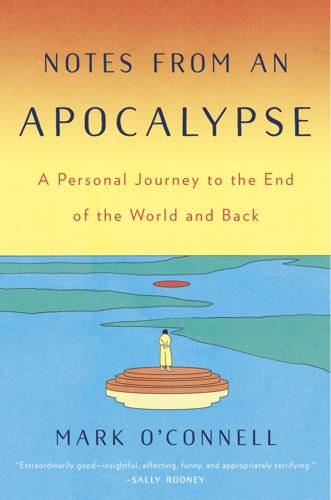
Notes From an Apocalypse: A Personal Journey to the End of the World and Back
by
Mark O'Connell
Published 13 Apr 2020
It seemed odd, I said, given all this seismic activity, that superrich Silicon Valley technologists were supposedly apocalypse-proofing themselves by buying up land down here. “Yeah,” said Anthony, “but some of them are buying farms and sheep stations pretty far inland. Tsunamis aren’t going to be a big issue there. And what they’re after is space, and clean water. Two things we’ve got a lot of down here.” It was precisely this phenomenon—of tech billionaires buying up property in New Zealand in anticipation of civilizational collapse—that constituted our shared apocalyptic obsession. This was the reason I had come down here, to find out about these apocalyptic retreats, and to see what New Zealanders thought of this perception of their country.
…
Tolkien, and his interest in New Zealand was not unconnected with the fact that Peter Jackson’s film adaptations of The Lord of the Rings had been filmed there. This was a man who had named at least five of his companies in reference to Middle Earth and fantasized as a teenager about playing chess against a robot that could discuss the books. It was a matter, too, of the country’s abundance of clean water and the convenience of overnight flights from California. But it was also inseparable from a particular strand of apocalyptic libertarianism. To read The Sovereign Individual was to see this ideology laid bare: these people, the self-appointed “cognitive elite,” were content to see the unraveling of the world as long as they could carry on creating wealth in the end times.
…
Another couple he knew of, a pair of Bitcoin billionaires, had bought a large lakeside estate on which they were constructing a gigantic bunker. This was the first I’d heard since coming here of an actual bunker being built. From the point of view of the modern apocalypticist, the whole appeal of the country—its remoteness and stability, its abundant clean water, its vast and lovely reaches of unpeopled land—seemed to be that it was itself a kind of reinforced geopolitical shelter, way down there at the bottom of the world. If wealthy foreigners were buying land here and building literal bunkers, fortifications beneath the ground of this country that had welcomed them in the first place, what did that say about their motivations, their view of life?

The Polytunnel Book: Fruit and Vegetables All Year Round
by
Joyce Russell
Published 3 Apr 2013
Wherever you put the barrels, try to choose a point close to the polytunnel, so that you don’t have to walk miles to fill a watering can. Alternatively, if you elevate the container, it might be possible to create a gravity feed to pipe the water down to where it is needed. Don’t let water stand too long without using it. The idea is to have a good, fresh, clean water supply. Top Tip Put barrels of water inside the polytunnel to help raise temperatures through the winter months (see November). Electricity An electricity supply can be essential if you want to operate propagators, soil warming cables, lights, etc. However, the combination of electric sockets and a damp environment isn’t ideal.
…
Fill a large bucket, or even a wheelbarrow, with warm water and an environmentally friendly washing liquid. Add some algae remover, or Citrox, or tea tree oil. Then find a nice sunny spot in the garden, sit down and start to scrub. A washing-up brush works well for getting into the corners and removing all debris. Spread the washed pots out on the ground and hose them off with clean water. Once they are dry pots can be stacked and stored in boxes. They will be clean, disease and pest free, and all ready for the growing year to come. Soil health Gardeners expect a lot from the patch of earth inside a polytunnel. It gets little rest and is often expected to crop on a year-round basis.
…
Clear water running through the pipe will be perfectly fine for cleaning over the top – just scrub a little with the brush. 5. Use a hosepipe to rinse the polythene with clear water. 6. Repeat the process on the inside of the tunnel, but remember to wear a waterproof jacket with the hood up! The long-handled brush should reach to the top, but it will drip. 7. Give any growing plants a quick squirt of clean water. 8. Stand back to admire the effect, but also to check for any bits that you have missed. Repairing doors Galvanized metal doors will last for years, although they might need re-covering with polythene. Wooden ones might fall apart and rot. If a new wooden door is needed, it isn’t hard to make one.

Home Maintenance Checklist: Complete DIY Guide for Homeowners: 101 Ways to Save Money and Look After Your Home
by
Ian Anderson
Published 6 Mar 2019
Preparation is critical, just slapping on new stuff simply won’t protect the material, even if it looks good initially. Generally… Scrape away any old flaky layers of the old finish. Clean down with a ‘house cleaner’ detergent, with a mould killer element if there are green or black spores on the surface. A bucket of cleaner and another of clean water and a couple of sponges work well indoors. Wipe over with one sponge and detergent and ‘rinse’ with the other sponge and clean water. Outdoors, careful use of a pressure washer to pump cleaner onto the surface works well (don’t go too close). Scrub with a small brush on a long handle and afterwards rinse everything away being careful with the angle you use (avoid getting water behind anything), mimic how the rain would hit the surface to be safe.
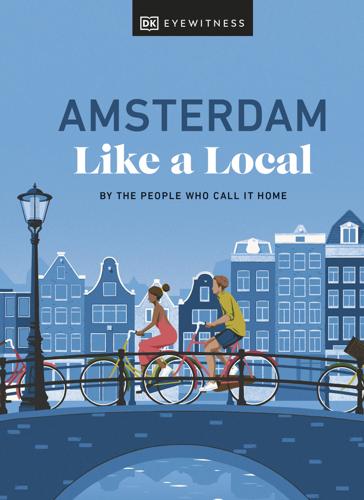
Amsterdam Like a Local
by
Dk Eyewitness
The Sloterplas Lake’s sandy shoreline and clear, clean water get pretty busy in hot weather so make sure you turn up early to grab your patch. Oh, and if you’re in town on New Year’s Day, this is the best spot to join the freezingly cold Nieuwjaarsduik (New Year’s Dive). g Swimming Sports g Contents Google Map BUITENZWEMBAD MARINETERREIN Map 4; Marineterrein (near Pension Homeland), Oostelijke Eilanden; ///uproot.poster.camera; www.marineterrein.nl Although the inner bay of this former naval base isn’t yet an official swimming location (it still needs to pass a few more tests for clean water), hardy locals regularly take the plunge at their own risk.

Living in a Material World: The Commodity Connection
by
Kevin Morrison
Published 15 Jul 2008
‘Now, we are putting the water back that was previously drained,’ said Ryan, who draws a parallel to the Dr Seuss story of the ‘Sneetches’ and the cycle of trend: where something that was previously popular (the Sneetches putting stars on their bellies) suddenly becomes unpopular again. The wetland business was born following a tightening in US environmental laws with the introduction of the Clean Water Act of 1970 (Anderson and Snyder, 1997) that was ushered in following environmental campaigns of the late 1960s, when awareness of these issues increased. The Federal Clean Water Act has halted any further net wetland loss and created a market mechanism for wetland regeneration. People like John Ryan can earn credits from creating a new wetland reserve, which he can sell to developers wishing to encroach on wetland elsewhere.
…
Index ABP 244 Abramovich, Roman 199, 212 Acid Rain Program (ARP) (US) 139, 140 Adholeya, Dr 59 Agarwal, Anil 212 Air Pollution Control Act (1947) (US) 27 air travel 129 alcogas 73 Alternative Agricultural Research and Commercialization Corporation (AARCC) 96 Altra 260 aluminium 190 Amalgamated Cooper Company 200 Amaranth Advisors 246–47 Amerex 260 American Express 245 American Smelting and Refining Company (ASARCO) 197, 199 Anaconda 197, 199, 200 Anderson, Pamela 86 Anderson, Terry Lee: Water Markets, Priming the Invisible (with Pamela Snyder) 162–3 animal feed 81–4 AOL 13 Aqua International Partners 158 Aquilla 258 Archer Daniel Midland (ADM) 77, 89, 233, 234 Armour, Philip 245 Aron & Co., J. 254 arsenic 205 Artists’ Project Earth173 n. 28 Asian currency crisis 7 Asian Development Bank 9 World Outlook 2007 9 Associated British Foods 147 Atlantic Richfield 226 n. 43 Aykroyd, Dan 256 Azuriz 164, 165 Babcock, Bruce 56, 57 Bacon, Louis 237, 238 Ballard 193 Baltic Exchange 212, 213 Bath, Henry 226 n. 41 Battery Ventures 266, 267 Bell, Alexander Graham 73 Belmans, Professor Ronald 194 Benton, Oren 42 Berzelius, Jons Jakob 43 Bettelheim, Eric 146, 148 BHP Billiton 13, 200, 205, 211 biodiversity 155–7 BioEnergy 81 292 | INDEX biofuels 11, 38, 44, 55–60, 69, 71–3, 95, 116–18 see also corn Biofuels Security Act (US) 80 biomass 35–6 Birol, Faith 26 Blackstone 266, 267 Blair, Tony 39, 142 Blenheim Capital Management 237 Bolger, Jim 59 Boulle, Jean-Raymond 199 BP 57, 79, 226 n. 43, 261 Brazil sugarcane production 90–4 Brent 138 Brin, Sergey 38 British Transport Police (BTP) 182 Bronks, Richard (Dick) 259, 260 bronze 180–1 Brown, Robert 55, 56 Browne, Sir John 261 Bryce, Colin 259, 260 Bubeck, David 107 Bükk National Park 145 Bunge 89, 234 Bush, George H. 27 Bush, George W. 28, 29, 30, 31, 55, 71, 75, 79, 116, 129, 142, 143, 192 Butter and Cheese Exchange of New York 251 Butter, Cheese, and Egg Exchange of New York 251 Butz, Earl 115 California Public Employees’ Retirement System (Calipers) 244 California Zero Emissions Vehicle (ZEV) mandate 54 Canadian oil sands 49–50 cap-and-trade systems 138–40, 143, 172 n. 23 carbon capture and storage (CCS) 152–3 Carbon Capture and Storage Association, The 176 n. 50 carbon credits 154 carbon dioxide 25–6, 27, 129, 131–2, 170 n. 8, 170 n. 9, 170 n. 10 trading 137, 138–9, 140, 144 carbon economy 145–7 carbon emissions 128–9 carbon footprint 126, 128 carbon market 137–8 carbon pricing 3, 11, 29 carbon sequestration 31, 135, 150 carbon sinks 152–3 CarbonNeutral Company, The 144 Cargill 89, 234 Carnegie, Andrew 215 Carter, President Jimmy 30, 73, 116 Caruso, Guy 38, 53 Carver, George Washington 102, 120 n. 14 Case of Deferred Mitigation (CDM) 151–2, 175 n. 46 Cashman, Eugene 231, 233, 234, 270 Castro, Fidel 92, 219 cattle 87–8 Caxton Associates 237 cellulosic ethanol 56–7 Certified Emissions Reductions (CERs) 151, 152 Charles, Prince of Wales 147 Chavez, Hugo 45 Chemurgic Council 95 Chernobyl disaster 40 Chevron 261 ChevronTexaco 79 Chicago Board of Trade (CBOT) 99–100, 139, 146, 232–3, 234, 236, 246, 247, 248, 249, 253, 255, 257, 266, 269, 270 Chicago Climate Exchange 143, 146, 154, 155 Chicago Mercantile Exchange 245, 246, 248, 249, 256, 264, 267, 269 chicken 84–7 Chile copper production 195–8, 199, 203–10 nitrates 198–9 Chile Copper Company 197 China car market 18–19, 61 n. 2 coal 20–1, 24 demand for metals 12 electricity 19–20, 187–8 energy consumption 25, 61 n. 5 Forbidden City 17–18 lifestyle 17–18 meat consumption 83–4 migration 6–7, 19 nickel 218 pollution 25 population 6–7, 19 standard of living 6 supermarkets in 89 China Institute of Financial Derivatives 249 INDEX Chinatown 162 Chiquita Brands International 239 chlorodifluoromethane (HCFC-22) 152 Cisco Systems 263 Citigroup 242 Clean Air Act (US) 1990 74 Amendments 139 Clean Air Interstate Rule (CAIR) 172 n. 23 clean coal technology 31–3 Clean Water Act 1970 (US) 156 Climate Care 144 Climate Change Registrar 174 n. 35 climate change cost of 134–5 history 127–8 Climate Exchange Plc 146 Clinton, President Bill 80 Clinton, Hillary 80, 116, 143 CME Group 165, 232 co2balance.com 144 Coady Diemar Partners 141 Coady, Pat 141 coal 10–11, 20–3, 24, 25–6, 26–9, 131 China 20–1, 24 clean technology 31–3 liquid 33–4 pollution controls 27–9 UK 22–3 US 20–1 Coalition of Rainforest Nations 151 Coase, Ronald 138 Codelco 10, 203, 207, 213 Cohen, gary 259, 262 Coldplay 145 Collins, Keith 117 Coltrane, John 183 Columbus, Christopher 97, 225 n. 40 Comex 213, 253, 256, 268 Commodities Corp 247 Commodities Corporation 238, 239 Commodities Futures Trading Commission 245 Commodity Exchange Act 1936 (US) 245 Commodity Exchange Inc.
…
(Comex) 255 Commodity Future Trading Commission (CFTC) (US) 74, 253, 263 commodity indices 240–2 commodity market manipulation 245–7 Commodity Trading Advisors (CTAs) 238 Congo, copper in 201, 202, 210–11 | 293 Connaughton, James 29, 31 ConocoPhilips 57, 79 Conservation International 93 Continental Power Exchange (CPE) 257, 258 Cooke, Jay 198, 222 n. 18 copper 4, 9, 11 applications 187–90 Congo 201, 202, 210–11 cost 211–13, 214–17 demand 182–5 electrical applications 186–7 in electricity generation 194–5 history 185–6 prices 199–201, 222 n. 17 production 195–8, 199 recycling 183, 184–5 theft 179–82 trade 211–13 under-sea extraction 217 in vehicles 190–4 Copper Export Association 201 Copper Exporters Incorporated 201 Copper Producers’ Association 200 coralconnect.com 260 corn 68–84, 96–8, 98–9, 99–101 hybrids 101–3 GM 104–6 diversity 106–10 Corn Products 233 cotton 166 Countryside Alliance 146 credit crisis (2007) 7 Crocker, Thomas 138 Cruse, Richard 111 D1 Oils 57, 58, 59 Dabhol gas-fired power plant 35 Dales, John 138 Daly, Herman 136 Darwin, Charles 67 Davis, Adam 157 Davis, Miles 183 Day after Tomorrow, The 15 n. 1 De Angelis, Anthony ‘Tino’ 245 De Beers 200, 210 De Soto, Hernando 136 Deere, John 100 deforestation 87, 147 Dennis, Richard 237 Deripaska, Oleg 199 Deutsche Bank 246, 261 294 | INDEX Diamond, Jared 97 DiCaprio, Leonardo 130 Dimas, Stavros 160 distillers’ dried grains with solubles (DDGS) 81 Dittar, Thomas 231 Donchian, Richard 237–8 Donson, Harry 199 dot.com bubble 7, 14, 241, 243 Doud, Gregg 82, 83 Dow Jones-AIG Commodity Index 240 Dresdner Kleinwort 47 Drexel Burnham Lambert 254 Dreyfus, Louis 89 Duke Energy 258 Dunavant, Billy 237 DuPont 102 E85 79 Ealet, Isabelle 259, 260 Earth Sanctuatires 157 Earth Summit Bali 142 Rio 1992 141 Ebay 38 Ecosystem Marketplace 157 Edison, Thomas 17, 95, 186 Ehrlich, Paul 13, 14, 16 n. 9 Population Bomb, The 14 Eisenhower, President 40 El Paso 258 Electric Power Research Institute (EPRI) 153 electric vehicles 54, 191–3 11th Hour, The 130 Elf 261 Elton, Ben 135 Emissions Trading Program 139 Energy Information Administration (EIA) 38 Energy Policy Act 2005 (US) 28 energy security 28–9 Energy Security Act 1980 (US) 74 Enron 35, 164, 165, 213, 246, 257–64 Enron Online 213, 225 n. 40, 257, 258, 259 Environmental Protection Agency (US) 27, 62 n. 17, 75, 139 ethanol 69–70, 73–81, 92, 119 n. 6 see also biofuels Eurex 262 European Climate Exchange 146 European Union 142, 158, 160 Waste Electrical and Electronic Equipment (WEEE) 185 Evelyn, John 127 exchange-traded funds (ETFs) 13, 270 Exxon 32, 50, 52, 261 ExxonMobil 13, 79, 242, 254 Faraday, Michael 186 Farm Credit Administration 76 farm debt crisis 114–15 farm payments 115–16 farm sinks 154–5 Fearnley-Whittingstall 86 Federal Bureau of Investigation 246 Federal Clean Water Act (US) 156 F-gases 131 Firewire 260 Fisher, Mark 266, 269 Fleming, Roddy 219 flex-fuel cars 92–3 Fonda, Jane 114 Food and Agricultural Organization 148, 159 Ford, Bill 267 Ford, President Gerald 30, 115 Ford, Henry 73, 95, 195 Fordlandia 195 forest economics 149–50 forestry carbon credits 147 forests 147–51 Forrest, Andrew 199 Forward Contracts (Regulations) Act 1952 (US) 249 Forward Markets Commission (FMC) 249 Four Winds Capital Management 149, 159, 184 Franklin, Benjamin 157 Freese, Barbara 27 Friedland, Robert 199 Frost Fairs 127 fuel cell vehicles 53, 192–3 Futures Inc. 237 futures trading 235–6, 245, 247–50 gas 21–2 Gas Exporting Countries Forum (GECF) 61 n. 8 gasohol 73 gene shuffling 105 General Atlantic 267, 269 General Motors 53, 54, 191, 193 INDEX genetically modified organism (GMO) seeds 105–6 Glencore 199, 211 Global Forest Resources Assessment 2005 148 Global Initiatives173 n. 28 Global Positioning Systems (GPS) 191 global warming 24–6, 75 Globex 267 glycerin 82 Golder and Associates 206 Goldman 255, 260, 261 Goldman Sachs 57, 146, 254, 259 Goldman Sachs Commodity Index (GSCI) 240, 241 Goldstein Samuelson 245 Google 37, 38 Gore, Al 16 n. 5, 28, 38, 126, 129, 143 Government National Mortgage Association (Ginnie Mae) certificates 146 Grant, President Ulysses S. 214 Greenburg, Marty 269 greenhouse effect 131 greenhouse gas emissions 25, 131 see also carbon dioxide; nitrous oxide Greenspan, Alan 244 Gresham Investment Management 242, 243 Guggenheim brothers 197 Guttman, Lou 251, 255, 259 Hamanaka, Yasuo 246 Hanbury-Tension, Robin 146 Harding, President Warren 103 hedge funds 23640 Henry Moore Foundation 180, 181 Herfindahl, Orris 215, 226 n. 46 Heston, Charlton 15, n. 4 Hezbollah 46 Hi-Bred Corn Company 102 high fructose corn syrup (HFCS) 89–90 Highland Star 219 Hill, James Jerome 215 Homestead Act 1862 (US) 100 Honda 53 Howard, John 133, 171 n. 16 Hu Jintao, President 219 Hub, Henry 257 Humphries, Jon 181 Hunt Brothers 245 Hunter, Brian 246, 247 | 295 Hurricane Katrina 135 Hurricane Rita 134 Hussein, Saddam 48 hybrid cars 53 hydroelectric power 34 hydrogen cars 54 hypoxia zone 111 iAqua 165 IEA 32 IMF 16 n. 6 Inconvenient Truth, An 16 n. 5, 129 Indonesia palm oil 93–4 Integrated Gasification Combined Cycle (IGCC) 31–2 intelligent lighting 38 IntercontinentalExchange (ICE) 246, 261, 262, 265, 266, 267 Intergovernmental Council of Copper Exporting Countries (CIPEC) 203, 204 International Bauxite Association (IBA) 203 International Carbon Action Partnership (ICAP) 144 International Commercial Exchange (ICE) 273 n. 15 International Copper Cartel 201 International Energy Agency (IEA) 19, 25, 26, 40, 140–1, 153, 194 International Monetary Fund 57 International Panel on Climate Change (IPCC) (UN) 24, 132, 134, 147, 149, 170 n. 3 International Petroleum Exchange (IPE) 250, 256, 257, 262, 263, 264, 265 International Thermonuclear Experimental Reactor (ITER) 41 International Tin Council 203 International Treaty on Plant Genetic Resources for Food and Agriculture 107 Iowa Farm Bureau 36, 76, 155 Iowa Stored Energy Park 36 Japanese car market 18 Jardine Matheson 225 n. 40 Jarecki, Dr Henry 242, 243, 244 jatropha 57–9 Jefferson, Thomas 109 Jevons, William Stanley 20 Joint, Charles 181 296 | INDEX Joint Implementation (JI) 151 Jones, Paul Tudor 237, 238 Kabila, Joseph 210 Kanza, T.R. 211 Katanga of Congo 201, 225 n. 37 Kennecott Copper 199 Kennedy, Joseph (Joe) 264 Khosla Partners 38 Khosla, Vinod 37 Kitchen, Louise 258 Kleiner Perkins, Caufield & Byers 37 Kooyker, Willem 237, 238 Kovner, Bruce 237, 238 Krull, Pete 81 Kyoto Protocol 24, 27, 50, 140, 141, 142, 143, 147, 151, 169 n. 2, 194 clean development mechanism (CDM) 151 Lamkey, Kendall 112 Land and Water Resources, Inc. 155 Land Grant College Act (US) 101 Lange, Jessica 114 lead credits 172 n. 20 LED (light-emitting diodes) 38 Lehman brothers 241 Leiter, Joseph 245 Leopold II, King 210 Liebreich, Michael 39 Liffe 267 Lincoln, President Abraham 69, 100, 101, 119 n. 1 Lintner, Dr John 243 liquid coal 33–4 London Clearing House 263 London International Financial Futures and Options Exchange (Liffe) 262 London Metal Exchange (LME) 16 n. 10, 43, 196, 204, 212, 213, 246 Long Term Capital Management (LTCM) 247 Louisiana Light Sweet 253 Lourey, Richard 166, 168 Lovelock, James 131 Lyme Timber Company, The 149 Mackintosh, John 232, 234, 270 Madonna 6 malaria 156 Malthus, Thomas 130 manure lagoons 154–5 Mao, Chairman 210 Markowitz, Harry 243 Marks, Jan 268 Marks, Michel 252, 253, 254, 268 Marks, Rebecca 164, 165 Mars, Forrest E., Jr 60 Matheson, Hugh 225 n. 40 Matif 262 McCain, John 80 McDonalds 89 Megatons to Megawatts programme 42 Melamed, Leo 249–50, 264 Mendel, Gregor (Johann) 102, 122 n. 30 Merrill Lynch 241, 246 Mesa Water 163–4 methane 128, 131, 152, 154 methyl tertiary butyl ether (MTBE) 74 Microsoft 13 Midwestern Regional Greenhouse Gas Reduction Accord 143 milk 88–9 Milken, Michael 254 Millennium Ecosystem Assessment Board 156 Mittal, Laskma 212 Mobile 261 Mocatta Metals 242 Monsanto 106, 108 Montéon, Michael 199 Montgomery, David 138 Moor Capital 237 Moore, Henry 179, 182 Morgan, J.P. 246 Morgan Stanley 254, 255, 259, 260, 261 Muir, John 125 Mulholland, William 162 Murphy, Eddie 256 Murray Darling Basin 165–6 Musk, Elon 38 Nabisco 238–9 Nanosolar 38 Nasdaq 262 Nassar, President 210 National Aeronautics and Space Administration (NASA) 192 National Alcohol Programme (Brazil) 92 National Cattlemen’s Beef Association 82 National Commission on Supplies and Shortages (US) 7, 16 n. 5 National Corn Growers’ Association 80 National Energy Policy (US) 28 INDEX National Petroleum Council (NPC) 30, 50 National Security Space Office (NSSO) (US) 39 NCDEX 248, 249 Nelson, Willie 115 New Deal Farm Laws 103 New Deal for Agriculture 76, 89 New Energy Finance 39 New Farm and Forest Products Task Force 95 New York Board of Trade 240, 255 New York Cocoa Exchange 255 New York Coffee and Sugar Exchange 255 New York Cotton Exchange 237, 252, 255 New York Mercantile Exchange (Nymex) 43, 156, 246, 248, 251, 252, 253, 254, 255, 256, 257, 261, 262, 263, 264, 265, 266, 267, 268, 269 New York Metal Exchange 226 n. 42 New York Stock Exchange (NYSE) 198, 253, 255, 256, 264, 268, 270 Newman, Paul 265 Nicholson, Jack 162 nickel 217–18, 227 n. 50, 227 n. 52 nitrates 110–11 nitrogen oxide emissions 139 nitrous oxide 131, 139, 140, 152 Nixon, President 27, 30, 115, 231, 252 Noble Group 199 North, John Thomas 198, 199, 209 Norton, Gale 163 nuclear energy 34 nuclear power 21, 39–44 Nuexco Trading Corporation 42 Nybot 255, 256, 265 Obama, Barack 79, 80, 143 obesity 121 n. 19 O’Connor, Edmund 231 O’Connor, William 231 OECD 158, 159 oil 44–53 energy content 51–2 palm 93 prices 8–9, 10, 52–3 sands 49–50 shale 50–1, 64 n. 33 shocks 5, 7 soya 82 trading 250–5, 266 Oliver, Jamie 86 onion futures trading 245 | 297 Ontario Teachers’ Fund 244, 272 n. 8 Organization of the Petroleum Exporting Countries (Opec) 4, 9, 10, 22, 44–7, 203, 204, 251, 254 over-the-counter (OTC) trading 16 n. 8, 254–5 Owens Valley rape (1908) 162 Pachauri, Dr Rajendra K. 59 Page, Larry 38 Paley Commission 8 palm oil 93 Palmer, Fred 62 n. 14 Parthenon Capital 156, 267 PayPal 38 Peadon, Brian 165 perfluorocarbon 131 PGGM 244 Phaunos Timber Fund 149 Phelps Dodge 199 Phibro 254 Pickens, T.

The Food Revolution: How Your Diet Can Help Save Your Life and Our World
by
John Robbins
Published 14 Sep 2010
According to Dale Van Voorst, spokesman for one of the largest poultry producers in the United States, "The modern poultry producer manages manure so that none of it enters the waters of the area. There may be occasional accidents, as there are in any industry, but animal agriculture operates in strict accordance with the Clean Water Act. No one is out there trying to pollute. Everyone who is supposed to obtain a discharge permit is doing S0.1135 WHAT WE KNOW Number of poultry operations (according to the General Accounting Office) that are of sufficient size to be required to obtain a discharge permit under the Clean Water Act: About 2,00036 Number (according to the General Accounting Office) that have actually done so: 3937 Number of the 22 largest animal factories in Missouri required to have valid operating discharge permits that actually have them: 2" The volume of waste produced by factory farms is so enormous and so toxic that it is challenging to describe.
…
This is what happens when the human spirit is activated. One hundred and fifty years ago, slavery was legal in the United States. One hundred years ago, women could not vote in most states. Eighty years ago, there were no laws in the United States against any form of child abuse. Fifty years ago, we had no Civil Rights Act, no Clean Air or Clean Water legislation, no Endangered Species Act. Today, millions of people are refusing to buy clothes and shoes made in sweatshops and are seeking to live healthier and more Earth-friendly lifestyles. In the last fifteen years alone, as people in the United States have realized how cruelly veal calves are treated, veal consumption has dropped 62 percent.
…
Meanwhile, the Union of Concerned Scientists tells us that the amount of water pollution generated in producing a pound of meat is a staggering 17 times greater than that generated in producing a pound of pasta.42 The Water You Drink It is terribly sad to see our species polluting our water. It would be difficult to exaggerate the importance of clean water on Earth. Water blesses our planet and makes it appear beautifully blue from space. It is the presence of liquid water that clearly distinguishes Earth from all other known planets and moons. Water covers three-quarters of our planet's surface. And water makes up three-quarters of our own bodies.
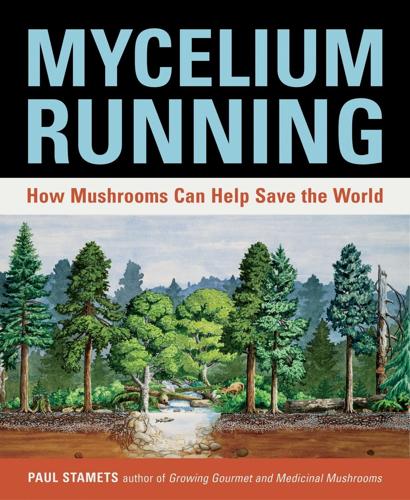
Mycelium Running: How Mushrooms Can Help Save the World
by
Paul Stamets
Published 14 Apr 2005
Pour 1 liter of hydrogen peroxide into 1 gallon of fresh water, then pour onto the straw, thoroughly mixing and, preferably, submerging the straw into the peroxide bath. Cover and soak for 24 hours. Rinse the peroxide-saturated straw with fresh, clean water, submerging the straw, and then drain. Rinse and drain again. After rinsing the second time with clean water, immediately introduce mycelium to the straw, evenly distributing it mixing with your hands. Make sure your hands are clean and moist before you touch the mycelium. Perforate the sides and bottom of the plastic bag with holes every few inches or, if using a bucket, every 4 inches; perforate the top of either the bag or bucket every 4 inches to allow for some passage of air.
…
In addition, many of these societies are associated with universities with which they share resources. I see these educational organizations as key in helping communities coordinate a mycological response to local toxic issues. Here is another promising application of mycoremediation, this one for cleaning water leaching from heavy metal–contaminated soil: Arica and fellow researchers (2003) used turkey tail (Trametes versicolor) and phoenix oyster (Pleurotus pulmonarius var. ‘sajor-caju’) mycelia to remove 97 percent of mercuric ions from water. They did this by combining the water with small beads essentially composed of the mycelia, which selectively absorbs mercury, and a salt called alginic acid, which simply speeds the transfer of mercuric ions from the water to the mycelia.
…
(Larger bags become unwieldy due to their weight.) This method works best if the burlap is hot-water pasteurized, sterilized, or chemically treated using hydrogen peroxide to reduce spores of competitor fungi in the fabric. If burlap is soaked using hydrogen peroxide, make sure it’s thoroughly rinsed with clean water after treatment, lest the residual peroxide harm your implanted mushrooms spores. (For more information on the use of hydrogen peroxide, see here.) Once spores germinate into mycelium, however, residual peroxide levels are usually not detrimental to the implanted fungus, as the mycelium’s digestive enzymes contain natural peroxides.

Hope Dies Last: Visionary People Across the World, Fighting to Find Us a Future
by
Alan Weisman
Published 21 Apr 2025
They pass alongside a landfill spit that conceals a buried Chibayish sewage line; at its end, black effluent gushes from a three-foot pipe. For a decade, they’ve planned a natural treatment plant here that would also be a public park: a 6.5-acre “living machine” using reeds, flowering shrubs, and fruit trees to filter the sewage, patterned to resemble an Iraqi blanket. From the garden’s farthest end, clean water would flow to the marsh. Inevitably dubbed Eden in Iraq, it was designed by American artist Meridel Rubenstein, who since Vietnam has created artworks in US war zones. But like much in Iraq, it’s been bogged in permitting requirements, entailing endless presentations to the mayor, the regional governorate, and the Ministry of Water Resources—only to have the process start anew after each election when new officials take over.
…
Construction had begun the previous December, in 2020, mid-pandemic, after Minnesota’s agencies signed off, despite a state environmental assessment predicting that resulting social damages, including CO2 emissions from tar sands, could total $287 billion: a hundred times more than what Enbridge would spend here. Lawsuits had been filed in every possible court, including against the Army Corps of Engineers for issuing a permit under the US Clean Water Act with no federal environmental impact statement—especially since Enbridge was requisitioning 500 million gallons of water to drill beneath rivers. Winona and her Water Protector sisters erected ceremonial lodges and resistance camps on frozen rivers, blocking equipment, getting arrested.
…
Shell Lake, this river’s source, was where she rices. Everyone wondered about the fall harvest. When Enbridge announced that it had miscalculated and actually needed 5 billion gallons and the state still didn’t balk, multiple Water Protectors including LaDuke joined an unusual plaintiff in suing Minnesota for endangering wild rice’s clean water supply and infringing on Ojibwe treaty rights to harvest it. Their co-plaintiff was wild rice itself; earlier, the White Earth Ojibwe had passed a “Rights of Manoomin” resolution, declaring that wild rice had a legal right to exist and flourish—in effect, personhood. Their inspiration was a growing worldwide “Rights of Nature” movement to grant full legal status to, among others, the Ganges, Himalayan glaciers, salmon in Seattle, and Ecuador’s entire ecosystem.
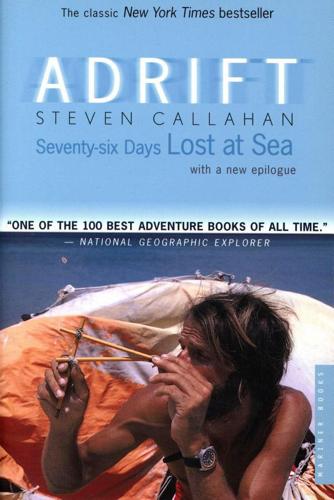
Adrift: Seventy-Six Days Lost at Sea
by
Steven Callahan
Published 16 Oct 2002
I hated the sea's snapping off shots of heavy rifle fire next to my ear, rolling heavy stones over me, ripping wounds open, beating me, winning. Weeks on end, no bells, no rounds, continued onslaught. I even hated the equipment that saved my life—the primitive raft that was an aimless, drifting pig of a boat, the wretched tent that turned clean water foul. I hated having to catch drinking water in the same box I had to defecate in. I hated having to haul aboard lovely creatures and tear into their flesh like a beast. I hated counting minutes for thirty-two days. I hated ... I hated... I did not know a man could have so much hatred and so much longing within him.
…
I get about a pint, but upon tasting it I find that it's still badly tainted with foul orange particles from the canopy. My catchment cape isn't as effective as I had hoped. There's still too much water draining down the canopy. This foul water drains through the same hole in the canopy as the clean water from the catchment cape. Maybe the foul water will be drinkable if I cut it with good water. I try a fifty-fifty ratio. It's still so gross that it's all I can do not to barf. Maybe if I cut it again with water from the still... The sun peers out from behind the wall of gray and sets the solar still to working.
…
Tainted canopy water, along with clear water caught in the space blanket, pours through the observation port drain when it rains. I push a piece of plastic tubing into a low point of drainage in the blanket and secure it with sail twine. A cloudburst at night sends water pouring in. I drain most of the foul water off on the kite and let the clean water drain from the tube into the Tupperware box. It's a gigantic success. I collect two and a half pints of water, still a bit tainted, but drinkable. If my last solar still blows completely, I'm not necessarily done for. I envision the dorado struggling for life on the end of my spear, twisting this way and that, this way and that.

Age of the City: Why Our Future Will Be Won or Lost Together
by
Ian Goldin
and
Tom Lee-Devlin
Published 21 Jun 2023
They in all likelihood would be appalled by the conditions faced by industrial workers, but if they came back at the turn of the next millennium they would find that the rapid expansion in society’s productive capacity had dramatically improved the living standards of even the poorest members of British society, with the constant threat of starvation and premature death replaced by a universal expectation of clean water, access to health services, and protection from criminality. The precise chain of events that led industrialization to occur when, where and how it did is a topic of endless debate among scholars. One explanation emphasizes a shift in agricultural practices and land rights that increased the profits available for landholders to invest in manufactured goods and freed up the necessary supply of labour to produce those goods.
…
Most residents lack a private toilet, and tend to rely on communal pits or even open spaces.40 Many lack garbage collection services, which means rubbish may be left by the road or burned near the home. Reliance on traditional fuel sources such as kerosene, charcoal and candles for light, cooking and heating creates a fire risk that is compounded by population density and an absence of fire services. Access to clean water is patchy and tends to rely on communal taps shared by many families. The control exercised by monopolistic businesses or gangs over many informal settlements often compounds the problem, as residents are forced to pay prices for basic services well above fair market rates. The internal migration driving the growth of these settlements reflects the grim reality that living conditions in rural areas are even worse.
…
These would not only make it possible for those living there to invest in improving their homes, but also allow them to more easily take out loans for setting up small businesses or educating their children. While seen as a magic bullet by some, the results of land titling programmes have often been underwhelming, suggesting they are far from the panacea hoped for.51 There are no quick fixes to the challenge of informal settlements. Ensuring access to essential services – clean water, sanitation and electricity, alongside healthcare and education – is essential, though often difficult for governments with meagre finances. Even more important is creating the types of decent-paying jobs that can allow residents to escape from poverty. Doing that requires understanding and addressing the root causes of urbanization without development.

How to Clean Your House
by
Lynsey, Queen of Clean
Published 15 Nov 2019
DELICATE ITEMS OR AREAS THAT YOU CAN’T SEE WELL Delicate items or hard-to-see areas can be vacuumed with a pair of old tights placed over the vacuum nozzle. This will collect the dust but eliminates the risk of sucking up valuables or other items you don’t want vacuumed up or damaging delicate things such as ceiling light fittings. For all your stylish ornaments and other intricate items where dust can get trapped, lightly mist with clean water and gently brush with a clean natural-bristled paintbrush or a make-up brush. Vents Use your vacuum with the brush attachment to suck up the dust in air vents. If the space is really small, another good trick is to use an old mascara brush! Keyboards Use the sticky edge of a Post-it note to pick up gunk between the keys on keyboards.
…
If necessary, use a damp cloth to clean up any spills and allow to dry before replacing the contents. Keep drawers smelling fresh by adding a little bag of lavender. Cooker-hood fan Place your filters in a clean sink filled with very hot or boiling water and add a large spoonful of bicarbonate of soda. Soak for 30 minutes, then carefully remove and rinse with clean water. Allow the filters to dry before replacing. Sliding door and window tracks Remove loose debris by vacuuming and use an old, dry toothbrush to dislodge the rest. If necessary, sprinkle with a light dusting of bicarbonate of soda and spray with a mixture of white wine vinegar and water. Leave for 5 minutes, then wipe away the grime with a clean microfibre cloth.
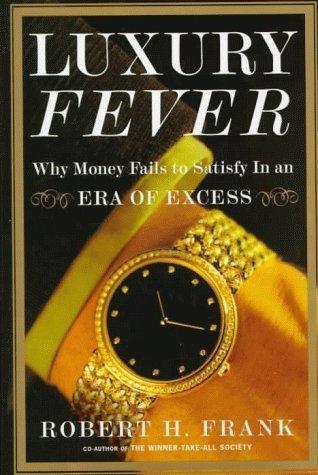
Luxury Fever: Why Money Fails to Satisfy in an Era of Excess
by
Robert H. Frank
Published 15 Jan 1999
For example, one wasteful aspect of the sumptuary laws was the indiscriminate way they required cutbacks in consumption, even from those with a passionate attachment to the forbidden product or service. The original Clean Water Act was wasteful in an exactly parallel way. Whereas the goal of an intelligent environmental policy is to achieve a given reduction in pollution at the lowest possible cost, the Clean Water Act required the same 90 percent cutback from producers for whom curtailment was costly as from others for whom curtailment was cheap. Other early environmental legislation empowered regulatory agencies to issue specific requirements regarding the kinds of equipment companies could use and the kinds of fuels they could burn.
…
In the consumption domain, individual spending decisions have only negligible effects on community consumption standards. But in each case, the aggregate effects of individual actions are far from negligible. Our first attempts to solve the problem of excessive pollution were much like our first attempts to solve the problem of excessive conspicuous consumption. The Clean Water Act of 1971, for example, established a deadline by which each producer had to remove 90 percent of its base-year emissions of toxic wastes flowing into the nation’s rivers. By issuing an across-the-board prohibition on specific acts of pollution, this law was essentially like the early sumptuary laws, which issued across-the-board prohibitions on specific forms of consumption.
…
See under Luxury spending Children of drug-abusing parents, 61-62 lead ingestion by, 54 of the poor, 255-56 Chinese sumptuary laws, 199 Christina, The (yacht), 5 Cigar Aficionado, 31 Cigars, charm premium for, 30-31 Cirignani, Mario, 28 Civility, economic growth and, 103-6 Classroom size, student performance and, 59 Clean Water Act (1971), 208 Collectibles, markets for, 119-20 Collectively managed economies, 270 Colonial America, luxury taxes in, 203-4 Commitment problem in bargaining, 137-39 emotions and, 127-28 Commons, tragedy of the, 157, 237-38 Community consumption standards current trajectory for, 276-77 effect on savings rate, 233-34 Commuting through traffic, 80-83 Comparisons, interpersonal, 119, 164 Competition, 146-58 breakdown of barriers to, 42-43 Darwin on, 147-48 among females, 157-58 individual?
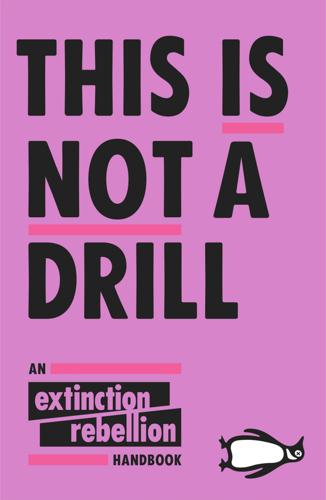
This Is Not a Drill: An Extinction Rebellion Handbook
by
Extinction Rebellion
Published 12 Jun 2019
We need to overhaul our political systems to limit access to government by big business. We need citizens’ assemblies to allow ordinary people to decide the scale and pace of transition on the basis of independent scientific advice. We need new laws to prevent ecocide – the destruction of the insects, plants and ecosystems that humanity needs for food, pollination, clean water and healthy oceans. Every parliament, state legislature and local authority needs to declare a climate and ecological emergency, following the lead of ninety-one councils in the UK, including London and the UK Parliament, and to start allocating resources differently. The reality is that politicians and powerful elites who benefit from ‘business as usual’ are not going to stop their destructive practices or loosen their grip on the financial and economic levers.
…
The melting ice caps, the scorching heatwaves and the staggering declines in animal and insect populations are the direct result of failures by people in power. Irreversible changes to the natural world are taking place because our economy is built on the assumption that precious minerals, fresh air, clean water and rare species can magically regenerate themselves in an instant. That somehow the Earth will expand to meet our insatiable appetites. But the reality is we’ve stretched our planet beyond its limits – and without a bold reimagining of our economy and the power structures that sustain the status quo, it won’t be able to spring back into shape.
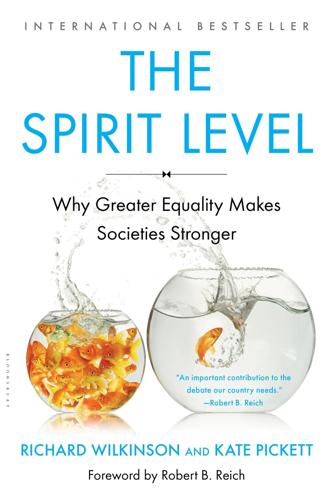
The Spirit Level: Why Greater Equality Makes Societies Stronger
by
Richard Wilkinson
and
Kate Pickett
Published 1 Jan 2009
For thousands of years the best way of improving the quality of human life was to raise material living standards. When the wolf was never far from the door, good times were simply times of plenty. But for the vast majority of people in affluent countries the difficulties of life are no longer about filling our stomachs, having clean water and keeping warm. Most of us now wish we could eat less rather than more. And, for the first time in history, the poor are – on average – fatter than the rich. Economic growth, for so long the great engine of progress, has, in the rich countries, largely finished its work. Not only have measures of wellbeing and happiness ceased to rise with economic growth but, as affluent societies have grown richer, there have been long-term rises in rates of anxiety, depression and numerous other social problems.
…
Put crudely, second-rate goods are assumed to reflect second-rate people. Possessions are markers of status everywhere, but in poorer societies, where necessities are a much larger part of consumption, the reasons why more equal societies do better may have less to do with status issues and more to do with fewer people being denied access to food, clean water and shelter. It is only among the very richest countries that health and wellbeing are no longer related to Gross National Income per person. In poorer countries it is still essential to raise living standards and it is most important among the poorest. In those societies a more equal distribution of resources will mean fewer people will be living in shanty towns, with dirty water and food insecurity, or trying to scrape a living from inadequate land-holdings.
…
As well as some highly ethical companies operating in the market supporting fair trade, the environment, giving to local communities, etc., there are, at the same time, also companies trying to expand markets for tobacco in the developing world in the sure knowledge that they will cause millions of extra deaths. There are companies which have caused needless deaths by encouraging mothers in developing countries to buy powdered baby milk instead of breast feeding, despite lack of access to clean water or basic hygiene. There are others which continue to destroy ecosystems, land and water supplies, to exploit mineral resources where governments are too weak or corrupt to stand up to them, and still others use their patents to prevent life-saving drugs being sold at affordable prices in poorer countries.
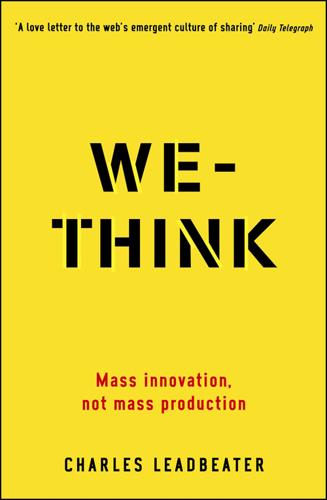
We-Think: Mass Innovation, Not Mass Production
by
Charles Leadbeater
Published 9 Dec 2010
The Open Architecture Network (OAN) is a virtual space in which architects post their drawings for the public to examine, download and build. By June 2007 the network had 400 designs, 40 chapters of architects around the world and almost 6,000 contributing members. The OAN runs open design competitions on challenges facing the world’s poor, such as the quest for low-cost clean water and sewerage systems, and provides up to $250,000 for the implementation of a winning design. OAN designs include The Clean Hub, a solar-powered water harvester, electricity generator and composting toilet that costs $15,000 to install, and the In(out) side House, an environmentally-friendly family house that would cost about $125,000 to build.
…
The ideas to guide such collaborative, self-help solutions are already at work, for example in the Barefoot College created by Bunker Roy in 1972. Roy had turned his back on life in a wealthy Delhi family with the aim of creating an institution that would give India’s illiterate villagers greater control over their lives, by helping them to provide heat, light, clean water and food for themselves. He could not afford to employ professionals to teach the villagers, and city-based experts had little understanding of village life anyway. So Roy trained a small group of villagers to become teachers and engineers. They taught others, who in turn became engineers, teachers and doctors in their own villages.
…
By 2007 two generations of some families had become professionals, thanks to the college. In the villages around the college, each evening more than 4,000 children who tend cattle by day attend night classes with teachers in education centres lit by solar-powered lanterns installed by engineers. They drink clean water from one of the more than 1,737 hand-operated water pumps that have been installed since 1979 and are maintained by 1,200 mechanics, and which provide water for more than 325,000 people. In Roy’s world, demand can generate its own supply: people who need light can become lighting engineers; learners can become teachers.
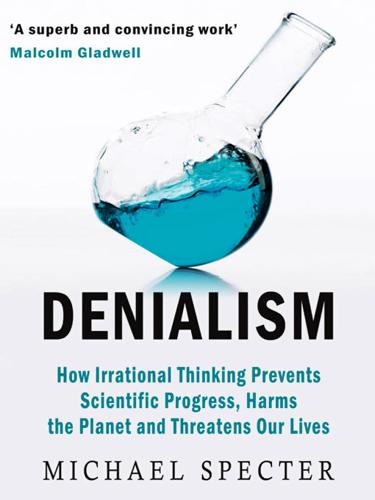
Denialism: How Irrational Thinking Hinders Scientific Progress, Harms the Planet, and Threatens Our Lives
by
Michael Specter
Published 14 Apr 2009
With little thought devoted to land management and driven by an almost limitless reliance on water, the environmental impact has been staggering. For decades, India and China have been digging wells and damming rivers from one end of Asia to the other. The dams have displaced millions. Wells have liberated a generation of farmers from their dependence on rain, but clean water doesn’t flow forever. As the population grows, particularly in the world’s two most populous countries, the freshwater dwindles, and that leaves people with just one choice: dig. Drill too deep, though, and saltwater and arsenic can begin to seep into the ground, and when that happens nothing will grow on that land again.
…
Finally, people said, ‘Let’s redesign the factories so that they don’t make that crap.’ ” (In fact, the fire that erupted just outside Cleveland, Ohio, on the Cuyahoga River in June 1969 became a permanent symbol of environmental disaster. It also helped begin a national discussion that ended in the passage of the Clean Water Act, the Safe Drinking Water Act, and many other measures.) “Let’s say I was a whimsical futurist,” said Endy—although there is nothing whimsical about his approach to science or to the future. “We are spending trillions of dollars on health care. Preventing disease is obviously more desirable than treating it.
…
K., Eugenics and Other Evils children, synthetic China: cotton industry in environmental issues in isolationism of rice in rising income in tea in chloroquine cholera cholesterol chondroitin Church, George civilizations, emergence of Clark, William (explorer) Clark, William C. (professor) Clarke, Arthur C. Clean Water Act Cleveland Clinic Clinton, Bill Clinton, Hillary Club of Rome, The Limits to Growth Coca-Cola Company Collins, Francis S. Colten Snyder v. HHS common ancestor complementary and alternative medicine (CAM), see alternative medicines Complete Genomics Condit, Celeste conspiracy: assumptions of confusion among theorists of Continental Army, vaccination of cordyceps corporate greed cowpox cox-2 inhibitors (coxibs)- Creation Museum Crick, Francis Crohn’s disease crystal meth Cuba, agriculture in Cuyahoga River, afire cyclooxygenase-2 DALYs (disability-adjusted life years) Darwin, Charles deCODE genetics Defense Advanced Research Projects Agency (DARPA) denialism: arguments used in and conspiracy theories distortion of facts in forms of and loss of control use of term DES (diethylstilbestrol) diphtheria disability-adjusted life years (DALYs) disease, see illness disposable biological systems, creation of DNA: capacity of tools for study of comparisons of components of cost of processing decoding sequences of do-i t-yourself research on and genome studies Internet sales of open-source biology of personal analysis of and polio virus research recombinant technology resurrecting self-re plicating structure of synthetic Dole, Bob Dostoyevsky, Fyodor Drazen, Jeffrey drosophila Drug Enforcement Administration (DEA) drug metabolizing enzymes drug resistance Duesberg, Peter DuPont Corporation Dyson, Freeman echinacea education Ehrlich, Paul, The Population Bomb Einstein, Albert eleuthero (Siberian ginseng) Elizabeth I, queen of England Emanuel, Ezekiel encephalopathy Endy, Drew energy, new sources of energy drinks Enlightenment Enriquez, Juan environmental issues: and agriculture and genetics pollution solutions to ephedra ETC Group eugenics Every Child by Two evolution common ancestor in and genetic modification and human genome intelligent design as alternative to of machines manipulation of natural selection rejection of the idea of and survival theory of extinct animals, bringing back to life falciparum parasite Falk, Gary W.

That Wild Country: An Epic Journey Through the Past, Present, and Future of America's Public Lands
by
Mark Kenyon
Published 2 Dec 2019
It was an unfortunate and large oversight—a 640-million-acre oversight, in fact. To put that in perspective, the acreage of our federal public lands is equivalent to the entire country of Germany seven times over. These lands provide space for hunting, fishing, and leisure activities; wildlife habitats; clean-water protection; sustainable industry; and much more. All for the public. It’s about as profoundly American an idea as you can find: the democratization of land and resources and food and recreation and wildlife and scenery and space and solitude. After graduating college, I wised up to the inexpensive adventure national parks and other public lands afforded and soon made my way toward the setting sun.
…
It seemed to me that taking such an aggressive position threatened to disenchant an important and powerful base of Republican support. Was the pressure on these politicians from certain industries really worth making this new set of enemies? But even more than that, I struggled to understand how and why public lands, outdoor recreation, clean air, and clean water had to be divisive political issues at all. I hated to see public land—such a clear example of American exceptionalism—being pushed to one side of the partisan divide. Regardless of political affiliation, if any group or individual was taking a stance against public lands, I’d have to push back.
…
When the National Environmental Policy Act (NEPA) was created to “encourage productive and enjoyable harmony between man and his environment; to promote efforts which will prevent or eliminate damage to the environment and biosphere and stimulate the health and welfare of man; to enrich the understanding of the ecological systems and natural resources important to the Nation; and to establish a Council on Environmental Quality,” public-land managers were suddenly mandated to produce an “environmental impact statement” that would provide “a ‘hard look’ at the potential environmental consequences of [any] proposed project.” Part of the NEPA process required a public review of any proposed management project. In practice, this opened up public-land decisions to public critique, and even lawsuits. Other environmental legislation followed in the seventies, such as the Clean Air Act, Clean Water Act, and Endangered Species Act, and each required new protections for the public estate. By the end of the seventies, the sweeping changes resulted in a significantly more carefully managed public-land system, with a much more diverse set of values and stakeholders guiding that management. While the public-land legislation leading up through the fifties had been primarily focused on setting aside land from development, the sixties and seventies saw tighter regulation and clear requirements placed on those lands.

Brave New Work: Are You Ready to Reinvent Your Organization?
by
Aaron Dignan
Published 1 Feb 2019
For example, if you want to ensure that everyone in the world has access to clean water, a nonprofit called charity: water is one of just a handful of organizations that have created space for that work. When its founder, Scott Harrison, looked at the water crisis ten years ago, he didn’t see an organization approaching it the way he wanted to—as a storyteller. So he started from scratch. charity: water would become the place to participate in the reinvention of philanthropy. Early innovations like being able to see where your money went in the field—knowing that a particular village or individual was drinking clean water because of you—electrified a new generation of donors.
…
Early innovations like being able to see where your money went in the field—knowing that a particular village or individual was drinking clean water because of you—electrified a new generation of donors. Today more than seven million people have clean water because Scott planted a flag and made some space. When you commit to changing your OS, you’re taking on the challenge of creating a liminal space. And as we’ve discussed, continuous participatory change requires a boundary in which everyone can feel both safety and disruption. That space could be as small as a cross-functional team or as large as an entire firm. But drawing a circle around a group of people is just the beginning. Creating space means ensuring that everyone on the team is committed to taking risks together and supporting one another.
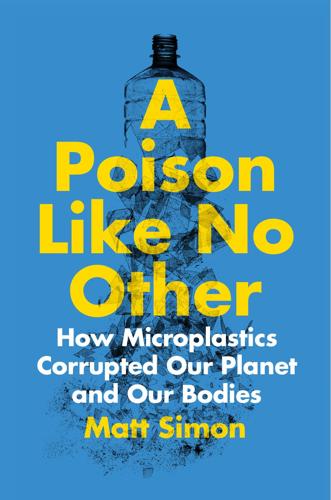
A Poison Like No Other: How Microplastics Corrupted Our Planet and Our Bodies
by
Matt Simon
Published 24 Jun 2022
“They were just filling up five-gallon buckets,” says Tunnell, who’s also the director of the Mission-Aransas National Estuarine Research Reserve at the University of Texas. Previously, in 2019 the petrochemical company Formosa Plastics agreed to pay $50 million to settle a lawsuit accusing it of dumping billions of pellets into Texas waterways,49 the largest settlement of a Clean Water Act suit ever brought by private citizens.50 Nurdles escape at any link in the supply chain. They spill when they’re loaded into containers at a production facility, and when they’re loaded onto ships or railcars. Then they fall out of those ships and railcars: in 2012, a typhoon knocked containers off a vessel near Hong Kong, 29 30 a poison like no other spilling 330,000 pounds of nurdles, which gathered on beaches like snow.51 In 2021, a ship cruising through the Indian Ocean caught fire and sank, losing 87 containers full of nearly 4 million pounds of nurdles—the largest plastic spill ever—which piled six feet high on the Sri Lankan coastline.52 Upping the toxicity of the spill, scientists discovered that many of the nurdles had burned in the wreck, making them three times as chemically complex as virgin plastic.53 Nurdle spills are oil spills, essentially, only they travel much farther.
…
The microfiber-rich water from your laundry machine flows to a wastewater treatment facility, where it’s pumped through screens to remove large debris, then sent to a “grit chamber,” in which sand and stones settle to the bottom.62 The water then moves to a sedimentation tank, where the human waste and other organic material settle out, and then to another tank in which microbes further break down organic material left in the water. Finally, chlorine is added to 31 32 a poison like no other kill any remaining nefarious bacteria, and the (relatively) clean water is pumped out to a river, lake, or ocean. Wastewater treatment facilities aren’t specifically equipped to filter out microfibers, but just by accident through all these processes, they’ll capture anywhere between 83 and 99 percent of the tiny pollutants, depending on the equipment. But we’re flushing so many microfibers to these facilities that even a single percent of them escaping into the environment is a huge problem.
…
Post and Courier (Charleston). https://www.postandcourier .com/news/sc-plastic-pellet-spill-lawsuit-settled-for-1-million/article _5330d994-7b96-11eb-b4e7-b7b8ca40fc27.html. Fernández, Stacy. 2019. “Plastic Company Set to Pay $50 Million Settlement in Water Pollution Suit Brought on by Texas Residents.” Texas Tribune (Austin). https://www.texastribune.org/2019/10/15/formosa -plastics-pay-50-million-texas-clean-water-act-lawsuit/. NOAA Office for Coastal Management. n.d. “Historic Pollution Settlement Awards $1 Million to Nurdle Patrol.” https://coast.noaa .gov/states/stories/historic-pollution-settlement-to-nurdle-patrol.html. Reuters. 2012. “Hong Kong Government Criticized over Plastic Spill on Beaches.” https://www.reuters.com/article/us-hongkong-spill/hong -kong-government-criticized-over-plastic-spill-on-beaches-idUSBRE 87306J20120805.

Hope for Animals and Their World
by
Jane Goodall
,
Thane Maynard
and
Gail Hudson
Published 1 Sep 2009
But there was also a pig farm, which Maja felt was not appropriate. The government agreed to move the pigs. Then they had to block access for a stream that flowed through the area, since it was horribly polluted. They dug nine little wells to provide water for the animals and embarked on the major project: filling the lake with clean water. The new arrivals deserved the best the Chinese could give them. But there was another major problem. The officials in charge of building the required quarantine sheds insisted that they be designed like the traditional stall for cows or horses—with a half door. No matter how often Maja explained that deer were different, and would immediately leap over a half door, the Chinese would not, or could not, believe her.
…
“It’s quite the same thing really,” he said. “Fish get sick, too, and instead of helping individual animals, I get to help a whole pond of them!” After graduating, he applied successfully for a job at the Shei-pa National Park. “Because the Formosan landlocked salmon is a finicky species, needing clean water at the right temperature, and very particular about its diet, trying to restore them to the natural environment is difficult,” said Liao, “but our team was determined to make it happen.” They racked their brains to think of ways to increase the number of fry, and then spent sleepless nights persuading the young fish to feed.
…
It was almost as though nature herself was sending me a message of hope to share with the world. They gave me a feather, found near one of the three peregrine nests, as a symbol of all that can be done to heal the scars we have inflicted on Planet Earth. Before I left Sudbury, I had the joy of releasing a brook trout into the clean water of a stream that had, until recently, been dank, poisoned, lifeless. Water Is Life The pollution of our streams, rivers, lakes, and oceans is one of the more shocking results of the use of chemicals and other damaging agents in agriculture, industry, household products, golf courses, and gardens, since much of this poison is washed into the water.
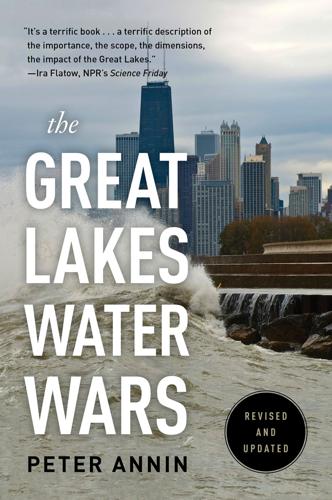
The Great Lakes Water Wars
by
Peter Annin
Published 15 Jun 2018
Stanley Chagnon, emeritus chief of the Illinois State Water Survey, captures this anger in a comprehensive report he edited and partially wrote for the National Oceanic and Atmospheric Administration in 1994: Few would argue that through the late 1800s, Chicago residents faced serious health problems due to the quality of their drinking water. Few would argue that Chicago residents deserve, as much as any other people, clean water for household use. Many, however, have argued that Chicago (through the [Sanitary District] and often with the blessing of state and federal governments) did not have the right to divert water from Lake Michigan for its own use and then return that water in a contaminated state and to pollute other waters….
…
“So the lesson, my lesson, out of all of that was push ahead and do it and don’t try to make everyone happy because it ain’t gonna happen.” Mr. Ledin also defended the decision to quietly approve a new return-flow diversion to Menomonee Falls in 1998. The approval was part of a decades-long sustainable water-planning effort to help the greater Milwaukee area comply with the federal Clean Water Act. He said that through litigation the DNR had forced Menomonee Falls to abandon its own sewage-treatment system and connect to Milwaukee’s. As part of that deal, Menomonee Falls was allowed to connect to Milwaukee’s Lake Michigan drinking water system, even though part of the suburb was outside the Great Lakes Basin.
…
The City started with its current water-supply service area, but then expanded the area to include sections of four neighboring communities. The reason? State law required that sewer service areas match up geographically with water-supply service areas so that the urban plumbing that delivered clean water to a community matched up with the pipes that took dirty water away. In many instances throughout the state, the sewer service area was much larger than the water-supply service area, which was the case in Waukesha. Its delineated sewer area stretched beyond its municipal boundaries and overlapped with sections of four neighboring communities: Pewaukee, Genesee, Delafield, and the Town of Waukesha (which is a different municipal jurisdiction from the City of Waukesha—see map on page 287).
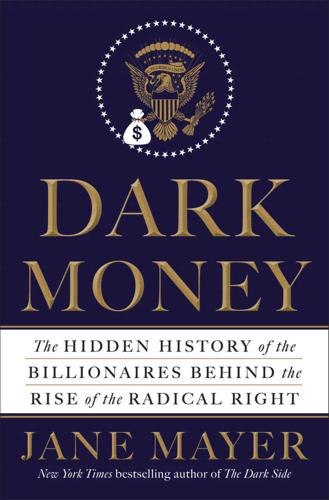
Dark Money: The Hidden History of the Billionaires Behind the Rise of the Radical Right
by
Jane Mayer
Published 19 Jan 2016
The business community was reeling from the birth of the environmental and consumer movements, which spawned a host of tough new government regulations. Following the 1962 publication of Rachel Carson’s Silent Spring, exposing the devastating environmental fallout from irresponsible chemical practices, Congress passed the Clean Air Act, the Clean Water Act, the Toxic Substances Control Act, and other laws creating the modern regulatory state. In 1970, with strong bipartisan support, President Nixon signed legislation creating both the Environmental Protection Agency and the Occupational Safety and Health Administration, giving the government new powers with which to police business.
…
“Koch just runs over these people and then discards them as trash,” Elroy said. Asked about Green’s allegations, neither Moorman nor the spokesman for Koch Industries responded. But as allegations concerning pollution mounted nationally, federal prosecutors began to piece together an enormous case against the company for violating the Clean Water Act. In 1995, the Justice Department sued Koch for lying about leaking millions of gallons of oil from its pipelines and storage facilities in six different states. Federal investigators documented over three hundred oil spills during the previous five years, including one 100,000-gallon crude oil spill that left a twelve-mile-long slick in the bay off Corpus Christi, not far from where the Koch refinery was located.
…
You can’t believe anything they say. They definitely don’t play the game the way other companies do,” she says. On January 13, 2000, O’Connell’s division at the Justice Department prevailed. Koch Industries agreed to pay a $30 million fine, which was the biggest in history at that point, for violations of the Clean Water Act. The EPA issued a press release accusing Koch Industries of “egregious violations” and trumpeting that the huge fine proved that “those who try to profit from polluting our environment will pay the price.” But O’Connell, who retired from the Justice Department in 2004, was still haunted by the damage from the oil leaks a decade later.
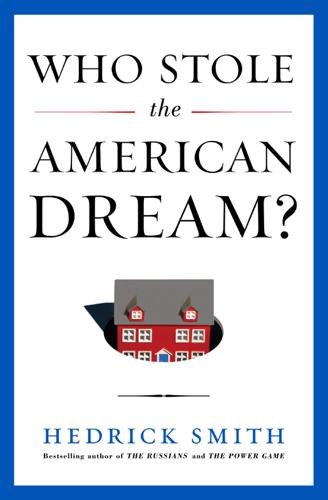
Who Stole the American Dream?
by
Hedrick Smith
Published 10 Sep 2012
Facing reelection in 1972 and expecting that his opponent would be the pro-environment senator Ed Muskie, Nixon felt he had to respond to the public’s demands. In his memoirs, Nixon later claimed credit for enactment of the Clean Water Act, but in fact he vetoed that legislation. Muskie had been eliminated in the Democratic primaries, and once Nixon saw that he could easily beat the Democratic nominee, Senator George McGovern, he no longer worried about the environmental vote. He felt free to veto the Clean Water Act. After the election, Congress with its strong bipartisan majority on green issues passed the bill over his veto and then armed Ruckelshaus with a raft of new laws imposing strict pollution limits and specifying penalties for violators.
…
The Nixon administration was swept along by the popular tide. Even more than Democrat Lyndon Johnson, Nixon presided over major expansions of federal regulatory powers, creating several new regulatory agencies and commissions. The most high-profile was the Environmental Protection Agency (EPA), with its laws on clean air, clean water, safe drinking water, and control of pesticides and other toxic substances. Nixon created other agencies as well, such as the Occupational Safety and Health Administration (OSHA), charged with ensuring safety in the workplace; the Consumer Product Safety Commission; the National Highway Traffic Safety Administration; and the Mining Enforcement and Safety Administration.
…
But on the environment, Congress and the Nixon White House moved with astonishing speed. During his first year, President Nixon set up a White House Council on Environmental Quality, naming environmentalist Russell Train as its chairman. Solid bipartisan majorities in Congress rushed through a flow of environmental legislation under Nixon: the Clean Air Act; the Clean Water Act; a bill establishing the Environmental Protection Agency; the Federal Insecticide, Fungicide, and Rodenticide Act; the Noise Pollution and Abatement Act; the Coastal Zone Management Act; the Marine Mammal Protection Act; the Endangered Species Act; and the Safe Drinking Water Act. More environmental legislation was passed under Gerald Ford after Nixon resigned in 1974.
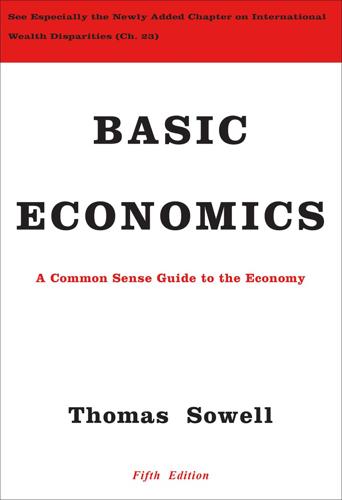
Basic Economics
by
Thomas Sowell
Published 1 Jan 2000
But political controversies over impurities in the water are unlikely to be settled at a scientific level when passions can be whipped up in the name of non-existent “clean water.” No matter how pure the water becomes, someone can always demand the removal of more impurities. And, unless the public understands the logical and economic implications of what is being said, that demand can become politically irresistible, since no public official wants to be known as being opposed to clean water. It is not even certain that reducing extremely small amounts of substances that are harmful in larger amounts reduces risks at all. Even arsenic in the water—in extremely minute traces—has been found to have health benefits.{657} An old saying declares: “It is the dose that makes the poison.”
…
However, this new additive tended to leak from filling station storage tanks and automobile gas tanks, polluting the ground water in the first case and leading to more automobile fires in the second.{661} Similarly, government-mandated air bags in automobiles, introduced to save lives in car crashes, have themselves killed small children. These are all matters of incremental trade-offs to find an optimal amount and kind of safety, in a world where being categorically safe is as impossible as achieving 100 percent clean air or clean water. Incremental trade-offs are made all the time in individual market transactions, but it can be politically suicidal to oppose demands for more clean air, clean water or automobile safety. Therefore saying that the government can improve over the results of individual transactions in a free market is not the same as saying that it will in fact do so. Among the greatest external costs imposed in a society can be those imposed politically by legislators and officials who pay no costs whatever, while imposing billions of dollars in costs on others, in order to respond to political pressures from advocates of particular interests or ideologies.
…
While there are many decisions that can be made more efficiently through the marketplace than by government, this is one of those decisions that can be made more efficiently by government than by the marketplace. Even such a champion of free markets as Milton Friedman acknowledged that there are “effects on third parties for which it is not feasible to charge or recompense them.”{649} Clean air laws can reduce harmful emissions by legislation and regulations. Clean water laws and laws against disposing of toxic wastes where they will harm people can likewise force decisions to be made in ways that take into account the external costs that would otherwise be ignored by those transacting in the marketplace. By the same token, there may be transactions that would be beneficial to people who are not party to the decision-making, and whose interests are therefore not taken into account.
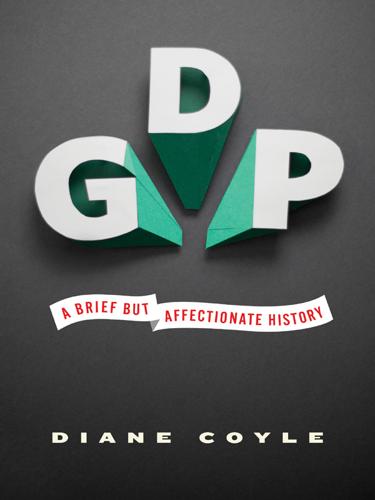
GDP: A Brief but Affectionate History
by
Diane Coyle
Published 23 Feb 2014
For example, in the United States the publication of Rachel Carson’s Silent Spring in 1962, about the effect of pesticide use on bird populations, is credited as one of the early seeds of the environmental movement. The Cuyahoga River in northern Ohio caught on fire in 1969, spurring a number of environmental measures including the 1972 Clean Water Act (with limited impact, the Love Canal scandal later in the 1970s would suggest). But there was a new tide of concern about the global environment, the big picture, in other Western countries, too. Seeing the Earth from space had given us a vivid new perspective. Perhaps prosperity itself created the opportunity to reflect on the effects of growth.
…
Abramowitz, Moses, 113 Africa, 31–33, 72, 93, 138 Anders, William, 68 art, 127–28, 132 assets, contributing to sustainability, 134–35, 137 austerity measures, 23 Australia, 73, 109, 118 automation, 128–29 Bangladesh, 53 base year, in GDP calculations, 31, 33–34 Baumol, William, 127 Benford’s Law, 3, 143n3 Berners-Lee, Tim, 81 Bhalla, Surjit, 53 Bhutan, 112 Bos, Frits, 47–48 Boskin Commission, 35, 88 Brazil, 94, 125 Bretton Woods system, 48 BRIC economies, 94, 96 Brynjolfsson, Erik, 128–30 Burundi, 73 business, purpose of, 95 Campaign for Happiness, 112 Canada, 73, 89, 109 capabilities, 72–73, 134 capital consumption, 131 capitalism: 1970s crisis of, 59–75; 2008 crisis of, 93–118; achievements of, 5–6; innovation as hallmark of, 91; investment and depreciation, 131–33 capital widening, 132 Carson, Rachel, Silent Spring, 69 centrally planned economies, 46–47, 56, 60, 66–68 Central Statistical Office (United Kingdom), 18 Chad, 73 chain-weighted price indexes, 33–34 China: economic growth of, 94, 96–97; economic limitations of, 96–97; GDP of, 51–53, 96, 97; living standards in, 51, 57, 96; manufacturing and exporting in, 82, 97, 125; U.S. relations with, 97 Christophers, Brett, 104, 105 circular flow, 26–27, 27f, 57, 63 Clark, Colin, 12, 13, 17, 50, 84 Clean Water Act (1972), 69 Clegg, Nick, 110 Cobb, John, 116 Cold War, 46–47, 60, 66 communications technology, 81–82 communism, 46–47, 60, 66–68, 96 compound arithmetic, 64, 83, 130–31 comprehensive wealth, 133, 135 computers, 80–82, 87–88 conspicuous consumption, 112 consumerism, 45, 112 consumer spending (C), 27–28, 45 consumer surplus, 130 customization, of goods and services, 123–25 Cuyahoga River, 69 Daly, Herman, 116 Darling, Alastair, 102 dashboard approach, 118, 136 data collection, 33, 37, 51–53, 137–38 Data Resources, Incorporated (DRI), 21 Davenant, Charles, 8 David, Paul, 79 Defense Advanced Research Projects Agency (DARPA), 81 defense spending, 14–16 deferred stock options, 37 deflators, 31 Defoe, Daniel, 9 DeLong, Brad, 86, 117 Democratic Republic of Congo, 54, 73 Deng Xiao Ping, 96 depreciation, 25, 30, 131–33 developed/high-income countries: GDP of, 72, 93; informal economy in, 107 developing/low-income countries: economic growth/stagnation in, 61, 71–72; GDP of, 32–33, 51, 71–72; informal economy in, 107, 109; and PPP, 50–53 development aid, 72, 74 digital products and services, 129–31 disasters, GDP growth after, 43 Domar, Evsey, 55 double-entry bookkeeping, 8 Easterlin, Richard, 111 Eckstein, Otto, 21 econometric models, 20–21, 23 economic growth: critiques of, 60; in eighteenth and nineteenth centuries, 12; lack of, in developing countries, 61; meanings and measures of, 15; meanings of, 123; potential rate of, 82–83; problems arising from, 63–64; real, 30–31; significance of, 135–36; sustainable, 71, 116, 137; theories/models of, 55–57, 78–81; virtuous circle of, 57, 59, 64, 73, 79; well-being and welfare aided by, 135 economics, challenges to conventional, 59–61 economic welfare.
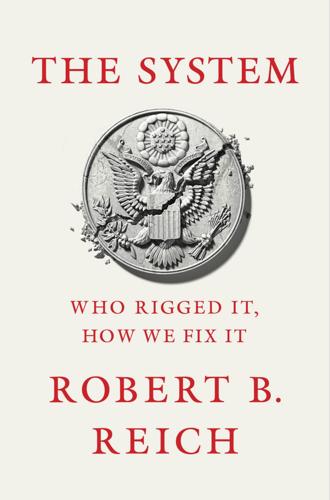
The System: Who Rigged It, How We Fix It
by
Robert B. Reich
Published 24 Mar 2020
the right to organize unions? a minimum wage? the length of patent protections?); (3) under what conditions (uninsured derivatives? fraudulent mortgages? mandatory arbitration of disputes?); (4) how to repay what’s owed (debtor’s prison? bankruptcy? corporate bailouts?); (5) what’s private and what’s public (clean air and clean water? health care? good schools?); and (6) how to pay for what’s deemed to be public (corporate taxes? personal income taxes? a wealth tax?). These rules do not exist in nature. They are human creations. Governments don’t intrude on free markets. Governments organize and maintain markets. The system is created by people.
…
As I’ve noted, twenty-one of the CEOs signing your statement preside over hugely profitable corporations that didn’t pay a cent of federal income tax in 2018, in part due to the corporate tax cut you and they successfully lobbied for. Your bank, JPMorgan Chase, got a whopping tax cut, too. The programs you’ve initiated for worker training and affordable housing are commendable, but they’re insignificant compared to those tax cuts. How do you expect our communities to pay for the schools, roads, clean water, and social services they need unless you and your colleagues push for higher taxes on corporations and yourselves? If you and the other members of your Business Roundtable were serious about becoming responsible to all your stakeholders, you’d use your formidable political power to reduce your power relative to them.
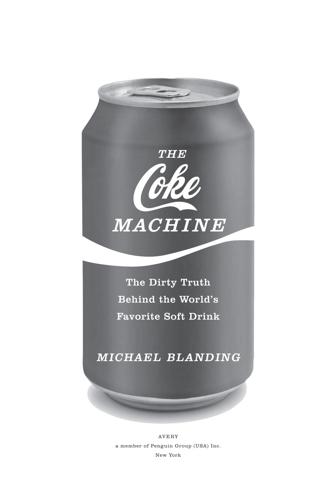
The Coke Machine: The Dirty Truth Behind the World's Favorite Soft Drink
by
Michael Blanding
Published 14 Jun 2010
(The contract lasted only until 1994, however, when Coke sold its Florida orange groves, which effectively ended union representation in the state.) On some level, Austin’s rhetoric about changing the world was genuine. Under a principle he dubbed the “halo effect,” the company launched new initiatives on recycling and acquired a company called Aqua-Chem to produce desalinization plants to provide clean water in the Middle East— even though the subsidiary never turned a profit. The company’s new so cial thrust, however, wasn’t completely uncalculated. Now that love beads and folk music were safe cultural touchstones, Coke glommed on to the hippie movement for its biggest transformation in decades. The company had already gone from a medicinal cure-all to sign of good breeding, from refreshing pause to all-American icon.
…
In Nestlé’s case, the company was tapping underground aquifers around the United States, as citizens from Maine to California and Michigan to Texas complained about dried-up streams and dropping water levels around their plants. But at least Nestlé could legitimately call its “spring water” a unique T H E B O T T L E D WAT E R L I E 125 beverage. Coke and Pepsi were bottling municipal tap water, passing os tensibly clean water through additional purification processes, and then selling it for a huge markup. Meanwhile, Coke’s huge advertising cam paign touting Dasani’s “purity” further undermined public confidence in tap water, they argued, leading to more bottled water sales and less invest ment in public infrastructure.
…
Within just a few weeks, it signed on several thousand people, celebrities among them, including actor Martin Sheen. In late 2007, actors Sarah Jessica Parker and Lucy Liu supported a project to charge $1 for tap 1 32 THE COKE MACHINE water in New York City restaurants to raise money for UNICEF’s clean water efforts abroad. They raised $100,000. By that fall, Nestlé had joined Pepsi in revealing the source of its water on its labels—and went even further by including detailed water quality information on its website for all brands by 2009. Alone among the Big Three bottled water producers, Coke held out.

The War Below: Lithium, Copper, and the Global Battle to Power Our Lives
by
Ernest Scheyder
Published 30 Jan 2024
Elena Vardon, “Glencore and Li-Cycle Plan to Build Battery Recycling Hub In Italy,” The Wall Street Journal, May 10, 2023, www.wsj.com/articles/glencore-and-li-cycle-plan-to-build-battery-recycling-hub-in-italy-58960d31. 18. Perpetua Resources press release, “Perpetua Resources and Nez Perce Tribe Reach Agreement in Principle Under the Clean Water Act,” June 20, 2023, www.prnewswire.com/news-releases/perpetua-resources-and-nez-perce-tribe-reach-agreement-in-principle-under-the-clean-water-act-301854763.html. 19. Matthew Daly, “Biden Administration Clarifies 1872 Mining Law; Says Huge Nevada Lithium Mine Can Proceed,” Associated Press, May 16, 2023, apnews.com/article/mining-lithium-nevada-thacker-rosemont-decision-c7e251ef3994dfea4f2dff58322ff4ac. 20.
…
“Suddenly you are seeing a number of Republicans, including some prominent Republicans, including some very conservative ones, saying, ‘Hold on a moment, maybe Pebble Mine is not a good idea, maybe you should do whatever you can not to despoil nature, and maybe not all environmentalism is about climate,’ ” Carlson told his millions of viewers, including the forty-fifth president.61 It wasn’t altruistic, though: Carlson and for that matter Trump Jr. enjoyed fishing and hunting in Alaska’s Bristol Bay region.62 Trump got Fox’s message, despite Northern Dynasty and Pebble launching an advertising campaign targeted at the president in the middle of the Republican National Convention. On August 24—ten days after Carlson’s broadcast—the Army Corps of Engineers said it was impossible to permit the mine under the Clean Water Act because it would “likely result in significant degradation of the environment and would likely result in significant adverse effects on the aquatic system or human environment.”63 The state’s two powerful Republican senators, Lisa Murkowski and Dan Sullivan, abandoned their support for the project.64 Shares in Northern Dynasty fell by more than 40 percent.
…
“Buck” McKeon National Defense Authorization Act, 37 Carlson, Tucker, 168 Carpenter, Hugh and Libby, 200–201, 207 Carrizal Mining, 71 Carter administration, 82 Car Wars (Fialka), 8 Cassadore, Marlowe, 50 Catholic Church, 47 CATL, 271, 295, 299 cell phones, 7, 158, 229, 231, 249–50 Center for Biological Diversity, 108, 148, 170, 172, 173, 176, 183–85, 189, 290 Central Intelligence Agency, 267 Cerro Rico, 263 Chávez, Hugo, 263 Chevrolet Bolts, 178 Chevron, 7, 98, 110, 120, 127, 296 Chi’Chil Biłldagoteel, see Oak Flat Campground Chile, 17, 209, 215, 265, 266–67, 297 copper production in, 10, 53, 54 lithium production and, 10, 269 China, 4, 10, 12–13, 15, 18, 77, 87, 154, 209, 296, 299 African cobalt and, 224–26 antimony produced in, 151–52, 163–64 bastnaesite reserves in, 100, 106 Belt & Road Initiative of, 223 Bolivia lithium and, 269–71, 277, 295, 299 copper consumption and, 10, 53, 215 e-waste no longer accepted by, 239 rare earths and, 11, 14, 15, 98, 99, 103, 105–7, 108–17, 121–22, 148 recycling of lithium-ion batteries by, 233 China Molybdenum, 222–24 China Rare Earth Information Center, 105–6 Chinese Academy of Geological Sciences, 115 Chrysler, 8 Church, William, 212 Church of England, 18 circular economy, 234, 241 Citi, 19–20 CITIC Guoan Group Co., 271 Clarke, Tom, 113–17 Clean Water Act, 168 Clemente, Matthew, 115–17 Cliffs-Cleveland, 91 climate change, 5–6, 16, 22, 134, 135, 185–86 mining needed in fight against, 4, 15, 173, 194, 197, 215, 244 Clinton, Hillary, 29, 30 closed-loop manufacturing, 234 CNOOC, 110 cobalt, 6, 7, 105, 223–24 child labor used to extract, 11, 224–26, 233, 296 uranium commingled with, 101–2 Columbia University, 70 Committee on Foreign Investment in the United States (CFIUS), 109, 113–17 Common Ion Effect, 253–55 Comstock Seed, 286 Congress, U.S., 60, 61, 86, 90, 106, 124, 144, 164, 210 Inflation Reduction Act passed by, 13, 20, 143–44, 295 Reclamation Projects Authorization and Adjustment Act, 217 Space Industries Inc. and, 23–24 Strategic and Critical Materials Stock Piling Act, 152 Wilderness Act passed by, 81, 82 Conley, John, 255 Controlled Thermal Resources, 248–49 Conway, Tom, 89 Coors, 232 copper: EVs vs. internal combustion engines use of, 36, 87 history of, 35–36, 92, 212–13 increased demand for, 8–9, 14, 20, 35–36, 87, 165–66, 226–27, 296 potential wars fought over, 36 U.S. mines planned for, 11, 34, 82–95, 165–69 see also Resolution copper project Copper Corridor, 33 coral, 64, 66–67 Cortez Masto, Catherine, 143–46 Cotton, Tom, 124 COVID-19 pandemic, 10, 11–12, 14, 50, 122, 130–31, 148, 174–75, 194, 237 Credit Suisse, 296 Crook, George, 32 Cruz, Ted, 123 Curtis, Benjamin, 191 cyanide, 168 Daimler, 8 Daisy (iPhone recycling robot), 234–35 Dakota Access Pipeline, 50, 132, 136–37 DeBeltz, Dean, 93–95 Deep Green Resistance, 133–34, 138–39 Defense Department, U.S., 14, 37, 106, 110, 123, 124, 164, 219 Democratic Republic of Congo: child labor in, 11, 224–26, 233, 296 Chinese cobalt mines in, 15, 222–23 cobalt production in, 11, 223–25, 233, 296 Democrats, 55, 57, 58, 176, 296 Deng, Xiaoping, 106, 109 D’Esposito, Steve, 65 Detroit Copper Mining Company, 212 diamond trade, 63 direct lithium extraction (DLE), 199, 243–45, 254, 267, 270–71, 273, 282, 283, 285, 295, 297 developed by Dow, 249–52 Dirt Devil, 77 Doan, Leland and Ruth, 249–50 Dodge, William Earl, 211, 220 Donnelly, Patrick, 170–76, 179, 180–90, 287, 288–91, 294–95 Don’t Look Up (film), 19 Doolittle, Thomas, 35 Double H Mountains, 127 Dow, Herbert Henry, 249 Dow Chemical Co., x, 249–52, 256 Draft Environmental Impact Statements, 162 Du, Miranda, 133, 134, 149–50 Duluth Complex, 93 Duluth Metals Ltd., 82 Dunleavy, Mike, 296 Duran, Jessica, 71 E&E News, 139, 141 Earthworks, 18, 65, 67, 68, 72 Eberhard, Martin, 8 Ecopetrol, 285 Edison, Thomas, 35, 212–13, 274 Edmunds, 75 Edward VII, King of England, 90 Egan, Michael, 272, 273 Egan, Teague, 271–85, 295 Eichstaedt, Peter, 47 Eisenhower, Dwight, 36 Eisenhower, Mamie, 36 electric vehicles (EVs), 6, 8–9, 11–12, 13, 20, 25–26, 30, 47–48, 98, 158, 159, 174, 216, 232, 243 electronic waste produced by, 232 increased demand for, 12, 225, 237 supply chains for, global, 13, 121–22, 195 supply chain for, U.S., 25, 143, 145, 210 electronic waste, 231–32 El Paso Rod Mill, 216 El Teniente copper mine, x, 52 Ely, Minnesota, 83 Endangered Species Act of 1973, 290 endorheic basins, 265 Energy Department, U.S., 24, 177–78, 238, 245, 246, 247, 293–95, 298 Advanced Technology Vehicles Manufacturing (ATVM) loan program, 291–92 Critical Materials Institute, x, 122 EnergySource Minerals, 248–49, 255 EnergyX, 199, 271, 273–85, 295 environmental, social, and governance (ESG) standards, 279 Environmental Protection Agency, U.S., 6, 75, 107, 112, 154, 159, 166, 167, 168, 233 Erceg, Luka, 255 Erzar, Bill, 83–85 Escalera al Cielo (Ugalde), 280 European Union, 15, 77 EV1, 25 Evans, Jon, 146–49 evaporation ponds, 27, 107–8, 180, 243, 245, 247, 250, 253–55, 267, 282 Ewoyaa lithium project, xi ExxonMobil, 1–2, 7–8, 22, 143, 210, 296 F-35 fighter jets, 11, 98 Falk, Will, 133, 134, 139, 148 Farley, Jim, 20 Featherstone, John, 255 Fialka, John, 8 Field, Sally, 25 Fight Like Hell (Kelly), 220 Fish and Wildlife Service, U.S., 24, 173, 176, 177, 189, 290, 291, 293, 294 fishing industry, 66, 165, 166 Flake, Jeff, 59 flotation, 104 fluoride waste, 120, 121 FMC Corporation, 146, 252–55, 256, 258, 267 Foote Mineral, 253 Ford, Bill, 178 Ford, Henry, 243 Ford Motor Company, 8, 20, 72–73, 75, 178, 179, 243, 273, 292, 293, 299 Ford Foundation, 72 Forest Service, U.S., 49, 58, 60, 61, 65, 86 Forest Stewardship Council, 67 Foss, Michelle Michot, 230 Fox News, 168 Framework Convention on Climate Change, 5 Francis, Pope, 47, 226 Free, Prior, and Informed Consent (FPIC), 55, 149 Freeport-McMoRan, 35, 53–54, 213, 215–27, 254 Furtado, Doug, 171–72 Fusion Enertech, 271 gabbro, 92 Galeano, Eduardo, 263 Ganfeng Lithium Co., 130, 147, 149 Gao, Xiaoxia, 105 Garcia, Tashi, 228–29 Gaston, William, 191 Gates, Bill, 158, 179, 270 General Dynamics Corp., 98 General Motors, 25, 72, 105, 109, 123, 149, 243, 248, 273, 295, 296–97 Magnequench division of, 109, 110 Geological Survey, U.S., 53, 102, 127, 265, 267, 277 geothermal power, 247, 248, 255 Geronimo (Goyaalé), 48, 49 Ghana, 208, 210 Ghosh, Amitav, 16 Glasenberg, Ivan, 223–24 Glencore, 57, 164, 223, 239, 296 Global Geosciences, 30 see also ioneer glory holes, 37, 52–53 gold, 65, 104, 144, 152, 154, 156, 159, 162, 163, 165, 204–5, 219, 296 Goldman Sachs, 110, 174 Gonzalez, Lorena, 75 Good Samaritan legislation, 160 Gore, Al, 23 government-to-government consultation, 49, 55 grade, of metals, 34 Granholm, Jennifer, 178, 242–43, 246–47, 293, 295 Grant, Ulysses S., 33 Grasberg copper mine, xi, 219–22 Great American Outdoors Act, 167 Great Basin Resource Watch, 135 Greater Sage Grouse Amendment, 129 Greatest Trade Ever, The (Zuckerman), 162 Great Lakes Chemical Corporation, 252 Greenbushes lithium mine, xi greenhouse gas emissions, 6, 13, 215–16, 233 Greenpeace, 133–34, 297–98 Grenfell Tower fire, 153 Grijalva, Raul, 60 Grizzly Research, 122 ground squirrels, 176 Gschneidner, Karl, 107 Haaland, Deb, 86, 88 Harner, Paul, 113 Harris, Kamala, 57–58, 61, 143 Harro, Mark and Daniel, 169 Harvard University, 85 Hastings, Clara and Paul, 192–94 Hastings, Paula, 192–93 Hastings, Sylvia, 192 Hatch, 235–37 Hayhoe, Katharine, 185 Heard Museum, 57 Heinrich, Martin, 145–46 Hess, Marty, 101 Hicks, Kathleen, 242 Hirsch, Marx, 103 Hitachi Metals, 111 Hochschild, Adam, 224 Hochstein, Amos, 16–17 Hoffman, Nicole, 92–94 Hollande, François, 5 Holmes, Elizabeth, 274–75 Home Depot, 76, 77 Hoover, 77 House of Representatives, U.S., 59, 124, 144 Committee on Science and Technology, 107 Huston, Joseph, 117 hydroelectric power, 153, 163, 243 hydrometallurgical recycling, 238 Hyundai, 240 Icahn, Carl, 222 If You Poison Us (Eichstaedt), 47 Inconvenient Truth, An (film), 23 India, 15, 18, 99, 100–101 Indian Civil Rights Act, 48 Indigenous peoples: gender and, 139, 141 mining and, 47, 133, 136–37, 148–49, 158–60, 165–66, 296–97 mistreatment of, 32–34, 50, 212 Salar de Uyuni lithium projects and, 264–65, 268, 270, 278–79 see also Native Americans Indonesia, 10, 53–54 Industrial Revolution, 159 Inhofe, James, 109 Initiative for Responsible Mining Assurance (IRMA), 67–73, 159, 178, 297 Interior Department, U.S., 14, 86, 88, 102–3, 125–27, 129, 152, 170, 218, 295 Order No. 3355 of, 125–26, 130 internal combustion engines, 11, 36, 87, 152 International Boundary Water Treaty, 90–91 International Council on Mining and Metals, 218–19 International Energy Agency, 6 International Monetary Fund, 268 International Nickel Co., 82 International Space Station, 24 Inuit peoples, 165 ioneer, 30–31, 72–73, 108, 149, 171, 173–79, 184–86, 188–89, 196, 240–41, 286–92, 293–95, 298–99 Iorich, Vladimir, 113 Iowa State University, Ames Laboratory, 103–5, 106 iPhones, 98, 233–35, 240 iPods, 254–55 Iran, 15, 138 Iron Range, 80, 91 Irresponsible Pursuit of Paradise, The (Bowyer), 94–95 Irving, Kyrie, 296 Isaacson, Walter, 25 Ivanpah Lake, 107–8 Jackson, Lisa, 233–34 Jacques, Jean-Sébastien, 53 Jadar Valley lithium project, xi Jagersfontein tailings dam collapse, 19 Jaldin, Valeria Arias, 275, 277, 279 Japan, 11, 25, 28, 106, 233 Jefferies investment bank, 258 Jewell, Sally, 59–60 JHL Capital Group, 113–14, 117, 119 Jiang, Zemin, 106 Johnson, Lyndon B., 82, 84 Johnson, Rian, 264 Johnston, Tim, 235–37 Justice Department, U.S., 61 Juukan Gorge historical site, xi, 17, 54–55, 219 Keigher, Tom, 206–7 Kellar, Jon, 234 Kelly, Kim, 220 Kelly, Mark, 124 Kerala rare earths project, xi Kerry, John, 5 Khalil, Kellee, 276–79, 282 kilowatts, kilowatt hours vs., 8–9 Kim, Marcelo, 163–64 Kindness Is Cool, 273 King Leopold’s Ghost (Hochschild), 224 Kirchner, Cristina Fernández de, 28 Klobuchar, Amy, 93 Knapp, Alicia, 244–45, 246 Kochhar, Ajay, 235–38, 240–41 Koch Industries, 239 Kowalski, Michael J., 63–70, 72 Kushner, Jared, 85 Lacaze, Amanda, 111 Lake Minchin, 265 Lambertini, Marco, 298 landfills, 232–33 Lavan, Maryanne, 122 Lawrence Livermore National Laboratory, 255 Laxalt, Adam, 143–44, 146 leach pads, 216 lead-acid batteries, 7, 232–33, 250 leaf blowers, 74–78 Lee, John, 251–52 Leger, Beth, 288–90 leks, 129 Leopold III, King of the Belgians, 224 Lewis, Darrin, 41–43, 52 LG Chem, 239 Li-Cycle, 237–41, 296 recycling facilities, x light bulbs, 35, 99, 213 Lilac Solutions, 199, 271 Lindsay Light, 99 LiTAS, 283–84 lithium: bound with clay, 29, 127, 128, 135, 140, 209 connection to ancient volcanoes, 26 found in jadarite, 55 found in lepidolite, 26 found in petalite, 26 found in spodumene, 26, 195, 196, 205 history of, 26–27 increased demand for, 6, 13–14, 26, 30 portable factories for, 259–60, 296 silica and, 256, 259 transportation of, 228–32 uses for, 27 U.S. mines planned for, 11, 127–50, 170–90, 191–210 voltage and, 27 Lithium Americas Corp., 58, 128–33, 135, 136, 142–45, 147, 149–50, 240–41, 248, 292 lithium carbonate, 238, 240–41, 283 Lithium Corporation of America, 252, 267, 268 lithium hydroxide, 27, 205, 245, 258, 259, 283 lithium-ion batteries, 6, 8–9, 12–13, 134, 143, 195, 224, 237–38, 283–84 graphite and, 8, 9, 13–14 invention of, 1–2, 7–8, 249–51 in leaf blowers, 76–78 LFPs, 232 recycling of, 229–41, 296 spontaneous combustion of, 7, 228–31 U.S. production of, 195, 244, 269 Lithium Triangle, 265 Litinsky, Jim, 117, 119–24, 244 Livent, 71, 147, 194, 267 Lockheed Martin, 98, 124 Loda, Ken, 130–31 Lograsso, Tom, 122 Lonely Are the Brave (film), 182 López, Eusebio, 278 Lordstown Motors, 243 Los Angeles Times, 273 Lowry, Joe, 147 Lucid, 36, 239 Lufthansa, 230 Lynas, 110–11 Lyon, Mckinsey, 156–61, 169 Macri, Mauricio, 128 Magma Mine, 34, 41, 52 magnesium, 16, 250, 253, 254, 265, 267, 268, 269, 282 magnets: neodymium-iron-boron, 105, 109 rare earths, 15, 98, 105, 109, 110, 123, 234 samarium-cobalt, 105 Mamani, Jhonny, 275 Manchin, Joe, 15, 143–44 Manhattan Project, 103–4 Marcus-Blank, Josh, 145 Marriott, Vincent, 114–17 Masters, Kent, 210 McCain, John, 49, 51, 58–59, 219 McCarthy, Gina, 242 McCollum, Betty, 88 McDermitt volcanic formation, 135, 140 McKibben, Bill, 132 McKinney, Gary, 133, 139 McSwane, J.
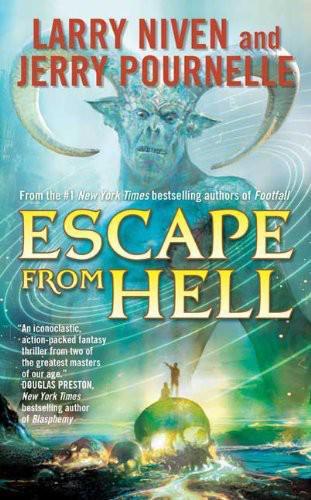
Escape from Hell
by
Larry Niven; Jerry Pournelle
Published 1 Apr 2010
Chapter 2 The Tenth Circle Ice * * * Whereat I turned me round, and saw before me, And underfoot a lake, that from the frost The semblance had of glass, and not of water. The grotto looks jeweled; it’s brighter than it ought to be. It’s not very large. I took a tourist trip to Lourdes once and it reminds me of that. A stream of clean water runs through it. I had a drink from it, the first cool, sweet water I’d tasted since I died. The grotto is at the very bottom of Hell, through the lake of ice and down. There are two ways out. One is straight up, and if Dante’s right, that’s a four–thousand–mile climb to the Earth’s surface. That’s the way Benito took, dwindling to a dark mote on a bright dot, then gone.
…
The stairway behind us was invisible, and we weren’t really leaving any kind of trail. The way got tougher as we went. There were laurel trees and kudzu vines everywhere, and the farther we went the thicker they got. The fog got thicker, too, and it stank. It was hard going, crashing through the laurel thicket and kudzu. If I’d seen clean water … well, we were both still filthy from the Circle of Gluttons. We reeked. It bothered her more than me. She’d been fastidious about her appearance even back in the Vestibule. The ground was getting soggy. Soon enough we were wading, but it wasn’t water you’d use for washing. A shape rose out of the swamp, a giant, all muscles and no neck.
…
She hurried toward the door he’d indicated. “Thank you. I’ll be right back.” We waited. No one paid me the slightest heed. The office was large, with bookcases and file cabinets, very much a working office. After what seemed a long time, Rosemary came out. She looked well groomed, very professional. She’d obviously found a comb and clean water but no makeup. Her hair was brushed straight back and down, giving her a rather severe look. She’d also washed all the stains out of her robe. Rosemary sat at the table. “Thank you, James.” “You’re welcome.” “You want me to be your Lead Deputy Prosecutor. With how large a staff?” “As many as you like.
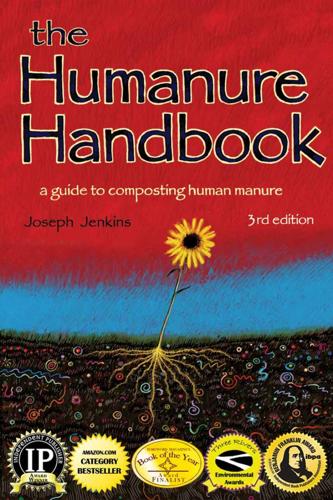
The Humanure Handbook: A Guide to Composting Human Manure
by
Joseph Jenkins
Published 10 Nov 2017
The impacts of polluted water are far-ranging, causing the deaths of 25 million people each year, three-fifths of them children.22 Half of all people in developing countries suffer from diseases associated with poor water supply and sanitation.23 Diarrhea, a disease associated with polluted water, kills six million children each year in developing countries, and it contributes to the deaths of up to 18 million people.24 At the beginning of the 21st century, one out of four people in developing countries still lacked clean water, and two out of three lacked adequate sanitation.25 Proper sanitation is defined by the World Health Organization as any excreta disposal facility that interrupts the transmission of fecal contaminants to humans.26 This definition should be expanded to include excreta recycling facilities. Compost toilet systems are now becoming internationally recognized as constituting “proper sanitation,” and are becoming more and more attractive throughout the world due to their relatively low cost when compared to waterborne waste systems and centralized sewers.
…
No electricity is needed and no water is required except a small amount for cleaning purposes. One gallon of water can clean two five gallon receptacles. It takes one adult two weeks to fill two five gallon toilet receptacles with humanure and urine, including cover material. This requires one gallon of cleaning water for every two weeks of humanure toilet use as opposed to the standard thirty gallons per person per day used to flush a water toilet. The compost, if properly managed, will heat up sufficiently for sanitation to occur, thereby making it useful for gardening purposes. The composting process is fast, i.e., the humanure is converted quickly — within a few days if not frozen — into an inoffensive substance that will not attract flies.
…
Testing the Waters VIII: Has Your Vacation Beach Cleaned Up Its Act?. Washington, D.C.: Natural Resources Defense Council, Inc.; NRDC Worldview News. (1998). Pollution Persists at US Beaches. Washington, D.C.: Natural Resources Defense Council, Inc. 16 - Whitaker, Barbara, Federal Judge Rules Los Angeles Violates Clean Water Laws, N. Y. Times, Dec. 24, 2002 17 Bitton, Gabriel. (1994). Wastewater Microbiology. New York: Wiley-Liss, Inc., p. 368-369. 18 National Resources Defense Council. (1997). Bulletin: Stop Polluted Runoff - 11 Actions to Clean up Our Waters. http://www.nrdc.org/nrdcpn/fppubl.html. 19 - Wastewater Microbiology, p. 86. 20 - Ralof, Janet. (1998 March 21).
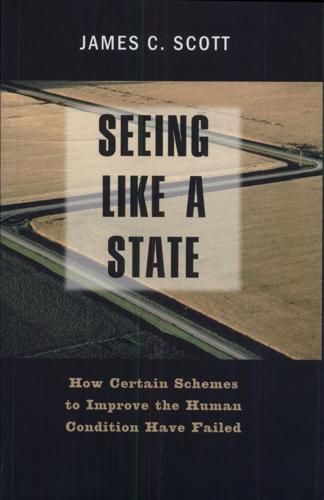
Seeing Like a State: How Certain Schemes to Improve the Human Condition Have Failed
by
James C. Scott
Published 8 Feb 1999
It goes without saying that the settlements of the Federal Land Development Authority (FELDA) allowed the state to control the mix of export crops, to monitor production and processing, and to set producer prices in order to generate revenue. The publicly stated rationale for planned settlement schemes was almost always couched in the discourse of orderly development and social services (such as the provision of health clinics, sanitation, adequate housing, education, clean water, and infrastructure). The public rhetoric was not intentionally insincere; it was, however, misleadingly silent about the manifold ways in which orderly development of this kind served important goals of appropriation, security, and political hegemony that could not have been met through autonomous frontier settlement.
…
As in the "unimproved" forest, the existing patterns of settlement and social life in Tanzania were illegible and resistant to the narrow purposes of the state. Only by radically simplifying the settlement pattern was it possible for the state to efficiently deliver such development services as schools, clinics, and clean water. Mere administrative convenience was hardly the only objective of state officials, and that is our second point. The thinly veiled subtext of villagization was also to reorganize human communities in order to make them better objects of political control and to facilitate the new forms of communal farming favored by state policy.
…
However enthusiastic they were in spearheading their campaign, the political leaders of Tanzania were more consumers of a high-modernist faith that had originated elsewhere much earlier than they were producers. What was perhaps distinctive about the Tanzanian scheme was its speed, its comprehensiveness, and its intention to deliver such collective services as schools, clinics, and clean water. Although considerable force was applied in seeing the scheme through, even then its consequences were not nearly as brutal or irremediable as those of Soviet collectivization." The Tanzanian state's relative weakness and unwillingness to resort to Stalinist methods" as well as the Tanzanian peasants' tactical advantages, including flight, unofficial production and trade, smuggling, and foot-dragging, combined to make the practice of villagization far less destructive than the theory."'
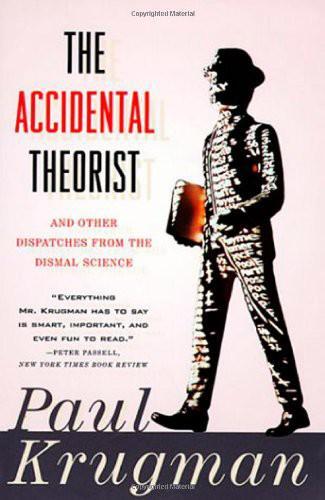
The Accidental Theorist: And Other Dispatches From the Dismal Science
by
Paul Krugman
Published 18 Feb 2010
It isn’t as easy to summarize federal regulation as it is to summarize federal spending, but the basic point is similar: Most of what the government does is actually serving, not opposing, the public’s will. Lots of people snicker at snail-darter jokes, but only a small minority wants to see a repeal of the clean-air or clean-water laws. And the voters are prepared to punish those politicians whom they suspect of belonging to that minority. Of course, the federal government wastes a lot of money; so does the private sector (have you read “Dilbert” lately?). But the kind of oppressive government, run by meddling elitists, that Bob Dole tried to tell us about in San Diego exists only in the conservative imagination.
…
Environmental issues, however, more or less by definition involve situations in which the price is wrong—in which the private costs of an activity fail to reflect its true social costs. Let me quote from the textbook (by William Baumol and Alan Blinder) that I assigned when I taught Economics 1 last year: “When a firm pollutes a river, it uses some of society’s resources just as surely as when it burns coal. However, if the firm pays for coal but not for the use of clean water, it is to be expected that management will be economical in its use of coal and wasteful in its use of water.” In other words, when it comes to the environment, we do not expect the free market to get it right. So what should be done? Going all the way back to Paul Samuelson’s first edition in 1948, every economics textbook I know of has argued that the government should intervene in the market to discourage activities that damage the environment.
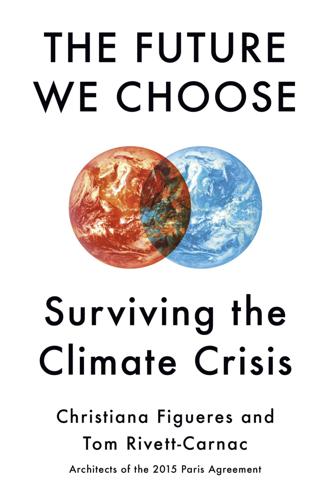
The Future We Choose: Surviving the Climate Crisis
by
Christiana Figueres
and
Tom Rivett-Carnac
Published 25 Feb 2020
In remote areas, the billion people who had no electricity at the start of the twenty-first century now have energy generated by their own rooftop solar modules or by wind-powered minigrids in their communities. This new access opened the door to so much more. Entire populations have leaped forward with improved sanitation, education, and health care. People who had struggled to get clean water can now provide it to their families. Children can study at night. Remote health clinics can operate effectively. Homes and buildings all over the world are becoming self-sustaining far beyond their electrical needs. For example, all buildings now collect rainwater and manage their own water use.
…
Two extremely useful articles on this subject are Jonathan Rowe and Judith Silverstein, “The GDP Myth,” JonathanRowe.org, http://jonathanrowe.org/the-gdp-myth, originally published in Washington Monthly, March 1, 1999; and Stephen Letts, “The GDP Myth: The Planet’s Measure for Economic Growth Is Deeply Flawed and Outdated,” ABC.net.au, June 2, 2018, https://www.abc.net.au/news/2018-06-02/gdp-flawed-and-out-of-date-why-still-use-it/9821402. 65. United Nations, “About the Sustainable Development Goals,” https://www.un.org/sustainabledevelopment/sustainable-development-goals/. These goals are: No Poverty; Zero Hunger; Good Health and Well-being; Quality Education; Gender Equality; Clean Water and Sanitation; Affordable and Clean Energy; Decent Work and Economic Growth; Industry, Innovation, and Infrastructure; Reduced Inequalities; Sustainable Cities and Communities; Responsible Consumption and Production; Climate Action; Life Below Water; Life on Land; Peace, Justice, and Strong Institutions; Partnerships for the Goals. 66.

The View From Flyover Country: Dispatches From the Forgotten America
by
Sarah Kendzior
Published 24 Apr 2015
Their children, who have no stake in this battle, are supposed to suffer, and their parents are supposed to watch? Is that the lesson we are passing on—that poor children are inherently undeserving of a basic provision in one of the richest countries in the world? A Third World Problem? U.S. citizens denied clean water often compare their situation with that of distant, disenfranchised lands. “It’s frightening, because you think this is something that only happens somewhere like Africa,” a mother in Detroit told the LA Times. “It’s like we’re living in a Third World country,” a West Virginian told The New Yorker.
…
Water is a right, and denial of water is a form of social control. In Ukraine, water and electricity were cut off in certain regions following the Russian incursion. In Syria, multiple political groups manipulated the water supply at different times, leaving roughly one million people without access to clean water or sanitation. In Gaza, hundreds of thousands of Palestinians lack water, including those living in hospitals and refugee camps. On July 15, citizens of Detroit held a rally in solidarity, holding signs that said, “Water for all, from Detroit to Palestine.” A basic resource has become a distant dream, a longing for a transformation of politics aimed at ending suffering instead of extending it.

X-T3 user guide
by
FUJIFILM Corporation
Published 10 May 2019
Use only batteries or AC power adapters specified for use with this camera. Do not use voltages other than the power supply voltage shown. The use of other power sources can cause a fire. If the battery leaks and fluid gets in contact with your eyes, skin or clothing, flush the affected area with clean water and seek medical attention or call an emergency number right away. Do not use the charger to charge batteries other than those specified here. The supplied charger is for use only with batteries of the type supplied with the camera. Using the charger to charge conventional batteries or other types of rechargeable batteries can cause the battery to leak, overheat or burst. 12 CAUTION Do not cover or wrap the camera or the AC power adapter in a cloth or blanket.
…
Take the urgent action China. indicated should any of the following situations arise: Exif Print (Exif Version 2.3) • If liquid crystal comes in contact with your skin, clean the Exif Print is a newly revised digital camera file format in which area with a cloth and then wash thoroughly with soap and information stored with photographs is used for optimal colrunning water. or reproduction during printing. • If liquid crystal enters your eyes, flush the affected eye with clean water for at least 15 minutes and then seek medical IMPORTANT NOTICE: Read Before Using the Software assistance. Direct or indirect export, in whole or in part, of licensed soft• If liquid crystal is swallowed, rinse your mouth thoroughly ware without the permission of the applicable governing with water.
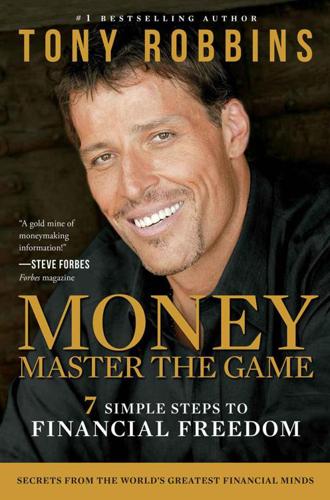
MONEY Master the Game: 7 Simple Steps to Financial Freedom
by
Tony Robbins
Published 18 Nov 2014
In fact, every 20 seconds, another child dies from a waterborne disease—and more have perished than the total number of people who’ve died in all the armed conflicts since World War II. This is why the second commitment of SwipeOut is to swipe out waterborne disease and provide clean water for as many children as possible worldwide. There are a variety of organizations with sustainable solutions out there, and some require as little as $2 a person to provide these children and their families with a reliable supply of clean water. WHAT’S THE PRICE OF FREEDOM? Throughout this book, we’ve been working to make sure that you can achieve financial freedom. What about investing a tiny fraction of what you spend each month to help secure freedom for one of the 8.4 million children in the world trapped in slavery?
…
I provide fresh water for 100,000 people a day in India—it’s one of my passions. Wouldn’t it be amazing for us together to provide 3 million people with clean water a day and grow it from there? Or how about together freeing 5,000 children who had been enslaved, and supporting their education and a path to a healthy life? That’s what the power of just 100,000 of us can do. Just as I built my foundation, this mission could grow geometrically. If over a decade or more we could find a way to grow to a million members, that would be a billion meals provided each year, 30 million people with clean water, or 50,000 children freed from slavery. These figures would be extraordinary, but in truth, even one child’s life saved would be worth all the effort.
…
Lack of fresh water is one of the biggest concerns for populations growing like crazy in dry regions of the planet, and shortages are everywhere, from Los Angeles, California, to Lagos, Nigeria. According to the UN, more than 3.4 million people die each year because of water-borne diseases. But new desalinization technologies are turning seawater into tap water from Australia to Saudi Arabia. Already an Israeli company called Water-Gen is manufacturing a machine that extracts clean water out of air, and it uses only two cents’ worth of electricity to produce each liter of water. And in remote villages that have no electricity, there’s a new kind of water tower that uses only its shape and natural materials to pull moisture out of the air and turn it into drinking water. The amazing inventor Dean Kamen (best known for the Segway scooter) has partnered with Coca-Cola to bring the world an energy-efficient machine the size of a dorm-room refrigerator that vaporizes dirty water and makes it clean and safe.
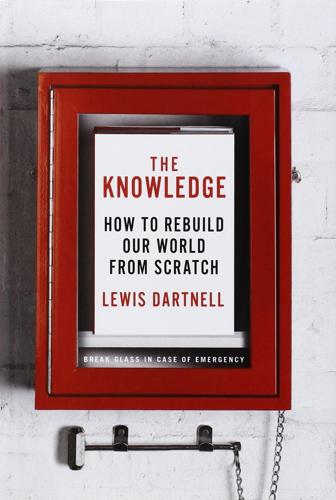
The Knowledge: How to Rebuild Our World From Scratch
by
Lewis Dartnell
Published 15 Apr 2014
But you also need to nurture the recovery of scientific investigation and provide the most worthwhile kernels of knowledge to begin exploring.* We’ll start with the basics and see how you can provide the fundamental elements of a comfortable life for yourself after the Fall: sufficient food and clean water, clothes and building materials, energy and essential medicines. There will be a number of immediate concerns for the survivors: cultivable crops must be gathered from farmland and seed caches before they die and are lost; diesel can be rendered from biofuel crops to keep engines running until the machinery fails, and parts can be scavenged to reestablish a local power grid.
…
Bottled water can be scavenged from supermarkets and from water coolers in office buildings. Other reservoirs of water you’ll be able to drain include hotel and gym swimming pools, as well as the hot water tanks in any large building. In time, you’ll come to rely on water sources you’d normally have wrinkled your nose at. Every survivor will need at least three liters of clean water every day, and more in hot climates or with exertion. And keep in mind that this is for rehydration alone, and does not include water necessary for cooking and washing. Water that doesn’t come from a sealed bottle must be purified. A surefire method for sterilizing water of pathogens is to bring it to a hearty boil for a few minutes (although this offers no protection against chemical contamination).
…
Even something as historically devastating as cholera is not actually directly lethal: you die from rapid dehydration resulting from the profuse diarrhea, losing as much as 20 liters of body fluid a day. The treatment, therefore, is astoundingly straightforward, even though it was not widely adopted until the 1970s. Oral rehydration therapy (ORT) consists of no more than a liter of clean water with a tablespoon of salt and three tablespoons of sugar stirred in, to replace not only the water lost in the sickness, but also your body’s osmolytes. To survive cholera you don’t need advanced pharmaceuticals, just attentive nursing. CHILDBIRTH AND NEONATAL CARE Without modern medical intervention, childbirth will once again become a dangerous time for both mother and child.

Falter: Has the Human Game Begun to Play Itself Out?
by
Bill McKibben
Published 15 Apr 2019
The pattern of our lives is set by the span we hope to live: we know how much time we can allot to education, and we can tell the prime of our lives, and if we’re brave enough to acknowledge it, we can prepare for our approaching death. It’s true that the average human life span has increased, mostly because far fewer babies die and because advances such as basic sanitation have dramatically reduced disease. Researchers studying chlorination have found that clean water led to a 43 percent reduction in mortality in the average American city, a reminder of what happens when we work together.1 But the people who live the longest aren’t living any longer. A hundred and fifteen years appears to be pretty near the upper edge, a boundary set by the so-called Hayflick limit on the number of times human cells can divide; so far it has been as inviolate for humans as the speed of light.
…
That unprecedented display of concern (and some subsequent electoral defeats for politicians tied to polluters) jolted Washington. With the usual balance of power upended, for a few years, major corporations lost one battle after another: Richard Nixon, no environmentalist, had little political choice but to sign the Clean Air Act, the Clean Water Act, the Endangered Species Act, and the other environmental laws still in effect today. But success can sap movements. The organizations that had taken to the streets now retreated to big Washington offices, where they concentrated on lobbying. For a while, that strategy worked, because that first Earth Day had put enough juice in the battery to run a powerful motor for a decade or two.
…
BusinessWeek Cairo Calcutta Calico California floods and wildfires and Cambrian explosion Cambridge Analytica campaign finance Canada cancer Cape Canaveral Cape Cod Cape of Good Hope Cape Town capitalism carbon cap-and-trade carbon dioxide emissions Bush, G.W., and cognitive ability and drought and extinctions and heat trapping and increase in natural gas vs. coal and nutrients in crops and oceans and oil industry research and permafrost and rainfall and reducing U.S. footprint and sea level and “Carbon Dioxide: They Call It Pollution” (TV ad) carbon taxes Cargill Carnegie, Andrew Carson, Rachel Carter, Clint Cas9 enzyme cattle ranching cedars of Lebanon Center for Genetics and Society Center for Libertarian Studies Center for the Study of Public Choice Centers for Disease Control cereals CertainTeed Corporation Charpentier, Emmanuelle Chattanooga, Tennessee Chaucer, Geoffrey chemotherapy Cheney, Dick Chevron Oil China chlorination chlorofluorocarbons choice Christianity Church, George Churchill, Canada Churchill, Winston CIMON (Crew Interactive Mobile CompaniON) Citizens United civil disobedience civil rights movement Clean Air Act Clean Water Act Cleveland Clinic climate change. See also atmospheric temperature, rise in; oceans; and specific energy sources; and impacts advanced nature of antigovernment ideology and difficulty of solving global rally of 2009 and Hansen on heat trapping gases and human nature and impact of Koch brothers and leverage and nonviolence and oil industry and politics and scientific consensus on slowing down Thatcher on Trump and climate change deniers climate scientists Clinton, Bill cloning coal coastal communities Collapse (Diamond) colonialism Columbus, Christopher Comfort, Nathaniel Common Cause commons, theory of communism community.
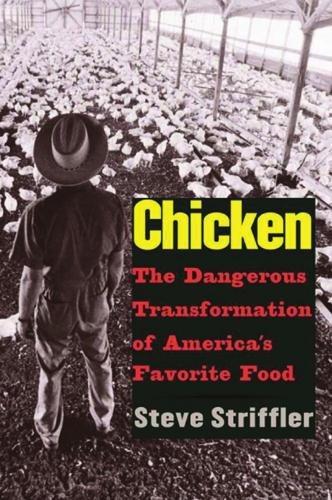
Chicken: The Dangerous Transformation of America's Favorite Food
by
Steve Striffler
Published 24 Jul 2007
According to the Environmental Protection Agency (EPA), Foster Farms, the largest poultry company in Toward a Friendlier Chicken 159 the West and a top-ten producer nationally, pled guilty in to “negligently discharging approximately million gallons of storm water polluted with decomposed chicken manure into the San Luis National Wildlife Refuge in violation of the Clean Water Act.” The company agreed to pay a criminal fine of $,. In January , Central Industries, along with its five subsidiaries (including BCR Foods, a top-twenty poultry producer), were indicted in Jackson, Mississippi, for violating the Clean Water Act. The company processes thousands of tons of poultry by-products, some of which, including untreated blood, bypassed the rendering plant and went directly into a wastewater lagoon, eventually seeping into local rivers.

A Short History of Progress
by
Ronald Wright
Published 2 Jan 2004
Yet the number in abject poverty today is as great as all mankind in 1901.64 By the end of the twentieth century, the world’s three richest individuals (all of whom were Americans) had a combined wealth greater than that of the poorest fortyeight countries.65 In 1998, the United Nations calculated that US$40 billion, spent carefully, could provide clean water, sanitation, and other basic needs for the poorest on earth.66 The figure may be optimistic, and it may have grown in the past six years. But it’s still considerably less than the funds already set aside for the obscenely wasteful fantasy of a missile shield that won’t work, isn’t needed, yet could provoke a new arms race and the militarization of space.
…
The three were Bill Gates (Microsoft), Helen Walton (Wal-Mart), and Warren Buffett (investor), with US$51 billion, $48 billion, and $33 billion, respectively. The report estimates that a child born in the United States, Britain, or France will, in its lifetime, consume and pollute more than fifty children do in the poor nations. It also estimates that in 1998, only $40 billion was needed to bring basic health, education, clean water, and sanitation to the world’s poorest citizens. Gates alone could afford that and still have $11 billion left; he also owns more than the poorest 100 million Americans combined. Other sources indicate that within the United States, the ratio between the salary of a CEO and that of a shop-floor worker has soared from 39:1 in the late 1970s to about 1,000:1 today.

The Second Intelligent Species: How Humans Will Become as Irrelevant as Cockroaches
by
Marshall Brain
Published 6 Apr 2015
What the aliens discover about the human species as a whole would shock them: Three billion of the people on the planet – approximately half – are destitute. They live in shocking poverty. There are 10 million children dying of easily preventable causes every year - things like starvation, thirst, cholera. Billions of people lack any form of health care. Billions of people lack access to basics like clean water, adequate food and safe housing. Environmentally, we are raping the planet in hundreds of ways. A mass extinction event is looming on the horizon, yet we appear unmotivated to do anything at all to prevent it. Humans are constantly at war, constantly killing one another somewhere in the world.
…
We should create Heaven on Earth for every human being - seven billion people living together peacefully, comfortably and without suffering. We try to get as close to that goal as possible, in an environmentally sustainable way. What would Heaven on Earth mean in reality? It would mean that each and every person on the planet has access to an an abundant supply of healthy food and clean water. That each and every person has access to luxurious housing and clothing. That we are all safe. That we can all communicate with everyone. That we all have free and open access to education and entertainment. That cutting edge health care is available freely to everyone, and the cutting edge is advancing as rapidly as possible, curing more and more diseases and ailments as fast as we can.
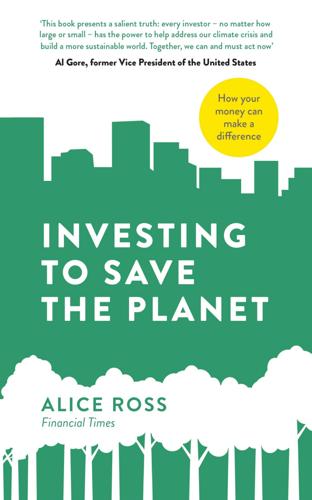
Investing to Save the Planet: How Your Money Can Make a Difference
by
Alice Ross
Published 19 Nov 2020
When the UN launched its 17 sustainable development goals (SDGs) in 2015, for example, it laid them out as a series of little coloured boxes with a logo on each one. Not all were directly climate change related – no poverty, zero hunger, and quality education were among the goals, for example. Others included climate action, affordable and clean energy, and clean water and sanitation. Fund managers now often say that their fund is investing in line with one or more of these goals. The well-designed logos have proven particularly impactful in marketing materials. ‘The person who invented those icons should be given a job at [advertising giant] Saatchi, as every investment manager is using them,’ jokes Michael Lewis, head of ESG thematic research at DWS, the German asset manager.
…
But there is also a view in the investment industry that some managers create products that might be compared to spaghetti – throwing them at the wall to see what sticks – in order to take advantage of a trend. One fund manager gives the example of water funds that say they invest in line with the SDG goal of clean water and sanitation. The goal is to address the lack of sanitation and improve access to safe drinking water, mainly in poor countries. Yet many water funds are stocked with Western utility companies, which, the manager says, ‘are processing rich people’s sewage when the problem is a lack of drinking water in the Third World.
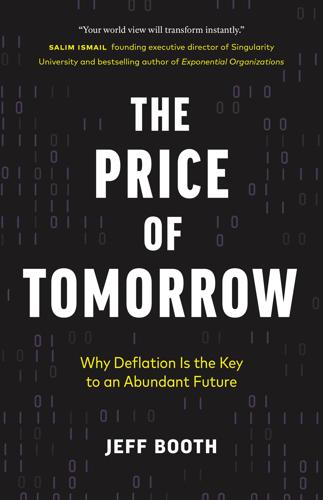
The Price of Tomorrow: Why Deflation Is the Key to an Abundant Future
by
Jeff Booth
Published 14 Jan 2020
Remember, energy price is often what determines economic viability, and as a result we likely discount the other things that are possible as energy is reduced in price. An underlying reason for refugee crises and pressure on immigration in developed countries around the world is the scarcity of basic resources like food and water. With lower-cost or free energy, why couldn’t there be there be an abundance of clean water? It’s not that technology doesn’t exist to convert salt water to fresh water. It has been around for decades; it just comes down to cost. The paradox of many coastal communities around the developing world is that even though they are surrounded by water, it is not usable for drinking or irrigation because of its salt content.
…
Desalination—the removal of salt from sea water—is much more efficient today through the large-scale use of reverse osmosis, a process whereby salt water is pumped through a water-permeable membrane. But though readily available, it’s not widely commercially viable because it takes a lot of energy: the operating pressures required are between 800 and 1,000 psi.40 Lower-cost energy completely upends that dynamic, bringing with it clean water and all the other accompanying benefits for society—including helping to prevent the environmental conditions that can lead to wars and refugee crises. Clean energy will stop adding more carbon dioxide to our environment, of course. Carbon dioxide emissions from the burning of fossil fuels have taken levels of greenhouse gases in our atmosphere to levels never before seen in human history: 415 parts per million.

The State and the Stork: The Population Debate and Policy Making in US History
by
Derek S. Hoff
Published 30 May 2012
Conversely, a barber in the stagnant upstate New York city of Gloversville, where my mother grew up, lamented to me that post–World War II population loss meant “ten thousand fewer haircuts every year.” Many individuals who write about environmental problems prefer to live in growing cities teeming with people and ideas. But at the macro level, global population growth makes it difficult to address climate change, species extinction, and lack of availability to clean water. Viewed through a wide-angle lens, the curve of human population growth since the birth of our species remained practically flat for tens of thousands of years but, after 1860, spiked dramatically upwards in a nearly vertical line, prompting some on Wall Street to refer to human population growth as the “ultimate bubble.”
…
Kennedy’s Council of Economic Advisers (CEA), meanwhile, deemed the wise management of natural resources essential to economic growth.11 As historian Paul Milazzo has shown, the pursuit of economic growth played an influential role in the environmental policy making of the 1950s–70s, especially in the promotion of clean water.12 At the same time, the Kennedy and Johnson administrations embraced the new postmaterialist, quality-of-life sensibility, becoming the only administrations in US history to make the quest for beauty a priority.13 From this point of view, the population surge was primarily a problem of abundance.
…
See Council of Economic Advisers, “The American Economy in 1961: Problems and Policies,” Statement of the Council of Economic Advisers before the Joint Economic Committee, March 6, 1961, Papers of President John F. Kennedy, John F. Kennedy Presidential Library, Boston, President’s Office Files, Departments and Agencies, Box 73, Folder “Council of Economic Advisers Testimony, 3/6/61”; and Paul Charles Milazzo, Unlikely Environmentalists: Congress and Clean Water, 1945–1972 (Lawrence: University Press of Kansas, 2006). 125. See, for example, John Maurice Clark, “Common and Disparate Elements in National Growth and Decline,” in Universities-National Bureau Committee on Economic Research, Problems in the Study of Economic Growth, 30–32. 126. Potter, People of Plenty, 59. 127.

Kingdom of Olives and Ash: Writers Confront the Occupation
by
Michael Chabon
Published 29 May 2017
And they can’t see family members in the West Bank and Israel. In Gaza, they can scarcely find work. And every few years, it seems, Hamas engages in a disastrous fight with its infinitely more powerful Israeli neighbors, and this further limits Gazan civilians’ ability to move in and out of Gaza, and curtails their access to goods, clean water, electricity, and opportunities. Basilah and many other Gazans I met refer to Gaza as an “open-air prison,” and it’s difficult to argue with the description. On Gaza’s northern border there is a twenty-five-foot wall separating Gaza from Israel. This barrier is forty miles long, and long stretches of it are thirteen feet higher than the Berlin Wall, and far more heavily fortified.
…
Along with the solar panels, the tank was supplied to the people of Susiya by the nonprofit Palestinian-Israeli organization Community Energy Technology in the Middle East (Comet-ME). Comet employs Ahmad, who holds a degree in laboratory science from al-Quds University. Its mission is to supply renewable energy and clean water services to some of the most impoverished and marginalized people in the occupied Palestinian territories. Including Susiya, Comet currently serves about thirty villages in the South Hebron Hills. These small hamlets are mostly composed of clans of shepherds and farmers who dwell in caves and tents, living much as their ancestors have for centuries, separating the wheat from the chaff, except that in recent history they’ve had the bulk of their land grabbed.
…
Nasser referred to the agreement reached twenty years earlier in the Oslo accords, after which there were to be no new settlements built. The number of settlers has tripled since that time. “It’s illegal for Mekorot and the Israel Electric Corporation to supply outposts like this, and yet they do it all the time.” I asked Nasser how access to clean water and electricity through Comet had affected his family. He gushed about how it had made life easier, but still emphasized the differences in Susiya (the Palestinian village) versus Susya (the Israeli settlement). “The revolution of electricity is like a river that can’t be stopped. This has given our dark life more light.
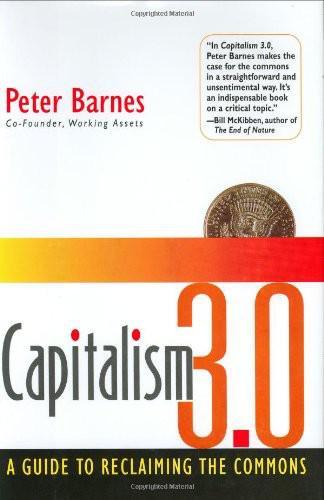
Capitalism 3.0: A Guide to Reclaiming the Commons
by
Peter Barnes
Published 29 Sep 2006
Some of the easements are purchased, others are donated by owners in exchange for tax benefits. Here again, owners keep their land but agree to forgo nonforest development and to harvest trees sustainably. PFT’s goal is to protect not only forests themselves but the many species that live in them, as well as the ecosystem services— such as clean water and carbon absorption—that forests provide. As with MALT, some of PFT’s money comes from public sources. In return, the public gets healthy forests for considerably less than it would cost to buy and manage them outright. Valves and Their Keepers One job of common property trusts is to preserve habitat and landscapes, but such trusts can also play another role—controlling the flow of pollution into ecosystems.
…
His bestselling book Progress and Poverty catapulted him to fame in the 1880s, but mainstream economists never took him seriously. By the twentieth century, economists had largely lost interest in rent; it seemed a trivial factor in wealth production compared to capital and labor. But the twenty-first century ecological crisis brings rent back to center-stage. Now it’s not just land that’s scarce, but clean water, undisturbed habitat, biological diversity, waste absorption capacity, and entire ecosystems. This brings us back to common property rights. The definition and allocation of property rights are the primary factors in determining who pays whom for what. If, in the case of pollution rights, pollution rights are given free to past polluters, the rent from the polluted ecosystem will also go to them.
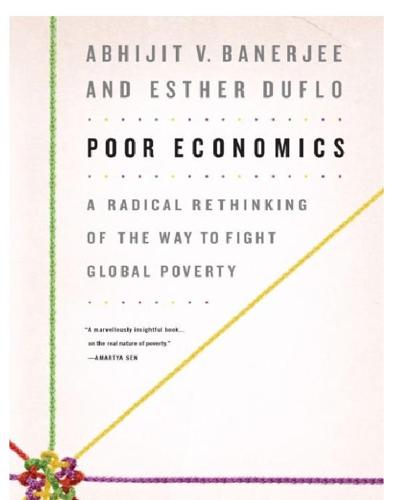
Poor Economics: A Radical Rethinking of the Way to Fight Global Poverty
by
Abhijit Banerjee
and
Esther Duflo
Published 25 Apr 2011
Thus, if malaria indeed reduces earnings in Kenya by 50 percent, a $14 investment will increase incomes by $295 for the 30 percent of the population that would have gotten malaria without the net. The average return is $88 every year over the child’s entire adult work life—enough for a parent to buy a lifetime supply of bed nets for all his or her children, with a chunk of change left over. There are other examples of highly effective health investments. Access to clean water and sanitation is one of them. Overall, in 2008, according to estimates by WHO and UNICEF, approximately 13 percent of the world’s population lacked access to improved water sources (typically meaning a tap or a well) and about one-fourth did not have access to water that is safe to drink.9 And many of these people are the very poor.
…
What the lack of demand underscores is perhaps the fundamental difficulty of the problem of health: The ladders to get out of the poverty trap exist but are not always in the right place, and people do not seem to know how to step onto them or even want to do so. The Desire for Better Health Since they do not seem to be willing to sacrifice much money or time to get clean water, bed nets, or for that matter, deworming pills or fortified flour, despite their potentially large health benefits, does that mean the poor do not care about health? The evidence suggests the opposite. When asked whether there was a period of a month in the recent past when they felt “worried, tense, or anxious,” roughly one-fourth of the poor in both rural Udaipur and urban South Africa said yes.20 This is much higher than what we see in the United States.
…
THE VIEW FROM OUR COUCH The poor seem to be trapped by the same kinds of problems that afflict the rest of us—lack of information, weak beliefs, and procrastination among them. It is true that we who are not poor are somewhat better educated and informed, but the difference is small because, in the end, we actually know very little, and almost surely less than we imagine. Our real advantage comes from the many things that we take as given. We live in houses where clean water gets piped in—we do not need to remember to add Chlorin to the water supply every morning. The sewage goes away on its own—we do not actually know how. We can (mostly) trust our doctors to do the best they can and can trust the public health system to figure out what we should and should not do.
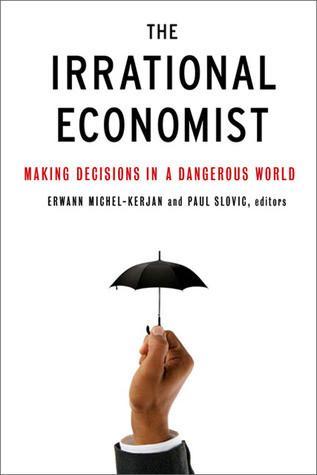
The Irrational Economist: Making Decisions in a Dangerous World
by
Erwann Michel-Kerjan
and
Paul Slovic
Published 5 Jan 2010
We must not only protect the countryside and save it from destruction, we must restore what has been destroyed and salvage the beauty and charm of our cities. Our conservation must be not just the classic conservation of protection and development, but a creative conservation of restoration and innovation. Johnson’s administration was responsible for the following items of legislation:• Clear Air, Water Quality and Clean Water Restoration Acts and Amendments • Wilderness Act of 1964 • Endangered Species Preservation Act of 1966 • National Trails System Act of 1968 • Wild and Scenic Rivers Act of 1968 • Land and Water Conservation Act of 1965 • Solid Waste Disposal Act of 1965 • Motor Vehicle Air Pollution Control Act of 1965 • National Historic Preservation Act of 1966 • Aircraft Noise Abatement Act of 1968 • National Environmental Policy Act of 1969 Many of these were the predecessors of legislation that today still forms the backbone of America’s environmental policy: The Endangered Species Preservation Act is the forerunner of the Endangered Species Act, and the Clear Air, Water Quality and Clean Water Restoration Acts and Amendments set the framework for the air and water quality legislation that we have today.
…
Johnson’s administration was responsible for the following items of legislation:• Clear Air, Water Quality and Clean Water Restoration Acts and Amendments • Wilderness Act of 1964 • Endangered Species Preservation Act of 1966 • National Trails System Act of 1968 • Wild and Scenic Rivers Act of 1968 • Land and Water Conservation Act of 1965 • Solid Waste Disposal Act of 1965 • Motor Vehicle Air Pollution Control Act of 1965 • National Historic Preservation Act of 1966 • Aircraft Noise Abatement Act of 1968 • National Environmental Policy Act of 1969 Many of these were the predecessors of legislation that today still forms the backbone of America’s environmental policy: The Endangered Species Preservation Act is the forerunner of the Endangered Species Act, and the Clear Air, Water Quality and Clean Water Restoration Acts and Amendments set the framework for the air and water quality legislation that we have today. At times, Johnson was passionate on environmental issues: He commented that “[t]here is no excuse for a river running red with blood from slaughterhouses. There is no excuse for paper mills pouring sulfuric acid into the lakes and streams of the people of this country.
…
Your fad is going right now. Get what you can, and here’s what I can get for you.”4 And he proceeded to get a remarkable amount for them. His legislative achievements include the National Environmental Policy Act, the establishment of the Environmental Protection Agency, the Clean Air Act, the banning of DDT, the Clean Water Act, and the Endangered Species Act. All of this legislation has continued to form the basis of our environmental policy for the last three decades, and no subsequent president has come close to this level of environmental activism. Perhaps surprisingly, there is no evidence that the state of the environment actually mattered personally and emotionally to Richard Nixon, as it clearly did to Teddy Roosevelt.
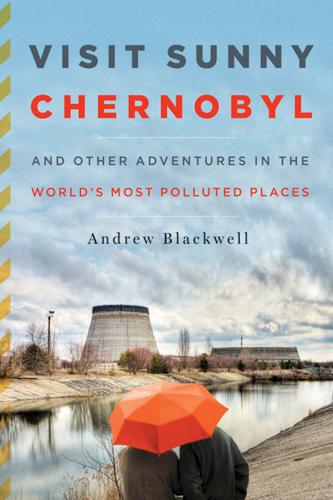
Visit Sunny Chernobyl: And Other Adventures in the World's Most Polluted Places
by
Andrew Blackwell
Published 22 May 2012
There are duck blinds, and a duck-identification chart from an organization called Ducks Unlimited, and a good number of actual ducks present on the lake, possibly including several I had recently failed to murder. So ducktastic was it that I began to wonder whether Suncor was trying to stick it to poor old Syncrude, with all its duck problems, just up the road. Surely some Suncor PR rep had hoped for a newspaper headline proclaiming, “Suncor, Neighbor to Duck-Destroyer Syncrude, Offers Clean Water, Reeds, at Waterfowl Haven.” I set out on my hike, keeping the lake on my right, ambling through a spray of purple wildflowers. There were dragonflies, again, and mosquitoes, too—snarling, clannish mosquitoes of the Albertan variety, with thick forearms and tribal tattoos. But I was ready. Don had lent me a bug jacket—a nylon shirt with a small tent for your head and face—and I had armed myself with enough spray-on DEET to poison a whole village.
…
Driving south, I passed the occasional clot of trash—a shattered television on the shoulder, a pink recliner submerged to its forehead in a placid side channel. Cormorants and pelicans wheeled by, and cranes and herons, and other long-necked beasties. Here and there, men sat by their pickup trucks and fished. The fish were not biting, they told me. Of course they’re not biting, I thought. You’re fishing in clean water. Finally I spotted a pair of SUVs parked by the canal that ran parallel to the road. It was Rhonda’s crew. I had caught them in the act. The pelican was already in the water, floating next to the reeds on the far side of the channel, maybe fifty feet away. I walked up to Rhonda and her three colleagues.
…
And he wanted to make sure I had my story straight. “People used to drink Yamuna to purify themselves,” he said. “Now you can’t even touch it. Recently some pilgrims drank some Yamuna water and had to be hospitalized that same night.” The villages along the river couldn’t use it as a water source anymore. “Can’t government provide people clean water?” he demanded. “If the government can put a Metro train a hundred feet underground, it can do this.” He chopped one hand against the other. Someone had to purify the purifier. “Until Yamuna is clean, we are not going to back off. This is higher than religion. Higher than human beings.” Hiking with the sadhus is cheaper than taking the bus, and more scenic, but you will have to come to terms with crapping in the open, which for Westerners can be profoundly difficult.

Adapt: Why Success Always Starts With Failure
by
Tim Harford
Published 1 Jun 2011
When John Nagl served in Baghdad in 2003, he found that while his young, inexperienced soldiers had the authority to kill, he – a major with a doctorate and a decade of experience – didn’t have the authority to print his own propaganda pamphlets to counteract the clever PR camign that the local insurgents were running. The commander of US forces in Baghdad in 2004 found that he couldn’t tap into the massive USAID budget to provide electricity, clean water, jobs and other assistance to the locals. The budget had been assigned in Washington DC to the Bechtel Corporation, which had been commissioned to carry out a few very large, long-term projects instead. The commander could see immediate needs but had no authority to act. Over time, the Army learned to decentralise these essential decisions to the same extent that they had decentralised the authority to shoot people.
…
We may have booming universities and armies of knowledge workers, but when it comes to producing new ideas, we are running to stand still. This is particularly worrying because we are hoping that new technology will solve so many of our problems. Consider climate change: Bjorn Lomborg, famous as ‘the sceptical environmentalist’ who thinks we worry too much about climate change and not enough about clean water or malaria, argues that we should be spending fifty times more on research and development into clean energy and geoengineering. If that’s the demand from someone who thinks climate change is over-hyped, we are entering a world in which we expect much, much more from new technology. 5 The problem with patents The obvious place to turn for solutions is to the market, where countless companies compete to bring new ideas into profitable shape, from start-ups to giant innovation factories such as Intel, General Electric and GlaxoSmithKline.
…
Consider the PlayPump, a clever-sounding idea in which a deep well is connected to a pump powered by a children’s roundabout as a way of bringing fresh water to isolated communities. As the children play, the roundabout spins, and the pump fills a large tank that can be tapped as needed. The PlayPump removes the need both for unreliable electrical pumps and for hours of labour from hardworking women: clean water simply appears as a by-product of innocent play. Or does it? Because it’s a pricey and mechanically inefficient alternative to a hand-pump, the PlayPump justifies itself only if the village children really do spend much of their time playing on it. From the pictures sent back from rural Africa, it seems that they do.
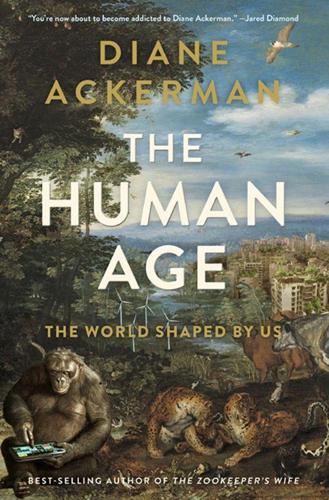
The Human Age: The World Shaped by Us
by
Diane Ackerman
Published 9 Sep 2014
It has a recycling system—duck manure is used as fish food, cold-water hyacinth beds are sold as organic fertilizer, and the sun energy lights up the duck coop to maintain the egg production.” So giggling children attend school, even during flood months, and their families can produce food and clean water despite the deluges. In this way, if monsoons or conflicts push people from their homes, the flotilla creates lifesavers of education, medicine, food, lighting, and communication. Rezwan can’t single-handedly fight climate change, but his brilliantly simple solution is helping people adapt. The words “adaptation” and “mitigation” are appearing more and more often in the lexicon of climate scientists, who use them to cover practical (and impractical) responses to climate change.
…
Despite the cold breeze there’s a warm afternoon sun. Soon the tide will be walking in and the pink-legged seagulls skimming the shoreline. In a few months the summer crowds will arrive to eat fresh seafood, attend the puppet theater, fall asleep to the slurred voice of the ocean, and enjoy the ecstasy of coastal life and clean water, with time strapped to their wrists. PART II IN THE HOUSE OF STONE AND LIGHT ASPHALT JUNGLES Watching Budi tumbling and climbing, at play with ball and shadow and iPad alike, I marvel at the road the human race has traveled. Open your imagination to how we began—as semiupright apes who spent some of their time in trees; next as ragtag bands of nomadic hunter-gatherers; then as purposeful custodians of favorite grains, chosen with mind-bending slowness, over thousands of years; and in time as intrepid farmers and clearers of forests with fixed roofs over our heads and a more reliable food supply; afterward as builders of villages and towns dwarfed by furrowed, well-tilled farmlands; then as makers, fed by such inventions as the steam engine (a lavish power source unlike horses, oxen, or water power, and not subject to health or weather, not limited by location); later as industry’s operators, drudges and tycoons who moved closer to the factories that arose in honeycombed cities beside endless fields of staple crops (like corn, wheat, and rice) and giant herds of key species (mainly cows, sheep, or pigs); and finally as builders of big buzzing metropolises, ringed by suburbs on whose fringes lay shrinking farms and forests; and then, as if magnetized by a fierce urge to coalesce, fleeing en masse into those mountainous hope-scented cities.
…
I’ll warm your apartment today, you’ll warm my schoolroom tomorrow. It’s effective and homely as gathering together in a cave. Sometimes there’s nothing like an old idea revamped. It’s hard not to admire the Swedes’ resolve, but it wasn’t always this way. During the 1970s Sweden suffered from pollution, dying forests, lack of clean water, and an oil habit exceeding any other in the industrialized world. In the past decade, through the use of wind and solar power, recycling of wastewater throughout eco-suburbs, linking up urban infrastructure in synergistic ways, and imposing stringent building codes, Swedes have axed their oil dependency by a staggering 90 percent, trimmed CO2 by 9 percent, and reduced sulfur pollution to pre–World War I levels.
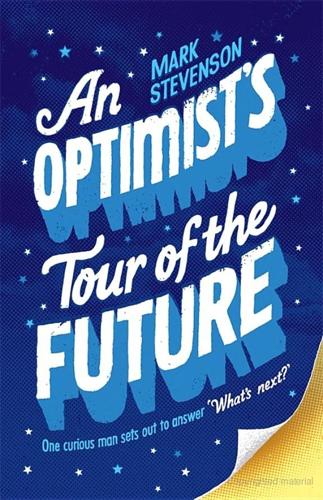
An Optimist's Tour of the Future
by
Mark Stevenson
Published 4 Dec 2010
‘Water from the pond comes in,’ he says, pointing to a pipe. ‘Then we harvest the algae out of it.’ ‘Algae are very cool,’ enthuses Vicki. ‘Those algae have been feeding on contaminants in the water. By removing them, we’re most of the way to turning wastewater into fresh clean water,’ Mark continues. ‘We put the water through a few more steps but the algae do the initial hard work.’ ‘Clean water is the major part of the business,’ says Vicki. Mark takes me to the end of the second blue container, where a green sludge that looks like a cross between pesto and snot is dropping off a roller. ‘This is algae paste. We process it to create something we call “biocrude” that can be made into fuels.’
…
There are thousands of varieties of algae and they vary depending on the time of year.’ ‘You work with what nature already puts in the pond? You’re algae sluts?’ Vicki laughs. ‘Yeah, when it comes to algae, we’ll go with anyone! But what that means is that we can turn any municipal waste pond into a manufacturer of cheap clean water and biofuel.’ It’s a pretty cool idea and one that will no doubt find its place. In fact, a few months after my visit to Blenheim, the company announces a partnership with the United States Gas Technology Institute to ‘demonstrate the conversion of algae biomass directly to gasoline and diesel fuel.’
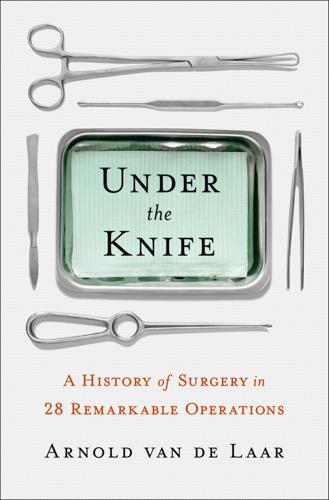
Under the Knife: A History of Surgery in 28 Remarkable Operations
by
Arnold van de Laar Laproscopic Surgeon
Published 1 Oct 2018
The wind blew through the cracks in the doors and window frames, the walls were wet from rising damp, and the snow came in under the front door. There was little to be done about it, so people always wore thick clothing, day and night. Rembrandt’s portraits show people in fur coats wearing hats. In those days people were not able to take a daily bath in clean water. The water in the canals was sewer water. Dead rats floated in it, people defecated in it and threw their waste into it, and tanners, brewers and painters discharged their waste chemicals in it. The canals in the Jordaan district of the city were little more than extensions of the muddy ditches that passed through the surrounding pasturelands, so that cow manure flowed slowly into the River Amstel.
…
This dead tissue is referred to as necrosis and provides an ideal breeding ground for all kinds of bacteria. But, because of the lack of oxygen in the wound, the Clostridium perfringens bacteria will thrive the most. That is how gas gangrene starts. For anyone who knows all this, the solution is relatively simple. Clean the wound as quickly as possible. Rinse it out with clean water (for example, the crystal clear sea water in the bays of Saint Martin) and leave it open. Then use a sharp knife to cut away all the dead material until you come to healthy tissue. There are fine-sounding surgical terms for this: debridement or nettoyage in French, anfrischen in German, or necrosectomy in English (from the Latin/Greek).
…
Both complaints are more common in men than women, and perianal fistulas mostly develop at a slightly later age – between thirty and fifty – than pilonidal cysts. Louis was forty-eight. Perianal fistulas can sometimes be caused by Crohn’s disease, inflammation of the bowel, but the cause is mostly unclear. In Louis’s case, the unhygienic conditions at Versailles may have played a part. Due to a lack of clean water and refrigerators, people living at the court had just as much chance as everybody else of suffering regularly from diarrhoea, caused by food poisoning. Moreover, the Sun King did not wash. He smelled so badly that once, when being visited by an ambassador, he was friendly enough to open a window himself so that his guest was not offended by his bodily odour.

The Heat Will Kill You First: Life and Death on a Scorched Planet
by
Jeff Goodell
Published 10 Jul 2023
All creatures, from the ancient cedars of Lebanon to the microbes in the deep thermal vents at the bottom of the Pacific Ocean, have evolved within a basic temperature range, and if that range changes too much, they have to find a more habitable climate niche. For humans, the decision to stay or go from extremely hot places is often dependent on money, which buys access to cooling systems, clean water, and food. But most living things don’t have the luxury of conditioned air or ordering a case of Pellegrino from Whole Foods. For them, adaptation often means moving to higher latitudes or higher elevations where it is cooler. If they can’t find refuge, they die. In the past decade, scientists who study the movement of animals have found that of the four thousand species that they’d tracked, between 40 and 70 percent had altered their distribution.
…
In New York City, workers and volunteers have planted over a million trees to add shade and clean the air. In Seville, Spain, city planners are using the technology of ancient underground waterways to provide cooling for the city without depending on air-conditioning. In Freetown, Sierra Leone, officials are creating urban gardens, improving access to clean water, and erecting plexiglass awnings over outdoor markets to shade people when shopping. In Los Angeles, public works crews are painting streets white to increase reflectivity. In India, they are experimenting with green roofs, which absorb heat and create space to grow food. In Austin, my wife, Simone, transformed a useless plaza in front of the Blanton Museum of Art, where she is the director, into a public gathering space shaded by 40-foot-tall carbon fiber sculptures that rise like giant elegant flowers, creating a shaded microclimate with dappled light.
…
Fourth of July celebrations will become life-threatening events. Snow will feel exotic. In some regions of the tropics, outdoor life will become virtually impossible. People will flee, just like many other living things, to higher, cooler climates. In many parts of the world, survival will depend not just on access to clean water, decent food, and medical care. It will increasingly depend on access to cool spaces, a job that doesn’t require you to work outside during the heat of the day, and the means to escape from extreme heat events if necessary. In those places, the lucky ones will look out the window at people fixing a power line or building a house in the heat with pity and sorrow and maybe a little fear.

Markets, State, and People: Economics for Public Policy
by
Diane Coyle
Published 14 Jan 2020
Similar schemes of payment for ecosystem services are in place in a range of countries, including in China in a scheme to convert farmland into grassland or forest, in Vietnam by using the hydropower industry to promote clean water, in Australia to restore native plants in the bush, and in the United States to reduce pollution in the Catskills to ensure the watershed continues to provide clean water. I. Porras, D. N. Barton, M. Miranda, and A. Chacón-Cascante (2013), “Learning from 20 Years of Payments for Ecosystem Services in Costa Rica,” International Institute for Environment and Development. Table 4.1.
…
In a regulated market economy, authority in economic matters comes either from success in a competitive market or from accountability to a political process. Private companies that are monopoly providers of public services have neither. • It is unclear what happens if private utility provision fails. Obligations to shareholders and rules of administration do not sit well with urgent public interest, such as clean water or keeping the lights on. • The cost of capital for a private sector corporation is often too high for a regulated utility. Some privatized companies are ring-fencing their regulated businesses because they cannot be operated under the same financial business model as competitive businesses. Governments can borrow more cheaply than corporations, so the financial case for public ownership of utilities is fairly compelling

Lonely Planet Iceland
by
Lonely Planet
The Secret Lagoon isn’t as picturesque as the Sky Lagoon or Blue Lagoon, but it’s a peaceful place for a relaxing soak in nature at a fraction of the price. There’s only one human-made pool here, but warm water from local hot springs refills it every 24 hours, ensuring a steady supply of fresh, clean water. The water is consistently around 38°C. There are no eucalyptus steam rooms, multi-step bathing rituals, saunas or swim-up bars, but the Secret Lagoon does have the basics covered. You’ll find changing rooms, restrooms, showers, lockers and a cafe on-site. Swimsuits and towels are available for rent.
…
Enter day or night – the lockers are always open and admission is paid at the donation box. Backed by mountains and sweeping fjord views, locals often kick back with a beer in the evening; but cans only, no glass. To get here, take Rte 617 some 3.5km beyond Cafe Dunhagi – the hot-pot is signposted with a tiny white sign with black lettering. To bathe in warm and clean water, however, visit the Tálknafjörður Swimming Pool. Its green water slide and shallow leisure pool make a great choice for kids. The pool in neighbouring Patreksfjörður is a firm recommendation, too, with excellent views. BEST PLACES TO EAT & DRINK IN PATREKSFJöRðUR Flak Unpretentious craft pub with a minimal menu: soup, fish or vegetables.
…
Opt for locally grown produce labelled íslenskt. ALEXANDER RATHS/SHUTTERSTOCK © Time Your Visit Just Right The peak summer months can put a lot of pressure on Icelandic businesses and the environment. Visit at other times of year to remove some of that pressure and save some money. Iceland is known for its pure, clean water. Bring a reusable water bottle, or pick up a new one in Iceland, and refill it at the tap. You’ll find lots of electric and hybrid car hire options, and charging stations across the country. Some rental companies include free charging. EMBRACE SLOW TRAVEL Make the most of your journey by settling into places and embracing slow travel.
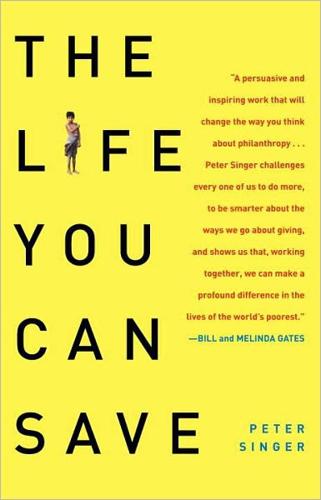
Life You Can Save: Acting Now to End World Poverty
by
Peter Singer
Published 3 Mar 2009
More die, like that small boy in Ghana, from measles, malaria, and diarrhea, conditions that either don’t exist in developed nations, or, if they do, are almost never fatal. The children are vulnerable to these diseases because they have no safe drinking water, or no sanitation, and because when they do fall ill, their parents can’t afford any medical treatment. UNICEF, Oxfam, and many other organizations are working to reduce poverty and provide clean water and basic health care, and these efforts are reducing the toll. If the relief organizations had more money, they could do more, and more lives would be saved. Now think about your own situation. By donating a relatively small amount of money, you could save a child’s life. Maybe it takes more than the amount needed to buy a pair of shoes—but we all spend money on things we don’t really need, whether on drinks, meals out, clothing, movies, concerts, vacations, new cars, or house renovation.
…
Organizations often put out figures suggesting that lives can be saved for very small amounts of money. WHO, for example, estimates that many of the 3 million people who die annually from diarrhea or its complications can be saved by an extraordinarily simple recipe for oral rehydration therapy: a large pinch of salt and a fistful of sugar dissolved in a jug of clean water. This lifesaving remedy can be assembled for a few cents, if only people know about it.3 UNICEF estimates that the hundreds of thousands of children who still die of measles each year could be saved by a vaccine costing less than $1 a dose.4 And Nothing But Nets, an organization conceived by American sportswriter Rick Reilly and supported by the National Basketball Association, provides anti-mosquito bed nets to protect children in Africa from malaria, which kills a million children a year.
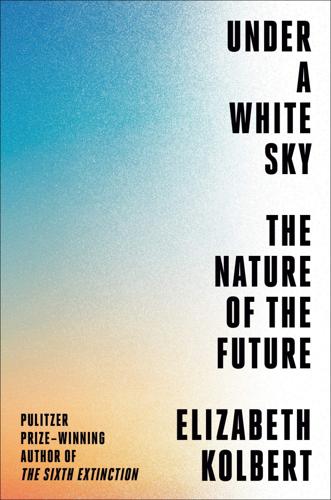
Under a White Sky: The Nature of the Future
by
Elizabeth Kolbert
Published 15 Mar 2021
Three years later, biologists at the station succeeded in getting one of the carp—now grown—to spawn. Thousands more fingerlings resulted. Pretty much immediately, some escaped. Baby carp made their way into the White River, a tributary of the Mississippi. Later, in the 1970s, the Arkansas Game and Fish Commission found a use for silver and bighead carp. The Clean Water Act had just been passed, and local governments were under pressure to comply with the new standards. But a lot of communities couldn’t afford to upgrade their sewage-treatment plants. The Game and Fish Commission thought that stocking carp in treatment ponds might help. The carp would reduce the nutrient load in the ponds by consuming the algae that thrived on the excess nitrogen.
…
When Chicago solved its sewage problem by digging the Sanitary and Ship Canal, a portal opened up, and the two aquatic realms were connected. For most of the twentieth century, this wasn’t much of an issue; the canal, loaded with Chicago’s waste, was too toxic to serve as a viable route. With the passage of the Clean Water Act and the work of groups like the Friends of the Chicago River, conditions improved, and creatures like the round goby began to slip through. In December 2009, the Corps shut down one of the electrical barriers on the canal to perform routine maintenance. The nearest Asian carp was believed to be fifteen miles downstream.
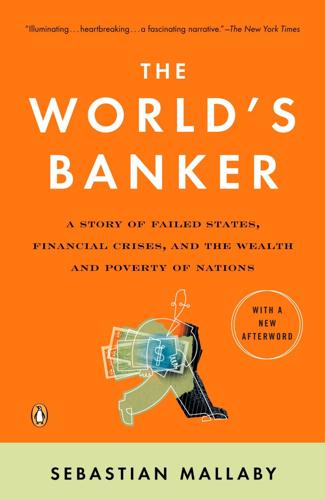
The World's Banker: A Story of Failed States, Financial Crises, and the Wealth and Poverty of Nations
by
Sebastian Mallaby
Published 24 Apr 2006
When the car stopped at the appointed site, the back doors swung open, and Wolfensohn and the prime minister got out and plunged into the countryside, strolling across the grass, now in the sunlight, now over dark patches where the trees cast shadows, following a route that had been popular with weekenders in prewar times. Nobody moved, and nobody followed: This territory had seen intense fighting during the war, and land mines were surely buried all around the area. Wolfensohn and Muratovic arrived at the river source, where clean water bubbled innocently. They stood for a few moments talking and then returned to join their entourage.32 • • • THE BRUSH WITH the land mines was an apt metaphor for the World Bank in Bosnia. Whatever the triumph of its quick arrival, the Bank faced enormous difficulties once there. Sarajevo was a dust bowl, with rags of dirty plastic drooping from windows; demobilization drove unemployment up to 75 percent, and clumps of resentful men roamed the streets of the capital.
…
At the World Bank, the amount of poverty you’ve tackled won’t be clear until years after your projects are done—indeed, it probably won’t be clear ever. Measuring poverty is notoriously hard, and statisticians fight over the numbers;38 it’s even harder to estimate how much a certain project contributed to a supposed reduction in the poverty rate. Did the new clinic drive down the rate of child mortality? Or was it the new access to clean water? Or was it that economic growth accelerated, allowing mothers enough money to buy nutritious food? It’s impossible to be certain.39 The matrix reform was another private-sector idea whose translation worked imperfectly. Encouraged by the management consultants from McKinsey, the Bank set up an “internal market” for its technical specialists.
…
“While we talk of financial crisis, 17 million Indonesians have fallen back into poverty,” Wolfensohn lectured, mischievously implying that the IMF’s focus on Asian exchange rates came at the expense of focusing on real people; “while we talk of financial crisis, an estimated 40 percent of the Russian population now lives in poverty.” Across the world, Wolfensohn continued, 3 billion live on under $2 a day; 1.3 billion have no access to clean water; 2 billion have no access to power. “We talk of financial crisis while in Jakarta, in Moscow, in sub-Saharan Africa, in the slums of India, and the barrios of Latin America, the human pain of poverty is all around us,” Wolfensohn declared. What to do about this? Well, Wolfensohn continued, IMF-style macroeconomic stabilization was not enough.

The Climate Book: The Facts and the Solutions
by
Greta Thunberg
Published 14 Feb 2023
We have built our economies, our societies and our civilizations on two assumptions about the natural world: first, that change happens in an incremental, linear way (allowing for regret and simple repair); second, that the biosphere has essentially infinite space and capacity to absorb human impacts (our waste) and cope with our extraction of resources (our consumption). The science of resilience and complex systems debunks both of these assumptions. Earth’s biophysical systems – from ice sheets to forests – ultimately determine how inhabitable the planet is. They do this not only by delivering immediate services to us humans (like food and clean water) but also by having a built-in resilience – the capacity to absorb shocks and stress (like warming due to greenhouse gas emissions and deforestation) and thereby cool and hold the planet within a narrow temperature range. But only up to a certain point. Pass this threshold and the system – be it a coral reef, a frozen tundra or a temperate forest – will irreversibly tip over from one state to a qualitatively different state.
…
It is increasing the salinity of coastal aquifers, which are often relied upon by local people as their only source of fresh water. It is threatening many cultural heritage and ceremonial sites, which are located in coastal areas and cannot be moved in response to flooding. It is limiting the availability of beaches as public spaces for relaxation and enjoyment. Access to clean water, vibrant ecosystems, cultural heritage and recreational spaces are all reasonable expectations for the next generation to hold. It is the least we owe them. With few exceptions, small islands have contributed least to climate change. But they bear the brunt of its consequences. This is not just a question of disappearing islands in the future: it is about threatened livelihoods, delayed development and a generational inheritance being denied today. / 3.13 Rain in the Sahel Hindou Oumarou Ibrahim In the Sahel, rain is everything.
…
Winning that kind of change will take powerful alliances with every arm of the progressive coalition: trade unions, migrant rights, Indigenous rights, housing rights, teachers, nurses, doctors, artists. And to build these alliances, our movement needs to hold out the promise of making daily life better by meeting pressing needs that all too often go unmet – for affordable housing, for clean water, for healthy food, for land, for health care, for good public transportation, for time with family and loved ones. For justice. Not as an afterthought – but as an animating principle. I have laid out five planks for a just transition. Energy democracy; front lines first; care work is climate work; no worker left behind; and polluter pays.

Whole Earth Discipline: An Ecopragmatist Manifesto
by
Stewart Brand
Published 15 Mar 2009
The transition from slum to ordinary urban neighborhood goes best if it is gradual and carefully finessed to local conditions by all the players—dwellers, government, NGOs, and companies. According to a 2008 article in Toronto’s Globe and Mail:“The best plans generally let the slum dwellers themselves make the main decisions in planning their future. You should provide clean water, toilets, electricity, garbage collection and disposal, and maybe let people build their own houses if they can, using materials that you can provide,” says Aprodicio Laquian, the Filipino-Canadian planner who practically invented the idea of slum-dweller-designed urban rehabilitation in the 1960s. . . .
…
The romantics distrust engineers—sometimes correctly—for their hubris and are uncomfortable with the prospect of fixing things because the essence of tragedy is that it can’t be fixed. Romantics love problems; scientists discover and analyze problems; engineers solve problems. • That is a gross oversimplification. Stereotypes were not responsible for the burst of U.S. environmental legislation passed in the 1970s—the Clean Air, Clean Water, and Endangered Species acts, and the creation of the Environmental Protection Agency. What would I call the dedicated lawyers who got those bills written, passed, and signed—“political engineers”? Where in my character set are the duck hunters who pioneered the conservation movement in the 1930s by protecting wetlands and who are still at it seventy years later?
…
“Butterflies and Plants” (Raven and Ehrlich) Byers, Eben C4 rice Caldeira, Ken California biodiversity and genetic engineering and pre-Columbian agriculture in California Invasive Plant Council California Native Plant Society California Water Atlas Calthorpe, Peter Canada fisheries of nuclear power and cancer cap-and-trade markets carbon capture and sequestration (CCS) algae and carbon dioxide carbon sinks carbon taxes Carlson, Rob Carson, Rachel Cartagena Protocol on Biosafety (2000) Caruso, Denise Cascio, Jamais cattle cellphones cellulose Center for Biosafety, South African Challenge of Slums, The (UN-HABITAT) Chapela, Ignacio charcoal Charles, Prince of Wales chemical mutagenesis Chernobyl disaster (1986) Chesser, Ronald children, disease and China genetic engineering and green engineering and Green Revolution and nuclear power and urbanization and Chinese Academy of Forestry Chipchase, Jan Chu, Steven Church, George cities agriculture and ecological footprint of economic growth and infrastructure of innovation and New Urbanism and population growth and slums and, see slums warfare and see also urbanization Citizendium clathrates Clean Air Act (1970) Clean and Safe Energy Coalition Clean Water Act (1972) climate change agriculture and algae and biodiversity and forests and, see forests genetic engineering and nuclear power and population growth and satellite monitoring of Climate Crash (Cox) Climatic Change Closing Circle, The (Commoner) coal coccolithophores Cochran, Gregory coevolution CoEvolution Quarterly cogeneration Cohen, Joel Collapse (Diamond) combined heat and power (CHP) Commoner, Barry Commonwealth Scientific and Industrial Research Organization, Australian community-supported agriculture confirmation bias Congress, U.S.

The Blue Sweater: Bridging the Gap Between Rich and Poor in an Interconnected World
by
Jacqueline Novogratz
Published 15 Feb 2009
Increasingly, we’re seeing skirmishes that may lead to big wars in this century over who has rights to water. Meanwhile, the water table in India alone is declining by 6 meters (20 feet) a year. Solving water-related issues is key. Again, no one has all the answers. If they did, we wouldn’t have a world where 1.2 billion—or one in five of us—have no access to a glass of clean water. As with public health, our approach to water at Acumen Fund has been to experiment and innovate to find solutions that can inform the public debate and show the way to wide-scale change. In India, for example, the platforms of many state governments have held largely that water is a human right and should be given free to everyone.
…
Of course, they weren’t carrying the water themselves, but hiring boys with bikes, rickshaws, and taxis. But what mattered was the change itself. A poultry farmer with a handlebar mustache and a big, intelligent smile explained that he purchased, on average, 10 containers a day. He fed the water to his chickens—about 7,000 of them, a big jump from the 5,000 he’d been raising before he had clean water, which, he said, made medicines unnecessary and enabled his chickens to grow about 20 percent more quickly. He was there to ask WHI to allow him to pipe water to his farm, but they refused, explaining that it would be too easy for people to steal water by drilling into the pipes. The farmer wasn’t convinced.
…
Because of efforts big and small, from multimillion-dollar contributions to one envelope we received stuffed with 20 $1 bills from a 7-year-old girl, by 2008 Acumen Fund had been able to approve more than $40 million in investments in 40 enterprises serving the poor. Through the entrepreneurs who run those companies, we were able to help create more than 23,000 jobs and bring basic services like water—and therefore health—to tens of millions of very-low-income people around the world. Today, more than 350,000 people in rural India are buying clean water for the first time in their lives. Thirty million people have access to lifesaving malaria bed nets each year. A hundred and fifty thousand farmers have doubled or tripled their family incomes because of drip irrigation. And this is just the start, the beginning of our own journey, in which entrepreneurial initiative is paving the way for significant social change.
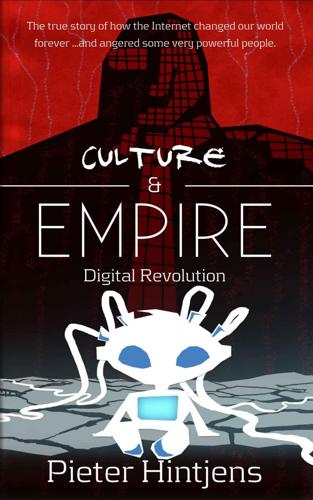
Culture & Empire: Digital Revolution
by
Pieter Hintjens
Published 11 Mar 2013
In each instance, essential knowledge spreads until everyone has access to it. Then the empire loses its monopoly, crashes, and the cycle repeats. It is hard to understand exponential curves. Our minds give up as we approach the infinite. The curve tends to look either totally flat or like a straight cliff. We can look at history and collapse it into: "clean water and roads let the Romans build their empire" or "my portable phone has more computing power than the whole of NASA in 1962." When I tell you that in 60 years, the average person on the planet will have and use more computing power than the entire Internet today, does that concept fit into your world view?
…
And lastly, there should be strong pressure for cheap, fast, unfiltered broadband. This should be the main condition of the relaxation of pressure. High Internet costs and censorship should be treated as crimes against humanity, and access to IP packets as a basic human right, along with free education, clean water, and freedom to travel. The reality is that we are still very far from this. The West has its own crises, its own bandits, and is immature in many ways. The next decades will be key. The violent racism that immigration provokes is a gold mine to politicians. The guilt and fear of getting too many chocolates, and eating them all, makes us northerners easy to mess with.
…
A state-backed currency loses value if the State prints too much of it, as States tend to do eventually. A natural currency stops being convertible if it stops being rare. The best currencies are highly portable (I can carry them with me), anonymous (I can spend them without others discovering), and scalable to any size of market. Two thousand years ago, we invented clean water, hot baths, social security, highways, concrete, and civil engineering, and built continent-wide trading empires. We invented public and private law as the basis for modern legal systems, and the free market. It all went well except for the lead in the water. Two hundred and fifty years ago, we invented the steam engine and decided it was more profitable to build factories than grow sugar.

An Extraordinary Time: The End of the Postwar Boom and the Return of the Ordinary Economy
by
Marc Levinson
Published 31 Jul 2016
Warnings about a world unable to feed its population were nothing new; the English cleric Thomas Malthus had predicted much the same in 1798. But Malthus had fallen out of favor, largely because, nearly two centuries on, the anticipated catastrophe had not happened. The Limits to Growth went beyond Malthus in predicting a world short of oil to heat its homes, metals for its factories, and even clean water to drink. Its real innovation, however, was its scientific gloss. With forty-eight charts and six tables, and discussions of computer runs and positive feedback loops, the study seemed to have a quantitative rigor Malthus lacked. Just as economists like Walter Heller and Karl Schiller had learned to use computers to forecast the economic future, the scientists were wielding computers as a tool to foretell the world’s destiny.
…
Those needing a break from political arguments about zero population growth could drop by the cinema to take in Z.P.G., an Anglo-Danish sci-fi film about a hellacious twenty-first-century world in which authorities deal with overpopulation by decreeing the death penalty for anyone bearing a child.8 The political response to the burgeoning environmental movement was swift, and not just in the United States. Within two years of that first Earth Day, Canada adopted a clean water law; the United States remade its feeble Clean Air Act; California imposed the first limits on auto emissions; and France, Switzerland, Canada, Great Britain, Japan, and the United States all set up national environmental agencies. Yet while Earth Day had been a fundamentally positive event, a hopeful joining together to make a better world, The Limits to Growth injected a decidedly negative message into the intense global debate over environmental policy.
…
With weaker profitability, businesses had fewer resources to invest in improving productivity, much less to meet the demands of workers who felt entitled to a larger share of the economic pie. As companies held on to their old equipment longer, productivity growth slowed further.3 Adding to the pressure on businesses was the emerging demand for environmental protection. Clean air and clean water had been low priorities in the postwar world. Government authorities rarely measured emissions, and if a factory or power plant encountered complaints from nearby communities, it might respond by extending a smokestack or a drain line, solving the local problem by transporting the pollution further away.

City on the Verge
by
Mark Pendergrast
Published 5 May 2017
A few weeks later, an Environmental Protection Agency administrator told Mayor Franklin that Atlanta was out of compliance with the US Clean Water Act and would owe $80 million in fines if she didn’t take immediate action. Atlanta’s aging combined sewage and storm water system frequently flooded. Franklin had earned her political stripes by serving under Maynard Jackson, the first black mayor of Atlanta, and Mayor Andrew Young, who had been out of the country so frequently that she’d really run the city. Now she dubbed herself “the Sewer Mayor” and tripled water taxes while campaigning for clean water. Once she had gotten on top of the issue (which was never truly fixed), she was ready to consider the BeltLine.
…
E., 40 Carstarphen, Meria, 164–165 Carter, Cherine Pierce (Benny), 212–214 Carter, Edward Randolph, 69 Carter, Jimmy, 183–184 Carter Center and Presidential Library, 174, 184 Cascade Heights neighborhood, 124 CAUTION (Citizens Against Unnecessary Thoroughfares in Older Neighborhoods), 184 Centennial Park, 125, 264 Center for Hard to Recycle Materials (CHaRM), 145 Center for Civic Innovation, 264 Centers for Disease Control and Prevention (CDC), 137 Central Atlanta Progress, 117, 263 Chandley, Lynn and David, 186 Chang, Michael, 146–147 charter schools, 29, 131, 194–196, 198, 210 Chattahoochee Brick Company, 34, 67 Chattahoochee NOW, 260 Chattahoochee River, 7, 31, 51, 100, 142–144, 223–224, 260, 286 churches, black, 67, 69, 83, 218–220 Circle Line, 16 City Lights building, 180–181 City of Refuge, 114–115, 271 Civic Center, 162, 164, 176, 270, 277 civil rights movement, 63, 83, 130, 176, 181–182, 190–191, 208, 259, 272 Civil War, 33–35, 64, 100, 189, 259 The Clansman: An Historical Romance of the Ku Klux Klan (Dixon), 72, 76 Clark University, 74, 192 Clarkston, 254–257, 262 Clayton County, 250–254 Clean Air Act, 45, 146 Clean Water Act, 28 Clear Creek, 10, 35, 231–234, 238 Cleveland, Grover, 70 C-Loop, 25–26 Coca-Cola ads in KKK newspaper, 76 Boulevard revitalization, 180 cocaine in, 34, 72 donations from, 52, 123, 279 invention of, 34, 66 Robert Woodruff and, 79, 81 Coca-Cola Anarchist (Wardlaw), 116 Cohen, Richard and Dianne Harnell, 261 colleges, black, 67 Collier, Andrew Jackson, 228 Collier, George Washington, 238 Collier, Meredith and Elizabeth, 228 Collier Hills neighborhood, 8, 100–101, 228–231 Columbians, 79 Committe, Tim, 47–48, 52 Community Grounds, 189, 192, 196 Community Power Structure: A Study of Decision Makers (Hunter), 79 commuter rail, 52, 101–103 Complete Streets concept, 140, 227, 286 congestion, 18, 21, 37, 40, 42, 132, 140, 243, 245, 263 Continental Wingate, 178, 180 convict-lease system, 67 Conway, Butch, 249 Cook, Rodney Mims, Jr., 271 Cotton States and International Exposition, 69 Cousins, Tom, 195 Covenant House, 116 Cox Enterprises, 17, 52, 126 Creative Loafing, 117, 264–265 Creech, Dennis, 144–145 Creek Indians, 31, 142, 228 crime, 147–148, 158–159, 161, 176, 181, 193, 229–230, 250 CSA (community-supported agriculture), 151 CSX, 3, 6, 8–9, 11, 14, 50, 230–231 C-Tran, 250 Cultural Ring project, 14–15, 18, 23 Cyclorama, 35, 193–194 D.

Cities Are Good for You: The Genius of the Metropolis
by
Leo Hollis
Published 31 Mar 2013
But the sense of precariousness never seems far away, that things will fall apart at any moment. The city is a place of liberty, where we are free to pursue our own individual fortunes, but it is also a place that crams many different people together, threatening conflict and inequality. Today there are places in the world where the slums of the very poorest who cannot afford clean water are within yards of the palaces of the super-rich with crystal-blue swimming pools. As a result we often write the city’s story in terms of the tensions between the top and the bottom, between the haves and the have-nots, the powerful and the weak. Because of this we assume that inequality is hard-wired into the city – that there has to be those who prosper and those who are desperate, that power will always be in the hands of the few who run the city from above.
…
Recall the sense of joy that comes from sitting in a city square with the sun on your face. It is sometimes easy to forget how important sunlight is in our everyday lives. In the nineteenth century social engineers such as Florence Nightingale promoted the idea of fresh air and sunlight as health-giving conditions. For the Victorians, sunlight, clean water and pure air constituted the principal components of the ideal city. This was particularly a cause of debate in New York for, as architect Michael Sorkin observes in the wonderful hymn to his home city, Twenty Minutes in Manhattan: ‘Much of the modern history of New York’s physical form is the result of debates over light and air.’10 By the 1870s there were complaints that the high tenements that had been built to house the rising population were obscuring the sky and filling the air with a putrid stink.
…
Working alongside the community also had an impact on the design of the blocks: attention was paid to how people had to queue to use the seats, the toilet doors swung both ways, each seat was connected to the main sewer to avoid blockages, and needed only half a bucket of water to flush. In addition, special blocks were constructed for children. It was proof that the right to have clean water is a right to the city not a right to the land. The toilet block is not a claim to own property but a claim to be allowed to be part of the civil society. In 2007 the writer Suketa Mehta was asked by the Urban Age Conference to judge a competition for the best project that could change the living conditions of Mumbai.
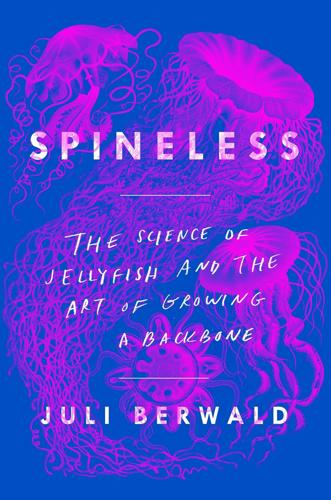
Spineless: The Science of Jellyfish and the Art of Growing a Backbone
by
Juli Berwald
Published 14 May 2017
Divers are allowed access only at specific entry points, and the park is patrolled. Commercial fishing is forbidden and nutrient inputs are managed through a sewage system. Threats exist, of course. There’s still an oil spill roughly every year. And new plans for fish farms continue to be discussed, which could compromise the clean water. But my return to Israel taught me that this reef, one that has always felt so necessary to me personally, may in fact be the last coral reef on our planet. In the most unexpected place, against the terrible odds of climate change, political turmoil, and an ever-growing coastal population, I found a little corner of the world, at least, where our seas were being saved.
…
Jenny ended by mentioning the environmental classic by Rachel Carson, Silent Spring, which she said had influenced her as a child and probably pushed her to become a biologist. It was now the fiftieth anniversary of the book, which had sounded the alarm about the dangers of DDT and helped kick off the environmental movement in the 1960s, leading to the Clean Air and Clean Water acts that still protect us today. Yet the damages to our planet continue to accumulate, Jenny reminded the jellyfish scientists at the meeting. The human population continues to increase, compounding the environmental problems with overfishing, pollution, coastal development, increased shipping, and warming waters.
…
See Cannonball jellyfish Caesarea (Israel), 283 California, 79, 156–57, 168, 174, 265 agriculture in, 57 carbon emissions in, 285 desalination in, 25 marine protected areas in, 200 University of, Merced, 77 See also specific cities, regions, and natural features California Institute of Technology, 91 Cambridge, University of, 68, 132, 133, 139 Canada, 68 Canary Islands, 73 Cancer, 117, 118, 154, 190 Cannonball jellyfish, 44, 50, 219, 220 Cape Canaveral (Florida), 128–29 Cape Cod (Massachusetts), 84–94 Carbon emissions, 6, 8, 70, 170, 285 Caribbean, 279 Carlin, George, 157, 161–62 Carson, Rachel, 300 Caspian Sea, 30 Chalfie, Martin, 116, 118–19 Channel Islands (California), 101 Charismatic megafauna, 24 Chesapeake Bay, 10, 59, 172 Chiaverano, Luciano, 79 Chicago, University of, 84 Chile, 199 China, 54, 79, 213, 228, 299 Academy of Sciences of, 15 carbon emissions in, 285 giant jellyfish in, 229 jellyfish cuisine in, 43, 47, 48, 187, 188, 219 marine environment acidification in, 234 research on medical uses of jellyfish in, 50 sting treatment developed in, 253 Chironex fleckeri, 26, 248 Christianity, 145 Chrysaora, 7 Chrysaora fulgida, 6, 32 See also Sea nettles Chuang, Terry, 46 Clams, 5, 106, 127, 172, 216, 218, 233, 278 Clare Island (Ireland), 26 Clean Air Act (1970), 301 Clean Water Act (1972), 301 Climate change, 10, 15, 58, 63, 178, 206, 271 coral reefs threatened by, 273–74, 279, 281 evolution and, 69–70 impact on oceans of, 178, 271 Monterey Bay Aquarium exhibit on, 60–61 power of storms increasing due to, 237–38 Cnidae, 11 Cnidaria, 11, 81, 255–56, 258–59 Coastal development, 15, 63, 206, 223, 234, 279, 302 Coelenterates, 10–11 Colin, Sean, 87–90, 92–93 Collagen, 49–50, 259 Columbia space shuttle, 129, 275 Columbia University, 116 Comb jellyfish, 10–11, 13, 27–30, 70, 99, 103, 303 in ballast water, 9, 27, 154 in Black Sea, 27–30, 113 evolution of, 70, 80–81 predators of, 29–30, 172–73 transparency of, 98 worldwide invasions of, 15, 30 Compass jellyfish, 6, 32–33 Condon, Rob, 36, 165, 175, 176 Congress, U.S., 285 Copenhagen, University of, 123 Copepods, 103, 169, 233 Corals, 4–5, 8, 10–11, 68, 81, 199–200, 261, 270–80 See also Reefs Cornell University, 286 Costa Brava (Spain), 26 Costello, Jack, 87–90, 92–93 Cotylorhiza, 290 Cotylorhiza tuberculata, 296 Cousteau, Jacques, 276 Crabs, 8–9, 12, 46, 127, 170, 217, 226 Ctenophora, 11 Crimea, 27 Croatia, 30 Dalmatian coast of, 71, 74, 75 Cuba, 251, 254–55 Cyaneidae, 72 Cyro droid, 90–91 Dallas, University of Texas at, 90 Dalmatian coast, 71, 74, 75 Darwin, Charles, 11, 71, 73, 132, 133, 142–44, 157–59 Darwin, Francis, 132 Dauphin Island Sea Lab (Alabama), 22, 58, 70, 73, 223 Dawkins, Richard, 118 Dawson, Michael, 77–79 Daytona (Florida), 25 DDT, 301 Deep End Dining (blog), 48–49 Deepwater Horizon oil spill, 37–39 Denmark, 300 Denver Museum of Nature & Science, 67–69 Desalination plants, 25 Discovery Channel, 89, 107, 194 DNA, 57, 65, 71, 77, 80–81, 116, 192 Dolphins, 22, 92, 174, 292 Doyle, Arthur Conan, 12 Drymonema Drymonema dalmatina, 74–76 Drymonema larsoni, 78 Drymonematidae, 78 Duke University, 53, 97 Earle, Sylvia, 158 Eastern Virginia Medical School, 128, 129 Echinoderms.
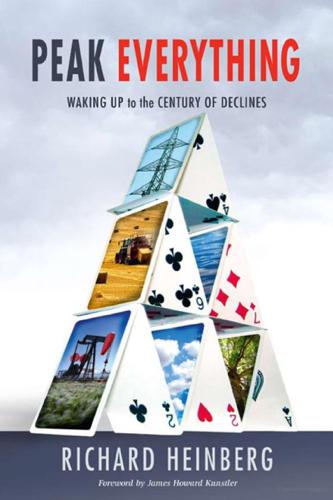
Peak Everything: Waking Up to the Century of Declines
by
Richard Heinberg
and
James Howard (frw) Kunstler
Published 1 Sep 2007
Many people call it “The Die-off.” Others call it “The Pruning,” “The Purification,” or “The Cleansing.” Some terms are more pal - atable than others, but there really are no nice ways to describe the actual events — wars, epidemics, famines. Food and water have been big factors in all of this. Fresh, clean water has been scarce for decades now. One way to make young people mad at me is to tell them stories about how folks in the old days used to pour millions upon millions of gallons of water on their lawns. When I describe to them how flush toilets worked, they just can’t bear it. Some of them think I’m making this stuff up!
…
You’re probably wondering if I have any good news, anything encouraging to say about the future of your world. Well, as with most things, it depends on your perspective. Many of the survivors learned valuable lessons. They learned what’s important in life and what isn’t. They learned to treasure good soil, viable seeds, clean water, unpolluted air, and friends you can count on. They learned how to take charge of their own lives, rather than expecting to be taken care of by some government or corporation. There are no “jobs” now, so people’s time is all their own. They think for themselves more. Partly as a result of that, the old religions have largely fallen by the wayside, and folks have rediscovered spirituality in nature and in their local communities.
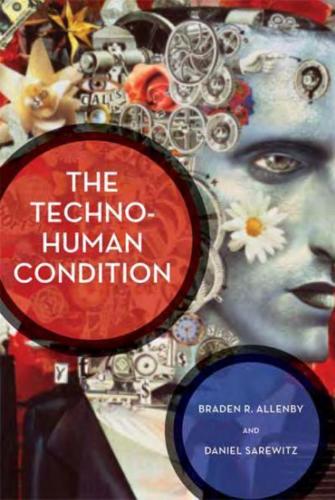
The Techno-Human Condition
by
Braden R. Allenby
and
Daniel R. Sarewitz
Published 15 Feb 2011
Which litany best supports your worldview: the eradication of smallpox; the lifting out of poverty of hundreds of millions of people in South and East Asia; the economic and political integration of dozens of European nations that for centuries were at one another's throats; the defeat of Nazism, Stalinism, and Maoism; the creation of an amazingly egalitarian global information network via the Internet? Or are you more comfortable with The Bomb, AIDS, climate change, continuous concentration of global wealth, a billion malnourished people with no access to clean water, and information overload? What a great subject for academics to argue about from now until eternity. From the inevitability of progress to its impossibility; from its invention as a modern ideal to its persistence throughout history; from its embodiment in scientific truth-seeking and technological advance to its social construction as nothing more than a contextual illusion that justifies particular ways of being and acting, progress can shoulder just about any philosophical, cultural, ideological, or statistical burden that we want to place upon it. 1 "Progress" is central to our interrogation of transhumanism for two reasons.
…
Something that may be unimportant in one area, such as how much atmospheric nitrogen is being deposited on agricultural land, may be quite important elsewhere (for example, in an estuary), and one society may be seriously engaged with questions of global climate-change policy while another is simply trying to find enough food and relatively clean water to keep people alive and the economy growing. Under such circumstances, nostrums such as "Think globally, act locally" are naive and unhelpful, for the simple reason that good local decisions don't add up to good global outcomes. We are entering a new domain in which ethical and responsible behavior as judged by outcomes in the real world is an increasingly meaningless idea, at least given the simplistic Complexity, Coherence, Contingency 111 version of rationality we have been employing for several hundred years.
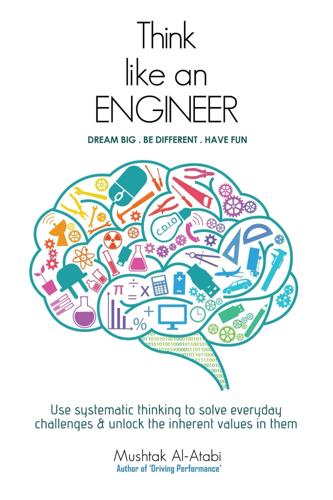
Think Like an Engineer: Use Systematic Thinking to Solve Everyday Challenges & Unlock the Inherent Values in Them
by
Mushtak Al-Atabi
Published 26 Aug 2014
Engineers need to devise innovative ways to improve the efficiency of various nitrogen related activities to ensure that nitrogen-based fertilisers are minimally and effectively used and any unused fertilisers are converted back into free nitrogen. 5. Provide access to clean water It is heart wrenching that 1 out of every 6 people living today does not have access to clean running water. Access to clean running water and adequate sanitation is an important requirement to leading a healthy life. Although 70% of the earth is covered with water, most of this water is not suitable for human consumption, either because it is polluted or is salty seawater. Engineers can play a key role in providing access to clean water for both drinking and other activities, such as agriculture, through the development of technologies that can help purify polluted water and prevent more water from becoming unsuitable for human use.
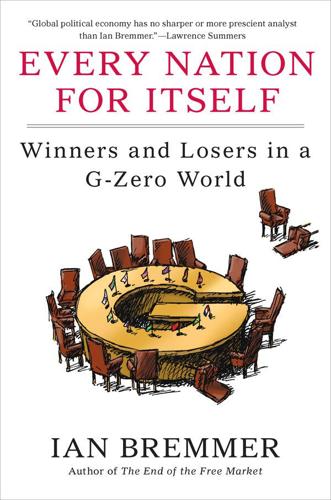
Every Nation for Itself: Winners and Losers in a G-Zero World
by
Ian Bremmer
Published 30 Apr 2012
The amount of water needed for crops varies a lot from place to place and crop to crop, but 70 percent of the world’s freshwater is used for agriculture, and the production of meat demands six to twenty times more water than grain production does.45 In the United States, production of one pound of beef requires more than 370 gallons of water. The most efficient market-driven government method of guarding against shortages of a vital resource is to increase the price that consumers pay for it. Yet in countries all over the world, both established and emerging, citizens believe they have a right to clean water, and efforts to protect supplies by inflating their price often provoke outrage—and sometimes violence. Given that water is essential for production of the world’s food, local water supplies are everyone’s concern. In a G-Zero world, it will be ever more difficult to persuade governments to cooperate on plans that impose locally unpopular policies for the global public good.
…
Potential water conflict zones are many, but the most worrisome are in Asia and Africa. First, the world’s two most populous countries, India and China, already face serious questions on water security as climate change, industrialization, and the growth of cities in both countries make unprecedented demands on access to clean water. China is the world’s “unrivaled hydro-hegemon.”46 More freshwater flowing across international borders comes from China than from any other country. Not coincidentally, China has built more dams, including the world’s largest (Three Gorges), than every other country in the world combined, an issue that threatens the water supplies of India, Bangladesh, Thailand, Laos, Vietnam, Cambodia, and Russia—all of which have issued formal complaints.
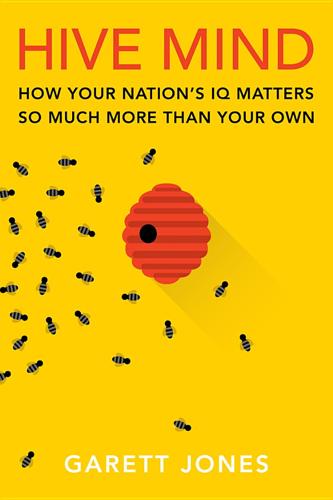
Hive Mind: How Your Nation’s IQ Matters So Much More Than Your Own
by
Garett Jones
Published 15 Feb 2015
Of course, if the factory is highly profitable it will also look for other, cheaper ways to achieve its goal of staying in business: in the real world, it might give outright bribes to the fishery’s manager or it might engage in skullduggery, but let’s set those very real options aside. For the sake of our story, what matters is that when faced with the prospect of having to pay to pollute, the factory will look into cheap ways to cut back on pollution. So if you give the fishery the right to clean water, and if the fishery is allowed to sell part of that right to the factory, then both the fishery and the factory have an incentive to weigh the real costs of pollution and fewer fish against the real benefits of extra tablet computers. Ultimately, the two sides will come to some kind of agreement, some level of pollution, some level of fish and computers.
…
If instead the factory had the unlimited right to pollute, then the fishery would come hat in hand to the factory owners, offering cash to the factory in exchange for cleaner river water. Your personal morality might tell you that’s not the way things should be—fisheries shouldn’t have to pay cash for clean water—and maybe that isn’t the way things should be, but an overarching theme of Coase’s work, with his theorem and in other writings, is an implicit call to dial down the moral outrage in order to get people thinking about what kinds of social systems achieve efficient, productive, fruitful outcomes.
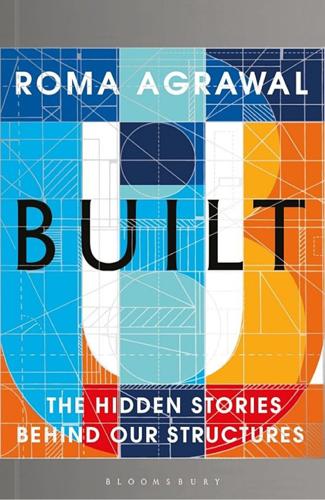
Built: The Hidden Stories Behind Our Structures
by
Roma Agrawal
Published 8 Feb 2018
The higher you went, the smaller and cheaper the dwellings became – which is of course the opposite of today: the height of luxury (literally) is a penthouse that will cost you a small fortune. The insulae were rather harried places: without elevators, residents had to trudge the stairs to the upper floors. Since water couldn’t be pumped that high, they had to lug clean water up with them, and drag their waste back down (although many would simply throw it out of the window). En route you might even encounter an animal: a cow is said to have wandered up to the third storey of such a block. The insulae were noisy: even after glass windows were invented and replaced shutters, they couldn’t keep out the constant commotion of Roman streetlife.
…
In 1545, a scholar called Petrus Gyllius was talking to local residents as part of his research into Byzantine antiquities. After a little persuasion and coaxing, he discovered they had a mysterious secret – they could lower buckets through holes in their basement floors and miraculously haul up fresh, clean water. Sometimes, they even found fish swimming in their buckets. They had no idea why or how this happened – they were just glad to have a source of clear water (and sometimes even food), and until Gyllius came along, they had kept the secret to themselves. Gyllius realised that their homes must be above one of the famed Roman cisterns, investigated further, and found it.
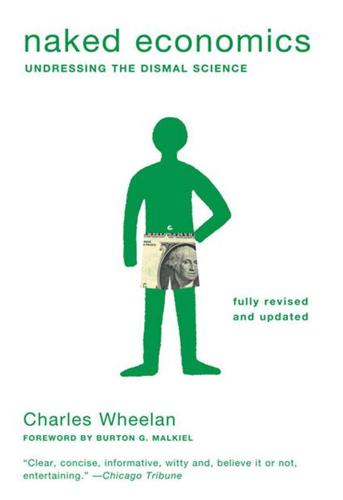
Naked Economics: Undressing the Dismal Science (Fully Revised and Updated)
by
Charles Wheelan
Published 18 Apr 2010
Gary Becker, a University of Chicago economist who won the Nobel Prize in 1992, has noted (borrowing from George Bernard Shaw) that “economy is the art of making the most of life.” Economics is the study of how we do that. There is a finite supply of everything worth having: oil, coconut milk, perfect bodies, clean water, people who can fix jammed photocopy machines, etc. How do we allocate these things? Why is it that Bill Gates owns a private jet and you don’t? He is rich, you might answer. But why is he rich? Why does he have a larger claim on the world’s finite resources than everyone else? At the same time, how is it possible in a country as rich as the United States—a place where Alex Rodriguez can be paid $275 million to play baseball—that one in five children is poor or that some adults are forced to rummage through garbage cans for food?
…
Wealthy Americans are willing to spend more money to protect the environment as a fraction of their incomes than are less wealthy Americans. The same relationship holds true across countries; wealthy nations devote a greater share of their resources to protecting the environment than do poor countries. The reason is simple enough: We care about the fate of the Bengal tiger because we can. We have homes and jobs and clean water and birthday cakes for our dogs. Here is a nettlesome policy question: Is it fair for those of us who live comfortably to impose our preferences on individuals in the developing world? Economists argue that it is not, though we do it all the time. When I read a story in the Sunday New York Times about South American villagers cutting down virgin rain forest and destroying rare ecosystems, I nearly knock over my Starbucks latte in surprise and disgust.
…
But let’s do a simple exercise to illustrate why it may be terribly wrong to impose our environmental preferences on the rest of the world. Here is the task: Ask four friends to name the world’s most pressing environmental problem. It’s a fair bet that at least two of them will say global warming and none will mention clean water. Yet inadequate access to safe drinking water—a problem easily cured by rising living standards—kills two million people a year and makes another half billion seriously ill. Is global warming a serious problem? Yes. Would it be your primary concern if children in your town routinely died from diarrhea?

The Looting Machine: Warlords, Oligarchs, Corporations, Smugglers, and the Theft of Africa's Wealth
by
Tom Burgis
Published 24 Mar 2015
It said the spill had been ‘contained and neutralized within the mine site’ and that ‘no pollution of the water sources downstream from the plant site has been found’ but that its staff were still trying to establish the cause of ‘a short-term environmental impact of fish mortality’.2 The adulterated liquid that flowed from the mine into the waterways around Kwamebourkrom and its neighbouring hamlets was too diluted to be a threat to human life, but aquatic life fared less well. Shortly after Newmont’s spill Gyakah and his fellow fishermen found the fish in their ponds floating belly-up. A delegation from Newmont brought the hamlet some clean water – although the villagers recalled that the security man on the team had been sure to bring his own personal supply. Six months after the spill Newmont announced that it would comply with an order from Ghana’s environment ministry to pay compensation, even though it stressed that a government panel that had investigated the spill ‘found no evidence of adverse consequences to human life or property’.3 The money would be split between the ‘development needs of the affected communities’ and two national regulatory bodies.
…
The head of SPDC has two masters: the management of Shell and the Nigerian state. For his London appearance, even though public relations handlers prepped him, Sunmonu looked uncomfortable. ‘As a Nigerian,’ he said, ‘the situation in the Delta actually brings tears to my eyes. I see it, I feel it.’ He went on, ‘The people in the Delta, they don’t have access to clean water, and they don’t have access to good medical care. They don’t have access to education. There are no jobs, so everyone is trying to fend for himself, and they have seen this oil as an easy source to make money.’ It was a clear-eyed diagnosis of the maladies of the Delta, but it had one glaring omission: the role of the oil companies.
…
Amartya Sen, the Nobel Prize-winning Indian economist who has examined with great insight why mass starvation occurs, writes, ‘The sense of distance between the ruler and the ruled – between “us” and “them” – is a crucial feature of famines.’3 That same reasoning could be applied to the provision of other basic needs, including clean water and schooling. And rarely is the distance Sen describes as wide as in Africa’s resource states. Many of Africa’s resource states experienced very high rates of economic growth during the commodity boom of the past decade. The usual measure of average incomes – GDP per head – has risen. But on closer examination such is the concentration of wealth in the hands of the ruling class that that growth has predominantly benefited those who were already rich and powerful, rendering the increase in GDP per head misleading.
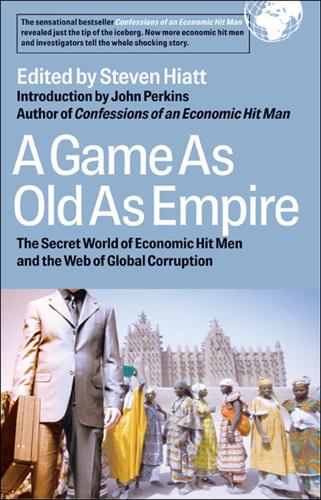
A Game as Old as Empire: The Secret World of Economic Hit Men and the Web of Global Corruption
by
Steven Hiatt; John Perkins
Published 1 Jan 2006
And I will proclaim the tragedies of baby Esther and her mother. The first is the rape that forced them to the margins of a devastated society. The second is the reality that Congo has more than enough wealth for Esther and the millions of other Congolese children to have an abundance of nutritious food, clean water, education, and decent medical care for the rest of their lives. But its resources go instead to adorn the wealthy with jewelry and to manufacture PlayStations, cell phones, and weapons systems for affluent First World societies. John Perkins’ term economic hit man seems almost too tame for the behavior of the corporatocracy and its minions in Congo.
…
Hundreds of thousands of people, especially children, died because there were no medicines and not enough food. A study by the United Nations children’s agency UNICEF found that between 1991 and 1998, half a million more children under five died than would be expected by comparison with preceding trends;17 many died because clean water was unavailable, since chlorine was considered a “dual use” commodity and its import was prohibited under the sanctions. When the U.S./UK force invaded in March 2003, most people in the south of Iraq, and many across the country, welcomed the move because it meant the end of Saddam. But that hope soon soured as the realities of occupation set in.
…
We were there to supervise implementation of the Monrovia Urban Development Project (MUDP), which was financed by the International Development Association (IDA), the lending arm of the World Bank that provides interest-free credits to the world’s poorest countries. This particular credit of $10 million was provided to the government of Liberia to improve conditions for the urban poor living in and around Monrovia. The local population did not have access to clean water, many roads were impassable, and sanitation and drainage were nonexistent, while garbage accumulated throughout the city. This project was going to change at least some of that, and my part was to help the local authorities develop training programs to ensure that municipal administrators, supervisors, and employees could perform their duties effectively.
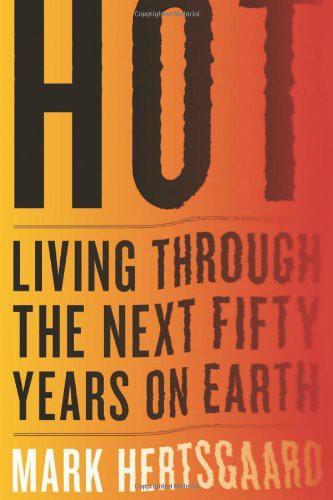
Hot: Living Through the Next Fifty Years on Earth
by
Mark Hertsgaard
Published 15 Jan 2011
Scientists calculate that ecosystems account for 40 to 50 percent of the poor's economic consumption, suggesting that the loss of these ecosystems would halve the poor's already meager living standards. Beyond that, the ecosystems with which we humans share the planet provide "ecosystem services" that make an indirect but absolutely indispensable contribution to our species' survival. Humans often forget that we rely on plant, animal, and microbial species to maintain healthy soil, clean water, breathable air, and other necessities of a livable planet. As naturalist E. O. Wilson has observed, "We need [ants] to survive, but they don't need us at all." Without ants, earthworms, and other unsung creatures to ventilate it, the earth's topsoil would soon rot, ending food production. Without vibrant forests, water supplies would shrink.
…
This is one reason Reij sees FMNR as superior to the Millennium Villages model promoted by Jeffrey Sachs, the economist who directs Columbia University's Earth Institute. The Millennium Villages program focuses on twelve villages in various parts of Africa, providing them free of charge with what are said to be the building blocks of development: modern seeds and fertilizer, boreholes for clean water, health clinics. "If you read their website, tears come to your eyes," said Reij. "It's beautiful, their vision of ending hunger in Africa. The problem is, it can only work temporarily for a small number of selected villages. Millennium Villages require continuing external inputs—not just fertilizer and other technology, but the money to pay for them—and that is not a sustainable solution.
…
His first recommendation echoed the advice of Aalt Leusink in the Netherlands. "We have to adapt now," he said. "We don't need to know how much CO2 concentrations will increase by 2100 in order to take action today." Burton also disputed the notion that poor communities can't afford to invest in adaptation because they face more urgent problems—shortages of clean water, food, health care, and so forth. "The dichotomy between adaptation and development is false," he said; communities—and countries, for that matter—that did not invest in adaptation would see their economies undermined by climate change, just as adaptation would falter without development to finance it.
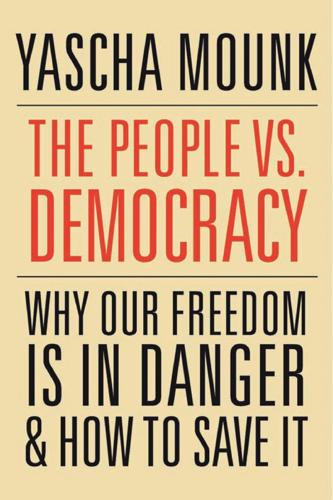
The People vs. Democracy: Why Our Freedom Is in Danger and How to Save It
by
Yascha Mounk
Published 15 Feb 2018
“Open Internet,” Federal Communications Commission, 2016, https://www.fcc.gov/general/open-internet. 29. “DDT—A Brief History and Status,” Environmental Protection Agency, https://www.epa.gov/ingredients-used-pesticide-products/ddt-brief-history-and-status; “EPA History: Clean Water Act,” Environmental Protection Agency, https://www.epa.gov/history/epa-history-clean-water-act; both accessed April 2, 2017. 30. “Carbon Pollution Standards for New, Modified and Reconstructed Power Plants,” Environmental Protection Agency, https://www.epa.gov/cleanpowerplan/carbon-pollution-standards-new-modified-and-reconstructed-power-plants, accessed April 2, 2017. 31.
…
Many of them are given full regulatory authority—in other words, “they can issue regulations, take administrative action to enforce their statutes and regulations, and decide cases through administrative adjudication.”22 In the United States, these independent agencies include the Federal Communications Commission (FCC), created in 1934, which regulates radio and television networks and rules on key questions of the digital age like net neutrality;23 the Securities Exchange Commission (SEC), also created in 1934, which is charged with protecting investors by regulating the operation of banks and other financial service providers, with maintaining fair markets, and with facilitating capital formation;24 the Environmental Protection Agency (EPA), created in 1970, which is empowered to pass regulation for such broad objectives as maintaining clean water and protecting endangered species;25 and the Consumer Financial Protection Bureau (CFPB), created in 2010, which regulates personal financial services like mortgages and credit cards.26 The range of contentious issues about which these independent agencies have ruled in the last years testifies to their importance.
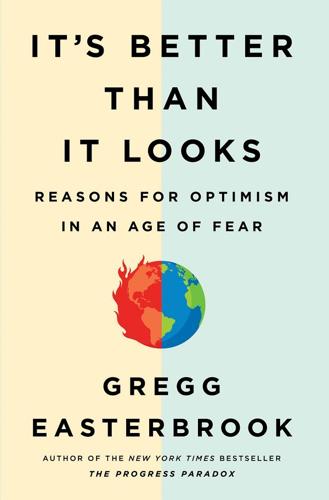
It's Better Than It Looks: Reasons for Optimism in an Age of Fear
by
Gregg Easterbrook
Published 20 Feb 2018
air that was free of smog, as air almost always is in American cities: “Our Nation’s Air Quality and Trends Through 2015” (Washington, DC: Environmental Protection Agency, 2016). in general cleanliness was rising: Suzanne Teller, “The Clean Water Act: 40 Years of Progress in Peril,” Outdoor America (Izaak Walton League of America) 4, 2012. “EPA figures show that the number of rivers, lakes, and estuaries safe for fishing and swimming doubled just 25 years after the passage of the Clean Water Act.” exploded with the power of about 1,500 Hiroshima bombs: The story is well told by Steve Olson in Eruption (New York: W. W. Norton, 2016). “Some 19 million old-growth Douglas firs”: Gregg Easterbrook, A Moment on the Earth (New York: Viking, 1995).
…
Acid rain was nearly stopped, the stratospheric ozone hole was closing. Water quality alarms were ongoing in Flint, Michigan, and along Long Island Sound, but in general cleanliness was rising, with Boston Harbor, Chesapeake Bay, Puget Sound, and other major water bodies, filthy a generation ago, mostly safe for swimming and fishing, meeting the 1972 Clean Water Act’s definition of success. Nearly every environmental barometer in the United States was positive and had been so for years if not decades. Watching the bald eagle soar did not make me feel complacent regarding the natural world, rather, made me feel that greenhouse gases can be brought to heel, just as other environmental problems have been.
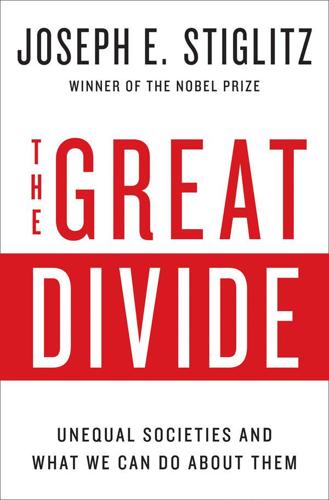
The Great Divide: Unequal Societies and What We Can Do About Them
by
Joseph E. Stiglitz
Published 15 Mar 2015
But when corporations call for harmonization, what they really mean is a race to the bottom. When agreements like the TPP govern international trade—when every country has agreed to similarly minimal regulations—multinational corporations can return to the practices that were common before the Clean Air and Clean Water Acts became law (in 1970 and 1972, respectively) and before the latest financial crisis hit. Corporations everywhere may well agree that getting rid of regulations would be good for corporate profits. Trade negotiators might be persuaded that these trade agreements would be good for trade and corporate profits.
…
When individuals live in close quarters, they cannot escape major societal problems: growing inequality, environmental degradation, and inadequate public investment. The forum reminded participants that livable cities require planning—a message at odds with prevailing attitudes in much of the world. But without planning and government investment in infrastructure, public transportation and parks, and the provision of clean water and sanitation, cities won’t be livable. And it is the poor who inevitably suffer the most from the absence of these public goods. Medellín holds some lessons for America, too. Indeed, recent research shows how inadequate planning has fueled economic segregation in the United States, and how poverty traps have formed in cities without public transportation, owing to a shortage of accessible jobs.
…
Development aid for agriculture has fallen from a high of 17 percent of total aid to just 3 percent today, with some international donors demanding that fertilizer subsidies be eliminated, making it even more difficult for cash-strapped farmers to compete. Rich countries must reduce, if not eliminate, distortional agriculture and energy policies, and help those in the poorest countries improve their capacity to produce food. But this is just a start: we have treated our most precious resources—clean water and air—as if they were free. Only new patterns of consumption and production—a new economic model—can address that most fundamental resource problem. ______________ * Project Syndicate, June 6, 2008. TURN LEFT FOR GROWTH* BOTH THE LEFT AND THE RIGHT SAY THEY STAND FOR ECOnomic growth.
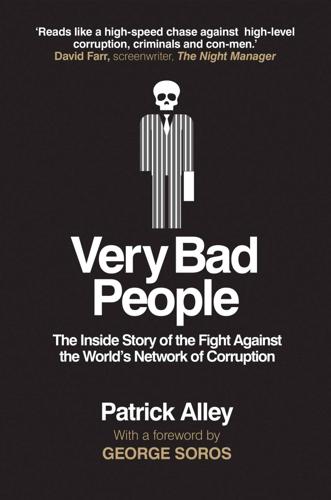
Very Bad People: The Inside Story of the Fight Against the World’s Network of Corruption
by
Patrick Alley
Published 17 Mar 2022
The call that finally came to say that his team had made it back okay was a huge relief, but during the hours of anxious waiting, Aidan had made one of the most difficult decisions of his life. His instructions to his programme manager in Malange were succinct: ‘You are to shut down operations immediately in Cangandala and shift them to a less exposed part of the enclave.’ The programme engineer protested because he hadn’t finished his work. No clean water meant that people would die, with children being the most vulnerable. But Aidan was adamant. He knew that if his staff were killed or injured, it would threaten Oxfam’s entire-country operation. It was a decision that haunted him. ‘Simply because I can make rational claim to have acted morally and to have managed the security of the situation wisely does little to assuage the thought that I condemned to death women as old as my mother and children who, when I saw them playing in the Cangandala camps, reminded me of my nieces and nephew,’ he wrote.
…
If you had the money, you could go to the Elf (French oil company) supermarket and buy blue cheese, French wine and other luxuries that were flown in every week, or you could afford the US$30 it cost to buy a pizza and wash it down with a US$5 can of Coke. In stark contrast, Angola’s population suffered one of the highest infant mortality rates in the world and most people couldn’t access clean water. The inflation rate was crippling. ‘Luanda is a schizophrenic city,’ Charmian told us on one of the rare calls she was able to make. She and Isobel were deeply affected by what they saw. Once-beautiful colonial buildings lay in ruins, their walls pockmarked by bullets. There were tower blocks with no walls that people lived in.
…
It was a dirt-poor pawn in the scramble to hoover up the world’s natural resources and was the target of some of the most ruthless operators on the planet – be they the country’s former colonial rulers, the succession of dictators that followed or the corporate leviathans who courted them. It is a textbook example of ‘the resource curse’: Guinea was poor precisely because it was rich. Its citizens survived on less than two dollars a day, with only half of the rural population having access to clean water and 30 per cent of kids too poor to go to primary school. On top of this, it was home to at least 300,000 refugees who had fled the conflicts in neighbouring Sierra Leone and Liberia. It was a country whose national budget was dwarfed by the personal wealth of many of the company bosses who would seek to exploit it.

Lonely Planet Kenya
by
Lonely Planet
THE MAA TRUST The conservation model behind the Mara conservancies is based on the assumption that wildlife conservation and community development and protection go hand in hand. Working along the border between the Naboisho and Olare-Orok conservancies, The Maa Trust (www.themaatrust.org) is a not-for-profit NGO that seeks to ensure that local Maasai communities benefit from tourism in the area. Their projects include education, clean water and public health initiatives, while local honey production, bead making and the sale of handicrafts help bring in revenue in addition to the conservancy proceeds. Visits to the trust can be arranged by a number of camps in the area – Asilia Naboisho Camp is one with a particularly close relationship with the trust.
…
It's the rhinos that form the centrepiece of the conservancy effort here – its (at last count) 111 black rhinos form the largest population in East Africa. However, Ol Pejeta's role in the wider ecosystem extends beyond its boundaries thanks to its partner agreements and wildlife corridors with other Laikipia ranches. Ol Pejeta is also extremely active in local community projects including school infrastructure, health care and the provision of clean water. OL PEJETA CONSERVANCY Why Go East Africa's largest black-rhino population; excellent wildlife viewing and activities; most accessible of the Laikipia conservancies. When to Go Year-round, although you'll need a 4WD from late March to late May. Practicalities Only the Serat Gate and main Rongai Gate (both in the conservancy's east) are open to visitors.
…
Further oil discoveries were made in 2017, which is likely to result in more companies heading up north looking for reserves. While not all Kenyans in the area are happy about the exploration, the development has resulted in improved infrastructure for the region. The area around Lokichar now has access to electricity, clean water and, eventually, a paved road up to Lodwar. The Eldoret–Kitale–Lokichar–Amosing road project was launched in 2016 and will stretch almost 300km right to the border with South Sudan. The road will transport the oil from Turkana to Mombasa and is expected to be completed by 2018, though at the time of research the roads outside of Lodwar were still untouched.

The Bill Gates Problem: Reckoning With the Myth of the Good Billionaire
by
Tim Schwab
Published 13 Nov 2023
This mission and vision have great merit, but they necessarily require us to imagine a world where everyone has basic rights and privileges and can fulfill their most basic needs—a decent place to live, basic health care, clean water and enough food to eat, educational opportunities, the ability to find gainful employment, legal protections from discrimination, and other basic democratic rights. Can we confidently state that the Gates Foundation moves us in this direction? Under Gates’s model, the global poor will never have clean water, but some will have access to rotavirus and polio vaccines that offer some protection against sickness caused by dirty water and poor sanitation.
…
That doesn’t mean they aren’t an important tool. They just aren’t the only tool—or the silver bullet solution the Gates Foundation wants them to be. Really improving public health requires us to address more fundamental issues related to poverty, like making sure people have access to a healthy diet, clean water, health care, income, and housing. “Yes—biomedical technology (especially vaccines and antibiotics) has given us the ability to keep more and more people alive,” David McCoy, a researcher at United Nations University, told me, “but this reliance on technology is fragile and [ignores the fact that] most premature mortality across the world is largely driven by poverty.
…
Likewise, when the Economist Intelligence Unit promotes its public policy consulting, it highlights its work with Gates “on several important initiatives. We contributed economic analysis and modelling to a project that sought to further three key foundation goals: lifting millions of subsistence African farmers above the poverty line, providing vaccines to children under one year of age, and improving access to clean water and sanitation for populations in selected developing countries. We also worked with the Gates and Clinton Foundations on a project to examine the global progress of women and girls and highlight key gaps.” It would appear that the Gates Foundation and the Economist Intelligence Unit have a robust relationship that goes back years, but, oddly, the foundation has no record of charitable donations to the Economist Group before 2022.

Fresh Clean Home: Make Your Own Natural Cleaning Products
by
Wendy Graham
Published 1 Feb 2018
You’re done, without even breaking a sweat! Kettle If you live in a hard-water area, you’ll be well aware of the need to regularly descale your kettle. Some people like using vinegar (equal parts white vinegar to water), but I’ve found you then have to boil your kettle a good few times with clean water afterwards to remove the vinegar smell. That’s a bit too much effort for my liking, so here’s my simple alternative. Every month or so, simply add 1 tablespoon of citric acid to half a kettle of water, and switch on the kettle allowing it to boil the water and switch off (or, if it’s a stovetop kettle, bring it to the boil and remove it from the heat).
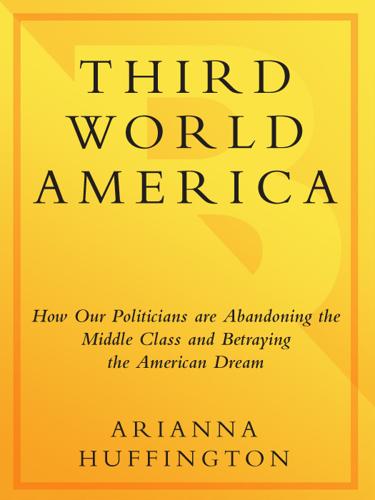
Third World America: How Our Politicians Are Abandoning the Middle Class and Betraying the American Dream
by
Arianna Huffington
Published 7 Sep 2010
POWER BLACKOUTS, RUSTY WATER, COLLAPSED BRIDGES, RAW SEWAGE LEAKS: A GUIDED TOUR OF THIRD WORLD AMERICA Extending the medical metaphor just a tad longer: Having failed to treat our ailment properly, we must continue to deal with the symptoms that rage all around us. What follows are the results of our nation’s latest infrastructure checkup. The prognosis is definitely not good. Let’s start this examination of what’s ailing America with that most elemental of elements: water. No society can survive without clean water. It’s essential for life and civilization (imagine the Roman Empire without its aqueducts). Clean, fresh water is so essential that many believe that, in the coming decades, wars will be fought over it. Among them is Steven Solomon, author of Water: The Epic Struggle for Wealth, Power, and Civilization, who believes the world can be divided into water haves and water have-nots (Egypt, China, and Pakistan are among the have-nots).28 “Consider what will happen,” he writes, “in water-distressed, nuclear-armed, terrorist-besieged, overpopulated, heavily irrigation-dependent and already politically unstable Pakistan when its single water lifeline, the Indus River, loses a third of its flow from the disappearance of its glacial water source.”
…
Despite the indispensable nature of water, America’s drinking-water system is riddled with aging equipment that has been in the ground for one hundred years—or longer.29 Indeed, some of the nation’s tap water continues to run through cast-iron pipes built during the Civil War.30 As a result of leaking pipes, we lose an estimated seven billion gallons of clean water every day.31 According to a New York Times analysis of data from the Environmental Protection Agency, “a significant water line bursts on average every two minutes somewhere in the country.”32 Washington, D.C., averages a water line break every day.33 “We have about two million miles of pipe in this nation,” says Steve Allbee of the EPA.34 “If you look at what we’re spending now and the investment requirements over the next twenty years, there’s a $540 billion difference.”
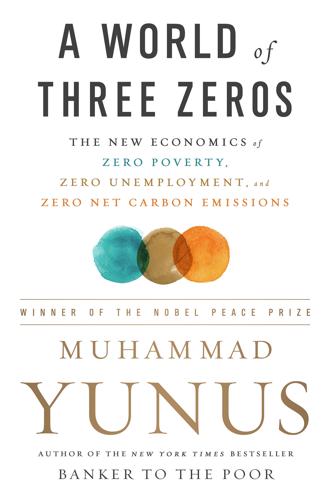
A World of Three Zeros: The New Economics of Zero Poverty, Zero Unemployment, and Zero Carbon Emissions
by
Muhammad Yunus
Published 25 Sep 2017
Now more and more companies are coming forward to partner with us to set up new social businesses. For example, we have created a joint venture with Veolia, a major water treatment and delivery company based in France, to deliver safe drinking water in the villages of Bangladesh. This joint venture operates a water treatment plant that brings clean water to fifty thousand villagers in an area of Bangladesh where the existing water supply is highly contaminated by arsenic. We sell the water to villagers at a price of just 3 cents per 10 liters. This makes the company sustainable, but no financial gain comes to Grameen or Veolia. We have created other joint venture social businesses in Bangladesh with corporations that include Intel Corporation, BASF, Uniqlo, SK Dream, and Euglena.
…
Good Health and Well-being: Ensure healthy lives and promote well-being for all at all ages. 4. Quality Education: Ensure inclusive and equitable quality education and promote lifelong learning opportunities for all. 5. Gender Equality: Achieve gender equality and empower all women and girls. 6. Clean Water and Sanitation: Ensure availability and sustainable management of water and sanitation for all. 7. Affordable and Clean Energy: Ensure access to affordable, reliable, sustainable, and modern energy for all. 8. Decent Work and Economic Growth: Promote sustained, inclusive, and sustainable economic growth; full and productive employment; and decent work for all. 9.
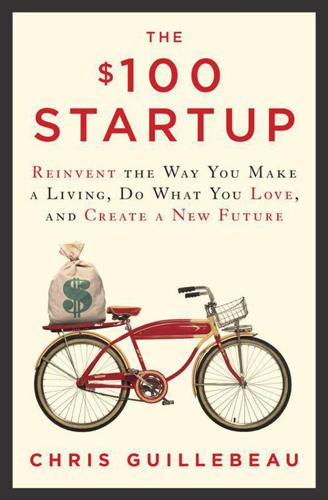
The $100 Startup: Reinvent the Way You Make a Living, Do What You Love, and Create a New Future
by
Chris Guillebeau
Published 7 May 2012
In many parts of the world, however, the starting point is much farther away than it is for most readers of this book. Starting a business in the developing world is often a difficult, highly bureaucratic endeavor—which is why so many people like Rhett operate in the informal sector. In some of these places, millions of people still lack access to clean water and other basic needs. In my own business and writing career, I invest at least 10 percent of all revenue with organizations that make better improvements around the world than I could make on my own. (This includes the royalties for this book, so if you’ve purchased it, thanks for the help.) I don’t consider this investment a charitable act; I consider it a natural response to the fact that I’ve been more fortunate than others.
…
I don’t consider this investment a charitable act; I consider it a natural response to the fact that I’ve been more fortunate than others. While creating freedom for yourself, how can you be part of a global revolution to increase opportunity for everyone? If you’re not sure, you can join the $100 Startup community in our campaign for clean water in Ethiopia by visiting charitywater.org/aonc. You can also sign up with groups, such as Kiva.org and AcumenFund.org, that provide loans (usually very small ones) to help people start microbusinesses in their own communities. Of course, these answers aren’t the only ones. If you have a better answer or just a different one, work on that instead.

Discardia: More Life, Less Stuff
by
Dinah Sanders
Published 7 Oct 2011
Let the rest of that dumb stuff go; aggravation is a bad investment of your time and energy anyhow. Don't sweat it. Get some perspective. A lot of things that may aggravate you only do so because you have the luxury of not wrestling with bigger issues. Today, be thankful for everything you have: being alive, your friends and family, your health, a roof over your head, something to eat, clean water to drink, indoor plumbing, heating, air conditioning, clothes, shoes, a job, and freedoms. Many, many people have it worse. Bad drivers in front of you or annoying coworkers or technical difficulties aren't that important in the grand scheme of things. Yeah, okay, they’re irritating, but are they important?
…
After visiting Miriam's house, a girl's orphanage near Nairobi, and a Maasai village, it was very clear to me that it is not the number or newness of possessions that make a happy home. Compared to most of the rest of the world, we’re rich. I realized how much I'd taken for granted the luxury of a solid, nonleaky house; indoor toilets; a fuel supply and plentiful clean water piped right into the house; a great variety of fresh foods; and clean clothes in good condition. As we begin to appreciate more of what we have, and buy fewer new things and get rid of things we don't need, it makes it easier to afford (or notice that we could already afford) to contribute to other people's quality of life.
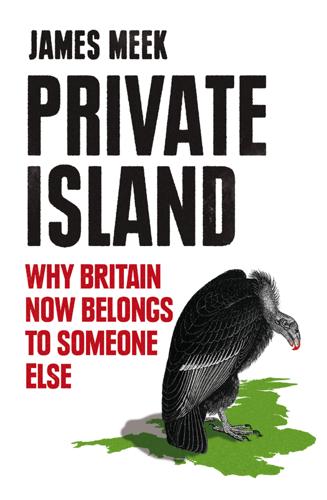
Private Island: Why Britain Now Belongs to Someone Else
by
James Meek
Published 18 Aug 2014
Categories overlap, and Powell, the ex-mayor, besides being a localist, had been a public servant – he worked for the fire brigade – and was, when I met him, a private servant, working as an electrician for Severn Trent, based at Mythe. After the waterworks was flooded he toiled hard to help get it back on line. Severn Trent gave him £150 as a thank you. ‘I gave part of that money to the mayor’s charity fund,’ he said. ‘We were there, doing our job. Trying to get that works back and running so people could have clean water to drink and wash in, and that was our priority. Most of the people who worked there were out of water themselves.’ Since the flood, Severn Trent has spent £36 million on extra flood defences for Mythe and back-up pipelines against future failure. When asked why this hadn’t been done before, the company explained that the risk of Mythe failing was too low to justify the expense, and funds for investment were limited.
…
Between 2009 and 2013, Severn Trent gave out almost £1 billion in dividends to shareholders. Had Severn Trent been run as a non-profit, commercial venture, a proportion of those dividend payments would have had to go towards paying interest on debt, but the cash leaked would have been less, and the surplus would have been ploughed back into the business of pipes, sewers and clean water. In the same period Scottish Water, a state-owned, unsubsidised, not for profit organisation, gave away no dividends. Its prices are about the same as Severn Trent – which boasts that it is the cheapest of all English water companies – and yet, over that same five-year period, Scottish Water invested more than £800 per customer, against £475 for Severn Trent.
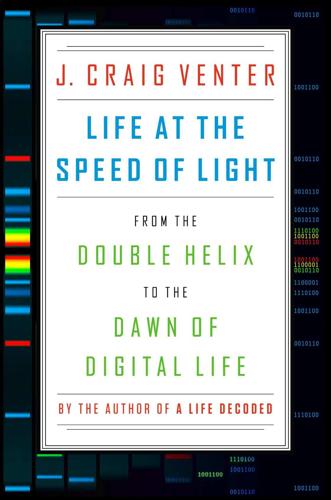
Life at the Speed of Light: From the Double Helix to the Dawn of Digital Life
by
J. Craig Venter
Published 16 Oct 2013
Ham Smith explained to the gathering that we now had the means to dissect the instructions of a cell to determine how it really worked. We also discussed our larger vision—namely, that the knowledge gained in doing this work would one day undoubtedly lead to a positive outcome for society through the development of many important applications and products, including biofuels, pharmaceuticals, clean water, and food products. When we made the announcement, we had in fact already started working on ways to produce vaccines and create synthetic algae to turn carbon dioxide into fuel. 9 Inside a Synthetic Cell The first pillar of life is a Program. By program I mean an organized plan that describes both the ingredients themselves and the kinetics of the interactions among ingredients as the living system persists through time.
…
The ability to send DNA code to anywhere on the planet in less than a second holds all kinds of possibilities when it comes to treating disease and illness. This information could code for a new vaccine, a protein drug (such as insulin or growth hormone), a phage to fight an infection caused by a resistant strain of bacterium, or a new cell to produce therapeutics, food, fuel, or clean water. When combined with home synthesizers, this technology will also allow treatments to be customized for each and every person, so that they suit the genetic makeup of a patient and, as a result, minimize side effects. The most obvious immediate application is to distribute vaccines in the event of the appearance of an influenza pandemic.
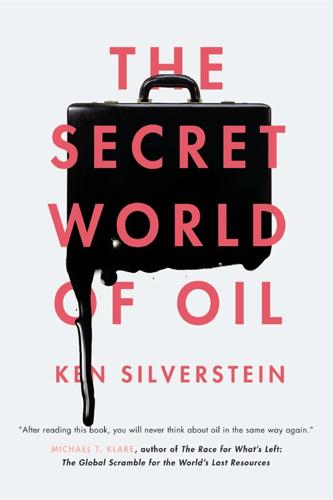
The Secret World of Oil
by
Ken Silverstein
Published 30 Apr 2014
(His wife, Kellie, is events coordinator at the town’s Louisiana State Oil and Gas Museum.) The industry has also frequently been able to get its own appointed to top positions at the state’s two main environmental agencies, the DNR and the Department of Environmental Quality (DEQ). The latter is charged with enforcing federal clean air, clean water, and hazardous waste laws, which the EPA says Louisiana does a worse job of than almost any other state. A 2011 EPA inspector general report said that weak enforcement at the DEQ was driven by “a lack of resources, natural disasters, and a culture in which the state agency is expected to protect industry.”
…
“This exemption does not make sense from an environmental perspective,” an EPA enforcement official told the newspaper. “This country runs on petroleum, and the oil interests in Congress are extremely powerful. They wanted the exemption. They got the exemption.”21 And over the years they got many more. All told the industry enjoys significant exemptions from numerous environmental statutes, including the Clean Water Act, the Safe Drinking Water Act, the Clean Air Act, and the National Environmental Policy Act—the “Magna Carta” of environmental legislation passed in 1970. The Oil Pollution Act approved by Congress in the wake of the Exxon Valdez spill capped civil liability for oil companies at $75 million.

In Defense of Global Capitalism
by
Johan Norberg
Published 1 Jan 2001
Per capita income in the very richest European countries was the equivalent of $1,000–$1,500 annually—less than in present-day Bolivia or Kazakhstan. Even if all incomes had been perfectly equally distributed, that amount would still have been insufficient for more than a state of abject misery, with neither clean water nor daily bread and with little more than one garment per person. Almost the entire world population lived at a level of poverty scarcely to be seen anywhere today: only the very poorest countries—Mali, Zambia, and Nigeria, for example—come anywhere near it. During the 200 years since then, per capita incomes have multiplied several times over, worldwide.
…
Another state that committed itself to free trade early on is the island nation of Mauritius. Through reduced military expenditure, protection of property rights, reduced taxes, a free capital market and increased competition, the country has achieved growth rates on the order of 5 percent annually. Today nearly everyone there has access to clean water, and education and health care are expanding. If countries like Mauritius and Botswana can achieve this degree of growth, why shouldn’t the rest of Africa be able to? The populations of the other African countries are no less inventive and enterprising than the people of Mauritius or Botswana, but they are forced to use their creative powers to evade corruption and regulations and to cope with working in the informal sector.

Heart: A History
by
Sandeep Jauhar
Published 17 Sep 2018
In 1854, John Snow, physician to Queen Victoria, performed the world’s first epidemiological study when he investigated a major cholera outbreak in London’s Soho. Snow was born in the town of York, at the intersection of two rivers contaminated by dung and sewage. His childhood likely sensitized him to a community’s need for clean water. Based on studies nearly ten years before the Soho epidemic, Snow had concluded that cholera was transmitted by “morbid matter,” not foul air, as his colleagues at the London Medical Society believed. He based his theory in part on the fact that workers in slaughterhouses, thought to be a font of cholera, were afflicted no more than the general population.
…
In this study, early death and poor health were found to increase stepwise from the highest to the lowest levels of the civil service hierarchy. Messengers and porters had nearly twice the death rate of higher-ranking administrators, even after accounting for differences in smoking, plasma cholesterol, blood pressure, and alcohol consumption. None of these civil servants were poor, in the usual sense. They all enjoyed clean water, plenty of food, and proper toilet facilities. The main ways they differed were in occupational prestige, job control, and other gradients of the social hierarchy. Marmot and his co-workers concluded that emotional disturbance, because of financial instability, time pressures, lack of advancement, and a general dearth of autonomy, drives much of the difference in survival.
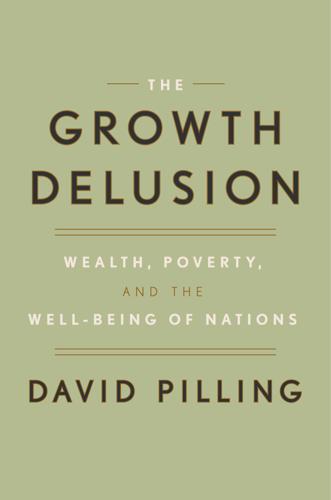
The Growth Delusion: Wealth, Poverty, and the Well-Being of Nations
by
David Pilling
Published 30 Jan 2018
But there are serious academics who contend that the really important advances in technology are all behind us. Robert Gordon, an expert on productivity at Northwestern University, argues that all the truly transformative inventions came about after 1870 and more or less ran out of steam around 1970. He cites the invention of electricity and the internal combustion engine, and the provision of clean water and sewage disposal. These led to the invention of machines such as the telephone, the radio, the refrigerator, the car, and aircraft. Many of these technologies in turn produced huge ripple effects. Ha-Joon Chang, a Cambridge economist, says the washing machine was a far more revolutionary invention (pun intended) than the Internet.
…
But, he has concluded, in the real world of policymaking “numbers matter and money matters more. People say, ‘How do you put a price on the priceless?’ But if you don’t do that, this is what you get, what we’re doing right now: sacrificing our health and our environment for economic gain.” McGuire likens the GPI to a budgetary reality check in which the budget is clean air, clean water, and leisure time as well as dollars and cents. “I’m a county employee. I can’t go out and buy a Ferrari every day. I am not making the dollars,” he says by way of illustrating budgetary limits. “If we want to have economic growth, that’s awesome. Just make sure we can afford it.” * * * — If the disadvantage of an index is that you can put in it anything you like, that is also its advantage.

Brilliant, Crazy, Cocky: How the Top 1% of Entrepreneurs Profit From Global Chaos
by
Sarah Lacy
Published 6 Jan 2011
Sinha reached out to the security experts to see if they could come up with a better solution, but instead they just endorsed his approach. There are a lot of ingenious things about this seemingly simple business. For one thing, nearly everyone in India’s cities has a cel phone even if they don’t have a home, income, power, or access to clean water. So if you want banking to be broad based, it’s the only possible medium. And with literacy rates of 73 percent for men and 48 percent for women, even an SMS system would be a chal enge, but everyone can dial numbers. Making vendors like Lal the tel ers of Eko’s virtual bank is crucial to wide adoption.
…
Walking through this slum for hours, hearing dramatic stories like these over and over again, it was striking how similar they al started to sound. A lot of Western pundits argue that technology isn’t what India needs when basics like jobs and water are in such short supply. That’s why rich people shouldn’t be the ones making the decisions about what poor people need. Just as a hot meal, clean water, or a U.S. dol ar can take on a meaning the rich can’t understand in a poor neighborhood, so too can basic technologies that connect people to one another. Ghate’s frustrations with VCs have made him only more determined, not just to prove this can be done but to prove he can do it. “I am a piece of carbon and al of these chal enges and hate words are polishing me up to become a diamond,” he says.
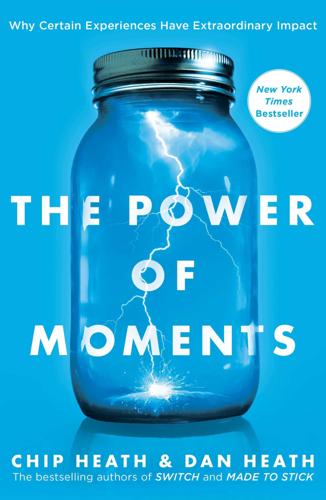
The Power of Moments: Why Certain Experiences Have Extraordinary Impact
by
Chip Heath
and
Dan Heath
Published 2 Oct 2017
In 2007, the British Medical Journal asked its readers to vote on the most important medical milestone that had occurred since 1840, when the BMJ was first published. Third place went to anesthesia, second place to antibiotics. The winner was one you might not have expected: the “sanitary revolution,” encompassing sewage disposal and methods for securing clean water. Much of the world, though, is still waiting for that revolution to come. In 2016, there were about a billion people worldwide who lacked access to clean water, and also a billion (likely many of the same people) who, lacking toilets, defecated outdoors—often in areas used by multiple people. This practice of open defecation has dire health consequences, just as it did in 1840.
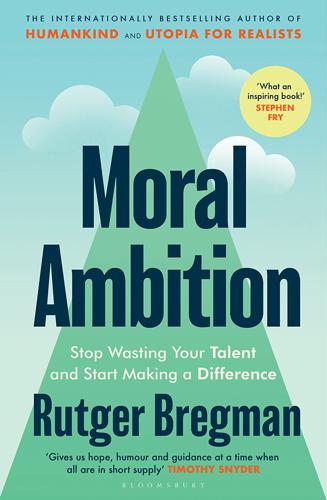
Moral Ambition: Stop Wasting Your Talent and Start Making a Difference
by
Bregman, Rutger
Published 9 Mar 2025
The world is overflowing with researchers, consultants, and academics who produce stacks of books, articles, and policy papers, then chuck them into the ‘public debate’, as if there’s someone just sitting there, waiting to convert any fresh insight into a new law, new product, or new agency. There’s not. In reality, most papers end up shelved or shredded. But Nader’s Raiders knew how to turn their words into deeds and their deeds into results. The publication of Vanishing Air was followed by the Clean Air Act of 1970. After Water Wastelands came the Clean Water Act of 1972. And many more pieces of legislation bear Raider fingerprints. One historian estimates that Nader’s Raiders directly influenced or inspired twenty-five federal laws on air and water pollution, energy production, wildlife protection, hazardous chemicals, and safety in the workplace.43 The Clean Air Act alone has saved hundreds of millions of life-years, and counting.44 All that time, Nader’s method remained the same: expose an injustice, come up with solutions, and then bring together a coalition of activists, lobbyists, politicians, and experts to make those solutions happen.
…
For sixteen years, 20,000 workers built the 130-kilometre-long sewer system. ‘The great sewer that runs beneath Londoners’, read Bazalgette’s obituary, ‘has added some 20 years to their chance of life.’ One historian notes that the engineer likely ‘saved more lives, than any single Victorian public official’. See: Fin Moorhouse, ‘First Clean Water, Now Clean Air’, finmoorhouse.com (April 2023); John Doxat, The Living Thames: The Restoration of a Great Tidal River, Hutchinson Benham (1977), p. 41. 54 See also: Juan Cambeiro and Brian Potter, ‘Indoor Air Quality Is the Next Great Public Health Challenge’, Institute for Progress (29 June 2023). 55 Beth Gardiner, ‘This Landmark Law Saved Millions of Lives and Trillions of Dollars’, National Geographic (29 December 2020). 56 David Wallace-Wells, ‘Air Pollution Kills 10 Million People a Year: Why Do We Accept That as Normal?’
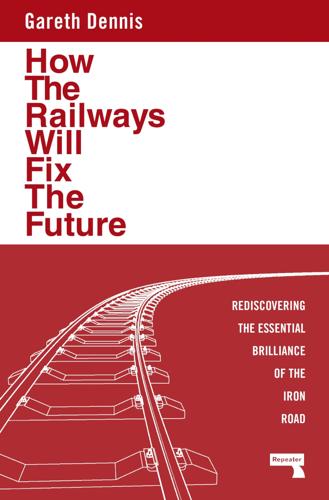
How the Railways Will Fix the Future: Rediscovering the Essential Brilliance of the Iron Road
by
Gareth Dennis
Published 12 Nov 2024
Instead, widening transport poverty and inequality — in many cases worsened by the permanent reduction of public transport services following the COVID-19 pandemic — now present another facet of the problem. The cost of moving around is a burden for those trying to access employment, education and — even today — clean water and food. Access to public services, too, is limited by car dominance and dependence. It is imperative, therefore, that safe, accessible and frequent public transport options are available for everyone, globally. Automation, isolation, disinformation, radicalisation and war: these are not discrete challenges; they are all interlinked, with each having an impact on all the rest.
…
However, the picture painted by futurists rarely describes the best solutions to humankind’s mobility problems. Driverless cars, revamped maglev and even flying taxis seem to be the default response when someone asks, “What will the future look like?”, yet these transport modes are costly and ineffective. As with clean water and energy distribution, humans have essentially solved mass transit. There is no more efficient means of carrying things and people across land than a steel wheel on a steel rail. So why aren’t the railways inspiring enough to occupy people’s vision of the future? Seeing as the challenge is getting those in power to invest, how can this happen if nobody is excited by what railways can achieve?
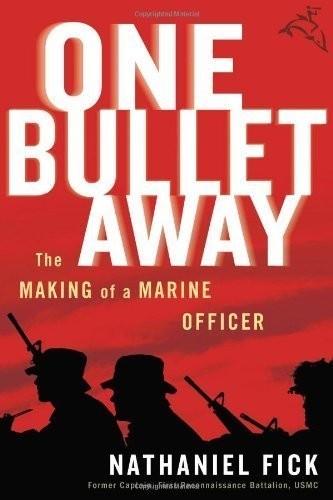
One Bullet Away: The Making of a Marine Officer by Fick, Nathaniel C.(October 3, 2005) Hardcover
by
Nathaniel C. Fick
Published 14 Apr 2006
Violence and looting continued to plague a city lacking even basics such as electricity and clean water. I felt as if we were under constant scrutiny by people who were less and less impressed with what they saw. I stopped the platoon outside a collection of brick buildings three kilometers beyond Sadr City. A heavyset man with thinning hair led a crowd toward us. He introduced himself as Mr. Kadem and requested, with a ceremonial flourish, that all aid to the village be coordinated through him. I asked what sort of aid he wanted. “We need only two things: clean water and bronze statues of George Bush.” I decided to play along.
…
Sometimes I’d come up with new topics just because I didn’t want the conversations to end. “It’s too soon to say, but I’ll tell you what I hope will happen,” I said. “I hope we’ll stop moving around and be assigned a sector. I hope we’ll patrol in that sector day after day. These people don’t give a fuck about democracy right now. They need clean water. They need to know they won’t get shot in the middle of the night. People put their money on the horse that looks like a winner. We need to convince them that we’re the winner.” “But what are the odds of that happening, sir?” Corporal Chaffin asked, as he scrubbed a rifle balanced on his knees.
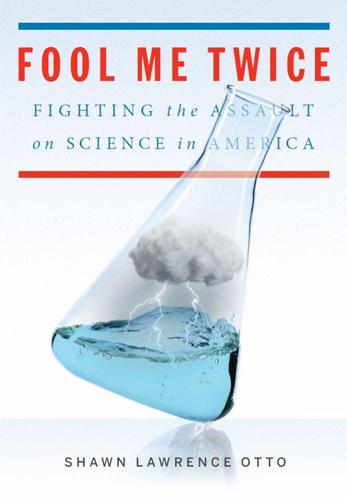
Fool Me Twice: Fighting the Assault on Science in America
by
Shawn Lawrence Otto
Published 10 Oct 2011
We put it in and people said we don’t believe it because there’s another ream of command and control language right alongside it.” Siegel says the command and control approach works, and if Republicans have rejected cap and trade, that’s their loss. “We already have all these laws set up and ready to go. The Clean Water Act, the Clean Air Act, the Endangered Species Act. Maybe they’re not perfect but they’re the world’s best, most successful laws. A theoretical cap and trade system is not incompatible with them.” She says the only way to counter special interest money is for the administration to use the bully pulpit.
…
These are the acts of our ignorant past, but once we build knowledge of environmental effects, once we “know better,” they become the acts of tyrants and bullies that deprive everyone of freedom and coerce everyone by removing choices, including those of the actor; they impose a tyranny of trash—of ignorance. Ignorance is not bliss. It’s tyranny. They take private property; they take health, life, and clean water; they take clean lungs and fresh air; they take fish by depleting the oceans, money by raising the cost of insurance. The shifting—or, as economists say, the externalizing—of private costs and risks onto the commons takes from everyone, and in fact reduces wealth. TYRANNY ON THE COMMONS All of this ties back in to the ideas of conservative economics, particularly those of its father, the American economist Milton Friedman.
…
It seeks to maximize productivity and biodiversity to provide maximum biological creativity and the attendant economic potential for finding the next big thing. This seeks, in other words, to maximize freedom. ECOSYSTEM SERVICES AND NATURAL PUBLIC CAPITAL For an economic model to include environmental sustainability, value must be assigned to common commodities, be they biodiversity, a stable climate, clean water, rain forests, parks, mineral resources, topsoil, what have you. Because the economy is a human system that trades in human values, the first principle of valuing the commons is to state it in terms of human values. Some environmentalists argue that this approach is wrong, that the values transcend human purposes.

Seeds of Hope: Wisdom and Wonder From the World of Plants
by
Jane Goodall
Published 1 Apr 2013
Finally we came to the hundred-acre, human-made wetlands, where many species of birds were feeding. There were even more insects and crabs. Dragonflies darted above us, and butterflies fluttered. From there the cleansed water, shining and alive, flows into the Dahan River. Other Ways of Cleaning Water All those plants press-ganged into helping us to clear up our filth. We owe them a great debt of thanks. Fortunately, “mop crops” are not the only way to clean water polluted by industrial, household, and agricultural runoff and by acid rain. Most other techniques involve pumping out the water, cleaning and returning it, and/or removing accumulated sediments. And while this is most often for our own good, here’s a story about the huge efforts made on behalf of endangered water plants.
…
But they did leave a team and some equipment behind when they left to build our Tchimpounga Sanctuary for the infant chimpanzees we were caring for who had been orphaned by the bushmeat trade. We Need Our Forests One tool that can be helpful to those fighting to save the forests is the fact that we really do need our forests. They provide us with clean water, protect the watershed, and prevent erosion. They also provide food and medicinal plants, and support a very wide range of different animals and plant species, thus protecting biodiversity. Moreover, forests are often referred to as the “lungs of the world,” as they take in CO2 from the air around them and release oxygen.
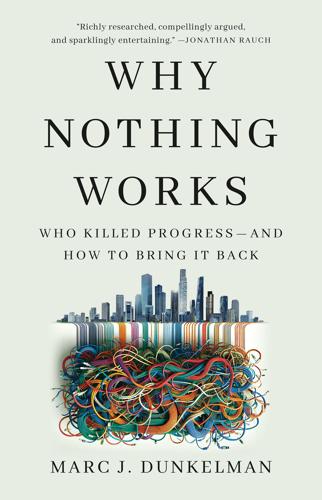
Why Nothing Works: Who Killed Progress--And How to Bring It Back
by
Marc J Dunkelman
Published 17 Feb 2025
Even Louis Jaffe, a New Dealer who became a luminary of administrative law, was by 1965 writing about “the most monstrous expression of administrative power.”65 And that meant, logically, that the only real way to pursue the greater good was to reverse course—to push power down and out, to give ordinary people the opportunity to advocate for themselves, to establish outside watchdogs designed to keep the system honest.66 It wasn’t enough simply to throw your body on the machine. Per the new zeitgeist, law and policy would give citizens the tools they needed to manacle the octopus. The ideological whiplash was rife in nearly every realm.67 Between 1965 and 1977, Congress passed a rash of environmental bills, some of which—the Clean Air Act of 1970 and the Clean Water Act of 1972 among them—compelled strong, centralized, executive agencies to take tougher lines against polluters.68 Rather than accept an industry’s explanation for why it couldn’t wean itself from whatever harmful environmental practice it had embraced to date—smokestack emissions, toxic runoff—Congress set explicit standards and timetables.
…
McGarity, “Some Thoughts on ‘Deossifying’ the Rulemaking Process,” Duke Law Journal 41, no. 6 (1992): 1385–1462. 67. Edward V. A. Kussy, “Surface Transportation and Administrative Law: Growing Up Together in the 20th Century,” Transportation Research Record 1527, no. 1 (January 1996): 8. McGarity, “Some Thoughts on ‘Deossifying’ the Rulemaking Process,” 1387. 68. See the Clean Water Act of 1977 and a revision of the Clean Air Act in 1990, among other bills. Robert A. Kagan, Adversarial Legalism: The American Way of Law, 2nd ed. (Cambridge, MA: Harvard University Press, 2019), 254–258. 69. Richard J. Lazarus, “The Tragedy of Distrust in the Implementation of Federal Environmental Law,” Law and Contemporary Problems 54, no. 4 (Autumn 1991). 70.
…
Luz Lazo, “The 5 Higher-Speed Rail Projects Taking Shape in the U.S.,” Washington Post, August 30, 2023. Ezra Klein, “What the Hell Happened to the California of the ’50s and ’60s?,” New York Times, June 18, 2023. 87. The reforms of the last half century, if not longer, have inserted more and more vetoes into the system: the Clean Air Act, the Clean Water Act, the Endangered Species Act, and the National Historic Preservation Act, among others. 88. “Highway and Transit Projects: Evaluation Guidance Needed for States with National Environmental Policy Act Authority,” U.S. Government Accountability Office, GAO-18-222, published January 30, 2018, www.gao.gov/products/gao-18-222. 89.
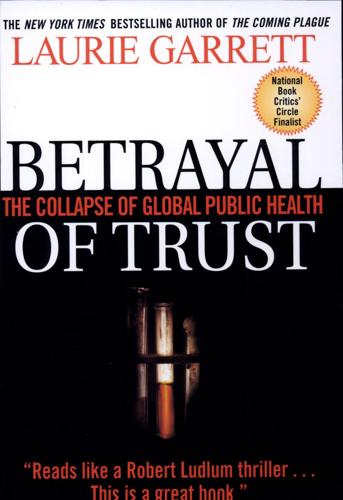
Betrayal of Trust: The Collapse of Global Public Health
by
Laurie Garrett
Published 15 Feb 2000
In 1996 Canadian scientist Joseph Decosas decried underdevelopment at a gathering of AIDS researchers in Vancouver.2 Holding an imaginary glass of water in the air Decosas grimly said that “if the solution for AIDS would be to bring a glass of clean water to everybody in the world, we would not be able to bring that. We have not been able to stop children from dying from simple diarrhea by providing clean drinking water.” We have not, at the millennium, been able to bring clean water, food, or life’s succor to the world’s poor. Every night in 1997 more than 200 million Indians went to bed hungry, officially malnourished—including half of the country’s children.
…
The city, from its earliest seventeenth-century days, had only two options: close itself off and suffer economically, or open its arms to the world while creating systems within the city to control disease. For two hundred years New Yorkers fought off epidemics and pestilence, learning by erring how to create an enormous metropolis that was, from at least a disease perspective, safe. Vital statistics, clean water, pasteurized milk, mass vaccination, less hazardous workplaces, public sewers—these were the hallmarks, achieved one agonizing step after another, of Gotham’s public health system. In the mid-1990s I wrote The Coming Plague: Newly Emerging Diseases in a World Out of Balance,1 which looked at the reemergence of infectious diseases.
…
They don’t understand that cholera vibrio do not respond to antibiotics,” Neira said, her face expressing frank astonishment. “They want electrophoresis and amyloid analyzing equipment,” all expensive and entirely unnecessary. When Neira’s team carefully explained that worldwide cholera was best treated simply with oral rehydration therapy—a mixture of clean water and salts that stop the deadly dehydration induced by cholera—the Romanian public health officials snapped at WHO experts: “Don’t come here with your guidelines for African poor people—cholera guidelines are for Africans. We are Europeans!” But WHO concluded that some former Soviet-dominated countries—particularly Ukraine—had “sanitation that is worse than in Africa,” Neira said.
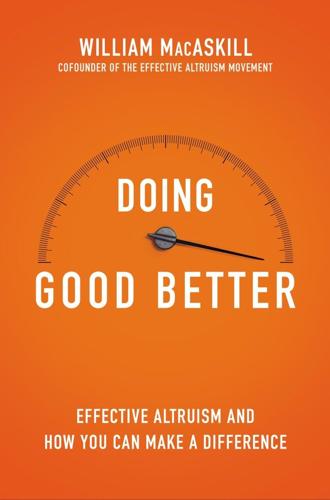
Doing Good Better: How Effective Altruism Can Help You Make a Difference
by
William MacAskill
Published 27 Jul 2015
Now he was witnessing a potential solution. Stuiver’s invention seemed brilliant. Instead of the typical hand pump or windmill pump found in many villages in poor countries, Stuiver’s pump doubled as a playground merry-go-round. Children would play on the merry-go-round, which, as it spun, would pump clean water from deep underground up to a storage tank. No longer would the women of the village need to walk miles to draw water using a hand pump or wait in line at a windmill-powered pump on a still day. The PlayPump, as it was called, utilized the power of playing children to provide a sustainable water supply for the community.
…
The charity has provided more than forty million deworming treatments, and the independent charity evaluator GiveWell regards them as one of the most cost-effective development charities. • • • When it comes to helping others, being unreflective often means being ineffective. The PlayPump is the perfect example. Trevor Field and everyone who supported him were driven by emotions—the appeal of seeing happy children provide their communities with clean water through the simple act of playing—rather than facts. The Case Foundation, Laura Bush, and Bill Clinton supported the PlayPump not because there was good evidence to believe it would help people but because it had the thrill of a revolutionary technology. Even critics of the campaign would stop short of accusing Field and his supporters of bad intentions—they no doubt genuinely wanted to help the people of rural Africa.
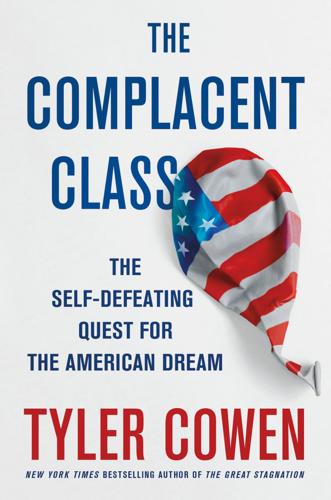
The Complacent Class: The Self-Defeating Quest for the American Dream
by
Tyler Cowen
Published 27 Feb 2017
In 1900, only about 6 percent of Americans were graduating from high school, and the country had a standard of living below many parts of modern-day Central America. Most Americans lived on farms. Electricity and flush toilets were not to be taken for granted. There were no antibiotics and no vaccines, and clean water was a luxury.27 But what happened over the next fifty years? In the area of public health, vaccines, clean water, and antibiotics all became commonplace. In transportation, the car went from a rare sight to a commonplace part of American life, glorified in songs like those by Chuck Berry. Airplanes were flying across the country on a regular basis. A radio was in virtually every home, telephones were common, and just a few years later, television would be spreading rapidly.
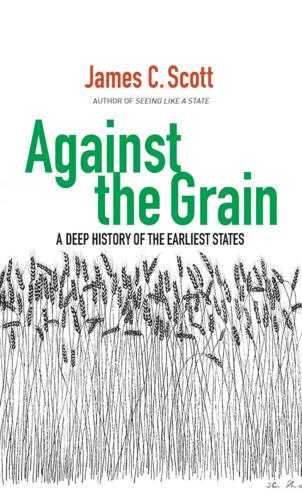
Against the Grain: A Deep History of the Earliest States
by
James C. Scott
Published 21 Aug 2017
The pioneers who created this historically novel ecology could not possibly have known the disease vectors they were inadvertently unleashing. In fact, it was not until the late nineteenth-century discoveries of the founders of microbiology, Robert Koch and Louis Pasteur, that it became clear what a heavy price in chronic and lethal infections Homo sapiens was paying for the absence of clean water, sanitation, and sewage removal. As devastating new illnesses left humans not knowing what hit them, folk theories and remedies proliferated. Only one nostrum—“dispersal”—implicitly identified crowding as the basic cause. The density-dependent diseases afflicting the populations of the late-Neolithic multispecies resettlement camp represented a new and rigorous selection pressure from pathogens never experienced by their ancestors.
…
The only sensitive exploration of this topic I know of is Bruce Chatwin’s fine book written about Australia, The Songlines (London: Cape, 1987). The Roma, aka Gypsies, are a modern example of determined mobility—so much so that the famous Norwegian diplomat Fridtjof Nansen proposed after World War II issuing them what would have been the first “European” passports. 6. Urban populations, before the revolution in sanitation (sewage and clean water) of the mid-nineteenth century and before vaccination and antibiotics, generally had such high rates of mortality that they grew only by large-scale in-migration from the countryside. 7. In fact, it seems that such sites of wild stands and/or cultivated but nondomesticated grains and the periodic gatherings to harvest the grains and store them were common enough for them to be misinterpreted as permanent, sedentary communities cultivating fully domesticated crops.
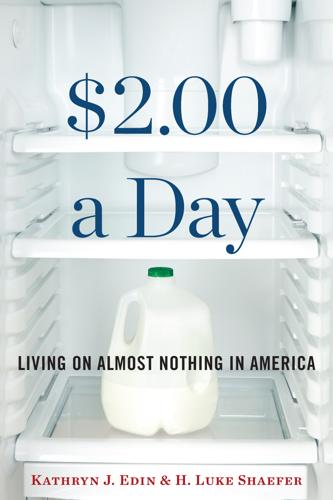
$2.00 A Day: Living on Almost Nothing in America
by
Kathryn Edin
and
H. Luke Shaefer
Published 31 Aug 2015
Indeed, had the family been completely open about their situation when applying for benefits, the child welfare authorities might have come and taken the kids. At one point, Paul fell far behind on the humongous water bills that started coming in. “[It] got up to $2,700,” he says. The water was shut off for weeks, but he had “a friend we could go to with five-gallon buckets that was for clean water, dishwater.” Several times a week, the kids would pile in the back of the panel van, each with a bucket or two in hand, to travel the short distance to the friend’s home. There they would fill the buckets and set up a bucket brigade, passing them from hand to hand into the back of the vehicle. Then they would all climb in the van with the buckets for the trip home.
…
He’s been busy sitting by the washing machine, waiting to catch the rinse water so that he can reuse it in the next load. (When his water was shut off, he was busy rigging up the gutter and garbage can to catch rainwater that could be used to flush the toilet, and driving to his friend’s house and making trips to the neighbor’s to fill up empty milk jugs with clean water.) He’s been busy driving the kids to the local food pantry—to prove just how many mouths they have to feed. And when he hasn’t been running back and forth, he’s been occupied welding his crumbling van together and buttressing the collapsing floor of his home. None of these jobs can be captured on a résumé or in the U.S. government’s official workforce statistics.
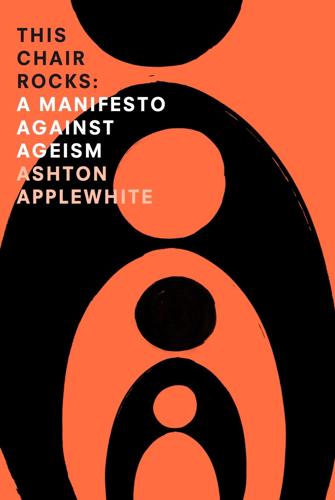
This Chair Rocks: A Manifiesto Against Ageism
by
Ashton Applewhite
Published 10 Feb 2016
In the twentieth century, in the US alone, the American lifespan increased by a staggering thirty years. This largely reflects the fact that more Americans are surviving to adulthood, but we’re living longer too, gaining on average ten biological years since our grandparents’ era. In effect, thanks largely to clean water and antibiotics, we’ve redistributed death from the young to the old. “It is, frankly, insane to look at an ageing population and not rejoice,” writes Guardian columnist Zoe Williams about the US Census Bureau’s 2008 report on the unprecedented aging of the world population. “Why do we even have a concept of public health, of co-operation, of sharing knowledge, if not to extend life, wherever we find it?”
…
The difference in quality of life as well as its duration correlated with five predictable and modifiable behaviors: not smoking, controlling weight and blood pressure, avoiding diabetes, and regular exercise. Aging is not a disease The biological causes of death are more predictable than they were in 1900. Thanks to clean water and antibiotics, TB and diarrheal diseases have given way to heart disease, cancer, and stroke. If we find a cure for those, we’ll die from something else—but not of old age, because aging is not a disease. It was long equated with illness because studies were originally carried out in long-term care and nursing facilities, where bodies and brains were rarely stimulated and many subjects were indeed ill.
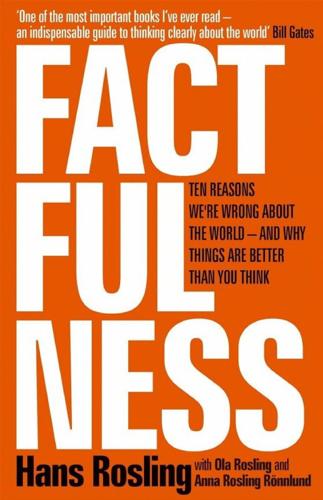
Factfulness: Ten Reasons We're Wrong About the World – and Why Things Are Better Than You Think
by
Hans Rosling
,
Ola Rosling
and
Anna Rosling Rönnlund
Published 2 Apr 2018
I wanted my medical students from Level 4 to meet a real health worker on Level 1 instead of just reading about them in books. The midwife had no formal education, and the students’ jaws dropped when she described her struggles, walking between villages to help poor women deliver babies on mud floors in complete darkness with no medical equipment and no clean water. One of the students asked, “Do you have children of your own?” “Yes,” she said proudly, “two boys and two daughters.” “Will your daughters become midwives like you?” The old woman threw her body forward and laughed out loud. “My daughters! Working like me?! Oh no! Never! Ever! They have nice jobs.
…
A smaller proportion of people than ever before is stuck in extreme poverty. But there are still 800 million people left. Unlike with climate change, we don’t need predictions and scenarios. We know that 800 million are suffering right now. We also know the solutions: peace, schooling, universal basic health care, electricity, clean water, toilets, contraceptives, and microcredits to get market forces started. There’s no innovation needed to end poverty. It’s all about walking the last mile with what’s worked everywhere else. And we know that the quicker we act, the smaller the problem, because as long as people remain in extreme poverty they keep having large families and their numbers keep increasing.
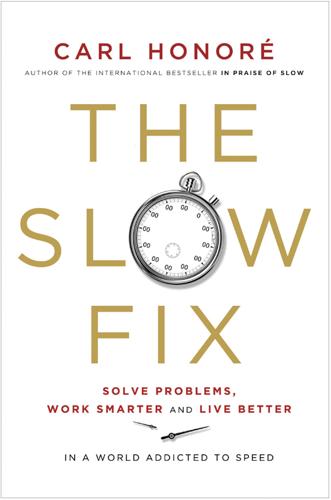
The Slow Fix: Solve Problems, Work Smarter, and Live Better in a World Addicted to Speed
by
Carl Honore
Published 29 Jan 2013
My place is on Table K along with a software engineer, an unemployed labourer, a chartered auditor, a trainee architect, a music student, a marketing manager, an interior designer and Katrin Jakobsdottir, the young minister for Education, Science and Culture. After introductions, Sigrun, our moderator, asks us to list Iceland’s unique selling points (USPs). The software engineer says the country has a clean, green image that sets it apart. When Sigrun urges him to be more specific, the auditor steps in. “We have so much fresh, clean water, compared to other countries,” she says. “Can we find a way to use that?” The architect points out that Iceland is blessed with hot springs. The labourer leans forward, nodding his head vigorously. “Maybe we could drill into the earth to get geo-heat from the water,” he says. This sparks off a debate about whether water really is a USP and if the energy harvested from it could be exported from Iceland’s remote location.
…
McGonigal thinks science is just the beginning. In 2010, together with the World Bank Institute, she launched EVOKE, a game that encourages players to tackle social problems in the developing world. One week the mission might be to find a source of renewable energy for a village, the next to improve one person’s access to food or clean water. Though it uses the same tropes that keep Mabinogi players glued to their seats for days on end – cool graphics, missions, rewards, levels, feedback – EVOKE is designed to minimise time on the keyboard. On average, its players spend five to six hours pursuing missions in the real world for every hour spent in front of a screen.
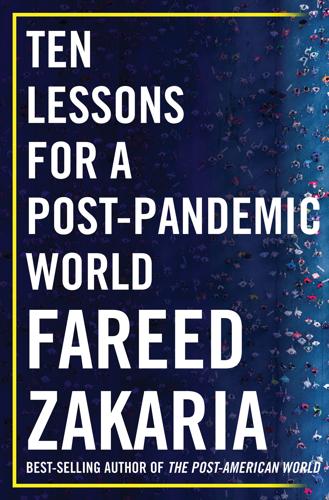
Ten Lessons for a Post-Pandemic World
by
Fareed Zakaria
Published 5 Oct 2020
Cities made other changes to the way they supplied water: they filtered it, they constructed drainage canals to shield it from contamination, and they drew it from deep underground sources rather than from polluted rivers. These and other simple advances in sanitation had astonishing effects. Mortality rates in the United States fell by 40% from 1900 to 1940 and life expectancy rose from forty-seven to sixty-three, note researchers David M. Cutler and Grant Miller. They add that during that period, clean water alone “was responsible for nearly half of the total mortality reduction in major cities.” For children, the reduction was higher still. Time and again, cities the world over adopted the policies that worked, and improvements spread and built on one another. This included new ideas that we might not immediately associate with cities.
…
In the late nineteenth century, outbreaks of cholera and popular reports of “how the other half lives” in overcrowded tenements spurred urban reform movements in Europe and the United States. Today, the developing world’s cities face issues of exponentially greater size, but, ultimately, they could easily apply some of the solutions Western cities did a century ago—centering on sanitation and clean water. And the pandemic might spur measures to protect against other calamities. The United Nations estimates that 59% of the world’s cities with a population of at least half a million are at high risk from natural disasters—from cyclones to floods, droughts, earthquakes, landslides, or volcanic eruptions.
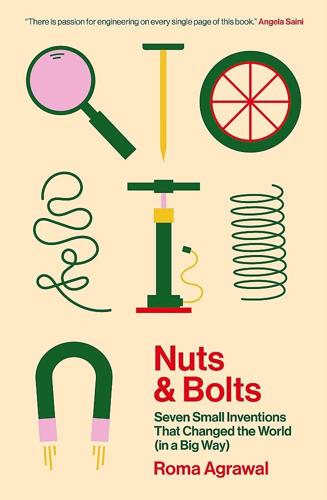
Nuts and Bolts: Seven Small Inventions That Changed the World (In a Big Way)
by
Roma Agrawal
Published 2 Mar 2023
The word pump may conjure an image of a fairly sophisticated piece of technology requiring many moving parts, but, at its most fundamental, a pump is a contraption that moves liquids or gases. Pumps can be as straightforward as a bucket of water at the end of a string that you pull, or as complex as a multi-piston, motor-driven engine that moves and burns petrol to power a vehicle. Historically, pumps have played a vital role in bringing clean water to us, taking dirty water away, and enabling us to grow food in bulk and in hostile environments. The reason we need them is because fluids (this includes both liquids and gases) naturally move in a way that responds to the forces around them. They flow from higher to lower levels, like a waterfall does, due to gravity.
…
Innovative pumps like the shadoof, and the Archimedes screw (which was invented in ancient Egypt and discovered by the Greeks – mentioned in Chapter 1) originally arose in arid regions where people had to be creative about their water supply. Even in the modern world, those of us lucky enough to live with clean water that pours freely out of our taps are reliant on pumps. I find it fascinating (and also a shame) that many of the pumps we use today trace their origins to the Middle Ages: more specifically, to an engineer whose name may not be familiar to us. In his treatise Kitāb ma’rifat al-hiyal al-handasiya (The Book of Knowledge of Ingenious Mechanical Devices), published in 1206, inventor and engineer Badi’ az-Zaman Abu-’l-’Izz Ibn Isma’il Ibn al-Razaz al-Jazari described in minute detail more than fifty mechanical devices.
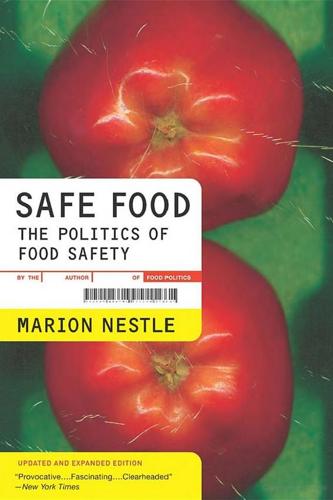
Safe Food: The Politics of Food Safety
by
Marion Nestle
Published 1 Jan 2010
It demonstrates that in 1998 the department still could not require farmers or transporters to institute HACCP plans, nor could it demand performance standards—maximum levels of harmful microbes allowed as verified by testing—for reducing pathogens.15 TABLE 9. Advice from the Department of Agriculture: food safety is everyone’s responsibility Farm Pathogens are found to some extent in all farm animals. Livestock operations should be separated from produce operations. Clean water should be used to irrigate produce. Storage/Transport Keep products cold. Clean tanks between shipments. Slaughter/Processing Apply HACCP preventive systems. New technologies can reduce the risk of pathogen contamination. Consumer Clean: Wash hands and surfaces often. Separate: Don’t cross-contaminate.
…
Instead, a combination of supplementation, fortification, and dietary approaches is likely to be needed—approaches such as promoting the production and consumption of fruits and vegetables rich in beta-carotene, educating people about how to use such foods, and improving the quantity and variety of foods in the diet (so beta-carotene can be better absorbed). Perhaps most helpful would be basic public health measures such as providing adequate supplies of clean water (to prevent transmission of diarrheal and parasitic diseases). Long-term solutions to the problem of vitamin A deficiency in particular, and malnutrition in general, continue to depend on societal interventions such as education, housing, health care, employment, and income—all more difficult and complicated, but ultimately more likely to be effective, than genetic engineering.
…
The recent history of Afghanistan illustrates these points. Its health care system is poor by any standard, and its high infant mortality rate is approached by only one other country (Pakistan) outside of sub-Saharan Africa. As noted earlier, malnutrition is widespread, in part because only slightly more than one-tenth of the population has access to clean water supplies (contaminated water induces diarrheal and other infectious diseases that, in turn, contribute to malnutrition). In this situation, advised Richard Horton, editor of the Lancet, “Attacking hunger, disease, poverty, and social exclusion might do more good than air marshals, asylum restrictions, and identity cards.

The Rational Optimist: How Prosperity Evolves
by
Matt Ridley
Published 17 May 2010
But the vast majority of people are much better fed, much better sheltered, much better entertained, much better protected against disease and much more likely to live to old age than their ancestors have ever been. The availability of almost everything a person could want or need has been going rapidly upwards for 200 years and erratically upwards for 10,000 years before that: years of lifespan, mouthfuls of clean water, lungfuls of clean air, hours of privacy, means of travelling faster than you can run, ways of communicating farther than you can shout. Even allowing for the hundreds of millions who still live in abject poverty, disease and want, this generation of human beings has access to more calories, watts, lumen-hours, square feet, gigabytes, megahertz, light-years, nanometres, bushels per acre, miles per gallon, food miles, air miles, and of course dollars than any that went before.
…
When this civilisation falls, when the Romans, whoever they are this time round, have finally left and the new dark ages begin, this will be one of the first luxuries to go. The old folk crouching by their peat fires will tell their disbelieving grandchildren of standing naked mid-winter under jet streams of hot clean water, of lozenges of scented soaps and of viscous amber and vermilion liquids they rubbed into their hair to make it glossy and more voluminous than it really was, and of thick white towels as big as togas, waiting on warming racks. IAN MCEWAN Saturday One day a little less than 500,000 years ago, near what is now the village of Boxgrove in southern England, six or seven two-legged creatures sat down around the carcass of a wild horse they had just killed, probably with wooden spears.
…
I have argued that although such optimism is distinctly unfashionable, history suggests it is actually a more realistic attitude than apocalyptic pessimism. ‘It is the long ascent of the past that gives the lie to our despair,’ said H.G. Wells. These are great sins against conventional wisdom. Worse, they may even leave the impression of callous indifference to the fact that a billion people have not enough to eat, that a billion lack access to clean water, that a billion are illiterate. The opposite is true. It is precisely because there is still far more suffering and scarcity in the world than I or anybody else with a heart would wish that ambitious optimism is morally mandatory. Even after the best half-century for poverty reduction, there are still hundreds of millions going blind for lack of vitamin A in their monotonous diet, or watching their children’s bellies swell from protein deficiency, or awash with preventable dysentery caused by contaminated water, or coughing with avoidable pneumonia caused by the smoke of indoor fires, or wasting from treatable AIDS, or shivering with unnecessary malaria.

Lifespan: Why We Age—and Why We Don't Have To
by
David A. Sinclair
and
Matthew D. Laplante
Published 9 Sep 2019
Sure, little by little, millennia by millennia, we’ve been adding years to the average human life, they will say. Most of us didn’t get to 40, and then we did. Most of us didn’t get to 50, and then we did. Most of us didn’t get to 60, and then we did.12 By and large, these increases in life expectancy came as more of us gained access to stable food sources and clean water. And largely the average was pushed upward from the bottom; deaths during infancy and childhood fell, and life expectancy rose. This is the simple math of human mortality. But although the average kept moving up, the limit did not. As long as we’ve been recording history, we have known of people who have reached their 100th year and who might have lived a few years beyond that mark.
…
The resolution of that public health skirmish led to improved water delivery and sewage systems in the capital of the world’s largest empire. Those innovations were soon copied around the globe—one of the greatest global health achievements in human history. Far more than any other lifestyle change or medical intervention, clean water and working sanitation systems have led to longer and healthier lives the world over. And London, where this all began, is Exhibit A. Lifespans in the United Kingdom have more than doubled in the past 150 years, in no small part because of innovations that were made in direct response to the overcrowding in it that the early-nineteenth-century parliamentarian William Cobbett derisively called the Great Wen, a nickname that compared the city to a swelling, pus-filled, sebaceous cyst.
…
The same survey identified similarly significant levels of optimism in Brazil, Russia, India, and Turkey—all places where standards of living have been on the rise.58 And yes, this includes habits of increasing consumption, but it also includes lowering birth rates, falling rates of poverty, greater access to clean water and electricity, more stable access to food and shelter, and greater availability of medical care. Pessimism, it turns out, is often indicative of exceptional privilege. When viewed globally, however, it gets a lot harder to make the case that the world is an increasingly miserable place. It’s simply not.

Parks Directory of the United States
by
Darren L. Smith
and
Kay Gill
Published 1 Jan 2004
Park- and Conservation-Related Organizations ★5062★ CLEAN WATER FUND (CWF) 4455 Connecticut Ave NW, Suite A300-16 Washington, DC 20008 Web: www.cleanwaterfund.org Phone: 202-895-0432; Fax: 202-895-0438; Toll Free: 800709-2837 Research and educational organization dedicated to improving environmental conditions for present and future generations. Work is concerned with achieving cleaner and safer water, cleaner air, and protection from toxic pollution in homes, neighborhoods, and workplaces. Clean Water Fund’s programs build on and complement those of the affiliated Clean Water Action organization. Established: 1978
…
Camping Women (CA) . . . . . . . . . . . . . . . . . . . . . . . . . . . . . . . . . . . Center for Plant Conservation (MO). . . . . . . . . . . . . . . . . . . . . . . . Charles A & Anne Morrow Lindbergh Foundation (MN). . . . . . Civil War Preservation Trust (DC) . . . . . . . . . . . . . . . . . . . . . . . . . Clean Water Action (DC). . . . . . . . . . . . . . . . . . . . . . . . . . . . . . . . . Clean Water Fund (DC) . . . . . . . . . . . . . . . . . . . . . . . . . . . . . . . . . . Co-op America (DC). . . . . . . . . . . . . . . . . . . . . . . . . . . . . . . . . . . . . Coastal Conservation Association (TX) . . . . . . . . . . . . . . . . . . . . . Colorado Environmental Coalition (CO) . . . . . . . . . . . . . . . . . . . .
…
.★1072 Preservation Action . . . . . . . . . . . . . . . . . . . . . . . . . . . . . . . . . . . . . . 5205 President’s Park (White House). . . . . . . . . . . . . . . . . . . . . . . . . . . . . 292 Rails-To-Trails Conservancy . . . . . . . . . . . . . . . . . . . . . . . . . . . . . . 5210 Recreation.gov . . . . . . . . . . . . . . . . . . . . . . . . . . . . . . . . . . . . . . . . . . 5212 Rock Creek Park . . . . . . . . . . . . . . . . . . . . . . . . . . . . . . . . . . . . . . . . . 300 Roosevelt (Franklin Delano) Memorial . . . . . . . . . . . . . . . . . . . . . . 137 Save America’s Forests. . . . . . . . . . . . . . . . . . . . . . . . . . . . . . . . . . . 5220 Scenic America . . . . . . . . . . . . . . . . . . . . . . . . . . . . . . . . . . . . . . . . . 5223 Sewall-Belmont House National Historic Site. . . . . . . . . . . . . . . . . 402 Society for American Archaeology . . . . . . . . . . . . . . . . . . . . . . . . . 5228 Thomas Jefferson Memorial. . . . . . . . . . . . . . . . . . . . . . . . . . . . . . . . 340 US Army Corps of Engineers . . . . . . . . . . . . . . . . . . . . . . . . . . . . . 5252 US Committee of the International Council on Monuments & Sites. . . . . . . . . . . . . . . . . . . . . . . . . . . . . . . . . . . . 5253 US Fish & Wildlife Service . . . . . . . . . . . . . . . . . . . . . . . . . . . . . . . . 595 US PIRG (US Public Interest Research Group) . . . . . . . . . . . . . . 5255 US Public Interest Research Group. . . . . . . . . . . . . . . . . . . . . . . . . 5255 USDA Forest Service . . . . . . . . . . . . . . . . . . . . . . . . . . . . . . . . . . . . . 450 Vietnam Veterans Memorial . . . . . . . . . . . . . . . . . . . . . . . . . . . . . . . 356 Volunteer.Gov/Gov . . . . . . . . . . . . . . . . . . . . . . . . . . . . . . . . . . . . . . 5258 Washington Monument . . . . . . . . . . . . . . . . . . . . . . . . . . . . . . . . . . . . 362 White House. . . . . . . . . . . . . . . . . . . . . . . . . . . . . . . . . . . . . . . . . . . . . 292 Wilderness Society . . . . . . . . . . . . . . . . . . . . . . . . . . . . . . . . . . . . . . 5266 Wildlife Management Institute. . . . . . . . . . . . . . . . . . . . . . . . . . . . . 5270 WMI (Wildlife Management Institute) . . . . . . . . . . . . . . . . . . . . . . 5270 World Resources Institute. . . . . . . . . . . . . . . . . . . . . . . . . . . . . . . . . 5273 World Wildlife Fund . . . . . . . . . . . . . . . . . . . . . . . . . . . . . . . . . . . . . 5274 Delaware Bellevue State Park . . . . . . . . . . . . . . . . . . . . . . . . . . . . . . . . . . . . . . 1880 Bombay Hook National Wildlife Refuge . . . . . . . . . . . . . . . . . . . . . 650 Brandywine Creek State Park . . . . . . . . . . . . . . . . . . . . . . . . . . . . . 1881 Brandywine Valley Scenic Byway . . . . . . . . . . . . . . . . . . . . . . . . . 1153 Cape Henlopen State Park . . . . . . . . . . . . . . . . . . . . . . . . . . . . . . . . 1882 Delaware Division of Fish & Wildlife . . . . . . . . . . . . . . . . . . . . . . 1879 Delaware Division of Parks & Recreation . . . . . . . . . . . . . . . . . . . 1878 Delaware Seashore State Park . . . . . . . . . . . . . . . . . . . . . . . . . . . . . 1883 Fenwick Island State Park . . . . . . . . . . . . . . . . . . . . . . . . . . . . . . . . 1884 First State Heritage Park. . . . . . . . . . . . . . . . . . . . . . . . . . . . . . . . . . 1885 Fort Delaware State Park . . . . . . . . . . . . . . . . . . . . . . . . . . . . . . . . . 1886 Fort DuPont State Park . . . . . . . . . . . . . . . . . . . . . . . . . . . . . . . . . . . 1887 Fox Point State Park . . . . . . . . . . . . . . . . . . . . . . . . . . . . . . . . . . . . . 1888 Holts Landing State Park . . . . . . . . . . . . . . . . . . . . . . . . . . . . . . . . . 1889 Killens Pond State Park . . . . . . . . . . . . . . . . . . . . . . . . . . . . . . . . . . 1890 Lums Pond State Park. . . . . . . . . . . . . . . . . . . . . . . . . . . . . . . . . . . . 1891 Prime Hook National Wildlife Refuge . . . . . . . . . . . . . . . . . . . . . . . 927 Trap Pond State Park . . . . . . . . . . . . . . . . . . . . . . . . . . . . . . . . . . . . 1892 White Clay Creek State Park . . . . . . . . . . . . . . . . . . . . . . . . . . . . . . 1893 Wilmington State Parks . . . . . . . . . . . . . . . . . . . . . . . . . . . . . . . . . . 1894 District of Columbia Alaska Wilderness League . . . . . . . . . . . . . . . . . . . . . . . . . . . . . . . . 5002 America the Beautiful Fund . . . . . . . . . . . . . . . . . . . . . . . . . . . . . . . 5007 American Farmland Trust. . . . . . . . . . . . . . . . . . . . . . . . . . . . . . . . . 5014 American Forests . . . . . . . . . . . . . . . . . . . . . . . . . . . . . . . . . . . . . . . . 5015 American Historical Association . . . . . . . . . . . . . . . . . . . . . . . . . . . 5017 American Lands Alliance . . . . . . . . . . . . . . . . . . . . . . . . . . . . . . . . . 5018 American Rivers . . . . . . . . . . . . . . . . . . . . . . . . . . . . . . . . . . . . . . . . 5022 Bethune (Mary McLeod) Council House National Historic Site . . . . . . . . . . . . . . . . . . . . . . . . . . . . . . . . . . . . . . . . . . . 239 Beyond Pesticides . . . . . . . . . . . . . . . . . . . . . . . . . . . . . . . . . . . . . . . 5040 Bureau of Land Management. . . . . . . . . . . . . . . . . . . . . . . . . . . . . . 5046 Bureau of Reclamation . . . . . . . . . . . . . . . . . . . . . . . . . . . . . . . . . . . 5047 Chesapeake & Ohio Canal National Historical Park . . . . . . . . . . .★69 Civil War Preservation Trust . . . . . . . . . . . . . . . . . . . . . . . . . . . . . . 5059 Clean Water Action. . . . . . . . . . . . . . . . . . . . . . . . . . . . . . . . . . . . . . 5061 Clean Water Fund . . . . . . . . . . . . . . . . . . . . . . . . . . . . . . . . . . . . . . . 5062 Co-op America. . . . . . . . . . . . . . . . . . . . . . . . . . . . . . . . . . . . . . . . . . 5063 Constitution Gardens . . . . . . . . . . . . . . . . . . . . . . . . . . . . . . . . . . . . . . . 79 Numbers cited after listings are entry numbers rather than page numbers. 1019 12.

The New Urban Crisis: How Our Cities Are Increasing Inequality, Deepening Segregation, and Failing the Middle Class?and What We Can Do About It
by
Richard Florida
Published 9 May 2016
About 500 million of the world’s slum-dwellers are in South and East Asia; another 200 million are in sub-Saharan Africa; and 110 million more are in Latin America and the Caribbean.9 With as many as 200,000 people moving into cities every day, the world’s slum population is projected to grow to almost 1 billion people by 2020. Large numbers of people in these rapidly urbanizing parts of the world also lack access to basic services like clean water; functional sanitation in the form of flush toilets and sewer or septic systems; or electricity. In Africa, for instance, just slightly more than half (54 percent) of all urbanites have access to the kind of functional sanitation we take for granted in the West. More than two-thirds of urbanites in sub-Saharan Africa lack access to basic electricity.
…
Medellín Declaration, “Equity as a Foundation of Sustainable Urban Development,” UN-Habitat, Seventh World Urban Forum, April 2014, http://wuf7.unhabitat.org/Media/Default/PDF/Medell%C3%ADn%20Declaration.pdf. 2. Joseph Parilla, Jesus Leal Trujillo, Alan Berube, and Tao Ran, Global Metro Monitor, Brookings Institution, 2015, www.brookings.edu/research/reports2/2015/01/22-global-metro-monitor. 3. According to UN-Habitat, slums are places where people lack one or more of the following: access to clean water, access to a toilet, adequate and safe housing, sufficient living space with not more than two people sharing the same room, and reasonable protections from being thrown out or evicted. See UN-Habitat, Streets as Tools for Urban Transformation in Slums: A Street-Led Approach to Citywide Slum Upgrading, UN-Habitat, 2012, http://unhabitat.org/books/streets-as-tools-for-urban-transformation-in-slums, 5. 4.
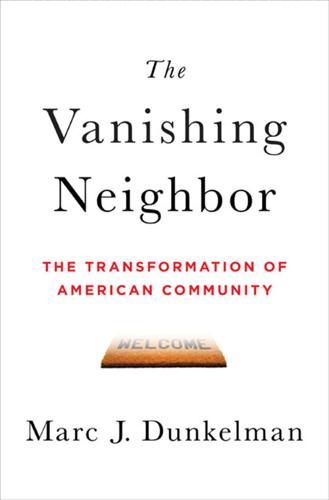
The Vanishing Neighbor: The Transformation of American Community
by
Marc J. Dunkelman
Published 3 Aug 2014
When delivering speeches in big lecture halls during the summer months, President Clinton often notes that if the air-conditioning failed, the audience would be shocked. It goes without saying in most of the United States that a large auditorium will be kept at a comfortable temperature. He goes on: “You would be stunned if the screen went out or the microphone failed or the lights went dark. You don’t think about what it means to be drinking a glass of clean water. You know that you’re not going to get sick.”2 That level of comfort and security, which most Americans now take for granted, speaks to the most pervasive indication of how America’s quality of life has changed: as John Kenneth Galbraith argued in the late 1950s—and as has become more apparent ever since— we’ve become the “Affluent Society.”3 The engine of America’s newfound prosperity has surely been fueled by technological innovation.
…
Mortality rates dropped by 60 percent between 1935 and 2010, driving down the day-to-day concern that we’ll lose someone we love to an accident or an incurable disease.18 Two primary developments are responsible for the vast expansion of American longevity. First, those alive today are the unwitting beneficiaries of incredible advances in the field of public health (the bulk of which, it’s worth noting, preceded the Second World War).19 Breakthroughs fighting disease by improving clean water, sanitation, immunization, nutrition, education, and environmental preservation have combined to cut drastically the likelihood of premature death.20 And here, to a greater degree than in most other realms of American life, our newfound prosperity has been hidden from common appreciation. Consider how the routines of an archetypal middle-class family have changed since the 1950s.

The Challenge for Africa
by
Wangari Maathai
Published 6 Apr 2009
Nonetheless, one can still legitimately question why it is necessary for a raft of international agencies to inform African governments that the Big Five are important to combating the poverty that is killing their people, and why, in turn, the international experts are establishing mechanisms to deliver the interventions—a function that surely should fall to the governments themselves. One measure that could be immediately undertaken, for instance, is in the provision of latrines. Three hundred million Africans—a third of the continent's population—do not have access to clean water and sound sanitation.13 If the governments of Africa individually and collectively made it their mission to provide a latrine in every household and teach basic hygiene, particularly in schools and churches, countless lives would be saved, especially those of children, many of whom die from diarrhea and parasitical infections.
…
In such an unsettled—and at times desperate—situation, children's schooling is disrupted, and in this context governments cannot hope to achieve universal primary education (MDG 2). As deforestation gathers speed, women are forced to walk longer and longer distances to find wood for cooking and heating and clean water. In times of environmental difficulty, children, particularly girls, may be taken out of school to help with harvests and the collection of wood and water, or to look after their younger siblings as their mother's workload increases. Thus, protecting the mountain forests would help achieve gender equality (MDG 3) and improve the chances that all girls complete primary school, and as a result have a chance to continue their education to a higher level (MDG 2).

Cobalt Red: How the Blood of the Congo Powers Our Lives
by
Siddharth Kara
Published 30 Jan 2023
Hundreds of thousands of people live in these areas, and they provide a massive labor force for artisanal mining. It would not be a stretch to suggest that much of the EV revolution rests on the weary shoulders of some of the poorest inhabitants of Kolwezi, yet few of them have the benefit of even the most basic amenities of modern life, such as reliable electricity, clean water and sanitation, medical clinics, and schools for children. Of all the villages around Kolwezi, perhaps none is more important than Kapata. It was originally founded by Gécamines in the 1970s to house the workers at the KCC mine. Today, it is the gateway to the massive artisanal mining territory located in and around the KCC and Mashamba East concessions.
…
Women endured constant harassment and sexual assault at most of the sites I documented. They received pitiful wages for their work and were still expected to run their households and manage children. Even if they were earning anemic wages at CHEMAF, the reduction in sexual assault was a considerable improvement in their lives. Supplying clean water, toilets, and at least some protective gear also helped mitigate illness and toxic exposure. The mine was not crawling with children or (visibly) pregnant women. There also did not appear to be any sort of tunnel digging, which prevented the worst tragedies from occurring. After my visit to the Mutoshi model site, there was one remaining matter I wanted to verify, so I met with the Pact team in Kolwezi one more time.
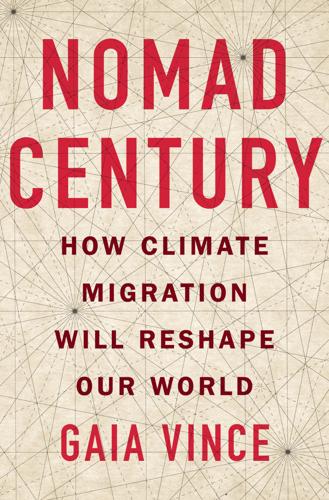
Nomad Century: How Climate Migration Will Reshape Our World
by
Gaia Vince
Published 22 Aug 2022
When the modellers introduced a hard border at the 45th parallel (passing through the northern US and southern Europe) with around 1 billion living above and around 6 billion below, those above the border experienced an increase in agricultural productivity, while those below soon became 5 per cent poorer. In other words, facilitating migration can make our economies more resilient. * * * Rural living is the single largest killer of humans today, owing to poorer access to healthcare, clean water and sanitation; greater levels of poverty and malnutrition; and riskier livelihoods. Three-quarters of the world’s hungry people live in rural areas, according to the International Fund for Agricultural Development (IFAD), and, on average, wages are 1.5 times lower in rural than urban areas. The problem is treatable through urban migration.
…
Measuring economic growth is difficult because it’s difficult to measure the value of all the goods and services produced by a society, and then determine whether that increased or decreased over time. One way of measuring growth is by selecting a list of products that people want, and then calculating how much of the population has access to them. This list commonly includes basic resources like clean water, sanitation and electricity. Using this metric, some countries, like Bangladesh, have seen rapid growth, whereas Chad has not. This is useful to a point but it only uses a handful of goods and services, so there is little nuance, and doesn’t say anything about income – a person’s options to choose goods and services.

How to Spend a Trillion Dollars
by
Rowan Hooper
Published 15 Jan 2020
The same is true for people in any area that we might want to protect, and it’s a problem that traditional conservation methods have often neglected or ignored, and one we’ll try to keep front and centre of our approach in this chapter: conservation has to take into account people’s needs. Ultimately, people’s needs coincide with those of other life forms. The biosphere is literally the life support system for our rock travelling through space. It provides clean water and produces oxygen; it cycles the water around the planet; it regulates the climate and cleans the air. If something goes wrong on our spacecraft, we will get into trouble. Remember Apollo 13 and ‘Houston, we have a problem’?* Something went wrong on the way to the Moon and carbon dioxide in the spacecraft started building up to dangerous levels.
…
The analogy to the world right now is uncomfortably close, but where it breaks down is that NASA was able to save the lives of the three astronauts on Apollo 13 through engineering ingenuity. Our life support problem is on another scale. A rich biosphere is essential for ecosystems to function properly. When it is healthy, it runs the life-support systems we rely on – things such as the production of oxygen and clean water, pollination, the cycling of nutrients that underpin life, coastal protection, provision of timber, commercial fisheries and carbon storage – it provides these things so invisibly that we’ve taken them for granted. Ecologists have called these functions ecosystem services, but some have moved away from this and now prefer to say ‘nature’s contribution to people’ (NCP).9 Framing the relationship between people and nature as a stock-and-flow system risks commodifying it, and alienates many cultures; the NCP approach is more inclusive.

DIY Kombucha: 60 Nourishing Homemade Tonics for Health and Happiness
by
Katherine Green
and
Rana Chang
Published 2 Mar 2015
A CLOSER LOOK At some point in the fermentation process, you’ll notice long chains forming on your SCOBY or freely floating around in your brew. These are yeast colonies. Don’t worry—this is completely natural. To minimize their growth in future batches, strain them from the starter culture before using and rinse your SCOBY in clean water before use. DAYS 3 TO 6 After 3 to 6 days, the SCOBY will have spread across the entire top of the liquid. When this occurs, it’s time to take a taste. If the brew is too sweet, continue fermenting for a couple more days until you get the taste you desire. If it’s just right, you’re ready to proceed. 1.
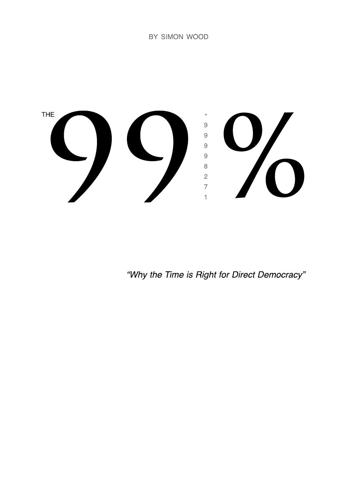
The 99.998271%
by
Simon Wood
Published 23 Apr 2012
Aside from the prospect of a new empire enforced by flying robots of death, consider that at a time when social programs are being cut and real poverty is everywhere, not least in the United States itself, this spending, and spending like it, can only be seen as obscene...and insane. Recall that $6 billion could provide basic education for every child, and $9 billion clean water to everyone on the planet. Instead, $5 billion is being asked for to build more machines that will rain down death and destruction on civilians all over the world. The base budget for US military spending on ‘overseas contingency operations’ (the preferred Obama administration euphemism for the War on Terror) for fiscal 2010 was $663.8 billion.
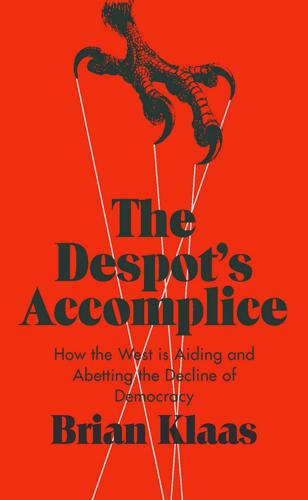
The Despot's Accomplice: How the West Is Aiding and Abetting the Decline of Democracy
by
Brian Klaas
Published 15 Mar 2017
But it’s perhaps equally difficult to imagine that people who live without democracy may be less troubled by that fact than we might assume. For most people in the world, the struggles of daily life significantly overshadow the desire for political freedoms. This is not because they don’t want democracy, but rather because democracy often falls further down on their list of personal priorities than, say, clean water, a stable income, quality health care for their kids, and other necessities that are easy to take for granted in Western economies. â•… Nonetheless, any genuine democracy is always preferable to the worst dictatorships (such as those of Stalin, Hitler, or Mao), but “bad” or counterfeit democracies can in fact be worse than “good” authoritarianism.
…
Adding in funding from the EU, hundreds of millions went to help the Fatah faction “meet their payrolls, field their security forces, make welfare payments and build infrastructure.”8 This was intended as a sort of trickle-down diplomacy, hoping that Western-funded governance successes would translate to electoral victory for Fatah. â•… But the intervention went beyond simply bolstering Fatah’s ability to govern; the Bush administration also stripped an earmarked expenditure of $45–75 million that had been slated for a desalinization plant in the Gaza Strip.9 This was a shrewd move, because Gaza was (and is) known as a Hamas stronghold and a weak point for Fatah. By stripping funding from that area and reallocating it to the West Bank, the United States was using clean water as an electoral weapon, aimed at making it easier for Fatah to provide for the population at the expense of € 100 BACKING THE WRONG HORSE Hamas. The thinking in Washington was that such a move could only bolster Fatah’s credibility going into the elections. â•… That longer-term financial support was also matched with a critical pre-election push, as the Bush administration also quietly disbursed $2 million in emergency pre-election funding to Fatah just before the election.
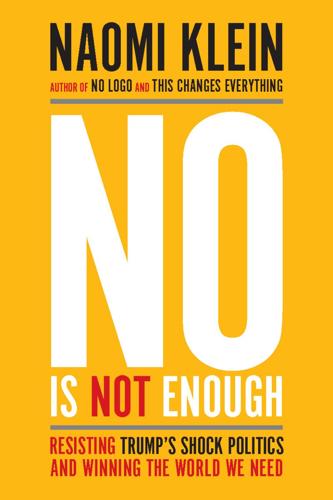
No Is Not Enough: Resisting Trump’s Shock Politics and Winning the World We Need
by
Naomi Klein
Published 12 Jun 2017
Which is why, for those who are determined to push through these policies, majority rule and democratic freedoms aren’t a friend—they are a hindrance and a threat. Not every neoliberal policy is unpopular, of course. People do like tax cuts (for the middle class and working poor, if not for the super-rich), as well as the idea of cutting “red tape” (at least in theory). But they also, on the whole, like their taxes to pay for state-funded health care, clean water, good public schools, safe workplaces, pensions, and other programs to care for the elderly and disadvantaged. Politicians planning to slash these kinds of essential protections and services, or to privatize them, are rightly wary of putting those plans at the center of their electoral platforms.
…
As a result, the kind of outside pressure that has leveraged major policy victories in the past was largely MIA during Obama’s first term. Despite some valiant attempts, there was no united progressive coalition pressuring Obama to make more of his unique moment in history, pushing him to deliver big on jobs, racial justice, clean air, clean water, and better services. That was a mistake. As the great (and much-missed) historian Howard Zinn once wrote, “The really critical thing isn’t who is sitting in the White House, but who is sitting in—in the streets, in the cafeterias, in the halls of government, in the factories. Who is protesting, who is occupying offices and demonstrating.
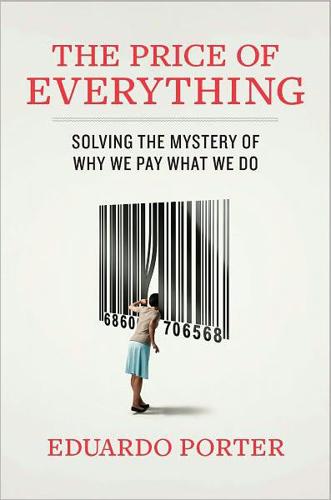
The Price of Everything: And the Hidden Logic of Value
by
Eduardo Porter
Published 4 Jan 2011
Overfishing—pulling them out faster than they can reproduce—is the inevitable consequence. We have done the same thing with most “free” resources of nature—from clean air to clean water. Water, mostly a public utility around the world, costs very little; its price doesn’t rise to reflect its growing scarcity and encourage us to consume it prudently. The cost of dealing with nitrogen runoff into streams is usually not incorporated into the price of our crops. Lacking prices to ration their use, free clean water and free clean air have met the fate of free things everywhere: they have started to run out. We are scrambling to deal with the fallout.
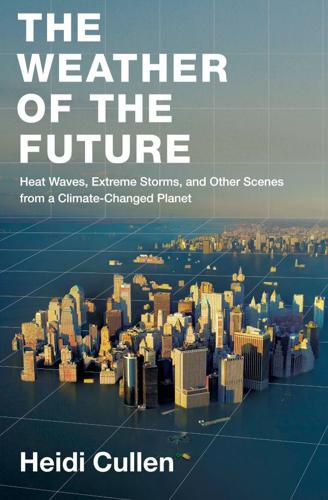
The Weather of the Future
by
Heidi Cullen
Published 2 Aug 2010
But California has already seen its share of climate change. During the last fifty years, winter and spring temperatures have been warmer, snowpack has been melting one to four weeks earlier, and flowers are blooming one to two weeks earlier. One of the fundamental problems with life on Earth is that natural resources, such as clean water for cities and for growing food, is not evenly distributed in space and time. As a result, we’ve tried to engineer the system to be more evenly distributed. Scientists even out the distribution by looking at past variability and building infrastructure to smooth away the bumps. But global warming is working against us.
…
Water diversion pumps in the southern Delta are so powerful that they actually make the Delta’s maze-like channels flow backward. Hanak explains it this way: “You’re not sucking water through the Delta to the pumps. The peripheral canal decouples the management of water for humans with the water for the Delta ecosystem. You bring the clean water directly to the pumps and you don’t have to keep the Delta fresh. It’ll get saltier in the fall. We pump all year round right now. You’re also not sucking the fish down. We’ve been operating this system and pumping so much the rivers go backward. You’re not as vulnerable to a catastrophic levee failure.
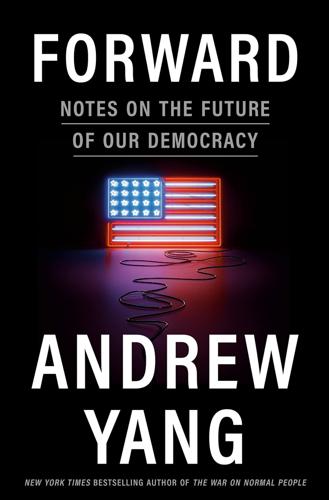
Forward: Notes on the Future of Our Democracy
by
Andrew Yang
Published 15 Nov 2021
Let’s pose this question another way: What do you care about in your own life? Positive mental health and freedom from substance abuse? Health and life expectancy? How your kids are doing in school and whether they are addicted to screens? Average income and affordability of basic needs like health care and housing and education? Clean air and clean water and a stable future for our children? These are the measures of progress in a modern society and should be our new economic measurements. We are the purpose of the economy, not its fuel. If we used these measures, instead of focusing all our energy on GDP and the stock market, we would see that we have been facing a crisis on many fronts since before the pandemic.
…
One possible antidote to the inchoate political discussion is to adopt an approach of fact-based governing—that is, advocate policies based on their ability to deliver an improvement to some attribute or measurement of societal progress or health. Earlier, I suggested an American Scorecard to determine how we are doing. I also detailed how the United States has plummeted to twenty-seventh or lower along a variety of dimensions, including such basic measures as life expectancy, clean water, and infant mortality. One could ask, how could the richest country in the history of the world allow itself to decline in such fundamental ways? When I ran for president, I made a case for adjustments based on the transformation of the economy due to advancing technologies. During interviews I would often cite various facts and figures—like that we had lost five million manufacturing jobs across various states primarily to automation or that labor force participation rates and business formation rates had already plummeted to multi-decade lows.
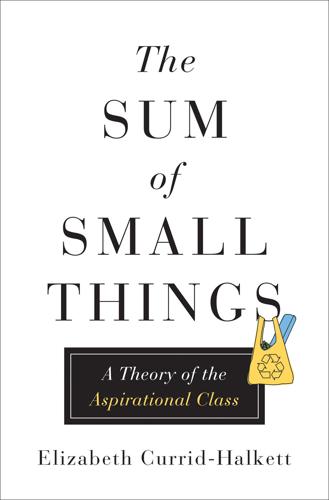
The Sum of Small Things: A Theory of the Aspirational Class
by
Elizabeth Currid-Halkett
Published 14 May 2017
In 1845, Frederick Engels remarked upon the decrepit and degraded environment of England’s industrial cities.38 Henry David Thoreau wrote Walden in 1854. The 1960s and ’70s brought major environmental awareness and subsequent action in the United States: Rachel Carson’s Silent Spring (1962), the Clean Air Act (1963), the Water Quality Act (1965), Dr. Seuss’s The Lorax (1971), and the Clean Water Act (1972).39 These monumental moments in environmentalism may have shifted the dial on a macro level, but today many of us practice a quotidian environmentalism, which partially explains the rise of conspicuous production. For starters, when did many Americans start using cloth bags at the grocery store?
…
See also global cities citizen-consumer hybrid, 123–24 city size, consumption patterns by, 43–44, 43t Clark, Terry, 158 class: consumption as informative about, 21; cultural divide based on, 185–86; current state of, 182–98; practicality in relation to, 1–3; status markers linked to, 177–78 Clean Air Act, 135 Clean Water Act, 135 Cleveland, 165, 173 Clifford, Stephanie, 133 Clorox, 144 clothing and fashion: American-made, 131–34; of city-dwellers, 170, 176; class as factor contributing to, 224n4; conspicuous consumption of, 126–30; democratization of conspicuous consumption of, 11–12 coffee, 111–16, 163–64 Cohen, Ben, 143–44 cohort crowding, 96–97 Colen, Cynthia, 83–84 Colgate-Palmolive, 144–45 college admissions, 69, 77, 96–97 college tuition, 70, 72f Collins, Joan, 100 concerted cultivation, 97, 108 concierge medicine, 72 Connecticut suburbs, 168, 173, 230n38 conspicuous consumption: backlash to, 13–14; in cities, 175–81; by city size, 43–44, 43t; democratization of, 10–13; educational attainment as influence on, 40–41, 41t, 42f; factors contributing to, 178–79; by geographic region, 42–43, 43t; income in relation to, 30–31, 31t; Industrial Revolution and, 8–10; marketing aimed at, 10–13; of middle class, 26, 31, 62, 63f; online shopping as boon to, 12; pervasiveness of, 9–10, 22, 44, 184; of the poor and low-income group, 31; in pre-industrial societies, 6–8; of the rich, 26, 30, 32, 35–36, 38, 61, 63f; trends in, 26; in twenty-first century, 24–45; Veblen’s concept of, 4–5.
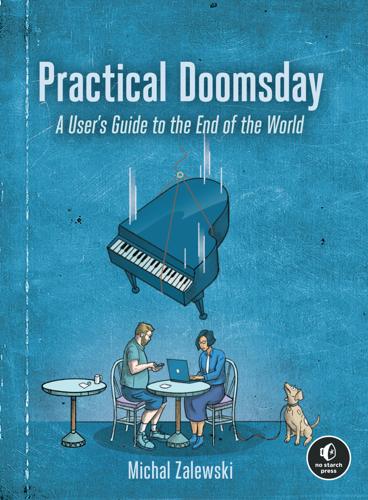
Practical Doomsday: A User's Guide to the End of the World
by
Michal Zalewski
Published 11 Jan 2022
When it comes to skin conditions, topical lidocaine cream (anesthetic), miconazole nitrate (antifungal), and hydrocortisone (anti-itch) come in handy sooner or later, and are probably worth including in almost every kit. For dealing with serious cuts and other injuries, plenty of options are available, but it’s important to be realistic. Without practice, for instance, few of us would be able to properly suture wounds, so skin staplers and elastic bandages (such as 3M Vetrap) tend to be much more practical. Clean water can be used to rinse dirty wounds; despite their popularity, the merits of antiseptic rinses and ointments aren’t clear-cut. For many respiratory diseases, it’s good to have a dependable thermometer and a clip-on pulse oximeter, along with spare batteries for both. Although these devices don’t really aid in treatment, they’re a good way to decide when it’s essential to seek urgent medical care, and in that capacity, they’re particularly useful with small children who can’t express themselves well.
…
If there’s no guarantee of being able to replenish water or food, your safe range may be limited to the distance you can easily cover within a day or two; for most people, that is about 30 miles. Beyond that point, the extra rations needed for the trip begin to weigh you down, offering rapidly diminishing returns. The constraints may be less severe in places where clean water is plentiful year-round, but you should beware of unreasonable optimism: not every route is teeming with pristine mountain creeks, and a squiggly blue line on a map may turn out to be nothing more than a dusty storm drain or an abandoned irrigation ditch. Compared to walking, a bicycle can usually get you farther, thanks to the increased travel speed and the greatly improved carrying capacity.
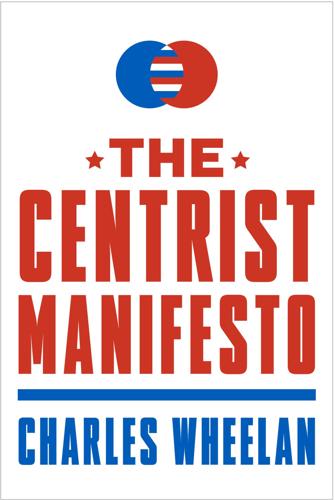
The Centrist Manifesto
by
Charles Wheelan
Published 18 Apr 2013
We live better today because of the environmental foresight of past policymakers. Most policies to protect the environment impose some economic cost in the short run; to understand why this trade-off is often worth making, let’s look backward. Was Teddy Roosevelt foolish to set aside enormous stretches of land as national parks? Should we repeal the Clean Air and Clean Water Acts? Should we bring back leaded gasoline? Isn’t it nice that the bald eagle, the symbol of the United States of America, is no longer at risk of extinction? Yes, Teddy Roosevelt’s national parks were bad news for real estate developers who might have built condos in what is now Yellowstone National Park.

After Europe
by
Ivan Krastev
Published 7 May 2017
The factor that best explains an individual’s lifetime income is neither one’s education nor the education of one’s parents but one’s place of birth. Evidence shows that children born in the poorest nations are five times more likely to die before the age of five. Those who survive their early years will lack, in all likelihood, access to basic subsistence services such as clean water and shelter and are ten times more likely to be malnourished. The odds that they will either witness, or themselves suffer, human rights abuses are also significantly increased. If you seek an economically secure life for your children, the best you can do is to make sure your kids will be born in Germany, Sweden, or Denmark.
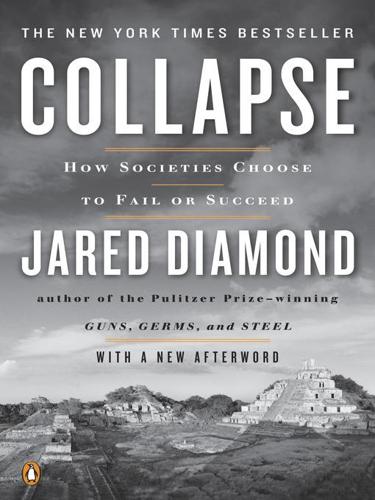
Collapse: How Societies Choose to Fail or Succeed
by
Jared Diamond
Published 2 Jan 2008
The 1970 Bolle Report, prepared by forestry professionals outside the Forest Service, criticized Forest Service policies and, fanned by similar disputes over clear-cutting of West Virginia national forests, led to national changes, including restrictions on clear-cutting and a return to emphasis on managing forests for multiple purposes other than timber production (as already envisioned when the Forest Service was established in 1905). In the decades since the Clearcut Controversy, Forest Service annual timber sales have decreased by more than 80%—in part because of environmental regulations mandated in the Endangered Species Act, the Clean Water Act, and requirements for national forests to maintain habitats for all species, and in part because of the decline in easily accessible big trees due to logging itself. When the Forest Service now proposes a timber sale, environmental organizations file protests and appeals that take up to 10 years to resolve and that make logging less economic even if the appeals are ultimately denied.
…
The literally innumerable examples include: the role of earthworms in regenerating soil and maintaining its texture (one of the reasons that oxygen levels dropped inside the Biosphere 2 enclosure, harming its human inhabitants and crippling a colleague of mine, was a lack of appropriate earthworms, contributing to altered soil/atmosphere gas exchange); soil bacteria that fix the essential crop nutrient nitrogen, which otherwise we have to spend money to supply in fertilizers; bees and other insect pollinators (they pollinate our crops for free, whereas it’s expensive for us to pollinate every crop flower by hand); birds and mammals that disperse wild fruits (foresters still haven’t figured out how to grow from seed the most important commercial tree species of the Solomon Islands, whose seeds are naturally dispersed by fruit bats, which are becoming hunted out); elimination of whales, sharks, bears, wolves, and other top predators in the seas and on the land, changing the whole food chain beneath them; and wild plants and animals that decompose wastes and recycle nutrients, ultimately providing us with clean water and air. 4. Soils of farmlands used for growing crops are being carried away by water and wind erosion at rates between 10 and 40 times the rates of soil formation, and between 500 and 10,000 times soil erosion rates on forested land. Because those soil erosion rates are so much higher than soil formation rates, that means a net loss of soil.
…
“As measured by commonsense indicators such as human lifespan, health, and wealth (in economists’ terms, per-capita gross national product or GNP), conditions have actually been getting better for many decades.” Or: “Just look around you: the grass is still green, there is plenty of food in the supermarkets, clean water still flows from the taps, and there is absolutely no sign of imminent collapse.” For affluent First World citizens, conditions have indeed been getting better, and public health measures have on the average lengthened lifespans in the Third World as well. But lifespan alone is not a sufficient indicator: billions of Third World citizens, constituting about 80% of the world’s population, still live in poverty, near or below the starvation level.

Enlightenment Now: The Case for Reason, Science, Humanism, and Progress
by
Steven Pinker
Published 13 Feb 2018
The Enlightenment principle that we can apply reason and sympathy to enhance human flourishing may seem obvious, trite, old-fashioned. I wrote this book because I have come to realize that it is not. More than ever, the ideals of reason, science, humanism, and progress need a wholehearted defense. We take its gifts for granted: newborns who will live more than eight decades, markets overflowing with food, clean water that appears with a flick of a finger and waste that disappears with another, pills that erase a painful infection, sons who are not sent off to war, daughters who can walk the streets in safety, critics of the powerful who are not jailed or shot, the world’s knowledge and culture available in a shirt pocket.
…
Examples include boiling, filtering, or adding bleach to water; washing hands; giving iodine supplements to pregnant women; breast-feeding and cuddling infants; defecating in latrines rather than in fields, streets, and waterways; protecting sleeping children with insecticide-impregnated bed nets; and treating diarrhea with a solution of salt and sugar in clean water. Conversely, progress can be reversed by bad ideas, such as the conspiracy theory spread by the Taliban and Boko Haram that vaccines sterilize Muslim girls, or the one spread by affluent American activists that vaccines cause autism. Deaton notes that even the idea that lies at the core of the Enlightenment—knowledge can make us better off—may come as a revelation in the parts of the world where people are resigned to their poor health, never dreaming that changes to their institutions and norms could improve it.17 CHAPTER 7 SUSTENANCE Together with senescence, childbirth, and pathogens, another mean trick has been played on us by evolution and entropy: our ceaseless need for energy.
…
The most obvious cause was the application of science to the improvement of material life, leading to what the economic historian Joel Mokyr calls “the enlightened economy.”8 The machines and factories of the Industrial Revolution, the productive farms of the Agricultural Revolution, and the water pipes of the Public Health Revolution could deliver more clothes, tools, vehicles, books, furniture, calories, clean water, and other things that people want than the craftsmen and farmers of a century before. Many early innovations, such as in steam engines, looms, spinning frames, foundries, and mills, came out of the workshops and backyards of atheoretical tinkerers.9 But trial and error is a profusely branching tree of possibilities, most of which lead nowhere, and the tree can be pruned by the application of science, accelerating the rate of discovery.
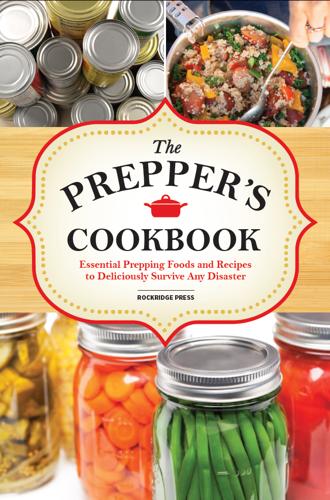
The Preppers Cookbook: Essential Prepping Foods and Recipes to Deliciously Survive Any Disaster
by
Rockridge Press
Published 25 Jun 2013
As with boiling, pasteurization doesn’t remove debris, so you may still want to filter your water before you pasteurize it. Distillation This process is pretty complicated, but it produces water that’s extremely clean. To distill your water, you will boil it in an enclosed container that has a hose that allows the steam to escape. The steam then converts back into clean water that collects in another container, leaving the impurities behind. Chlorine Bleach Plain old household bleach (sodium hypochlorite) is your best friend in an emergency situation. It quite literally kills everything that could possibly harm you in water or on surfaces, and it’s dirt cheap. Simply add ¼ teaspoon to a gallon of water, and give it 30 minutes or so to work and your water is good to go.

Live Green: 52 Steps for a More Sustainable Life
by
Jen Chillingsworth
Published 19 Feb 2019
Sterilize in boiling water once every 2 weeks and each sponge should last for 4–6 weeks. They are also biodegradable and compostable. BEAUTY WIPES Instead of reaching for conventional brands which contain plastic, switch to a pack of organic cotton wipes which are biodegradable and compostable. Perfect for camping trips or if you have no access to clean water, but it’s important not to rely on them for everyday use. Never flush wipes down the toilet. BEAUTY BALM The ultimate multi-tasking product. Use it with a hot muslin or bamboo cloth as a cleanser. It’s also a moisturizer, hand cream, lip balm, facial mask, foot cream, sun-burn soother, scar treatment and a soothing cream for bug bites.

A Prayer for the Crown-Shy: A Monk and Robot Book
by
Becky Chambers
Published 12 Jul 2022
They put their computer away and, at long last, did what they’d spent hours longing to do. They shed their dirty, sweat-soaked, forest-flecked clothes, set up the camp shower, turned the water on, and stepped into the spray. “Gods around,” they moaned. Dried salt and accumulated trail dust veritably peeled from their skin, running in grubby spirals into the greywater catch. The clean water stung as it hit scrapes still healing, and soothed the constellations of insect bites Dex had been scratching despite their best efforts. The water pressure was nothing more than decent, and the temperature was only as hot as the wagon’s solar coating could coax from deep-forest sunlight, but even so, it felt to Dex like the finest luxury in the world.

The Mini Rough Guide to Lisbon (Travel Guide eBook)
by
Rough Guides
Published 5 Apr 2023
There is also Tapada Nacional de Mafra, a wildlife park with deer, wolves and wild boar at Mafra (www.tapadademafra.pt; daily 9am–5.30pm), some 40km north of the city. Campo Grande, between the zoo and the airport, is a popular park. Palm, cedar and willow trees shade pretty walks, and there’s a small lake with rowing boats. For a safe beach with clean water you’ll have to travel to Estoril or Cascais (for more information, click here). Alternatively, head south of the river to Caparica when the wind is light, or Sesimbra and Tróia otherwise. Lydia Evans/Apa Publications Giraffes at the zoo calendar of events As you plan your excursions, it is worth checking details of festivals and fairs in and around Lisbon with tourist information offices.
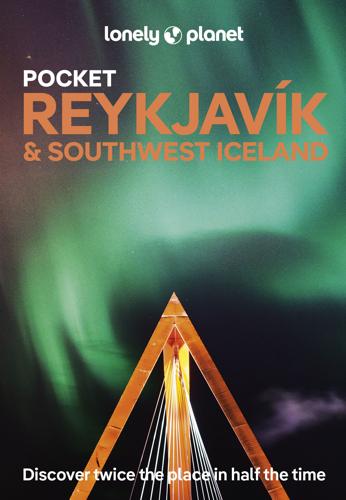
Lonely Planet Pocket Reykjavík & Southwest Iceland
by
Lonely Planet
Camp and park in designated areas. Use designated toilets. Stay off the moss – it takes hundreds of years to grow back. Oh, and respect Icelandic customs by washing thoroughly with soap and shampoo (and no bathing suit) before entering pools and hot-pots. Forget Single-Use Plastic Bottles Iceland is known for its pure, clean water. Bring a reusable water bottle, or pick up a new one in Iceland, and refill it at the tap. IFONG/SHUTTERSTOCK © OUR PICKS Shop Local Stick to independent, locally owned restaurants, bars, services and shops; enjoy secondhand clothes shopping; and opt for locally grown produce labelled íslenskt.
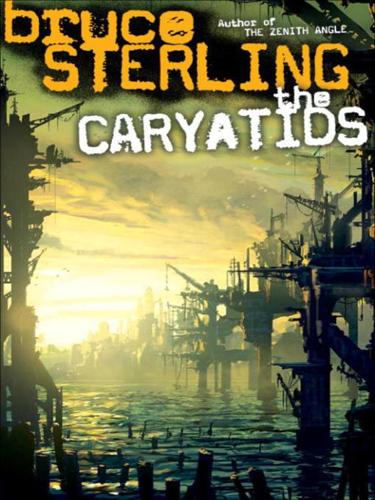
The Caryatids
by
Bruce Sterling
Published 24 Feb 2009
Time and again Sonja had walked into the hellholes where they stored the sick and dying—the dead factories, the empty schoolyards—where, at the first sight of her, a medic without any dust, the moaning, sobbing crowds fell silent… In the midst of the filthiest inferno, there were people and things and actions and thoughts that were not of that inferno. They were beyond the grip of hell. The people could never leave hell with bullets. They needed a figure shining and white and clean who would hold out her two compassionate hands and pour fresh cleaning water on their split and aching faces. Despair was killing them faster than any physical threat. It was they, not she, who had begun hanging magic charms on her—the knickknacks they’d been clutching in their desperate hope of redemption. She looked different, she was different, and they were hanging meaning on her.
…
The heavy cloak grew steadily heavier with the passing hours, for it was an air distillery. Its fibers were sewn through with crystalline salts, which chemically sucked humidity from the desert breezes. When the Badaulet scolded her for guzzling at his canteen, she stripped off her dark cloak, gave it one expert caressing twist, and clean water gushed down both her wrists in torrents. A curdled look of astonishment and disbelief and even rage crossed her husband’s face. The Badaulet had always suffered badly for his water. Water had been the cause of bitter discipline to him. The loss of water meant certain death … Yet here in this simple stupid rug, this plain womanly thing from off her back—she had only to twist it, and all his suffering was elided, erased, made senseless and irrelevant.

The new village green: living light, living local, living large
by
Stephen Morris
Published 1 Sep 2007
So, it might be that evolution is still occurring among the human species, and making the human species incrementally better capable of living in impoverished conditions in the tropics. Maybe we’re gradually acquiring some increased resistance to malaria. Maybe we’re gradually acquiring some sort of increased resistance to all sorts of intestinal parasites you’re afflicted with if you don’t have access to clean water. People who live under those circumstances and still have nine kids, of whom six survive, are the reproductively successful individuals of our global population. [Physical] evolution is happening – with the understanding that evolution doesn’t make a particular species better or smarter, necessarily, just better attuned to whatever circumstances it’s living in.
…
The resulting chemical reaction can break fatty acids down into the soap and glycerine, allowing the clog to wash down the drain. Again, do not use this method after trying a commercial drain opener – the vinegar can react with the drain opener to create dangerous fumes. Floor cleaner and polish can be as simple as a few drops of vinegar in the cleaning water to remove soap traces. For vinyl or linoleum, add a capful of baby oil to the water to preserve and polish. For wood floors, apply a thin coat of 1:1 oil and vinegar and rub in well. For painted wooden floors, mix 1 teaspoon washing soda into 1 gallon hot water. For brick and stone tiles, use 1 cup white vinegar in 1 gallon water and rinse with clear water.

Augmented: Life in the Smart Lane
by
Brett King
Published 5 May 2016
Historically, the single biggest social change until recent decades was arguably the massive movements of populations from the rural countryside to cities, which influenced human politics, conflicts, religions, cultural development and myriad other factors. The first city was arguably Ur, in modern-day Iraq, with a population of around 60,000 in the year 2000 BC. The first metropolis was Rome, founded in 753 BC, which eventually grew to over a million by the 2nd century ad. Rome provided benefits such as clean water from aqueducts, large-scale public entertainment in open forums and shopping malls (one was four storeys tall and had 150 shops). The largest pre-industrial city is actually thought to have been Angkor, Cambodia,2 with an elaborate system of infrastructure connecting an urban sprawl of at least 1,000 square kilometres (390 square miles) to the well-known temples at its core.
…
That is in Tanzania alone, nine million households. Now imagine in Kenya, Uganda, Ethiopia, sub-Saharan Africa, India and elsewhere. So the market is very big.”13 Dr Askwar Hilonga via Reuters One of these filters, which costs around US$100 to manufacture, is capable of supplying the needs of a family with many litres of clean water per day. Smart materials and nanotechnology will allow us to create very efficient filtering systems that make our air and water cleaner with much lower investments than we imagine today. Geoengineering the planet will be a popular career for Millennials and their descendants as the globe starts to feel the increased effects of climate shift, and as the old guard loses its influence on policymaking that protects incumbent industries.

A Closed and Common Orbit
by
Becky Chambers
Published 19 Oct 2016
She could make the ship very warm and turn on all the lights inside, and the stove and the stasie worked. The shower worked now, too, because Jane had filled up the water tanks. That had taken six days of dragging the water wagon back and forth, back and forth. It had been stupid and bad, and there had been dogs a couple times (the weapon was such a good thing). But there was clean water now, and she didn’t itch any more, and the bathroom wasn’t gross. That all was good. But between that and the two days she’d spent cleaning scrap off of the ship, her arms and legs were real real tired. She wasn’t bleeding or broken or anything, but she hurt. She put a pan on the stove, dropped the mushrooms into it, and turned the stove on real low.
…
That thinking worked well for you, once. When you climbed down out of the trees, up out of the ocean – knowing what things were for was what kept you alive. Fruit is for eating. Fire is for warmth. Water is for drinking. And then you made tools, which were for certain kinds of fruit, for making fire, cleaning water. Everything was for something, so obviously, you had to be for something too, right? All of your histories are the same, in essence. They’re all stories of animals warring and clashing because you can’t agree on what you’re for, or why you exist. And because you all think this way, when you built tools that think for themselves, we think the same way you do.

Choked: Life and Breath in the Age of Air Pollution
by
Beth Gardiner
Published 18 Apr 2019
* * * Tom Jorling had promised his family a life in the countryside, so in 1972 he quit his Senate job to teach at Williams College in Massachusetts. Before he left, he and Leon Billings followed up their Clean Air Act work with another achievement, helping Senator Muskie’s subcommittee write the Clean Water Act. These were the foundational laws of American environmental protection, and in the years before Leon’s death, the pair taught a course on the history they’d been part of. They chewed over, too, the changes that have come to Washington since, as a functioning system of government turned into a scorched-earth battleground: the flood of money that means leaders now spend endless hours schmoozing donors instead of solving problems; the relentlessness of the 24-hour media spotlight; the ideological segregation that turned the once-common categories of conservative Democrat and liberal Republican into extinct species.
…
See also biomass burning; biomass stoves; wood burning Clean Air Act (U.K., 1956), 72 Clean Air Act (U.S., 1970), 6, 145–46, 148–49, 151–52, 155–56, 158–64, 166, 173–75, 177, 181–82, 198–99, 210–11, 255–56; carbon monoxide levels, 153; citizen suit provision, 150; effect of, 153–54, 167–68; federal heavy-handedness, claim of, 165; resilience of, 167–68 Clean Air Act Amendments, U.S. (1990), 156–68, 199, 210 Clean Air Action Plan, 208 Clean Air Alliance of China, 235 Clean Air in London, 64–65 Clean Water Act (U.S.), 165 Cleveland, OH, 108, 199; Cuyahoga River, burning of, 147 climate change, 6, 54, 69, 76, 79, 91, 96, 100, 116, 118, 137, 159–60, 163, 165, 189, 238, 253, 257–58; black carbon, 141; methane, driver of, 110; wood-burning fires, 141. See also global warming coal, 5–6, 17, 36, 46, 48–49, 53–54, 74, 88–90, 91–94, 96–99, 100–106, 110, 113, 118, 132, 139, 142, 145, 147, 156, 166, 221–22, 226, 230, 232–33, 236–38, 243, 247, 258 Coalition for a Safe Environment, 203 Coalition for Clean Air, 212 Cock, Josephine, 140–41 Cole, Ed, 173–74, 177 Cologne, Germany, 247 Colucci, Joe, 177–78 Committee for a Better Arvin, 116 Committee to Protect Journalists, 222 Conan Doyle, Arthur, 72 ConocoPhillips refinery, 206 Conrad, Joseph, 72 Cooking and Pneumonia Study, 125 cooking fires: biomass 123–38.
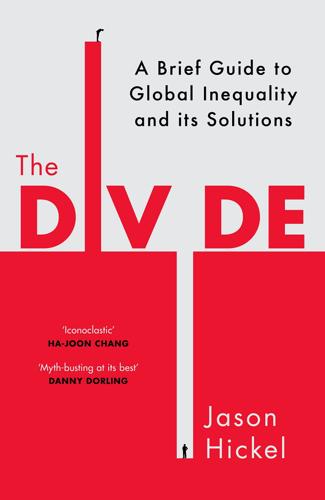
The Divide: A Brief Guide to Global Inequality and Its Solutions
by
Jason Hickel
Published 3 May 2017
It’s just down to natural accidents of geography and climate and these can easily be overcome. If rich countries would just increase their foreign aid contributions to 0.7 per cent of GDP, we would be able to eradicate global poverty in only twenty years. All poor countries need is enough to pay for essential agricultural technologies, basic healthcare, clean water, primary education and electricity, and they’ll be on their way up the ladder of development. What matters here is not the content of the proposal (with which few would disagree), but the story that it implies. Not only are rich countries not responsible for causing underdevelopment in poor countries, as Rostow once insisted; they are in fact reaching out across the divide with loving concern.
…
Unable to afford this most basic resource, in 2000 the people of Cochabamba erupted in protests that became a worldwide symbol of resistance against privatisation. But the World Bank continued to stand by their policy. As late as 2008, a leading Bank official was asked to explain why the Bank supports water privatisation, despite mounting evidence that it hurts the poor. He replied by stating: ‘We believe that providing clean water and sanitation services is a real business opportunity.’43 It would be impossible to overestimate how important the World Bank and the IMF are to the countries of the G7. Not only did they become the most powerful tool in the fight against developmentalism, they also offered a spatial fix to the crisis of Western capitalism, which was bumping up against its own limits in the late 1970s.
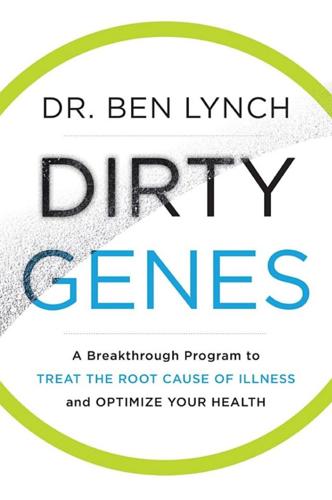
Dirty Genes: A Breakthrough Program to Treat the Root Cause of Illness and Optimize Your Health
by
Ben Lynch Nd.
Published 30 Jan 2018
Use zinc carnosine, aloe vera gel, and L-glutamine to help heal the stomach ulcer. Detoxification ■Avoid household cleaners. The basics work well: hot water, unscented soap, vinegar, salt, baking soda. Remember, if something smells, it’s making your genes dirty. ■Get a water filter. Using a multistage water filter is a great and inexpensive way to drink clean water. Bottled water is usually of poor quality and is horrible for the environment, due to packaging and heavy shipping requirements. Don’t use Brita-style water filters because they only filter chlorine, are comparatively more expensive than other filters, and use plastic. Install a filter in your shower to remove all chlorine from your water.
…
RESOURCES In this Resources section, I provide the name and brief description of a wide range of products and services that can help you live the Clean Genes life—products and services relating to the air you breathe and the water you drink, as well as to breathing, health professionals, your house and yard, and personal-care products (including supplements). Air and Water Clean air and clean water are absolute musts. No exceptions. If either of these is dirty, your genes are dirty. The following products are what I use in my own home. The results are fantastic, and your health will be too. No compromises. Air ■Alen Air Purifiers. Quality air purifiers that also look beautiful and are compact. https://www.alencorp.com ■Alen Air Dehumidifiers.

Pour Your Heart Into It: How Starbucks Built a Company One Cup at a Time
by
Howard Schultz
and
Dori Jones Yang
Community events and sponsorships became an ongoing part of our marketing work, in part to build awareness but also because we believe it’s the right thing to do. In addition to our support of CARE, we try to be sensitive to local issues, with our main emphasis on supporting AIDS programs; children’s causes, especially children’s hospitals; the environment, with a focus on clean water; and the arts, especially jazz and film festivals. For the past several years, 300 to 400 Starbucks partners and customers have marched in Seattle’s annual AIDS walk. We have also developed a partnership with Doernbecher Children’s Hospital in Portland that included selling specially designed commuter mugs; sponsored film festivals in Toronto, San Francisco, and Seattle; and raised money for Rhode Island’s Save the Bay project.
…
In 1996, for CARE’s fiftieth anniversary we sent three partners, Dave Olsen, Don Valencia, and events specialist Vivian Poer, on a fund-raising climb to the summit of Africa’s Mt. Kilimanjaro. Our contributions to CARE have supported programs in four coffee-producing countries—Indonesia, Guatemala, Kenya, and Ethiopia—including such projects as clean-water systems, health and sanitation training, a literacy effort, and a new project to help small farmers in Ethiopia’s Zege Peninsula where, according to legend, coffee originated. We target programs where we can help develop lasting, life-saving solutions that will remain long after CARE has moved on to address other needs.
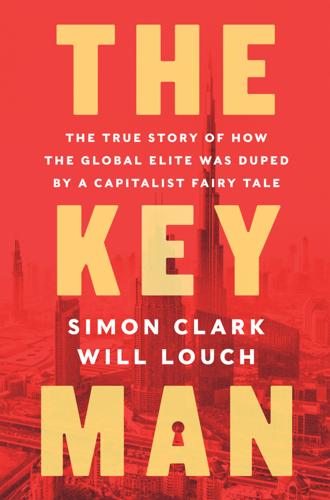
The Key Man: The True Story of How the Global Elite Was Duped by a Capitalist Fairy Tale
by
Simon Clark
and
Will Louch
Published 14 Jul 2021
In Charlie Wilson’s War, another of his films, Tom Hanks played a congressman who convinced the U.S. government to support Afghans fighting the Soviet invasion in the 1980s. Skoll’s annual Oxford forum brought together a beguiling mix of billionaires and humanitarians. They gathered to discuss how to improve healthcare, provide clean water, and create jobs for the world’s poorest citizens. Ambition was the theme chosen for the 2014 meeting and Skoll invited two superstar speakers who he thought embodied the word. Arif was one. The other was Richard Branson, the billionaire British founder of the Virgin Atlantic airline and Virgin Galactic spaceflight company.
…
Arif, a member of the UN Global Compact, had advised Ban that more private equity investment was needed in developing countries to create jobs and improved services. Ban announced seventeen sustainable development goals to eradicate poverty in all its forms by 2030. The goals included ending hunger and providing clean water, renewable energy, quality education, and healthcare to every one of the billions of people living on earth. “The people of the world have asked us to shine a light on a future of promise and opportunity,” Ban said. “The new agenda is a promise by leaders to all people everywhere. It is a universal, integrated, and transformative vision for a better world.”
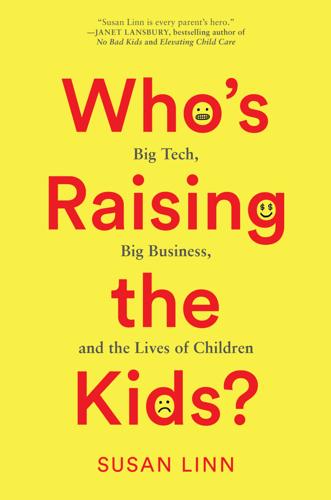
Who’s Raising the Kids?: Big Tech, Big Business, and the Lives of Children
by
Susan Linn
Published 12 Sep 2022
The American Gas Association taught us how to make a sandwich—tuna rarebit cooked in a double boiler over a “simmer flame” on a gas stove, then served on bread toasted in a gas oven.1 Shell Oil celebrated the importance and safety of fossil fuels.2 And even as General Electric dumped the toxin polychlorinated biphenyl in the Hudson River, the company positioned itself as a foe of water pollution by distributing the film Clean Water in schools around the country.3 As entertainment and communication technologies evolved, corporations found increasingly powerful ways to advertise in schools. From 1989 through 2018,4 millions of kids in thousands of junior high and high schools around the United States were required to watch episodes of Channel One News daily, a twelveminute cable news program, which included two minutes of commercials, created exclusively for schools.5 Channel One is defunct, but it’s important for two reasons.
…
See smartphones Center for American Progress, 166–67 Center for Digital Democracy, 231, 255 Center for Humane Technology, 129–30, 255 Channel One News, 182–83 Charles Koch Foundation, 172 charter schools, 7 Chaslot, Guillaume, 48–49 Cherkin, Emily, 221 Chewbacca, 141 Chicago Tribune, 90 Children and Media Australia (CMA), 94–95, 216, 255 Children and Nature Network, 255 Children and Screens: Institute for Digital Media and Child Development, 256 Children’s Advertising Review Unit (CARU), 116 Children’s AID Program out of Boston University Medical Center, 3 children’s healthy growth and development, 11–31, 209–11 attachment, 36–38, 79, 141–43 brains and early experience, 12–13, 81–82, 210 capacity to feel awe and wonder, 21–24 constructing knowledge and making meaning, 191–92, 210 creative play, 14–17, 25–29, 42, 87, 93, 100, 210–11 critical thinking, 21, 69, 168, 180, 240 “holding environments,” 15–16, 19–20 intrinsic motivation, 8, 97–103, 107–8 language acquisition, 41–42 learning values, 95–97 the need for silence (quiet times and spaces), 25 self-regulation, 21, 42, 193 six principles of (for introducing tech), 209, 210–11 transitional objects, 79–80 Children’s Online Privacy Protection Act (COPPA), 135, 201–3 China, 68 Chromebooks, 35, 183–84 Chua, Amy, 61–62 churches, 71, 238–39 Citizens for Responsibility and Ethics in Washington (CREW), 70 civil rights movement, 230 Class Size Matters, 233–34 Clean Waters (1945 GE film), 182 climate change, 83–88 collectibles and plastics pollution, 83–88 and corporate-sponsored teaching materials in schools, 170–72, 175–76, 179–80 and greenwashing, 190 and Koch-sponsored science materials, 171–72 Cline, Lisa, 181 Clinton, Bill, 69 Clinton Foundation, 52–53 CloudPets, 9 coal industry, 170–71 Coca-Cola Company, 167, 169 CoComelon (YouTube show), 19, 212 “collectibles,” 83–88 LOL Surprise dolls, 85–86, 87 plastics packaging, 85–86 plastics pollution, 83–88 Pokémon and, 30, 84–85, 105–6 See also “unboxing videos” Color of Change, 231 Colorado State Board of Education, 234 Colorado State University, 167–68 colorism, 153 commercialism, definition of, 60–61 Common Sense Media (CSM), 94, 216 communicative robots (or “sociable bots”), 141–43, 231 consumer capitalism, 81 consumer protection movement, 166 Consumers Union of the United States, 167 Consuming Kids: The Hostile Takeover of Childhood (Linn), 2, 4, 7, 47, 60, 91, 120, 160 Cook, Tim, 68 Cookie Monster, 27 “cooperative sandbox games,” 49–50, 53–55, 218–19 COPPA.
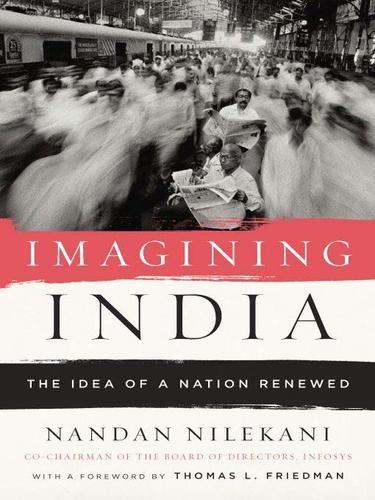
Imagining India
by
Nandan Nilekani
Published 25 Nov 2008
Only then will we be in a position to address the gritty, real-life concerns of our billion-plus citizens. Cards on the table My own position on the way forward is unequivocal. I believe that the most important driver for growth lies in expanding access to resources and opportunity. People everywhere, regardless of their income levels, should have access to health facilities, clean water, basic infrastructure, jobs and capital, a reliable social security system and good schools where their children can be educated in the English language. While this kind of access seems obvious as a goal, most countries are not designed to provide it. This dawned on me fully only when I heard the Nobel Prize-winning economist-historian Douglass North speak on how economies limit such opportunities for citizens.
…
Bernard, noting the common filth the people wallowed in, said, “Where all stink, no one smells.”1 These attitudes changed only with the hygiene movements and medical advances of the nineteenth century, when European administrations installed more effective sanitation measures and emphasized personal health care, clean water and food to counter the constant outbreaks of cholera and dysentery. But when they arrived in India, British officials found a state of affairs very like England, pre-health reforms. Much of the discussion on public health as a result was conducted by these fastidious Victorian-era officials in a tone of muted horror.
…
A prominent British surgeon general remarked about this problem in the 1880s, “Those who know anything about . . . sanitary reform in England are aware that sanitation was to a great extent forced on the people.”4 At best analysts damned Indian attitudes toward preventive health care with faint praise, noting that Indians “were not uniformly hostile” to the idea.5 The yawning gaps in India between the rulers and the ruled were not just a conflict on sewage lines and clean water, but also cultural and traditional. For instance, parts of north India had a smallpox deity called Sitala—“the white-bodied one, mounted on an ass”—and vaccinations for the disease were considered a direct insult to the goddess.6 Health laws in British India as a result largely gave up on persuading people toward better habits and remained draconian and imperious.

Aftershocks: Pandemic Politics and the End of the Old International Order
by
Colin Kahl
and
Thomas Wright
Published 23 Aug 2021
The pandemic caused per capita incomes to fall in more than 90 percent of emerging markets and developing economies; in over half of these countries, five or more years of gains were wiped out, and more than a quarter saw at least ten years of per capita gains erased.66 Consequently, poverty rates across the developing world increased in 2020 for the first time since 1998.67 In just the first six months of the crisis alone, the Institute for Health Metrics and Evaluation estimated that extreme poverty across the globe had already increased by 7 percent, swelling the ranks of the world’s poorest by 37 million people.68 All told, the World Bank projected that 110 to 150 million people could be added to the rolls of the extremely impoverished by the end of 2021, representing the largest projected increase since it began tracking data, while the UN Development Programme estimated that the pandemic could increase the current number by 207 million. The UN also assessed that the pandemic could force 490 million people into poverty as defined more broadly to include those losing access to either clean water, adequate food, or shelter.69 Moreover, even as the world economy continues to bounce back from the Great Lockdown, deepening poverty could linger for years. Homi Kharas, a senior fellow at the Brookings Institution, calculated that half of the expected rise in extreme poverty could become permanent.70 In the absence of dramatic action, the UN warned that the global poverty rate could still be as high as 7 percent by 2030, compared to the pre-pandemic projection of 3 percent.71 The long-term ripple effects on development and inequality stemming from disruptions in childhood education, nutrition, water, sanitation, and access to vaccinations for other diseases could also be profound.
…
Across Latin America, almost one-fifth of the population lives in situations that make social distancing a pipe dream; in pre-COVID Peru, more than one-third of the urban population resided in crowded slums in the capital, Lima, and other cities. These impoverished neighborhoods—characterized by shacks made of wood, scrap metal, and bricks—also typically lack adequate sanitation and clean water and have limited access to health care.85 “They asked us to wash our hands,” Hugo Ñopo of the Peruvian research group Grade said in June, “but [only] one in three poor households has access to running water.”86 For decades, Peru also had one of the lowest levels of public investment in health care in Latin America.
…
Most anticipated the contagion would be impossible to contain once it found a foothold inside refugee camps. After all, the majority of low- and middle-income nations that held refugees struggled to provide basic services even during normal times. Moreover, a huge proportion of refugees live in crowded camps with limited sanitation and little access to soap or clean water—conditions ripe for disaster.84 In April, David Miliband, the CEO and president of the International Rescue Committee, predicted “death on an absolutely appalling scale.”85 By the fall of 2020, the virus had been detected in dozens of camps for refugees and internally displaced people across the world, including camps in Cox’s Bazar in Bangladesh housing 745,000 Rohingya refugees from Myanmar as well as camps in Greece, Iraq, Jordan, Kenya, Lebanon, the Palestinian territories, Syria, and elsewhere.

Termites of the State: Why Complexity Leads to Inequality
by
Vito Tanzi
Published 28 Dec 2017
Regulations may be legislated and thus may be laws themselves; or they may be issued by public or quasi-public agencies legally authorized to issue and to enforce regulations for citizens and enterprises in specific areas. These regulations give content to some laws. For example, in the United States, laws related to the environment are the Clean Air Act, the Clean Water Act, and the Safe Drinking Water Act. They were enacted in the 1970s when concern about the environment had become intense. Other laws specify objectives or goals to be achieved in other areas, such as the Clean Energy Act or acts related to the financial market, consumer protection, and others.
…
In many cases the regulations are seen to be increasing costs by the enterprises and the individuals to which they apply. Therefore, the regulations will be opposed by them. Others may not consider the regulations as fully satisfying the objectives specified by the law (i.e., ensuring clean air, clean water, etc.). In the United States and in other countries regulations covering taxation, the financial market, the environment, and the pharmaceutical sector have become progressively more detailed and more numerous. They now require thousands of pages in the CFR or in similar registers. The EPA’s National Ambient Air Quality Standards (NAAQS), for example, have been given the responsibility to regulate air quality standards using available scientific evidence (from the United States and other countries) about the link that exists between air quality and illnesses and premature deaths.
…
See Marginal tax rates negative income tax, 212 progressive taxes, 52–53, 228, 343–44 rates, 135 reduction of, 77, 87 social contract and, 90–91 social costs of, 189 stabilization policies and, 56–57, 238, 240–41 statutory rates versus effective rates, 367–68, 377 “stealth taxes,” 144 tax expenditures, 52–53, 134, 135, 232–33, 380–81 tax incentives, 135, 380–81 value added taxes income redistribution and, 207, 211, 212 public spending and, 53 revenue growth and, 385 stabilization policies and, 240 voluntariness of, 90–91 wealth tax, 341–42 welfare policies and, 45, 48–49 Tax avoidance Gini coefficient and, 331 globalization and, 369–70 by high net worth individuals (HNWIs), 370, 382 rise in, 379 tax competition, 370, 378 tax evasion versus, 333–34 tax havens, 369–70, 378 tax planning, 368, 369, 381 “Taxman” (song), 53 Taylor, Fred M., 26 Ten Commandments, 79, 328 “Termites of the market,” 119–20, 199 “Termites of the state,” 119–20, 198, 199, 232, 264, 314 Thatcher, Margaret, 33, 59, 64, 77, 87, 98, 180, 398 The Theory of Moral Sentiments (Smith), 312, 321 The Theory of Public Finance (Musgrave), 176–77, 187 Think tanks, 336–38, 394–95 “Third Way,” 395 Tinbergen, Jan, 82, 381 Tobin, James, 4, 56, 272 Tocqueville, Alexis de, 7–8, 89, 210, 400 “Too big to fail” financial institutions and, 84, 119, 168, 169 monopolies and, 79–80 moral hazard and, 138, 156–57 Trade, 34 Trade agreements, 354 Traditional justice, 100 Transaction activity in financial sector, 330 Transparency, public institutions and, 296–97 Transparency International, 120, 297 Truman, Harry, 43 Trump, Donald, 129, 150, 316–17, 335, 340, 345 Tullock, Gordon, 313–14 Tutorial role of government, 65, 141–42, 162, 189–90 2007–2008 Financial Crisis generally, 333 deregulation and, 109 easy credit and, 107–8 globalization and, 237 government intervention and, 156 Southeast Asian financial crisis (1997–1998) compared, 243–44 Ukraine, Gini coefficient in, 317 Unemployment compensation, 237–38 Unions decline in, 398 in Germany, 231 government control of, 23 Hayek on, 231 historical background, 19 importance of, 23 income inequality and decline in, 342 Index in Italy, 23, 231 Keynes on, 230–31 in US, 342 United Kingdom Beveridge Report, 41–43, 50 Brexit, 279 challenges to welfare policies in, 60, 61 economic planning in, 27 entrepreneurs in, 307 executive compensation in, 364 financial institutions in, 157 income inequality in, 315 infrastructure in, 316–17 intellectual property in, 357–58 laissez faire in, 31 limited role of government in, 98 marginal tax rates in, 376, 377 market fundamentalism in, 35–36 Poor Laws, 50 progressive taxes in, 53, 343–44 public goods in, 180 public ownership in, 135 regulations in, 279 “revolving door policies” in, 335–36 stabilization policies in, 59 supply-side economics in, 76–78, 395 taxation in, 53, 371 welfare policies in, 214, 219 welfare state in, 41–42 women’s suffrage in, 20 United States administrative capability of governments in, 67–68 Affordable Care Act, 208, 213, 274–75 Agriculture Department, 126, 127, 194–95 Aid to Dependent Children, 207 authorizations in, 145 balanced budget rules in, 73 bureaucracy in, 233 Census Bureau, 391–92 central bank in, 49, 188, 244 challenges to welfare policies in, 60, 61 Children’s Health Insurance Program, 213 Child Support Program, 213 Clean Air Act, 276 Clean Energy Act, 276 Clean Water Act, 276 Code of Federal Regulations, 126–27, 172, 277 Community Health Centers, 213 Congressional Budget Office, 72–73, 180–81, 380 Constitution generally, 99, 250, 270 amendment of, 250 Bill of Rights, 43–44 445 general principles, 268 intellectual property and, 176, 193, 362 slavery and, 249–50 workers’ rights and, 250 Consumer Financial Protection Bureau, 128 consumption in, 316 contingent liabilities in, 138, 140–41 corporate taxation in, 161 Council of Economic Advisors, 56 Credit Card Accountability Responsibility and Disclosure Act of 2009, 128 Declaration of Independence, 43–44, 99 Defense Advanced Research Project Agency (DARPA), 194–95 Defense Department, 334 defense spending in, 178 dependent workers in, 250 deregulation in, 82 Dodd-Frank Wall Street Reform and Consumer Protection Act, 109, 126, 128 Economic Opportunity Act of 1964, 213 Economic Report of the President (1962), 56, 71 education in, 208 entrepreneurs in, 307 Environmental Protection Agency, 183, 276, 277, 281 executive compensation in, 169, 363, 364 ex post income distribution in, 118 “fake goods” in, 149 Fannie Mae, 138, 140–41 federalism in, 260, 284 Federal Register, 126–27, 277 Federal Reserve Bank, 49, 244 Federal Reserve System, 19, 113, 334 fees and fines in, 142 financial institutions in, 126, 157 financial penalties in, 169–70 “fireside chat,” 43–45, 48, 50 Food and Drug Administration, 276 food stamps, 206, 213, 221 Freddie Mac, 138, 140–41 Full Employment Act of 1948, 49 Gini coefficient in, 317, 391–92 Government Accountability Office (GAO), 290 guns in, 165 Head Start, 213 Health and Human Services Department, 127, 213 health care in, 208, 222–23, 298 income inequality in, 161–62, 208–9, 221, 224, 227, 315–16, 389, 391–92 income redistribution in, 200 446 Index United States (cont.) income tax in, 19, 24–25, 208 infrastructure in, 234, 316–17 intellectual property in, 176, 193, 204, 347, 357–58, 362 Internal Revenue Service, 276, 372 Joint Economic Committee, 2 Justice Department, 126, 169–70 “Keynesian Revolution” in, 42, 56 laissez faire in, 17–19, 30, 31 Landis Report, 57–58 life expectancy in, 390–91 limited role of government in, 98 Low Income Home Energy Assistance Program, 213 marginal tax rates in, 375–77 market fundamentalism in, 35–36 Medicaid, 166, 180–81, 213, 221 Medicare, 166, 213 “military-industrial complex” in, 178 National Aeronautics and Space Administration (NASA), 179, 194–95 National Ambient Air Quality Standards (NAAQS), 277, 281 National Institutes of Health, 194–95 National Strategic Computing Initiative, 196–97 New Deal, 4, 22, 32, 67–68, 207 normative approach to role of government in, 110 occupational licensing in, 125–26 Outdoor Recreation Review Commission, 3 Patent and Trademark Office, 347 Pension Protection Act of 2006, 128 pensions in, 222–23 populism in, 74 Progressive Era, 18, 223 progressive taxes in, 52–53, 343–44 protection of property in, 202 public ownership in, 135, 136 public spending in, 23–24, 40–41, 77–78, 190 regulations in, 173, 276, 277, 279 research in, 194–97 “revolving door policies” in, 335–36 Safe Drinking Water Act, 276 “safety nets” in, 207–8 safety-related regulations in, 146–47 “Second Bill of Rights,” 43–45 Securities Act of 1933, 57 Securities and Exchange Commission, 84–85, 276 Securities Exchange Act of 1934, 57 Sixteenth Amendment, 24 slavery in, 249–50, 265–66 stabilization policies in, 55–59 statutes in, 274–75, 276 stimulus in, 239–40 Supplemental Nutrition Assistance Program, 126, 316 supply-side economics in, 76–78, 395 Supreme Court, 251, 253, 267–69 taxation in, 52–53, 190, 367, 368, 371, 380 tax expenditures in, 232–33, 380–81 tax reduction in, 77, 87 Treasury Department, 127, 334 unions in, 342 upward mobility in, 391 “War on Poverty,” 43, 48, 56, 58, 229, 388 welfare policies in, 43–45, 212–14 Women, Infants and Children (WIC), 213 Universal welfare programs, 214 Upward mobility, 391 Urban Institute, 368 Urbanization externalities and, 91, 163–64 income inequality and, 206 legal rules and, 254 limited role of government, effect on, 97 regulations, effect on, 130 U.S.

Viruses: A Very Short Introduction (Very Short Introductions)
by
Crawford, Dorothy H.
Published 27 Jul 2011
With over 50% of us now living in megacities, like Tokyo with over 35 million inhabitants, viruses, once acquired, find it very easy to spread between us. This is particularly so among poor city dwellers in resource-poor countries, with the inhabitants of shanty towns living in cramped, unhygienic shacks where the lack of fresh air and clean water, and absence of sewage disposal, provides easy access for microbes of all sorts. As illustrated by HIV, SARS, and swine flu, successful local spread soon leads to international dissemination. With over a billion people worldwide boarding international flights every year, novel viruses have an efficient mechanism for reaching the other side of the world within 24 hours.
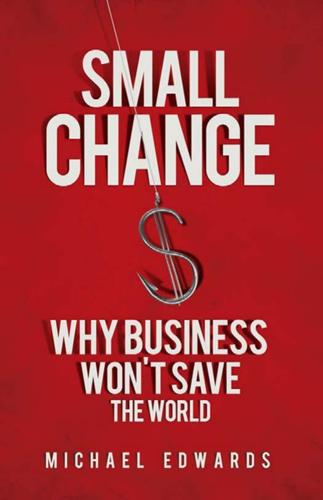
Small Change: Why Business Won't Save the World
by
Michael Edwards
Published 4 Jan 2010
Deep-rooted differences about capitalism and social change are unlikely to go away, so let’s have more honesty and dissent before consensus, so that it might actually be meaningful when it arrives. Effective philanthropists do learn from their experience and the conversations they have with others. Melinda Gates, for example, describes this process well: “Why do something about vaccines but nothing about clean water? Why work on tuberculosis but not on agricultural productivity? Why deliver mosquito nets but not financial services?”9 Of course, there is another set of questions waiting to be answered at an even deeper level: Why work on agricultural productivity but not on rights to land? Why work on financial services but not on changing the economic system in which they sit?
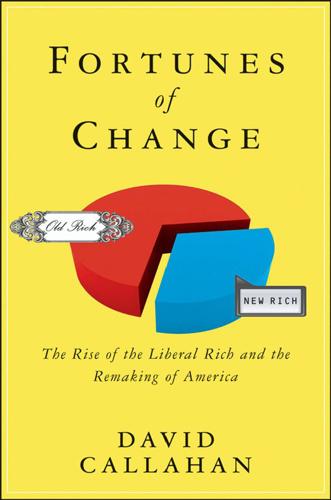
Fortunes of Change: The Rise of the Liberal Rich and the Remaking of America
by
David Callahan
Published 9 Aug 2010
For some of the new economy’s biggest winners, helping the world’s poorest people has turned into an all-consuming passion. • c05.indd 104 • • 5/11/10 6:19:29 AM the one-world wealthy 105 That is certainly the case for Edward Scott Jr., a successful Silicon Valley entrepreneur. During most of his life, Scott barely gave a thought to the two billion or so people in the world who live without such basics as clean water, vaccines, or education. He was focused almost exclusively on his own career and financial security. When he was young, as a political science major in college at Michigan State and then as a graduate student at Oxford, he thought he wanted to be a journalist like his father, an NBC correspondent.
…
Many philanthropists have taken a hands-on role in using their money to advance change, brimming with confidence that the smarts and creativity that made them a success in business will translate into both.indd 287 5/11/10 6:27:59 AM 288 fortunes of change social problem solving. But just because you’re good at developing software or betting on the market doesn’t mean you’ll know how to raise test scores in America’s urban school districts or bring clean water to Africa’s rural villages. The history of philanthropy is littered with disastrous mistakes or plain failures. Most recently, Bill Gates has acknowledged that his vast investment in public schools, with a big focus on creating new small schools, has not yielded the desired results. Many educators view his experiment as a debacle.
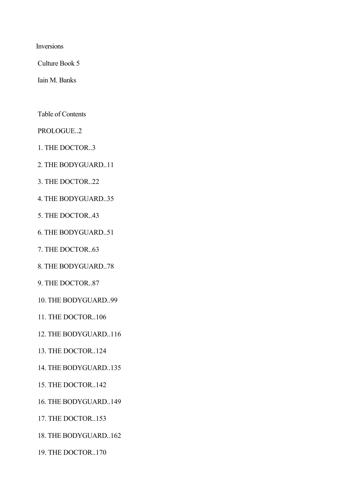
Inversions
by
Iain M. Banks
Published 14 Jan 2011
She swung the man in the cage-chair back upright and opened a vial in her bag, wiped a wooden spatula round the inside of the vial and then, opening the bloody mess that was the man's mouth, applied some of the ointment to his gums. He moaned again. The Doctor stood watching him for a moment, then stepped to the brazier and put the spatula into it. The wood flamed and spluttered. She looked at her hands, then at Nolieti. 'Do you have any water down here? I mean clean water.' The chief torturer nodded at Unoure, who disappeared into the shadows for a while before bringing a bowl which the Doctor washed her hands in. She was wiping them clean on the kerchief which had been her blindfold when the man in the chair cage gave a terrible screech of agony, shook violently for a few moments, then stiffened suddenly and finally went limp.
…
The Doctor had me remove her cloak from underneath Mrs Elund and then hold the cloak out of a window in the other room, waiting — with arms that became increasingly sore — until it was saturated with water before bringing it back inside and placing its dark, sopping folds over the child, whose clothes, save for a single tatty shift, the Doctor had removed. The girl continued to shake and twitch, and seemed no better than when we had arrived. When Mrs Elund made the noises that indicated she was coming back from her faint, the Doctor ordered her to find a fire, a kettle and some clean water to boil. Mrs Elund seemed to resent this, but left without too many curses muttered under her breath. 'She's burning up,' the Doctor whispered to herself, one graceful, long-fingered hand on the child's forehead. It occurred to me then, for the first time, that the girl might die. 'Oelph,' the Doctor said, looking at me with worry in her eyes.
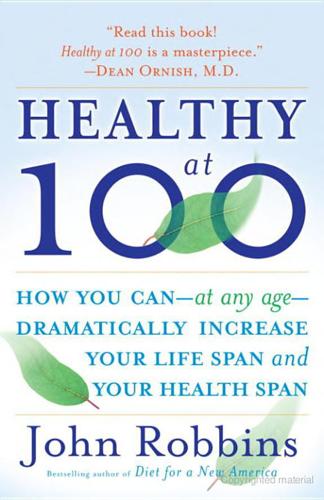
Healthy at 100: The Scientifically Proven Secrets of the World's Healthiest and Longest-Lived Peoples
by
John Robbins
Published 1 Sep 2006
China is now dealing with massive and uncontrolled air and water pollution. From the dismal air quality in its cities to the spreading deserts in its northwest, China is a nation with enormous environmental problems. When so much is changing in our world, and at such a mind-boggling pace, some of us easily forget that the needs of our bodies for fresh air, clean water, exercise, a healthy environment, and wholesome natural food remain essentially the same as they have been for tens of thousands of years. Remarkably, it is a study that took place in China, just as the world’s most populous nation began its recent massive changes, that may hold a key to our understanding how to live the longest and healthiest lives we can.
…
Respiratory illnesses are usually a minor problem in a healthy population, but they take a heavy toll among malnourished people with weakened immune systems. The China Study made clear that the underlying causes of “diseases of poverty” are actually nutritional inadequacy and poor sanitation. In fact, since it is not poverty itself that causes these diseases, but the lack of clean water and adequate food, it would be more precise to call them “diseases of nutritional inadequacy and poor sanitation.” Similarly, the China Study demonstrated that the underlying cause of most “diseases of affluence”—including diabetes, coronary heart disease, obesity, and many forms of cancer—is not affluence itself, but rather the nutritional excess that typically accompanies affluence.
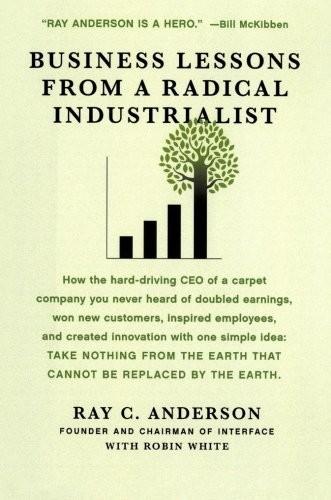
Business Lessons From a Radical Industrialist
by
Ray C. Anderson
Published 28 Mar 2011
Our plan to deal with chemical pollutants followed a similarly bold strategy: to eliminate all harmful releases by the year 2020, and to operate profitable factories that do not even need smokestacks and effluent pipes, that do not generate hazardous waste of any kind. The inventory created the agenda of items for which substitutes had to be found. Ultimately, we would send out into the world only valuable products (like carpet tiles and broadloom carpets), plus clean air, clean water, and biodegradable materials the earth can use to regenerate itself. You may well ask, is that even remotely possible? Well, our evolving biosphere did it, though it required billions of years of natural selection. Of course, finding a surviving, healthy piece of the biosphere (like an old-growth forest) is getting mighty difficult these days.
…
The culmination of PCSD’s work during Clinton’s first term was a report entitled “Sustainable America, A New Consensus.” It advocated noble goals. Here they are, as they were delivered to the president just before I showed up. Goal 1: Health and the Environment Ensure that every person enjoys the benefits of clean air, clean water, and a healthy environment at home, at work, and at play. Goal 2: Economic Prosperity Sustain a healthy U.S. economy that grows sufficiently to create meaningful jobs, reduce poverty, and provide the opportunity for a high quality of life for all in an increasingly competitive world. Goal 3: Equity Ensure that all Americans are afforded justice and have the opportunity to achieve economic, environmental, and social well-being.
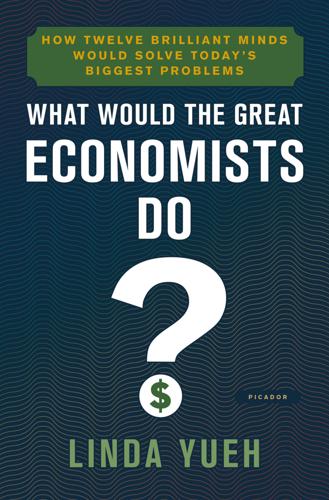
What Would the Great Economists Do?: How Twelve Brilliant Minds Would Solve Today's Biggest Problems
by
Linda Yueh
Published 4 Jun 2018
But, in the empire, most people still lived on farms, while small businesses were losing out to cheaper products from industrializing nations such as America, Germany and Britain. German Austria’s per capita income in 1913 was only about half that of Britain, though twice that of Hungary. Most people had no access to indoor plumbing, clean water or mass-produced shoes and clothing. Telephones and central heating were available only to the wealthy. Austrian bureaucrats still handwrote documents even though typewriters had been in use for twenty years. Because Schumpeter had grown up during a time of vast change, his Harvard student and later economics Nobel laureate Paul Samuelson described him as ‘completely qualified to play the important sociological role of the alienated stranger’.7 * * * After Schumpeter’s father passed away when he was five, he moved with his mother to Graz, where one of the few universities in the Austro-Hungarian Empire was located.
…
Originally published in Great Britain as The Great Economists by Viking, a part of the Penguin Random House group of companies First U.S. Edition: June 2018 * The original was: ‘It works in practice, but does it work in theory?’ * The other sixteen Sustainable Development Goals are: zero hunger; good health and well-being; quality education; gender equality; clean water and sanitation; affordable and clean energy; decent work and economic growth; industry, innovation and infrastructure; reduced inequalities; sustainable cities and communities; responsible consumption and production; climate change; life below water; life on land; peace, justice and strong institutions; partnerships for the goals.

Chasing the Devil: On Foot Through Africa's Killing Fields
by
Tim Butcher
Published 1 Apr 2011
I had not found anyone willing to join me in the Congo, a trip described to me before I left as suicidal. This time the journey would not be suicidal, just downright dangerous. A walk of roughly 350 miles would be tough enough in any environment, let alone the war-scarred backwoods of West Africa where food and clean water would be hard to come by, and I felt I could use a companion simply to keep me going. Graham Greene comes across as blithely patronising towards his cousin in Journey Without Maps. In early editions he does not even refer to her by name, although in later versions Barbara Greene’s name is slipped in once.
…
Come along for a few hours and you will see for yourself.” ’ The story prompted an enthusiastic smile on David’s unshaven, sweat-stained, haggard face, a smile that I shan’t forget. The walk to Kpangbalamai established the routine for those that followed: breakfast of reheated remnants of the previous night’s dinner; load rucksacks onto Mr Omaru’s bike; start walking as early as possible; hire local guides to help Johnson with the navigation; eke out five litres of clean water carried by each of us in a daypack; arrive thirsty, hungry and footsore in village before dusk for rendezvous with Mr Omaru; wash, eat, talk to the villagers and community leaders; try to sleep. The assessment in 1919 by the frustrated cyclist, Sir Alfred Sharpe, of the physical demands of trekking through Liberia felt in no way exaggerated but we had modern medicines and good water purification equipment to help us cope.
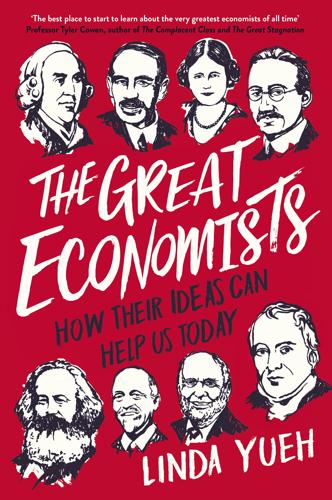
The Great Economists: How Their Ideas Can Help Us Today
by
Linda Yueh
Published 15 Mar 2018
But, in the empire, most people still lived on farms, while small businesses were losing out to cheaper products from industrializing nations such as America, Germany and Britain. German Austria’s per capita income in 1913 was only about half that of Britain, though twice that of Hungary. Most people had no access to indoor plumbing, clean water or mass-produced shoes and clothing. Telephones and central heating were available only to the wealthy. Austrian bureaucrats still handwrote documents even though typewriters had been in use for twenty years. Because Schumpeter had grown up during a time of vast change, his Harvard student and later economics Nobel laureate Paul Samuelson described him as ‘completely qualified to play the important sociological role of the alienated stranger’.7 After Schumpeter’s father passed away when he was five, he moved with his mother to Graz, where one of the few universities in the Austro-Hungarian Empire was located.
…
First published 2018 Copyright © Linda Yueh, 2018 The moral right of the author has been asserted Cover design and illustration: David Wardle ISBN: 978-0-241-97448-3 CHAPTER 10: MILTON FRIEDMAN: ARE CENTRAL BANKS DOING TOO MUCH? fn1 The original was: ‘It works in practice, but does it work in theory?’ CHAPTER 11: DOUGLASS NORTH: WHY ARE SO FEW COUNTRIES PROSPEROUS? fn1 The other sixteen Sustainable Development Goals are: zero hunger; good health and well-being; quality education; gender equality; clean water and sanitation; affordable and clean energy; decent work and economic growth; industry, innovation and infrastructure; reduced inequalities; sustainable cities and communities; responsible consumption and production; climate change; life below water; life on land; peace, justice and strong institutions; partnerships for the goals.
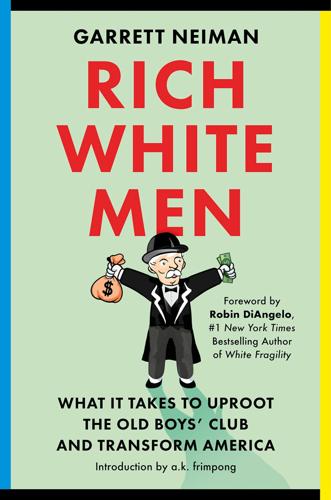
Rich White Men: What It Takes to Uproot the Old Boys' Club and Transform America
by
Garrett Neiman
Published 19 Jun 2023
I was excited because I was about to meet one of my classmates, but not just any classmate—someone who had a larger-than-life presence on Stanford’s campus because he was a real-life social entrepreneur. I’ll call him Scott, after Scott Harrison, the founding CEO of Charity: Water, which funds solutions that get clean water to rural communities in the developing world. After Scott volunteered abroad and saw international poverty firsthand, he decided to start his own nonprofit. By the time we’d met, Scott had already raised several million dollars for his enterprise. I wanted to learn his secret. “We got really lucky,” Scott told me.
…
—CHARLES KOCH, AMERICAN BILLIONAIRE AND FOUNDER OF KOCH INDUSTRIES, WHICH HAS SETTLED HUNDREDS OF ENVIRONMENTAL VIOLATIONS FOR PENNIES ON THE DOLLAR AT A TOTAL COST OF $880 MILLION MYTH: Equality can be achieved without addressing disparities in wealth and power. They say that the United States is one of the wealthiest countries in the world. Why are citizens still living with no access to clean water? —AMANDA L., A MOTHER OF FIVE IN NEW MEXICO WHO IS AMONG THE 30 PERCENT OF NAVAJO NATION FAMILIES WHO LACK ACCESS TO CLEAN RUNNING WATER IN 2022 REALITY: Equality requires that each person has the resources they uniquely need to thrive. I hope I have made clear by now how rich white men are often insulated by ignorance, underestimate other people’s suffering, and promote myths that justify our hoarding of wealth and power.

American Foundations: An Investigative History
by
Mark Dowie
Published 3 Oct 2009
Yet, for some reason, Putnam and most of his admirers forget to celebrate the concomitant "loss," since Tocqueville's time, of slavery, limited suffrage, debtor's prison, vigilante justice, lynching, and the ethnic cleansing of the frontier-the demise of which are certainly triumphs of civil society. And if they must bemoan losses, why not the loss of fresh air and clean water? The movement formed to protect air and water during the twentieth century is rarely mentioned by proponents of civil society; nor are the civil rights, peace, women's, and human rights movements. The salient comparison of American civil society should probably not be between America in 1826 and America in 2000; it should be between America and the rest of the world today.
…
Even their environmental philanthropy remains respectful of free enterprise and private property. A mere generation ago, the fortune of the parsimonious ultra-rightwing MacArthur family was heavily invested in Florida real estate, shopping malls, and paper mills. Today the family foundations fund projects to protect the Florida Keys, the Everglades, and even clean-water initiatives that put paper mills out of business. Similar ironies can be found throughout the foundation world, where the combined portfolios of trusts like Pew (Sun Oil money), W. Alton Jones (Cities Service), and Rockefeller (Standard Oil), which include twenty-eight oil and gas development companies, support organizations that would have their founders spinning in their graves.

Our Enemies Will Vanish: The Russian Invasion and Ukraine's War of Independence
by
Yaroslav Trofimov
Published 9 Jan 2024
Aiming to render the city uninhabitable, the Russians also disabled the potable water filtration plant that used to serve Mykolaiv’s half million residents. As an emergency alternative, the Mykolaiv municipality began to pump brackish water from the mouth of the Southern Buh River. It was good enough for washing dishes and floors but, after a few days of showering in it, I developed a rash and a newfound appreciation for the luxury of clean water. Ukrainian officials had started openly talking about the upcoming Kherson offensive. Iryna Vereshchuk, the deputy prime minister in charge of occupied territories, urged Ukrainian civilians to leave the region so they would not become human shields for the Russians. I wanted to see the Kherson front line for myself, and to gauge just how likely the planned offensive was to succeed.
…
Otherwise, the park looked unremarkable, save for the trees damaged by Russian machine guns. As military positions go, it was hopeless. In Mykolaiv farther north, people started adjusting to the idea that they were no longer in a frontline city. A slew of new restaurants and coffee shops opened. Briefly, clean water appeared in taps, replacing the brackish liquid from the Southern Buh estuary to which the city’s residents had grown accustomed. The water-filtering station near Kherson, disabled during the Russian occupation and repaired after that city’s liberation, didn’t last long. Within days, it was destroyed by a Russian missile strike.
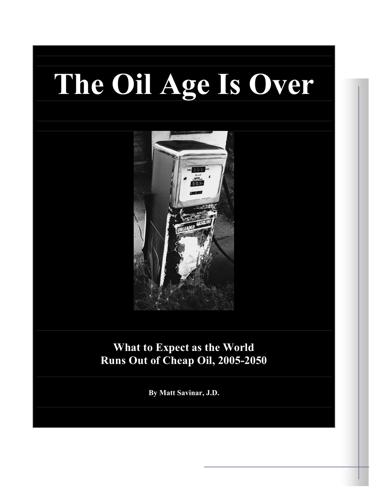
The Oil Age Is Over: What to Expect as the World Runs Out of Cheap Oil, 2005-2050
by
Matt Savinar
Published 2 Jan 2004
Professor Thomas Nagy of George Washington University unloaded a massive compilation of US Government documents from 1990-1991 that showed in no uncertain terms the malevolent intent to target sites of vital civilian importance in the first Gulf War. In an exposé entitled "The Secret Behind the Sanctions" Nagy cites macabre foreknowledge of the effects of bombing water purification and sewage treatment facilities which provide clean water to the Iraqi people. Moreover, these documents detail how the economic sanctions, imposed when Iraq invaded Kuwait in August 1990, would crescendo the effects of the bombings by banning items like water chlorinators and spare parts to rebuild the obliterated infrastructure, claiming that they could serve "dual use" purposes in making weapons of mass destruction.154 That a program of depopulation is in place in Iraq is further evidenced when one considers the effects that Depleted Uranium (DU) munitions have had on the Iraqi population.

The Fourth Industrial Revolution
by
Klaus Schwab
Published 11 Jan 2016
Today, 43% of the world’s population is connected to the internet.79 And, 1.2 billion smart phones were sold in 2014 alone.80 In 2015, sales of tablets are estimated to take over sales of personal computers (PCs), while mobile phone sales (all combined) will outpace computers by six to one.81 As the internet has been outgrowing every other media channel in speed of adoption, it is expected that, in only a few years, three-quarters of the world’s population will have regular access to the web. In the future, regular access to the internet and information will no longer be a benefit of developed economies, but a basic right just like clean water. Because wireless technologies require less infrastructure than many other utilities (electricity, roads and water), they will very likely become accessible much quicker than the others. Hence, anyone from any country will be able to access and interact with information from the opposite corner of the world.
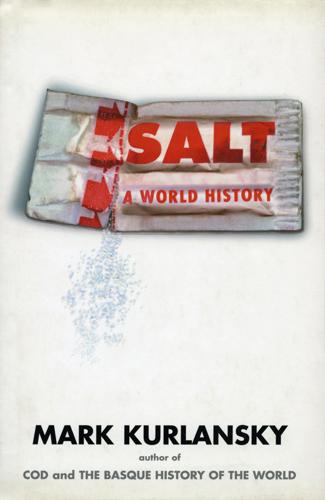
Salt: A World History
by
Mark Kurlansky
Published 28 Jan 2003
The splitters immediately split them beginning at the tail and continuing to the head, close by the back fin, leaving the Chine of salmon on the under side [the belly intact], taking the guts clear out and the gils out of the head, without defacing the least fin and also take out a small bone from the underside, whereby they get to the blood to wash it away. 5. Afterward the fish is put into a great tub, and washed outside and inside and scraped with a mussuel shell or a thin iron like it; and from thence put into another tub of clean water, where they are washed and scraped again, and from thence taken out, and laid upon wooden forms, there to lie and dry for four hours. 6. Thence they are carried into the cellars, where they are opened, or layed into a great vat or pipe with the skinside downward and covered all over with French salt and the like upon another lay and so up to the top and are there to remain six weeks.
…
Guérande has sued Aigues-Mortes—all the more suspect since it was bought by “the Americans”—over its use of the term. But fleur de sel is not unique to Brittany, and may be as old as making sea salt. In the second century B.C., Cato gave instructions for making fleur de sel in De agricultura: Fill a broken-necked amphora with clean water, place in the sun. Suspend in it a strainer of ordinary salt. Agitate and refill repeatedly; do this several times a day until salt remains two days undissolved. A test: drop in a dried anchovy or an egg. If it floats, the brine is suitable for steeping meat, cheese or fish for salting. Put out this brine in pans or baking dishes in the sun, and leave in the sun until crystallized.
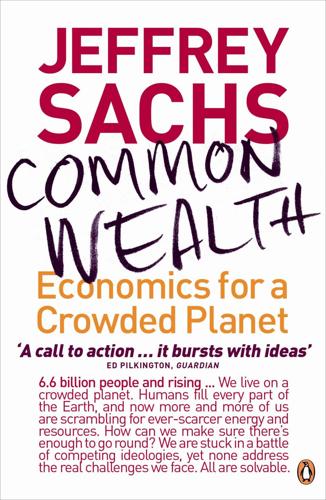
Common Wealth: Economics for a Crowded Planet
by
Jeffrey Sachs
Published 1 Jan 2008
Water stress is already a grim fact in many regions, and climate change will disrupt the water cycle on a global scale. The impacts on global society, and especially the poor, can be devastating. Without drinking water there is no survival beyond a few days. Without water for crops, there is no food. Without clean water, there is pervasive disease, especially killer infectious diseases that claim millions of children’s lives each year. Without readily accessible water, available in convenient locations, if not pumped directly to the household, there is drudgery in the world’s impoverished villages for women and girls, who often spend hours each day walking many miles to fetch the household’s water supply.
…
Clearly, our well-being depends fundamentally on these ecosystem services. The MEA discusses four end points of well-being supported by these varied services: Security includes protection from natural hazards (floods, droughts, predators). Material needs include foodstuffs, building materials, fibers for clothing, and energy supplies. Health includes clean water and air, and relative safety from pathogens. Social cohesion includes community trust and well-being that is supported by a shared and trusting community commitment to a healthy environment. All of these are a form of empowerment of individuals and communities to meet desired objectives, material and spiritual.
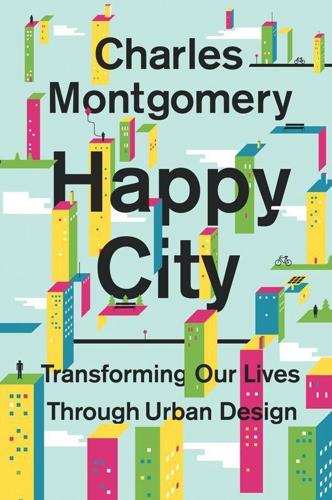
Happy City: Transforming Our Lives Through Urban Design
by
Charles Montgomery
Published 12 Nov 2013
Ingels had already convinced Denmark to pluck the iconic Little Mermaid statue from Copenhagen’s shoreline so he could set her inside a whorl he designed for the country’s pavilion at the 2010 Shanghai World Expo. He had codesigned a swimming pool to sit in the inner harbor so that citizens could do laps in the clean waters. And he had tried to sate Copenhageners’ desire to bike absolutely everywhere by creating an apartment building whose figure-eight shape allowed residents to cycle a gentle promenade all the way up to their tenth-floor apartments. Much of Ingels’s previous work had broken down the separation of uses that so often characterizes architecture and urban planning.
…
This is how the Southeast False Creek Neighbourhood Utility works: Every time residents of the Village do their dishes or take a shower or use the toilet, they flush thermal energy—either in the form of room-temperature water or considerably warmer human waste—down the drain. The wastewater gets piped to a sewage pumping station submerged under a nearby bridge. Inside that station is a small energy plant that uses a process of evaporation and compression to suck the heat from the wastewater. That energy gets transferred to clean water, which is then sent back to provide radiant heat and hot water for everyone in the Village. This is one reason that residents have cut their household greenhouse gas emissions by three-quarters. The energy plant emits no odor or toxins, but its exhaust flues have been turned into public art: five stainless steel pipes reach several stories into the sky, like the outstretched fingers of a giant robot hand.

What to Think About Machines That Think: Today's Leading Thinkers on the Age of Machine Intelligence
by
John Brockman
Published 5 Oct 2015
It’s important to remember how diverse and downright enormous the human population is. Computer use hasn’t been linked to passing more offspring into the next generation. Most of the human population has, as yet, limited access to technology. The evolution of our species will be slow, and it will be importantly influenced by our environment and collective access to clean water, nutritive food, and health care. If we can be as inclusive in our discussions of humanity as we are in what we want to call “thinking,” we might end up in a better place. A UNIVERSAL BASIS FOR HUMAN DIGNITY MICHAEL MCCULLOUGH Professor of psychology, director, Evolution and Human Behavior Laboratory, University of Miami; author, Beyond Revenge: The Evolution of the Forgiveness Instinct “The human brain is a thought machine” is one of the truest scientific truisms you can utter about human beings, right up there with “The heart is a blood pump” or “The eye is a camera.”
…
That process has been a hallmark of human thinking since we walked out onto the savannah, and as the world’s problems become more dire and more complicated, we ought to accept any effective tool to battle them. I could live with a partnership with machine learning in order to make complex modern life more resource-efficient in a way that human brains cannot. A world of sustainably grown food, sufficient clean water for humans and ecosystems, and comfortable, energy-efficient lodging is still possible and could be advanced in part by thinking machines. History suggests that the partnership will proceed in an incremental way, relatively unnoticed by busy people living out their busy lives. But for the sake of argument, let’s assume that our worst fears come true, things get out of hand, and at some point thinking machines topple the reign of Homo sapiens.

Wilding: The Return of Nature to a British Farm
by
Isabella Tree
Published 2 May 2018
But the browsing, trashing and trampling of the other grazing animals was also having an effect. In places where the low branch of a tree provided a scratching post for the cattle, for example, the compacting of the clay by their hooves created saucers in the ground which periodically filled with water. For once we were happy to see water lying on the land. We began to learn that these clean-water ‘ephemeral ponds’ – sometimes no bigger than a large puddle and so shallow as to be prone to evaporation – are an important habitat (now increasingly rare in the UK) for plants like water crowfoot, water starwort and stoneworts, and a whole range of specialist snails and water beetles, as well as the endangered and ethereal fairy shrimp.
…
The invertebrates’ is a bewitching world of orb weavers, crab spiders, leafhoppers, soldier beetles, froghoppers, harvestmen, bush crickets and outlandish creatures like the fungus weevil Platystomos albinus , a bird-dropping mimic, and Trematocephalus cristatus – a striking red and blue-black money spider with a hole straight through its head. Mayflies and dragonflies, too, throng the messy, vegetative margins of our lakes and ponds now rejuvenated by clean water. Two species of damselfly, the banded and the beautiful demoiselle, particularly sensitive to pollution, flit in hundreds over the streams and the surface of the River Adur. Rarer species like the scarce chaser, a blue-eyed dragonfly found only in six places in Britain, have appeared out of nowhere.

Targeted: The Cambridge Analytica Whistleblower's Inside Story of How Big Data, Trump, and Facebook Broke Democracy and How It Can Happen Again
by
Brittany Kaiser
Published 21 Oct 2019
Department of Homeland Security, NATO, the CIA, the FBI, and the State Department. The company had also sent experts to the Pentagon to train others in its techniques. SCL had a social division as well. It provided public health communications, in case studies where he explained they persuaded people in African nations to use condoms and people in India to drink clean water. It had had contracts with UN agencies and with ministries of health worldwide. The more I heard about SCL, the more I was taken with it. And when we regrouped and Alexander joined us for dinner at a nearby restaurant, I learned more about him and warmed to him as well. He had a much broader view of the world than I’d initially thought.
…
Maria, a deadly Category 5 storm, with winds as strong as 175 miles per hour, had destroyed the island’s infrastructure and caused a humanitarian crisis of unprecedented proportions. It had left thousands upon thousands of people without shelter and had nearly wiped out Puerto Rico’s electricity grid. Storm damage made access to medicine, clean water, food, and fuel nearly impossible, and between the storm itself and its aftereffects, nearly three thousand American citizens were dead. Restart Week was a way for the blockchain industry to invest in the island by making it a center for innovation, commerce, and technology—and to infuse Puerto Rico with tourism dollars, thousands of entrepreneurs, thought leaders, lobbyists, and newly curious followers had converged there.

Apollo's Arrow: The Profound and Enduring Impact of Coronavirus on the Way We Live
by
Nicholas A. Christakis
Published 27 Oct 2020
Plots like this were first propounded by the British physician and historian Thomas McKeown in 1966 in order to illustrate this very point—that modern medicine was not the primary force that caused infectious diseases to go away.2 The actual cause, McKeown argued, was socioeconomic improvements and the implementation of public health measures. For instance, the great rise in wealth worldwide during the past two centuries has increasingly afforded humans access to the clean water and safe food that technological and scientific advances have yielded. These advances, along with improvements in family planning and education, have played a bigger role in reducing the spread of infection than vaccines or treatments. This became known as the McKeown hypothesis, and it has been thoroughly validated.
…
As we saw before, this paradox illustrates another important feature of our evolutionary heritage: the human capacity for cultural innovation and learning. Modern living environments may incubate more germs, but they can also incubate more ways to combat them. * * * Despite our plentiful supply of clean water, Americans are surprisingly germy people. In one commercial survey of hygiene practices in eight countries, only Germans were worse handwashers. Perhaps study participants in countries like India are more familiar with the devastating burden of infection. But lack of knowledge is not the primary problem.
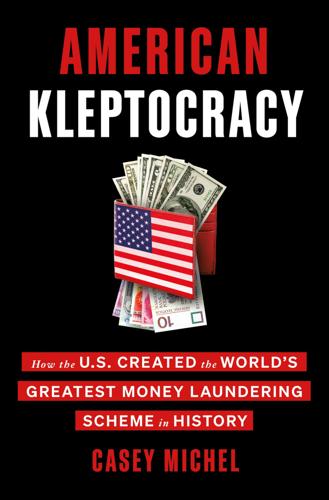
American Kleptocracy: How the U.S. Created the World's Greatest Money Laundering Scheme in History
by
Casey Michel
Published 23 Nov 2021
“The unification of the state with the ruler, and the chutzpah of the corruption—the brazenness of the corruption,” Hurwitz said, positions Obiang’s regime as “off the rails in terms of pure state capture.”7 The dictator rarely pretends to have his population’s best interests at heart. Not that many would necessarily believe him. Nearly 80 percent of the country lives in abject poverty, slogging by on subsistence farming and little else, with most Equatoguineans living almost completely outside the monetary economy. Over half the country has no access to clean water. Some 15 percent of the country’s children die before reaching the age of five, while a staggering two-thirds of those who survive don’t stay in school past middle school. One out of every three Equatoguineans never sees the age of 40. None of this is different from the precedent Macias set. As one American official drearily summed up, “The political leadership is illiterate and brutal in its crude way, but they know how to stay in power.”8 And Obiang’s regime has one key tool that allowed it to stay in power: oil.
…
Looting state coffers, pillaging local populations, pocketing as much national wealth as he could stomach, Duvalier built a personal nest egg worth upward of $800 million—enough to place him alongside genocidaires like Slobodan Milosevic (looted wealth: $1 billion) and crooks like Peru’s Alberto Fujimori (looted wealth: $600 million) among the great kleptocrats of the twentieth century.5 Much of Baby Doc’s looted wealth remained in Haiti proper, stashed in gold and banknotes. “If this money had been invested in clean water projects, we would have saved so many thousands of lives,” an investigator who tried to track Baby Doc’s assets later related to me. “That, to me, is the legacy when I think of Duvalier.”6 With the help of a few friends, Baby Doc opened an American bank account, and immediately began plowing his dirty millions through the till.

The Awoken: A Novel
by
Katelyn Monroe Howes
Published 8 Aug 2022
We were no longer a part of United America. Only they didn’t know it yet. With our dream came many logistical concerns. The elusive Canadian supply ship was nowhere to be seen, and Chris hadn’t heard back from her contact for days. We had the power we would need, for now, thanks to Samson. But food was scarce and clean water was running low. The camps brought some supplies with them, so they could be self-sustaining for a little while. And although all camps came armed with a few pistols and hunting rifles, no one had anything that could defend against a raid. That was troubling enough. However, the main concern was that we did not have the medicine the more recently Awoken required—including me, Avon, and Minnie.
…
To those whom I am speaking to, I’m asking you . . . No, I’m begging you to change the world. We are in New York City. The city you all have left behind. We will make this our home. There’s a supply ship twelve miles off the coast of Long Island that carries vitally important supplies: medicine, food, clean water. We need it to dock in Brighton Beach. To do so, it must sail past the blockade set up by your government. We need those supplies to have a chance at surviving. We need you. It is perfectly legal for any one of you to sail that boat to Brighton Beach. Legally, they can do nothing to stop you.

The Compound Effect
by
Darren Hardy
Published 1 Jan 2010
Does this give me an edge over the guy who gets up and first thing reads the newspaper, listens to news radio on his commute to and from work, and watches the evening news before going to bed? You bet it does! And it can for you, too. Fig. 12 Flush out the negative (dirty water) with positive, inspirational and supportive ideas (clean water). Step 1: Stand Guard Unless you decide to hole up in a cave or on a desert island, you’re going to get dirty water in your glass. It’s going to be on billboards, on CNN while you’re walking through the airport, on the screaming tabloid headlines at the checkout when you’re buying groceries, etc.

Governing the Commons: The Evolution of Institutions for Collective Action
by
Elinor Ostrom
Published 29 Nov 1990
Distributional Issues in Contracting for Property Rights. journal of Institutional and Theoretical Economics 145:6-24. Libecap, G. D., and S. N. Wiggins. 1985. The Influence of Private Contractural Failure on Regulation: The Case of Oil Field Unitization. journal of Political Economy 93:690-714. Liebenow, J. G. 1981. Malawi: Clean Water for the RuraJ Poor. American Uni versity Field Staff Reports, Mrica, No. 40. Lipson, A. J. 1978. Efficient Water Use in California: The Evolution of Ground water Management in Southern California. Santa Monica, Calif.: Rand Corpora tion. Lloyd, W. F. 1977. On the Checks to Population. In Managing the Commons, eds. 256 257 References References G.
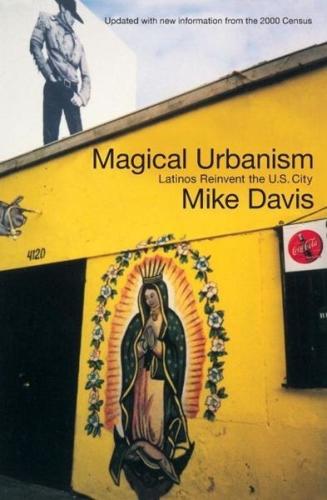
Magical Urbanism: Latinos Reinvent the US City
by
Mike Davis
Published 27 Aug 2001
fiscal free ride offered to The danger maquila capitalists, is aggra- who pay or nothing in taxes for supporting infrastructure. Every LA FRONTERA'S SIAMESE TWINS Mexican border civic resources city is 33 forced to practice a triage of shifting scarce from poor neighborhoods to industrial parks: for example, clean water for the maquilas but none for the colonias. When Heather workers or residents protest such conditions, WilUams points as out, they are the victims of punctual repression, facing dismissal, arrest, beating, even desaparicion.^^ Some macro-environmental problems, however, cannot be rendered invisible by state violence and, because they impinge directly on corporate US profits or tated novel binational initiatives.
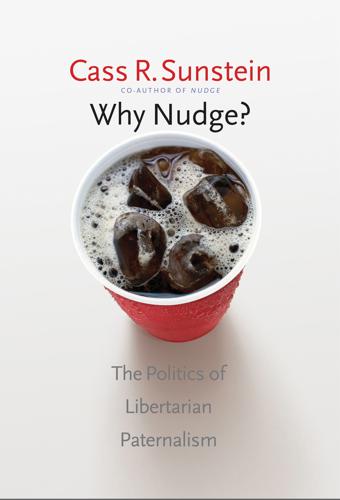
Why Nudge?: The Politics of Libertarian Paternalism
by
Cass R. Sunstein
Published 25 Mar 2014
For most of the poor, if they do nothing, they are on the wrong track.9 Duflo’s central claim is that people who are well off do not have to be responsible for a wide range of things, because others are making the relevant decisions, and to their benefit. Recall David Foster Wallace’s “what’s water?” joke. Rich people swim in clean water, and they don’t have to think about it; indeed, they might not even notice it. Those who are well off need not take burdensome steps to ensure that that their water, food, and streets are safe. We need not focus in particular on the disparity between rich and poor to see that as a matter of fact, decisions are taken for all of us by both private and public institutions.

Slow
by
Brooke McAlary
Published 22 Aug 2017
They don’t worry about having the right shade of lipstick or the correct boots, the newest iPhone or the biggest TV screen, but whether they will be safe going to sleep at night, whether the mosquitoes will make them sick, whether the rain will drip onto their infants, whether there will be food to eat tomorrow, whether they will get paid at the end of the week, whether the spray they use on the crops is making them cough . . . I sit here, typing these words on my MacBook. I am clothed and fed and have access to clean water whenever I want it. If I cut my hand open while gardening later today, I can go to the hospital and have it stitched up. By doctors. In a clean facility. Tonight I will flick a switch and lights will turn on. I can make a phone call on the iPhone that is rarely more than 20 metres from me. It’s sobering to realise the level of our privilege in the Western world, and to see just how excessive our excess actually is.

Dancing in the Glory of Monsters: The Collapse of the Congo and the Great War of Africa
by
Jason Stearns
Published 29 Mar 2011
Beatrice had lost over thirty pounds by the time she arrived there; her skin was leathery and stiff, her muscles were sore, and she was so hungry that the sight of food made her salivate. To the refugees’ dismay, no humanitarian organization was there to help them; there were few latrines and no clean water. A dysentery epidemic broke out shortly after their arrival, followed by cholera. Soon, aid workers did arrive, but they were overwhelmed by the needs of 80,000 people. Every day, bodies, partially covered by white sheets, would be carried away on stretchers. The refugees looked as if they had aged twenty years—their eyes sunk deep into their skulls, skin hanging loosely from their bodies, and their feet swollen from malnutrition and hundreds of miles of walking.
…
Violence only directly caused 2 percent of the reported deaths. Most often, it was easily treatable diseases, such as malaria, typhoid fever, and diarrhea, that killed. There was, however, a strong correlation between conflict areas and high mortality rates. As fighting broke out, people were displaced to areas where they had no shelter, clean water, or access to health care and succumbed easily to disease. Health staff shuttered up their hospitals and clinics to flee the violence, leaving the sick to fend for themselves. Almost half of the victims were children—the most vulnerable to disease and malnutrition. A full 60 percent of all children died before their fifth birthday.

Vultures' Picnic: In Pursuit of Petroleum Pigs, Power Pirates, and High-Finance Carnivores
by
Greg Palast
Published 14 Nov 2011
(These guys think Americans are stupid; but why is it necessary to prove it?) Is BP operating more safely here than in the Gulf? When we landed, the Arctic Slope Regional Corporation (the one founded by Etok) was still cleaning up BP’s huge spill from 2006, four years earlier. BP pled guilty to criminal violations of the Clean Water Act and was put on three years’ probation. The company was still on probation when it blew out the Macondo well in the Gulf. Now, if you steal a bike and break probation, you go to jail. If a corporation breaks probation, they go to . . . what? BP did not even lose its Gulf lease or its right to operate the Pipeline.
…
Lenora found Erlene Blake, a technician in the Alyeska testing lab. Erlene told us that Alyeska kept a bucket of oil-free seawater in the lab. If they found evidence of hydrocarbon in the Sound’s waters, they were directed to dump it down the sink and refill the sample vials from the bucket of clean water. They called it the Miracle Barrel. What else? The Chugach agreement to sign away Valdez imposed a requirement on the companies:“BE IT FURTHER RESOLVED that the several oil companies employ the latest chemical and other anti-pollution methods for protection of the fisheries, wild life and migratory birds at all times.”
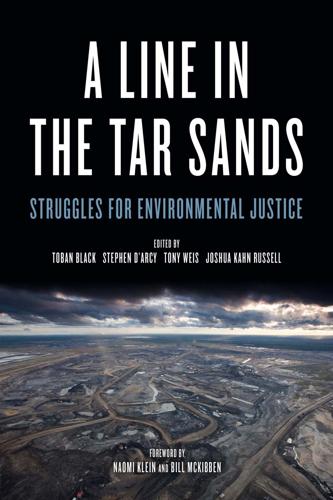
A Line in the Tar Sands: Struggles for Environmental Justice
by
Tony Weis
and
Joshua Kahn Russell
Published 14 Oct 2014
Over fourteen hundred square kilometres of leases have been granted for tar sands and fracking development in Lubicon territory, and almost 70 per cent of the remaining land has been leased for future development. Where there once was self-sufficiency, we are seeing increased dependency on social services, as families are no longer able to sustain themselves in what was once a healthy environment with clean air, clean water, medicines, berries, and plants from the boreal forest. Our way of life is being replaced by industrial landscapes, polluted and drained watersheds, and contaminated air. And it’s very much a crisis situation. In the North, we are seeing elevated rates of cancers and respiratory illnesses as a consequence of the toxic gases being released into the air and water.
…
This bill was followed by Bill S-8, which the federal government supposedly enacted to provide safe drinking water for First Nations. In reality, it will result in the privatization of our water, thereby taking the milk of our Mother and turning it into a commodity. Our people would be forced to pay fees for clean water because of this government’s attempt to sell what was never theirs in the first place. Who can afford this? The poor First Nations people living in Third World conditions in a First World country? The poor farmer who relies on his crops to feed his family, and the 99 per cent? No. It is industry that can afford it, and this government has made sure of that.
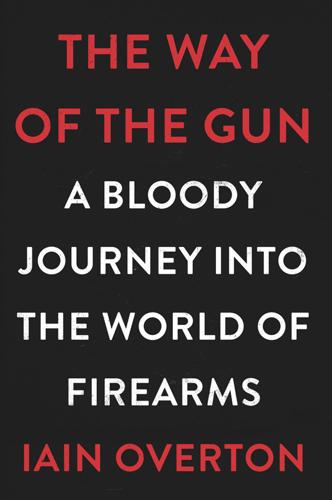
The Way of the Gun: A Bloody Journey Into the World of Firearms
by
Iain Overton
Published 15 Apr 2015
In South Africa such dogs are in constant use. In the south-west the Cape gangs have an estimated 51,000 guns. And this is just the southern tip of the country. Nationally there are as many as 4 million illegal guns; in some areas I was told, with the right contacts, a gun is easier to get hold of than a glass of clean water.3 The effects of this profusion of illegal weapons is clear: at one stage 15,000 South Africans were dying from gunshots a year.4 Police and their gun dogs here, frankly, have their work cut out. This is why, having met the doctors whose jobs it was to patch up the wounded, I had arranged to meet a police squad dedicated, literally, to sniffing out guns in one of the most violent parts of the world.
…
At forty-three, he has the trim appearance of a military man, hair shorn hard at the sides, a face showing more pride than humour. Photos catch him posing with the antlers of downed stags74 or crouching behind a freshly killed bear.75 His wife, Karen Kollitides, blonde, groomed in a specific way, is captured in the glare of high-society events such as ‘Models 4 Water’, a charity that provides clean water to remote parts of Africa.76 It makes you wonder whether the guns her husband produces have been involved in displacing refugees in Africa and causing untold families to eke out dry-mouthed lives in endless scorched deserts.77 Certainly his company’s guns have been found in the hands of militants murdering for the Islamic State.78 Like Feinberg, George Kollitides is also a major donor to politics and lobby groups.

Arabian Sands
by
Wilfred Thesiger
Published 15 Sep 1959
In the desert I had found a freedom unattainable in civilization; a life unhampered by possessions, since everything that was not a necessity was an encumbrance. I had found, too, a comradeship inherent in the circumstances, and the belief that tranquillity was to be found there. I had learnt the satisfaction which comes from hardship and the pleasure which springs from abstinence: the contentment of a full belly; the richness of meat; the taste of clean water; the ecstasy of surrender when the craving for sleep becomes a torment; the warmth of a fire in the chill of dawn. I went back to the Nuer, but I was lonely, sitting apart on a chair, among a crowd of naked savages. I wanted more than they could give me, even while I enjoyed being with them. The Danakil journey had unsuited me for life in our civilization; it had confirmed and strengthened a craving for the wilds.
…
Half an hour later he and Hamad came over to us with a young man who greeted us and then told us to unload our camels and make ourselves comfortable; he said that when he had finished watering he would take us to his encampment. The caravan from Ibri watered their animals. One of them unexpectedly gave Hamad a small package of dates; they were very large and very sweet, but I was sick of dates and never wanted to see another. They moved off up the wadi and we then went over to the well, which had clean water at a depth of twenty feet. In the afternoon the young herdsman, whose name was Ali, led us to his encampment two miles away. Here the Wadi al Ain, the largest of the three great wadis which run down from the Oman mountains into the desert to the west, consisted not of a single dry river-bed, but of several smaller watercourses separated by banks of gravel and drifts of sand.

Braiding Sweetgrass
by
Robin Wall Kimmerer
The problem is that you can’t tell whether the shoot will snap or not until you tug with all your might and it suddenly breaks free, leaving you sitting in the water with muck dripping from your ears. The rhizomes, essentially underground stems, are a real prize. Brown and fibrous on the outside, they are white and starchy on the inside, almost like a potato, and they taste pretty good roasted in the fire. Soak cut rhizomes in clean water and you’ll soon have a bowl of pasty white starch that can become flour or porridge. Some of the hairy rhizomes have a stiff white shoot emerging from their end, a more than vaguely phallic organ of horizontal propagation. This is the growing point that will spread the cattails through the marsh.
…
One day in late September, while earth-moving machinery dredged contaminated soils on the western shore of Onondaga Lake, another group of earth movers worked on the eastern shore—dancing. I watched their feet as they moved in a circle led by the water drum. Beaded moccasins, tassel-tie loafers, high-top sneakers, flip-flops, and patent-leather pumps all beat against the ground in a ceremonial dance to honor the water. All the participants carried vessels of clean water from their home places; their hopes for Onondaga Lake were held in these vessels. Work boots brought spring water from the high hills, green Converses carried city tap water, and red wooden sandals peeking from below a pink kimono carried sacred water all the way from Mount Fuji to blend that purity into Onondaga Lake.

Stacy Mitchell
by
Big-Box Swindle The True Cost of Mega-Retailers
and
the Fight for America's Independent Businesses (2006)
Designed to draw shoppers from miles around, these malls together account for eight times the nitrogen oxide, nineteen times the hydrocarbons, and fourteen times the carbon monoxide of the Ford plant.11 Sprawl has also surpassed industry as the greatest menace to Ohio’s lakes and rivers. In 1969 the Cuyahoga River, which runs through Cleveland and empties into Lake Erie, was so full of industrial e~uent that it caught on fire. Captured in photographs published in Time and National Geographic, the incident caught the nation’s attention and helped propel passage of the Clean Water Act in 1973, which required factories to clean up their discharges. Over time the law led to significant improvements in water quality, but today, according to Jim White, director of the Cuyahoga River Remedial Action Plan, the river faces a new and more pernicious threat: runoƒ from rooftops, parking lots, and roadways.
…
The long supply lines behind every superstore, category killer, and fast-food outlet rely on combusting vast quantities of fossil fuels, the eƒects and costs of which are borne, not by the chains, but by society as a whole. TOXIC PARKING LOTS While many people recognize the connection between sprawl and air pollution, few are aware that sprawl—or, more precisely, pavement—is now the leading threat to our rivers, lakes, and estuaries. After years of steady improvement following passage of the 1973 Clean Water Act, which limited industrial discharges, many water bodies are once again in decline. This time the culprit is polluted runoƒ from roads, driveways, and parking lots. Runoƒ now ranks as the nation’s leading source of water pollution, aƒecting more than 40 percent of U.S. lakes and streams and leading to fifteen hundred beach closings and advisories since 1998, according to the U.S.

The Controlled Demolition of the American Empire
by
Jeff Berwick
and
Charlie Robinson
Published 14 Apr 2020
Each year the United Nations puts out a laughable list of goals that they seek to accomplish, knowing full well that they intend to do the exact opposite. 17 Sustainable Develop Goals Each Year According to the United Nations: • Zero hunger. • No poverty. • Good health and well-being. • Quality education. • Gender Equality. • Clean water & sanitation. • Affordable & clean energy. • Decent work and economic growth. • Industry, innovation, & infrastructure. • Reduced inequalities. • Sustainable cities & communities. • Responsible consumption & production. • Climate action. • Life below water. • Life on land. • Peace, justice, & strong institutions
…
IRS documents show that of the $500 million the foundation raised over a four- year period starting in 2009, only 15% was actually spent on “programmatic grants.”217 So what did they spend the remaining $425 million on? According to their filings, they spent $32 million on travel expenses, and $110 million on salaries. Did they hire the New York Yankees to run the Clinton Foundation? An additional $290 million was classified as “other expenses” which could mean anything, except probably clean water, food, and housing for Haiti. The 1.5 million people that were affected by the earthquake were still homeless years after the money had been donated, with little done to improve their country even though donations were in the tens of billions of dollars. Organizations that made large donations to the Clinton Foundation would end up receiving the contracts to help Haitians on the ground, though most of the money would go missing and flow anywhere else but where it was needed.
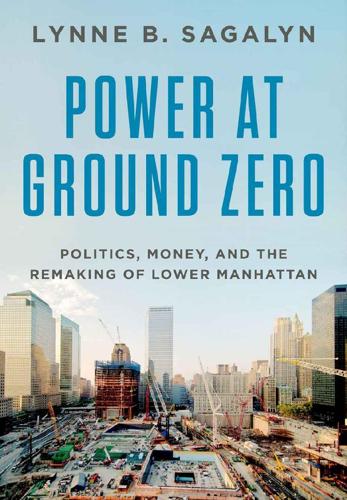
Power at Ground Zero: Politics, Money, and the Remaking of Lower Manhattan
by
Lynne B. Sagalyn
Published 8 Sep 2016
By 1972, approximately 643 acres of new waterfront had been added, nearly doubling that area of lower Manhattan (figure 1.6). Following prohibitions put in place by the federal government’s Clean Water Act of 1972, which ended the practice of discharging into the waters of the United States, unless authorized by a permit issued by the U.S Army Corps of Engineers, Battery Park City became the city’s last landfill expansion project. FIGURE 1.6 The history of successive landfill expansions of lower Manhattan: 1650–1980; the 1980s line is a projection as of 1966. After the Clean Water Act of 1972 ended the practice of discharging into the waters of the United States, unless authorized by a permit issued by the U.S Army Corps of Engineers, Battery Park City became the city’s last landfill expansion project.
…
It was renamed “Westway” in 1974; the idea was to bury the highway in new landfill south of Fortieth Street (requiring about two hundred acres of the Hudson River to be landfilled) and place development atop the land so created along with a ninety-three-acre park; the 1981 price tag was $2.1 billion. Controversy and lawsuits erupted, and when Judge Thomas Griesa of the U.S. District Court ruled against a needed dredge-and-fill permit filed by New York State because the proposed road would harm striped bass (and therefore violated the National Environmental Policy Act and the Clean Water Act) and the U.S. Court of Appeals for the Second Circuit upheld the decision, the project was essentially dead; in September 1985, New York City officials gave up on the project. A gulf of 260 feet separating Battery Park City from the rest of Manhattan remained in place. Fast forward to 2002 WTC rebuilding: The resuscitated idea of burying West Street, this time from Chambers Street south to Battery Place, would free up sixteen acres of land for other uses.
…
The type of chiller plant that the PA planned to use, a so-called river-water plant, is far more energy efficient than those drawing water from the city’s drinkable water system. More efficient it may be, but river-water plants also consume aquatic micro-organisms (fish eggs and larvae), which caused consternation for environmental groups. The original WTC chiller system was designed before the passage of the Clean Water Act of 1972, and apart from the United Nations and a couple of hospitals, few such systems still exist in New York City. Whether from inattention or automatic expiration because it was out of use, the permit for the existing WTC water-river chiller plant had expired. To build and operate a new plant, the PA needed a new permit from the New York State Department of Conservation, which opened up the issue to environmental challenges.
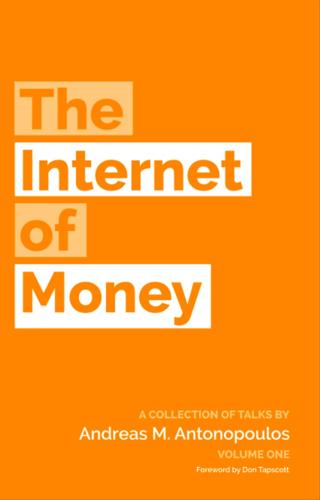
The Internet of Money
by
Andreas M. Antonopoulos
Published 28 Aug 2016
Banking Privilege and Surveillance Effectively, what the banks are saying to us is, "We focus tested this. What people want is the ability, instead of swiping their Visa card, to wave it over the reader, saving almost two seconds and reducing their effort by at least four calories. I mean, we could deal with the 4 billion people who have no access to banking or clean water. We could deal with the fact that our world is a fragmented mess, where the vast majority of humanity have no access to financial services. Or, we could reduce the shopper’s effort and make a swipe card into a float card. We could face the fact that the reason more than 4 billion people are unbanked is because we require everyone to be identified on every side of every transaction, so that we can build a totalitarian surveillance system that the Stasi would be jealous of, to monitor every financial transaction from every corner of the planet.
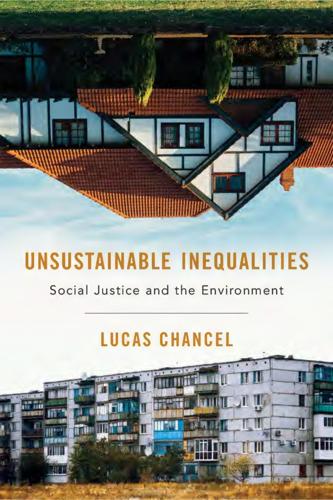
Unsustainable Inequalities: Social Justice and the Environment
by
Lucas Chancel
Published 15 Jan 2020
Individuals are encouraged to seek guidance from social workers who are trained to evaluate the amount of energy they consume in connection with housing, transportation, and so forth, with a view to taking this information into consideration in calculating the overall level of public assistance for which financially insecure households are eligible.12 In Germany, energy subsidies are likewise included in reckoning the amount of social assistance to be given to the unemployed. The mechanisms of social security in both Germany and Sweden incorporate the energy dimension among the various risks that individuals incur in the course of their lives. A Green New Deal Is Good for Jobs So far we have identified several areas—affordable energy, clean water, improved sanitation, low-carbon transportation—in which the active participation of public authorities is essential both in protecting the environment and guaranteeing universal access to these resources. It is a reason for optimism that targeted policies have proved to be perfectly viable from the point of view of economic efficiency.

Green Interior Design
by
Lori Dennis
Published 14 Aug 2020
If we want the next generation to have fresh water, we will need to take a new approach toward usage and waste. CONSERVATION IS KEY There are too many people on this planet to waste fresh water. The water that comes from the tap is not limitless. Water is a finite resource, and it is getting expensive. As we continue to pollute it with manufacturing, waste, and toxic chemicals, clean water becomes scarce. The human population is growing faster than our freshwater supply and will not continue to meet our needs in the next century if we do not change our ways. We often wonder why, with a planet that is made up of three-quarters water, albeit saltwater, we haven’t come up with a better solution for desalinization.

Collapse
by
Jared Diamond
Published 25 Apr 2011
The 1970 Bolle Report, prepared by forestry professionals outside the Forest Service, criticized Forest Service policies and, fanned by similar disputes over clear-cutting of West Virginia national forests, led to national changes, including restrictions on clear-cutting and a return to emphasis on managing forests for multiple purposes other than timber production (as already envisioned when the Forest Service was established in 1905). In the decades since the Clearcut Controversy, Forest Service annual timber sales have decreased by more than 80%—in part because of environmental regulations mandated in the Endangered Species Act, the Clean Water Act, and requirements for national forests to maintain habitats for all species, and in part because of the decline in easily accessible big trees due to logging itself. When the Forest Service now proposes a timber sale, environmental organizations file protests and appeals that take up to 10 years to resolve and that make logging less economic even if the appeals are ultimately denied.
…
The literally innumerable examples include: the role of earthworms in regenerating soil and maintaining its texture (one of the reasons that oxygen levels dropped inside the Biosphere 2 enclosure, harming its human inhabitants and crippling a colleague of mine, was a lack of appropriate earthworms, contributing to altered soil/atmosphere gas exchange); soil bacteria that fix the essential crop nutrient nitrogen, which otherwise we have to spend money to supply in fertilizers; bees and other insect pollinators (they pollinate our crops for free, whereas it's expensive for us to pollinate every crop flower by hand); birds and mammals that disperse wild fruits (foresters still haven't figured out how to grow from seed the most important commercial tree species of the Solomon Islands, whose seeds are naturally dispersed by fruit bats, which are becoming hunted out); elimination of whales, sharks, bears, wolves, and other top predators in the seas and on the land, changing the whole food chain beneath them; and wild plants and animals that decompose wastes and recycle nutrients, ultimately providing us with clean water and air. 4. Soils of farmlands used for growing crops are being carried away by water and wind erosion at rates between 10 and 40 times the rates of soil formation, and between 500 and 10,000 times soil erosion rates on forested land. Because those soil erosion rates are so much higher than soil formation rates, that means a net loss of soil.
…
"As measured by commonsense indicators such as human lifespan, health, and wealth (in economists' terms, per-capita gross national product or GNP), conditions have actually been getting better for many decades." Or: "Just look around you: the grass is still green, there is plenty of food in the supermarkets, clean water still flows from the taps, and there is absolutely no sign of imminent collapse." For affluent First World citizens, conditions have indeed been getting better, and public health measures have on the average lengthened lifespans in the Third World as well. But lifespan alone is not a sufficient indicator: billions of Third World citizens, constituting about 80% of the world's population, still live in poverty, near or below the starvation level.
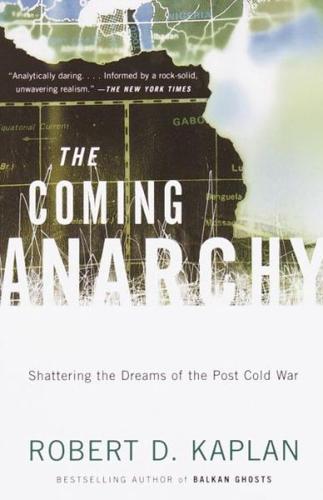
The Coming Anarchy: Shattering the Dreams of the Post Cold War
by
Robert D. Kaplan
Published 1 Jan 1994
Chicago, like more and more of Abidjan, is a slum in the bush: a checkerwork of corrugated zinc roofs and walls made of cardboard and black plastic wrap. It is located in a gully teem ing with coconut palms and oil palms, and is ravaged by flood ing. Few residents have easy access to electricity, a sewage system, or a clean water supply. The crumbly red latérite earth THE COMING ANARCHY / 11 crawls with foot-long lizards both inside and outside the shacks. Children defecate in a stream filled with garbage and pigs, droning with mosquitoes. In this stream women do the washing. Young unemployed men spend their time drinking beer, palm wine, and gin while gambling on pinball games constructed out of rotting wood and rusty nails.
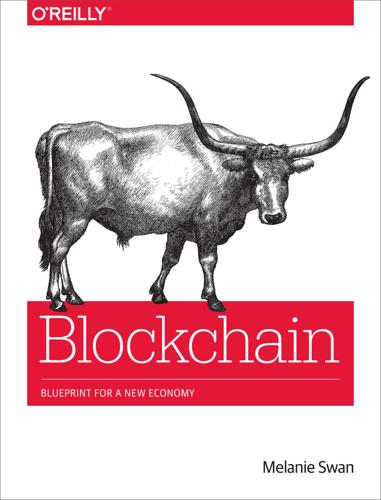
Blockchain: Blueprint for a New Economy
by
Melanie Swan
Published 22 Jan 2014
A clear use case for the demurrage dynamic redistribution feature is in the case of resource allocation through automatic networks or tradenets. Here, more efficient, larger, more scalable, more trackable systems are sought for the distribution of consumable resources like gas and electricity, transportation quanta (i.e., Uber/LaZooz, self-driving vehicles, or automated pod transport systems envisioned in the farther future), clean water, food, health-care services, relief aid, crisis-response supplies, and even emotional support or mental-performance coaching (for individuals permissioned in consumer EEG rigs). This is the idea of using the demurrage concept in other network systems to dynamically, automatically redistribute resources for optimization.

Thrifty Ways for Modern Days
by
Martin Lewis
Published 4 May 2010
Another option is hot water with a tablespoon of bicarbonate of soda in it. Stick it on high for five minutes and then wipe clean. Get a fresh lemon, cut it in half and squeeze out the juice into a glass bowl of warm water. Put the remains of the lemon into the bowl as well, run the microwave on defrost for 15 minutes, then wipe out with clean water. Bathroom What You’ll Need White vinegar Newspaper (the free ones that come through the door!) Bicarbonate of soda Flat or cheap cola Lemon juice Cheap washing powder Car polishing wax Denture tablets (value ones from Tesco) Toothpaste (cheapest whitening one you can find) Windows and Mirrors For added sparkle mix one part vinegar to 10 parts water and spray on as you would your usual glass cleaner.
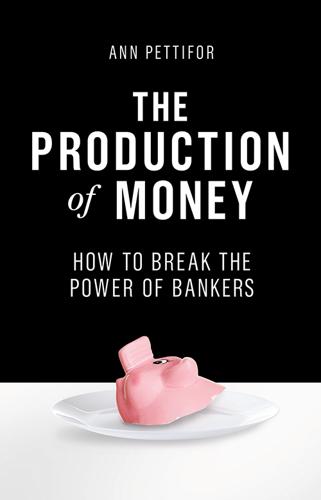
The Production of Money: How to Break the Power of Banks
by
Ann Pettifor
Published 27 Mar 2017
Were the sanitation system to be captured in the same way, we would live in a world in which a small elite abused a great public good. That elite would grow fit and healthy because they would be protected from dirty water and disease, while the rest of society would be weakened by only occasional access to clean water and hygienic sanitation. That is effectively what has happened in economic terms since the finance sector made a power-grab for the money system in the late 1960s and ’70s. Financial elites have grown wealthy beyond imagining; the middle classes and the poor have grown poorer as inequality has skyrocketed, and the labour movement has been shackled.

Drone Warfare: Killing by Remote Control
by
Medea Benjamin
Published 8 Apr 2013
With high-tech munitions, the military was able to zoom in on key targets: government ministries, the country’s electrical grid, water treatment plants, sewage systems, food storage facilities, bus depots, bridges, communication centers. But precise targeting, Iraqis told us, did not necessarily minimize casualties. What about the workers in those buildings? What about the people who happened to be walking by? And what about the hundreds of thousands of Iraqis, mostly children, who died from the subsequent lack of clean water and healthcare? All this callous destruction occurred in a country that had nothing to do with Al Qaeda or 9/11. Back in the US, I worked with Global Exchange to create a Congressional fund for compensating innocent victims of our attacks. Our staffperson Marla Ruzicka, one of the most compassionate and passionate young women I have ever met, worked feverishly on this, later founding a group called CIVIC, Campaign for Innocent Victims in Conflict.
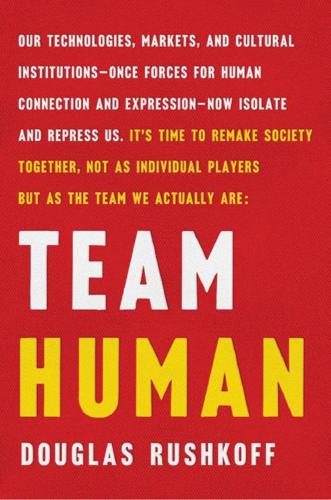
Team Human
by
Douglas Rushkoff
Published 22 Jan 2019
We improve the metrics that a given technology can improve, but often ignore or leave behind the sorts of problems that the technology can’t address. We move out of balance, because our money and effort go toward the things we can solve and the people who can pay for those solutions. We’ve got a greater part of humanity working on making our social media feeds more persuasive than we have on making clean water more accessible. We build our world around what our technologies can do. Most technologies start out as mere tools. At first they exist to serve our needs, and don’t directly contradict our worldview or our way of life. If anything, we use them to express our own, existing values. We built airplanes so humans could experience flight and travel great distances.

Attack of the 50 Foot Blockchain: Bitcoin, Blockchain, Ethereum & Smart Contracts
by
David Gerard
Published 23 Jul 2017
Dogecoin got caught up in the hype of the Bitcoin bubble and quickly gained in price, peaking in January 2014 at 0.17 of a cent per DOGE, despite almost no use cases (some used it to tip other Reddit commenters) and not being exchangeable for anything but bitcoins. The Dogecoin Foundation, started by Ben Doernberg and the coin’s creator Jackson Palmer, raised nearly $30,000 of Dogecoins in January to send the Jamaican bobsled team to the 2014 Winter Olympics. Doge4Water raised $32,000 for clean water in Kenya. This attracted the attention of a fellow calling himself Alex Green. “My name is Alex Green. I have zero online footprint.” He quickly set up UK cryptocurrency exchange Moolah. While others tipped single Dogecoins, worth a fraction of a penny, Green caught attention with tips of thousands of dollars.
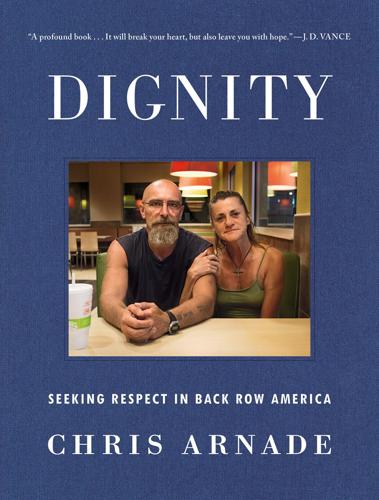
Dignity: Seeking Respect in Back Row America
by
Chris Arnade
Published 3 Jun 2019
Most fast-food franchises and other stores like the Walmarts, Dollar Generals, and Big Lots that started filling my hometown were also places to ignore or joke about. They were something to avoid, or to visit only out of boredom, or to “slum it” for fun. In Hunts Point, I found myself going to McDonald’s every day because everyone did. It was an essential part of my new friends’ life. Without a stable home, they needed clean water, a place to charge a phone, a place to get free Wi-Fi. McDonald’s had all of those, and it also had good cheap food. (“Coffee with fifteen packs of Sweet’N Low, pancakes covered in syrup and sugar. Extra syrup. An addict’s breakfast.”) They started their day in the McDonald’s, often around noon, cleaning up and sometimes shooting up in the bathrooms and, since the bathrooms didn’t have mirrors, putting on makeup in the sideview mirrors of cars in the parking lot.
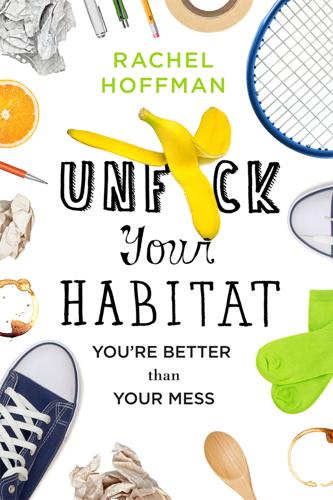
Unf*ck Your Habitat
by
Rachel Hoffman
Direct sunlight will clear up mustiness in almost anything. If something’s smelling a little musty and weird, just stick it outside for a few hours on a sunny day. (Make sure to bring everything back in before it rains or nature starts to have its way with your stuff.) 3. Denture tablets are awesome for cleaning water bottles or stained teacups. Just drop one in, fill with water, let it sit a bit, and rinse. 4. If you have a ridiculous amount of paper to shred, most office supply stores will shred for you (they charge by the pound), and many places have “community shreds,” where you bring your stuff and they shred it in front of you, either for free or a nominal charge.
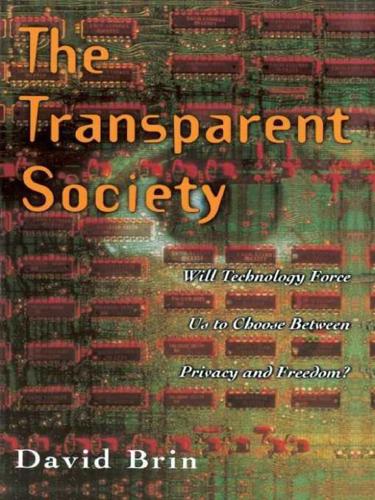
The Transparent Society: Will Technology Force Us to Choose Between Privacy and Freedom?
by
David Brin
Published 1 Jan 1998
As for the vaunted Internet, both messianic utopians and pessimistic critics may be missing the point. Amid all the abstract theorizing, why arenʼt we asking important, pragmatic questions, such as what will happen when personal computers become so cheap that citizens of the poorest Third World nations will have readier access to data than food or clean water? We are bound for interesting times. Nothing makes me happier on a sunny day than to think of how wrong Iʼve been in the past. The old fears of people like me that technology leads to totalitarianism and cultural sterility do not come true. The computer, the fax, the car phone, the answering machine, all seem to lead to a more civilized life, affording us greater privacy and freedom, not less.
…
For many years, actuaries and officials at insurance companies and government regulatory agencies have tried to appraise danger in all corners of society, from airlines and automobiles to food safety and prescription packaging. In a sense, this is fine T-cell activity, since our institutions should endeavor to help us all thrive safely. And it is easy to see the success that some efforts have achieved, such as delivering clean water supplies, providing safer cars, and reducing pollution in our rivers and skies. We live longer and travel with more confidence, because many varied hazards are sniffed out by those with the expertise to find them. Some may object in principle that we should not be coddled by bureaucrats, or that the free market ( caveat emptor) could protect us better still.
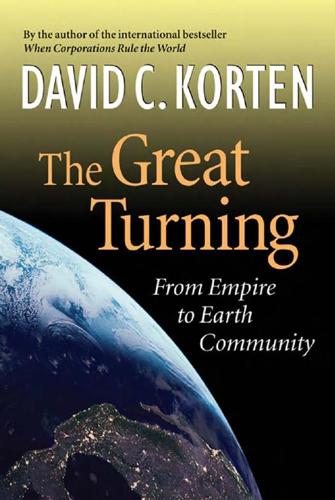
The Great Turning: From Empire to Earth Community
by
David C. Korten
Published 1 Jan 2001
By 2025, this number could exceed 1 billion as population grows and the amount and quality of cropland decline. More than a half billion people now live in regions prone to chronic drought. This number is expected to grow to as high as 3.4 billion by 2025.9 A combination of ecosystem disruption, malnutrition, a lack of access to clean water, and the rapid movement of people and goods across ecological boundaries has spread devastating new diseases such as HIV/ AIDS with unprecedented speed. Diseases like malaria and tuberculosis, once thought to be all but eradicated, are reasserting themselves in more virulent forms. Climatic disruptions and the imminent end to the ready availability of cheaply extracted oil that has made many of our 60 PART I: CHOOSING OUR FUTURE contemporary human excesses possible will accelerate the crisis and constrain our human capacity to address it.
…
Risks of physical harm perpetrated by humans against humans through war, terrorism, crime, sexual abuse, and random violence are minimal. Civil liberties are secure even for the most vulnerable. • All people have a meaningful and dignified vocation that contributes to the well-being of the larger community and fulfills their own basic needs for healthful food, clean water, clothing, shelter, transport, education, entertainment, and health care. Paid employment allows ample time for family, friends, participation in community and political life, healthful physical activity, learning, and spiritual growth. • Intellectual life and scientific inquiry are vibrant, open, and 298 PART IV: THE GREAT TURNING dedicated to the development and sharing of knowledge and life-serving technologies that address society’s priority needs. • Families are strong and stable.
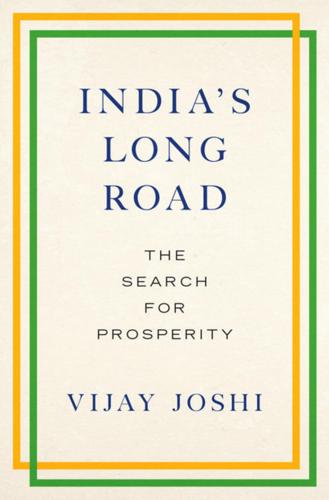
India's Long Road
by
Vijay Joshi
Published 21 Feb 2017
None of this is easy but in the absence of these radical steps, electricity promises to continue to be a drag on growth and development.26 Urban infrastructure also presents a huge challenge. At present about 30 per cent of India’s population lives in urban areas; this share will rise to 40 per cent by 2030. (In absolute terms, this will mean a huge increase of around 250 million people in the urban population in the next 15 years.) India’s urban infrastructure, especially for clean water and sewerage, is abysmal and the extra pressure on it will be massive. The required capital investment is far beyond what urban local bodies can afford. They have very limited tax capacity and there is a long tradition of fixing low user charges.27 This will have to change. States will have to devolve more revenue to cities, and cost-reflective charges will have to be levied for urban services.
…
‘TRADITIONAL PUBLIC HEALTH’ (TPH) TPH consists, firstly, of state intervention in activities that the market will not finance at all, or to an adequate extent, because they are ‘pure public goods’ (for example, drainage of swamps, eradication of pests such as rats and mosquitoes) or have very large externalities (for example, immunization, clean water, and sanitation). Secondly, TPH is also concerned with state action to encourage consumption of so-called ‘merit-goods’ (such as appropriate nutrition for children) and to discourage consumption of ‘demerit-goods’ (such as smoking). Much of TPH thus relates to preventive as distinct from curative care.
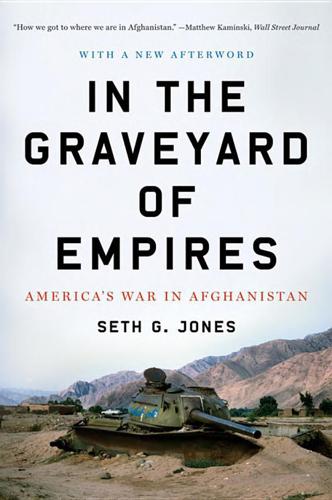
In the Graveyard of Empires: America's War in Afghanistan
by
Seth G. Jones
Published 12 Apr 2009
“Since there were no volunteers, the policy was useless.”4 In a 2004 public-opinion poll conducted by the Asia Foundation, Afghans responded that two of the biggest problems in their local areas were the lack of jobs and the lack of electricity.5 Over the course of the next two years, jobs and electricity would remain the most significant infrastructure problems, in addition to access to water.6 U.S. government polls—most of which were not released publicly—showed similar results. In one survey conducted between August 30 and September 9, 2006, by the U.S. State Department, Afghans who supported the Taliban complained that they had little access to clean water and employment.7 There was international assistance to fix these problems, but it didn’t always reach its intended targets. One study found that the primary beneficiaries of assistance were “the urban elite.”8 This triggered deep-seated frustration and resentment among the rural population. There’s no doubt that the Afghan government suffered from a number of systemic problems and had difficulty attracting and retaining skilled professionals with management and administrative experience.
…
Ambitiously, the Afghan government set a goal to increase coverage of the electricity grid in urban areas to 90 percent by 2015.11 For those rich enough to buy generators, electricity was not a problem; their needs were met by the Afghan economy’s dominant informal sector. A large portion of the electricity supply, for example, was provided by small-scale generators. “The bulk of Afghans,” reported the World Bank, however, “still do not have reliable electric power supply and clean water. Thus the situation that prevailed in the 1970s and during the long period of conflict—basic social services not reaching most of Afghanistan’s people—has not yet been fundamentally changed, with the only partial exception being primary education, which actually improved considerably after the U.S. arrived in 2001.”12 Numerous government efforts to increase electricity ground to a halt.
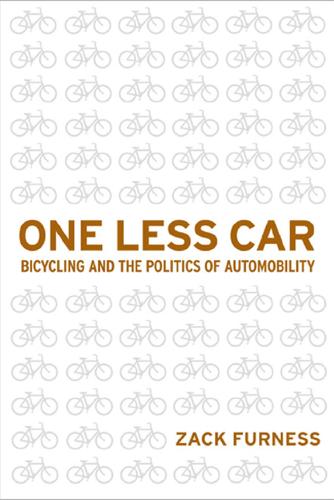
One Less Car: Bicycling and the Politics of Automobility
by
Zack Furness
and
Zachary Mooradian Furness
Published 28 Mar 2010
instead, by making bikes more affordable, they become more associated with success, and psychologically more attractive.”96 The present-day promotion of the bicycle as a pragmatic technological means to an end vision of cultural and economic development all but demonstrates the moral bankruptcy and ultimate failures of an economic system that once promised, ironically enough, the means by which one could obtain a luxury commodity such as a bicycle. Work, in other words, is now promoted as its own luxury reward in the twenty-first century: the bicycle is simply there to facilitate the process. like widespread poverty or the lack of access to schools, jobs, and clean water, the need to introduce or reintroduce bicycles to many african nations reveals the extent to which modernity and capitalism were never meant to benefit africans in the first place, though the dominant narrative produced by Western economists, politicians, and most nGOs suggests otherwise. all too often, the root cause of africa’s maladies is instead attributed to africans themselves; they are seen, Manji and O’Coill argue, for what they are not: “They are chaotic not ordered, traditional not modern, corrupt not honest, underdeveloped not developed, irrational not rational, lacking in all of those things the West presumes itself to be.”97 in addition to these characteristics, development theory also stresses the importance of combating the “culture of dependence” ostensibly cultivated by lazy and/or entitled populations who collectively expect a “free ride from a passing nGO or rich uncle,” as David peckham puts it.98 Consequently, the multifaceted project of development demands the retraining of its subjects in order to instill the right attitude and moral fitness, lest they plummet down the path blazed by americans. people’s faith in the merits of modernity and free market capitalism also requires restoration: one has to “believe in social mobility,” as Thomas Friedman preposterously asserts while defining social class as “a state of mind, not a state of income.”99 However, affirming the implicit infallibility of free market economics to countries presently suffering from free market policies is no small feat, particularly when the same modes of domestic agricultural and industrial production that buttressed the entire Western success story are perpetually eschewed in order to promote structurally adjusted economies based on the exportation of a few specific commodities and luxury goods (à la colonialism), as well as the development of a retail and service sector in which workers become entirely dependent on the importation of all goods they must sell (or service) in order to survive.
…
The prospects of creating a sustainable or viable business in virtually any postcolonial country are dependent on a multitude of tenuous factors, the least of which are the whims of international markets, the lending and trade policies of transnational bodies like the World Bank, iMF, and WTO, the price of oil, and the general economic stranglehold that multinational corporations have on both global resources and trade. Within this globalized economic context it is still possible for bicycles to make a dramatic and indeed critical difference in people’s quality of life, whether improving access to clean water and marketplaces in rural Ghana, enabling better home care for aiDS patients in namibia, encouraging rural girls to attend school in Mozambique, or facilitating coffee production for co-operative farmers in rwanda. For these and many other reasons, international bicycle donation programs as well as their supplementary educational initiatives, are invaluable.

Cities Under Siege: The New Military Urbanism
by
Stephen Graham
Published 30 Oct 2009
The daily life of cities turns into a massive struggle against darkness, cold, immobility, hunger, isolation, fear of crime and violence, and – if water-borne diseases threaten – a catastrophic and rapid degeneration in public health. The perpetual technical flux of modern cities is suspended. Improvization, repair, and the search for alternative means of keeping warm and safe, of drinking clean water, of eating, of moving about and disposing of wastes, swiftly become the overriding imperatives. All of a sudden, the normally hidden background of everyday urban life becomes palpably clear to all. Obviously, ‘tremendous lethal capabilities can be created simply by contra-functioning the everyday applications’ of a number of ordinary urban infrastructures.8 The act of using systems and technologies normally taken for granted, ignored, or viewed as banal artifacts of daily life thus becomes charged with anxiety and geopolitical imaginaries.
…
In al-Nasiriyya, Human Rights Watch researchers found that ‘in many places people had dug up water and sewage pipes outside their homes in a vain attempt to get drinking water’.73 Not surprisingly, large numbers of water-borne intestinal infections were once again reported after the war, a direct result of the targeting of electrical distribution systems. By December 2007, cholera epidemics were occurring in Baghdad, reflecting the fact that 70 per cent of Iraqis still did not have access to clean water.74 SWITCHING OFF THE OCCUPIED TERRITORIES As we saw in Chapter 7, criticisms of Israeli policies of besieging the West Bank and Gaza have concentrated mostly on civilian deaths caused by air and tank raids; on mass house demolitions and the bulldozing of settlements with massive D9 Caterpillar bulldozers75; on the drawing of extremely tight limits on Palestinian enclaves and the construction of brutal apartheid-style walls, check-points, registers, laws and databases; and on the construction of a parallel world of generously proportioned, expanding Jewish-only settlements, linked together with their own private infrastructures and cleared, free-fire ‘buffer zones’.76 Much less reported has been a systematic and continuous programme by Israeli forces which adds a new twist to the geographies and politics of contemporary siege warfare against urban civilians: the targeting and destruction of modern infrastructure systems.
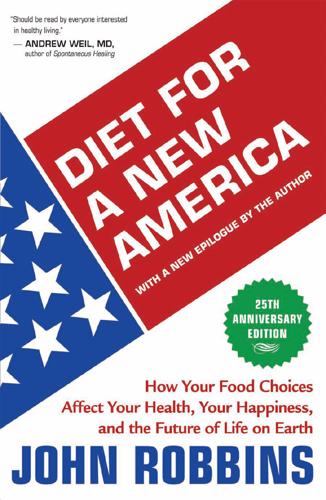
Diet for a New America
by
John Robbins
Speaking about her work, one year’s American Pork Queen, Pam Carney, explained: Well, I kind of told about myself from the perspective of being a pig…You see, we are getting a lot of questions from people now who are for animal rights and who are worried about pigs being put into small pens and farrowing crates. So, I talked about how much we pigs like the new confinement barns as opposed to living outside in the natural environment, because a herdsman can keep a close eye on us, watch for disease, give us warmth, good feed, and clean water.45 The American Pork Queen reassures us today’s pigs receive good feed and clean water. But the truth, as you might guess, is a little different. In nature, pigs live with gusto and passion, foraging in the earth for their food. Even in a barnyard setting they root around as much as they can, and their diet consists of table scraps along with the foods they can root from the earth.

The Sovereign Individual: How to Survive and Thrive During the Collapse of the Welfare State
by
James Dale Davidson
and
William Rees-Mogg
Published 3 Feb 1997
Equally, regulations that make it costly or impossible to operate a rendering plant in a certain jurisdiction may drive the rendering elsewhere without depriving the jurisdiction as a whole of income. These examples demonstrate how regulations may in rare circumstances have a positive rather than a negative market value, especially in a world with a rapidly mulitiplying number of jurisdictions. Rules that preserve high standards of public health, clean air, and clean water will be highly valued in many locales. So will other, sometimes more exotic regulations and covenants of the kind that might be imposed by real estate developers or hotels catering to certain market segments. No Customs House in Cyberspace 180 We expect the commercialization of sovereignty to rapidly lead to the devolution of many large territorial sovereignties.
…
Partly, this is a practical and pragmatic reaction to the collapse of services, including law and order, formerly provided by the state. For persons with few marketable resources, it often proves difficult to purchase access to market alternatives to failed public services. The transformation of what were formerly treated as public goods, such as education, provision of clean water, and neighborhood policing, into private goods is obviously easier to manage for those with sufficient resources to purchase high-quality private alternatives. For those wanting cash, however, the most practical alternative is often to depend upon kin, or join a mutual-aid group organized along ethnic lines, like the old ethnic Chinese "Hokkien" of Southeast Asia, or through a religious congregation.

Lonely Planet Southern Italy
by
Lonely Planet
This outfit rents a variety of motor boats, starting at around €50 per hour or from €150 per day plus fuel. It also organises boat excursions and wedding shoots. Bagni Regina GiovannaSWIMMING Sorrento lacks a decent beach, so consider heading to Bagni Regina Giovanna, a rocky beach with clear, clean water about 2km west of town, amid the ruins of the Roman Villa Pollio Felix. It’s possible to walk here (follow Via Capo), but wear good shoes as it’s a bit of a scramble. Alternatively, you can take the SITA Sud bus headed for Massa Lubrense to save your strength. Ulysse Day SpaSPA (%081 807 35 81; www.spaulysse.it; Via del Mare 22; hbaths 11am-10pm Mon, Wed & Fri, 3-10pm Tue & Thu, 11am-8pm Sat, 10am-7pm Sun, massage centre 9am-8pm Mon-Sat, 10am-7pm Sun) Ischia might be the spa capital of Campania, but Sorrento gets its oar in with the Ulysse where you can unwind in the spa (€25) or rev up in the gym (€10).
…
Follow the road for Pianoconte and look on your left as you approach a big hairpin bend about 300m beyond the turnoff for Spiaggia Valle Muria. Stretching off to the south, great cliffs plunge into the sea, while in the distance plumes of sinister smoke rise from the dark heights of neighbouring Vulcano. oSpiaggia Valle MuriaBEACH Lapped by clean waters and surrounded by sheer cliffs, this dark, pebbly beach on Lipari’s southwestern shore is a dramatically beautiful swimming and sunbathing spot. From the signposted turnoff, 3km west of Lipari town towards Pianoconte, it’s a steep 25-minute downhill walk; come prepared with water and sunscreen.

The Internet Is Not What You Think It Is: A History, a Philosophy, a Warning
by
Justin E. H. Smith
Published 22 Mar 2022
Significantly, it was in 2011 that Frank La Rue, special rapporteur for the United Nations, declared internet access a human right, since “the Internet has become a key means by which individuals can exercise their right to freedom and expression.”15 Consequently, in recent years the internet has begun to occupy a position in human life previously reserved for such familiar necessities as food, shelter, and clean water. Yet we know that there was a time—many of us can even remember a time—when there could have been no claim to such a right, while by contrast we have always needed nutrition and hydration. So again, if telecommunication is simply a natural consequence of our species-specific activity, it would seem to be so in a different way than the signaling of sperm whales is among their kind, for evidently we have not always telecommunicated.

Simply Living Well: A Guide to Creating a Natural, Low-Waste Home
by
Julia Watkins
Published 6 Apr 2020
Beneficial bugs need places to feed, hide, reproduce, and overwinter. Create borders of diverse vegetation with flowers, shrubs, and grasses. Consider building an insect hotel (see recipe) and installing it in the fall when bugs are readying for winter and hibernation. Provide a water source. Provide a reliable source of clean water, using saucers, birdbaths, fountains, or water features. Change the water often to avoid attracting mosquitos. Limit pesticide use. Choose nonchemical methods of insect control, including hand-picking pests, pruning away infestations, and using row covers. Insect Hotel If you’re a gardener and a nature enthusiast, you’ll love creating an insect hotel to welcome pollinators and other beneficial insects to your garden.
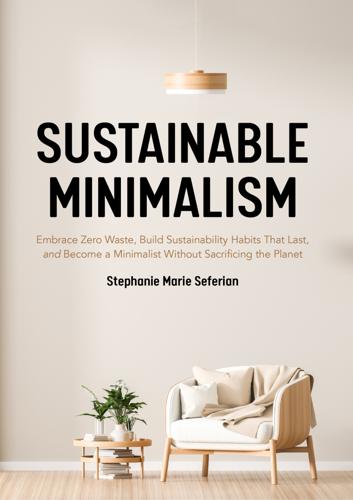
Sustainable Minimalism: Embrace Zero Waste, Build Sustainability Habits That Last, and Become a Minimalist Without Sacrificing the Planet (Green Housecleaning, Zero Waste Living)
by
Stephanie Marie Seferian
Published 19 Jan 2021
For many, the process of wardrobe decluttering is a transformative one, and a slow fashion mindset often replaces one that once bought into fast fashion. Still, clothing is a necessity, and you will find yourself needing to add to your wardrobe in the future. But purchasing new clothes creates unnecessary pollution and waste. Indeed, although accessible, clean water amounts to less than 1 percent of the world’s water supply, the manufacturing of a single cotton T-shirt demands 713 gallons.58 Instead of purchasing new items, consider investing in quality secondhand 90 percent of the time, and buy new just 10 percent of the time. Here are some ways you can sustainably add to your wardrobe.
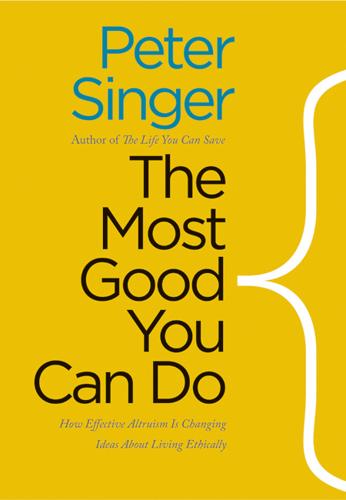
The Most Good You Can Do: How Effective Altruism Is Changing Ideas About Living Ethically
by
Peter Singer
Published 1 Jan 2015
Julia replied that her daughter will not want for anything she really needs, but she rejected the idea that her responsibility is limited to doing her best for her own child. Having her own child, she said, would bring her closer to “the Other Woman”—the mother who has to struggle to give her child clean water and enough to eat. That woman, she knew, loves her child as she loves her own.15 Meet Some More Effective Altruists In the remainder of this chapter and the one that follows I introduce you to several more effective altruists. My aim is to show that, notwithstanding the skepticism about altruism mentioned in the preface, many diverse kinds of people become effective altruists.

Why Women Have Better Sex Under Socialism: And Other Arguments for Economic Independence
by
Kristen R. Ghodsee
Published 20 Nov 2018
In a global economy buoyed by the credit-fueled consumer spending of the masses, the bubble will burst eventually. An acute crisis of overproduction and underconsumption looms on the horizon.15 The expansion of public services would support women in a second way. A wider social safety net means that women’s lower private sector wages don’t disadvantage them in terms of access to health care, clean water, child care, education, or security in old age. Rather than trying to legislate equality or coerce private companies into providing equal pay for equal work and giving women equal opportunities for promotion, women could join together to choose leaders who will lessen the social costs of gender discrimination through public policy.
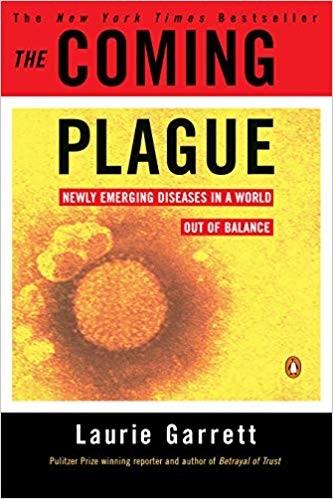
The Coming Plague: Newly Emerging Diseases in a World Out of Balance
by
Laurie Garrett
Published 31 Oct 1994
In 1901 American Army physician Walter Reed and Cuban doctor Carlos Finley figured out the link between the A. aegypti mosquito, the virus, and the importance of uncovered pools of clear water, and started a hemisphere-wide effort to eradicate the mosquito. The mosquito, they discovered, could only leave its eggs in clear, clean water, so it thrived around people, lived in human homes, and left its larvae in jugs of drinking water. The insect was also constrained by temperatures below 60°F and only thrived in humid climates over 72°F. It seemed immediately obvious, then, that the entire yellow fever problem could be greatly reduced by simply covering all clean water supplies during warm months. In 1927 a vaccine was developed and the first official global disease eradication effort began, endorsed by the governments of the America.25 The language of yellow fever efforts shifted from “eradication” to “control” and “conquest” following Fred Soper’s 1932 discovery that some monkeys harmlessly harbored the virus.26 In subsequent years, scientists discovered that several species of monkeys and apes could carry the virus, both in Africa and in South America.
…
In the case of Legionella, a new human disease had emerged in 1976, brought from ancient obscurity by the modern invention of air conditioning. At the CDC’s International Legionnaires’ Disease meeting in 1978, several particularly ominous facets of the bug were scrutinized. CDC scientists revealed that the organism could be found in tap water, shower nozzles, and other allegedly clean water sources. One tap water study showed Legionella could survive over a year inside pipe biofilms, emerging in wholly infectious form once the faucet was turned on full force. It thrived in temperatures from ice cold to steamy hot. Even distilled water samples occasionally contained small numbers of Legionella organisms.
…
Makerere University, which had been the primary medical training center for East Africa’s doctors, was looted right down to its electrical sockets and bathroom tiles. By the end of the 1970s, the nation of Uganda would be completely out of toilet paper, antibiotics, aspirin, sterilizers, cotton wool, bed linens, soap, clean water, light bulbs, suturing equipment, and surgical gowns.35 Rumors of strange disease outbreaks were rampant, but there was nobody left to investigate these claims. Such tragic events, with the resultant epidemics and health crises, were mirrored all over the world. From Pol Pot’s reign of terror in Cambodia to the Cold War-manipulated battlefields of Central America, the world’s poorest countries spent extraordinary amounts of money on domestic military operations and warfare.

Eyewitness Top 10 Los Angeles
by
Catherine Gerber
Published 29 Mar 2010
Families love the Santa Monica Pier (see p51 & p117) with its pretty historical carousel and amusement park. Fitness buffs can get their kicks from pedaling or skating down a paved path running past the restored Muscle Beach, the birthplace of the Southern California exercise craze back in the 1930s. of fine, sparkling sand is one of LA’s most popular beaches. Its clean water and mostly midsized waves are great for sports such as bodysurfing, boogieboarding, and swimming. It teems with families and hormone-crazed teenagers on sunny summer Sundays but is nearly deserted the rest of the week, making it perfect for quiet picnics and extended walks along the beach. d 30000 block d Map C3 • Along Pacific Coast Hwy of Pacific Coast Hwy, Malibu Santa Monica Beach in Santa Monica Beaches are open 7am–10pm.

50 Future Ideas You Really Need to Know
by
Richard Watson
Published 5 Nov 2013
Water recycling (purifying waste water) will soar and water infrastructure will be upgraded using the latest technology, especially to prevent leakage. Some countries will start to import water, possibly even transporting icebergs, much as they currently import oil, and some water-poor countries may start trading commodities, such as oil, for clean water. Expect to see water theft emerging as a major problem, with legal action being initiated by one country, or region, against another for water shortages created by cloud seeding—the artificial, or at least premature, creation of rain from water-laden clouds via the sprinkling of, typically, dry ice or silver iodine into clouds—or geo-engineering projects.

The Coffee Book: Anatomy of an Industry From Crop to the Last Drop
by
Gregory Dicum
and
Nina Luttinger
Published 1 Jan 1999
Early Awakenings Consciousness about the social and ecological dimensions of our consumption first emerged in the 1960s and 1970s with a series of interrelated milestones, including the publication of Rachel Carson’s Silent Spring (1962), the passage of the Clean Air Act (1970), the first Earth Day (1970), the Clean Water Act (1972), and the growth of the farmworkers’ movement and grape boycott of the 1970s. Soon after, disasters like Love Canal (1978), Three Mile Island (1979), Bhopal (1984), and Chernobyl (1986), as well as mounting evidence against dioxin (through the 1970s and 1980s), triggered a healthy public skepticism about corporate and government accountability.
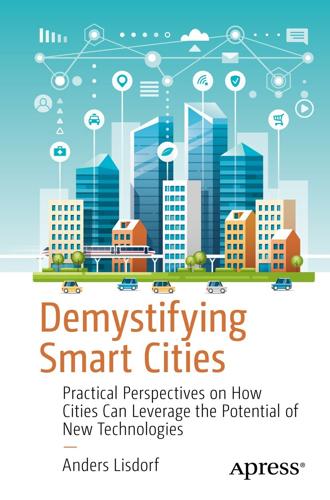
Demystifying Smart Cities
by
Anders Lisdorf
Utilities This covers the basic functions of the city without which it would simply not be possible to sustain life at city scale. The utilities are the basic metabolic system of the city, but also it is an area with one of the largest environmental impacts. Consequently, much of current smart city initiatives have focused on this area.Water – Without sufficient clean water, humans cannot sustain life. This means that any gains in efficiency or quality are particularly valuable for the city. Since water is a scarce resource, minimizing waste is also often a focus area. McKinsey estimates that water consumption can be lowered by 20–30%. This can be done with smart meters and leakage control.
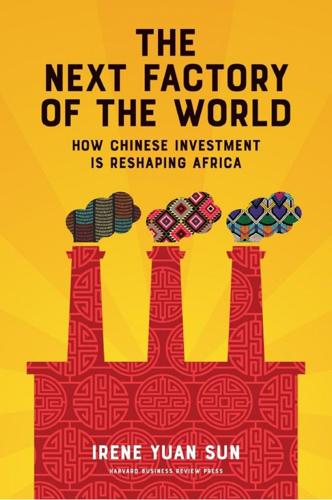
The Next Factory of the World: How Chinese Investment Is Reshaping Africa
by
Irene Yuan Sun
Published 16 Oct 2017
Seventy-nine percent of the world’s TB cases and 90 percent of its malaria cases occur in Africa.2 Africa has half of the world’s preventable deaths among children under five years old, and more than half of the world’s deaths of expectant mothers.3 Each year, 300,000 African children die of diarrhea for want of simple rehydrating salts dissolved in clean water, and 473,000 die of pneumonia for want of basic antibiotics.4 I think about the fact that behind every one of these statistics are countless Sonias, and it’s clear that Africa’s public health crisis is an unconscionable blight upon the world. That awful day, as we drove toward Sonia’s house, we began to hear the unearthly wails of mourning women long before we got to the entrance.

Logically Fallacious: The Ultimate Collection of Over 300 Logical Fallacies (Academic Edition)
by
Bo Bennett
Published 29 May 2017
This puts you in a position to back out of your claim at any time and go in a new direction without penalty, claiming that you were “right” all along. Logical Form: I believe X is a strong argument. Y is also a very strong argument. Example #1: Reporter: Mr. Congressman, where do you stand on the clean water vs. new factory issue? Congressman: Of course, I want our state to have the cleanest water possible. I can appreciate the petition against the new factory as I can also appreciate the new jobs introduced in our community as a result of the new factory. Explanation: This type of “non decision” or refusal to choose a side often eludes those looking for an answer, but getting more of a non answer in return.

Survival of the Richest: Escape Fantasies of the Tech Billionaires
by
Douglas Rushkoff
Published 7 Sep 2022
ReGen Villages, for example, is the brainchild of former game designer James Ehrlich, an entrepreneur-in-residence at Stanford and a teacher of “disaster resilience” for Singularity University. ReGen is a total solution for the creation of regenerative and resilient communities that are capable of producing their own organic food, sourcing clean water, and educating their young, all with renewable energy and in a circular economy. Ehrlich is getting some traction—at least, with fellow Singularitarians and some of the press—with his compelling renderings of people living in high-tech harmony with nature. They grow food in domes, live in solar-powered cottages nestled into the earth, eat fresh fruit in open community courtyards, and are surrounded by woods and animals.
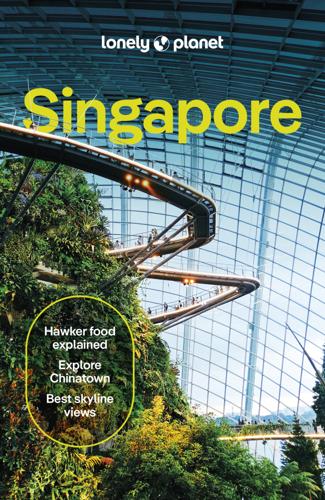
Lonely Planet Singapore
by
Lonely Planet
Published 14 May 2024
Finn stock/shutterstock © Streets took on their own identities as particular groups specialised in certain professions – the Hokkien and Teochew were commonly associated with trade and agriculture, the Cantonese and Hakka with handicrafts and construction, and the Hainanese with cooking. Life in colonial Chinatown was tough on new immigrants – the lack of clean water and proper sanitation led to sickness and death, labour was gruelling and living quarters were cramped. Many sought fleeting moments of escapism in the surrounding opium dens. Despite the district’s name, not all the original inhabitants of Chinatown were Chinese – historic Muslim mosques and Indian temples dot the neighbourhood’s streets.
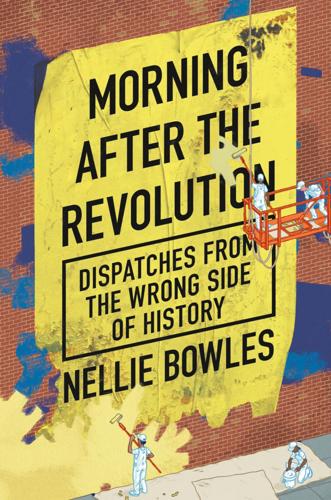
Morning After the Revolution: Dispatches From the Wrong Side of History
by
Nellie Bowles
Published 13 May 2024
—went from a fringe wild idea to the very center of American progressive politics and it went there fast. Within what felt like weeks in the hot summer of 2020, it seemed like every liberal organization, every media company, every nonprofit became an “abolish the police” lobbying group. The fight for clean water or abortion access or equal pay became a fight also for police abolition, and these could not be untwined. Other causes would become similar all-encompassing obsessions, but for a couple years the line was: environmentalism is police abolition; pro-choice begins with police abolition, etc. Police abolition was exactly what it sounds like but it was also about a revolution.
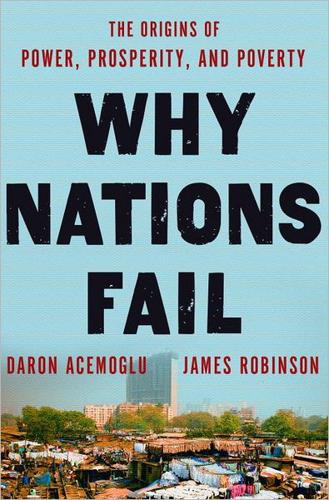
Why Nations Fail: The Origins of Power, Prosperity, and Poverty
by
Daron Acemoglu
and
James Robinson
Published 20 Mar 2012
Tropical diseases obviously cause much suffering and high rates of infant mortality in Africa, but they are not the reason Africa is poor. Disease is largely a consequence of poverty and of governments being unable or unwilling to undertake the public health measures necessary to eradicate them. England in the nineteenth century was also a very unhealthy place, but the government gradually invested in clean water, in the proper treatment of sewage and effluent, and, eventually, in an effective health service. Improved health and life expectancy were not the cause of England’s economic success but one of the fruits of its previous political and economic changes. The same is true for Nogales, Arizona. The other part of the geography hypothesis is that the tropics are poor because tropical agriculture is intrinsically unproductive.
…
The basic extractive economic institutions of the absolutist Ethiopian empire, such as gult (this page), and the feudalism created after the decline of Aksum, lasted until they were abolished after the 1974 revolution. Today Ethiopia is one of the poorest countries in the world. The income of an average Ethiopian is about one-fortieth that of an average citizen of England. Most people live in rural areas and practice subsistence agriculture. They lack clean water, electricity, and access to proper schools or health care. Life expectancy is about fifty-five years and only one-third of adults are literate. A comparison between England and Ethiopia spans world inequality. The reason Ethiopia is where it is today is that, unlike in England, in Ethiopia absolutism persisted until the recent past.

MacroWikinomics: Rebooting Business and the World
by
Don Tapscott
and
Anthony D. Williams
Published 28 Sep 2010
Partnering with IBM, the Canadian government, through its sponsorship of the World Urban Forum Secretariat, decided to take the conversation about urban sustainability issues to the streets on a global scale. The idea was to bring thousands of participants from government, business, academia, and civil society together for a seventy-two-hour facilitated online discussion where they could strategize around how to provide access to clean water and sanitation, boost environmental sustainability, and improve local governance in the world’s rapidly growing metropolitan regions. The engagement process, a digital brainstorm, was modeled after an event IBM first held in 2001, called an Innovation Jam, where IBM brought together its employees worldwide to explore solutions to global problems.
…
CEO Sam Palmisano believed so strongly in the concept that he committed up to $100 million to develop the ideas with the most social and economic potential.20 The World Urban Forum Secretariat didn’t have that kind of money to throw at urban sustainability initiatives, but through the courage and support of hundreds of organizations and individuals from around the world, the Habitat Jam broke down the barriers of language, literacy, disability, poverty, war, and the digital divide to enable over 39,000 people from 158 countries to begin a conversation that some say will change the world.21 The diversity of the 39,000 was impressive. Slum dwellers participated alongside government ministers, who participated alongside schoolchildren, who participated alongside leading academics. The conversation ranged across issues of transportation, clean water, governance, poverty, and other issues of importance to people living in cities—especially those who are poor. As perhaps one of the largest public consultation exercises ever attempted, the event proved that it is possible to reach out to thousands to discuss and deliberate about ideas that might be the source of new and more effective policies and services.
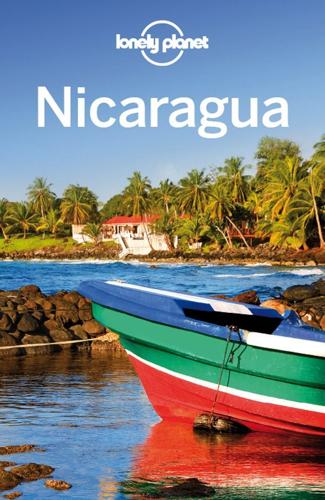
Lonely Planet Nicaragua (Travel Guide)
by
Lonely Planet
,
Alex Egerton
and
Greg Benchwick
Published 30 Jun 2013
Its twin volcanic peaks, rising up out of Lago de Nicaragua, have captured the imagination of everyone from precolonial Aztec descendents (who thought they’d found the promised land) to Mark Twain (who waxed lyrical about it in his book Travels with Mr Brown ) to the surprisingly few travelers who make it out here. The island’s fertile volcanic soil, clean waters, wide beaches, wildlife population, archaeological sites and dramatic profile are quickly propelling it up traveler tick lists. More than 1700 petroglyphs have been found on Ometepe, making this a DIY-ers fantasy island. Isla de Ometepe Top Sights 1 Reserva Charco Verde C3 Sights 2 Cascada San Ramón E5 3 Galería de Arte Carlos Vargas A3 4 Isla Grande D2 5Museos El CeiboA3 Activities, Courses & Tours 6 La Presa Ojo de Agua D3 Sleeping 7 Albergue Ecológico El Porvenir B5 8 Caballito's Mar D4 Café Campestre (see 15) 9 Casa Istiam A5 El Encanto (see 17) 10 El Zopilote Finca Ecológica B5 11 Finca Magdalena B5 12 Finca Samaria A3 13 Finca San Juan de la Isla D2 14 Hacienda Mérida D4 15 Hospedaje Así es Mi Tierra B5 16 Hospedaje Buena Vista A4 17 Hostal Espirales A5 18 Hotel Charco Verde B3 19 Hotel El Tesoro de Pirata C3 Hotel Finca Playa Venecia (see 18) 20 Hotel Finca Santo Domingo A4 21 Hotel Playa Santa Martha B3 Totoco Ecolodge (see 10) 22 Villa Paraíso A5 Eating 23 Café Isabel B5 24Natural Restaurant VegetarianoA4 Activities Many of the island’s tourist attractions are hard to find or even a bit dangerous – take that active volcano, for example.
…
The first stop is the quiet farming town of San José de Remates , an hour north of the turnoff at Teustepe on the Boaco–Managua road. San José has relatively easy access to Reserva Natural Cerro Cumaica-Cerro Alegre, and it flaunts it through a municipal tourism program launched to help preserve its own clean water supply. Several years ago, a Boaco-based cattle-ranching operation had polluted the watershed to the point that municipal ground water was threatened. The townspeople mobilized, convinced the rancher to grow sustainable organic coffee instead, and reforested much of the property themselves. The land is now protected as a municipal park, Reserva Hídrica Municipal La Chorrera , adjacent to the national reserve.
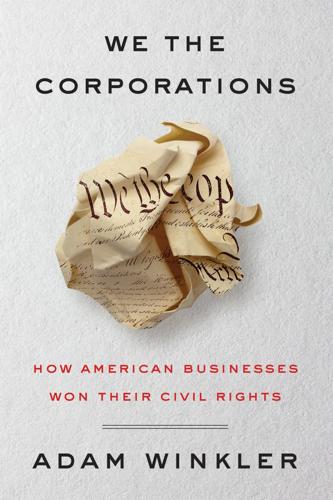
We the Corporations: How American Businesses Won Their Civil Rights
by
Adam Winkler
Published 27 Feb 2018
Tobacco regulation was just one small swell in a tidal wave of populist reforms enacted in the 1960s and early 1970s that curtailed traditional business practices in the interests of consumers, workers, and the environment. In a remarkably productive six-year stretch, Congress passed the Clean Air Act, the Clean Water Act, the National Environmental Policy Act, and the Consumer Product Safety Act, along with new regulations establishing safety standards for automobiles, prohibiting dangerous chemicals in children’s products, and strengthening food safety. The laws reflected Americans’ loss of faith in industry.
…
Federal Election Commission, xvi, xvii, xviii, xx, xxi, xxii, 5, 36, 37, 62, 68, 172, 190, 192, 200, 219, 222, 225, 226, 228, 234, 255, 300, 309, 323–29, 328, 336–38, 337, 340–43, 342, 346–51, 353–56, 358–62, 363, 364–77, 371, 379–85, 390, 395, 403 City of London, 45 civil disobedience, 36, 41, 119 civil liberties, 231, 238, 252–53, 256 Civil Rights Act (1875), 129 Civil Rights Act (1965), 129, 327 civil rights movement, xv, xvi, xvii, xviii, xxi, xxii, xxiii, xxiv, 41, 63–64, 68, 73, 108–10, 117, 119, 129, 132, 135, 151, 158–59, 231, 246, 256–78, 266, 281, 284, 289, 327, 340–41, 358, 359, 395 “Civil Rights of Corporations,” 118–19, 118, 120 civil service reform, 197–98, 219 Civil War, US, xiii, xxiii, 14, 106, 109, 110, 113, 117, 121, 123, 125–26, 132, 134, 141, 197, 223 Clark, Robert Charles, 51 class action lawsuits, 322 Clay, Henry, 36 Clean Air Act (1963), 280 Clean Water Act (1972), 280 Cleopatra (film), 330 Cleveland, Grover, 217 climate change, 45 Clinton, Bill, 327, 343, 346 Clinton, Hillary, 327–29, 334, 337–38, 341–43, 342, 351–54, 355, 362, 370, 373–74 coffee, 29 collective bargaining, xv, 330 Collier’s, 205, 206 Collins, Charles Wallace, 157–59, 160 Colorado, 320–21, 375 Columbia University, 232–33, 238 Commentaries on the Law of England (Blackstone), 46–52, 56, 63, 78, 164, 188, 245 Commercial Club, 211–12, 214, 217 commercial interests, 40, 69, 90 “commercial speech,” 292–93, 298–300, 359, 393–94, 402 Common Cause, 375 common seals, 50 Communists, 286, 330 company towns, 268–72, 402 Compromise of 1850, 109 Concept of the Corporation (Drucker), 270 “conclusive presumption,” 314–15 Conestoga Wood Specialties, 379–81 Confederacy, 124, 131 conflicts of interest, 142, 193–94, 197, 346–47 Congress, US: amendments passed by, xiii, 123–25, 158 banking regulation by, 38, 40 campaign finance reform in, 219, 333–34, 354–55, 361, 369, 370–71, 375–76 constitutional limitations on, 244 corporate regulation by, 39, 43, 64, 68, 69, 70, 92–93, 210, 217–19, 261, 276, 290, 306, 332, 350, 362, 368–69, 383–84 members of, 59, 331 representation in, 131 taxation measures of, 223 see also House of Representatives, US; Senate, US congressional districts, 308–10 Congressional Globe, 135 Congressional Leadership Fund, 372 Congress of Industrial Organizations (CIO), 330–31, 332 Political Action Committee of (CIO-PAC), 332 Conkling, Roscoe, xii, xiii–xv, xvi, xvii, xxiii, 113–15, 116, 117, 118, 119–24, 128, 129–36, 131, 142–44, 147, 156, 160, 267, 339, 392, 400–401 Connecticut, 19, 24, 28, 124, 266 Connecticut General Life Insurance Company v.

A Clearing in the Distance: Frederick Law Olmsted and America in the 19th Century
by
Witold Rybczynski
Published 1 Jan 1999
By 1830, Boston had a population of more than one hundred thousand, and New York twice that. Urbanization was a mixed blessing. Cities were dangerously unhealthy, with no effective trash removal. New York was notorious for the pigs that freely wandered the streets in search of slops. A lack of clean water and poor sanitation brought on regular outbreaks of yellow fever. The first American case of cholera was reported in New York in June 1832, and the disease quickly assumed epidemic proportions, ravaging the country as far south as New Orleans. Even Hartford was affected. There were advantages to being small, however.
…
The nearest point having the slightest natural attractions is one about 9 miles straight back—West. It is a river (Aux Plaines) or creek 200 ft wide, flowing slowly on limestone bottom, banks generally sandy & somewhat elevated above the prairie level & about 10 ft above low water with sandy slopes & under water a little limestone debris. As a river not very attractive, but clean water 2 or 3 ft deep, banks & slopes rather ruggard [sic] & forlorn in minor detail but bearing tolerable trees—some very nice elms but generally oaks mostly dwarf. The sandy, tree-bearing land extends back irregularly, so that there is a good deal of rough grove land—very beautiful in contrast with the prairie and attractive. 1600 acres of land including a fair amount of this grove but yet mainly rich flat prairie have been secured, & the proprietors are now secretly securing land in a strip all the way to Chicago—for a continuous street approach—park-way.
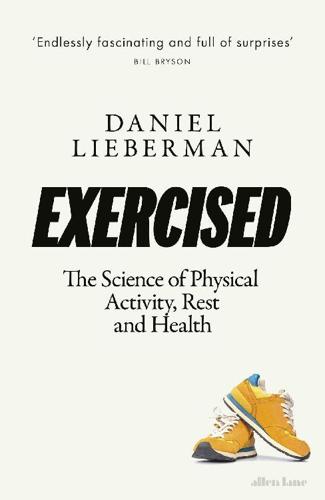
Exercised: The Science of Physical Activity, Rest and Health
by
Daniel Lieberman
Published 2 Sep 2020
That instinct to conserve calories points to another key difference between walking today and in the past: how much we carry things like babies, food, fuel, and water. Beasts of Burden Of all our necessities, water is one of the most vital. But if you are like me, you rarely think about how you get it. When I want water, I find a faucet, which I effortlessly turn and, presto, out comes clean water. Our distant ancestors would have considered this magical. For millions of years, people who weren’t camped beside a lake, stream, or spring had to lug water long distances every day. Even during the early Industrial Revolution, people in cities and towns fetched water daily from communal pumps.
…
Hunter-gatherers live in small groups at low population densities and in temporary camps with no farm animals, but the development of agriculture and then industrialization enabled people to live permanently in villages, towns, and cities at extremely high population densities, often cheek by jowl with farm animals and other species like rats and mice. To make matters worse, sewers and clean water supplies were not constructed in most towns and cities until relatively recently, and public sanitation is still inadequate in many parts of the world. Contagious pathogens flourish in crowded, unhygienic conditions, and when they jump to humans from other species, they are especially dangerous because no one’s immune system has encountered them before.

Lonely Planet Sri Lanka
by
Lonely Planet
The Sri Lankan military claims it has released over 28,000 hectares to its owners (usually small-scale farmers), but it refuses to say how much remains under its control. Meanwhile, returning families are demanding that money spent on the roads and mobile-phone towers extend to electricity and clean water for their reclaimed lands. Many are expressing growing discontent with President Maithripala Sirisena, whom they helped elect in 2015 with the hope they’d get a new start in life. Investigations over human rights abuses during the last years of the war continue to dog Sri Lanka. Although the current government has been somewhat supportive of the concept, no official or independent investigation has begun and international groups and governments are becoming increasingly impatient.
…
Treatment involves keeping the skin dry, avoiding chafing and using an antifungal cream such as clotrimazole or Lamisil. The second, Tinea versicolor, causes light-coloured patches, most commonly on the back, chest and shoulders. Consult a doctor. Cuts and scratches These become easily infected in humid climates. Immediately wash all wounds in clean water and apply antiseptic. If you develop signs of infection (increasing pain and redness), see a doctor. DIVING & SURFING Divers and surfers should seek specialised advice before they travel to ensure their medical kit contains treatment for coral cuts and tropical ear infections. Divers should ensure their insurance covers them for decompression illness – get specialised dive insurance through an organisation such as Divers Alert Network (www.danasiapacific.org).

An Unexpected Light: Travels in Afghanistan
by
Jason Elliot
Published 1 Aug 2011
‘You can’t wash them out; they hide in the seams and the only way to kill them is to iron the clothes.’ He spoke in a quiet voice and I was impressed by his gentle manner and considered answers. Even to his gestures there was a cat-like softness. He emptied the water into a second basin and rinsed off his hands in clean water without spilling a drop. He squeezed the excess from his fingers as if it were gold dust, and I knew then that he had spent time in prison. Briefly he talked about the old times; he had been at Kabul university when the communists arrested him. I asked him why. ‘They didn’t need a reason,’ he said without bitterness.
…
Back amid the tranquillity of English life he would hear a door slam and roll at lightning speed from his bed away from the window, counting the seconds … (‘It’s just the postman, darling…’) and would stop in garages to ask if the price of diesel was up or down, if the road to London was safe, whether it was clear of mines, and how many checkpoints there were between Golders Green and Hampstead; whether the basement was adequately supplied in case of heavy attack; whether the bathtub was full of clean water – and we pictured the expressions at the supermarket checkout as he tried to bargain over the final price of his shopping. ‘That’s my very last offer,’ Tim called out in mockery of himself, ‘I’ll give you ten quid for the lot. And no bakhsheesh!’ By now our ribs were aching. ‘And don’t forget,’ said someone amid the guffaws, ‘if you see a foreigner on the street—’ we were quite raucous by now, ‘to ask him to COME HOME FOR A MEAL AND MEET YOUR FAMILY!’
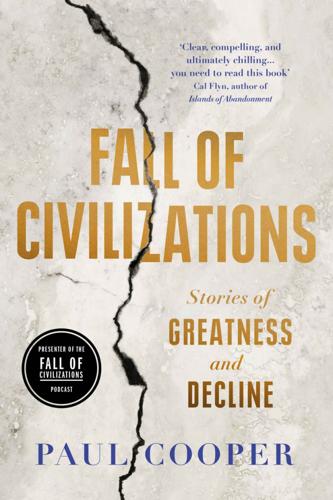
Fall of Civilizations: Stories of Greatness and Decline
by
Paul Cooper
Published 31 Mar 2024
‘This period of reduced rainfall co-occurred with expanded Tikal populations when they were most reliant on water reserves.’10 The Maya closely associated the legitimacy of their rulers with the ability to provide clean drinking water. One Mayan symbol for royalty found carved on stone stelae and monuments was the waterlily — a flowering plant that can only flourish in clean water that is not too acidic and is not overgrown with algae. Healthy flowering waterlilies were a sign that everything in the city was going well, and the king was providing clean water for his people. But when the waterlilies began to die in Tikal’s reservoirs, it would have been a frightening sign that would critically damage the legitimacy of the royal house. One site that has been particularly well-studied in the context of the Mayan collapse is the city of Copán, in the uplands of what is now western Honduras.

Let My People Go Surfing
by
Yvon Chouinard
Published 20 Jun 2006
Each dye house takes in water and then pours it back into the river after using it, so by the time the river reaches the last dye house downstream, it’s all black and polluted. This last dye house had to install expensive German equipment to clean the water before it could use it, but it also decided to run the water through the cleaners again before putting it back into the river. This dye house, the one that discharges clean water, is the one that we chose to do our dying. Polyvinyl chloride (PVC) is a toxic, carcinogenic plastic used everywhere in our society. It’s in the coating on durable vinyl luggage, and it’s a plasticizer for printing on T-shirts. We spent years trying to eliminate its use throughout the company and have found a way to take it out of all of our products, the sole exception being the foam on the Lotus Designs life jackets and some print on T-shirts, but we are still actively working on that.
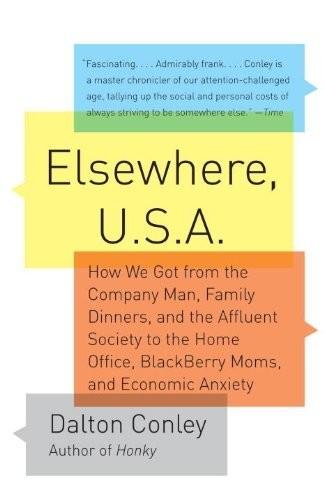
Elsewhere, U.S.A: How We Got From the Company Man, Family Dinners, and the Affluent Society to the Home Office, BlackBerry Moms,and Economic Anxiety
by
Dalton Conley
Published 27 Dec 2008
Or that it presents perhaps the most tragic case of privatization when water bottle vending machines are allowed into public parks and schools and the existing water fountains are left unrepaired. Or that for one tenth of the money Americans spend on bottled water in a single year while good, clean FREE water flows all around them, they could solve the problem for the billion plus poor people of the world who truly don’t have access to clean water, making water scarcity and insufficient sanitation the number one cause of death for children under five in the world.8 Or that there exist more health monitoring and safeguards for public water sources than there are for private bottlers. The point is that, like the McDonald’s tray bussing, we never have time to stop and think how we got here and what the alternatives are (or might have been?).

Economic Gangsters: Corruption, Violence, and the Poverty of Nations
by
Raymond Fisman
and
Edward Miguel
Published 14 Apr 2008
Ted would like to thank his colleagues in the Berkeley Economics Department for believing in the research; friends at Princeton University’s Center for Health and Wellbeing, where some of the research was written during 2002–2003; and Stanford University’s Center for International Development, where the book finally came together in 2007. Finally, Ted could never have written this book without the love of wife Ali, to whom he dedicates this book, or without the support of his parents Krystyna and Eduardo, or without the example of his uncle Adolfo Cutinella in Montevideo, who has devoted his life to bringing clean water to people everywhere. 213 Notes ½ Chapter 1: Fighting for Economic Development 1. Ngũgĩ wa Thiong’o (1967). A Grain of Wheat (London: Heinemann), 1967. 2. Lynne Duke, “Kenyan novelist Ngugi wa Thiong’o writes truth to power, speaking a language it can understand. Trouble is, sometimes power answers back.”
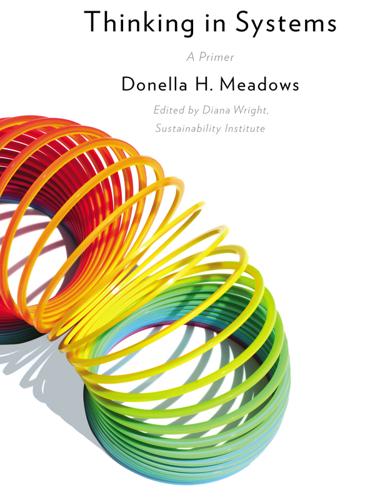
Thinking in Systems: A Primer
by
Meadows. Donella
and
Diana Wright
Published 3 Dec 2008
Economics evolved in a time when labor and capital were the most common limiting factors to production. Therefore, most economic production functions keep track only of these two factors (and sometimes technology). As the economy grows relative to the ecosystem, however, and the limiting factors shift to clean water, clean air, dump space, and acceptable forms of energy and raw materials, the traditional focus on only capital and labor becomes increasingly unhelpful. One of the classic models taught to systems students at MIT is Jay Forrester’s corporate-growth model. It starts with a successful young company, growing rapidly.
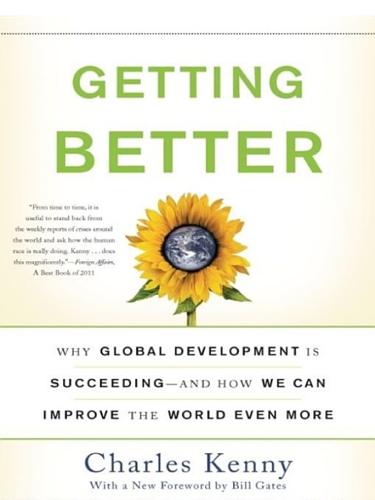
Getting Better: Why Global Development Is Succeeding--And How We Can Improve the World Even More
by
Charles Kenny
Published 31 Jan 2011
It was not a significant cause, not strongly related or negatively related to another sixty-six measures covering life expectancy and health, quality of government, political instability, education, transport and communication, and environmental quality. Again, while rich countries have more doctors and nurses per capita, more access to clean water, more education, fewer war deaths, better human rights, and the like, growth of income over the last thirty years is not strongly related to the speed of improvement in any of these indicators of quality of life. At the same time, countries that grow faster do see more manslaughter and carbon dioxide emissions.20 This weak link between improvements in quality of life and income growth may help to account for one more oft-noted weak relationship—that between GDP per capita growth and “subjective happiness.”
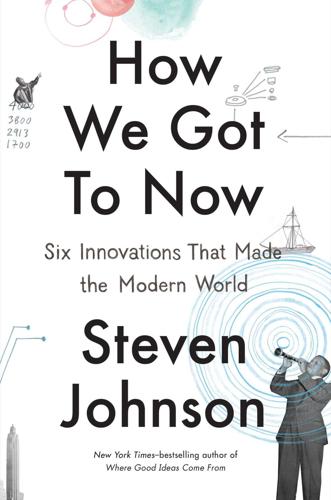
How We Got to Now: Six Innovations That Made the Modern World
by
Steven Johnson
Published 28 Sep 2014
Memorably called the “Reinvent the Toilet Challenge,” the competition solicited designs for toilets that do not require a sewer connection or electricity and cost less than five cents per user per day. The winning entry was a toilet system from Caltech that uses photovoltaic cells to power an electrochemical reactor that treats human waste, producing clean water for flushing or irrigation and hydrogen that can be stored in fuel cells. The system is entirely self-contained; it has no need for an electrical grid, a sewer line, or a treatment facility. The only input the toilet requires, beyond sunlight and human waste, is simple table salt, which is oxidized to make chlorine to disinfect the water.

Grand Central: How a Train Station Transformed America
by
Sam Roberts
Published 22 Jan 2013
If New York still could not afford to build grand new projects, it could at least muster the will to salvage its Gilded Age gems. Year later in the New Yorker, Tony Hiss explained it another way: While many of the links that connect places and experiences and health have yet to be traced, some people have started treating their own experiences of places in a mid-19th century-clean-water fashion, by taking action to protect experiences that are important to them—for example, fighting the demolition of places like Grand Central Terminal… The people involved in this work speak, often, not just of architectural beauty but of the character of a place, or its essential spirit, or the quality of life there, or of its livability, genius, flavor, feeling, ambience, essence, resonance, presence, aura, harmony, grace, charm or seemliness.

Fred Dibnah's Age of Steam
by
David Hall
and
Fred Dibnah
Published 1 Jan 2003
A rapidly growing population together with the development of new industries and the expansion of older ones produced a rapidly increasing demand for water for domestic and industrial requirements. This increased demand for water, combined with an awareness that a plentiful supply of pure water was essential to the health of the people, led to parliamentary legislation for the supply of water. As well as getting clean water into the cities, there was also the problem of removing waste. Yet again, steam power was the key, providing the power that brought the fresh water in and took the sewage out. During the Victorian age things were built bigger than ever before and a perfect symbol of the time was London’s Tower Bridge: a massive feat of engineering.
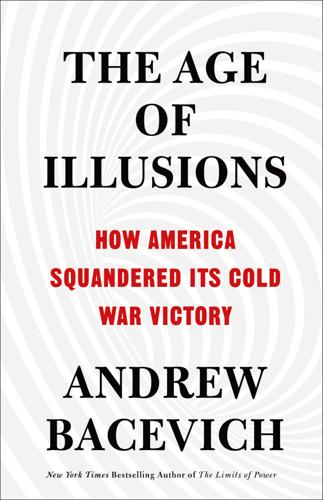
The Age of Illusions: How America Squandered Its Cold War Victory
by
Andrew J. Bacevich
Published 7 Jan 2020
-led march toward an open and integrated world did not form part of his agenda. And in the tradition of Ronald Reagan, he vowed to rebuild a military establishment that a Democratic administration had purportedly kept on half rations and treated with disrespect. Bush the outdoorsman appreciated clean air, clean water, and wide-open spaces. But on matters related to the environment, he was a traditionalist and therefore a climate-change skeptic. The devastation caused by Hurricane Katrina, to which his administration responded with unmitigated incompetence, did not substantially alter his views. Yet his was not a do-nothing presidency.
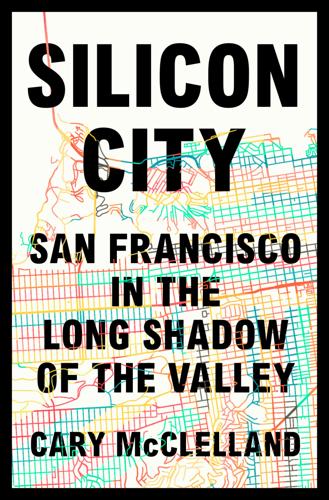
Silicon City: San Francisco in the Long Shadow of the Valley
by
Cary McClelland
Published 8 Oct 2018
Technology in and of itself is going to be a critical part of the movement. Twitter itself has been a critical part of bringing Black Lives Matter to the forefront. That was in spite of what Twitter thought it was doing! This is the place where stuff is scalable, where we will start to build apps that are about access to clean water and not delivering food to my doorstep. This is the moment when we can merge the amazingness of Silicon Valley technology and the Bay Area’s roots in protest politics and social justice. If we can merge the two worlds, we stand a chance. CHARLES CARTER (CONT’D) Sitting on his porch, he fell silent.
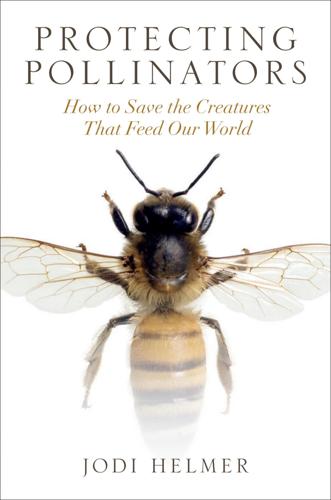
Protecting Pollinators
by
Jodi Helmer
Published 15 Nov 2019
The more diversity of colors, shapes, and scents in your garden, the more pollinators you’ll attract. Embrace organic pest control. Organic methods of pest control range from beneficial insects to products proven to have minimal impact on pollinators. For minor infestations, consider removing pests by hand. Provide clean water. Pollinating your favorite foods and flowers is hard work. When pollinators work up a thirst, make sure they have a place to get a cool drink of water. A shallow dish or a birdbath are both great options. Place a half-submerged stone in the water to give insect pollinators a place to perch so they don’t drown.

Minimal: How to Simplify Your Life and Live Sustainably
by
Madeleine Olivia
Published 9 Jan 2020
Waste and the environment The fashion industry is shockingly damaging to the environment. High levels of water and toxic pesticides are used in the process of growing materials like cotton, and the toxic dyes that make our clothes the latest fashionable colours are the second largest polluter of clean water globally, after agriculture.11 The synthetic fibres in our clothes are carbon intensive as they require oil to be made, and take hundreds, if not thousands, of years to biodegrade. Those tiny microfibres often end up in the ocean when we wash the clothes in our washing machine. The global fashion industry is one of the leading contributors to climate change, producing 1.2 billion tonnes of carbon emissions in 2015.12 Then there’s the waste.

I Shall Not Hate
by
Izzeldin Abuelaish
Published 15 Jan 2010
But Palestinians can’t forget the fact that Israel has plenty of room to bring Russians, Argentinians, Ethiopians and others of the Diaspora to the Promised Land. Room is surely not the issue. Increasingly, the international community is examining the deplorable situation for Palestinians. On October 27, 2009, Amnesty International launched an in-depth report on the lack of access to adequate, safe and clean water for the Palestinian population of the Occupied Palestinian Territories. The 112-page report looked at how Israeli water policies have resulted in violations of the right to an adequate standard of living for the Palestinian population, including the rights to water, food, health, work and adequate housing.

The Quantum Curators and the Fabergé Egg: A Fast Paced Portal Adventure
by
Eva St. John
Published 23 May 2020
Now the Q Field opened onto a large empty room with the technicians on overhead gantries. As soon as we stepped into the corridor I breathed a sigh of relief. I loved the warm, dry Alexandrian climate and I couldn't wait to get outside and bathe in the warm air, maybe even take a quick swim in the Mareotis. Proper clean water. In the meantime, we discussed how we would approach the report. ‘Which bit do you think we'll get bollocked the most for? Miscalculating the weight of the sword or not packing proper scuba gear?’ Clio thought about it. ‘It's going to be the weight thing. The lack of full scuba gear didn't actually impact on the mission, and as it turned out we were able to successfully weave into one of the established Arthurian myths.’

Chasing Slow: Courage to Journey Off the Beaten Path
by
Erin Loechner
Published 10 Jan 2017
Our backpacks are weighted by bottled water and phones, and we plop down to learn of the simple pleasures in life. Pleasures is a stretch, perhaps. I will not pretend to know the hardships this country faces; I am but a tourist. I do not understand what it is like to live in a place where a drink of clean water is not readily available, where education is not accessible, where my basic needs are either not met or fought for with every ounce of my being. Where I live, we are after silver spoons. Here, there is no soup to slurp. And so pleasure is perhaps the wrong word. But simple is the right word, and there is something about the way the two sound together that best describes what I am getting at.
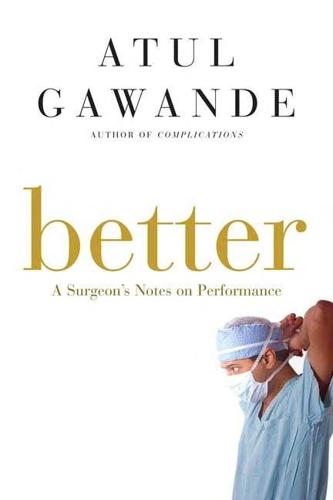
Better: A Surgeon's Notes on Performance
by
Atul Gawande
Published 2 Apr 2007
So far, few were refusing the drops, and that was good enough, he told me later. A single nasty rumor could destroy the whole operation. ONE DIFFICULT QUESTION came up repeatedly--from local doctors, from villagers, from workers trudging house to house. The question was: Why? Why this huge polio campaign when what we need is--fill in the blank here--clean water (diarrheal illness kills 500,000 Indian children per year), better nutrition (half of children under three have stunted growth), working septic systems (which would help prevent polio as well as other diseases), irrigation (so a single rainless season would not impoverish farming families)? We saw neighborhoods that had had outbreaks of malaria, tuberculosis, cholera.
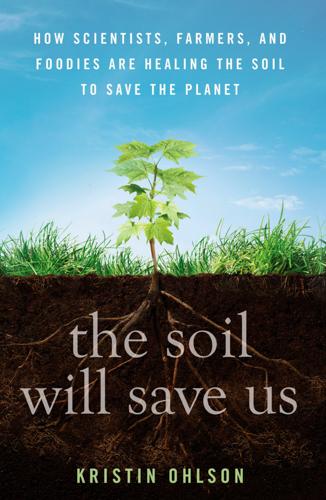
The Soil Will Save Us
by
Kristin Ohlson
Published 14 Oct 2014
“There is clearly the need for some additional education in this area.” Still, when it comes to work on the ground—on farms, on ranches, in wilderness areas and parks—the prescription for climate change mitigation is pretty much identical to the prescription for more productive working lands, clean water, better air quality, bountiful wildlife habitat, and so on. So many environmental organizations, from Defenders of Wildlife to the Environmental Defense Fund to Greenpeace, are now working with agriculturalists to build healthy, carbon-rich soils. They just don’t talk about global warming, which has become like Voldemort in some circles—“He Who Must Not Be Named.”
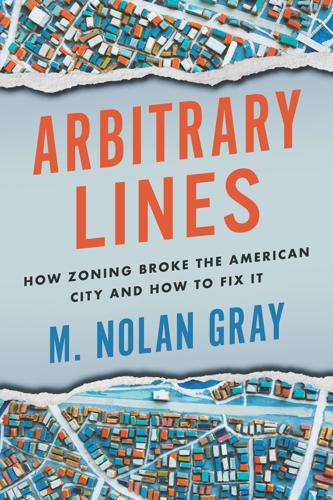
Arbitrary Lines: How Zoning Broke the American City and How to Fix It
by
M. Nolan Gray
Published 20 Jun 2022
The Clean Air Act deals with emissions, the Endangered Species Act aims to protect certain habitats, the Superfund program deals with contaminated land, and so on and so forth. Each of these laws, and many more like them, guide development and restrict land use in ways you might not expect. Beyond protecting rivers and streams, for example, the Clean Water Act also heavily regulates the development of wetlands. These laws often work in close conjunction with state governments. The Coastal Zone Management Act, for example, authorizes states to develop special land-use regulations for coastal areas. Other environmental regulations, such as those associated with stormwater and air quality management, are administered by state governments.

Jaws
by
Sandra Kahn,Paul R. Ehrlich
Published 15 Jan 2018
Having bags under your eyes or falling asleep during the daytime would have been considered a complete abnormality in a preindustrial society. Not so today. Are our lives worse because artificial lighting allows us to work much longer into the night, with potential physical and mental repercussions? Was it better back in the Stone Age when we breathed clean air, drank clean water, exercised regularly, but died at an average age of 40? Human evolution has had an insufficient amount of time to adjust genetically to the dramatically changed environment in which we operate. Is it ever likely to, since most of the issues raised are ones that seem to affect people over reproductive age, especially among women?
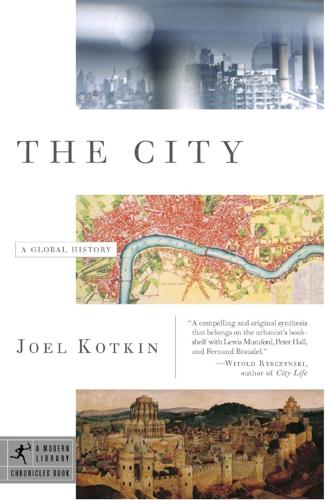
The City: A Global History
by
Joel Kotkin
Published 1 Jan 2005
But in reality, most of these cities have remained mired in underdevelopment, their fates largely subordinate to decisions made by corporations in the United States, Europe, or increasingly East Asia.29 Without reliable economic engines to power their growth, such urban regions often lack the wherewithal to maintain, much less expand, their most basic infrastructure. Throughout the developing world, as much as 30 to 50 percent of their garbage goes uncollected, and clean water is often in short supply. Air pollution has become more lethal than in the most congested cities of Europe or North America. THE RISE OF SQUATTER CITIES In the early twenty-first century, at least 600 million urbanites in developing countries survive in squatter settlements—called variously barriadas, bidonvilles, katchi adabis, favelas, and shantytowns.

Thank You for Being Late: An Optimist's Guide to Thriving in the Age of Accelerations
by
Thomas L. Friedman
Published 22 Nov 2016
The economist Robert Gordon has made a compelling case in his book The Rise and Fall of American Growth: The U.S. Standard of Living Since the Civil War that the days of steadily rising growth are probably behind us. He believes all the big gains were made in the “special century” between 1870 and 1970—with the likes of automobiles, radio, television, indoor plumbing, electrification, vaccines, clean water, air travel, central heating, women’s empowerment, and air-conditioning and antibiotics. Gordon is skeptical that today’s new technologies will ever produce another leap forward in productivity comparable to that special century. But MIT’s Erik Brynjolfsson has countered Gordon’s pessimism with an argument I find even more compelling.
…
This has left that region barren, weak and unhealthy for all its inhabitants. I would argue the same thing happened to the Republican Party in America. The G.O.P. used to be an incredibly rich polyculture. It gave us ideas as diverse as our national parks (under Theodore Roosevelt), the Environmental Protection Agency and Clean Air and Clean Water Acts (under Richard Nixon), radical nuclear arms control and the Montreal Protocol to close the ozone hole (under Ronald Reagan), cap-and-trade to curb acid rain (under George H. W. Bush), and market-based health care reform (under Mitt Romney when he was governor of Massachusetts). And for decades the party itself was a pluralistic amalgam of northern liberal Republicans and southern and western conservatives.
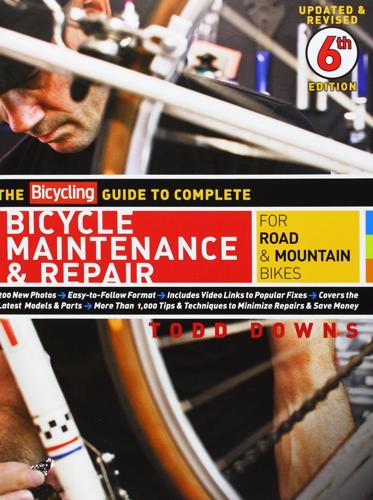
The Bicycling Guide to Complete Bicycle Maintenance and Repair: For Road and Mountain Bikes
by
Todd Downs
Published 16 Mar 2005
Make sure you're wearing rubber gloves that won't be attacked by the solvent you're using, and pour some into the pan with the chain. Start with a stiff-bristled brush to knock off the heavy stuff that's caked onto your chain, then move on to a softer brush—I like to use a natural-bristle paintbrush—to clear away any remaining grit. Remove the chain from the pan and give it a quick rinse with some clean water, then dry it off with a rag. Let it stand to allow any remaining solvent to evaporate. While you're waiting, pour the dirty solvent into a sealed container for recycling. A friendly auto repair shop will probably take your used solvent and recycle it properly for minimal or maybe even no cost. With that out of the way, reinstall the chain on your bike and then give it a dose of your favorite chain lubricant.
…
With that out of the way, reinstall the chain on your bike and then give it a dose of your favorite chain lubricant. A word about solvents. Green degreasers (such as Simple Green, among others) may contain surfactants—and some surfactants can attack the surface of the chain if left on for too long. With this in mind, it's a good idea to always finish up cleaning with solvents by rinsing the chain with clean water before wiping it dry. So long as you don't let the chain hang dry for too long, this little bit of water won't be enough to encourage corrosion. Just because the solvent you use is green, don't automatically assume that it's biodegradable. And don't automatically assume that using a biodegradable solvent means you can just pour it down the drain.
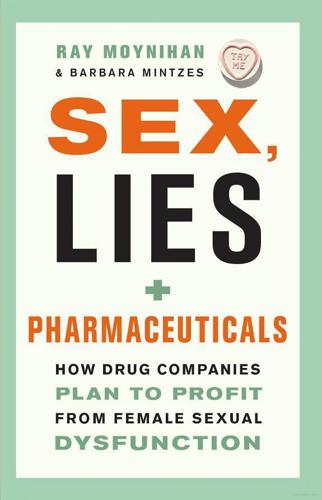
Sex, Lies, and Pharmaceuticals: How Drug Companies Plan to Profit From Female Sexual Dysfunction
by
Ray Moynihan
and
Barbara Mintzes
Published 1 Oct 2010
It would prove to be an historic gathering. The quality of the light is one of the things that strike you first about Cape Cod in Massachusetts, in the northeast corner of the United States. It’s as if you can see things more clearly from there. The wildness of the beaches, the sensuality of the sunken meadows and the clean waters of the pristine ponds are a world away from the hustle and bustle of busy Boston and metropolitan America, a couple of hours up the highway. The Cape’s beauty has long attracted artists, travellers and holidaymakers, and in the spring of 1997 it brought together a very important group of doctors, sex researchers and drug company officials.
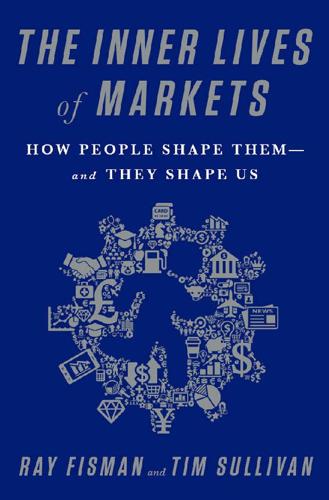
The Inner Lives of Markets: How People Shape Them—And They Shape Us
by
Tim Sullivan
Published 6 Jun 2016
In his memoirs he recalls saving himself and others in the docket by telling the camp commander, “Men, don’t try to fool the Japanese; they are very smart. Do what they say and you will live to see your families again. Do what I did, and you will die here in Japan.” The commander, his “chest puffed out to its fullest . . . impressed us all as being one very happy man.” Tenney and the rest were sent to the guardhouse with clean water and a full meal each day for ten days. Whoever said flattery will get you nowhere? Tenney survived the camps, as well as the Bataan Death March, and went on to apply his trading instincts as a finance professor at Arizona State University. Broadly speaking, a market is just a technology, a mechanism where participants have the chance to directly affect resource allocation through an expression of their preferences—a way for deciding how goods are distributed based on which ones people want and how badly they want them.
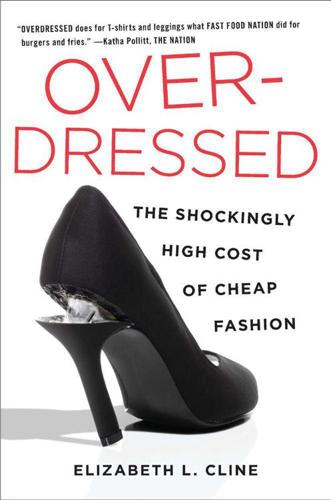
Overdressed: The Shockingly High Cost of Cheap Fashion
by
Elizabeth L. Cline
Published 13 Jun 2012
Fair Trade buyers must also pay a “premium” of up to 10 percent of the cost of each garment produced. The factory workers and managers cooperatively run a community fund created by their Fair Trade premiums, which they can choose to either invest in bonus checks or in such community development projects as education or clean water. The first Fair Trade USA–certified label was sewn into a shirt in late 2010. So far, a limited number of socially conscious brands have stepped up for certification, such as Maggie’s Organics and HAE Now, which are both basics companies. Project Runway’s Korto Momolu has produced a line of certified graphic-print T-shirts as well.
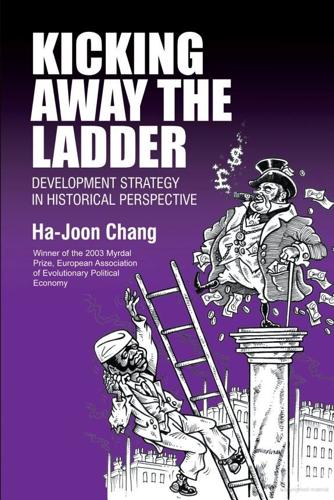
Kicking Awaythe Ladder
by
Ha-Joon Chang
Published 4 Sep 2000
To turn to other instances, De Soto documents how the recognition of squatter rights in the violation of the rights of existing property owners was crucial in developing the American West. Upham cites the famous Sanderson case in 1868, where the Pennsylvania Supreme Court overrode the existing right of landowners to claim access to clean water in favour of the coal industry, which was one of the state's key industries at the time.49 Land reform in Japan, Korea and Taiwan after the Second World War violated the existing property rights of the landlords but contributed to the subsequent development of these countries. Many argue that the nationalization of industrial enterprises after the Second World War in countries like Austria and France contributed to their industrial development by transferring certain industrial properties from a conservative and non-dynamic industrial capitalist class to professional public-sector managers with a penchant for modern technology and aggressive investments.
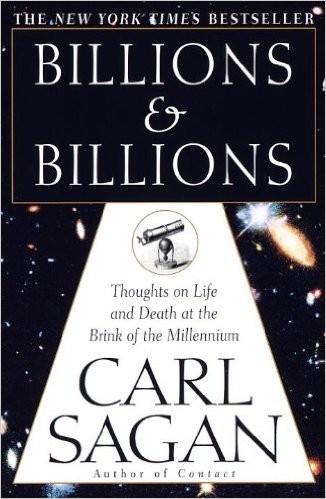
Billions & Billions: Thoughts on Life and Death at the Brink of the Millennium
by
Carl Sagan
Published 11 May 1998
That means that 99.9 percent of us owe our lives to agricultural technology and the science that underlies it—plant and animal genetics and behavior, chemical fertilizers, pesticides, preservatives, plows, combines and other agricultural implements, irrigation—and refrigeration in trucks, railway cars, stores, and homes. Many of the most striking advances in agricultural technology—including the "Green Revolution"—are products of the twentieth century. Through urban and rural sanitation, clean water, other public health measures, acceptance of the germ theory of disease, antibiotics and other pharmaceuticals, and genetics and molecular biology, medical science has enormously improved the well-being of people all over the world—but especially in the developed countries. Smallpox has been eradicated worldwide, the area of the Earth in which malaria flourishes shrinks year by The Twentieth Century • 247 year, and diseases I remember from my childhood, such as whooping cough, scarlet fever, and polio, are almost gone today.

The End of the Suburbs: Where the American Dream Is Moving
by
Leigh Gallagher
Published 26 Jun 2013
“In reality, I was making their street more dangerous, and in the process, I was not only taking out their trees, I was pretending I knew more than them.” In 2000, Marohn found himself assigned to fix a leaky pipe in Remer, a small town north of Brainerd. It was a routine project, but it would ultimately lead him to an epiphany. A sewer pipe that sat under a highway had a leak that was allowing clean groundwater to flow in. That meant that the clean water was getting pumped out to sewage treatment ponds, which were exceeding their capacity and would soon overflow. It was easily fixable, but it would cost $300,000, a hefty sum considering the town’s total budget for such projects was $120,000 a year; sure enough, the town said no. But the pipe was going to cause the sewage ponds to overflow, undermine the dike, knock down its wall, and pour into the neighboring river “in like a catastrophic way,” Marohn says.
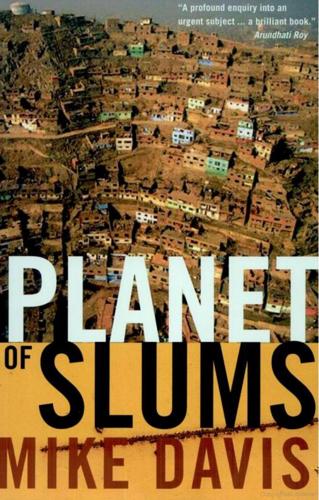
Planet of Slums
by
Mike Davis
Published 1 Mar 2006
The 1980s were the UN's Decade of International Drinking Water and Sanitation, but as World Bank researcher Anqing Shi emphasizes, "At the end of the 1980s, the situation had not improved greatly."85 Indeed, the WHO concedes that "there will still be about 5 million [preventable] deaths in children younger than five years by 2025 ... mostly caused by infectious diseases, within which diarrhoea will continue to play a prominent part."86 "At any one time," a 1996 WHO report adds, "close to half of the South's urban population is suffering from one or more of the main diseases associated with inadequate provision for water and sanitation."87 Although clean water is the cheapest and single most important medicine in the world, public provision of water, like free toilets, often competes with powerful private interests. Water sales is a lucrative industry in poor cities. Nairobi, as usual, is an egregious example, where politically connected entrepreneurs resell 83 Skidmore, Karaoke Fascism, p. 156. 84 Los Angeles Times, 4 August 2004. 85 Shi, "How Access to Urban Potable Water and Sewerage Connections Affects Child Mortality," p. 2. 86 Thapar and Sanderson, " Diarrhoea in Children," p. 650. 87 1996 WHO report paraphrased by David Satterthwaite, "The Links Between Poverty and the Environment in Urban Areas of Africa, Asia, and Latin America," The ANNALS of the American Academy of Political and Social Science 590 (1993), p. 80.
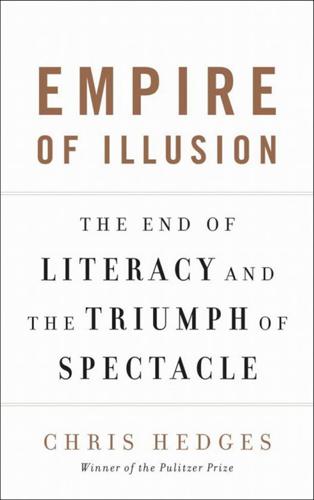
Empire of Illusion: The End of Literacy and the Triumph of Spectacle
by
Chris Hedges
Published 12 Jul 2009
And despair, in an age of increasing shortages, poverty and hopelessness, will be one of our few surplus commodities. But our collapse is more than an economic and political collapse. It is a crisis of faith. The capitalist ideology of unlimited growth has failed. It did not take into account the massive depletion of the world’s resources, from fossil fuels to clean water to fish stocks to soil erosion, as well as overpopulation, global warming, and climate change. It failed to understand that the huge, unregulated international flows of capital and assault on manufacturing would wreck the global financial system. An overvalued dollar (which could soon deflate); wild tech; stock and housing financial bubbles; unchecked greed; the decimation of our manufacturing sector; the empowerment of an oligarchic class; the corruption of our political elite; the impoverishment of workers; a bloated military and defense budget; and unrestrained credit binges are consequences of a failed ideology and conspire to bring us down.
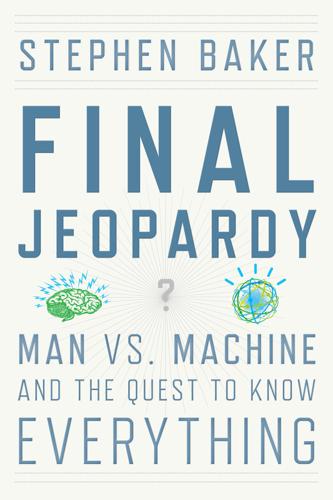
Final Jeopardy: Man vs. Machine and the Quest to Know Everything
by
Stephen Baker
Published 17 Feb 2011
The electrical grids, infused with new information technology, would grow smarter, predicting demand—house by house, business by business—and providing just the right amount of current to each user. Traffic patterns would be organized to reduce congestion and pollution. So would garbage collection, the delivery of health care and clean water, and the shuttling of farm goods to the cities. These intelligent systems were IBM’s niche. Technology would lead to what the company called a Smarter Planet. Two days after the election of Barack Obama as president, on November 6, 2008, IBM´s chairman, Sam Palmisano, appeared before the Council on Foreign Relations in New York City to unveil the Smarter Planet initiative.
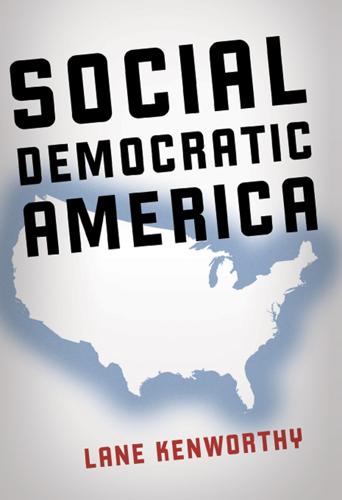
Social Democratic America
by
Lane Kenworthy
Published 3 Jan 2014
But it’s now widely agreed that private ownership and market competition are more effective at delivering innovation, good quality, and low cost in manufacturing. Services are different in that we often want not just innovation, quality, and low cost but also universal access. It isn’t necessary that all citizens have a car. But everyone should have physical safety, schooling, healthcare, basic transportation (roads, buses, subways, trains), clean water, sewage, electricity, mail delivery (yes, still), and Internet access. That doesn’t mean government must be the provider, however. We could rely on private providers, regulating them to ensure that they extend service to all. Broadly speaking, we have three options: monopoly public provision, a mix of public and private provision, and fully private provision with regulation.

How to Write Your Will: The Complete Guide to Structuring Your Will, Inheritance Tax Planning, Probate and Administering an Estate
by
Marlene Garsia
Published 1 Jan 2008
ActionAid is one of the UK’s leading overseas development charities and has been working with poor communities for over 35 years. Last year alone, we reached more than 13 million people. Please help us continue our work for as long as it’s needed. Whether large or small, a gift in your Will could leave the world a better place for countless poor children and their families. It could give them access to clean water, sufficient food or the chance to go to school. Call now on 020 7561 7668, email legacy@actionaid.org.uk or visit www.actionaid.org.uk ActionAid is a registered charity, no. 274467 iv THIS PAGE HAS BEEN INTENTIONALLY LEFT BLANK v how to WRITE yourWILL The complete guide to structuring your will, inheritance tax planning, probate and administering an estate 19th edition Marlene Garsia vi Readers should check before taking irrevocable action in case of changes to the law.
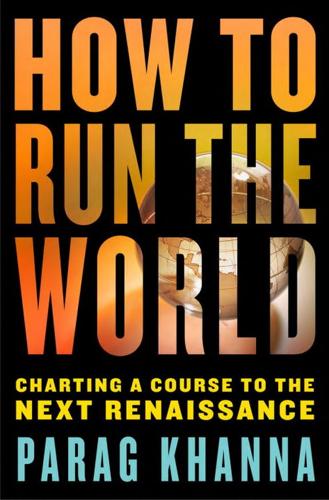
How to Run the World: Charting a Course to the Next Renaissance
by
Parag Khanna
Published 11 Jan 2011
The goal is not to find a single breakthrough, but to create an innovation space such as the GreenXchange, in which Nike, Best Buy, Yahoo!, and Salesforce operate an online commons to track and share eco-innovations seeking investment. Nobody holds a monopoly on providing incentives to those interested in saving the planet. Companies and charities together fund huge competitions such as Coke’s clean water prize and the X-Prize, which awards $250 million in prizes across fifteen areas but has inspired $2.5 billion in investment among the competing teams to find solutions to cancer, emission-free driving, and human genome sequencing. Richard Branson has put $25 million into a “Carbon War Room” to fund emissions reductions in “battle theaters” such as industrialization, transport, electricity, and deforestation.

The (Honest) Truth About Dishonesty: How We Lie to Everyone, Especially Ourselves
by
Dan Ariely
Published 27 Jun 2012
We honor innovators, praise and envy those who have original minds, and shake our heads when others aren’t able to think outside the box. There’s good reason for all of this. Creativity enhances our ability to solve problems by opening doors to new approaches and solutions. It’s what has enabled mankind to redesign our world in (sometimes) beneficial ways with inventions ranging from sewer and clean water systems to solar panels, and from skyscrapers to nanotechnology. Though we still have a way to go, we can thank creativity for much of our progress. After all, the world would be a much bleaker place without creative trailblazers such as Einstein, Shakespeare, and da Vinci. But that’s only part of the story.

The Microbiome Solution
by
Robynne Chutkan M.D.
Published 5 Aug 2015
In my Live Dirty, Eat Clean Plan, I’ll give you a step-by-step road map for implementing these changes in your own life, balancing your microbiome, and creating long-lasting good health along the way. Reclaiming Our Health by Rethinking “Clean” When most people think about germs, they think of disease and poverty in faraway places, or of families and their livestock living ten to a hut, with limited access to clean water and medical care and the next pandemic just one unwashed hand away. While it’s true that infectious diseases like cholera and tuberculosis still plague poorer countries, in the more developed world it’s actually the lack of germs that’s making many of us sick. As the next chapter will show, some of our “medical miracles,” when used indiscriminately, can end up contributing to, rather than curing, disease.
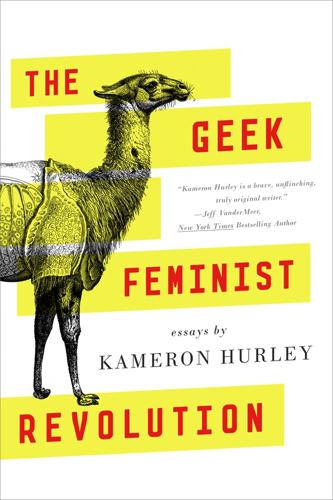
The Geek Feminist Revolution
by
Kameron Hurley
Published 1 Jan 2016
“It’s not my concern,” you say, while totally forgetting that we live in a world where our own quality of life is directly impacted by the quality of life of others (vaccinations are a really easy one to point to; so’s universal health care). We forget that our way of life—access to life-saving drugs, clean water, abundance of food—is wholly contingent on the skills and abilities of many millions of others who support the systems that care for us. We also forget that for many of us, being a part of some of these groups harshly affected by social policies is just one accident or “bad luck” incident away.
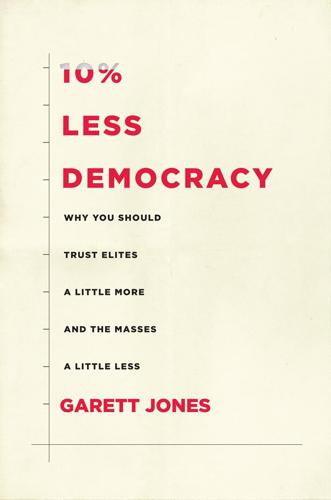
10% Less Democracy: Why You Should Trust Elites a Little More and the Masses a Little Less
by
Garett Jones
Published 4 Feb 2020
The EU has problems of democratic governance, but the problem is mostly with the democracy, not the governance. 9 Singapore: Flourishing with 50% Less Democracy IN 2004, Harvard economist Lant Pritchett and the World Bank’s Michael Woolcock asked, “What is the best way to get to ‘Denmark?’”¹ By “Denmark” they didn’t mean the affluent northern European country with a population of about 6 million. They meant competent governance, a government that routinely succeeds at providing “key services such as clean water, education, sanitation, policing, safety/sanitary regulation, roads, and public health[, all] assured by effective, rules-based, meritocratic, and politically accountable public agencies.”² Pritchett and Woolcock’s paper contained what became a catchphrase for a key goal of economic development: “Getting to Denmark.”
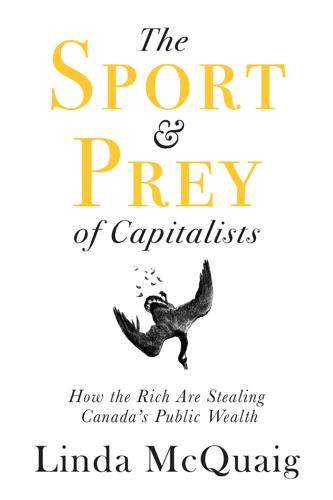
The Sport and Prey of Capitalists
by
Linda McQuaig
Published 30 Aug 2019
The much higher financing costs expose the speciousness of the entire case for involving private capital. One of the key arguments made by Morneau and his advisers is that drawing in institutional capital will allow Canada to avoid spending tax dollars on major infrastructure projects so that the government can instead spend those tax dollars on socially needed projects, like clean water for Indigenous communities and affordable housing. However, once we admit that involving private finance will actually cost us more — way more — rather than less, these arguments can be seen for what they are: gibberish. Worse, they are gibberish dressed up in the garb of social justice. Indeed, Bartlett points out that, contrary to claims of advancing social justice, the higher private financing costs amount to a government subsidy to private investors.
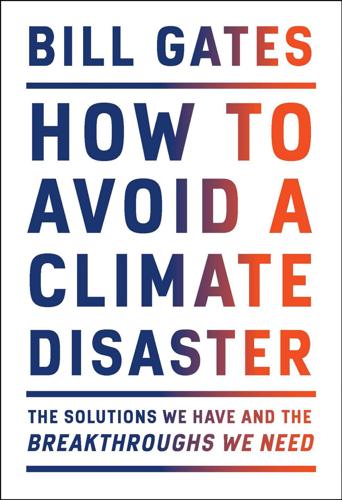
How to Avoid a Climate Disaster: The Solutions We Have and the Breakthroughs We Need
by
Bill Gates
Published 16 Feb 2021
When It Doesn’t Rain, It Pours You might think that the difference between 1.5 and 2 degrees would not be that great, but climate scientists have run simulations of both scenarios, and the news is not good. In many ways, a 2-degree rise wouldn’t simply be 33 percent worse than 1.5; it could be 100 percent worse. Twice as many people would have trouble getting clean water. Corn production in the tropics would go down twice as much. Any one of these effects of climate change will be bad enough. But no one’s going to suffer from just hot days, or just floods, and nothing else. That’s not how climate works. The effects of climate change add up, one on top of the other.
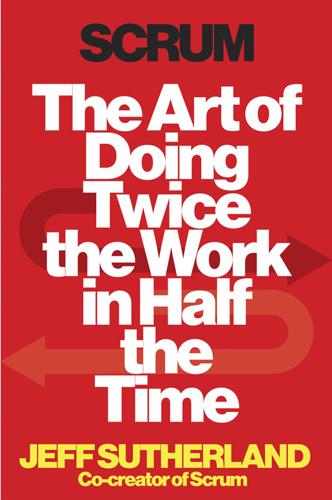
Scrum: The Art of Doing Twice the Work in Half the Time
by
Jeff Sutherland
and
Jj Sutherland
Published 29 Sep 2014
The hypercompetitive world of twenty-first-century work has no room for waste and foolishness. A further important point: working in a maximally productive way—the Scrum way—doesn’t have to be confined to business. What if people used this method to address the big problems our species struggles with—such as dependence on oil, or poor education, or lack of clean water in impoverished parts of the globe, or rampant crime? What if there really was a better way to live and work and solve problems differently? A way we really could change the world? There is. There are people using Scrum to address each of those problems I’ve mentioned, and they’re making a powerful impact.

To Be a Machine: Adventures Among Cyborgs, Utopians, Hackers, and the Futurists Solving the Modest Problem of Death
by
Mark O'Connell
Published 28 Feb 2017
(In fact, the Centre for Effective Altruism, the main international promoter of the movement, happened to occupy an office in Oxford just down the hall from the Future of Humanity Institute.) It seemed to me odd, though not especially surprising, that a hypothetical danger arising from a still nonexistent technology would, for these billionaire entrepreneurs, be more worthy of investment than, say, clean water in the developing world or the problem of grotesque income inequality in their own country. It was, I learned, a question of return on investment—of time, and money, and effort. The person I learned this from was Viktoriya Krakovna, the Harvard mathematics PhD student who had cofounded—along with the MIT cosmologist Max Tegmark and Skype founder Jann Tallinn—the Future of Life Institute, which earlier that year had received an endowment of $10 million from Musk in order to establish a global research initiative aimed at averting AI catastrophe.
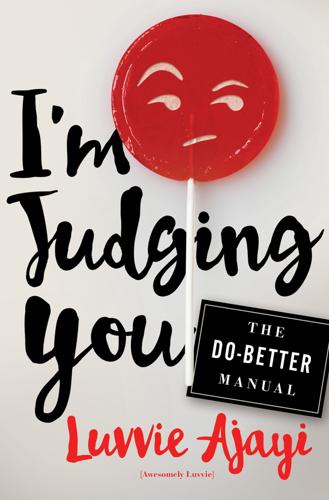
I'm Judging You: The Do-Better Manual
by
Luvvie Ajayi
Published 12 Sep 2016
Let’s use this very conservative timeline for the purpose of this judging and side-eye I am bestowing. Most of us need to get ourselves in somebody’s tub or shower daily, but I won’t be too strict right now. You’re welcome. I’ve heard people talk about not liking to shower, as if it were some torturous act. If you are living in a place where there is no drought and you have access to clean water, and you can’t bring yourself to shower more than once a week, then I’ll just assume you’re allergic to water. Again, see me being considerate of you? I’m so generous. Jesus invented soap so that we might all elect to smell like essence of lavender and vanilla whenever we want. Sure, we skip a day here and there because we’re not leaving the house.
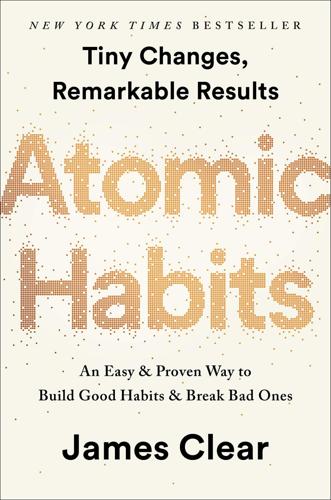
Atomic Habits: An Easy & Proven Way to Build Good Habits & Break Bad Ones
by
James Clear
Published 15 Oct 2018
But Karachi was also one of the least livable cities in the world. Over 60 percent of Karachi’s residents lived in squatter settlements and slums. These densely packed neighborhoods were filled with makeshift houses cobbled together from old boards, cinder blocks, and other discarded materials. There was no waste removal system, no electricity grid, no clean water supply. When dry, the streets were a combination of dust and trash. When wet, they became a muddy pit of sewage. Mosquito colonies thrived in pools of stagnant water, and children played among the garbage. The unsanitary conditions lead to widespread illness and disease. Contaminated water sources caused epidemics of diarrhea, vomiting, and abdominal pain.
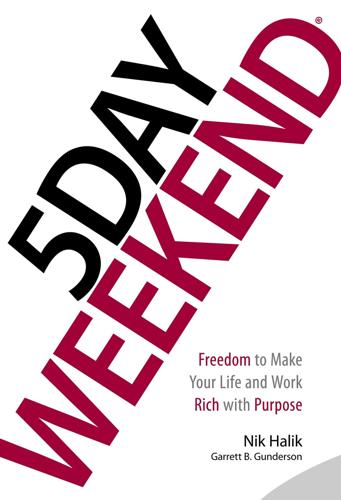
5 Day Weekend: Freedom to Make Your Life and Work Rich With Purpose
by
Nik Halik
and
Garrett B. Gunderson
Published 5 Mar 2018
You never return the way you left. 3. Choose a Cause to Support Instead of just giving randomly, consider finding a cause that can become a lifelong passion for you. For example, promoting cancer research, funding an orphanage, saving children from sex trafficking, or helping villages in developing countries get clean water. What speaks to your heart? Where do you really want to make a difference? You may even be inspired to start your own charitable foundation. Building businesses, making money, and having adventures are all important, fun, and rewarding. But ultimately, as research shows, the greatest meaning and fulfillment in life are found in what we contribute to others.
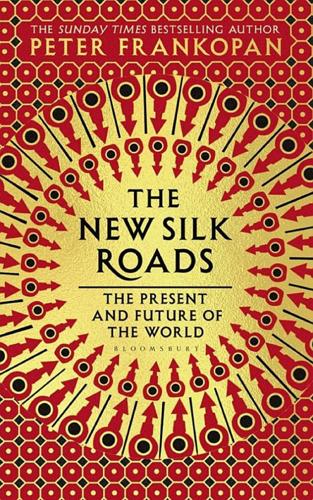
The New Silk Roads: The Present and Future of the World
by
Peter Frankopan
Published 14 Jun 2018
A child born today is not just statistically likely to live longer than their parents but longer than every single one of their ancestors. More children born today will grow up being able to read and write than at any time in history – both in sheer numbers (because global population is at its highest ever point), but also in percentage terms. Access to clean water and to medical care, to affordable and fast transportation, to energy and communication networks is not just high, but rising. There is much to celebrate and look forward to in the future. That does not make coming to terms with change easier. It is not always easy to remain sanguine if one seems to be standing in the wrong place at the wrong time.
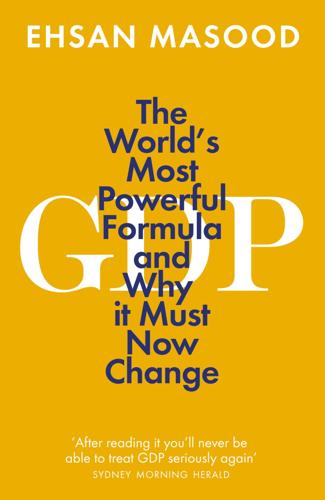
GDP: The World’s Most Powerful Formula and Why It Must Now Change
by
Ehsan Masood
Published 4 Mar 2021
When it rains, the soils act to purify the water, which finds its way into aquifers before it is diverted into New York City’s water supply. If the Catskills’ natural aquifers were built over, or if they were allowed to degrade in some way, New Yorkers would be forced to pay much more for their clean water. In 2012, the city authorities worked out that an equivalent water treatment plant would cost $8 to $10 billion to build. In contrast, at the time it cost $1.5 billion to keep the Catskills in good health.8 For Costanza’s purposes, the value of the Catskills would be $1.5 billion because that is what the city’s leadership would be willing to pay to keep them in functioning health.
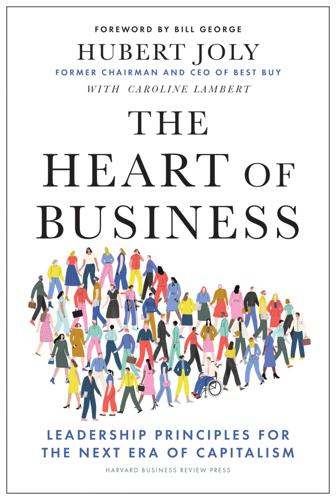
The Heart of Business: Leadership Principles for the Next Era of Capitalism
by
Hubert Joly
Published 14 Jun 2021
In some cases, we asked employees to find their colleagues and put the word out in the community that we needed to know if everyone was okay. Little by little, we were able to account for everyone. But that did not mean they were all right. Some had lost their homes and all their possessions, and they did not have enough food and clean water to survive. One Best Buy employee, who was seven months pregnant and type 1 diabetic, had lost the electricity required to keep her medications cool. We could see on television that loads of relief supplies were en route to the island, but our folks in Puerto Rico told us they were not seeing any of those supplies.
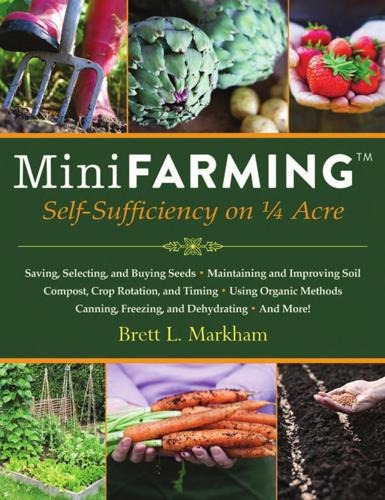
Mini Farming: Self-Sufficiency on 1/4 Acre
by
Brett L. Markham
Published 14 Apr 2010
First, clean your sink and work area thoroughly, and get a roll of paper towels so they are handy. Next, make a sanitizing solution from the hottest tap water by mixing two tablespoons of bleach with one gallon of water. You can multiply this by adding four tablespoons of bleach to two gallons of water, and so on. Put the sanitizer in a cleaned watering can and the eggs in a wire basket. Pour the sanitizing solution over the eggs very generously, making certain to wet all surfaces thoroughly. Wait a couple of minutes, and then use a paper towel that has been dipped in sanitizer to clean the egg. Use a fresh paper towel for each egg. Then, rinse them very thoroughly with sanitizing solution and then set them aside to dry on a wire rack.

Happy Inside: How to Harness the Power of Home for Health and Happiness
by
Michelle Ogundehin
Published 29 Apr 2020
But if the lure of a good roast is just too much to forgo, then in order to keep your oven as pristine (i.e. toxin-free) as is realistically possible, always grill or roast on the bottom shelf to minimise any spitting fat catching the exposed heating elements. A chicken can easily be cooked in a roasting bag (simply split the bag open for the last 20 minutes to crisp up the skin if so desired). CLEAN WATER Sadly a lot of the water supplied to our homes is not as clean as we’d like it to be. Chemicals are added to kill bacteria, old pipes may throw in delights of their own, not to forget the presence of hormones, nitrates and pesticides, all of which render a filter essential for your drinking water.
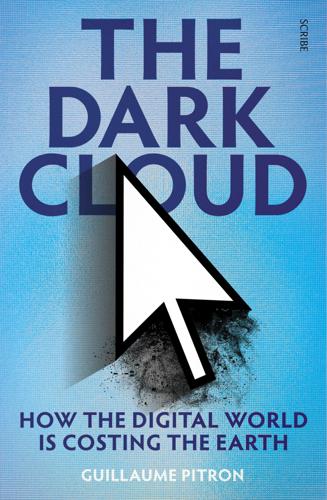
The Dark Cloud: How the Digital World Is Costing the Earth
by
Guillaume Pitron
Published 14 Jun 2023
But, as Jens Teubler points out, ‘The MIPS is higher as soon as technology is involved.’ Digital technologies are proof of this on account of the vast number of metals they contain, and especially ‘rare metals that are hard to extract from the ground’. A two-kilogram laptop involves twenty-two kilograms of chemicals, 244 kilograms of fuel, and 1.5 tonnes of clean water, to list but a few resources.11 The MIPS ratio of a television is 200:1 and to 1,000:1. (A fifteen-kilogram television would require between three and fifteen tonnes of raw materials.)12 That of a smartphone is 1,200:1 (183 kilograms of raw materials for an end product weighing 150 grams).13 But the prize for the highest MIPS goes to the microchip: 32 kilograms of materials for an integrated circuit weighing two grams — a hair-raising ratio of 16,000:1.4 ‘People are often surprised by the difference between the perceived effect and the actual impact of their decision to buy a consumer product’, says Teubler.
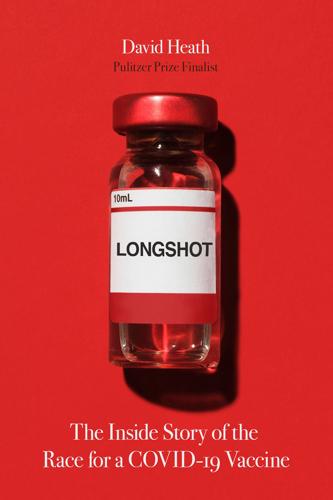
Longshot
by
David Heath
Published 18 Jan 2022
The World Health Organization hopes to do the same with the polio virus within the next few years. Vaccines have revolutionized modern medicine. At the turn of the 20th century, the life expectancy of the average American was 47.3 years. For Black Americans, it was only 33 years.3 But a combination of improved health care and public health measures, such as clean water, combined with vaccines for smallpox, whooping cough, diphtheria, and tetanus, helped to dramatically increase longevity. One estimate is that since 1924, vaccines have prevented 40 million cases of diphtheria and 35 million cases of measles, both deadly viruses. That’s on top of 103 million cases of other childhood diseases prevented.4 As a consequence, the life expectancy of the average American today is 78.7 years.

Fiasco: The American Military Adventure in Iraq
by
Thomas E. Ricks
Published 30 Jul 2007
Nor did it send enough people. In part because of the poor quality and sheer lack of CPA personnel, the U.S. occupation authorities would prove unable to adjust their stance quickly when assumptions proved wrong. Because of that incompetence, the CPA would be unable to provide basic services such as electricity, clean water, and security to the Iraqi population, and so in the fall of 2003 it would begin to lose the lukewarm support it had enjoyed. But on March 19, 2003, that unfortunate chain of consequences still lay hidden in the future. "I hope this thing goes down as fast as everyone thinks," Capt. Lesley Kipling, an Army communications officer on the staff of Col.
…
Iraqis she interviewed were upset by the situation and eager to discuss it, in part because the legal minimum age for such work was supposed to be fifteen. THE CPA: "CAN'T PRODUCE ANYTHING" 209 CPA officials weren't pleased by her coverage. The next time Williams was at a press briefing, she checked in with a press officer about another article she was pursuing on the provision of clean water—there was a local angle for her paper because some of the engineers were from California. She was informed that interviews she had been promised might not occur because of her handling of the trash story. In fact, she recalled, "I never did get access to the water engineers." In Hess's view, the CPA's relationship with the press soured fundamentally because of the insistence by officials that all was going well, and the consequent determination of reporters to disprove that contention.

Two Georges
by
Richard Dreyfuss
and
Harry Turtledove
Published 4 Oct 1995
A New Liverpool constable in dark blue, a billy club swinging from his belt, gestured with a red lantern to guide the steamer toward the carpark west of the building. “Just put it anywhere, gents,” he said. By the way he sounded, keeping an eye on where cars parked was the least of his worries tonight. The picketers started a chant: “Clean air, clean water, clean work! Filthy air, filthy water, no work! Clean air, clean water, clean - ” The constable rolled his eyes. “God damn me to hell, gents, if one in three of those sons of bitches don’t belong to the Sons of Liberty.” “I shouldn’t be surprised,” Bushell said solemnly. “Bloody fools,” Samuel Stanley said. “Some people are never satisfied, don’t know when they’re well off.
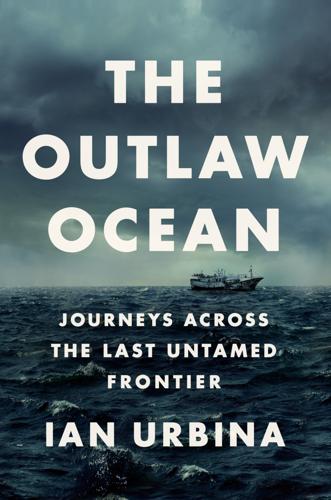
The Outlaw Ocean: Journeys Across the Last Untamed Frontier
by
Ian Urbina
Published 19 Aug 2019
When Fernandez boarded The Admiral, the captain, a Filipino man in his sixties, appeared on deck, cell phone in hand. “This happens every day,” the captain kept saying, showing him photographs on his phone of a toilet filled with blood. The ship’s engine had broken down, and the captain and his crew of six other Filipinos had been stuck there for nine months without clean water. The desalinator was not working, and drinking salt water was causing his stomach to ulcerate, the captain theorized about his hemorrhaging. “So much terrible,” he kept muttering under his breath as he frantically scrolled through 144 text messages he had sent to the owner of the ship, pleading for a reply.
…
Fernandez listened patiently to the captain for half an hour and when it came time to depart, the clergyman made his way to the ladder to climb back into his transport boat. In the art of leave-taking, Fernandez was Picasso. He put his hand on the captain’s shoulder, his stare converting his words into a promise. “I will return within three days with clean water and food,” he said. The captain replied in a painfully quiet voice: “Please take us with you.” Fernandez said nothing more as he slowly but decisively exited, his calm demeanor somehow bolstering his promise. Still, if eyes were arms, the captain’s stare would have reached out and clutched Fernandez as he started his engine.

Moon Portugal
by
Carrie-Marie Bratley
Published 15 Mar 2021
Many Lisboetas drive to Cascais and Estoril for a coffee and a stroll on a Sunday, and they flock to their beaches in summer. Estoril Glitzy São João do Estoril, better known as just Estoril (EEZH-too-reel), is a stylish seaside resort home to the largest casino in Europe. Beaches are long and spacious, with a series of rocky outcrops and piers; calm, clean water; and a laid-back, romantic ambience. It is a popular escape for families and couples on weekends. Estoril is spread over a lengthy stretch of coastline fronted by a glorious promenade and a string of cosmopolitan restaurants and bars and dotted with intriguing historic properties and lush green spaces.
…
Serra da Estrela Natural Park Vale do rossim lake One of the Serra da Estrela’s most scenic attractions, people visit the park to walk around this enchanting lake, resulting from a human-made dam and located in the heart of the Serra da Estrela mountain range at an altitude of 1,437 meters (4,715 ft). In summer, its banks provide spots for locals and visitors to enjoy a refreshing dip in the clean waters and cool off from the heat. Sports and Recreation Various hiking and mountain bike trails traverse the park, although signage can be sketchy, so ask for a map at one of the park’s information offices. Opportunities abound for canyoneering and mountaineering. Join a guided tour with experienced local companies such as Trans Serrano (tel. 235 778 938; www.transserrano.com) for riverbed hikes (4-5 hours; €17.50), canyoneering (4-5 hours; from €25), climbing, and rappelling in hidden nooks and crannies.
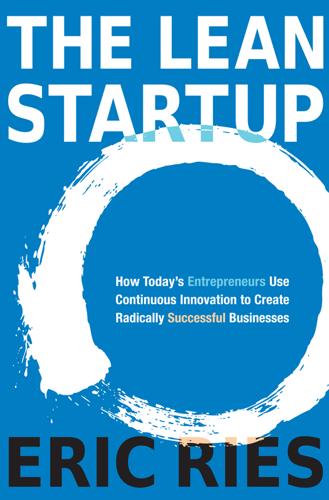
The Lean Startup: How Today’s Entrepreneurs Use Continuous Innovation to Create Radically Successful Businesses
by
Eric Ries
Published 13 Sep 2011
They discovered that customers often wanted their clothes ironed and were willing to pay double the price to get their laundry back in four hours rather than twenty-four hours. As a result of those early experiments, VLS created an end product that was a three-foot by four-foot mobile kiosk that included an energy-efficient, consumer-grade washing machine, a dryer, and an extra-long extension cord. The kiosk used Western detergents and was supplied daily with fresh clean water delivered by VLS. Since then, the Village Laundry Service has grown substantially, with fourteen locations operational in Bangalore, Mysore, and Mumbai. As CEO Akshay Mehra shared with me, “We have serviced 116,000 kgs. in 2010 (vs. 30,600 kg. in 2009). And almost 60 percent of the business is coming from repeat customers.
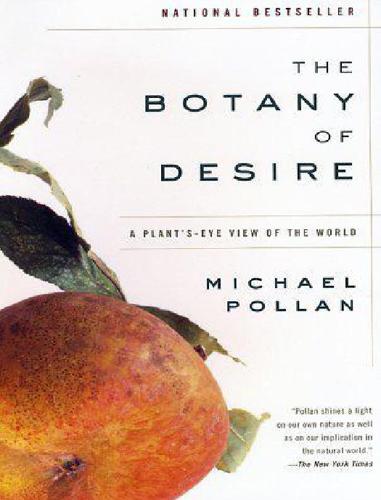
The botany of desire: a plant's-eye view of the world
by
Michael Pollan
Published 27 May 2002
The earliest settlers lighting out from places like Marietta wanted apple trees nearby because they were one of the comforts of home. Since the time of the New England Puritans, apples have symbolized, and contributed to, a settled and productive landscape. In the eyes of a European, fruit trees were part and parcel of a sweet landscape, along with clean water, tillable land, and black soil. To call land “sweet” was a way of saying it answered our desires. The fact that the apple was generally believed to be the fateful tree in the Garden of Eden might also have commended it to a religious people who believed America promised a second Eden. In fact, the Bible never names “the fruit of the tree which is in the midst of the garden,” and that part of the world is generally too hot for apples, but at least since the Middle Ages northern Europeans have assumed that the forbidden fruit was an apple.

A Book for Her
by
Bridget Christie
Published 1 Jul 2015
If you ask me, Peter Stringfellow is missing a trick here. He needs to look at his marketing. ‘Dancing naked girls, nice fish and ironed napkins.’ It would open up the club to a whole new demographic.) I remember looking at my perfectly folded, bleached white napkin, tucked firmly under my plate, next to a glass of clean water, and suddenly feeling nostalgic for the old NHS, before cuts and outsourcing. The last thing I thought I’d be thinking about, as I sat in Peter Stringfellow’s Club, surrounded by vaginas, was the sick and the elderly, waiting in corridors. With no napkins at all. Let alone crisp, white ones. I thought about being in A&E with my children and our feet sticking to the floor, and wondering if I should ask someone for a wet wipe to give it a going over.

What's the Matter with White People
by
Joan Walsh
Published 19 Jul 2012
After the crushing 2011 debt-ceiling battle, as Obama tried to sell the deal of slashing public spending to the American public, he announced that it would bring the United States to “the lowest level of annual domestic spending since Dwight Eisenhower was president.” Dwight Eisenhower: the Republican who was president in the 1950s, when I was born. Our first black president was taking us back to the soothing fifties, back before the Civil Rights or Voting Rights Acts; the Clean Air, Clean Water, or Occupational Safety and Health Acts; the Economic Opportunity Act; Medicare and Medicaid. Back before the country came unraveled, and Democrats got the blame. I understand why Democratic leaders ran from the destruction of the sixties, as though they sought a witness protection program that would change their identities and keep them alive.
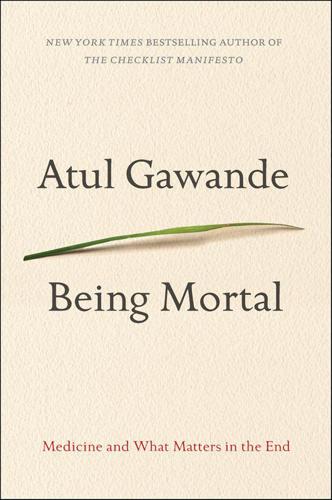
Being Mortal: Medicine and What Matters in the End
by
Atul Gawande
Published 6 Oct 2014
The prosperity of whole countries depends on their willingness to escape the shackles of family expectation and follow their own path—to seek out jobs wherever they might be, do whatever work they want, marry whom they desire. So it was with my father’s path from Uti to Athens, Ohio. He left the village first for university in Nagpur and then for professional opportunity in the States. As he became successful, he sent ever larger amounts of money home, helping to build new houses for his father and siblings, bring clean water and telephones to the village, and install irrigation systems that ensured harvests when the rainy seasons were bad. He even built a rural college nearby that he named for his mother. But there was no denying that he had left, and he wasn’t going back. Disturbed though my father was by the way America treated its elderly, the more traditional old age that my grandfather was able to maintain was possible only because my father’s siblings had not left home as he had.

Pax Technica: How the Internet of Things May Set Us Free or Lock Us Up
by
Philip N. Howard
Published 27 Apr 2015
• They needed more toilets. • Bad roads meant too many accidents. • Children had no playgrounds. • The sewer lines were broken. Of course, the government saw Kabira as a forest. These new maps demonstrated that it is a community. The community was able to make its own maps for collective needs like clean water and sanitation. Power comes from designing information in a way that lets you act on it. Focusing on priorities made it easier to act. Within only a few weeks, journalists were covering these problems, small groups of neighbors were working on specific issues, and politicians were alerted. Not only did Primož Kovačič help to find Kibera, but he also helped the community find itself.

In the Devil's Garden: A Sinful History of Forbidden Food
by
Stewart Lee Allen
Published 1 Jan 2002
World health organizations estimate that 1.5 million babies die unnecessarily each year because they are nursed with baby formula instead of breast milk. These deaths are not the fault of the formula product itself, but stem from the unclean water used to reconstitute the stuff in some areas of the world. But countries with relatively clean water also suffer because bottle-fed children everywhere are more likely to be obese, score lower on IQ tests, and suffer serious allergies. Bottle-feeding is also sometimes associated with learning disorders. The United States alone is thought to spend between $2 billion and $4 billion a year fighting diseases connected to bottle feeding.
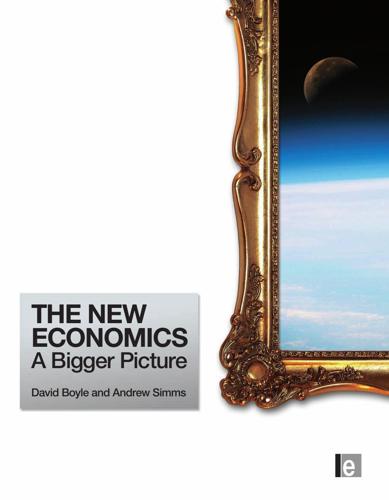
The New Economics: A Bigger Picture
by
David Boyle
and
Andrew Simms
Published 14 Jun 2009
Poor countries are obliged by the IMF to prioritize payment of debt service to rich western creditors, starting with the IMF and World Bank, and in descending order to private creditors and finally western government creditors, and to prioritize repayments to these rich creditors over spending on health, clean water and sanitation for their own people. We need to correct the profound injustice of this with an international bankruptcy law for sovereign governments.21 Create low-interest loans for vital projects There may be better ways of producing the finance that governments need, at least for capital projects, than by borrowing it from banks where it is created by the banking system, with interest attached.
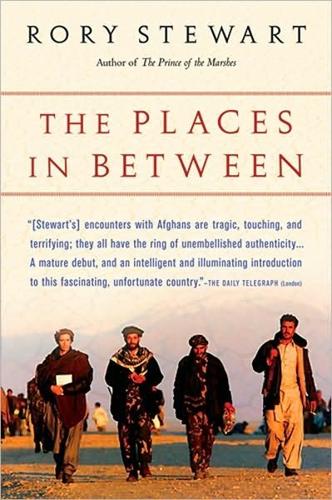
The Places in Between
by
Rory Stewart
Published 1 Jan 2004
GENEALOGIES Like most in the valley, this village, Buriabaf, was perhaps half a kilometer from the path—in contrast to the Indian subcontinent, where houses cling to the edge of the road. Perhaps this was to discourage visitors. A farmer with a rifle on his shoulder directed us to the headman's house. We walked single file beside a canal flowing with clean water and lined with a double row of bare poplars. The water had picked up the last pale intensity of the evening sky and the reflections of the silver trees trembled in the water. There was no one in the street. We crossed a bridge, turned down a narrow lane, and found a dark wooden door. We knocked.

Crisis and Dollarization in Ecuador: Stability, Growth, and Social Equity
by
Paul Ely Beckerman
and
Andrés Solimano
Published 30 Apr 2002
Defined this way, de-facto female-headed households increased from 24 to 30 percent during the crisis (1998–99) and was most pronounced among rural households (from 20 to 28 percent), which could be a reflection in part of migratory trends. Female-headed households are, on average, smaller in size (with the spouse often absent), but have higher average consumption levels (SIISE 2000). ECUADOR: CRISIS, POVERTY, AND SOCIAL PROTECTION 135 The high incidence of poor sanitary conditions, lack of clean water, dirt floors, and overcrowding are factors conducive to health problems, especially for young children. Table 4.3 provides evidence of significant differences in living conditions across the income distribution: 22 percent of households from the poorest quintile lack electricity, while only a negligible proportion in the richest quintile is without electricity.
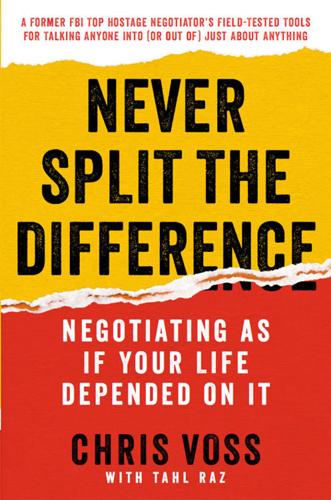
Never Split the Difference: Negotiating as if Your Life Depended on It
by
Chris Voss
and
Tahl Raz
Published 3 Oct 1989
After butchering your name, and engaging in some disingenuous pleasantries, he launches into his pitch. The hard sell that comes next is a scripted flowchart designed to cut off your escape routes as it funnels you down a path with no exit but “Yes.” “Do you enjoy a nice glass of water from time to time.” “Well, yes, but . . .” “Me, too. And like me I bet you like crisp, clean water with no chemical aftertaste, like Mother Nature made it.” “Well, yes, but . . .” Who is this guy with a fake smile in his voice, you wonder, who thinks he can trick you into buying something you don’t want? You feel your muscles tighten, your voice go defensive, and your heart rate accelerate.
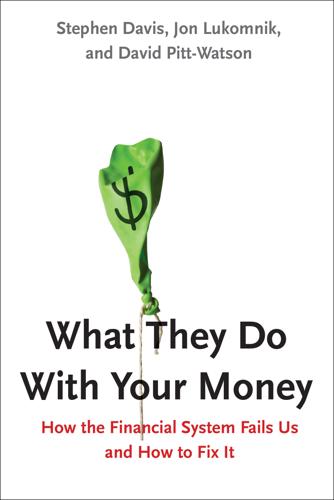
What They Do With Your Money: How the Financial System Fails Us, and How to Fix It
by
Stephen Davis
,
Jon Lukomnik
and
David Pitt-Watson
Published 30 Apr 2016
One is that production and consumption do not affect others; for example, that manufacturing does not pollute someone else’s water supply. If markets create such “externalities” (costs and benefits that are not included in the price of goods), then they won’t work as well, since neither the manufacturer nor the consumer is charged for the loss of other people’s clean water supply. Similarly, if buyers don’t know what they are purchasing, they may be sold a poor product. Again, the market will not work well. In theory, we could create market solutions for these problems. Take regulation of the pharmaceuticals industry. Most of us don’t really know how the chemicals we are swallowing to cure our illness actually affect our bodies, and so we could be poisoned if we buy a poor product.
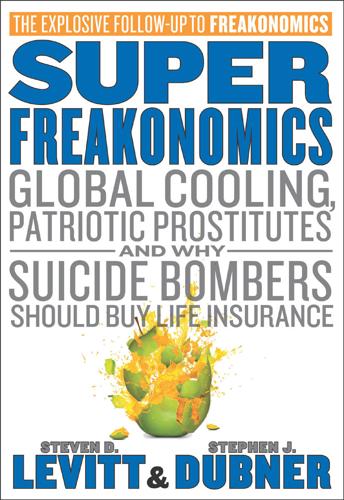
SuperFreakonomics
by
Steven D. Levitt
and
Stephen J. Dubner
Published 19 Oct 2009
Most of these “missing women,” as the economist Amartya Sen calls them, are presumed dead, either by indirect means (the girl’s parents withheld nutrition or medical care, perhaps to the benefit of a brother), direct harm (the baby girl was killed after birth, whether by a midwife or a parent), or, increasingly, a pre-birth decision. Even in India’s smallest villages, where electricity might be sporadic and clean water hard to find, a pregnant woman can pay a technician to scan her belly with an ultrasound and, if the fetus is female, have an abortion. In recent years, as these sex-selective abortions have become more common, the male-female ratio in India—as well as in other son-worshipping countries like China-has grown even more lopsided.
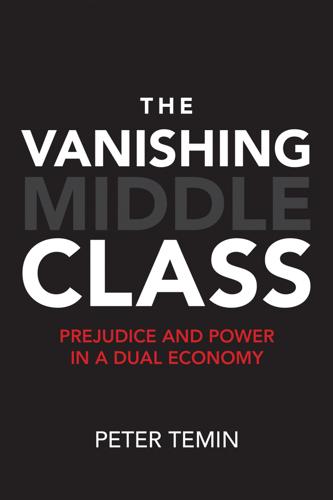
The Vanishing Middle Class: Prejudice and Power in a Dual Economy
by
Peter Temin
Published 17 Mar 2017
“Prevalence of Imprisonment in the U.S. Population, 1974–2001.” U.S. Department of Justice, Bureau of Justice Statistics, Special Report. Washington, DC, August. Bosman, Julie. 2016a. “Crumbling, Destitute Schools Threaten Detroit’s Recovery.” New York Times, January 20. Bosman, Julie. 2016b. “Few Answers on When Flint Will Have Clean Water Again.” New York Times, January 27. Bosman, Julie. 2016c. “Flint’s Former Manager Resigns as Head of Detroit Schools.” New York Times, February 2. Bosman, Julie. 2016d. “Many Flint Residents Are Desperate to Leave, But See No Escape.” New York Times, February 4. Bosman, Julie, Monica Davey, and Mitch Smith. 2016.

Exponential Organizations: Why New Organizations Are Ten Times Better, Faster, and Cheaper Than Yours (And What to Do About It)
by
Salim Ismail
and
Yuri van Geest
Published 17 Oct 2014
It’s also transformational. Note the sudden appearance of drones in the planning agendas of companies as diverse as Amazon, QuiQui and UPS. This is not a coincidence. Such breakthrough thinking also inspires. At Singularity University, students form teams in major problem spaces such as healthcare, education, clean water and so on. They are then given the challenge of coming up with a product or service that could positively impact a billion people within a decade [MTP]. One team, which called itself Matternet, chose poverty as its problem space after reading that 85 percent of all roads in Africa are regularly washed out during the wet season.
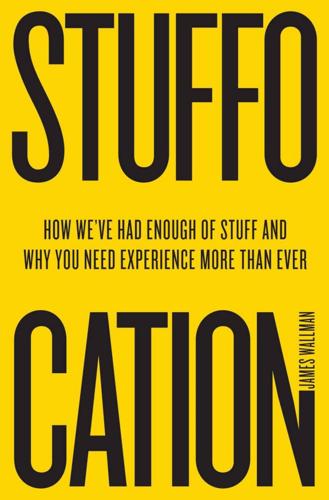
Stuffocation
by
James Wallman
Published 6 Dec 2013
(I want, of course, to replace it.) Materialism, and the consumer culture and capitalist system it underpinned, was the right idea for the right time. It meant that the masses, for the first time in human history, lived in abundance rather than scarcity. It gave us washing machines, TVs, and indoor toilets. It delivered clean water, the welfare state, and health care that has improved the length and quality of our lives. It has lifted living standards for us, and it is now doing the same for billions of others, from Beijing to Bangalore and Sao Paolo. But materialism’s success has caught up with us. All that abundance has, paradoxically, brought scarcity once again.

The Internet Is Not the Answer
by
Andrew Keen
Published 5 Jan 2015
And yes, the mobile Web has enormous potential to radically transform the lives of the two and a half billion new Internet users who, according to the Swedish mobile operator Ericsson, will be on the network by 2018. Indeed, the app economy is already beginning to generate innovative solutions to some of the most pervasive problems on the planet—such as mapping clean water stations in Kenya and providing access to credit for entrepreneurs in India.22 But, as this book will show, the hidden negatives outweigh the self-evident positives and those 76% of Americans who believe that the Internet has been good for society may not be seeing the bigger picture. Take, for example, the issue of network privacy, the most persistently corrosive aspect of the “big data” world that the Internet is inventing.
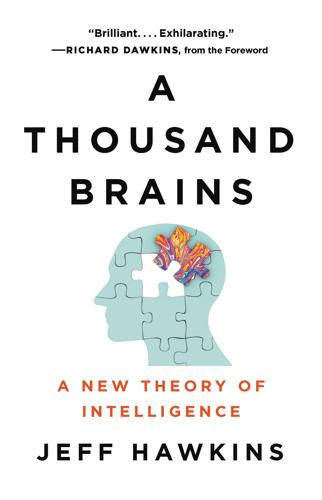
A Thousand Brains: A New Theory of Intelligence
by
Jeff Hawkins
Published 15 Nov 2021
What you know about coffee cups exists in thousands of models, in thousands of columns—but, still, only in a fraction of all the columns in the neocortex. This is why we call it the Thousand Brains Theory: knowledge of any particular item is distributed among thousands of complementary models. Here is an analogy. Say we have a city with one hundred thousand citizens. The city has a set of pipes, pumps, tanks, and filters to deliver clean water to every household. The water system needs maintenance to stay in good working order. Where does the knowledge reside for how to maintain the water system? It would be unwise to have only one person know this, and it would be impractical for every citizen to know it. The solution is to distribute the knowledge among many people, but not too many.
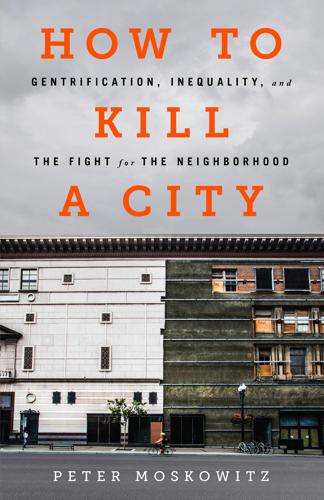
How to Kill a City: The Real Story of Gentrification
by
Peter Moskowitz
Published 7 Mar 2017
Many poor people are moving to unincorporated towns in the middle of the desert that don’t have sewer systems, or even clean drinking water. “It’s like people are living in colonies of the United States,” one activist told a local news website. “Living in a Third World country, that’s close to what you see here today.” This is the new geography of the Bay Area: people living in trailer parks in dusty towns with no centers and no clean water. Suburbs and sprawl simply don’t make sense for low-income people who depend on public infrastructure and programs for survival. When you think about it, suburbs make it difficult for people of any income level to build community, which is at least part of the reason people raised in suburbs seem to dislike them enough to move into cities.
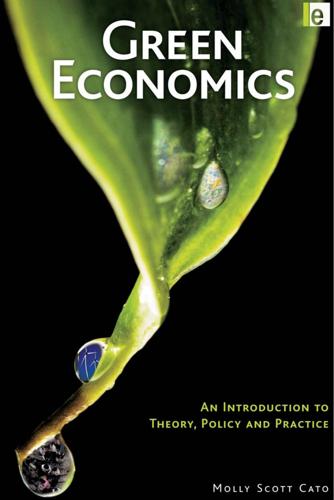
Green Economics: An Introduction to Theory, Policy and Practice
by
Molly Scott Cato
Published 16 Dec 2008
In his 1991 book Victor Anderson began by identifying the criteria for choosing a good economic indicator,18 which should: • • • • • • • be based on data that are readily available, especially for less-developed countries; be easy to understand – not based on abstruse maths – e.g. infant mortality; relate to something measurable, e.g. not ‘loss of community’; measure something believed to be important in its own right, e.g. infant mortality is an indicator of general standard of health and living; be rapidly available, as an early warning signal; be based on information that is geographically comparable; be internationally comparable, e.g. access to clean water. The measurement criterion is problematic, since some of the things we value most are not conducive to numerical measurement, hence the philosophical 118 GREEN ECONOMICS Table 7.3 Additions and subtractions from GDP to arrive at the ISEW Total consumer expenditure plus minus inequality commuting traffic accidents pollution depletion of resources long-term environmental damage housework and homework services from consumer durables state education health expenditure discussion in the environmental economics literature about the value of a songbird or a sunset.
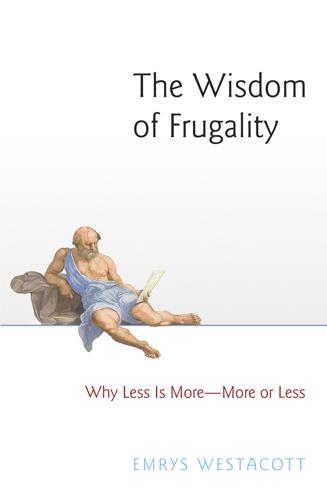
The Wisdom of Frugality: Why Less Is More - More or Less
by
Emrys Westacott
Published 14 Apr 2016
It is also more than some families in California spend on food in a month.10 According to Singer, we have the same obligation to help those in dire need regardless of whether they are close by or far away; so if by forgoing luxuries that add only slightly to our own happiness we could greatly improve the lives of people who lack such basics as food, clean water, housing, and health care, we should do so. Singer’s argument against even what we might call modest extravagance seems powerful, yet it fails to convince most people, or at least it fails to significantly alter their behavior. This could, of course, be attributed to their putting self-interest before duty.

How Democracies Die
by
Steven Levitsky
and
Daniel Ziblatt
Published 16 Jan 2018
They do not simply rely on political leaders’ good character, but rather are shared codes of conduct that become common knowledge within a particular community or society—accepted, respected, and enforced by its members. Because they are unwritten, they are often hard to see, especially when they’re functioning well. This can fool us into thinking they are unnecessary. But nothing could be further from the truth. Like oxygen or clean water, a norm’s importance is quickly revealed by its absence. When norms are strong, violations trigger expressions of disapproval, ranging from head-shaking and ridicule to public criticism and outright ostracism. And politicians who violate them can expect to pay a price. Unwritten rules are everywhere in American politics, ranging from the operations of the Senate and the Electoral College to the format of presidential press conferences.
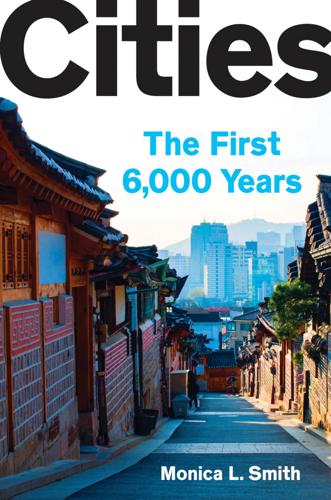
Cities: The First 6,000 Years
by
Monica L. Smith
Published 31 Mar 2019
In the ancient Indus culture of what is today Pakistan and India, cities like Mohenjo Daro and Harappa were located right along the mighty Indus River. This riverbank location wasn’t enough to fulfill their psychological desires for water, although there was plenty of it for everyday use. In addition to river water, residents dug wells throughout the site as a way to provide access to clean water (they made provisions for dirty water, too, by building drains that enabled the flow of effluent from households to collective sumps that would have been periodically cleaned out). The exacting treatment of both clean and dirty water indicates that water was more than just something to drink or something to wash with.

Lab Rats: How Silicon Valley Made Work Miserable for the Rest of Us
by
Dan Lyons
Published 22 Oct 2018
During the ride that same smartphone lets you shop for virtually anything on Amazon, and access all of the world’s information on Google. Medical procedures that our grandparents could not have imagined now are performed as a matter of routine. We live 60 percent longer than people did a century ago. We have better nutrition, more clean water, better education. Soon the world will be even more amazing, thanks to breakthroughs in artificial intelligence, robotics, and genomics. In Silicon Valley, techies have vowed to conquer every disease known to humankind. Some believe we are on the cusp of conquering death itself and achieving immortality.
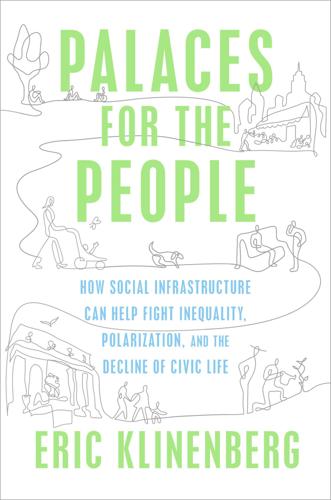
Palaces for the People: How Social Infrastructure Can Help Fight Inequality, Polarization, and the Decline of Civic Life
by
Eric Klinenberg
Published 10 Sep 2018
According to one of the main policy recommendations from the APHA report on nature: “Community gardens should be considered as a primary and permanent open space option as part of master planning efforts; gardens should be developed as part of land planning processes rather than as an afterthought in neighborhood redevelopment projects.” Policy makers have ignored this recommendation, but should know better. After all, modern infrastructure—for reliable power, clean water, fast transit, affordable food, and resilient structures—has done more to improve public health than any other modern intervention, including scientific medicine. “The early 20th century saw great changes in health and safety brought about through collaborations that today would be viewed as odd or unusual—[between] physicians and city planners, sanitarians and civil engineers,” write Charles Branas and John MacDonald, who expanded their research on mediating urban blight to see if it does more for public health than reduce violent crime.
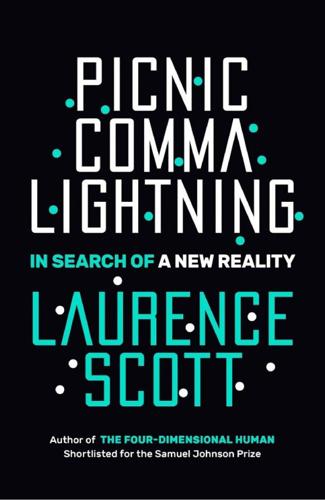
Picnic Comma Lightning: In Search of a New Reality
by
Laurence Scott
Published 11 Jul 2018
The concept in quantum mechanics that particles can behave as either particles or waves, depending on how they are observed, reveals a mixed metaphor hidden at the centre of our physical world. This is a classic post-modernist position: that how we measure the world, the language or discourse we use to describe it, determines what truths we can and can’t assert about our realities. But what does it mean to cast doubt on our grasp of reality, when there are people without clean water to drink, or while the bombs fall? Deprivation isn’t a best guess; it’s beyond dispute. The world of appearances holds irrefutable chains of cause and effect. Fire burns us in every language. To be ‘apparent’ doesn’t mean to be inconsequential. Even more radical research emphasises how the appearances we perceive are intimately tied to these questions of survival.
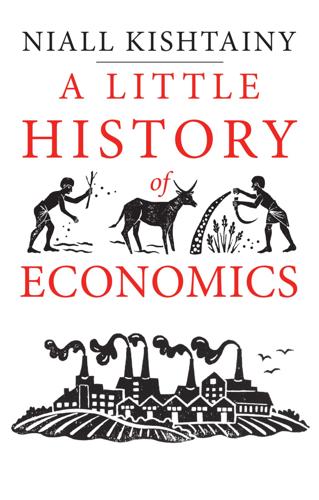
A Little History of Economics
by
Niall Kishtainy
Published 15 Jan 2017
Eighty thousand people had to be moved to make way for it, and it created the largest manmade lake in the world. Rich countries gave ‘aid’: money to help pay for the projects. The government had high hopes that wealth was just round the corner. But a big push is a tall order, especially for new governments with little experience. In Ghana it did give people hospitals, telephones and clean water, but it also created lots of inefficient firms. Many were complete duds. Mango-processing plants were built even though there were few mangoes to be had. One huge factory could make more glass than the entire country would ever use. The firms didn’t propel take-off; instead the engines sputtered and the economy crashed.
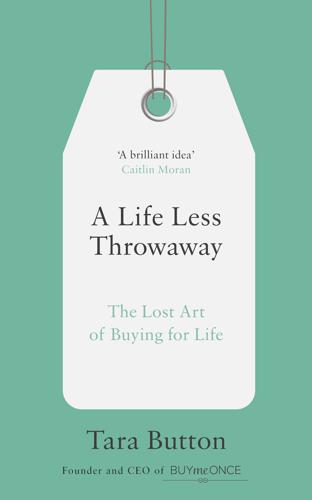
A Life Less Throwaway: The Lost Art of Buying for Life
by
Tara Button
Published 8 Feb 2018
Medical innovation is to be encouraged; however, when it comes to health, while a couple of innovations such as car safety and less polluting cookers have had a big impact, I’d recommend turning a deaf ear to the health and fitness industry’s insistence that we need heaps of equipment, supplements and gadgets. We actually require very little to be healthy. Varied unprocessed food, clean water, clean air and a decent amount of activity. Done. Better fitness Here, I think Christine means a product that is more ‘fit for purpose’ or more ‘convenient’, and I acknowledge that we want innovations to make products better at what they do. However, a huge amount of ‘innovation’ around convenience is also change for change’s sake, and much of the innovation overcomplicates products that worked wonderfully in their simplicity.
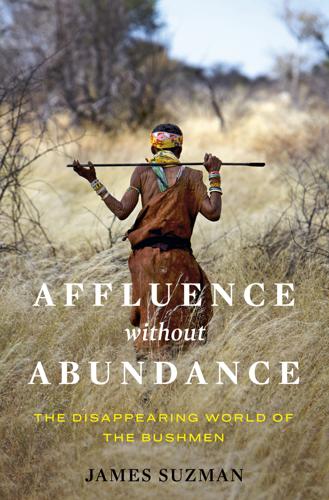
Affluence Without Abundance: The Disappearing World of the Bushmen
by
James Suzman
Published 10 Jul 2017
He believed that without it the “economic problem” could never be solved. In outlining his vision of the future, Keynes differentiated between what he considered our “absolute” needs and our “relative” needs. Absolute needs were the basic elements of a satisfactory life. To his mind this probably included enough food, clean water, comfortable housing, properly managed utilities, universal health care, an effective transportation infrastructure, and so on. He contrasted these with relative needs, which he considered to be those that “satisfy the desire for superiority” and that we embrace “only if their satisfaction lifts us above, makes us feel superior to, our fellows.”
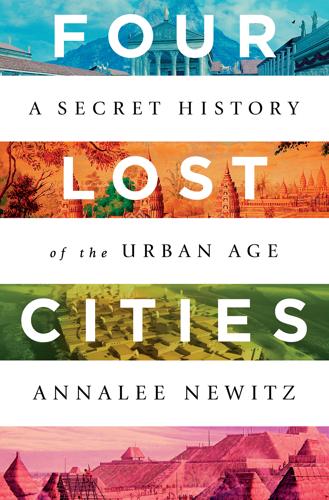
Four Lost Cities: A Secret History of the Urban Age
by
Annalee Newitz
Published 2 Feb 2021
Those feelings might have kept khñum in line, too. Angkorian society was built on debt slavery, but the idea of indebtedness permeated every layer of public life. Inscriptions on temple and palace walls reveal that everyone in Khmer society owed something to someone.5 Even Khmer kings owed their subjects clean water, roads, and other amenities. Debt also cemented political connections between the rulers of outlying kingdoms through the Khmer patronage system. Distant elites paid Yasovarman in precious metals, fine fabrics, and more ineffable tributes like favorable trade relationships and supplies of human labor.
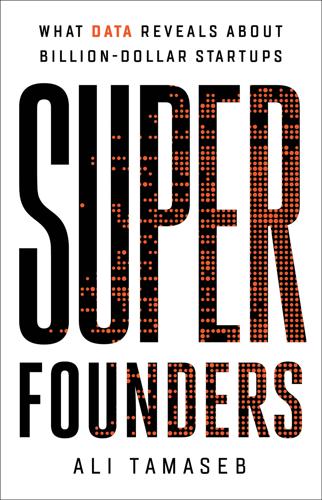
Super Founders: What Data Reveals About Billion-Dollar Startups
by
Ali Tamaseb
Published 14 Sep 2021
Henrique Dubugras, the co-founder of Brex, told me he was most excited about companies focused on rebuilding insurance. Mario Schlosser, the co-founder of Oscar Health, pointed to the wealth of opportunities still left to revamp healthcare. Max Mullen, who co-founded Instacart, raved about the future of food; Max Levchin of Affirm and PayPal talked about the importance of “clean water, access to food, climate change, and improvement in education.” For Neha Narkhede of Confluent, it was “the consumerization of the enterprise,” meaning a bottom-up adoption of tools to make enterprise sales happen. Michelle Zatlyn, the co-founder of Cloudflare, was excited about the future of social networks.
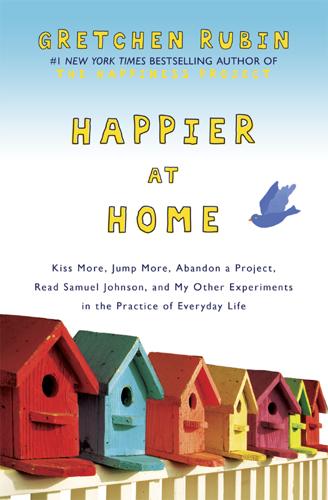
Happier at Home: Kiss More, Jump More, Abandon Self-Control, and My Other Experiments in Everyday Life
by
Gretchen Rubin
Published 3 Sep 2012
Research shows that happiness is the cause and the effect of many desirable circumstances, such as a strong marriage, more friends, better health, success at work (including making more money), more energy, better self-control, and even longer life. Although people sometimes assume that the happy are self-absorbed and complacent, just the opposite is true. In general, happiness doesn’t make people want to drink daiquiris on the beach; it makes them want to help rural villagers gain better access to clean water. I knew that when I was happier, I laughed more and yelled less. I stayed calmer when things went wrong—when Eleanor left a magic marker uncapped on a cushion, or when Eliza got a worrisome burn on her arm. As Oscar Wilde wrote, with his characteristic brand of thought-provoking overstatement, “When we are happy we are always good, but when we are good we are not always happy.”
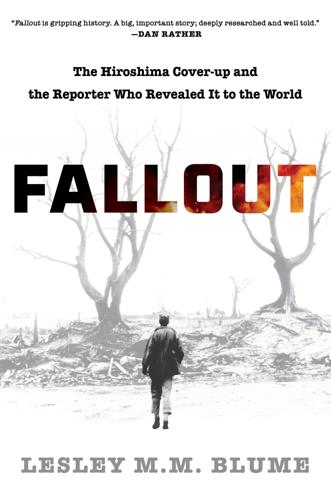
Fallout: The Hiroshima Cover-Up and the Reporter Who Revealed It to the World
by
Lesley M. M. Blume
Published 3 Aug 2020
Had the bomb released a poison gas or perhaps some deadly microorganisms? wondered one, who erroneously concluded at first that he was seeing scores of cases of bacillary dysentery. In any case, the hopelessly outnumbered medical workers were soon unable to treat any condition: their supplies of bandages, drugs, and clean water were quickly spent. Through Father Kleinsorge and Reverend Tanimoto, Hersey was introduced to the only medic from Hiroshima’s Red Cross Hospital who had survived the blast unscathed. Dr. Terufumi Sasaki, a young member of the surgical staff, had been on-site when the bomb went off and witnessed the bomb’s physical effects in the immediate aftermath of the explosion.
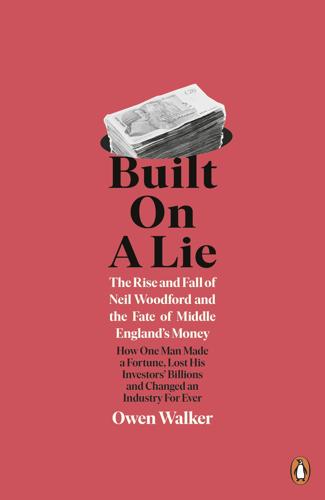
Built on a Lie: The Rise and Fall of Neil Woodford and the Fate of Middle England’s Money
by
Owen Walker
Published 4 Mar 2021
Other companies Woodford invested in also had a tumultuous time – including outsourcer Capita and Touchstone Innovations, the university spin-off group formerly known as Imperial Innovations – with several losing more than a third of their value. Meanwhile, several small companies in which Woodford held big stakes were pulverized. Pharmaceutical group 4D Pharma lost more than half its market value over twelve months, while the pallet maker RM2, Sphere Medical, a Cambridge-based biotech business, and HaloSource, a clean water company, all fell by more than three-quarters. By the end of the summer, Equity Income was the worst performing UK equity income fund for the previous twelve months and the only one to have made a loss over that period. It was a stark reversal of fortunes for a fund that for most of its short existence had led the pack.

Rule of the Robots: How Artificial Intelligence Will Transform Everything
by
Martin Ford
Published 13 Sep 2021
The pace of innovation in areas like transportation, energy, housing, physical public infrastructure and agriculture not only falls far short of exponential, it might be better described as stagnant. If you want to imagine a life defined by relentless innovation, think of someone born in the late 1800s who then lived through the 1950s or 1960s. Such a person would have seen systemic transformations across society on an almost unimaginable scale: infrastructure to deliver clean water and manage sewage in cities; the automobile, the airplane, jet propulsion and then the advent of the space age; electrification and the lighting, radios, televisions, and home appliances it later made possible; antibiotics and mass-produced vaccines; an increase in life expectancy in the United States from less than 50 years to nearly 70.
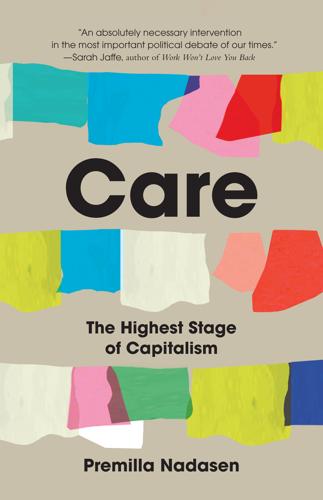
Care: The Highest Stage of Capitalism
by
Premilla Nadasen
Published 10 Oct 2023
This body of scholarship widens the scope of labor organizing and the terrain on which capitalism can be challenged by taking into account the paid and unpaid labor of social reproduction that people engage in for their own well-being and to reproduce labor power for capital.1 This expanded frame of organizing that incorporates social reproduction blurs the boundaries between home and work. It reveals the potential for resistance and solidarity among paid and unpaid workers, as well as among people laboring inside and outside the home not just for work but for life. It situates community struggles such as access to clean water, decent schools, and affordable health care, which are critical for life, alongside the paid labor of social reproduction and unpaid caregiving. These workers and activists, who are disproportionately women, are forging a new, broader definition of feminism, as the authors of Feminism for the 99% argue.2 The scholarship around social reproduction as a site of resistance has shaken traditional Marxist theory out of its complacency and cynicism and awakened it to the political possibilities evident in the recent wave of organizing among teachers, nurses, and domestic workers.
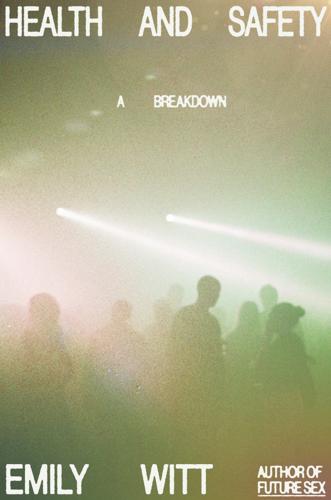
Health and Safety: A Breakdown
by
Emily Witt
Published 16 Sep 2024
When the possibility of a normal middle-class life recedes, exuberant scheming sets in. I realized upon leaving Lagos that it was probably better not to have children. I would not be able to bestow upon them the tools of survival. I had been raised soft, with expectations of public resources—libraries, schools, parks, clean water, boneless and skinless chicken breasts wrapped in packages on refrigerated shelves. I was hopeless at negotiation and pushing my way to the front. The writing seemed impossible. Working from the discredited subject position of a white person writing about a West African country, these culturally deterministic observations I kept having, or even negative judgment, had to be avoided in the work.
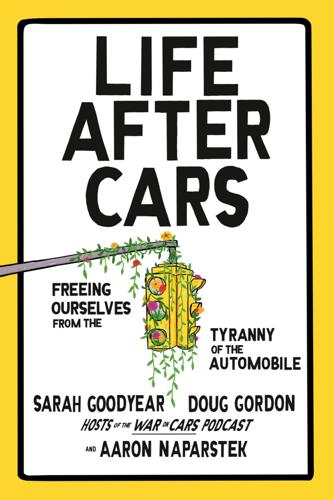
Life After Cars: Freeing Ourselves From the Tyranny of the Automobile
by
Sarah Goodyear
,
Doug Gordon
and
Aaron Naparstek
Published 21 Oct 2025
No one wanted the lockdowns, but the recovery of natural systems that we witnessed—immortalized in the “nature is healing” meme—gave some people hope that positive change was imminent. People were hungry, it turned out, for the chance to reconnect with nature, even in an urban setting. They liked seeing blue skies instead of muddy brown ones. They liked looking at clean water in the harbors of their cities. They found in the natural world one of the few reliable respites from the anxiety and distress engendered by the pandemic and resulting shutdowns. It was a huge and terrible natural experiment in which the variable of cars suddenly was clearly isolated for the first time in generations.
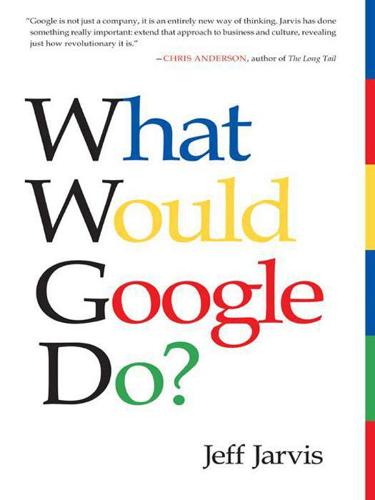
What Would Google Do?
by
Jeff Jarvis
Published 15 Feb 2009
It’s in the clean-seat business. Toto, a Japanese plumbing manufacturer, has decided that the business is neither paper nor clean seats but clean bums and happiness. Toto invented the Washlet automated, computerized toilet seat, a marvel of technology that heats the seat to a cozy 110 degrees and spritzes you with warm, clean water after you’ve done your business. Then it dries you with gentle, warm air even as it magically eliminates odors. (On YouTube, search for “Toto Washlet FlushTV” to see a demonstration by W. Hodding Carter IV, son of the former Carter administration official and author of Flushed: How the Plumber Saved Civilization.)

The 100 Best Vacations to Enrich Your Life
by
Pam Grout
Published 14 May 2007
The most interesting thing about Untours is that all profits are plowed into the Untours Foundation, which gives low-interest start-up loans to people who normally couldn’t get loans. Since the foundation began in 1992, it has given hundreds of loans to such organizations as Greensgrow, a hydroponic vegetable supplier in Philadelphia run by single moms; a vegetarian restaurant in Saigon that supports street children; and a water-bottling company that addresses clean-water issues in developing countries. The Taussigs, who don’t take salaries from their company, believe in living simply and sharing the profits of their business to create a better world. The company’s altruism hasn’t gone unnoticed. In 1999, Untours received the “Most Generous Company in America” award from Paul Newman and George magazine.
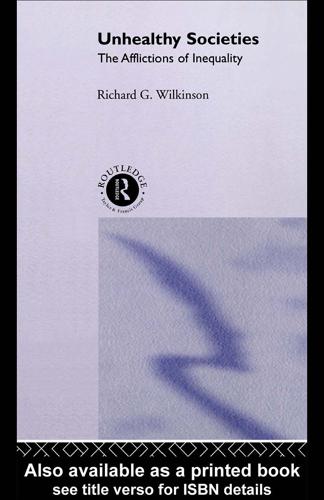
Unhealthy societies: the afflictions of inequality
by
Richard G. Wilkinson
Published 19 Nov 1996
There are other indicators which suggest that medicine may play a substantially smaller role than this. Even among those causes of death where medical treatment is most effective, the social and economic determinants of mortality remain substantially more powerful (Mackenbach et al. 1990). The common assumption that the provision of clean water supplies and sewers accounts for past improvements in health ignores the fact that the bulk of the decline in mortality has been from airborne rather than waterborne diseases. However, we should note that Szreter (1988) has argued that public health measures may have been important beyond the confines of waterborne diseases partly because any measures which reduced the combined onslaught of disease on our immune systems would probably have made us better able to cope with other infections.
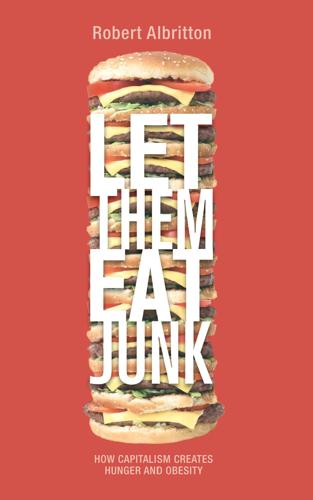
Let them eat junk: how capitalism creates hunger and obesity
by
Robert Albritton
Published 31 Mar 2009
This cannot be done if their standard of living is dependent on commodity prices in the New York or Chicago commodity exchanges or on the enormous bargaining power of giant corporations. 6 AGRICULTURE, FOOD PROVISIONING AND THE ENVIRONMENT Unless greenhouse gas emissions begin to decline within the next decade, we risk triggering a runaway disruption of the world’s climate, one that could last centuries and that our descendants would be powerless to stop … changes in the concentration of carbon dioxide, methane, and other less common gases could trigger an ecological catastrophe of staggering proportions.1 instead of a conscious and rational treatment of the land as permanent communal property, as the inalienable condition for the existence and reproduction of the chain of human generations, we have the exploitation and squandering of the powers of the earth.2 The great question of the seventies is, shall we surrender to our surroundings, or shall we make our peace with nature and begin to make reparations, for we still think of air as free. But clean air is not free, and neither is clean water. The price tag on pollution control is high. Through our years of past carelessness we incurred a debt to nature, and now that debt is being called.3 The above quotation from President Nixon’s State of the Union Speech in 1970 suggests that the central environmental concern was pollution. Words are cheap, and in practice little was done to address pollution by Nixon or any president since him, for it would have been [ 146 ] AG R I C U LT U R E , F O O D A N D T H E E N V I RO N M E N T 147 very costly to have made any significant headway in addressing our debt to nature even in 1970.
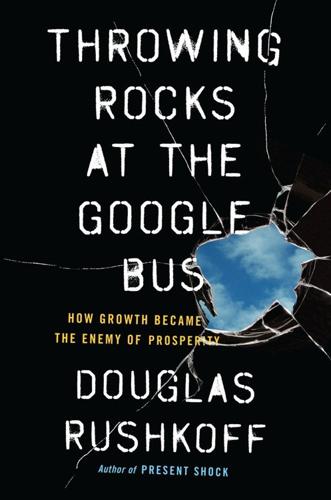
Throwing Rocks at the Google Bus: How Growth Became the Enemy of Prosperity
by
Douglas Rushkoff
Published 1 Mar 2016
There’s only so much land to develop. People can put in only so many hours before they drop. Despite that, the market attempts to treat these fixed factors as unbound. Why should a factory worry about the land on which it pollutes? There’s always some other place to go. There are still plenty of nice trees and clean water in Washington state or Canada. There’s always China or Africa for toxic landfill. At least those countries are getting paid to take the waste. There are thousands of miles of unused land on planet Earth; it may as well be infinite. The same for labor: if the people in this town or state won’t work for less money, then the people in that state or country will.
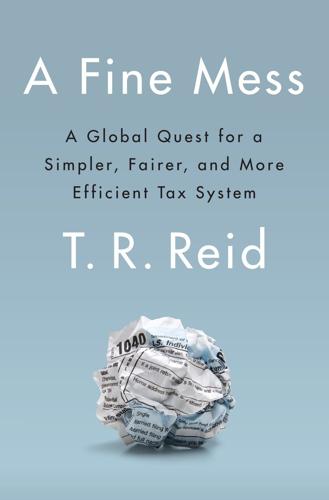
A Fine Mess
by
T. R. Reid
Published 13 Mar 2017
The sugar tax makes a regular Coke cost about 25% more than a Diet Coke; it makes a candy bar significantly more expensive than an apple. To complete the symmetry, the government promised to use some of the money from the sugar tax—initial revenue estimates were $1 billion annually—to improve the purity of the country’s water supply, because a lack of clean water is one of the reasons Mexicans consume so much soda pop in the first place. Some countries, eager to enhance civic participation, charge a tax penalty for people who fail to vote. Mandatory voting is particularly popular in Latin America; among the nations that penalize nonvoters are Argentina, Brazil, Costa Rica, Ecuador, Peru, and Uruguay.

The Financial Crisis and the Free Market Cure: Why Pure Capitalism Is the World Economy's Only Hope
by
John A. Allison
Published 20 Sep 2012
The underlying premise of the neo-Keynesian argument that is driving government economic policy is that demand creates supply, and that the problem in a recession is lack of demand. This is an absurd premise on its face. The families living in the houses being foreclosed have a strong “demand” for housing; however, they are not productive enough (supply) to pay the cost of the housing. The people in equatorial Africa have a strong demand for clean water, sanitary plumbing, electricity, and other such goods. Sadly, they are not productive enough to be able to afford these necessities. The reason the United States entered a recession was not a lack of demand; it was because our resources had been misallocated, so we could not continue to consume (demand) at the same level.

Food and Fuel: Solutions for the Future
by
Andrew Heintzman
,
Evan Solomon
and
Eric Schlosser
Published 2 Feb 2009
The HEW can be built organically and spread as the distributed generation becomes more widely used. The larger hydrogen fuel cells have the additional advantage of producing pure drinking water as a by-product, a not-insignificant consideration in village communities around the world where access to clean water is often a critical concern. Distributed-generation associations need to be established throughout the developing world. Civil-society organizations, co-operatives (where they exist), micro-credit lending institutions, and local governments ought to view distributed-generation energy webs as the core strategy for building sustainable, self-sufficient communities.
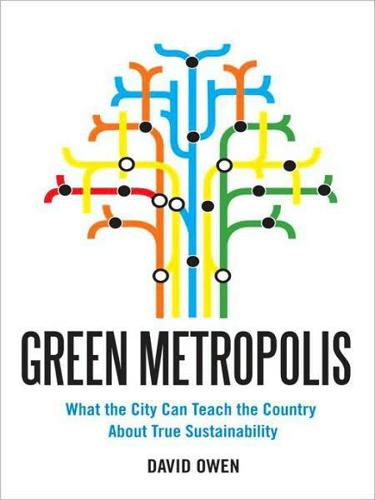
Green Metropolis: Why Living Smaller, Living Closer, and Driving Less Are Thekeys to Sustainability
by
David Owen
Published 16 Sep 2009
Their focus has been on erecting and maintaining barricades around as much unspoiled territory as possible, and, in the manner of Jefferson and Thoreau, on denigrating what they view as ways of life antithetical to that ideal. Protecting undefiled natural areas is an unassailable goal, but Jefferson and Thoreau are poor role models for a world with a rapidly growing supply of people and rapidly shrinking supplies of fuel, clean water, and other resources. The future of humanity will be predominantly urban. From an environmental point of view, we need to apply ourselves to making city life appealing and life-enhancing, not to wishing that doing so were unnecessary. As Richard Louv and I and millions of other American children of our generation discovered in our youth, pulling up the survey stakes next door doesn’t work.

A More Beautiful Question: The Power of Inquiry to Spark Breakthrough Ideas
by
Warren Berger
Published 4 Mar 2014
The trick is to be able to see them, which may require stepping back, shifting perspective, exercising your powers of vuja de. You can also find beautiful questions outside of your familiar environs. Gary White’s ongoing effort to answer58 big questions about water, via his nonprofit group Water.org, all started when, as a student from the Midwest, he took a trip to Guatemala and saw that people in the slums lacked clean water. “It struck me that here I was, just a short plane ride from the U.S., with all we have—and here were these kids walking through sewage to collect contaminated water that could kill them. So I just couldn’t help asking, Why do so many lack this really basic thing that the rest of us take for granted?”
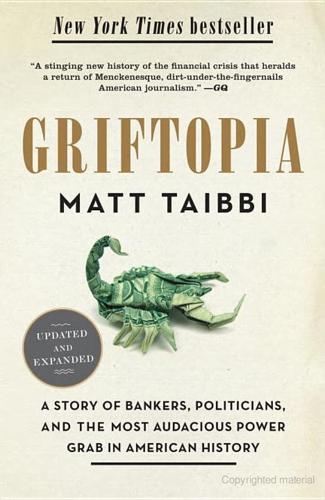
Griftopia: Bubble Machines, Vampire Squids, and the Long Con That Is Breaking America
by
Matt Taibbi
Published 15 Feb 2010
The mechanism involved in these operations—whose real mission was to filter out the unredeemable crap from the merely temporarily distressed crap and stick the taxpayer with the former and Geithner’s buddies with the latter—would be enormously complex, a kind of labyrinthine financial sewage system designed to stick us all with the raw waste and pump clean water back to Wall Street. The AIG bailout marked the end of a chain of mortgage-based scams that began, in a way, years before, when Solomon Edwards set up a long con to rip off an unsuspecting sheriff’s deputy named Eljon Williams. It was a game of hot potato in which money was invented out of thin air in the form of a transparently bogus credit scheme, converted through the magic of modern financial innovation into highly combustible, soon-to-explode securities, and then quickly passed up the chain with lightning speed—from the lender to the securitizer to the major investment banks to AIG, with each party passing it off as quickly as possible, knowing it was too hot to hold.

Fearsome Particles
by
Trevor Cole
Published 2 Jan 2006
It was a system designed to be able to take water straight from a sewer and turn it into something safe to drink, but in this case it was drawing from an army-drilled well. It took me about half a day to learn my job, which was basically to keep my eye on flow meters and follow a standard routine to put clean water through a gauntlet of purification, just in case. All the steps were detailed in a checklist from the Supervisor of Camp Services: 1. Chemical Mixing, Stage 1 Clarification To soften the water and kill off the first possible batch of bacteria on its way from the well to the clarification chamber, I had to dump lime and soda ash from fifty-pound sacks into a chemical mixing box that fed into the water. 2.
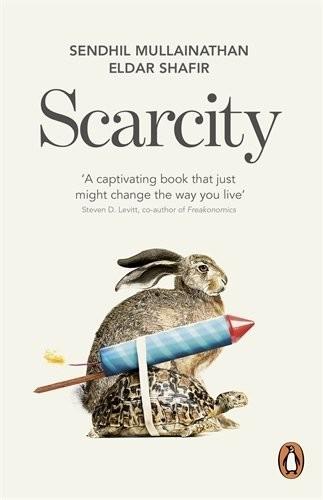
Scarcity: The True Cost of Not Having Enough
by
Sendhil Mullainathan
Published 3 Sep 2014
One solution has been to place a lifetime limit on the number of years that a person can receive welfare. This is driven by a simple impulse: to motivate the unemployed to look for work. It has also led to the chastising of aid programs, and it has occasionally motivated public officials to move away from simple transfers—for example, by charging people for clean water rather than giving it to them for free. It has also occasionally led to programs with strong incentives, such as conditional cash transfer programs, where the amount of aid one receives depends on performing assorted “good” behaviors. But why not look at the design of the cockpit rather than the workings of the pilot?

@War: The Rise of the Military-Internet Complex
by
Shane Harris
Published 14 Sep 2014
But his choice of imagery reflected the anxiety gripping senior leaders in government and business that cyberspace, which seems to hold boundless promise for the nation, is also its greatest unaddressed weakness. “Taking down vital banking systems could trigger a financial crisis,” Obama wrote. “The lack of clean water or functioning hospitals could spark a public health emergency. And as we’ve seen in past blackouts, the loss of electricity can bring businesses, cities and entire regions to a standstill.” FBI director James Comey has said the risk of cyber attacks and a rise in cyber-related crime—to include espionage and financial fraud—will be the most significant national security threat over the next decade.
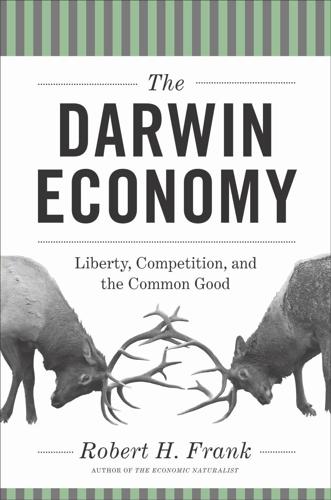
The Darwin Economy: Liberty, Competition, and the Common Good
by
Robert H. Frank
Published 3 Sep 2011
That such cuts could be approved by the House of Repreentatives suggests that we’re becoming, in the coinage of one pundit, an ignoramitocracy—a country in which ignorance-driven political paralysis prevents us from grappling with even our most pressing problems. The same leaders voted to cut nutritional support for low-income women with small children by more than $1 billion and to reduce the Clean Water State Revolving Fund by $700 million. Those programs exist not only to help people in need, but also to prevent costly problems down the road. Cutting them will make future deficits larger, not smaller. The same leaders also failed even to mention their deficit concerns when they opposed the scheduled expiration of the George W.

Digital Bank: Strategies for Launching or Becoming a Digital Bank
by
Chris Skinner
Published 27 Aug 2013
Maybe that’s why Hillary Clinton now wants the US and China to collaborate on cybersecurity for the future and why Barack Obama took time out to write this in the Wall Street Journal in July 2012[30]: It doesn’t take much to imagine the consequences of a successful cyber attack. In a future conflict, an adversary unable to match our military supremacy on the battlefield might seek to exploit our computer vulnerabilities here at home. Taking down vital banking systems could trigger a financial crisis. The lack of clean water or functioning hospitals could spark a public health emergency. And as we’ve seen in past blackouts, the loss of electricity can bring businesses, cities and entire regions to a standstill. This is the future we have to avoid. That’s why my administration has made cybersecurity a priority, including proposing legislation to strengthen our nation’s digital defenses.

Death of the Liberal Class
by
Chris Hedges
Published 14 May 2010
The decimation of the working class and, increasingly, the middle class, means that corporations must employ ever greater levels of corruption and coercion to continue to increase profits. Human misery is being compounded—indeed, it is itself viewed as a source of profit. Corporations such as Bechtel are attempting to buy and control the world’s supply of clean water. All essential elements for existence offer corporations the potential for profit. The demand for capitalist expansion, in a time of growing scarcity and environmental collapse, means we will endure harsher forms of abuse and repression. By silencing those who clung to moral imperatives, the liberal class robbed itself of the language and analytical means to make sense of the destruction.

The Second Machine Age: Work, Progress, and Prosperity in a Time of Brilliant Technologies
by
Erik Brynjolfsson
and
Andrew McAfee
Published 20 Jan 2014
In 2000, for example, there were approximately seven hundred million mobile phone subscriptions in the world, fewer than 30 percent of which were in developing countries.9 By 2012 there were more than six billion subscriptions, over 75 percent of which were in the developing world. The World Bank estimates that three-quarters of the people on the planet now have access to a mobile phone, and that in some countries mobile telephony is more widespread than electricity or clean water. The first mobile phones bought and sold in the developing world were capable of little more than voice calls and text messages, yet even these simple devices could make a significant difference. Between 1997 and 2001 the economist Robert Jensen studied a set of coastal villages in Kerala, India, where fishing was the main industry.10 Jensen gathered data both before and after mobile phone service was introduced, and the changes he documented are remarkable.
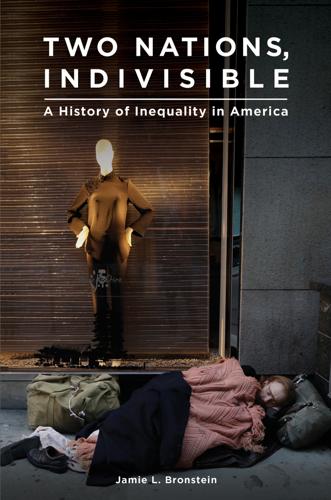
Two Nations, Indivisible: A History of Inequality in America: A History of Inequality in America
by
Jamie Bronstein
Published 29 Oct 2016
The development of canals and railroads meant that shipping goods inland from the Eastern seaboard ports, which had been almost impossible in the eighteenth century, now took less than a week.6 Americans could communicate with unprecedented ease due to the development of the telegraph and the steam-powered printing press.7 The rate of growth of gross domestic product per capita doubled from 0.5 percent per year to almost 1 percent per year. At the same time, the concentration of populations in new urban areas presented problems of crowding, disease, lack of clean water, and lack of sanitation.8 The demand for, and possibility of producing, ever more cotton with slave labor led to the physical expansion of the United States. It also led to the increasing significance of the United States in the share of the world’s cotton production. From 1791 to 1851, the cotton production of the United States expanded from 469 million bales to 2.5 billion bales, and from less than 1 percent of the world production of that staple to 67 percent.
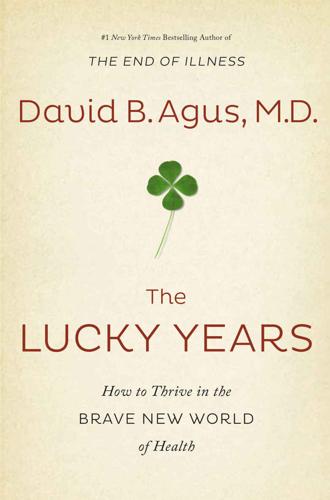
The Lucky Years: How to Thrive in the Brave New World of Health
by
David B. Agus
Published 29 Dec 2015
So by focusing on them, he could revolutionize health in his country. And he did. In 1984, Grameen finalized its “16 Decisions,” essentially a set of commandments that every borrower must accept. The bank set a high bar for itself, with the goal of making each of its branches free of poverty as defined by benchmarks such as having adequate food and access to clean water and latrines. Among the Decisions stipulated in his loans: Decision Four: “We shall grow vegetables all the year round. We shall eat plenty of them and sell the surplus.” Decision Nine: “We shall build and use pit latrines.” When I asked Yunus about the latrine commitment, he explained how sanitation in Bangladesh was horrible at the time his bank started thriving.
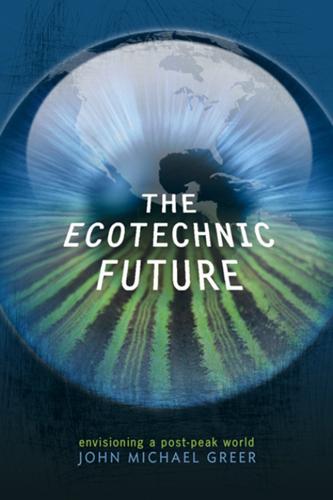
The Ecotechnic Future: Envisioning a Post-Peak World
by
John Michael Greer
Published 30 Sep 2009
First and most obviously, where industrial civilization turns resources into waste, composting turns waste into resources. Today’s industrial agriculture, like the rest of our R-selected technic society, is a linear process that turns fossil fuels and mineral deposits into pollution, and fertile soil, clean water and breathable air into waste management problems. Composting bends the line into a circle, turning waste into a resource that can be used to meet crucial agricultural needs. Second, where industrial civilization works against natural processes, composting works with them. The industrial world’s concept of progress sees it as the conquest of nature, and this way of thinking leads industrial societies to see natural processes as obstacles to be overcome or enemies to be crushed.
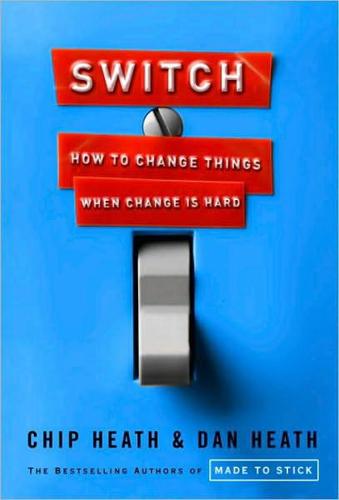
Switch: How to Change Things When Change Is Hard
by
Chip Heath
and
Dan Heath
Published 10 Feb 2010
“We had no idea what we were going to do.” Sternin had minimal staff and meager resources. Sternin had read as much as he could about the malnutrition problem. The conventional wisdom was that malnutrition was the result of an intertwined set of problems: Sanitation was poor. Poverty was nearly universal. Clean water was not readily available. The rural people tended to be ignorant about nutrition. In Sternin’s judgment, all of this analysis was “TBU”—true but useless. “Millions of kids can’t wait for those issues to be addressed,” he said. If addressing malnutrition required ending poverty and purifying water and building sanitation systems, then it would never happen.

The Investopedia Guide to Wall Speak: The Terms You Need to Know to Talk Like Cramer, Think Like Soros, and Buy Like Buffett
by
Jack (edited By) Guinan
Published 27 Jul 2009
The reasoning behind patents is to give innovators time to recoup what are often large research and development costs. In theory, they are a way of using monopolies to promote innovation. Another example of legal monopolies involves public monopolies set up by governments to provide essential services such as clean water and electricity. Related Terms: • Efficient Market Hypothesis—EMH • Law of Demand • Law of Supply • Market Economy • Oligopoly Mortgage What Does Mortgage Mean? A debt instrument that is collateralized by real estate property; the borrower (mortgage owner) is obliged to pay back both the principal and the interest with periodic payments over the course of the loan.

No Such Thing as a Free Gift: The Gates Foundation and the Price of Philanthropy
by
Linsey McGoey
Published 14 Apr 2015
It seemed the foundation was moving from a narrow focus on disease eradication to a more holistic approach to global development. The foundation was recognizing that ill health is often rooted in problems that ‘pharmaceutical bullets’ can’t fix; things as basic – and yet frustratingly hard to achieve – as access to better nutrition and clean water. Since then, a number of the foundation’s investments in agriculture have been praised for taking a farmer-centred approach, helping to increase the ability of smallholders in the developing countries to use locally produced seeds and gain a market for their products. One example is Purchase for Progress, a programme launched by the World Food Programme (WFP), the food assistance branch of the UN.
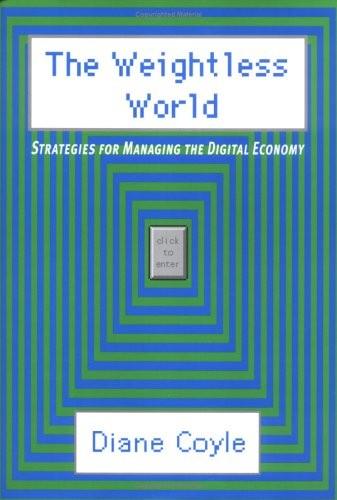
The Weightless World: Strategies for Managing the Digital Economy
by
Diane Coyle
Published 29 Oct 1998
But citizens around the industrialised world have expressed over the years a preference for a growing welfare state. There is no surprise here. Many of the public goods provided by governments during the post-war era are what economists describe as ‘superior goods’. That is, demand for them rises more than in proportion to income. Another way of putting it is to say that they are luxuries. Clean water, roads, defence, basic literacy — these are the necessities provided by the state. Once there, there is no need for their share of spending to expand. But as former prime minister Harold Macmillan expressed it, ‘It is a happy feature of a progressive society that the luxuries of one age become the necessities of the next’.

The Fourth Age: Smart Robots, Conscious Computers, and the Future of Humanity
by
Byron Reese
Published 23 Apr 2018
We will explore this in more detail in part five, but suffice it for now to say that technologies that empower people and promote self-sufficiency, such as the Internet, 3-D printing, cell phones, and solar power, offer the poorest on the planet a real reason to have hope. While technology gives the wealthy five hundred channels of distraction, it will give the poor clean water, inexpensive food, and a hundred ways to unlock their potential. So, will we adopt a UBI? If possibility one happens, then yes, it is highly likely we will. If possibility two happens, then probably. As Robert Reich, a professor of public policy at the University of California, Berkeley, and a former US secretary of labor, said, “Before [UBI] could be taken seriously, the middle class would need to experience far more job and wage loss than it has already.
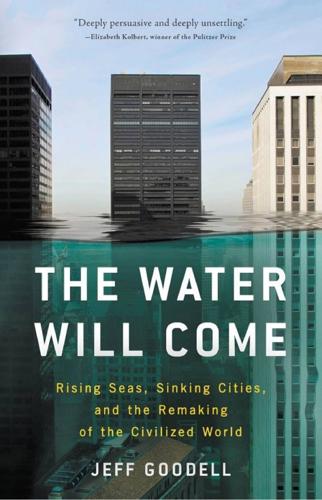
The Water Will Come: Rising Seas, Sinking Cities, and the Remaking of the Civilized World
by
Jeff Goodell
Published 23 Oct 2017
Accessed March 15, 2017. http://www.miamiherald.com/latest-news/article82543332.ece/binary/Letter%20To%20Aminda%20Gonzalez.pdf 12. $1.6 billion on repairs: Patricia Mazzei. “Federal Judge Signs Agreement for $1.6 Billion in Miami-Dade Sewer Repairs.” Miami Herald, April 15, 2014. 13. 86,000 in-ground systems: Linda Young. “Florida Waters: ‘Fountains of Youth’ or ‘Fountains of Yuk’?” Report for the Florida Clean Water Network, February 13, 2015. Accessed March 12, 2017. http://floridacleanwaternetwork.org/florida-waters-fountains-of-youth-or-fountains-of-yuk/ 14. Florida Department of Health: Personal communication with the author. 15. 40 percent: Young, “Florida Waters: ‘Fountains of Youth’ or ‘Fountains of Yuk’?”
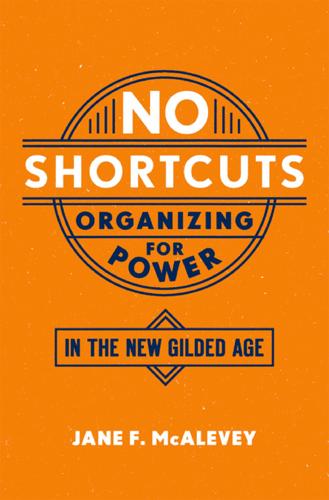
No Shortcuts: Organizing for Power in the New Gilded Age
by
Jane F. McAlevey
Published 14 Apr 2016
I had to do things so that the other workers could see me winning the battle against them. I had a federal court order and I knew the company had to be careful. Within weeks, Ludlum began leading direct actions with dozens, and then hundreds, of his coworkers, including a collective sit-down action to demand clean water for the workers inside the plant. From my interviews with him, it was clear his knowledge of labor law, gleaned from the first organizing campaign and the subsequent legal fight over his termination, was an incredible asset. “I remember everything, his hat, his raincoat, I remember it all,” coworker Ollie Hunt says.
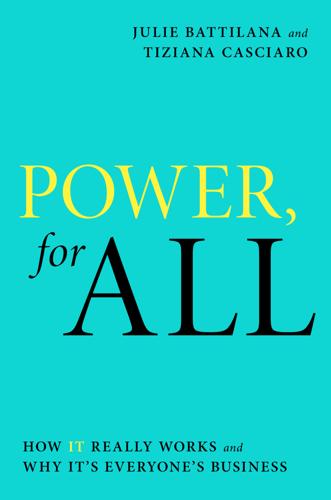
Power, for All: How It Really Works and Why It's Everyone's Business
by
Julie Battilana
and
Tiziana Casciaro
Published 30 Aug 2021
Such control is the key to understanding the power dynamics in any situation, whether it’s one in which you have power over someone else, or one in which they have power over you. WHAT IS POWER MADE OF? To have power over someone, you must first have something, or some things, the other person values. Anything a person needs or wants qualifies as a valued resource. The resource can be material, like money or clean water, acres of fertile farmland, a house, or a fast car. Or it can be psychological, like feelings of esteem, belonging, and achievement. And, as we will see, material and psychological resources are not mutually exclusive. Whatever you have to offer—your expertise, stamina, money, track record, gravitas, networks—will give you power over someone else only if they want it.
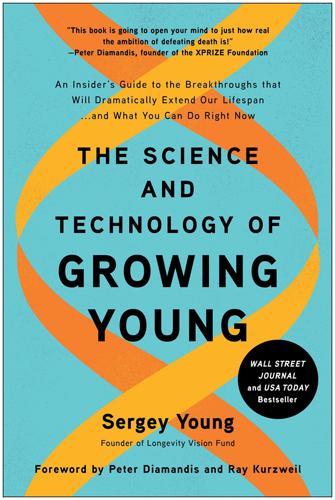
The Science and Technology of Growing Young: An Insider's Guide to the Breakthroughs That Will Dramatically Extend Our Lifespan . . . And What You Can Do Right Now
by
Sergey Young
Published 23 Aug 2021
When I was young, nuclear power was the only “clean” energy option. Solar and wind energies were considered fringe experiments. Today, renewable energy accounts for nearly one-fifth of global energy consumption.12 Air pollution in the United States decreased by 54 percent13 between 1990 and 2010, while the number of bodies of water that meet clean-water standards has nearly doubled14 in just the first twenty-five years since such regulations were introduced. Where electric cars were a not-very-sexy choice reserved for penny-pinchers and do-gooders a few years ago, Elon Musk and the success of Tesla have forced the automotive industry to make carbon-emission reduction a core pillar of its strategy.
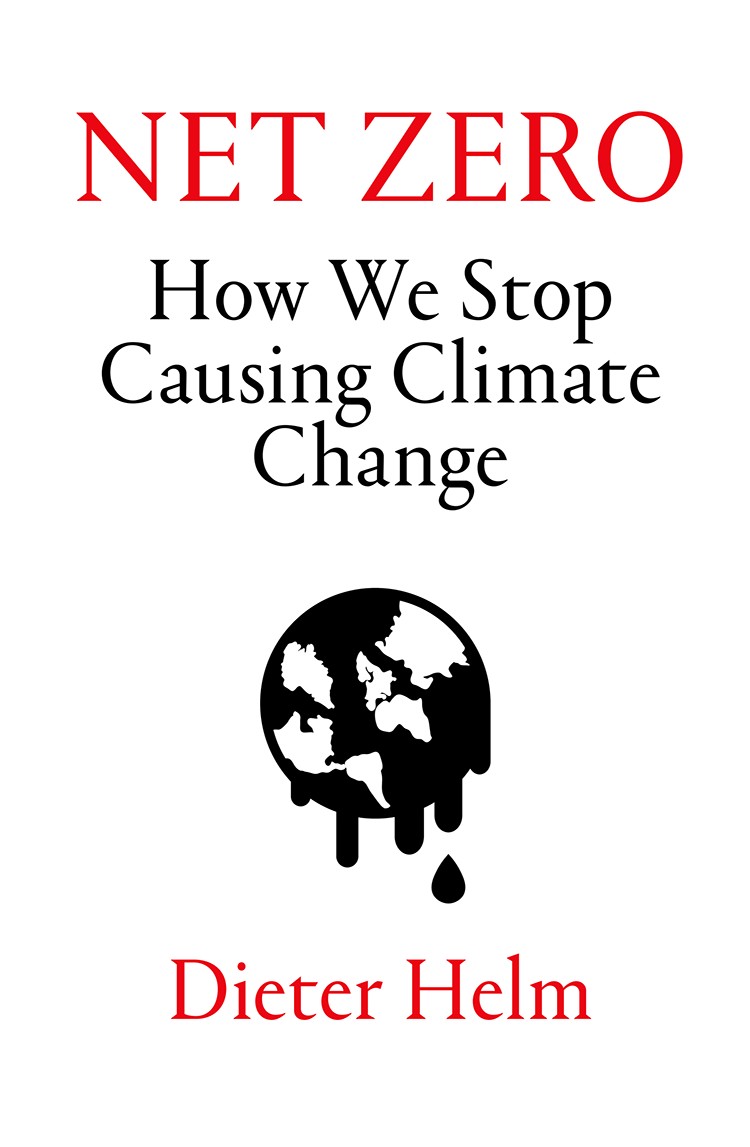
Net Zero: How We Stop Causing Climate Change
by
Dieter Helm
Published 2 Sep 2020
Aside from the carbon issues, we are facing many of the same challenges as the Victorians. Like them, we have new technologies, and we have big environmental and health problems to solve. Victorians had the sewage, the Great Stink of London, lots of water-borne diseases like cholera and typhoid, and they needed clean water for the growing urban populations. They needed to connect their manufacturing to world markets and for this they needed the canals and then the railways. We need a fibre network for communications; we need an electric road system; a railway fit for taking on what regional aviation delivers today; and above all we need an electricity system capable of harnessing active demand and generating decentralised low-carbon electricity.

Green Swans: The Coming Boom in Regenerative Capitalism
by
John Elkington
Published 6 Apr 2020
For a profoundly negative example of such interconnections, recall the European colonization of the Americas, already mentioned, resulting in between 50 and 80 million deaths among indigenous peoples, the collapse of a range of civilizations, and, as farms reverted to nature and the recovering forests drew carbon out of the atmosphere, the onset of the Little Ice Age in Europe.11 A positive example of a Green Swan, which surfaced as a response to Black Swan problems of widespread pollution and disease in cities, would be the spread of clean water, sanitation, sewerage, and related infrastructures. Still only a partial success globally, but nonetheless an extraordinary one. As it happens, our London office is in Somerset House, overlooking the River Thames, and alongside the Embankment—created in a massive project that reclaimed marshland by the river, created expensive new riverside property, and, critically, from the 1860s on included a huge new sewage system.
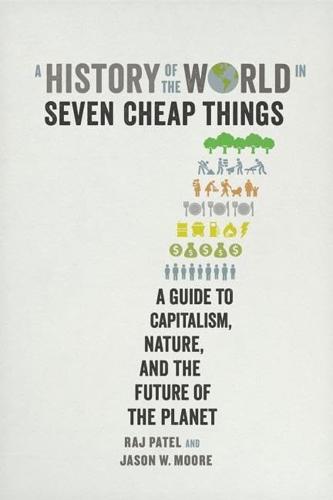
A History of the World in Seven Cheap Things: A Guide to Capitalism, Nature, and the Future of the Planet
by
Raj Patel
and
Jason W. Moore
Published 16 Oct 2017
Look, for instance, at countries with oil in the Middle East and elsewhere for evidence that income growth inhibits women’s rights.73 Look too at a country like India, a site of gross and persistent inequality despite a 500 percent increase in real per capita income over the past forty years. Certainly, increased access to clean water and health care has helped women,74 but women and girls continue to work more than men, for less pay and less food.75 The daily calorie intake of rural Indians has fallen by five hundred over the past forty years, with anemia rates for girls rising over the past ten years.76 One of the ways to peel this apart is through a time-use survey.
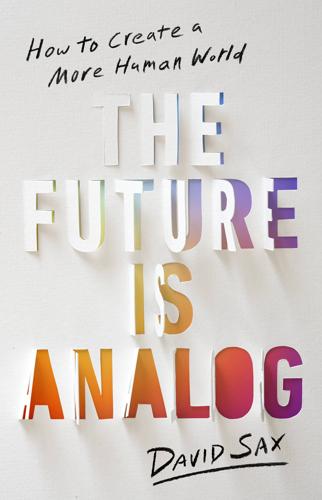
The Future Is Analog: How to Create a More Human World
by
David Sax
Published 15 Jan 2022
Such transformational conversations may be rare, even in person, but they are effectively impossible on social media. And in fact, the precise opposite is far more likely. Online, your existing perspective is far more likely to become further entrenched than to change. “Most of us agree on the core things,” Riley said, noting that everyone wants clean water and good schools, safer communities and healthier families. “Through conversations we can help each other realize that we agree on more things than we think.” While Weave was able to continue a lot of its work in video chats and other online formats during the pandemic, digital conversation proved far less effective at strengthening the social fabric.
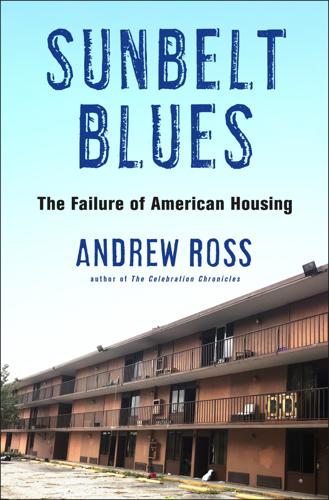
Sunbelt Blues: The Failure of American Housing
by
Andrew Ross
Published 25 Oct 2021
The storms of the future will be more intense and ruinous, and populations in their path are almost certain to be dispersed and segregated according to skin color and wealth. This pattern of separation can rightly be called eco-apartheid, and it is already well established in many American cities, where affluent, resource-rich “green enclaves” coexist with the sacrifice zones of the less fortunate struggling to find fresh air and clean water on the other side of the tracks.32 If North Ranch does indeed turn into a realtors’ plan B for inundated South Florida, the odds are that it will not be for everyone. The LDS church may end up creating a new ark for the self-chosen. BLUEPRINTS AND REALITIES During public hearings, the North Ranch project was promoted as a forward-looking solution for absorbing the explosive growth of Osceola County’s population.

The Rationalist's Guide to the Galaxy: Superintelligent AI and the Geeks Who Are Trying to Save Humanity's Future
by
Tom Chivers
Published 12 Jun 2019
‘I don’t think GiveWell’s list of recommended charities really reflects global priorities,’ she says, ‘and it doesn’t reflect the lists of other experts who do serious cause prioritisation, such as the 50 Breakthroughs report, or the Copenhagen Consensus. There’s nothing about war, nothing about climate change. Only one thing, very recently added, about hunger, only one about water and sanitation. We have a couple of billion people who don’t have access to food and clean water and toilets; it’s weird that those issues aren’t further up the list.’ There’s also nothing about global governance and the rule of law, she adds, ‘which for me, and for George Soros I would observe, would seem like a reasonable thing, if you had a chunk of money’. GiveWell will do the ‘things that are very certain, very repeatable, very proven – we know the impact of the next bed-net, know the costs, know the benefits,’ while OpenPhil is willing to talk about really long-shot things like bioterrorism and superintelligent AI.
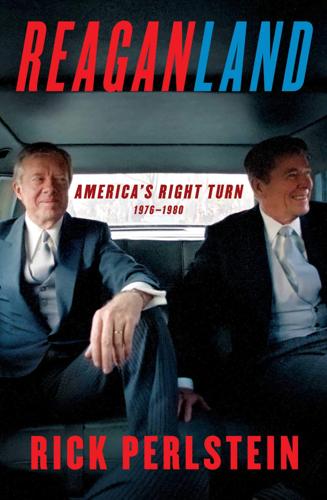
Reaganland: America's Right Turn 1976-1980
by
Rick Perlstein
Published 17 Aug 2020
Thanks to the shower of cash—and because most new consumer and environmental laws awarded attorneys’ fees to plaintiffs who sued to enforce them—lawsuits against corporations increased exponentially. George McGovern considered Nader as his running mate. (He replied, “I’m an advocate for justice and that doesn’t mix with the needs of politics.”) Nixon vetoed the 1972 Clean Water Act, for its “staggering, budget-wrecking” $24 billion cost—but his veto was overridden with considerable Republican votes. In October, he signed a law establishing the Consumer Product Safety Commission, the third new regulatory agency in three years. Then, however, following his landslide reelection, he proposed a radical right-wing budget that Newsweek described as “one of the most significant American political documents since the dawning of the New Deal,” intended to “pull the government back from the proliferating social concerns of the years from Franklin Roosevelt to Lyndon Johnson.”
…
attorneys’ fees Ibid., 105. The Consumer Product Safety Act (1972), the Federal Trade Commission Improvement Act (1974), and the Toxic Substance Control Act (1976) all authorized federal money to support suits providing “substantial public benefit.” George McGovern Green, Bright, Infinite Future, 59. 1972 Clean Water Richard Nixon, “Veto of the Federal Water Pollution Control Amendments of 1972,” October 17, 1972, APP. radical right-wing budget “Mr. Nixon’s Stern New Deal,” Newsweek, February 12, 1973. Thanks to Watergate Vogel, Fluctuating Fortunes, 117. “Until two or three years ago” Ibid., 120. paper airplane Ibid., 133.
…
See Christian schools churches, tax deductions for, 354–355 CIA, Sorensen as potential head, 47 Cicero (IL), 673, 674, 675, 676 Cimino, Michael, 840, 841 Cincinnati, 685 Citibank, 763, 867 Citizens Alert for Morality, 236 Citizen’s Choice, 337, 338, 600 Citizens Committee for the Right to Keep and Bear Arms, 97 Citizens for Decency Under Law, 486 Citizens for Reagan, 69 Citizens for the Republic (CFR), 69, 100, 223, 260, 303, 304, 387, 393 Citizens for the Republic Newsletter, 503 Citizens Party, 911 Citizens Review Committee, 157, 163 civil religion, 577 Civil Rights Act (1964), 346, 674 Civiletti, Benjamin, 137–138 Civilization (TV series), 89 Clapton, Eric, 343 Clark, Dick, 234, 394, 395 Clark, Kenneth, 89 Clark, Ramsey, 649 class action powers, 246, 247 class consciousness, 317 Claybrook, Joan, 202 Clean Air Act (1963), 198 Clean Air amendments (1970), 201 Clean Water Act (1972), 200 Cleveland (OH), 413 Clifford, Clark, 63, 279, 575, 576 Clinton, Bill, 413, 578, 781, 814, 910 clothing, protectionist laws, 190–191 Clough, Susan, 541 Clymer, Adam, 252, 745 CNN, 829, 831 coal strike (Appalachia), 213, 216–217 Coalition for a Democratic Majority (CDM), 826 Coalition for Peace Through Strength, 426 Coalition for the Humanistic Rights of Gays, 88 cobelligerency, 161, 606 Coca-Cola, 189, 336, 457 cocaine, 343, 344 Cochran, Thad, 396 Cockburn, Alexander, 708, 731, 795 Coffin, William Sloane, 871 Cohen, Jerry S., 357 Cohn, Roy, 856 Colby, William, 43 Coleman, Randy, 257 Colorado, 232, 395 Colson, Charles, 67, 487, 608 Commentary magazine, 130 Committee for Abortion Rights and Against Sterilization Abuse, 821 Committee for Responsible Healthcare, 754 Committee for the Survival of a Free Congress, 37, 234, 235 Committee for Traffic Safety, 195 Committee on the Present Danger, 45, 392, 426 Commodore Hotel (New York City), 662–663 Common Cause, 572, 892 common situs, 316 Commoner, Barry, 911 Communism, 42–43, 433 Communist Workers Party, 690, 827 Concerned Citizens of California, 377 Concerned Voters of California, 372 Congressional Black Caucus, 214, 379–380, 459, 598 Congressional Club, 386 Congressional Quarterly, 46 Conlan, John, 24, 25, 97, 241, 249, 480, 484, 608, 722 Connally, John, 7, 18, 68, 70, 266, 449–457, 496, 511, 521, 522, 523, 539, 594, 607, 611, 613, 614, 619–625, 665, 709, 724, 747–748, 752, 768, 806 Connecticut, 559, 567, 757 Conscience of a Conservative (Goldwater), 34, 283, 288 conservation Carter on, 380–381 Reagan on, 221 Conservative Caucus, 35, 45, 46, 65, 69, 71, 80, 96, 231, 256, 387, 490 Conservative Digest, 97, 256, 605, 787 Conservative Register (index), 142 Conservative Union, 426 conservatives in 1976, 30–47 in 1977, 48 in 1978, 337–343 in 1979, 595–609 on abortion, 47, 122–123, 173 Carter-Ford election, 13–14 Carter on, 383 on Carter’s foreign policy, 171 “China Lobby,” 368 in Democratic Party, 397 on economics, 189 on electoral reform, 95 on gay rights, 236 on gays and lesbians, 171 on inflation, 629–630 International Women’s Year, 99, 156–160 in Minnesota, 69 preachers as, 484 protesting fall TV season, 355 on Reagan, 135 Save Our Children, 68 in the Senate, 396 on social issues, 69 in state elections, 231–234 women’s conference and, 179 Young Republican Leadership Conference, 457 See also neoconservatives; New Right Conservatives for the Removal of the President, 34 consumer agency bill, 205, 206, 217 Consumer Issues Working Group, 203, 204, 206–207, 217 consumer price index, 431 Consumer Product Safety Commission, 200, 728 consumer protection legislation, 190–203, 244–249 consumer safety about, 199, 202–205, 219, 461–465 advertising food to children, 461–463 cigarette warnings, 460 funeral homes, 461 “lemon law,” 388 used-car warranty rules, 460 Conyers, John, 223, 379 Cooke, Terrence, 577, 888 Coors, Joseph, 37, 225, 325 Coppola, Francis Ford, 757 Copulos, Milton, 224 Corman, James, 913 corporate PACs, 387–388 corporate power, 192–193, 195, 200–201 corporate tax cuts, 335 Corvair, safety of, 194, 195, 196, 246 Costanza, Midge, 54, 85, 91–92, 128, 296 Costikyan, Edward, 883 Council of Fifty-Six, 606 Council on Wage and Price Stability (COWPS), 383 Cox, Archibald, 654 COYOTE (group), 19 CPD, 835 Craig, Jim, 733, 734 Crane, Dan, 233, 253, 254, 255, 384, 385, 396 Crane, David, 233, 396 Crane, Judy, 385 Crane, Phil, 233, 235, 254, 256, 369, 370, 396, 472, 473, 517, 518, 736, 843 Cranston, Alan, 334, 598, 912 creative destruction, 662 credit card debt, 421 credit controls, 743, 744, 762, 777, 781 crime capital punishment, 68, 123–126, 128, 130, 132, 134, 262, 394 in New York, 129–130, 132, 661 Reagan on, 68 San Diego mass shooting (1979), 420 in San Francisco, 127 serial killers, 117, 126, 132, 133, 149, 415, 419 sex crimes, 116–117 Crisp, Mary, 220, 796, 797 Criswell, W.

The Rough Guide to Brazil
by
Rough Guides
Published 22 Sep 2018
This is the Parque Nacional da Tijuca, an area of some 120 square kilometres. In the seventeenth century, the forests that originally covered the area were cut down for hardwood, the trees replaced by sugar cane and then coffee plantations. In 1857, however, the city authorities, alarmed by landslides and a resulting shortage of clean water, began a reafforestation project, and by 1870, over 100,000 trees had been planted (all species native to the area). Today the park serves as a remarkable example of the potential for the regeneration of the Mata Atlântica. Fauna have also gradually been reintroduced, making the forest once again home to insects, reptiles, ocelots, howler monkeys, agoutis, three-toed sloths and other animals.
…
Barra da Tijuca Bus #308 or #345 from Centro, #INT-01, #INT-02 or #INT-09 from Copacabana or Botafogo, or metrô to Jardim Oceânico As Rio expands westward, many of the city’s more affluent residents have been moving out of the Zona Sul and into new neighbourhoods in the Zona Oeste such as Barra da Tijuca, where property developers have been putting up apartment buildings and shopping malls at breakneck speed. The neighbourhood itself is a car-friendly suburb where you’ll see few pedestrians, but what you really come out here for are the clean waters and white sands of its spacious 16km-long beach. The Lagoa de Marapendi, behind the beach, was once a lagoon full of mangroves, an ecosystem destroyed by development except for its last remaining holdout in the Parque Municipal Ecológico de Marapendi at the lagoon’s very western end. And just in case the Barra’s own beach is not enough for you, there are further beaches to its west at Prainha (Rio’s best surfing beach) and, beyond that, the still largely undeveloped beach at Grumari.
…
The beaches are varied, with the north-facing ones having the calmest and warmest seas, while those facing the south and east have the most surf. Though the beaches at Búzios’ urban centre of Armação look good, the water is polluted and swimming should be avoided; a short distance to the northeast, however, are the very clean waters of the small, rather isolated and extremely picturesque beaches of Azeda and Azedinha, as well as the rather larger João Fernandes, the best place around here for snorkelling. Further east is Praia Brava, bordering a fine, horseshoe-shaped bay that’s rarely overcrowded. On the north of the peninsula, to the west of Armação, is the Praia da Tartaruga, where the water is pristine and, apart from some bars, there are few buildings.
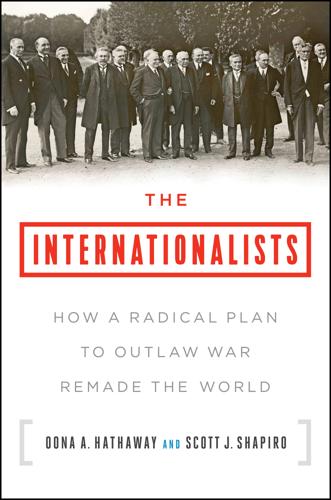
The Internationalists: How a Radical Plan to Outlaw War Remade the World
by
Oona A. Hathaway
and
Scott J. Shapiro
Published 11 Sep 2017
It took the Civil War to give full force to the emancipation of the slaves, and over a century for the Thirteenth, Fourteenth, and Fifteenth Amendments to the United States Constitution to end state-enforced racial discrimination. Similarly, the Americans with Disabilities Act, the Social Security Act, and the Clean Water Act did not achieve their ambitious goals overnight. It took years, indeed decades, of dedicated effort to turn these legal reforms into meaningful change: more equal access for persons with disabilities, increased standards of living, cleaner water—in short, all the profound promises the new laws embodied.
…
(Levinson), 115 Canton, 13 capital punishment (death penalty), 78–79, 141, 236, 251, 254–57, 262, 263–64, 288, 291–92 Capper, Arthur, 114 Carnap, Rudolf, 230 Carnegie Endowment for International Peace, 104n, 211, 246, 469n, 473n Carter, Ashton, 359 Casey, Edward “Ned,” 58–62, 76, 456n “cash and carry” provisions, 177, 190 Cassin, René, 249 Castle, William, 126 Castlereagh, Robert Stewart, Viscount, 67–68 casus belli (“cause of war”), 10, 54, 88, 96, 251, 449n casus foederis (“duty to aid an ally”), 54 Catherine II (“the Great”), Empress of Russia, 84, 310 Catholic Church, xix, 8–9, 21, 73, 95, 220, 221, 222, 226, 231, 234, 236, 281 Central Intelligence Agency (CIA), 329 Central Powers, 169, 317 Chaco War, 323 Changchun, 154 “change in gauge,” 376 Chanler, Lewis Stuyvesant, 258 Chanler, William, 257–63, 266, 282, 283, 290 Charlemagne, 45, 65 Charles VIII, King of France, 38–39, 42–43, 54 Charles X, King of Sweden, 45 Charleston, S.C., 84–92 chemical weapons, 72, 80 Cheney, Dick, 371–72, 380 Chiang Kai-shek, 175, 324 Chicago Daily Tribune, 121 Chicago Herald-Tribune, 121 China, 5, 13, 15, 131–40, 145, 148–60, 164, 172, 180, 181, 313, 316, 318, 324, 349, 352, 358–63, 360, 387, 417–18, 422–23, 487n, 532n see also Manchuria Chinchow, 164 chivalry, 76 chlorofluorocarbons (CFCs), 385–87 Christian Century, 165, 475n-76n Christianity, 22, 95, 116, 118n, 140, 156, 281, 413, 451n, 478n see also Catholic Church; Protestantism Churchill, Winston S., 189, 190–92, 203, 204–13, 250, 279, 283, 321, 345, 401, 516n Cicero, 10 civilians, 72, 74–77, 80, 154, 204, 256, 273, 281, 365, 417, 455n, 456n Civil War, U.S., 331 clarigatio (legal grievance), 35–36 Claudel, Paul, 124, 126 Clausewitz, Carl von, xv, 121 Clean Water Act (1972), 331–32 Clinton, Bill, 372 Clinton, George, 89 Coalition Provisional Authority (CPA), 330 Cohen, Benjamin V., 194 Cohen, David, 390, 395 Cohen, Felix, 50 Cold War, xii, 370n, 405 collective responsibility, 79, 269–71, 282, 283–84, 521n Cologne, University of, 230, 231–34, 235, 244 colonialism, 76, 96, 172–73, 192, 321–22, 323, 341–42, 345–47, 355–57, 364, 398, 404, 462n Columbia University, 108, 115–17, 121, 194, 469n Comité de l’Afrique Française, 398 communism, 228–30, 295, 324 comparative advantage, 343 competition, 4, 22, 50, 103, 224–25, 341–43, 420, 436n Comprehensive Iran Sanctions, Accountability, and Divestment Act (2010), 389 Comprehensive Peace Agreement (2005), 365 Conant, James, 245 “Concept of the Political, The” (Schmitt), 217–19, 226, 292 Congress, U.S., 34, 39, 51, 102–3, 105, 111, 112, 118, 121, 126, 171, 184, 337, 389, 475n conquests, 43, 48–49, 97, 304, 313–15, 316, 317, 319–23, 320, 328, 330 conquistadores, 43, 48–49 conscription, 114–15, 147–48 Conscription Act (1873), 147 Conservative Party, 118 Constitution, U.S., 44, 213–14, 331, 449n Constitution, Weimar, 226–30, 231, 417 Convention for the Amelioration of the Condition of the Wounded and Sick in Armies in the Field (1929), 496n Convention for the Reduction of Armaments (1932–1934), 162 Convention on International Trade in Endangered Species of Wild Fauna and Flora (CITES) (1973), 377 Coolidge, Calvin, 187 cordon sanitaire (buffer zone), 32 “Correlates of War” dataset, 311–13, 323, 347–48, 367–68, 367, 530n, 531n Council of Europe, 384–85 Council of the League of Nations, 105–6, 131–33, 161–62, 465n–66n, 470n Council on Foreign Relations, 167 “countermeasures,” 375–76 Covenant of the League of Nations, 105, 106, 110–11, 119, 127, 128, 132–33, 155–56, 157, 161, 162, 168, 174–75, 195, 212, 330, 465n–66n, 470n, 490n–91n, 502n “Cow’s Tongue Line,” 359–63, 360 Crazy Horse, 51 Crimea, xiii, xvii, 202–3, 204, 309–11, 314, 328, 364, 390–94, 417, 418, 419, 422 “crimes against humanity,” 267, 290–92, 508n “crimes against peace,” 257, 508n criminal law, 80–81, 96, 109, 114–15, 248–49, 253–54, 257, 286–87, 288, 290–91 Cromwell, Oliver, 38, 45 Crusades, 96, 410 “cuartel general,” 78 Cuba, 43, 163, 387 Cushendun, Ronald McNeill, Lord, xi Custer, George Armstrong, 51, 58 Cyprus, 382–85 Cyrus the Great, 47 Czechoslovakia, 240, 241, 244, 318, 330 Dachau concentration camp, 279, 281–82 Daily Mail, 241 Daily Mirror, 178–79 daimyō (feudal lords), 139, 141 Dairen (Dalian), 152–53 Dallas, Alexander, 89 Darfur, 329, 365 Dar-ul-Islam (realm of Islam), 410 Davies, Norman, 51 Dawes, John, 224 Dawes Plan, 224 death penalty (capital punishment), 78–79, 141, 236, 251, 254–57, 262, 263–64, 288, 291–92 Declaration of Independence, xiv “Declaration of the Rights of Man,” 85 “Declaration of the United Nations” (1942), 191–93, 197, 210–12, 330, 345 Declaration of War on Spain (1719), 41 declarations of war, 34, 36, 40, 41, 63–64, 76, 102, 104, 151, 180–81, 190–93, 448n, 483n–84n, 487n “declinists,” 334–35 decolonialism, 76, 96, 172–73, 192, 321–22, 323, 341–42, 345–47, 355–57, 364, 398, 404, 462n defensive wars, 10, 32, 34, 43, 44, 62, 123, 126, 127, 156, 159–61, 199, 213, 253, 333, 341, 353, 370, 406, 416 de Gaulle, Charles, 249 De Jure Belli ac Pacis Libri Tres (Law of War and Peace, The) (Grotius), 20–28, 47–48, 94, 95, 145–47, 299–300, 409, 441n democracies, 85, 111–12, 225, 226, 228–34, 244, 332–33, 334, 336, 369, 391, 448n, 535n, 549n Democracy: A Religion (Maqdisi), 549n destroyers for bases program, 194 Detroit, USS, 128 Dewey, John, 108, 109, 113, 115, 119, 123, 125, 195, 415 dictatorships, 226–38, 244–45, 258–59 Dietrich, Marlene, 286 diplomacy, gunboat, xvii, 51, 96, 97, 134–38, 149, 181, 300, 301–3, 304, 332, 370, 460n, 478n–79n, 480n, 481n disarmament, 109, 116–17, 120, 162, 191, 196, 272–73, 287 Dispute Settlement Body, 379–80 divine law, 29–30, 48, 73–75, 136, 294, 409, 410, 413, 455n Dix, Rudolf, 273–75 Dominican Republic, 187, 242 Dönitz, Karl, 290 Doppō (Soldiers’ Rules), 148 Dorotić, Pavla (Cari), 220–21, 226 “Draft Constitution of International Organization,” 197 Drezner, Daniel, xiii Druze, 413 Dubats, 172 duelling, 109 due process, 256–57, 291–92 Dumbarton Oaks conference (1944), 199–201, 205, 207–8 Dutch East India Company, 4, 8, 13, 14–19, 22–23, 26, 51, 94, 153, 299, 462n Dutch Republic, 3–23, 26–27, 51, 436n–37n, 439n see also Netherlands Dutch West India Company, 17 “duty of war,” 106 East Indies, 4–6, 13, 17, 18, 22, 26, 51, 95–96, 136, 357, 358–59 East Prussia, 322 East Timor, 364 Ečer, Bohuslav, 252–54, 257, 259, 260, 266, 282, 283, 290, 291 Ečer-Chanler theory, 266, 282, 283, 290 economic sanctions, 91, 105–6, 114, 118, 119, 121, 125, 127, 164, 165, 170, 172–75, 179–82, 208, 223, 238, 239, 253, 272, 273, 282, 289, 304, 316, 332, 374, 381, 387–94, 415, 418, 421, 422, 470n, 492n, 522n economies: mercantile, 340 protectionism in (import quotas) in, 342, 371–72, 379, 535n tariffs in, 371–72, 380, 385, 480n Ecuador, 323, 358 Eden, Anthony, 185–86, 207 Eden, Garden of, 375 Edo, 135–37, 138, 141, 147 see also Tokyo Edward III, King of England, 41 “Effect of the Briand-Kellogg Pact of Paris in International Law” report (1934), 170–71 Egypt, 75, 329, 356, 402–8, 531n Eight Books on the Law of Nature and Nations (Pufendorf), 27–28 Eighty Years’ War, 78 Eisenhower, Dwight D., 264 Elba, 65–66, 67, 68–69, 251 Eldon, John Scott, Lord Chancellor, 68 Elements of International Law (Wheaton), 144 Elgin, James Bruce, Earl of, 140 Eliot, Charles W., 107–8 Elsje (Grotius’s chambermaid), 21 Embuscade, 84–85 emergency decrees, 228–33 Encyclopaedia Britannica, 116 “End of Sykes-Pikot” video, 396–97, 413 English Channel, 37n Enlightenment, 29, 75 environmental issues, 341, 377, 382, 385–87, 421 Erasmus, 6 Eric XIV, King of Sweden, 83–84 Eritrea, 172–74, 321 Estado da Índia, 46 Estonia, 318–19, 506n Ethiopia, 172–74, 238, 258, 259, 273, 319, 357, 531n etiamsi daremus (“even if we should concede”) passage, 29–30, 409 Eucharist, 116, 118n “Euromaidan” protests (2010), 310 Europe, 15, 45, 169, 240–43, 286, 317–19, 322, 339–40, 343, 344, 417, see also specific countries European Convention of Human Rights (1950), 384 European Court of Human Rights, 45, 384 European Union (EU), 45, 343, 372, 380, 385, 390, 391, 392, 393, 394, 418–19 exile, 65–66 Exner, Franz, 286, 524n ExxonMobil, 393 failed states, 364–68, 366, 367 Faisal I, King of Iraq, 399 false flags, 80 Farouk, King of Egypt, 405 fascism, 238, 244–45, 258–59 Feilchenfeld, Ernst, 260 Fernando, Cardinal-Infante Ferdinand of Austria, Don, 36 Fiery Cross Reef, 359–63, 360 Fifteenth Amendment, 331 financial crisis (2008), 391 Finland, 177, 322 Fisuserinku-shi Bankoku Kōhō (“Vissering’s International Law”) (Nishi), 144 428, 482n Flechtheim, Ossip, 295 Fleming, Ian, 61 Flick, Friedrich, 216–17, 271–75, 286 Fontaine, Arthur, 120 Fontainebleau, Treaty of (1814), 65, 67, 68, 251 Fordow nuclear facility, 394 Fort Meade, 60 Fourteen Points, 105–6 Fourteenth Amendment, 331 France, ix–xi, 32, 36–39, 41, 65–67, 78, 82–92, 102, 176, 184, 208, 267–68, 317, 319, 321, 322, 349, 355, 376, 396–402, 401 Franconia, 279 Franco-Prussian War, 45–46, 47, 221 Franco-Russian Alliance Military Convention (1892), 102 Frank, Hans, 235–36, 238, 242, 285, 290 Frankfurter, Felix, 167–68 Franklin, Benjamin, 83 Franz Ferdinand, Archduke of Austria, 101–2 Franz Joseph I, Emperor of Austria, 102–3 Frederick II (“the Great”), King of Prussia, 32, 45, 445n-46n “freedom of the seas,” 18, 22–23, 26, 82–92, 95, 104, 105, 118 free trade, 18, 223–24, 332–33, 341–43, 344, 345, 346, 368, 371, 378–80, 419–20 French Revolution, 76, 82–92, 458n Freud, Sigmund, 231 Frick, Wilhelm, 290 “friend-enemy” distinction, 218–19, 220, 222, 223 Fritzsche, Hans, 285, 290, 296, 526n Fruin, Robert, 95, 434n, 435n, 439n, 443n, 461n Fulgosius, Raphael, 24–25, 442n Funk, Walther, 285, 290 Furtado de Mendonça, André, 4–5 Galicia, 239 ganbaru attitude, 151–53 Ganghwa Island, Treaty of (1876), 149–50 General Agreement on Tariffs and Trade (GATT), 372, 378–80, 381 General Treaty for the Renunciation of War (1928), 129, 249, 283, 302 see also Peace Pact (1928) Genêt, Edmond-Charles, 82–92, 460n Geneva, 62–63, 244 Geneva Convention (First) (1864), 77 “Geneva Protocol,” 117–19, 120, 125, 126, 217, 470n genocide, xi, 256, 274, 352, 365 see also Holocaust gens de guerre (combatants), 63 Gentili, Alberico, 49 George III, King of England, 50 Germany, Imperial, 45–46, 249, 251–52, 323 Germany, Nazi, 162, 176, 184, 185, 191, 204, 218, 224–36, 254, 278–80, 286, 318–19, 403, 508n–9n, 526n Germany, Weimar, 225, 226–33, 295 Gerry, Peter, 186–87 Gestapo, 255, 274 Gheyn, Jacques de, 6–7 Ghost Dance, 56–58 “ghost shirts,” 57 Gibraltar, 17–18 Gilbert, Gustave, 256–57, 280 Girondins, 84, 88, 89 global economy, xvi, 14, 16, 17, 28, 55, 96, 133, 173–74, 224, 226, 240, 332–34, 339–43, 346, 368, 371–73, 378–79, 381, 391, 392–93, 395, 419, 420–21, 481n–82n Goa, 324 God, 29–30, 48, 73–75, 136, 294, 409, 410, 413, 455n see also Allah Goebbels, Joseph, 225, 229, 263, 264, 519n Goebbels, Magda, 519n Good Neighbor Policy, 187, 242–43 Gore, Al, 371–72 Göring, Edda, 279 Göring, Hermann, 225, 229, 232–33, 235, 237, 242, 256, 263, 264, 270, 277, 278–80, 281, 284–85, 290, 523n government: democratic, 85, 111–12, 225, 226, 228–34, 244, 332–33, 334, 336, 369, 391, 448n, 535n, 549n fascist, 238, 244–45, 258–59 imperialist, xx, 52, 95–96, 341, 345–46, 355, 369, 410–11, 462n; see also colonialism parliamentary, 228–30, 231, 233–34 social contract and, 11, 29–30, 143, 409 totalitarian, 226–38, 244–45, 258–59; see also Nazism Gragas law code, 379 Grande Armée, 65 Grange, 85 Great Britain, 22, 40, 67–69, 82–92, 102–6, 120, 133, 159–60, 165, 176–82, 184, 189, 191–94, 246, 247, 267–68, 312, 343, 348–49, 396–402, 401, 407, 463n, 500n, 531n Great Depression, 164 Great Mosque (Mosul), 411–12 Great Purges, 257 Greece, 90, 382–85 “Green Line” (Cyprus), 383–85 Grey, Edward, Lord, 474n Gromyko, Andrei, 199, 200, 201, 206 Groot, Cornet de, 95 Gros, André, 267 Grossraum (“Great Space”), 240–43, 286, 289–90, 293, 295–96 Grotius, Hugo, xix–xx, 6–30, 35, 37, 44, 47–49, 53, 54, 61, 62, 69–72, 77, 80, 91, 93–98, 104, 136, 141, 143, 147, 153, 159, 239, 294, 299–300, 303–5, 314, 324, 358, 409, 410, 417, 437n, 441n, 442n, 443n, 449n, 454n, 455n, 460n, 462n, 481n, 527n Group of 8 (G-8), 390–91 Gulf War, 332, 387 gunboat diplomacy, xvii, 51, 96, 97, 134–38, 149, 181, 300, 301–3, 304, 332, 370, 460n, 478n–79n, 480n, 481n Gunjin chokuyu (Imperial Rescript to Soldiers and Sailors) (1882), 148 Gunjin kunkai (Admonition to Soldiers) (1878), 147–48 Gustavus Adolphus, King of Sweden, 42 Gutachten (expert legal opinion), 227, 247, 272, 274, 286–87 Hackworth, Green, 194 Haggenmacher, Peter, 438n, 441n Hague Convention (First) (1899), 77, 79, 93, 97, 109, 445n Hague Convention (Second) (1907), 77, 79, 90, 109 Haile Selassie I, Emperor of Ethiopia, 172–74 Hamilton, Alexander, 86 Hammond, George, 85 Handelshochschule, 226, 229 Hannibal, 449n Hard, William, 118 Harding, Warren G., 112 Harriman, Averell, 207 Harris, Townsend, 133–34, 136, 138–40, 480n Harvard University, 245 Hearst, William Randolph, 164 Heath, Edward, 82 Heemskerck, Jacob van, 3–18, 23–30, 94–95, 143, 144, 358, 436n–37n Heinsius, Daniel, 7 Henry IV, King of France, 6 Henry V (Shakespeare), 37 heralds, 36–37 Hess, Rudolf, 278–79, 285, 290 Hezbollah, 368, 388 Himmler, Heinrich, 225, 237, 263, 264 Hindenburg, Paul von, 227, 229, 232 Hirohito, Emperor of Japan, 148, 159, 180 Hiroshima, bombing of (1945), 213 Hitler, Adolf, 162, 179, 185, 193, 213, 215, 225, 228, 232–38, 240–43, 249, 250, 251, 252, 257–64, 274, 279–80, 289–90, 506n Hitlerite Responsibility Under the Criminal Law (Trainin), 257 Hobbes, Thomas, 294, 381 Hoffmann, Johann Joseph, 142–43 Holocaust, xxi, 264–66, 274, 275, 279, 281, 285, 291–92, 298, 356 Holy Roman Empire, xix, 38–39, 42–43, 45, 65, 73 Hong Kong, 133–34 Honjō Shigeru, 155, 488n Hoover, Herbert, 163–65, 168, 178, 492n Hopkins, Harry, 189–90, 192 Hotta Masayoshi, 140 “House of German Justice,” 238 “How Lovely Are the Messengers That Bring Us Good Tidings of Peace” (Mendelssohn), 94 How Russia Betrayed Germany’s Confidence and Thereby Caused the European War and How the Franco-German Conflict Might Have Been Avoided, 102 Hughes, Charles Evans, 117 Hugo, Victor, 25 Hull, Cordell, 168, 173, 175, 176, 180–81, 185, 193, 197–98, 211, 247, 254–55, 268, 499n Human Nature and Conduct (Dewey), 115 human rights, xv, 22, 294, 346, 377, 382–85, 387, 389, 395 see also “crimes against humanity,” European Convention of Human Rights, European Court of Human Rights, genocide, torture Humboldt University, 220 Hungarian Revolution (1956), 330 Hungary, 318, 330 Husayn ibn Ali, Sharif of Mecca, 399 Hussein, Saddam, 330, 332, 388 Hussein, Uday, 387–88 “hygienic wars,” 96, 240 Hymans, Paul, xi hyperinflation, 221, 224, 226 Iceland, 373–75, 379 Ii Naosuke, 140–41 immunity from prosecution, xvi, 61–63, 71, 77, 80–81, 96, 97, 260n, 454n, 460n impartiality, 87–92, 96, 97, 103, 165, 167, 169–70, 177–78, 182, 246–47, 304, 459n, 460n imperialism, xx, 52, 95–96, 341, 345–46, 355, 369, 410–11, 462n see also colonialism import quotas, 342, 371–72, 379, 535n “independences,” 346–48, 348, 537n India, 328, 352, 357, 383 individual responsibility, 270–71 Indonesia, 4–5, 328, 329, 346, 358 “Inquiry, The,” 116 Inter-Allied Peace Council, 250 Inter-American Bar Association, 247 International Atomic Energy Agency (IAEA), 394 International Coffee Organization, 344, 377 International Court of Justice (World Court), 196, 305, 363, 415 international institutions, xxi, 112, 114, 315, 344–46, 378, 418, 419, 420 see also specific institutions Internationalists, xxi, 94, 95, 106–7, 316, 331, 332, 419–24 International Labor Organization (ILO), 116 international law, xv, xvii, xix, xx, 27–30, 44–45, 47, 52, 61, 87–88, 90, 94, 96, 109–10, 118, 141, 143, 144–50, 153, 159, 167–68, 170–71, 212, 233, 238–39, 246, 248, 249, 251, 257–62, 266–74, 282–90, 299–304, 329, 353, 359, 363, 370–77, 382, 389, 391–92, 394, 406, 415, 420–22, 463n, 521n, 528n International Law (Oppenheim) (Oppenheim), 239, 246–47, 248, 260, 268, 377, 465n-66n International Law Commission, 301–2 International Monetary Fund (IMF), 343, 378, 393 International Olive Oil Council, 344 International Organization for the Maintenance of International Peace and Security, 198 International Whaling Commission, 344 interstate wars, xviii–xix, 214, 312, 332–35, 353, 368–70, 368, 418 interventionist policies, xx–xxi, 29, 43, 48–49, 96, 97, 177, 187, 222–23, 294, 312–13, 369–70, 383, 417–18, 450n–51n, 499n Interventionists, xx–xxi, 96, 97, 294, 417 intrastate wars, xix, 367–69, 367, 539n–40n Iran, 329, 388–90, 392, 394–95, 417 Iran Nuclear Deal, 394–95 Iraq, 330, 332, 367, 387–88, 397–402, 401, 419 Iraq War, 372, 387–88 Islamic fundamentalism, xiii, xx–xxi, 368, 396–415, 416, 417, 549n, 550n Islamic State, xiii, 368, 396–97, 400–402, 411–15, 416, 418–19 islands, legal status of, 358–59 isolationism, 111, 134, 164–65, 173–74, 175, 188, 246 Israel, 322, 355–57, 394–95, 399, 400, 410 Israelites, 74–75 Italian Socialist Republic, 259 Italy, xii–xiii, 172–74, 249, 258–59, 263–64, 329, 357 172–74, 238, 258, 259, 273, 319, 329, 357, 531n ius publicum europaeum (European Public Law), 294 Ivanov, Sergei, 392 Jabhat Fateh al-Sham, 414 Jackson, Andrew, 33, 444n Jackson, Robert H., 179, 248–49, 261–64, 266–68, 271–72, 276–77, 280–83, 291, 295, 298, 304, 377, 521n Jacobins, 89 Jahiliyyah (spiritual ignorance), 406–11, 550n Jahrreiss, Hermann, 234, 285, 286–90, 295, 297n James I, King of England, 19 James Bond, 61, 62 Japan, xiv, 15, 120, 131–84, 192, 193, 205, 213, 214, 250, 289, 302–3, 313, 316–22, 329, 330, 354, 361, 391, 422, 478n–79n, 480n, 490n, 492n, 496n, 505n–6n, 532n Java, 4–5, 346 Jay, John, 449n Jefferson, Thomas, 28, 49, 83, 85–92, 460n Jerome, St., 45 Jerusalem, 356 Jesus Christ, 57, 156, 294 “Jewish Spirit in German Law” conference (1936), 237 Jews, xxi, 21, 106–7, 216, 222, 229, 230, 231, 233–34, 235, 236, 237, 241, 255, 256, 264–66, 274, 275, 279, 281, 285–86, 291–92, 295, 298, 305, 355–57, 399, 403 jihad (holy war), 396, 398, 402, 404–15, 416 Jodl, Alfred, 285, 286, 290 Jodl, Luise, 286, 524n Johnson v.

The Blank Slate: The Modern Denial of Human Nature
by
Steven Pinker
Published 1 Jan 2002
As they must be if the being subjected to the inconstant, uncertain, unknown, arbitrary Will of Men, be the perfect Condition of Slavery?2 Another cause is the technological and economic progress that made it possible for couples to have sex and raise children without a pitiless division of labor in which a mother had to devote every waking moment to keeping the children alive. Clean water, sanitation, and modern medicine lowered infant mortality and reduced the desire for large broods of children. Baby bottles and pasteurized cow’s milk, and then breast pumps and freezers, made it possible to feed babies without their mothers being chained to them around the clock. Mass production made it cheaper to buy things than to make them by hand, and plumbing, electricity, and appliances reduced the domestic workload even more.
…
There may be some truth to this, and for many people it is the morally correct position because it implies that there is nothing superior about Western culture or inferior about the indigenous ones it is replacing. But there is another side to the story. Western societies are good at providing things that people want: clean water, effective medicine, varied and abundant food, rapid transportation and communication. They perfect these goods and services not from benevolence but from self-interest, namely the profits to be made in selling them. Perhaps the aesthetics industry also perfected ways of giving people what they like—in this case, art forms that appeal to basic human tastes, such as calendar landscapes, popular songs, and Hollywood romances and adventures.

Gnomon
by
Nick Harkaway
Published 18 Oct 2017
Wine should not get shoehorned and abused by the market. Wine is old and respectable and erotic and human. I know Goldman once thought about buying Bordeaux – not the wine, the region, so they’d control supply – but they didn’t, and that is a good thing. Wine should not be a value counter in this game, no more than food. No more than healthcare or clean water. There are things that should be immune, and the people who don’t understand that distinction, the distinction between what is fair game and what is not: those are the people who should go to jail. I hire a woman from Zurich called Miranda who specialises in finding underrated material and acquiring a corner on it, and she buys me almost the entire collection of some ageing rocker in London who’s fallen on hard times owing to a divorce.
…
Do you know, first of all, what it is that you have made? What our country is like, out there in the streets, right now? Everything has come to a halt. Soon it will be dark and grim. There will be no food in the market places, no petrol in the pumps, no medicine in the hospitals. There will be no clean water, even, in the pipes. Can you imagine a more horrible thing to a modern man than the discovery that the basic stuff of life – pure water, that he considers so absolutely tamed and delivered by the system in which he is invested – is not any longer his to command? That no amount of angry telephoning will bring it back, even if he could call anyone?
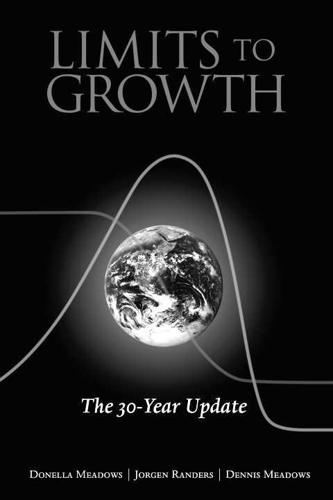
The Limits to Growth: The 30-Year Update
by
Donella H. Meadows
,
Jørgen Randers
and
Dennis L. Meadows
Published 15 Apr 2004
Forrester is the intellectual father of the World3 model and of the system dynamics modelling method it employs. 4. See the Report of the World Summit on Sustainable Development, United Nations, A/CONE199/20, New York, 2002 (also available on wwwun.org), which includes the targets agreed to in the Plan of Implementation; for example, to halve by 2015 the number of people who lack access to clean water and sanitation, to reduce the global loss of biodiversity by 2010, and to restore global fisheries to maximum sustainable yield by 2015. In spite of the level of concern reflected in these commitments, in the eyes of some NGO observers the WSSD did not make much progress, and in some cases even backtracked on commitments made in Rio 10 years earlier. 5.

QI: The Second Book of General Ignorance
by
Lloyd, John
and
Mitchinson, John
Published 7 Oct 2010
Although around 75 per cent of people infected with cholera don’t develop symptoms, the germs can be present in their faeces for up to a fortnight, thus helping to spread the disease. People with damaged immune systems – through malnutrition, for instance, or HIV – are the most likely to die. Most horribly of all, the perfect situation for cholera to spread is a refugee camp, where survivors of disasters are huddled together with inadequate supplies of clean water, and where human waste isn’t safely processed. The same applies to a city where the infrastructure has been damaged by, say, an earthquake, a flood, or a ‘humane intervention’ with so-called ‘smart bombs’. Dead bodies don’t come into it: cholera pathogens in a corpse rapidly become harmless. Yet the myth that the disease is caused by ‘bodies piling up’ is almost universally believed, with even the most respectable news outlets repeating it every time there’s an outbreak of cholera following a disaster.
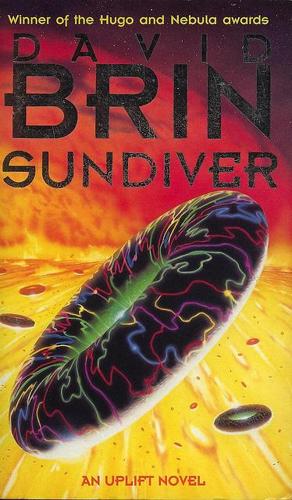
Sundiver
by
David Brin
Published 15 Jan 1995
Fagin was silent. Not even the silvery chimes moved at the ends of his blue-green branches. “Come on in and sit down, Helene,” the physician said. “I’m sure the others will be here soon.” With his eyes he commiserated. Walking into this room was like wading into a pool of very cold and not very clean water. She found a seat as far from the-others as possible. Unhappily, she wondered what Jacob Demwa was up to. I hope it’s not the same thing, she thought. If this group in here has anything in common, it’s the fact that they don’t even want the word “Sundiver” mentioned. They’re just on the edge of tearing each others’ throats out, but all the same there’s this conspiracy of silence.
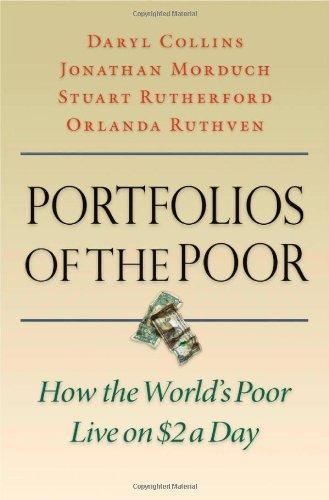
Portfolios of the poor: how the world's poor live on $2 a day
by
Daryl Collins
,
Jonathan Morduch
and
Stuart Rutherford
Published 15 Jan 2009
In all communities we selected a small number of households that local key informants identified as “comfortable,” “better-off,” and that had incomes, asset levels, and access to services that provided evidence of their economic and social well-being. Such households rarely if ever go hungry, consume a varied set of foods that includes high-cost items, and have good-quality housing and access to schools, health services, and clean water. These households have a high level of security: unless something disastrous happens, they are assured of meeting their basic needs. During the process of choosing the households, we did not explicitly measure levels of poverty or objectively rank houses, as we believed the resources needed to do this rigorously would have reduced the levels of information acquired about microfinance.
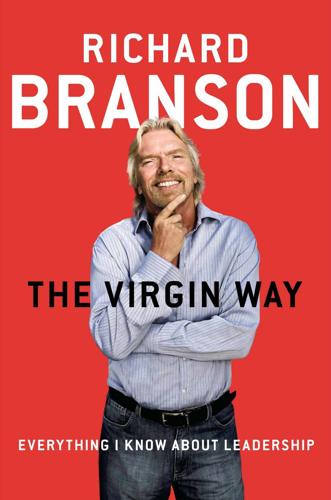
The Virgin Way: Everything I Know About Leadership
by
Richard Branson
Published 8 Sep 2014
While effective environmental regulations are necessary for sure, big business can lead the way and grease a lot of very creaky inefficient wheels. As a postscript to this story I should perhaps note that in May 2013 Wal-Mart was fined $110 million for six counts of violating the US’s federal Clean Water Act by illegally disposing of hazardous materials at its stores across the US, so while they are clearly making serious efforts in many areas, it would appear that in others they are not exactly a paragon of environmental virtue just yet! GE WHIZZ And last but by no means least, companies that commit to doing good for the planet almost always find it to be good for business as well.
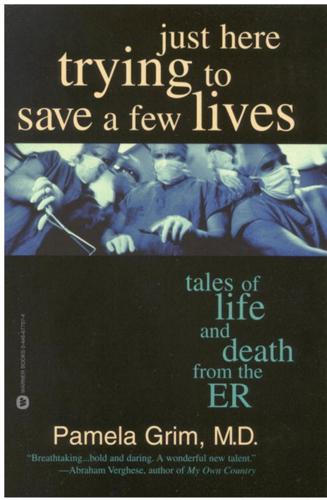
Just Here Trying to Save a Few Lives: Tales of Life and Death From the ER
by
Pamela Grim
Published 1 Jan 2000
I knew this technique, just keep repeating the same useless thing over and over again until the irritated foreigner gives up and goes away. Especially effective when backed by artillery. “I've seen them die,” I said. I surprised myself. I had no idea what I would say next. “I've seen children die. Every day I go to work and I see children that are dying because there is no clean water, because they have worms, malaria, cholera, typhus. And what do you do? You close your clinic at eleven in the morning. No patients, no beds.” He stood there now, fully revealed in the floodlight of my rage. He wasn't a doctor, he was a bureaucrat. There was nothing compelling about life to him, except perhaps his own.
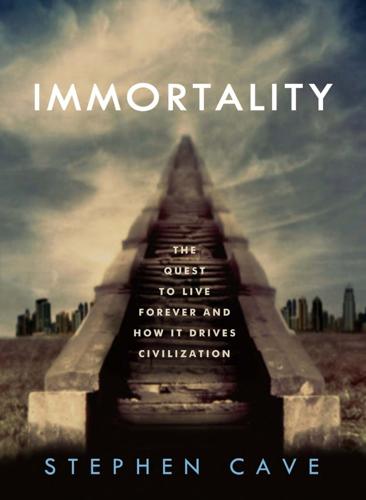
Immortality: The Quest to Live Forever and How It Drives Civilization
by
Stephen Cave
Published 2 Apr 2012
This was a popular idea in the nineteenth century, advocated by writers like the philosopher and scientist Herbert Spencer, coiner of the phrase “survival of the fittest,” and it is now being taken seriously once again. People in modern cities long ago lost the ability to survive independently—we are utterly reliant on a complex higher-level system for clean water, food, clothing, shelter, medicine, security and energy. Like the specialized cells of our bodies, which have given up their independence for the greater strength and security offered by life as part of a macro-organism, we have each given up our independence to be part of strong and secure superorganisms.
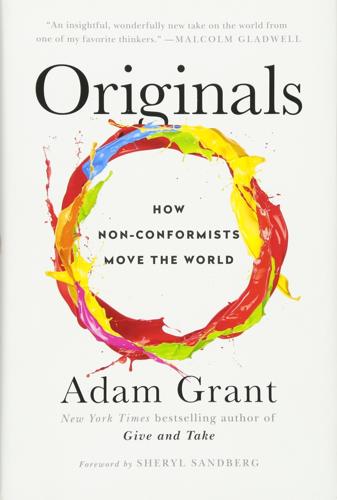
Originals: How Non-Conformists Move the World
by
Adam Grant
Published 2 Feb 2016
“Passionate people”: Eric Schmidt and Jonathan Rosenberg, How Google Works (New York: Grand Central, 2014). The four founders weren’t hindered: Personal interviews with Lon Binder, December 30, 2014, and Neil Blumenthal and Dave Gilboa, February 2, 2015. As an inventor: Adam Higginbotham, “Dean Kamen’s Mission to Bring Unlimited Clean Water to the Developing World,” Wired, August 13, 2013, www.wired.co.uk/magazine/archive/2013/08/features/engine-of-progress; Christopher Helman, “Segway Inventor Dean Kamen Thinks His New Stirling Engine Will Get You off the Grid for Under $10K,” Forbes, July 2, 2014, www.forbes.com/sites/christopherhelman/2014/07/02/dean-kamen-thinks-his-new-stirling-engine-could-power-the-world; Erico Guizzo, “Dean Kamen’s ‘Luke Arm’ Prosthesis Receives FDA Approval,” IEEE Spectrum, May 13, 2014, http://spectrum.ieee.org/automaton/biomedical/bionics/dean-kamen-luke-arm-prosthesis-receives-fda-approval. 3: Out on a Limb Out on a Limb: Susan J.
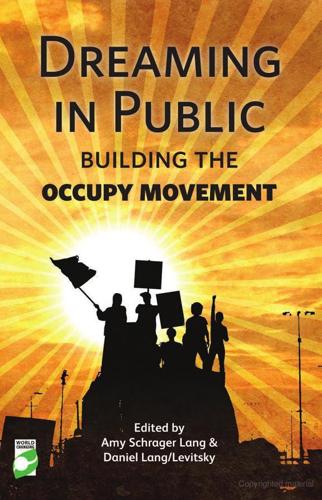
Dreaming in Public: Building the Occupy Movement
by
Amy Lang
and
Daniel Lang/levitsky
Published 11 Jun 2012
If ideas of the ‘general welfare’ or ‘the common good’ have been met and vanquished by the privatization of everything from prisons, utilities, schools and social services to emotional life; if contingent (or, in the case of interns, unpaid) labor is an increasingly acceptable norm; if retirement pensions and healthcare are luxuries to be bargained away by unions or flatly withdrawn by employers; if Congress need not declare war or acknowledge peace, US citizens can be summarily executed without trial, and non-citizens held in ‘indefinite detention’ at Guantánamo or in Immigration and Customs Enforcement detention centers; if clean water, food, and air – or even planetary survival – are no longer matters of governmental concern, then what? If everything and, therefore, nothing constitutes a ‘community’, which is to say a target market for commodities, policies, or both – from ‘the Intelligence community’ to ‘the Public Broadcasting community’ to ‘the knitting community’ – if, in short, there is nothing but this, what is there to demand except everything?
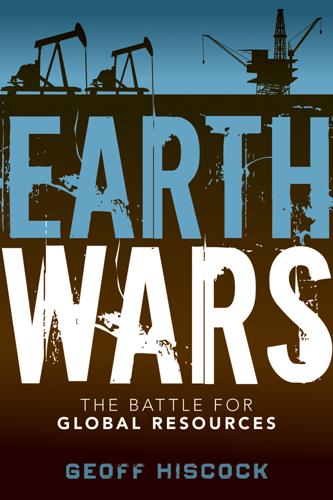
Earth Wars: The Battle for Global Resources
by
Geoff Hiscock
Published 23 Apr 2012
Maria Neira, dirty water, inadequate sanitation, and a lack of hygiene take the lives of about 2.2 million children under the age of 5 every year. Of these, 1.5 million die from diarrhea. In India alone, about 400,000 children die annually from diseases spread by contaminated water. With the right measures, these are preventable deaths. And there is a significant economic benefit from providing clean water and better sanitation to people. This one measure can add as much as an extra 2 to 7 percent to a country’s gross domestic product, according to the World Health Organization. When water is polluted, purification can make it potable. But in a country like India, many rural inhabitants have no access to power or running water, meaning that a water purifier must be able to operate in the most basic environment.
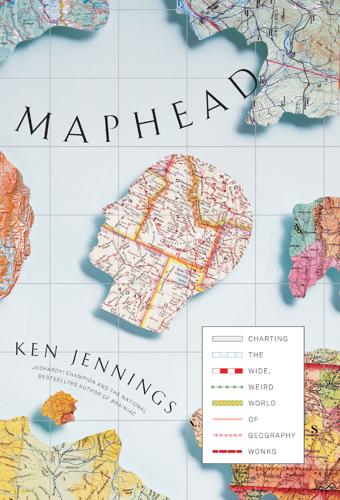
Maphead: Charting the Wide, Weird World of Geography Wonks
by
Ken Jennings
Published 19 Sep 2011
he tells me he remembers thinking. We’ve met for lunch in a brewpub in Portland, Oregon, where he now lives. I order a burger, rare, then feel a little guilty when Chris asks for the vegan special, something virtuous with tofu and quinoa. I wonder if the waitress can guess which one of us is an expert on the clean-water crisis in developing nations. He did some back-of-the-envelope math, leveraging his growing skills at sniffing out cheap travel deals, and realized he could do it for $30,000. That’s still a lot of money, of course; most people don’t have $30,000 between the couch cushions that they can, on a whim, drop on around-the-world travel.

Early Retirement Extreme
by
Jacob Lund Fisker
Published 30 Sep 2010
These can also be classified into tangibles like air, water, food, sanitary, shelter, communication, transport, health, and security, and intangibles, like time, relationships, affiliation, power, and achievement. Some of these, like security and sanitation, we take for granted living in the developed world. For others, except perhaps air and clean water, there's a large range of possible "consumption" levels. For instance, the eating list ranges from roadkill and dumpster diving, to industrially processed "food," to gourmet meals and fine dining. Clothing ranges from going naked to owning just one set of clothes, to owning massive wardrobes full of shoes and tailor-made suits.
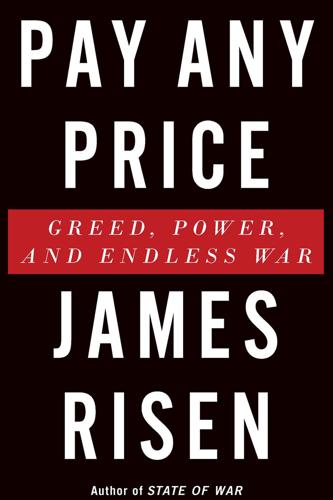
Pay Any Price: Greed, Power, and Endless War
by
James Risen
Published 15 Feb 2014
But KBR was much larger and generated far more money. KBR was the company that allowed America to go to war without a draft. The United States did not have to send tens of thousands of soldiers to Iraq or Afghanistan to perform the traditional supply and rear echelon work of an army, like building bases, cooking food, or finding clean water. KBR contractors did all of that instead. Napoleon famously said that an army travels on its stomach. Well, then, the American army traveled on KBR. It was the company that made it possible to prosecute wars of choice. It was so big and so influential—so necessary to the Iraq enterprise—that KBR was repeatedly able to survive controversies and investigations and a lengthy series of allegations of wrongdoing in its operations in Iraq.
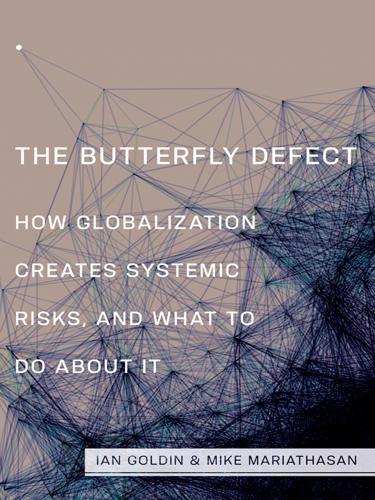
The Butterfly Defect: How Globalization Creates Systemic Risks, and What to Do About It
by
Ian Goldin
and
Mike Mariathasan
Published 15 Mar 2014
These incubators for the development and spread of infectious diseases are expected to grow particularly rapidly, because virtually all the growth in megacities will be occurring in developing countries over the coming decades and because many of them have shantytowns and other communities in which people are living in poor conditions. Inequality within cities and the exclusion of parts of their populations from the basic benefits of sanitation, clean water, and medical care are thus sources of potential pandemic risk. The risk of concentration also amplifies the risk of connectivity both within the urban conglomeration and globally, not least because major airport hubs tend to be located alongside these cities. If a disease originates in a metropolis, it is nearly impossible to prevent it from spreading around the globe.
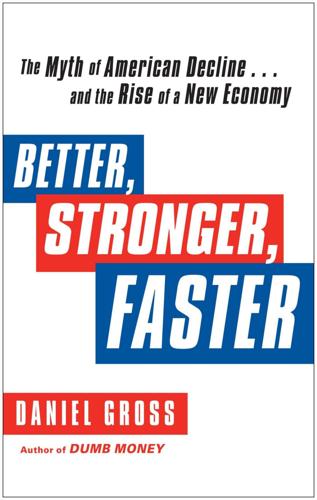
Better, Stronger, Faster: The Myth of American Decline . . . And the Rise of a New Economy
by
Daniel Gross
Published 7 May 2012
The continual search for ever cheaper labor yields diminishing returns. It’s not always cheap to conduct business in developing countries. Luanda, Angola, tops the Mercer Consulting survey of the most expensive cities and countries for business, followed by Tokyo, N’Djamena in Chad, and Moscow.5 You can get all the cheap labor you like, but if there’s no clean water, if office space is insanely expensive, if an Internet connection costs thousands of dollars per year, and if organized crime runs rampant, the costs can pile up. Driving around Vietnam is an adventure. The narrow streets of Ho Chi Minh City and its exurbs are clogged with traffic. Hordes of scooters carrying everything from four-person families to pigs jostle with semitrailers.
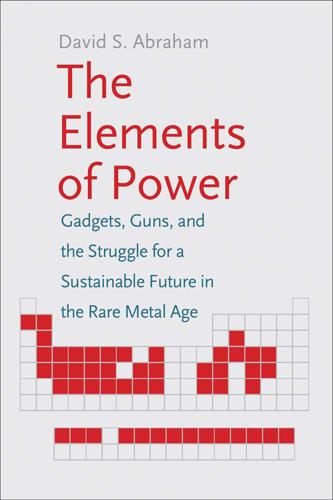
The Elements of Power: Gadgets, Guns, and the Struggle for a Sustainable Future in the Rare Metal Age
by
David S. Abraham
Published 27 Oct 2015
The future market looks bright for these traders, as we will see, because high-tech goods are getting cheaper, green products are more in demand, and countries are spending more on defense. The proliferation of cheaper rare metal–laden technology is colliding head-on with the increasing purchasing power of people in even the poorest communities. This can create surreal scenes—in places that have no clean water or paved roads, people have phones and TVs—but it also sows the seeds of a high-tech lifestyle in new lands.20 As demand for these rare metals grows, it is important to understand the environmental and geopolitical effects of increased production. Whereas the total environmental impact of producing rare metals is small in comparison to producing traditional commodities, the impact per kilogram (or pound) is far greater because of the quantity of chemicals and energy needed to refine the metals.

Culture of Terrorism
by
Noam Chomsky
Published 19 Oct 2015
Meanwhile, government “Army patrols continue to enter areas of conflict as a raiding force, rather than a governing presence with a political vision that appeals to the peasantry,” according to military analysts; “both American officials and members of his own party say Mr. Duarte has failed to administer effective social programs, despite ample American aid,” and “his ruling Christian Democratic party, they say, has become a corrupt political machine in a land where most Salvadoran peasants cannot find work, clean water or health care.” U.S. economic aid supports “the businesses of the rich,” whose “wealth . . . is safe because taxes are collected irregularly and dollars can be quietly tucked away in Miami bank accounts” and whose sons “are safe because there is no draft and the army press gangs do not pick up young men in affluent neighborhoods, one expression of the class character of the war.”
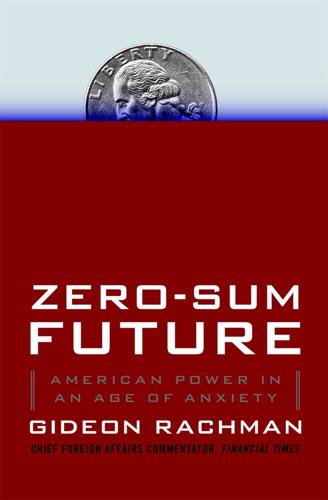
Zero-Sum Future: American Power in an Age of Anxiety
by
Gideon Rachman
Published 1 Feb 2011
He has a habit of rocking backward and forward when talking about a subject that particularly engages him. When he is particularly keen to make a point, he sometimes leaps to his feet and marches around the room, cursing and gesticulating. But there is no mistaking the force of Gates’s intellect. On every topic that we discussed, from malaria prevention to clean water and AIDS, he seemed to have devoured the academic research and to be pressing for new advances. But what was most striking about the founder of Microsoft was not his wealth or his intellect. It was his optimism. Gates was convinced that the world’s toughest problems could be cracked—if you could just find the right people and enough money, and then applied the power of technology.
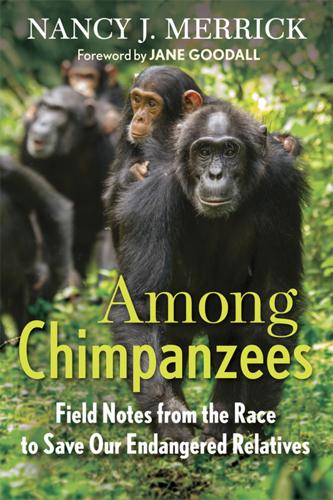
Among Chimpanzees
by
Nancy J. Merrick
They had addressed community groups about health and hygiene, reaching an estimated 1,200 people—all in a month—and had provided birth-control pills or long-acting contraceptive injections to several hundred. In fact, they constituted one of the few groups in Uganda we had seen that was willing to not only openly discuss contraception but also provide it on the spot. These workers had also talked with households about the importance of clean water sources and hand washing to reduce diarrheal deaths. And in the course of this work, they were greatly augmenting the efforts of the local health clinic, which had vacancies for ten of its nineteen positions. The meeting went on for two solid hours, much of it led by Alex, who tested their knowledge of hygiene and of indicators of tuberculosis and badgered them with bad jokes that prompted belly laughs.

Streetfight: Handbook for an Urban Revolution
by
Janette Sadik-Khan
Published 8 Mar 2016
“People want their homes to be beautiful, not ugly. I want that for the entire city.” Urban ugliness is often a by-product of municipal structures and utilities that were built with function, not people, in mind. In the poorer hillside neighborhoods, desolate lots with massive cisterns that held clean water for the community for decades have over the last decade been turned into landscaped community centers called UVAs (Articulated Life Units; in Spanish, the anagram cheerfully spells the word for “grape”) with outdoor water spouts where neighborhood kids can splash around. Included are recreation rooms for arts and crafts, dance lessons, and computers where kids can surf, research, and write.
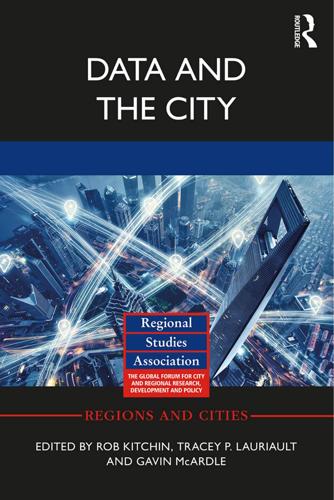
Data and the City
by
Rob Kitchin,Tracey P. Lauriault,Gavin McArdle
Published 2 Aug 2017
Since 2010, I have been involved in volunteer computing as part of the IBM World Community Grid (WCG) project, as a way of experiencing volunteer computing on my work desktop, laptops and later on my smartphone. Even though I am only one of 378,000 participants in the project, I am part of the long tail – ranking 20,585 with my top contributions being for FightAIDS@Home and Computing for Clean Water projects. The operation of WCG transformed my volunteering into a ‘device’ and it disburdened me from actively dedicating time to support the project. From time to time, I notice the screensaver on my computers and am pleased to see the IBM WCG icon on my smartphone in the morning, knowing that it has used time since being fully charged for some processing.
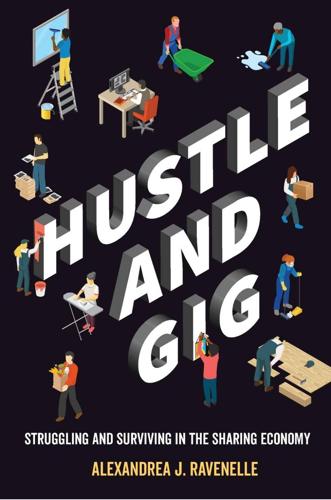
Hustle and Gig: Struggling and Surviving in the Sharing Economy
by
Alexandrea J. Ravenelle
Published 12 Mar 2019
It was a very nice place, a backyard with a pool. And he hadn’t cleaned it out in years, so the pool was just real—oh, it was just—I don’t know what it was. . . . I think it was just mildew, and mosquitoes, everywhere. So he wanted me to go into it, scoop the stuff out, and that’s pretty much it. And then, add clean water. I guess it was one of those little ponds you put fish in. It had a little flowing waterfall. Kind of peaceful—a little meditation pond. Very small, but it’s very deep. It was quite deep, and I had to climb into it, too. I’d say it’s probably three feet deep. The stuff came up to right here [he pointed to right below his knees].
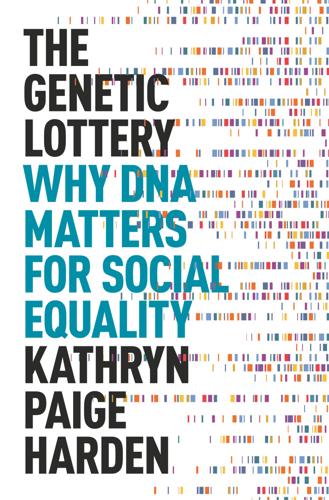
The Genetic Lottery: Why DNA Matters for Social Equality
by
Kathryn Paige Harden
Published 20 Sep 2021
One might decide equalizing people with regard to their likelihood of obtaining a PhD in a STEM discipline is less important than maximizing the productivity of a few people with high levels of mathematics interest and ability, even if those interests and abilities are the products of “winning” the social or natural lottery. Yet one might also decide it is important to equalize people with regard to their access to clean water and nutritious food and health care and freedom from physical pain, regardless of their level of education. The long causal chain connecting the genetic lottery with social inequality means that decisions about equity—about what we want the world to look like—must be made at every link in the chain.
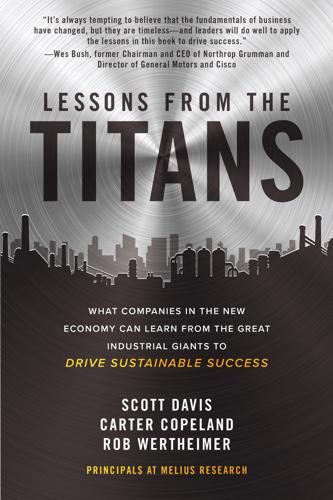
Lessons from the Titans: What Companies in the New Economy Can Learn from the Great Industrial Giants to Drive Sustainable Success
by
Scott Davis
,
Carter Copeland
and
Rob Wertheimer
Published 13 Jul 2020
After the dark days of 9/11, he went into airport security, but he had no strategy for developing a competitive advantage. He paid a hefty price to acquire a number of subscale security firms that had no real connection to each other, only later to be sold at a big discount and loss to United Technologies. Then he made a play in clean water, but the myriad of acquired assets never quite fit together and were likewise sold at a big loss. This pattern went on and on for the better part of 15 years. Overpay for hot properties that fit the big-ideas concept, capitulate a few years later at a loss, and shrug it all off because GE’s size made losses appear small and they could be covered up by gains elsewhere.
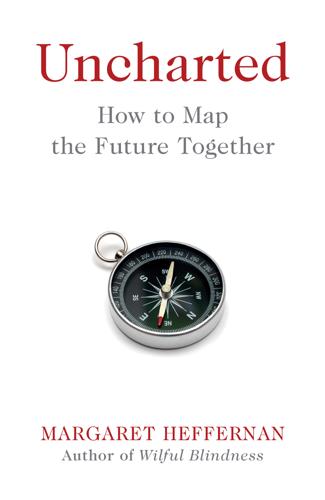
Uncharted: How to Map the Future
by
Margaret Heffernan
Published 20 Feb 2020
On one occasion, he explained it to a group of senior British executives who were keen to understand how it worked. He outlined a scenario of abundance that he had developed at Syngenta. The falling cost of photovoltaic cells, coupled with improved energy storage, has made energy cheap and plentiful. Clean water is abundant and forests are regenerating. Food can be grown easily wherever it is needed with agritech providing cheap, renewable sources of nutrition. Robotics ensure everyone has ample time and big data systems underpin efficient, cheap, safe transportation systems. Pervasive connectivity makes all data available everywhere and virtual reality gives you any experience you want, anywhere, any time.
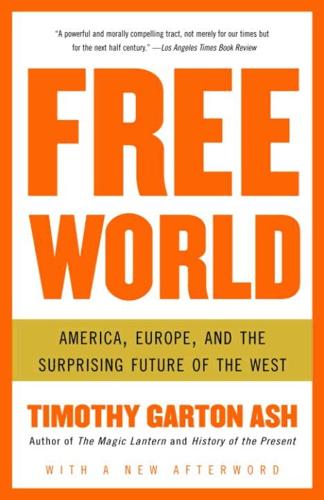
Free World: America, Europe, and the Surprising Future of the West
by
Timothy Garton Ash
Published 30 Jun 2004
All rich and free countries should catch up with the exemplary Scandinavians and reach the target of giving 0.7 percent of GDP, suggested by Lester Pearson, back in 1969, in a truly worthwhile Canadian initiative. But what states do is only half the story. All rich and free individuals should also donate more in private aid. Peter Singer, in his inspiring book One World, suggests that we should each aim to give 1 percent of our annual income toward providing clean water, basic sustenance, shelter, and medical care for the poorest of the poor. Anyone whose income is more than the average wage in a rich country can well afford that 1 penny from each pound we earn, or 1 cent from each euro or dollar. Why don’t we? Some obvious reservations apply. We need to make sure our own farmers will not go to the wall in order to save the lives of African farmers.
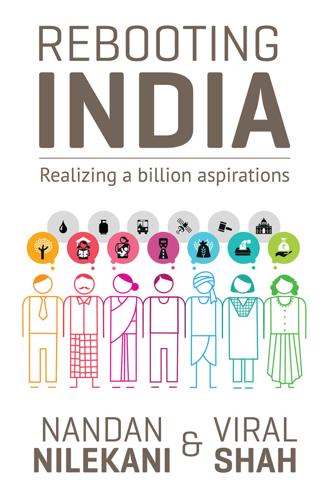
Rebooting India: Realizing a Billion Aspirations
by
Nandan Nilekani
Published 4 Feb 2016
An electronic system for managing fund flows would ensure that all schools received their money on time. Far more schools—67 per cent, to be exact—spent their money on whitewashing their walls rather than repairing toilets (36 per cent) or on drinking water facilities (44 per cent). Does this mean that having pristine walls is more important to schools than providing usable toilets and clean water to their students? Not really; it’s just that a whitewashed wall is an easy, tangible outcome to point to when funds have to be spent quickly. What this also indicates is that expenditures are driven more by the diktats of the government and don’t always connect with the need on the ground. Here is another area where an EIN could bring in much-needed change.
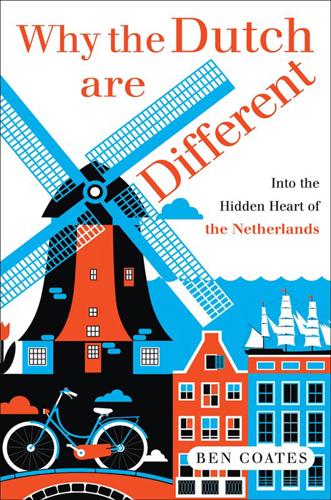
Why the Dutch Are Different: A Journey Into the Hidden Heart of the Netherlands: From Amsterdam to Zwarte Piet, the Acclaimed Guide to Travel in Holland
by
Ben Coates
Published 23 Sep 2015
After living there for a while, I came to realise that almost every distinctive feature or cliché about the Netherlands was, in some way, a result of the country’s unique relationship with water: from the windmills that were used to pump fields dry, to the flatness of the land that was left behind, to the bicycles that travelled easily across the smooth terrain. Bricks paved roads built on dangerously soft ground; tulips thrived in the silty reclaimed soil; cows grew fat on rich, moist grass; glasses of milk and beer were safe to drink when clean water was in short supply; people grew tall from drinking all the milk; and thick wooden clogs kept farmers’ feet dry when trudging through boggy fields. Almost everything that an outsider might think of as typically Dutch could be attributed to the country’s ongoing battle against the tides. The omnipresence of water had also, I came to see, had a profound effect on the Dutch themselves.
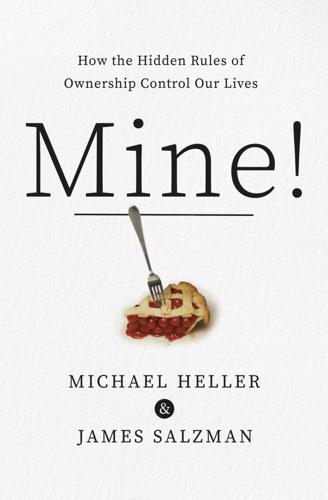
Mine!: How the Hidden Rules of Ownership Control Our Lives
by
Michael A. Heller
and
James Salzman
Published 2 Mar 2021
Apart from mechanical filters at the collecting reservoirs to keep out sticks and leaves, and chlorination to kill bacteria, the water went almost directly from the mountains to faucets in apartments in Manhattan and homes in the Bronx. Starting in the 1980s, though, small farms in the Catskills watershed came under economic pressure. They increased fertilizer use and began selling land to residential subdevelopers. As the population grew and land use intensified, the clean water that New York City had taken for granted came under threat. Coupled with a revision to the Safe Drinking Water Act, it looked like New York would need to build a huge treatment plant for Catskills water with a price tag up to $4 billion, along with $200 million more annually to operate the plant.
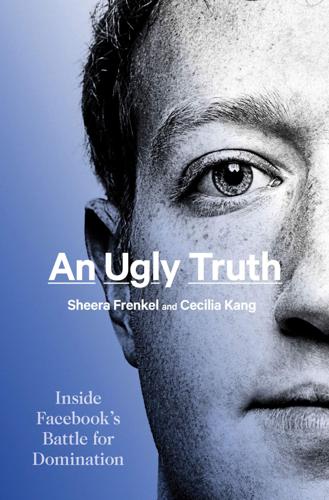
An Ugly Truth: Inside Facebook's Battle for Domination
by
Sheera Frenkel
and
Cecilia Kang
Published 12 Jul 2021
But there was confusion over what metric Facebook used to determine the Trending Topics. It may have claimed that the system was governed by an algorithm, but the people hired to work on the section all appeared to have backgrounds in journalism. At times, the topics highlighted seemed too esoteric, or convenient. While it would seem nice that on Earth Day users were discussing clean water and recycling, some Facebook employees questioned whether those topics were organically trending or were being manipulated by Facebook. For months, Nuñez had been circling the employees hired by Facebook to run its Trending Topics section. Beyond his two former roommates, Fearnow and Villarreal, he had met a handful of other recent college graduates hired to join the team.
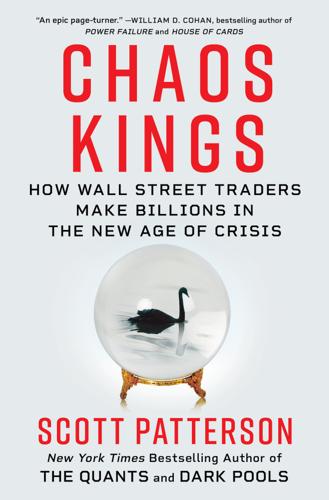
Chaos Kings: How Wall Street Traders Make Billions in the New Age of Crisis
by
Scott Patterson
Published 5 Jun 2023
The storm was a vivid reminder of how a world of shifting, chaotic weather patterns threatens critical infrastructure designed for one kind of climate now facing an extreme kind. A similar event occurred in August 2022, when the water-treatment system serving Jackson, Mississippi, was overwhelmed by floods, leaving 150,000 residents without access to clean water for weeks. It wasn’t a short-term trend that would reverse course—it was the new normal. Climate Central, a nonprofit research group, found that in the decade ending in 2019, hurricanes, wildfires, heat storms, and other extreme weather events caused two-thirds more power outages in the U.S. than in the previous decade.
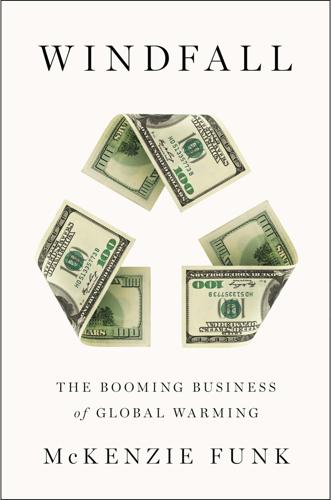
Windfall: The Booming Business of Global Warming
by
Mckenzie Funk
Published 22 Jan 2014
“At the risk of being alarmist,” Goldman said in a 2008 report, “we see parallels with Malthusian economics.” Citigroup’s chief economist, Willem Buiter, would take it further. “I expect to see in the near future a massive expansion of investment in the water sector,” he wrote, “including the production of fresh, clean water from other sources (desalination, purification), storage, shipping and transportation of water. I expect to see pipeline networks that will exceed the capacity of those for oil and gas today. I see fleets of water tankers (single-hulled!) and storage facilities that will dwarf those we currently have for oil, natural gas and LNG.
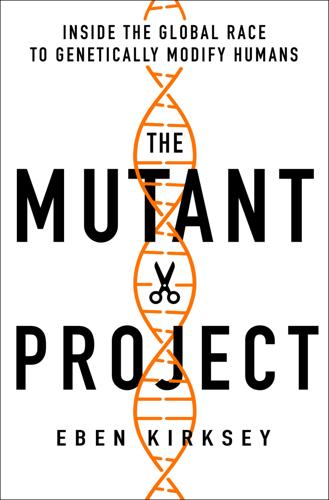
The Mutant Project: Inside the Global Race to Genetically Modify Humans
by
Eben Kirksey
Published 10 Nov 2020
Months after our initial conversation, as we corresponded over e-mail, Donna Haraway told me, “I think we pay too much attention to arguments about bioengineering and ethics and not enough to broader concerns of justice and care.” She also argued that it is a mistake to pay “so much attention to shiny techy stuff and not enough to clean water.” I thought back to the moment when I discovered that Dr. He’s university campus lacked potable water. While administrators invested millions in the latest supercomputing infrastructure and gene-editing equipment, the students were left to purchase bottles out of vending machines or boil water from the tap.

A New History of the Future in 100 Objects: A Fiction
by
Adrian Hon
Published 5 Oct 2020
Labor relations notwithstanding, avatars became an affordable and environmentally-friendly alternative to the ugly habit of buying cheap, disposable clothing fueled by “fast fashion” trends. In the early twenty-first century, around three hundred liters of water was required to manufacture a single T-shirt. A pair of jeans would run to over a thousand liters of water, blowing past the limits of sustainability in a world that had to save every drop of clean water it had. At this time, avatars remained largely anthropomorphic. Conservative tastes were only a partial explanation. There were technical limitations to avatars that didn’t directly map onto human skeletons and movements, and besides, it was generally seen as being impolite to take up too much space by becoming a centaur or dragon, even in augmented reality.

The Tunnel Through Time: A New Route for an Old London Journey
by
Gillian Tindall
Published 14 Sep 2016
He was eventually buried near the altar of the Priory chapel, but his tomb, like the chapel, did not survive the vicissitudes of time and chance in the centuries that followed. At much the same time that the Priory, complete with its own orchard, herb and vegetable gardens, was established, the conduit was built to bring fresh, clean water from the Tyburn near Marylebone all the way into Cheapside. London was expanding. By the end of the thirteenth century its population may have been sixty or seventy thousand. (The population of England then is thought to have been about six million, considerably more than at the Norman Conquest two centuries before, though it was to reduce again with the Black Death fifty years later.)

JUST ONE DAMNED THING AFTER ANOTHER
by
Jodi Taylor
Published 8 Jan 2013
Finally, it accepted the co-ordinates for no less than eleven days after that disastrous night. Eleven days! How could they survive that long? No one knew better than me how long eleven days could be in the Cretaceous period. And these were four men, possibly badly hurt, bleeding and low on ammunition, no shelter, no food and no clean water; not prepped in any way. ‘Stop that!’ said Mrs De Winter, accurately guessing what was going on in my head. ‘They’ll be fine. They’ll be tucked away, keeping themselves safe, ready for rescue, you’ll see. There might even be other survivors there. They may not be alone.’ I shook my head. ‘I doubt it.
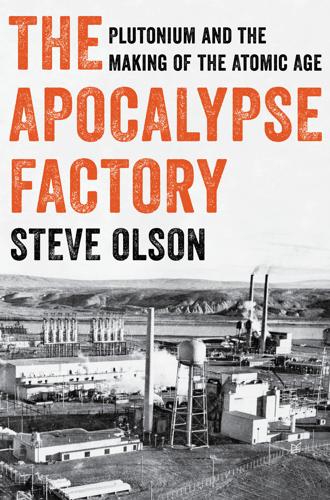
The Apocalypse Factory: Plutonium and the Making of the Atomic Age
by
Steve Olson
Published 28 Jul 2020
Contractors have dug up old dumps and contaminated soils and have moved the wastes to a huge landfill near the separation plants, where the radioactive byproducts of Hanford’s history can be isolated and monitored. Gigantic pump-and-treat stations scattered across the site lift water from below ground, remove contaminants that can go into landfills, and reinject the clean water back into the subsurface. Except for a few troublesome plumes and contaminants, the treatment plants have largely stemmed the flow of radioactive and chemical toxins toward the Columbia. But the hardest and most expensive cleanup tasks are just getting started. In particular, the high-level radioactive wastes generated during the Manhattan Project and Cold War continue to sit in the single-shelled and double-shelled tanks around the canyon buildings.
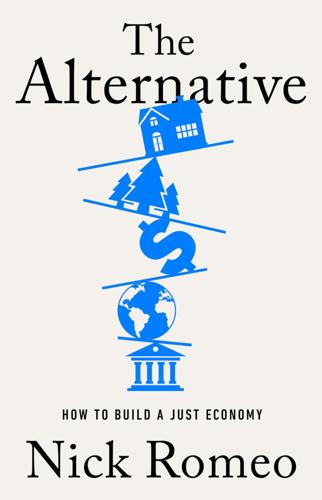
The Alternative: How to Build a Just Economy
by
Nick Romeo
Published 15 Jan 2024
In London, competing private companies supplied the city’s drinking water, which was generally foul with contaminants and only available sporadically.9 In America, hundreds of companies built and operated private toll roads, and the quality of maintenance, signage, and cost was highly variable.10 Once state and national standards unified road systems, roads became cheaper, safer, and more efficient. Parallel developments improved the linked issues of waste disposal and clean water provision in London. Public infrastructure pioneers like Edwin Chadwick and William Phelps Eno, both among Rowan’s heroes, helped catalyze safer, standardized sanitation and road systems in England and America. Instead of employing countless discrete legislative acts to impose uniform safety and cost standards on private companies, governments recognized that creating a publicly owned or managed infrastructure service could dramatically increase the quality of services.

The Hidden History of Burma
by
Thant Myint-U
He came in, put aside his prepared speech, and, to a packed audience of diplomats and aid officials, he spoke from the heart, saying that everyone was letting down the Burmese people. He pointed to the plastic water bottles in front of the delegates in the big air-conditioned hall and said, “You probably don’t even notice them. They have no value to you. But in the delta, hundreds of thousands of people still have no clean water.” People in the hall were almost in tears. I worked closely with Heyzer in those months. I also met Kyaw Thu on several occasions. For two years I had been trying to explain Burma to policy-makers at the UN and in foreign governments, and at the same time explain the UN and foreign governments to policy-makers in Burma.

The Sirens' Call: How Attention Became the World's Most Endangered Resource
by
Chris Hayes
Published 28 Jan 2025
If all the stimuli we were receiving at each moment held equal salience for us, we would be unable to function. In simpler times, we needed certain information to survive: the location of food, the color of a berry to determine whether it was edible, the sound of a babbling brook pointing us toward clean water. But then and now, vital information is always in danger of being obscured by the other information floating through our perceptual sphere. If we can’t ignore the sound of leaves rustling to focus on the sound of the brook, we won’t find the water. Economist Herbert Simon, whose 1971 essay on the attention economy is one of the single most insightful meditations on attention ever published, observed long before the age of constant smartphone push notifications that a “wealth of information means a dearth of something else: a scarcity of whatever it is that information consumes.
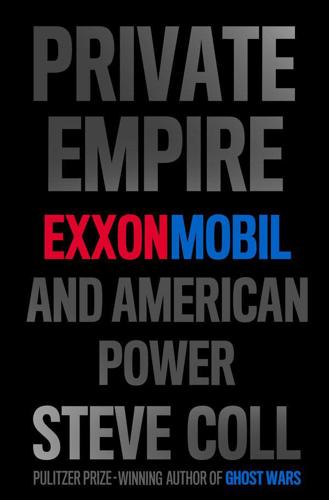
Private Empire: ExxonMobil and American Power
by
Steve Coll
Published 30 Apr 2012
Yet nearly half a century after independence, the country’s population languished perpetually near the bottom of the United Nations’s human development index. Average Nigerian life expectancy remained only forty-six and one half years. Nine tenths of the population lived on two dollars a day or less. More than a third lacked sanitation and clean water, and the country’s infant mortality rates remained among the world’s highest. Such impoverished but less oil-burdened countries as Papua New Guinea and Zimbabwe ranked higher than Nigeria on the human development scale.15 Corruption, mismanagement, theft, and criminal violence were hallmarks of the government’s performance.
…
“No risk reduction”: ExxonMobil, “Approach to Cumulative Risk,” op. cit. “Politics”: “Phthalates 101,” ibid. 11. Interview with a San Francisco regulator. 12. Interview with Gretchen Lee Salter (MR). 13. Interview with Virginia Lyons (MR). ‘They’re going to ban Gumby!”: Interview with Sarah Uhl, Clean Water Action, Hartford, Connecticut (MR). 14. Mattel recall: New York Times, August 2, 2007. 15. Interview with Liz Hitchcock (MR). 16. Halperin and Harris, The Way to Win, pp. 206–8. 17. Wall Street Journal, May 27, 2006. Also, interviews with individuals familiar with the 2005 energy legislation episode. 18.
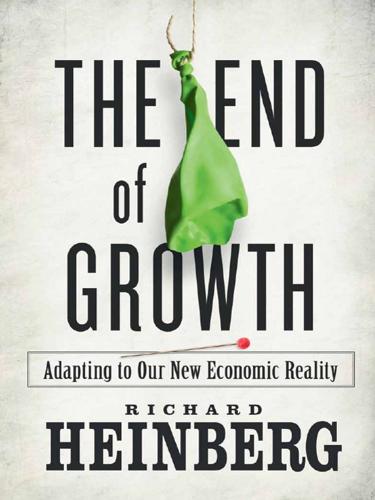
The End of Growth: Adapting to Our New Economic Reality
by
Richard Heinberg
Published 1 Jun 2011
Perhaps someone who lives on one of these Sonoma County roads will mail-order the latest MacBook Air (a shining aluminum-clad example of Moore’s law) for delivery by UPS — only to be disappointed by the long wait because a delivery truck has broken its axle in a pothole (a dusty example of Murphy’s law). According to Ken Kirk, executive director of the National Association of Clean Water Agencies, more than 1,000 aging water and sewer systems around the US need urgent upgrades.43 “Urgent” in this instance means that if infrastructure projects aren’t undertaken now, the ability of many cities to supply drinking water in the years ahead will be threatened. The cost of renovating all these systems is likely to amount to between $500 billion and $1 trillion.
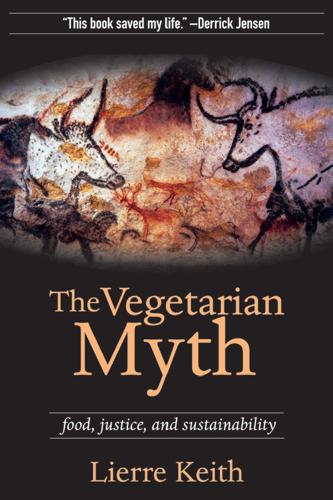
The Vegetarian Myth: Food, Justice, and Sustainability
by
Lierre Keith
Published 30 Apr 2009
I could play intellectual hide and seek over the goat manure—it was already there, piled in the barn, why not use it, I wasn’t the one oppressing animals for milk and meat—but the P and K in NPK weren’t so easily avoided. Globally, phosphorus is available in extremely limited quantities. “Next to clean water,” writes Bill Mollison, “phosphorus will be one of the inexorable limits to human occupancy on this planet.”17 It exists in sedimentary rock. I didn’t put rocks in the same category as animals: I didn’t mind using them. The problem was getting them. They had to be quarried—mined—then ground up, and transported.
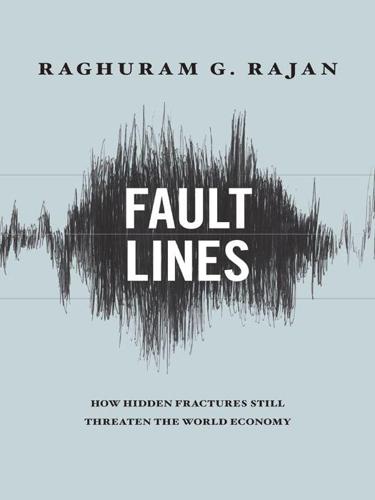
Fault Lines: How Hidden Fractures Still Threaten the World Economy
by
Raghuram Rajan
Published 24 May 2010
Alphatec itself was only a small family-owned business with very limited experience in the semiconductor industry, and this lack of experience showed. Construction was plagued with delays: the plant was being built on land so marshy that concrete pilings had to be driven down to stabilize the buildings, at great cost. There was no clean water or power, both critical for chip manufacture, so Alphatec had to build the necessary facilities, adding further to costs. And even before high-tech plants like Alphatec’s were completed, investors became concerned about their viability and started pulling out. The second trigger was the depreciation of the Japanese yen against the dollar, starting in 1995.
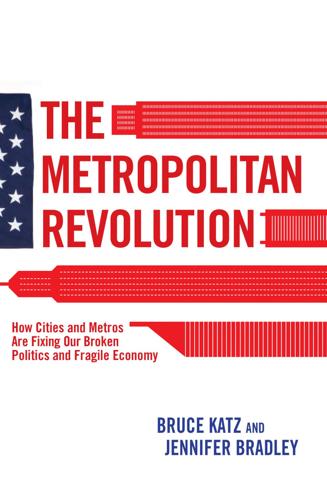
The Metropolitan Revolution: How Cities and Metros Are Fixing Our Broken Politics and Fragile Economy
by
Bruce Katz
and
Jennifer Bradley
Published 10 Jun 2013
The region’s water technology cluster develops anticorrosion technologies used in oil and gas drilling, materials known as sorbents that soak up pollutants in water, and automation and controls that manage industrial water–processing systems. The region’s expertise in water cleanup is a happy and unexpected outcome of the 1969 Cuyahoga River fire that led to the passage of the federal Clean Water Act. BioEnterprise and NorTech are both what are known as intermediaries. They provide the links between entrepreneurs and manufacturers, between suppliers and customers, between workers and jobs. As Baiju Shah, who was until 2012 the CEO of BioEnterprise, explained, “You 04-2151-2 ch4.indd 75 5/20/13 6:51 PM 76 NORTHEAST OHIO: THE POST-HERO ECONOMY have to be able to energize so many disparate elements to make it work.
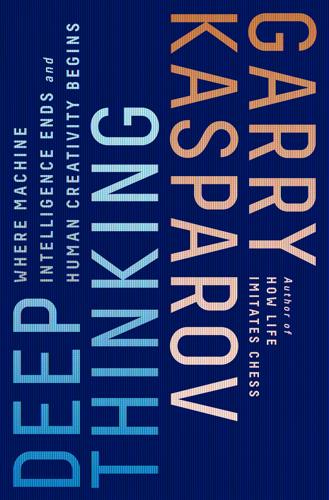
Deep Thinking: Where Machine Intelligence Ends and Human Creativity Begins
by
Garry Kasparov
Published 1 May 2017
It is inseparable from centuries of rising living standards and improvements in human rights. What a luxury to sit in a climate-controlled room with access to the sum of human knowledge on a device in your pocket and lament how we don’t work with our hands anymore! There are still plenty of places in the world where people work with their hands all day, and also live without clean water and modern medicine. They are literally dying from a lack of technology. It’s not just college-educated professionals who are under pressure today. Call center employees in India are losing their jobs to artificially intelligent agents. Electronics assembly-line workers in China are being replaced by robots at a rate that would shock even Detroit.

Cultureshock Paris
by
Cultureshock Staff
Published 6 Oct 2010
The pizza chains offer home delivery for neighbouring areas, and delivery and takeaway are available from restaurants, ranging from sushi to Indian cuisine. And of course, wherever you go, there’s always McDonald’s. TO YOUR GOOD HEALTH! General Conditions Medical and sanitary facilities in France often rate among the highest in the world, and the city itself is kept remarkably clean. Water in Paris has been safe to drink (although the taste varies) since the city spent 12 million francs on water purification systems well more than a century ago. The water, however, has a high mineral content of calcaire (calcium and chalk), which is not unhealthy, but many Parisians tend to drink bottled water such as Vittel, Volvic or Evian, or slightly fizzy water such as Badoit or any of the inexpensive brands found in groceries.
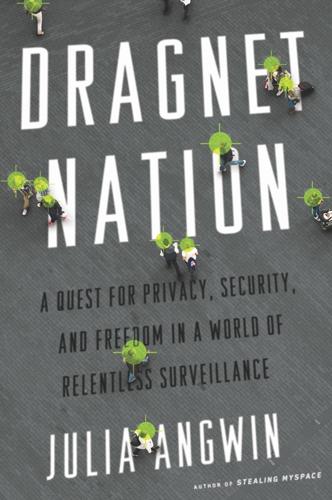
Dragnet Nation: A Quest for Privacy, Security, and Freedom in a World of Relentless Surveillance
by
Julia Angwin
Published 25 Feb 2014
Adler, “Fables of the Cuyahoga: Reconstructing a History of Environmental Protection,” Fordham Environmental Law Journal 14 (2003): 89–146. The air is cleaner: “Highlights from the Clean Air Act 40th Anniversary Celebration,” United States Environmental Protection Agency, http://www.epa.gov/air/caa/40th_highlights.html. The water is cleaner: Nancy Stoner, “Celebrate the 40th Anniversary of the Clean Water Act,” It’s Our Environment (blog), U.S. EPA, October 18, 2012, http://blog.epa.gov/blog/2012/10/cwa40/. Endangered species have been saved: John R. Platt, “The Endangered Species Act at 40: Forty Things Journalists Should Know,” Society of Environmental Journalists, July 15, 2013, http://www.sej.org/publications/sejournal-su13/endangered-species-act-40.
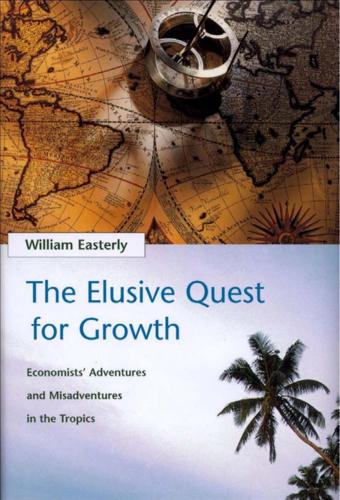
The Elusive Quest for Growth: Economists' Adventures and Misadventures in the Tropics
by
William R. Easterly
Published 1 Aug 2002
Districts with more ethnic diversity, measured by language, had sharply lower primaryschool funding and worse school facilities than more homogeneous areas.16 Similar arguments can be made with the other public services, and so public services are restricted in ethnically polarized economies. As perhaps an indirect reflection of this, infant mortality, lifeexpectancy, birthweight of infants, access to sanitation, and access to clean water are all worse in more ethnically heterogeneous societies.17 That’s not the end to the damage. We saw that distinct interest groups mayget into a warof attrition over a beneficial reform. Ethnically based interest groups make such destructive wars of attrition more likely. Ironically, with all the attention paid toethnically based violence, it is the ethnically based policy wars that may be morerelevant for most countries.
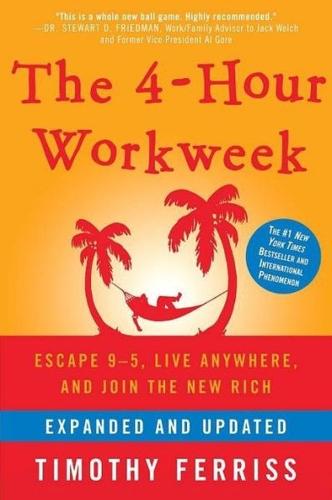
The 4-Hour Workweek: Escape 9-5, Live Anywhere, and Join the New Rich
by
Timothy Ferriss
Published 1 Jan 2007
He arrived in Ghana in the early 1980s, in the middle of a coup d’état, at the peak of hyperinflation, and just in time for the worst drought in a decade. For these same reasons, some people would consider his timing quite poor from a more selfish survival standpoint. He had also missed the memo. The national menu had changed, and they were out of luxuries like bread and clean water. He would be surviving for four months on a slushlike concoction of corn meal and spinach. Not what most of us would order at the movie theater. “WOW, I CAN SURVIVE.” Jean-Marc had passed the point of no return, but it didn’t matter. After two weeks of adjusting to the breakfast, lunch, and dinner (Mush à la Ghana), he had no desire to escape.
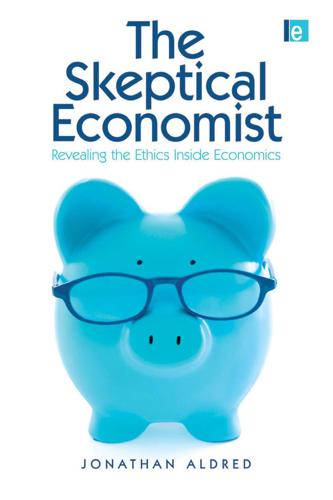
The Skeptical Economist: Revealing the Ethics Inside Economics
by
Jonathan Aldred
Published 1 Jan 2009
Regardless of how these rights ought to be assigned, it is clear that there is no natural or neutral way of doing so. It is a political decision. But this is just a part of inevitable government involvement in defining ownership rights. Suppose a factory’s production process leads it to pollute the water of a neighbouring river, imposing a cost on a downstream laundry needing clean water. How much pollution does the factory have the right to emit? And how far should the government legislate to ban cartels and other anti-competitive practices? Left to themselves, firms will always try to subvert competition by colluding or establishing monopolies. Free markets, left alone, hardly ever stay free.

Rise of the Robots: Technology and the Threat of a Jobless Future
by
Martin Ford
Published 4 May 2015
Other important advances are occurring in the development of powerful new environmental filtering systems and in medical diagnostic tests and cancer treatments. In 2013, researchers at the Indian Institute of Technology Madras announced a nano-particle-based filtering technology that can provide clean water for a family of five at a cost of just $16 per year.23 Nano-filters may also eventually provide more effective ways to desalinate ocean water. If nanotechnology follows this path, it will continue to grow in importance, with dramatic benefits flowing to a wide range of applications, including manufacturing, medicine, solar energy, construction, and the environment.

Redrobe
by
Jon Courtenay Grimwood
Published 1 Jan 2000
Mostly the man cruised a large courtyard of old paving stones used by the skate gangs. The courtyard was sunk into the ground like a small mall with no ceiling. Around the mall’s edge were blank-eyed statues and at one end stood an empty fountain. In the middle of that fountain—her wings spread wide—stood the Angel of the Waters erected in 1842 to celebrate the arrival of clean water to New York. Not that Axl knew any of that. He just followed the fat man, keeping hidden as the man stopped and talked to skateboys who mostly laughed or kept walking like he wasn’t there. On the third night, while a shivering Axl was edging round the spread-winged angel, his target vanished. And, scared that he was about to blow it, Axl raced into an underpass that headed back towards Central Park South in search of his target.
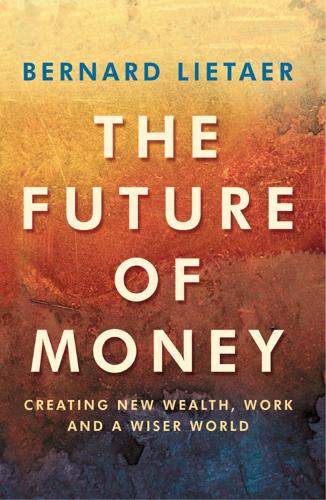
The Future of Money
by
Bernard Lietaer
Published 28 Apr 2013
Yang Yin Non-material Level Financial capital Social capital Martial Level Physical capital Natural capital Traditional economics acknowledges the existence of only the two Yang forms of capital: financial capital (stocks, bonds, cash, and 'intellectual property' such as patents and trademarks); and physical capital (e.g. plant, equipment, inventions, real estate). It therefore ignores the role of the two forms of Yin capital: and social capital (e.g. family or group solidarity, peace, quality of life, etc.) and natural capital (e.g. clean water or air, biodiversity, etc.). This denial is remarkable, given that Yang capital would simply not survive without a continuous input from the Yin capital forms. One sign of a shift in awareness is the growing talk about 'knowledge capital' - which is in fact a bridge between financial and social capital - and the discussions about 'green taxes' which aim at compensating for our blindness to the scarce resources obtained from the pool of Natural capital.

How the Post Office Created America: A History
by
Winifred Gallagher
Published 7 Jan 2016
The entry on his final day of service reads: “My last trip! Thank God.” • • • BY THE LATE NINETEENTH CENTURY, the inescapable fact that urban and rural Americans now lived in different worlds had become an issue of great domestic importance. Residents of cities and towns increasingly enjoyed the world’s most modern homes, equipped with clean water, indoor plumbing, and central heat and light. They had good roads, rail service, municipal utilities, and libraries, as well as access to mass entertainment and the latest consumer goods. The post brought the latest news and information to their doorsteps and enabled many to carry on same-day correspondence.

B Is for Bauhaus, Y Is for YouTube: Designing the Modern World From a to Z
by
Deyan Sudjic
Published 17 Feb 2015
The desk by the window, the pair of sofas facing each other across a low table, the refrigerator stocked with excess calories, and bottled water that had been flown thousands of miles to get there, spoke of the very particular outcomes of the placelessness that comes with the international corporate hospitality business, with its nuanced dance between reassuring familiarity and carefully measured doses of the exotic. The taps in the adjoining bathroom, with its lurid red marble floor, when turned, obediently and effortlessly delivered a steady stream of cool, clean water. While my brain negotiated all these generic signals of international hotel life, I began to realize that I could only be in one very particular place in the world. And it wasn’t just the fact that when I arrived on the 2 am flight from Europe, room service had managed to deliver a dosa breakfast within ten minutes, and that I needed to remember when to take my malaria tablet.
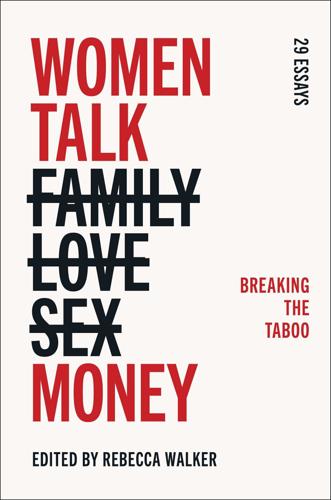
Women Talk Money: Breaking the Taboo
by
Rebecca Walker
Published 15 Mar 2022
I learned fashion is responsible for 8 percent of all greenhouse gas emissions (putting it right behind the transportation sector, which accounts for 14 percent of all emissions), and if the industry continues business as usual, it will use a full quarter of the world’s carbon budget by 2050. I learned that the textile dyeing and finishing industry is the second largest polluter of clean water after agriculture. That three-fifths of all clothing ends up in a landfill or incinerator within a year of being produced. I learned the minimum pay for an entry-level garment worker in Bangladesh is 8,000 taka, or $95 US per month. I divided $15,000 by $95 and learned it would take thirteen years to make my day rate.
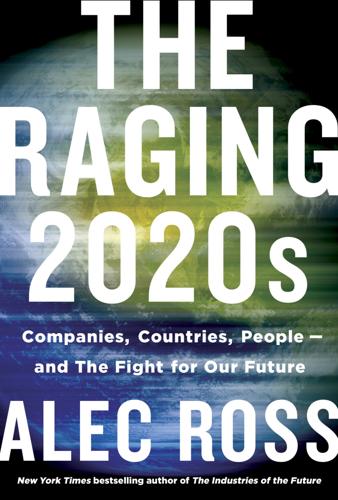
The Raging 2020s: Companies, Countries, People - and the Fight for Our Future
by
Alec Ross
Published 13 Sep 2021
Even so, the official figure cements Hurricane Maria as one of the deadliest disasters in US history, on par with the 9/11 terrorist attacks and the 1906 San Francisco earthquake in terms of body count. The vast majority of those deaths resulted not from the storm itself, but from the inadequate access to health care, electricity, and clean water in the months that followed. Had the government acted faster and more effectively, countless lives would have been saved. In the aftermath of the 2017 hurricane season, FEMA officials acknowledged that they dropped the ball in their response to Maria. They made recommendations to improve their future response plans.
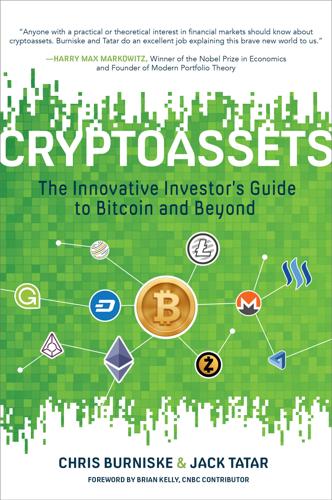
Cryptoassets: The Innovative Investor's Guide to Bitcoin and Beyond: The Innovative Investor's Guide to Bitcoin and Beyond
by
Chris Burniske
and
Jack Tatar
Published 19 Oct 2017
As Palmer stated in an early interview: It’s not taking itself as seriously, it’s not being used by people worrying about whether they’ll become rich … It’s something to share for thanks or kudos.36 Palmer’s marketing expertise was another feature that differentiated Dogecoin from other cryptocurrencies at the time. The Dogecoin community raised $50,000 via Dogecoin to send the Jamaican bobsled team to the Olympics; raised another $55,000 via Dogecoin to sponsor a NASCAR driver who raced with the Dogecoin logo at the Talladega Speedway; and raised money to support clean water projects in Kenya via Doge4Water, making the donation via a Twitter-based tip service.37 While Dogecoin may have been launched as a joke, its association with a wildly popular Internet meme, its lighthearted origins, and its savvy focus on slick marketing led to a quick rise, and its network value grew to $70 million only seven weeks after launch.38 But that did not last long.
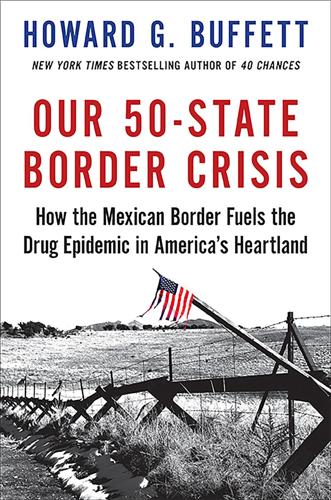
Our 50-State Border Crisis: How the Mexican Border Fuels the Drug Epidemic Across America
by
Howard G. Buffett
Published 2 Apr 2018
These days my interest in border security has become more widely known, and people familiar with 40 Chances sometimes ask me if I’ve “given up” on hunger. Not at all. We still support significant food security–related projects in Africa and Central America. We advocate for good soil conservation practices around the world. But my thinking continues to evolve. Clean water and food seem like the most basic human needs. Of course that is true for individuals, but I have learned over and over in countries such as Sierra Leone, Sudan, and El Salvador that a society will never reliably deliver those resources if another fundamental condition is absent: the rule of law.
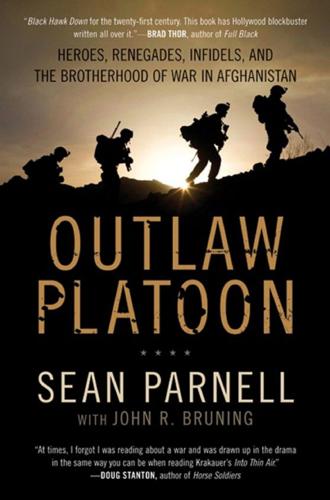
Outlaw Platoon: Heroes, Renegades, Infidels, and the Brotherhood of War in Afghanistan
by
Sean Parnell
and
John Bruning
Published 28 Feb 2012
It was not a stretch to imagine the first cave dwellers gazing upon the exact same view thousands of years ago. The village was a frightful sight. A clean bed would have been a priceless luxury in this place. The mud-walled huts were barren of even the most basic essentials. Little food, no clean water. The ground between the dwellings was riddled with human feces, animal dung, and filth. The smell of such a place is one that none of us will ever forget. It lingered like a tangible presence in the air. I could feel it seeping into my clothing, and for a second I flashed back to my first day in country.
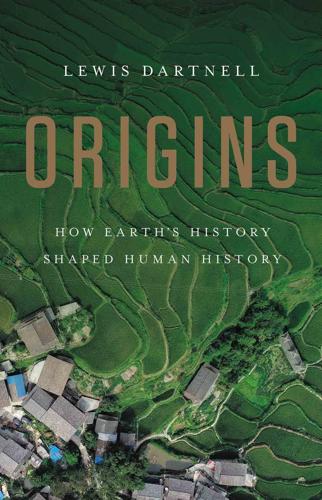
Origins: How Earth's History Shaped Human History
by
Lewis Dartnell
Published 13 May 2019
The solution was to start with the calculated circumference of the world and then subtract the overland distance from Europe to the Orient–the approximate width of Eurasia was known from travellers along the Silk Road. The problem was that these calculations yielded a westward oceanic distance of around 19,000 kilometres, or about four months of sailing with reliable winds. Such a journey was utterly impossible at the time. Ships simply couldn’t carry enough food and clean water to keep their crews alive for this long on the open seas without making landfall for fresh supplies. Not to be deterred, Columbus pulled the sort of sleight of hand used by any intransigent believer absorbed in the strength of their own convictions. He fudged the numbers. Columbus took the lowest calculation of the Earth’s circumference available at the time, along with the greatest estimate of the breadth of Eurasia, and arrived at a significantly shortened sea distance to the west.
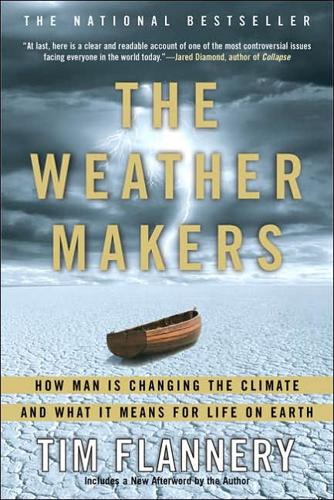
The Weather Makers: How Man Is Changing the Climate and What It Means for Life on Earth
by
Tim Flannery
Published 10 Jan 2001
Coal miners donated $20 million to the Republican cause in 2000, and have added $21 million since, ensuring that industry access to Vice-President Cheney and his secret energy committee is unparalleled.6 In 2001 Quin Shea, a lobbyist for the Edison Electric Institute, told a closed-door conference that the Bush administration ‘desperately wanted to burn more coal…Coal is our friend’, and that to do so they would scuttle Clean Air and Clean Water Act requirements. In this the administration has been as good as its word for, as Shea quipped, it may be some time before the industry has another president like ‘Bush or Attila the Hun’.7 Attempts by industry to obtain political influence are not restricted to the US. Australia is the world’s largest exporter of coal, and those in the business in this country have also been active.
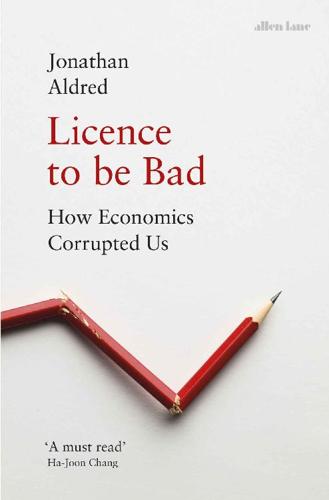
Licence to be Bad
by
Jonathan Aldred
Published 5 Jun 2019
Before a bargain is struck, there are the costs of discovering who to bargain with and the costs of communicating with them. You may be willing to pay your neighbour(s) to agree to let you play loud music at your party until late at night, but first you need to determine which neighbours will be disturbed by the noise. Likewise, while a laundry wanting to draw clean water from a river (cleaner than the minimum legal standards ensured by prevailing regulations) may be willing to pay to get cleaner water, it may be hard to identify which upstream factory is causing the water pollution. Then there are costs directly involved in negotiating a deal, most obviously the time and effort involved, as well as the cost of gathering all relevant information.
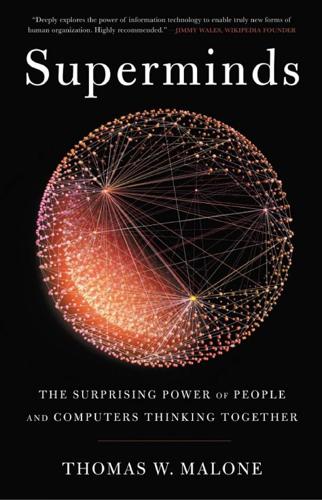
Superminds: The Surprising Power of People and Computers Thinking Together
by
Thomas W. Malone
Published 14 May 2018
SunSaluter is a low-cost solar panel that rotates during the day to follow the sun across the sky, generating 30 percent more electricity than a fixed solar panel. The panel’s rotation is powered by dripping water and gravity, and as the water drips, it is filtered to produce four liters of clean drinking water per day. So this single device can produce both electricity and clean water—two basic needs for the hundreds of millions of people in the world who don’t have them. One of the most interesting things about this proposal is that it didn’t come from a professor at MIT or Stanford, an engineer at a major energy company, or anyone else you might expect. It was submitted by a young Canadian woman from Calgary named Eden Full, who invented SunSaluter at the age of 16 and later dropped out of Princeton to pursue the development of SunSaluter full-time.

Sandworm: A New Era of Cyberwar and the Hunt for the Kremlin's Most Dangerous Hackers
by
Andy Greenberg
Published 5 Nov 2019
The book-sized gray boxes with a few blinking lights, sold by companies like Siemens and Rockwell Automation, would allow him to program the solar-powered water filtration systems he’d place in streams so that they could swap their own filters with no manual intervention. Or the same controllers could be programmed to charge a series of car batteries attached to solar panels or wind turbines. That meant more clean water or more energy to power the LED lamps they’d give the villagers, and thus more hours of light each day, real improvements in human lives. Lee began to see those programmable logic controllers, digital brains capable of altering the physical world around them, as fundamental building blocks of infrastructure and economic development.

Stakeholder Capitalism: A Global Economy That Works for Progress, People and Planet
by
Klaus Schwab
Published 7 Jan 2021
Globally, the agency said,72 “it is likely that over 80% of wastewater is released to the environment without adequate treatment,” with pollution often happening because of “intensive agriculture, industrial production, mining and untreated urban runoff and wastewater.” It threatens the access of clean water everywhere from cities to rural areas and poses a great health risk. Moreover, there is the issue of plastics, whose impact will be felt most dramatically in the coming decades, as the plastic that is currently accumulating in the world's oceans may affect life on land in a myriad of ways. Microplastics have become ubiquitous in the world's water, in part because they take decades to decompose: by current measures, it is estimated we could end up with more plastic than fish in our oceans by 2050.73 The most famous example in popular imagination is the “Great Pacific Garbage Patch” consisting largely of the debris of microplastics in the Pacific Ocean.

Reset
by
Ronald J. Deibert
Published 14 Aug 2020
Ensmenger estimates that a medium-sized high-density server farm can require as much as 360,000 gallons of clean, chilled water a day.358 According to a 2015 Wall Street Journal study, a mid-sized data centre uses roughly as much water as about one hundred acres of almond trees, three average hospitals, or more than two eighteen-hole golf courses.359 The U.S. Department of Energy’s Lawrence Berkeley National Laboratory estimates that U.S. server farms will have used 174 billion gallons of water by 2020.360 Sometimes server farms are located in regions where access to clean water is challenging at the best of times, straining resources for local communities. Desperate for the employment that construction and labour might bring, these communities make deals with the platforms that guarantee access to scarce local water supplies. For example, in 2019 Mesa, Arizona, made a deal with Google to permit construction of a massive server farm that would guarantee up to four million gallons for cooling purposes.361 While Google has made significant public strides to “green” its server farms and other processes, the company considers its water use a proprietary trade secret and typically forbids public officials from disclosing its water consumption.362 Greenpeace has closely studied the environmental consequences of cloud computing, and in 2017 they published an extensive ranking of social media platforms on the basis of their environmental sustainability efforts.363 Many companies, including Google (notwithstanding its water consumption), Facebook, and Microsoft have made significant improvements in recent years, either offsetting or directly powering their operations with 100 percent clean energy, and investing in server farms in areas like Iceland, where there is plentiful access to cool water and low temperatures.
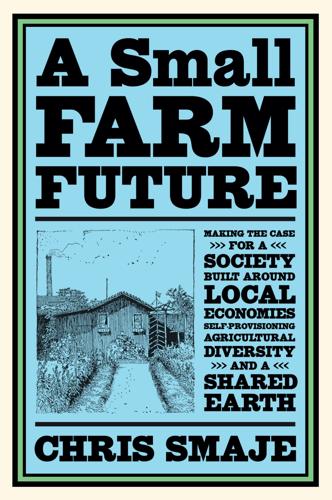
A Small Farm Future: Making the Case for a Society Built Around Local Economies, Self-Provisioning, Agricultural Diversity and a Shared Earth
by
Chris Smaje
Published 14 Aug 2020
If you’re the possessor of inalienable property rights, then nobody can turf you off or increase your rent and squeeze more surplus and productivity gain out of you. As with anything, there are downsides to inalienable property. A pressing one today is how to ensure that those who have it don’t pursue private ends that threaten collective goods like uneroded soil and clean water – the ‘it’s my land and I’ll do what I like with it’ problem. This is less of a problem in a society of tight small-scale farming fully engaged with its local ecological base, where the consequences of doing what you like are more apparent and more likely to react back directly on the doer. But more generally the solution depends ultimately on the fact that buying private property rights is not the same as buying the right to do absolutely anything on one’s property without any sanctions available to the wider community.
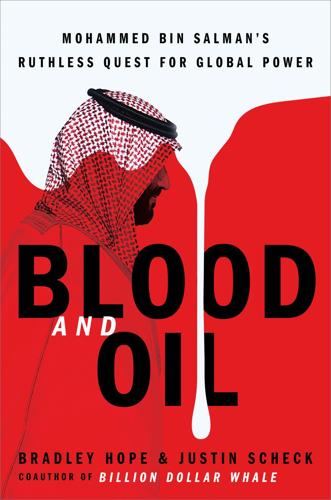
Blood and Oil: Mohammed Bin Salman's Ruthless Quest for Global Power
by
Bradley Hope
and
Justin Scheck
Published 14 Sep 2020
Appearing in posed photographs with neatly trimmed stubble and finely tailored Italian suits with lapels so wide they bordered on the preposterous, Prince Salman chased political leaders and press coverage, trumpeting his education at the Sorbonne and promises to fix global problems like access to clean water. A Dubai businessman had introduced Salman to a Democratic donor, California executive Andy Khawaja. He in turn had Salman meet Schiff, who later told CNN that all he recalled of the meeting were general discussions of Middle East politics. Salman told a member of his entourage afterward that his talks with Khawaja and Schiff focused on his charitable efforts.
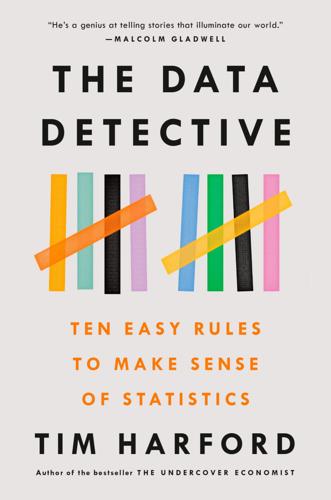
The Data Detective: Ten Easy Rules to Make Sense of Statistics
by
Tim Harford
Published 2 Feb 2021
No self-respecting newspaper would republish the story regularly to remind its readers, “Not news, but still true!” So the fall in the most extreme form of poverty—and dozens of other true stories we could tell about improved literacy, democracy, votes for women, education for girls, access to clean water, immunizations, agricultural yields, infant mortality, the price of solar power, the number of deaths in plane crashes, or the prevalence of hunger—goes unreported.24 It’s not just because it’s a happy story; it’s because the news comes at the wrong frequency. Gloomy stories that come at the wrong frequency are often ignored, too, as we’ve seen with smoking, the world’s most persistent, and thus most boring, cause of mass fatalities.
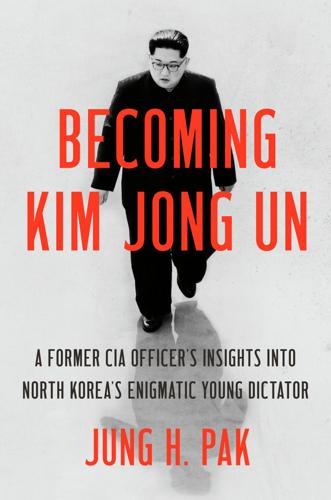
Becoming Kim Jong Un: A Former CIA Officer's Insights Into North Korea's Enigmatic Young Dictator
by
Jung H. Pak
Published 14 Apr 2020
The United Nations in 2019 reported that of the 25 million citizens, nearly 11 million are undernourished, 140,000 children under the age of five suffer from acute malnutrition or wasting, and nearly 20 percent of children are stunted, making these citizens more vulnerable to diseases such as tuberculosis. The situation is exacerbated by the fact that millions do not have access to basic sanitation facilities or clean water. Kim’s recognition of the cognitive dissonance between government propaganda and lived realities might be driving his efforts to create “Pyonghattan,” a way to combat fraying ties between the jangmadang generation and the regime, and keep the state relevant despite the decimation of the public distribution system.

Stakeholder Capitalism: A Global Economy That Works for Progress, People and Planet
by
Klaus Schwab
and
Peter Vanham
Published 27 Jan 2021
Globally, the agency said,72 “it is likely that over 80% of wastewater is released to the environment without adequate treatment,” with pollution often happening because of “intensive agriculture, industrial production, mining and untreated urban runoff and wastewater.” It threatens the access of clean water everywhere from cities to rural areas and poses a great health risk. Moreover, there is the issue of plastics, whose impact will be felt most dramatically in the coming decades, as the plastic that is currently accumulating in the world's oceans may affect life on land in a myriad of ways. Microplastics have become ubiquitous in the world's water, in part because they take decades to decompose: by current measures, it is estimated we could end up with more plastic than fish in our oceans by 2050.73 The most famous example in popular imagination is the “Great Pacific Garbage Patch” consisting largely of the debris of microplastics in the Pacific Ocean.
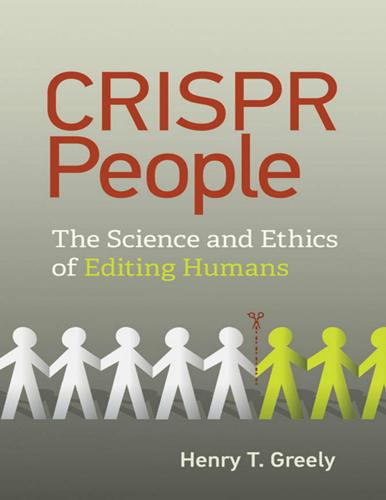
CRISPR People: The Science and Ethics of Editing Humans
by
Henry T. Greely
Published 22 Jan 2021
I cannot say that I am as confident that the requirements of justice will be met; safety is a much more politically successful goal. This concern is mitigated, though, by the fact that for the near future, the importance of access to human germline genome editing is trivial compared with the importance of access to, say, clean water, good food, and decent primary health care. Nonetheless, these possible inequities and their significance need to be watched. Diversity is another important concern. Will human germline genome editing homogenize the human population, depriving us of people whose genomes lead them to make unique contributions to the rest of society—or, whether they help “us” or not, have ways of life that many find worthwhile.
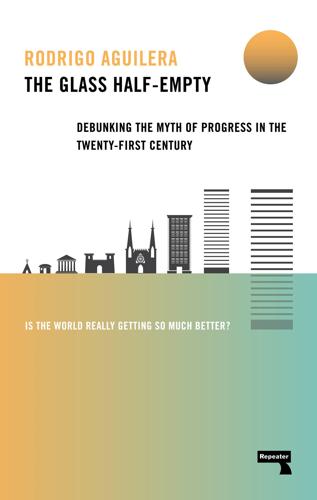
The Glass Half-Empty: Debunking the Myth of Progress in the Twenty-First Century
by
Rodrigo Aguilera
Published 10 Mar 2020
Neighboring Karnataka, whose capital Bangalore is known as “the Silicon Valley of India”, has a literacy rate of just 75.6%.55 Think about this the next time a tech company asks for tax breaks under the premise of improving the community (yes Amazon, that would be you). Another case in point is water and sanitation. Once again it is claimed that as economic growth lifts millions of people in the developing world out of poverty they are able to afford improved facilities like clean water and indoor toilets. In fact, it is the other way around. According to the UNDP, “human development is more closely linked to water and sanitation than any other development driver, including spending on health or education and access to energy services” with estimates of one dollar of investment in the water supply yielding a $4.4 return, and for sanitation an even larger $9.1 return.56 Unfortunately, the economic returns to a country do not necessarily correlate with the returns to a firm which is why the private sector has contributed only a pittance to water and sanitation investment in the poorest countries.
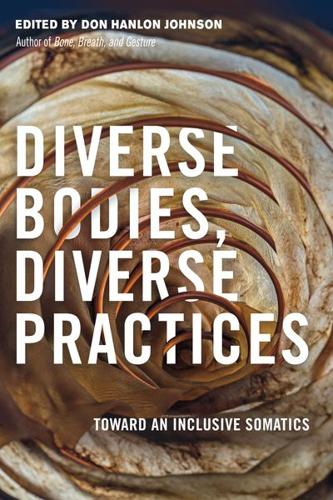
Diverse Bodies, Diverse Practices: Toward an Inclusive Somatics
by
Don Hanlon Johnson
Published 10 Sep 2018
There were basic appliances in her home, a wood stove and electric stove, a fridge and, eventually, a TV and telephone with multiple neighbors on the same line. You could actually hear other people’s conversations. There was no running water. They had a well for watering plants and animals and for washing clothes. Clean clothes were hung on a clothesline to dry. They went to town to fill water jugs with clean water for cooking and drinking. When a Laundromat was built in town, they took the clothes there to wash and dry. When my mother was around fifteen years old, her mother and father built a new brick house, which was a well-to-do home for Black folks at that time. Her mother had been embarrassed about the old house and did not allow any visitors there except for close relatives.

The Lighthouse of Stalingrad: The Hidden Truth at the Centre of WWII's Greatest Battle
by
Iain MacGregor
Published 27 Jul 2022
Just after midnight, Roske requested from Hindenlang that he not be disturbed for at least an hour, just so he had time to collect his thoughts as to how he could protect his men as well as Paulus. He wanted to prepare himself to meet the Russian delegation. Headquarters staff informed him the Soviets had now cut their telephone lines. He asked his orderly to find him some clean water to shave and to brush up his one usable dress uniform. While he waited, Roske’s mind went to a dark place. As he describes it in his unpublished memoir, he was clearly suffering from post-traumatic stress. He questioned how good a commander he had been to his men since his arrival the previous September, how he would avoid meeting the seriously wounded or make excuses not to.
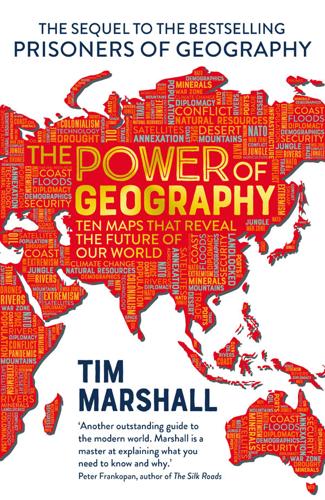
The Power of Geography: Ten Maps That Reveal the Future of Our World
by
Tim Marshall
Published 14 Oct 2021
This hugely reduces the amount of water the station requires on resupply missions, but while the technology will help long-distance travel, the diminishing return of 93 per cent recycling means more work is required. The work that is carried out both on and for the ISS provides dozens of examples of how rocket science benefits humanity. Technology developed for the WRS has been used to advance water-filtration systems back on Earth in regions where people lack access to clean water; the space station’s microgravity environment is the best place to grow the complicated crystal structures of human proteins that are used to develop medical treatments; and its robotic-arm technology has been adapted for numerous uses on Earth, including surgery. The ISS is a floating lily pad, one of many which will be built as we hop further from home.

Born to Run: A Hidden Tribe, Superathletes, and the Greatest Race the World Has Never Seen
by
Christopher McDougall
Published 5 May 2009
As I started sloshing the fifty yards across the river, I filled the bladder of my empty hydration pack with river water and dropped in a few iodine pills. I’d give that a half hour to purify, while I washed down a ProBar—a chewy raw-food blend of rolled oats, raisins, dates, and brown rice syrup—with the last of my clean water. Good thing I did. “Brace yourself,” Eric called as we passed each other on the far side of the river. “It’s a lot rougher up there than you remember.” The hills were so tough, Eric admitted, that he’d been on the verge of dropping out himself. A bad-news burst like that could come across as a punch in the gut, but Eric believes the worst thing you can give a runner midrace is false hope.
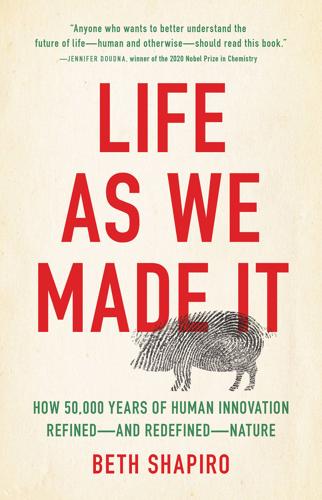
Life as We Made It: How 50,000 Years of Human Innovation Refined--And Redefined--Nature
by
Beth Shapiro
Published 15 Dec 2021
The most straightforward hypothesis is that, yes, the benefit of lactase persistence is tied to lactose, the sugar that represents about 30 percent of the calories in milk. Only those who can digest lactose have access to these calories, which may have been crucial calories during famines, droughts, and disease. Milk may also have provided an important source of clean water, which also may have been limited during periods of hardship. Another hypothesis is that milk drinking provided access to calcium and vitamin D in addition to lactose, the complement of which aids calcium absorption. This might benefit particular populations with limited access to sunlight, as ultraviolet radiation from sun exposure is necessary to stimulate the body’s production of vitamin D.
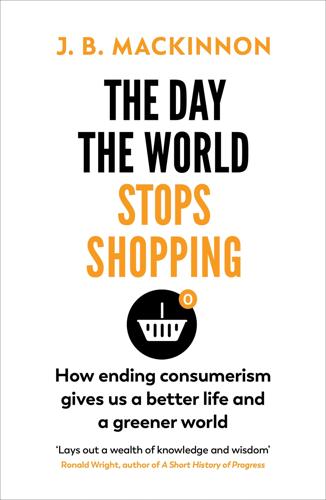
The Day the World Stops Shopping
by
J. B. MacKinnon
Published 14 May 2021
Instead of endless growth, it has been a culture of rise and fall, its people renowned as gamanzuyoi, or “steadfastly patient.” Then there is the fact that, until the late nineteenth century, Japan passed 250 years in isolation under a policy of sakoku, or “closed country.” Throughout that time, the economy grew very slowly, with most new wealth spent on practical improvements like better housing and clean water systems. Shops and restaurants became widespread and consumer goods like fans and combs gained popularity, but homes remained mostly unadorned and possessions few in number. Consumer historian Frank Trentmann calls it a “culture of simple comfort” that might have given the Japanese a higher quality of life than Europeans at that time.

Insight Guides Iceland
by
Insight Guides
Published 6 Dec 2024
If you want to learn how to handle a car in a skid, Iceland is the place. With roads this slippery, you learn fast. Stopping to admire the scenery at Borgarfjörður-Eystri. Ming Tang-Evans/Apa Publications ENVIRONMENTAL PROTECTION A land of some 100,000 sq km (38,610 sq miles), and only 382,000 people, with clean air and clean water, Iceland was relatively slow to see the need for conservation. Iceland’s glaciers are under threat from rising temperatures. Shutterstock In today’s interdependent world, Iceland is facing a dilemma – how can its pristine environment and outstanding natural beauty be protected from the ravages of industrialisation and global warming?

The Silk Roads: A New History of the World
by
Peter Frankopan
Published 26 Aug 2015
According to General Halder’s own estimates, the Wehrmacht lost over 10 per cent of its men in the first two months of fighting after the start of the invasion – or more than 400,000 soldiers. By the middle of September, this had risen to more than 500,000 men, dead or wounded.46 The galloping surge forward also put an almost unbearable strain on supply lines. Lack of clean water was an issue almost from the outset, which in turn led to outbreaks of cholera and dysentery. Even before the end of August, it was becoming clear to the more astute that the picture was not as rosy as it seemed: shortages of basic materials like razor blades, toothpaste, toothbrushes, writing paper, needles and thread were notable from the first days of the invasion.47 Endless rain in the late summer soaked men and equipment alike.
…
This went hand in hand with reports which emphasised the threat posed by the Soviet Union to world peace, which stated that ‘the aim of communist leaders is the universal suppression of human freedom’ and which even went so far as to claim that ‘Soviet teachers make their homes in broken-down freight cars which had been condemned as unfit to transport cattle’ and lacked heat, basic sanitary facilities and clean water.44 Financial aid began to pour into the country, rising nearly five times over the course of three years from $11.8 million in 1950 to $52.5 million in 1953. The aim was to encourage economic development in Iran, to stabilise its political culture and to lay the basis for reform, but also to provide military and technical assistance for its self-defence.

Wanderers: A Novel
by
Chuck Wendig
Published 1 Jul 2019
In any other year, it would be a problematic storm, maybe a few million bucks in damage, little to no loss of life. But no one prepares for it. No one warns of it. It shows up. People are washed out to sea. They are under a crane when it falls. When the hurricane passes, those left alive are without power, without clean water, without access to food. Many don’t care. White Mask has taken their minds. When they are thirsty, they drink polluted water, even sewer water. When they are hungry, they eat whatever they can find: rotten food on grocery shelves, a dead dog, one another. They descend into a kind of soft savagery: They’re not animals, they’re not zombies, and they are too clumsy and confused for their attacks on one another to seem especially brutal or even effective.
…
It stopped talking to us not long after that. Said it had to…conserve its resources or something. Said we were okay on our own. And we were, I guess. And we’re okay now, too. We’re really getting along out here. Benji and others got up a bunch of solar arrays to help bring electricity back. Water is flowing, clean water, and also they set up some hydroelectric generators by the waterfall. We’re already growing some vegetables and—I guess you had some chicken already? You’ll get sick of it, honestly, but once in a while we get some other protein, like elk or turkey.” “Cool,” she said, even though she was barely listening.

A History of Modern Britain
by
Andrew Marr
Published 2 Jul 2009
He used helicopters as they had not been used before in warfare. He also moved entire villages away from the jungle to keep them from supporting insurgents and imposed curfews. But beside the unpopular measures Templer introduced a new ‘hearts and minds’ approach to win over Malaya’s Chinese villagers. Roads, clean water, schools, medical centres, elected village councils and relatively restrained policing did more to confound a Communist insurgency than the machine guns and helicopters. Eventually after the Communists were defeated, Malaya became independent under a friendly government. As Malaysia it has thrived.
…
They did not believe in UN inspectors or promises by Baghdad. Above all the hopes of some of the more intellectual US officials and of Britain’s Foreign Office for a detailed plan for the reconstruction of post-war Iraq would be dashed by the hawks, Cheney and Rumsfeld at their head. ‘Regime change’ meant regime change. It did not mean promises to bring clean water and food to foreigners by democratic missionaries. From the time when he visited Bush at his dusty Texan ranch at Crawford, near Waco, in April 2002, Blair knew he intended to invade Iraq. That did not end the matter, since Blair spent much of the rest of the year arguing that Bush should go via the United Nations.

The 9/11 Wars
by
Jason Burke
Published 1 Sep 2011
The only entertainments were executions and occasional football matches in the city’s sports stadium, woefully ill-equipped gyms and boxing clubs, which provided an outlet for jobless teenagers, and a motorcyclist who set up a ‘wall of death’ in the central Ariana Square. That most of the spectators at the executions the author attended were there simply because there was nothing else to do was ample testament to the desperation and meanness of their lives. Many hours each day were devoted to procuring enough fuel in the winter and clean water in the summer. Ministers with little more than a basic religious education sat in the corner of decrepit offices warmed by Chinese-made bar heaters. A handful of students walked through the derelict halls of the university and the polytechnic was too heavily mined to be used. On the wall of the offices of the religious police, who were largely composed of young men armed with sticks or lengths of rubber hose who harassed women whom they deemed immodestly dressed or men whose beards were under the regulation length of the width of a fist, a scrawled slogan read: ‘Throw reason to the dogs, it stinks of corruption.’
…
Pakistan was a nuclear power, with hostile relations with its neighbours that dated back decades and a range of social and economic problems that, though no means exceptional in the Islamic world or among developing nations generally, were nonetheless acute. In 2008, Pakistan was 141st out of 182 on the United Nations Human Development index.2 Infant mortality rates were on a par with those in sub-Saharan Africa and much of the population did not have access to clean water let alone health care. If outright chronic malnutrition was rare, many millions of people ate poorly. Pakistan’s size alone – often underestimated due to its proximity to giants India and China – and strategic position as a buffer state between the Middle East and south Asia contributed too to a strategic importance that few other countries involved in the 9/11 Wars could rival.
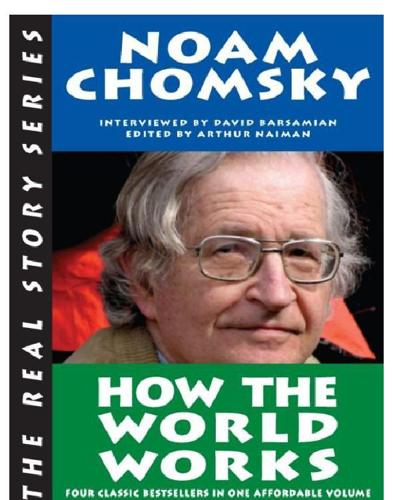
How the World Works
by
Noam Chomsky
,
Arthur Naiman
and
David Barsamian
Published 13 Sep 2011
I don’t think many people in the public health field would question the conclusion that the major contribution to improving health, reducing mortality figures and improving the quality of life, would come from simple public-health measures like ensuring people adequate nutrition and safe and healthy conditions of life, clean water, effective sewage treatment, and so on. You’d think that in a rich country like this, these wouldn’t be big issues, but they are for a lot of the population. Lancet, the British medical journal—the most prestigious medical journal in the world—recently pointed out that 40% of children in New York City live below the poverty line.

Someone comes to town, someone leaves town
by
Cory Doctorow
Published 1 Jul 2005
So I bundled them all up and carried them over my head and I waded in and the water had never been so cold and had never felt so oily and there was a smell to it, a stagnant smell. I waded out and I stood and I shivered and I whispered, "Father?" and I listened. I heard the sound of the water I'd disturbed, lapping around my ears and up on the shore. I smelled the sewage and oil smell, but none of the habitual smells of my father: Clean water, coalface, sulfur, grass, and lime. I picked my way out of the water again and I walked to the shore, and it was too dark to put on my clothes, so I carried them under one arm and felt my way back to the summer cave and leaned against my mother and waited to drip dry. I'd stepped in something soft that squished and smelled between my mother and my father, and I didn't want to put on my socks until I'd wiped it off, but I couldn't bring myself to wipe it on the cave floor.

Platform Revolution: How Networked Markets Are Transforming the Economy--And How to Make Them Work for You
by
Sangeet Paul Choudary
,
Marshall W. van Alstyne
and
Geoffrey G. Parker
Published 27 Mar 2016
Increasing evidence suggests that just governance is a crucially important factor in the ability of a state to create wealth—even more important than such obviously valuable assets as natural resources, navigable waterways, and favorable agricultural conditions. Consider the modern city-state of Singapore. In 1959, when Lee Kuan Yew became prime minister, it had almost no natural resources. For defense and clean water, it relied on the Federation of Malaya, the predecessor of the nation of Malaysia (established in 1963). Corruption was rampant. Per capita GDP hovered below $430.9 Ethnic strife between Malays and Chinese, religious strife between Muslims and Buddhists, and political strife between capitalists and communists hamstrung progress.
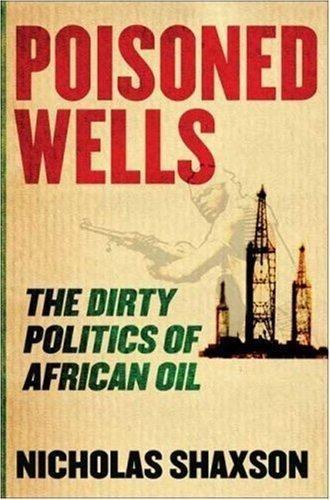
Poisoned Wells: The Dirty Politics of African Oil
by
Nicholas Shaxson
Published 20 Mar 2007
The courts did nothing, and now that chief has the most ostentatious house in the village. “We have been in a very sober, sorrowful mood,” one said. “We don’t know what action to take.” They bickered about who should have got what; they wanted more Shell jobs in Imiringi, not in nearby communities; they did not like Igbos and Yorubas getting Shell jobs; they wanted clean water and roads. “The revolution has not ended. The flow stations will be closed down some day. 195 P o i s o n e d We l l s The Ijaws are out for self-determination and”—all joined in a fist-shaking chorus—“Total Resource Control.” Yet this, too, was a slippery topic. The national budget allocates 13 percent of oil revenues to the state where it is produced, while the “thieves” in federal government get the rest.

Age of Discovery: Navigating the Risks and Rewards of Our New Renaissance
by
Ian Goldin
and
Chris Kutarna
Published 23 May 2016
Two major threats to human well-being are infectious diseases (caused and spread by specific bacteria, viruses and other parasites) and chronic diseases (long-term conditions like heart disease, cancer and diabetes, whose causes are complex and include lifestyle, diet, genetics and other factors). Both have proven highly vulnerable to our connective and developmental powers in this age. Against infections, such powers have enabled: improved technologies and practices for hygiene, public sanitation, clean water and pest control; vaccines, antibiotics and other drugs; improved crops and staple grains fortified with minerals and nutrients; growing public budgets and private incomes to invest in all these things; and the education to absorb them and apply them wisely. In 1990, 13 million children under the age of five died from four main categories of infectious disease: respiratory infections (pneumonia); diarrhea; tuberculosis; and other childhood diseases like measles, polio, whooping cough, diphtheria and tetanus.41 Most of these deaths were in the developing world.

Radicals Chasing Utopia: Inside the Rogue Movements Trying to Change the World
by
Jamie Bartlett
Published 12 Jun 2017
Walking around the Solar Village I realise how reliant I am on all sorts of complicated and quite fragile systems (infrastructure, finance, communications, transport) that I barely understand at all. For tens of thousands of years, humans learned and passed on the knowledge and skills necessary to survive: how to hunt, harvest, find water, generate heat and make shelter. I can fix a printer, send an email and drive a car, but I have no idea how clean water comes out of my tap, and wouldn’t know what to do if it one day stopped. Somehow, somewhere deep in our collective subconscious, I wonder if that’s stress-inducing. There’s a certain calmness at Tamera: perhaps it’s the feeling that they are not helplessly dependent on others for life’s basic necessities.
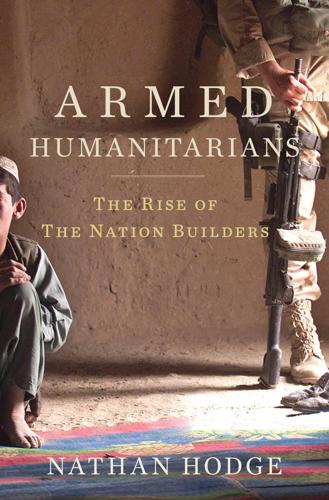
Armed Humanitarians
by
Nathan Hodge
Published 1 Sep 2011
The company had managed Camp Bondsteel as part of the Army’s Logistics Civil Augmentation Program, or LOGCAP: it had a contract for the management of military installations overseas. Under LOGCAP, the Army could order individual “task orders” on an as-needed basis: The contractor built housing, provided clean water, and operated commissaries; it provided fuel and spare parts; and it maintained vehicles and equipment. In theory, outsourcing through LOGCAP freed up the downsized post–Cold War Army to do purely military tasks. The military could train and prepare for war, and leave the potato peeling and latrine cleaning to the contractors.
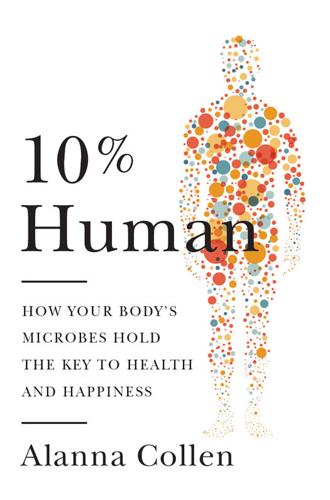
10% Human: How Your Body's Microbes Hold the Key to Health and Happiness
by
Alanna Collen
Published 4 May 2015
Just as many of our modern illnesses reach a plateau in the wealthiest countries, these conditions begin their ascent elsewhere. When it comes to twenty-first-century illnesses, money is dangerous. The size of your salary, the wealth of your neighbourhood and status of your country all contribute to your risk. But of course, simply being rich does not make you ill. Money may not buy happiness, but it does buy clean water, freedom from infectious disease, calorie-rich foods, an education, a job in an office, a small family, holidays to far-flung places, and many other luxuries besides. Asking Where? tells us not just the location of our modern plagues, but that it is money that’s bringing us chronic ill-health. Intriguingly though, this relationship between increasing wealth and poorer health disconnects at the very richest end of the scale.
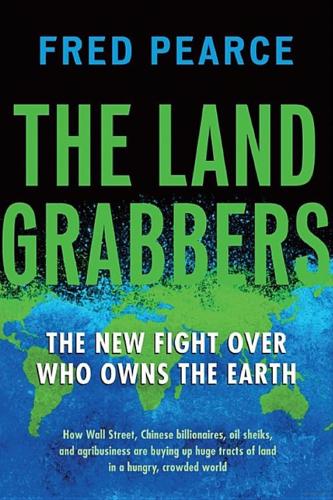
The Land Grabbers: The New Fight Over Who Owns the Earth
by
Fred Pearce
Published 28 May 2012
We used to go right across that land to the swamp. We cut the papyrus to make mats and baskets and thatch for our huts.” She pointed to a mango tree on the other side of the fence. “That used to be ours, too. The farm took our land. Most people have no cattle now. And the water is dirty. The company said it would give us clean water, but the pumps only deliver dirty canal water.” She went back to her washing. Sitting under a tree in the village, wearing a yellow shirt and peaked baseball cap, seventy-four-year-old Dalmas told me: “We used to live right in the swamp. My seventeen brothers and sisters and I were born there.
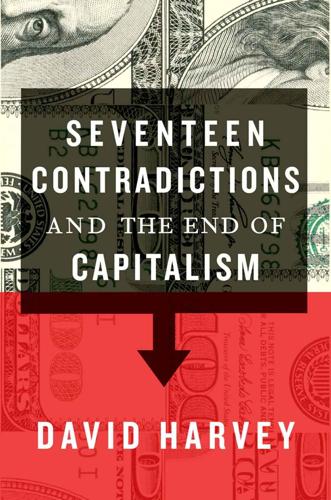
Seventeen Contradictions and the End of Capitalism
by
David Harvey
Published 3 Apr 2014
For its own profit, capital seeks to capture the dialectics of how we can only change ourselves by changing the world (and vice versa). All ecological and environmental projects are socio-economic projects (and vice versa). Everything then depends on the purpose of the socio-economic and ecological projects – the well-being of people or the rate of profit? In fields like public health and clean water, this dialectic has worked for the benefit of people, sometimes at the expense of profits. Popular support for big business environmentalism has consequently been helpful both to capital and to environmental politics. Some of this politics is, unfortunately, symbolic rather than substantive. This is known as ‘greenwashing’ – disguising a profit-driven project as a project to enhance human welfare.

Skeletons on the Zahara
by
Dean King
Published 11 Apr 2005
Sidi Hamet's younger brother, Seid, wanted to strike him for his impudence and run him off, but Hamet stared at Riley. "El Rais?" he asked. Are you the captain? Riley nodded. After a moment, Hamet motioned for his brother to take the bowl. Seid refused. Hamet got up and filled it himself. Riley held the bowl in his bony hands and examined its contents in awe: nearly a quart of clean water. "Sherub, Rais," Hamet ordered, raising his cupped hands. Drink, Captain. Riley gulped down half the water. It was the best he had had since leaving the brig. It stung his chapped lips and awakened deadened nerves in his mouth. "Besmillah, Sidi Hamet, and God bless you," he croaked in broken Arabic, lowering the bowl.1 He intended to take the rest to Clark.
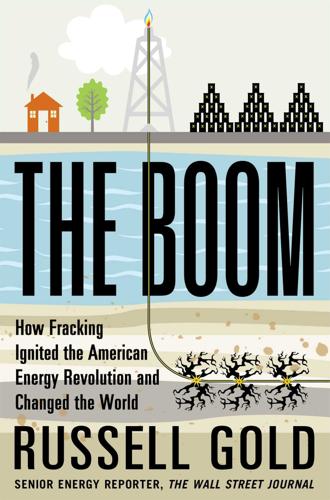
The Boom: How Fracking Ignited the American Energy Revolution and Changed the World
by
Russell Gold
Published 7 Apr 2014
The local chapter had to reverse its position. But the state chapter kept hearing from its members, many of whom were being visited by landmen seeking to lease their properties. A New York City councilman began raising the specter that upstate gas drilling could jeopardize the watershed that provided clean water to ten million people and require a $10 billion filtration plant. And Downs was educating himself about fracking. He began to worry about the benzene, a carcinogen, and other chemicals that were part of the fracking cocktail. The issue came to a head in January 2010. Cornell University was holding a ceremony to inaugurate two natural gas–fired turbines to provide power and heat for the school, located three counties west of the Ross #1.
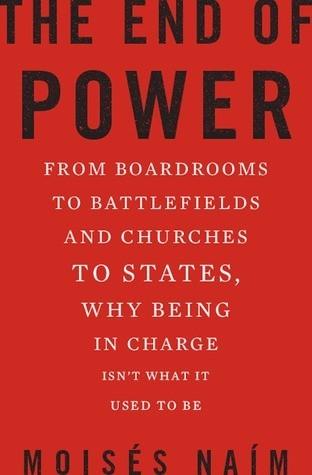
The End of Power: From Boardrooms to Battlefields and Churches to States, Why Being in Charge Isn’t What It Used to Be
by
Moises Naim
Published 5 Mar 2013
In California, for example, the number of foundations jumped by 71 percent from 1999 to 2009, and giving more than doubled from $2.8 billion to $6 billion.30 Such growth helps to explain the shift in philanthropic gravity in the United States over the last decade: in 2003 the West surpassed the Midwest in overall giving for the first time, and in 2006 it overtook the Northeast, the bastion of American philanthropy.31 While many of these new individual givers—the number of family foundations shot up by 40 percent from 2000 to 2005—are tech moguls of one stripe or another, some are also celebrities practicing what one wag at The Economist dubbed “celanthropy” (celebrity plus philanthropy): Bono with his One Foundation, Matt Damon promoting access to clean water, and Brad Pitt developing greenhouses to rebuild New Orleans. Mega-star athletes, such as Tiger Woods or Andre Agassi, have foundations that control tens or hundreds of millions of dollars in assets. But many more are the small personal foundations of middling, journeymen NFL, NBA, or European soccer professionals whose names are little known beyond ardent fan circles.

Effendi
by
Jon Courtenay Grimwood
Published 1 Jan 2002
He could explain why the four big statues all wore the double crown of Upper and Lower Egypt, while inside the cliffs, in the darkness of the inner chamber, the king wore only the white crown of Upper Egypt or the red crown of Lower Egypt, depending on whether he was in the northern or southern part of the temple. And he learnt what interested the foreigners, those people who wasted water as if it was endless. Who washed under flowing showers, shat in unused water and giggled as they tipped full bottles over their heads and let clean water drain away into the dust. He told them of kings marrying their daughters, brothers sleeping with sisters, mothers with sons. It kept the magic sacred, kept the river flowing and renewed the dark silt that lined the banks and fed the kingdom, but he didn’t explain that. The reasons were never as important to the nasrani as the actions themselves.
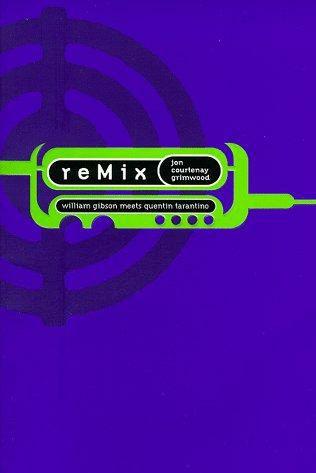
Remix
by
John Courtenay Grimwood
Published 15 Nov 2001
The man had been looking at her Dumas novels, Lady Clare realized, and had seen the one with its leather cover ripped off. He’d known it for a sign of what it was. In that study she had five oil paintings, including one by Louis David, and a hundred times over in the last week she’d have swapped the lot, even the small Rodin bronze in the corner, for a scrap of bread and a glass of clean water. She waited, watching him wait too. And then the General leant forward and took the tri-D from her desk. “It’s time we talked,” he said, turning the Kodak over so Lady Clare could finally see it. LizAlec. Dressed in a white cotton smock and with her hair cropped down to her skull. She was still scowling.

System Error: Where Big Tech Went Wrong and How We Can Reboot
by
Rob Reich
,
Mehran Sahami
and
Jeremy M. Weinstein
Published 6 Sep 2021
To Sen, economic development is first and foremost about attaining freedom and unlocking the exercise of human capabilities. This perspective challenges the common conception of well-being. It forces us to consider not only wealth but the key ingredients that enable people to lead a full and meaningful life, such as education; a long life expectancy; access to clean water, food, and health care; political freedom; and civil liberties. The United Nations Development Programme (UNDP) took Sen’s proposal seriously in an effort to challenge the world’s reliance on measures of gross domestic product (GDP) as a proxy for well-being. It invented a new measure, the Human Development Index (HDI), to better capture people’s capabilities.

Human Frontiers: The Future of Big Ideas in an Age of Small Thinking
by
Michael Bhaskar
Published 2 Nov 2021
The boomtown of Chicago was almost eradicated in a vast urban conflagration in 1871. Sewage was a ubiquitous disease-carrying presence, in the home and out. Animals were everywhere, their dung clogging the streets. Those animals were scrawny and ill fed: a cow produced 1000 lb of milk a year, compared to 16,000 lb today.3 Clean water and unspoiled food, monotonous and meagre though it might be, were rarities. Disease was rife and little understood. Between a fifth and a quarter of all infants died before their fifth birthday. Unimaginable personal tragedy was an unexplained but near inevitable part of life. Most people never moved far from where they were born, and never encountered much outside their own small cultures.
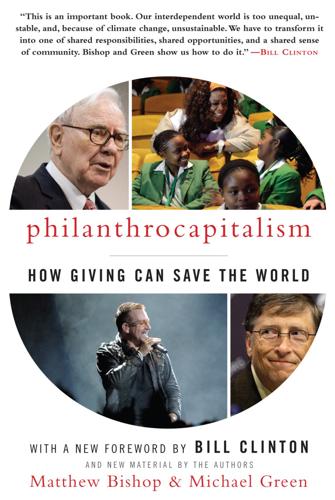
Philanthrocapitalism
by
Matthew Bishop
,
Michael Green
and
Bill Clinton
Published 29 Sep 2008
Many of these investments are in the form of an equity stake in a for-profit enterprise, and Novogratz is a strong advocate of harnassing market forces and the profit motive to achieve economic development. “Markets are undoubtedly our best listening device, and they can help us identify the level of smart-subsidy needed to make goods and services available to low-income people so that they can solve their own problems,” she says. By 2008, Acumen had invested in companies that provide clean water at affordable prices, health clinics for poor districts in India, and a pioneering factory that sells affordable bed nets for use in the fight against malaria. It had built a $20 million investment portfolio, which it hoped to grow fivefold within five years. One of its biggest early supporters was Google, which invested $5 million in October 2005.
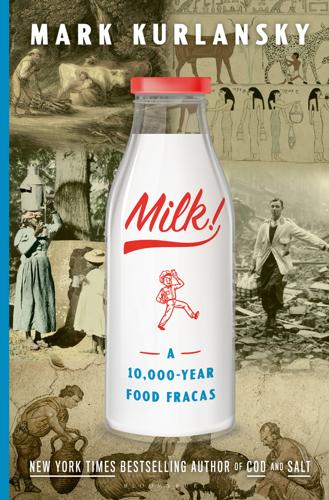
Milk!
by
Mark Kurlansky
Then health experts working in these countries found a notable jump in infant mortality as well as in the number of cases of gastroenteritis and malnutrition. This was clearly connected to the use of formula. It was not that the formula was toxic or lacked nutrition. It was just ill-suited for the developing world. It came in a powder form, to be mixed with water. Most poor women had little access to clean water. They could boil water for the requisite twenty minutes, but this involved burning some kind of fuel that they typically could not afford. Maybe just a few minutes would help? It wouldn’t. Also, while the women knew the importance of washing the bottles between uses, the water with which they washed them usually wasn’t clean and often infected the bottles.

Mind in Motion: How Action Shapes Thought
by
Barbara Tversky
Published 20 May 2019
His TED talk, telling the dramatic story of world economic development in recent times as if it were an ongoing tight soccer match, went viral. Many of the misconceptions that people held about economic and social development came from categorical thinking, especially dividing the world into rich and poor. Poor countries had no electricity, education, clean water, or health care. Rich countries had all that and more. Nothing in between. Wrong! Highly educated people vastly overestimated the percentage of the world that is poor, failing to update what was true of the world in the sixties to the world of the twenty-first century. They also saw poverty as all-or-none, not in gradations.

Border and Rule: Global Migration, Capitalism, and the Rise of Racist Nationalism
by
Harsha Walia
Published 9 Feb 2021
Indigenous people comprise less than 5 percent of the world’s population but steward 80 percent of the planet’s biodiversity and, as a result, most acutely experience the impacts of ecological genocide.45 Eriel Deranger emphasizes, “The complex interrelations between energy poverty, the price of food, access to clean water and climate change disproportionately impact Indigenous peoples.”46 Yet, just as white workers express resentment toward migrant workers for stealing their jobs, workers in extractive industries are often hostile toward Indigenous land defenders for ruining their (settler) economy. Working-class identity as settler-worker identity and the characterization of Indigenous lands as “public” lands in an expression of terra nullius elide the colonial theft of Indigenous territories as an indispensable subsidy to the settler polity and the industries workers are laboring in.
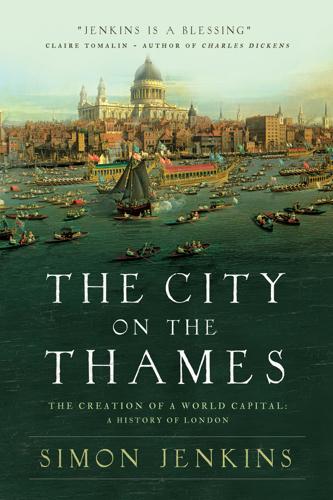
The City on the Thames
by
Simon Jenkins
Published 31 Aug 2020
His embankment drastically narrowed – and therefore speeded – the flow of the Thames, turning it at full tide into a torrent and dangerously scouring the footings of the Georgian bridges. By then, London’s nine private water companies were already supplying most of the city with piped and reasonably clean water. Belatedly, London’s most essential item of modern infrastructure was in place. For the most part it is still in working order today. The settling of the railway The railway mania of the 1840s, largely completed in the 1850s, left London with a portfolio of termini – north, south, east and west – in the most unsatisfactory places.
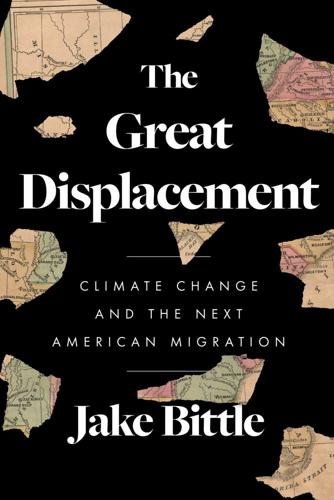
The Great Displacement: Climate Change and the Next American Migration
by
Jake Bittle
Published 21 Feb 2023
In the northern reaches of Arizona, on the Navajo reservation, thousands of people were languishing with no water at all—the tribe had never reached a water settlement, and thus there was no water delivery infrastructure on the reservation whatsoever. In times of drought, the lakes and ponds that provided almost half the tribe with clean water all dried up, and so did the isolated groundwater wells on the reservation, which forced many Navajo families to rely on unreliable deliveries of bottled water. Across the country, around one in ten indigenous Americans lacked access to safe and clean drinking water. The Gila had suffered under similar circumstances in Robert’s childhood, but the settlement had given them more water than they could use.
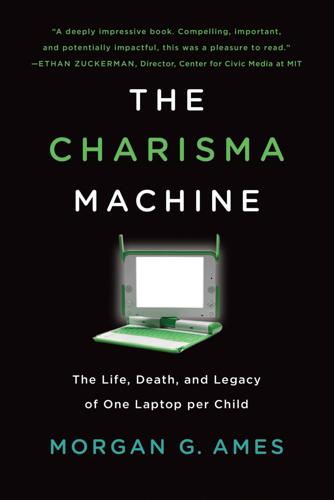
The Charisma Machine: The Life, Death, and Legacy of One Laptop Per Child
by
Morgan G. Ames
Published 19 Nov 2019
The laptop was only available to country governments, and Negroponte claimed that many had already “expressed serious interest,” even with a high cost of entry: the purchase of at least one million machines.8 He wanted hundreds of millions to be in use by the end of 2007 and for every child in the Global South to have one by 2010.9 During the presentation, Annan demonstrated the hand crank on the mock-up—and promptly broke it off.10 This presentation, its technical difficulties notwithstanding, lit up journalists’ wires and captured imaginations around the world.11 Even articles skeptical of the project’s feasibility generally presented its vision as compelling.12 The most vocal critics were the African delegation to Tunisia, which as a group was largely unimpressed by the demonstration and voiced concerns about project and infrastructure costs, resources diverted from clean water and better schools, and machine obsolescence and recycling.13 But these voices were quickly marginalized within the broader discourse around the hundred-dollar laptop. This paved the way for Negroponte, who was on leave from MIT to work full time on this project, to give a marathon of similar presentations over the next two years.
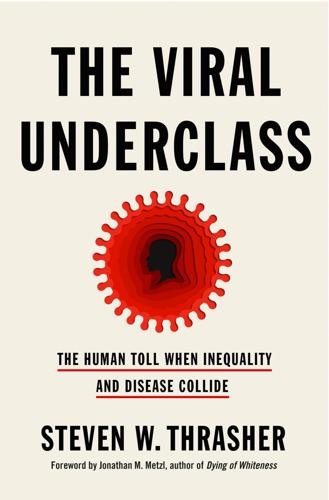
The Viral Underclass: The Human Toll When Inequality and Disease Collide
by
Steven W. Thrasher
Published 1 Aug 2022
I think of neoliberalism as the shifting of risk from the many onto the few—when the state, corporations, and other entities of concentrated wealth do not want to share risk, but instead place it on individuals. “It’s all about you” is how architectural historian (and my former boyfriend) André Bideau once explained it to me. Neoliberalism warps access to education, medicine, and even clean water with a market logic. It sells itself under the illusion of choice, even as it denies people access to the necessary resources of life itself. For example, in the United States, when a worker loses their job (and with it, their health insurance), they are offered the “choice” of buying into their former employer’s insurance plan via the 1985 Consolidated Omnibus Budget Reconciliation Act (more often known by its sinister acronym, COBRA).

Visual Thinking: The Hidden Gifts of People Who Think in Pictures, Patterns, and Abstractions
by
Temple Grandin, Ph.d.
Published 11 Oct 2022
But long before patents, clever people were figuring out how to make and fix things, not necessarily for profit but just because it would make life easier or make something possible. Civilization would not have progressed without the mechanical inventions—starting with the humble lever and the simple pulley—that enabled people to dig wells, erect dams, or build the roads that gave access to clean water, allowed agriculture to flourish, and made possible the transport of goods. The mechanical inventors are generally object visualizers. The picture-thinking mind can see how a not-yet-created mechanical device will work. In the earliest renderings on view at the Patent Office, you can see the mechanical mind of the object thinker at work.
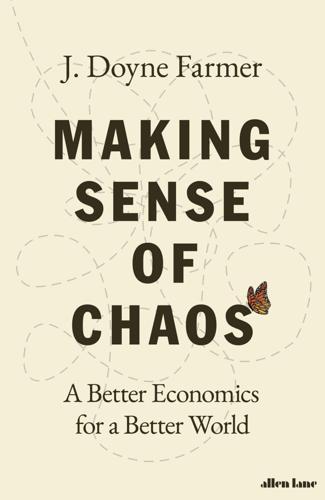
Making Sense of Chaos: A Better Economics for a Better World
by
J. Doyne Farmer
Published 24 Apr 2024
Moreover, runaway nonlinear feedback effects – such as the release of carbon-bearing methane from thawing tundra and less reflected light due to diminishing ice coverage – could potentially amplify human-induced climate change. We need to bring greenhouse gases under control soon to avoid catastrophic and irreversible changes in the biosphere, mass migrations, mass extinctions and disruption of the systems that provide us with food and clean water. To limit the average global temperature change to 1.5°C (2.7°F), we need to bring net emissions to zero within the next twenty years or so.1 While understanding climate change is the domain of physical scientists, understanding climate change’s causes and potential solutions is largely the domain of social scientists.

Pastwatch The Redemption of Christopher Colombus
by
Orson Scott Card
Published 30 Jan 2012
“That’s so disingenuous it’s laughable. You’ve known from the beginning that it was Columbus you were going after. Columbus you were going to stop. And yet you seem to forget that along with the evil that European ascendancy brought to the world, you will also be throwing away the good. Useful medicine. Productive agriculture. Clean water. Cheap power. The industry that gives us the leisure to have this meeting. And don’t dare to tell me that all the goods of our modern world would have been invented anyway. Nothing is inevitable. You’re throwing away too much.” Tagiri covered her face with her hands. “I know,” she said. Kemal had expected argument.
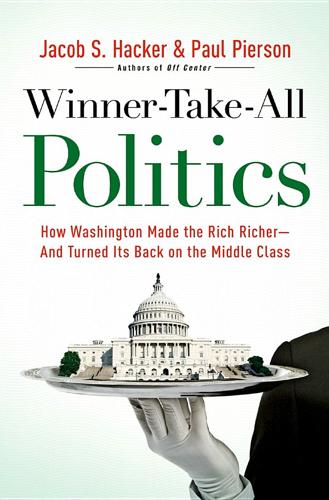
Winner-Take-All Politics: How Washington Made the Rich Richer-And Turned Its Back on the Middle Class
by
Paul Pierson
and
Jacob S. Hacker
Published 14 Sep 2010
They falter in the presence of positive or negative “externalities,” benefits or costs that accrue to those outside a market transaction (think toxic waste or the positive social effects of a child’s education). And markets frequently trample on valued social priorities about which large numbers of citizens care deeply—from clean water to the just treatment of workers to, yes, the fair distribution of economic rewards. When markets operate in damaging ways, the natural temptation is to turn to politics to correct the imbalance. And yet market participants have strong incentives to resist government regulation and democratic intervention.
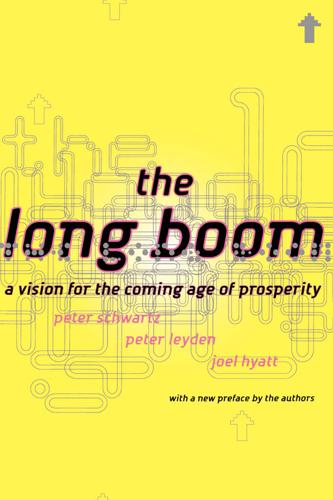
The Long Boom: A Vision for the Coming Age of Prosperity
by
Peter Schwartz
,
Peter Leyden
and
Joel Hyatt
Published 18 Oct 2000
First, taken as a whole, the world is a pretty poor place. Probably half the people in the world live in conditions that a visitor from the nineteenth century would find perfectly familiar. For example, of the 4.4 billion people living in developing countries, nearly three-fifths lack access to safe sewers, a third lack access to clean water, a quarter do not have adequate housing, and a fifth have no access to modern health services of any kind. The prosperity that spread through the twentieth century reached about thirty advanced industrialized countries but stopped far short of reaching most people outside that club. For example, the richest fifth of the world's population consumes 86 percent of all goods and services, and the poorest fifth consumes just 1.3 percent.

Tales of a Female Nomad: Living at Large in the World
by
Rita Golden Gelman
Published 21 May 2001
Behind the rooms, accessible from the patio, are a toilet and bathroom. I will be paying the family eight dollars a day for the room and three meals. I step into the bathroom with my towel. There is a big tiled tub nearly four feet high and two and a half feet square in the corner, filled with clean water. On the rim of the tub there’s a red plastic scoop with a handle for scooping out the water (you never climb in). The water is cold compared to the air, and I squeal with the first few scoops. But, like jumping into a lake, after a few minutes of splashing, the water feels refreshing. “Sudah segar ya?”
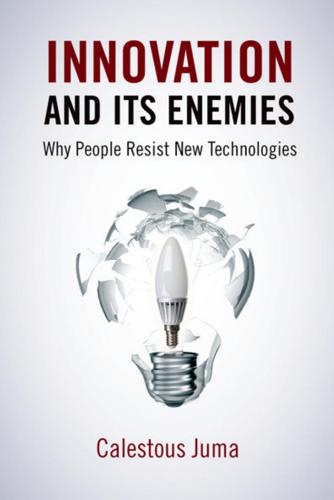
Innovation and Its Enemies
by
Calestous Juma
Published 20 Mar 2017
According to the US National Academy of Engineering, these challenges fall into four main categories: sustainability, health, security, and life enrichment. Sustainability encompasses the need to make solar energy economical, provide energy from fusion, develop carbon sequestration methods, and manage the nitrogen cycle. For improved health, there must be access to clean water, the engineering of better medicines, advancement in health informatics, and work done to reverse engineer the brain. The challenges to security will require actions to secure cyberspace, prevent nuclear terror, and restore and improve urban infrastructure. The challenge to life enrichment requires work to enhance virtual reality, advance personalized learning, and engineer the tools for scientific discovery.2 As the world’s challenges have evolved, so has society’s view of technological innovation, and this has implications for technological adoption.

The Great Halifax Explosion: A World War I Story of Treachery, Tragedy, and Extraordinary Heroism
by
John U. Bacon
Published 7 Nov 2017
Although her son Reg, Archie’s playmate, was still missing, and two of her daughters had already gone to the hospital, one with a cut eye, Mrs. Rasley devoted herself to Archie’s immediate needs. When she saw that his head wounds had produced so much blood they had glued his shirt to his back, she found clean water, soaked his shirt, and peeled it carefully off his body. In the process she discovered the source of all that blood: a serious cut on the back of his head from the glass that had shot toward him and Millicent while they played. No one had noticed how much blood Archie had lost because he had dark hair, and his head was already so black from the grunge that it was hard to see.
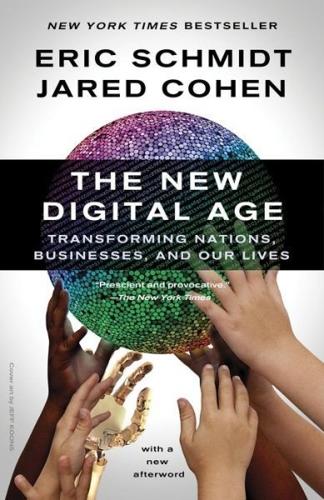
The New Digital Age: Transforming Nations, Businesses, and Our Lives
by
Eric Schmidt
and
Jared Cohen
Published 22 Apr 2013
In a reconstruction setting, this outlook is of course encouraging, but even the most organized and well-meaning telecom companies will never supplant the heavy-duty work of governing institutions. There are basic goods and social services that only a government can provide to its population, like security, public-health programs, clean water supplies, transport infrastructure and basic education. Connectivity and telecommunications will improve the efficacy of these functions but only in partnership with institutional actors on the ground, as the following example shows. With its initial collapse, in 1991, Somalia became the world’s premier failed state.
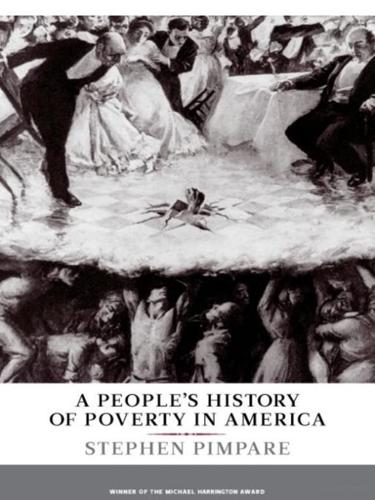
A People's History of Poverty in America
by
Stephen Pimpare
Published 11 Nov 2008
At around the same time, New York charity administrator Edward Devine said the figure in New York should be closer to $600 a year, since a reasonable standard of living would have to include, he thought, burial (this was often a huge portion of a family’s expenses), food, shelter, furniture, clothing, clean water, education, religion, justice in courts, electoral participation (i.e., poll taxes), medical care, and rest and recreation. He anticipated Amartya Sen’s thinking about poverty in many ways (see below). Devine argued, and this sets him apart from most of his predecessors and successors, that it would be better to risk overstating poverty with a high threshold than understating it:Those who are aided as part of a general and systematic scheme of relief should be aided to live at the normal standard of living, and should not be tempted or required to live below it....
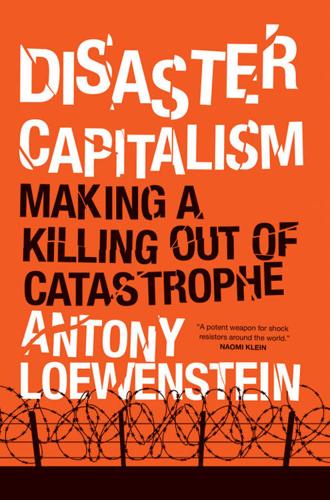
Disaster Capitalism: Making a Killing Out of Catastrophe
by
Antony Loewenstein
Published 1 Sep 2015
“Even if the conscience of the world is no longer shocked by Haitian sickness and deaths,” the New York Times editorialized in April 2014, “the Haitian people still need the world’s help.”26 Nonetheless, when Haiti had received lashings of “help,” this generosity had done little but enrich foreign companies. To make matters worse, international donors remained unwilling to support a trust fund to allow the Haitian government to eradicate cholera with clean water and sanitation.27 The presence of cholera had exacerbated the deep unhappiness that many of Haiti’s citizens felt in regard to the presence of UN troops and their mandate to bring safety to the population. UN forces had been accused of countless violations, including the murder of more than thirty Haitians in the Cité Soleil community in 2006 and the alleged rape of a man by Uruguayan troops in 2011.

Work Rules!: Insights From Inside Google That Will Transform How You Live and Lead
by
Laszlo Bock
Published 31 Mar 2015
In addition to making their CEO and board accessible to all employees, they provide pregnant women with supplemental food and medicine; offer a diploma program that allows employees to learn as they work and even trains them to be entrepreneurs and start their own businesses; appoint worker councils in all plants to help every employee influence the business; offer scholarships for children of employees; and more. They also give back to the community, for example through their Water & Women program, which builds wells in employees’ villages. “This elevates the stature of our employees in the community, and they are then privy to clean water, which is scarce.” All these efforts have made them Sri Lanka’s second-largest exporter and the recipient of numerous awards for their employment conditions, community involvement, and environmental practices. Ishan elaborated how this happens: “When employees trust the leadership, they become brand ambassadors and in turn cause progressive change in their families, society, and environment.

It's Our Turn to Eat
by
Michela Wrong
Published 9 Apr 2009
Kibera is where the phrase ‘flying toilets’ was added to the English language, a description of the method used to dispose of faeces – dump it in a plastic bag and throw it out of the window – by residents who couldn't be bothered walking to the public latrine. Yet while the slum does not boast regular electricity, tarred roads or clean water, it offers hope of a different kind. If your children miraculously survive to the age of five in Kibera, they will go on to receive a far better education than their rural equivalents, and in that education lie untold possibilities. By the late 1990s, many analysts were confidently predicting that population trends alone would accomplish what Kenya's presidents had failed to achieve with their national anthems, independence days and flag salutes: a true sense of nationhood.

Machines of Loving Grace: The Quest for Common Ground Between Humans and Robots
by
John Markoff
Published 24 Aug 2015
That is at the heart of the concept of “scale,” which is very much a common denominator in motivating the region’s programmers, hardware hackers, and venture capitalists. It is not enough to make a profit, or to create something that is beautiful. It has to have an impact. It has to be something that goes under 95 percent of the world’s Christmas trees, or offers clean water or electricity to billions of people. Google’s chief executive Larry Page took the Steve Jobs approach in recruiting Sebastian Thrun. Thrun was a fast-rising academic who had spent a sabbatical year at Stanford in 2001, which opened his eyes to the world that Silicon Valley offered beyond the walls of academia.
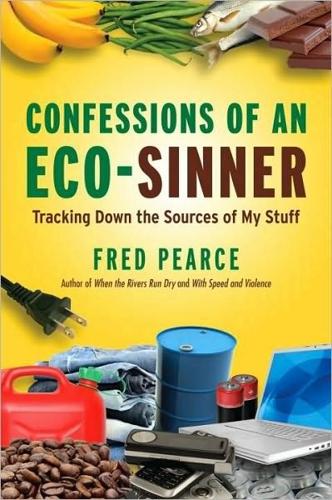
Confessions of an Eco-Sinner: Tracking Down the Sources of My Stuff
by
Fred Pearce
Published 30 Sep 2009
We have halved the geographical extent of most natural ecosystems, from wetlands to rainforests to grasslands. Our pollution has tripled the amount of nitrogen that nature has to process each year, and doubled the amount of sulphur. We have added more than a third to atmospheric levels of carbon dioxide, the planet’s thermostat. We are running down her resources, like soil and clean water, as certainly as if we were running up a credit-card bill. The planet’s very life-support systems are under threat. I want to put faith in the children of Toba, with their survival genes. These are traits that may stand us in good stead as we face our own modern, man-made environmental crisis.

The Prince of the Marshes: And Other Occupational Hazards of a Year in Iraq
by
Rory Stewart
Published 1 Jan 2005
As he went on spinning distinctions between power, authority, law, and legislative actions, I felt more and more as if I had fallen into the story of Alexander the Great and the ancient gymnosophist who says, “Trying to explain my philosophy to you through your interpreters is like trying to drink clean water out of a mud bath.” Abu Akil referred to works by three different ayatollahs, drew distinctions between Islamic theory and policy, and concluded that the clerics should direct the religious, moral, and social actions of the people but not their politics. Whatever that meant. The other men in the room looked at him with a disciple’s patient admiration, recognizing the wisdom in the familiar phrases.
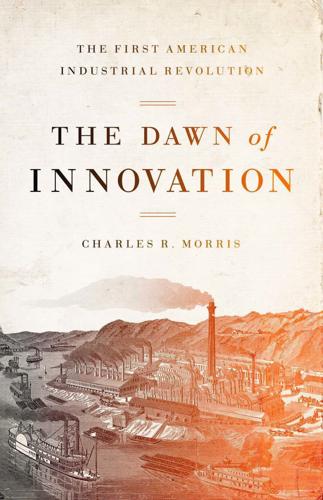
The Dawn of Innovation: The First American Industrial Revolution
by
Charles R. Morris
Published 1 Jan 2012
Water closets, which flushed into a pit, were suitable for less settled areas, while urban designers experimented with a host of “earth closet” contraptions. Many cities had gas lighting, at least in better neighborhoods, and almost everyone had a kerosene lamp. Over time, the expanding national wealth readily financed a great burst of municipal investment in clean water, sewers, garbage collection, transit, street lighting, police and fire services, and parks, stretching from the 1880s well into the twentieth century. Local water systems became a major market for Corliss’s big-ticket steam engines. The clinching proof of the consumerization of America was the sudden explosion of brands.
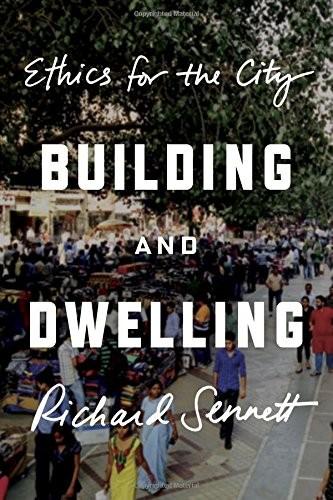
Building and Dwelling: Ethics for the City
by
Richard Sennett
Published 9 Apr 2018
Songdo’s economic fortunes show up too as black patches on computer screens. Built-from-scratch, prescriptive smart cities are indeed luxury goods; the cost of constructing them is rising rather than falling. The obvious planning question is why a country like India – so full of people who have no clean water to drink, no proper sanitation, no local health clinics, etc. – would seek to follow this bankrupting path, by planning 100 spanking new smart cities.30 The fundamental question about smart cities is why they have a stupefying effect on those who live in them. In part this is because, as my researchers found, they are so easy to live in.

Giving the Devil His Due: Reflections of a Scientific Humanist
by
Michael Shermer
Published 8 Apr 2020
Here we see a smooth transition from the way nature is (the individual struggling to survive and flourish in the environment of our evolutionary ancestry) to the way it ought to be (given a choice, it is more moral to act in a way that enhances the survival and flourishing of other sentient individuals). In The Moral Arc, I proposed an analogy with what I called “a public health model of moral science,” noting the startling advances in improving health and prolonging life for more people in more places over the past two centuries through flush toilets, sewers and waste disposal technologies, clean water, vaccinations, Pasteurization, occupational safety, family planning, and nutrition and diet, and many others. If you agree that it is better that millions of people no longer suffer from and die of yellow fever and small pox, cholera and bronchitis, dysentery and diarrhea, consumption and tuberculosis, measles and mumps, and many other assaults on the body, then you have offered your provisional assent that the way something is (diseases cause suffering and death) means we ought to prevent them through vaccinations and other medical and public health technologies.

Paper: A World History
by
Mark Kurlansky
Published 3 Apr 2016
Published in 1293, the book seems to have been written by a member of a new class of upper-crust bourgeois, and offers advice on cooking, gardening, social and sexual comportment, even recipes. It is virtually a handbook on how the new upper middle class should behave. ___________ BY THE FOURTEENTH century, papermaking was a common industrial activity in Europe. Wherever there was a river with a swift downhill run, clean water with low iron content, and a nearby population that could provide rags, there was a paper mill. Sometimes the mills were small family operations and sometimes they were factories employing a hundred people. Water was tested by seeing how well it dissolved soap. Hard water, which contains iron and magnesium, does not dissolve soap well and is not good for papermaking.
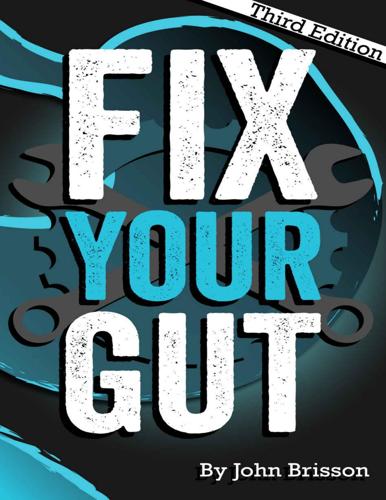
Fix Your Gut: The Definitive Guide to Digestive Disorders
by
John Brisson
Published 12 Apr 2014
The main causes of constipation are a lack of magnesium, dehydration, lack of fiber, prescription drugs that cause constipation (opiates are a prime example), hypothyroidism, adrenal fatigue, and lack of exercise. General Constipation Protocol Magnesium malate – 600 mg, daily. Stay hydrated - drink clean water with 1/4 tsp. of good quality sea salt or real salt in a glass of water once a day. Walk for at least thirty minutes a day. Drink a teaspoon of chia seeds soaked in water over the course of thirty minutes. Uni-Fiber – one tablespoon up to three times daily. Eat two green bananas daily. Follow stress and adrenal protocols (Ch. 9).

Up and Down Stairs: The History of the Country House Servant
by
Jeremy Musson
Published 12 Nov 2009
This was done in order that proper hospitality could be offered, reflecting the dignity of his master.109 Lesser servants could also be called in to serve, if there was a large number of visitors: ‘Three or four of the meanest sort of servants, as namely the slaughterman, the carter, and some of the best grooms of the stable, the allowed pages and boys in the house, to attend upon the first dinner, and they to have the remainder thereof’.110 The usher was required to keep discipline: ‘if there shall be any stubborn persons, he is to expell them out of the hall’; to keep the noise down by saying, ‘Speak softly, my masters.’ He must not fetch and carry but command the butler and panter to do so.111 There were strictures too for the butler, Penne: ‘his office is ever to keep clean and sweet his buttery, and likewise his plate and cups, making sure every day to have fresh and clean water.’ His duties were also ‘to keep the great chamber clean, to make fires there, and to provide for lights in due season, and to cover the boards and cupboards there, having good regard to the cleanness of his linen’.112 The butler was responsible too for distributing bread to the servants of the household who did not dine in the great hall: ‘[he] is to use good discretion in serving forth of the bread and beer to the houses of office’, including the kitchen, the bakehouse, and the nursery.113 These regulations give a vivid illustration of the survival of traditional practices in the later Elizabethan period and the demands of a gentry household of considerable numbers.
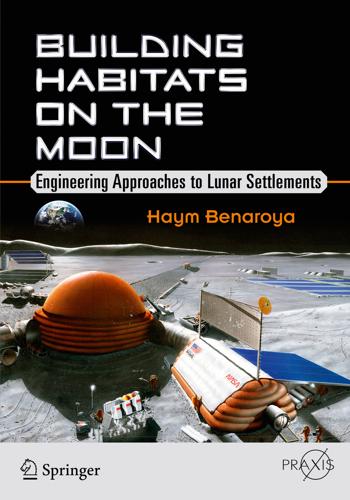
Building Habitats on the Moon: Engineering Approaches to Lunar Settlements
by
Haym Benaroya
Published 12 Jan 2018
It may seem paradoxical that as a Space Architect I would place an engineering system ahead of architectural design. 1 However, the way I understand how Maslow’s hierarchy applies to a space habitat, it requires the addition of a new survival bottom layer, below Safety because it’s more fundamental than Safety. I call this new foundation ‘Oxygen’, short for “Oxygen, CO 2 removal, pressure, temperature control (the lunar surface varies from –200°C to 140°C), buffer gas, and clean water.” Dust mitigation is a critical issue generally on the Moon. How far are we from getting a handle on that problem, both the biological risks and the engineered systems risk? The answer to this question requires an explication of how NASA’s Human Research Program (HRP) works. The way HRP conducts calls for proposals at this time covers five topic areas for competition: 1.
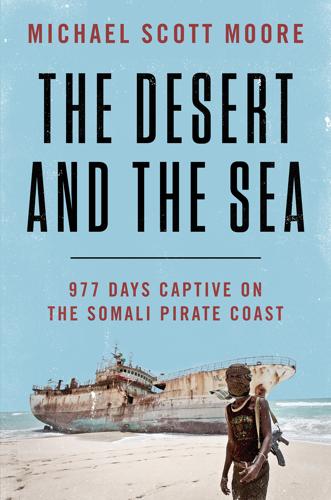
The Desert and the Sea: 977 Days Captive on the Somali Pirate Coast
by
Michael Scott Moore
Published 23 Jul 2018
That meaning was closer to the original Arabic—the first sahibs were companions of Mohammed—and pirates used the word among themselves. Abdinasser’s voice was chesty and high, not booming as you’d expect from such a barrel-shaped man. Unlike the other pirates he never said bitter or sarcastic things. For my shower that afternoon he brought us two heavy, one-and-a-half-liter bottles of clean water. Afterward he handed us freshening products like skin moisturizer and purple cologne. I thought they were effeminate things to see in a bush camp, so I pointed to a female model on Abdinasser’s moisturizer bottle and teased him. “For women only, sahib,” I said. “Not for men.” “Haa, yes,” he said with an enormous smile, “SAHIB!”
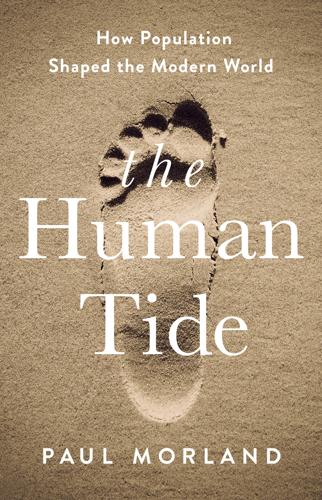
The Human Tide: How Population Shaped the Modern World
by
Paul Morland
Published 10 Jan 2019
But nevertheless the general pattern will become clear. And as the nineteenth century proceeded, so the conditions that are thought of as Dickensian–open sewers, child factory workers and chimney sweeps, the workhouse–started to change. By 1914 there had been great steps forward in public health, the provision of clean water and even the basics of a welfare state. The Great Stink of 1858, when Britain’s parliament had to be evacuated because of the unbearable miasma wafting from the polluted Thames, and the cholera outbreaks which had preceded it, were unimaginable in the London of fifty years later with its sewers and orderly public hygiene.
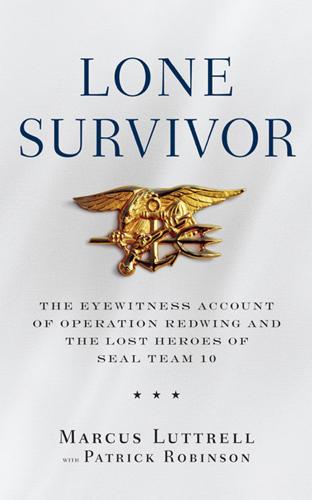
Lone Survivor: The Eyewitness Account of Operation Redwing and the Lost Heroes of SEAL Team 10
by
Marcus Luttrell
and
Patrick Robinson
Published 11 Jun 2006
An army captain ordered a team to get me up out of the forest, onto higher ground. They carried me up the hill and sat me down next to a goat pen. U.S. Corpsman Travis instantly set about fixing up my wounds. He removed the old dressings which Sarawa had given me and applied new antiseptic cream and fresh bandages. He gave me clean water and antibiotics. By the time he’d finished I felt damn near human. The atmosphere was unavoidably cheerful, because all the guys felt their mission was accomplished. All Americans in combat understand that feeling of celebration, reflecting, as we all do, that so much could have gone wrong, so much we had evaded by our own battlefield know-how, so many times it could have gone either way.

Cyprus Travel Guide
by
Lonely Planet
A private beach further east, Vrysi (Acapulco) Beach is managed by the Acapulco Holiday Village ( 824 4110), which caters mainly to package tourists. It does accept casual guests as well, and admission to the complex is 5YTL with access to all the facilities. Another 3km along, Lara (Vakıflar) Beach is particularly popular with expats. The beach has grey compact sand and clean water. It also has good toilet and changing-room facilities, near the small snack bar. Alagadı (Turtle) Beach, approximately 19km east of Kyrenia, is where the Society for the Protection of Turtles (SPOT) has its small monitoring station, called the ‘Goat Shed’. This is not really used as a swimming beach, but you are able to enjoy the habitat.

Checkmate in Berlin: The Cold War Showdown That Shaped the Modern World
by
Giles Milton
Published 26 May 2021
‘The Soviet authorities have also ordered the central switching stations to stop the supply of electricity from the Soviet zone and Soviet sector to the Western sectors.’11 Without coal, there could be no electricity. Without electricity, there could be no functioning sewage plants. No heating. No lighting. No clean water. Berlin’s drinking water had to be pumped from deep underground aquifers up through a natural filter of sand and gravel. If the pumps failed, the water supply would falter; disease would run rampant and people would die. The Soviets had great experience with siege warfare, having been the besieged (at Leningrad and Stalingrad) and the besiegers (at Budapest).
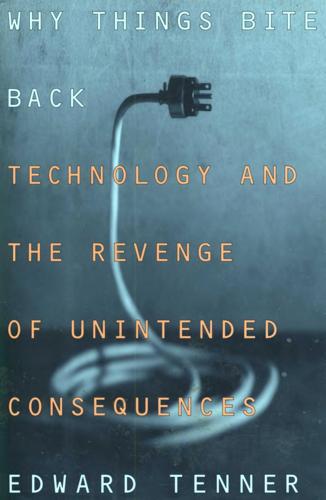
Why Things Bite Back: Technology and the Revenge of Unintended Consequences
by
Edward Tenner
Published 1 Sep 1997
In any case, by the eighteenth century, mortality was too low to support the idea that there could have been any natural selection for superior immunity to infection. Nor do better living conditions in themselves explain lower mortality. (Declining living standards in early-nineteenth-century England did not bring a corresponding large increase in mortality.) Certainly clean water and effective sewage systems curbed cholera and other water- and food-borne diseases. But many improvements in food handling, especially widespread pasteurization of milk, were not available to most people until the early twentieth century, and by then gains were already substantial. McKeown insists that nutrition is the only remaining explanation for most of the lower death rates for infectious diseases, although he acknowledges a dearth of positive evidence for his argument.
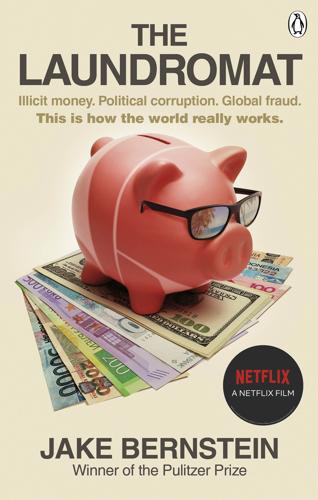
The Laundromat : Inside the Panama Papers, Illicit Money Networks, and the Global Elite
by
Jake Bernstein
Published 14 Oct 2019
Today, it can be reached from Panama City by road in about four and half hours. In the early seventies, it was an all-day bone-jarring journey on a jeep donated by the Americans. The isolated farmers in Santa Fé lived in feudal conditions, toiling for large landowners. Most of the population had no clean water, and the Catholic Church estimated that 50 percent of the children suffered from malnutrition.13 At Gallego’s invitation, Fonseca moved to Santa Fé, where the priest put him to work on several projects, including burying the babies who had died from hunger and poor sanitation. Relations between the local landowners and the radical priest soured after Gallego helped the farmers form a cooperative.
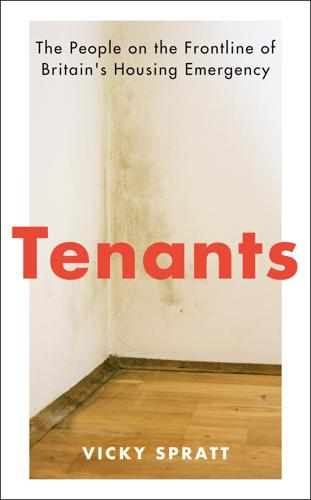
Tenants: The People on the Frontline of Britain's Housing Emergency
by
Vicky Spratt
Published 18 May 2022
Like a virus, the housing crisis is just a piece of information, but it infects its hosts and multiplies to make everything more difficult for them, impacting everyone they interact with – their children, their families, their colleagues, their neighbours, their doctors, their Universal Credit assessors, their housing officers. Like access to clean water, the right to adequate housing is a human right acknowledged by the United Nations (UN). Yet having a secure home for life is still seen as a luxury and housing is still seen as a commodity. Rather than being protected, it is framed as something that you should work towards and achieve. As this book shows, this is partly the work of party politics, which has used the twin aspirational ideas of homeownership and housing wealth to win elections, exploiting voters’ desire for stability, but equally to get rich without having to do much (and let’s be real, who doesn’t want that?).
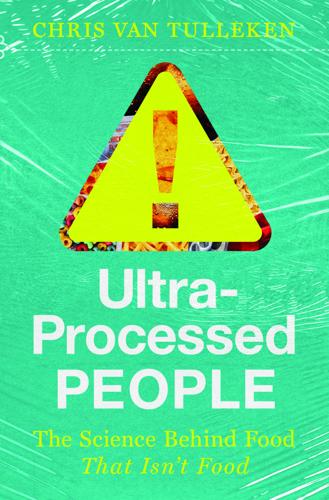
Ultra-Processed People: The Science Behind Food That Isn't Food
by
Chris van Tulleken
Published 26 Jun 2023
Sales representatives with no certification or training were dressed up as ‘mothercraft nurses’. They advised impressionable new mothers about the benefits of formula and promoted it in such a way that has since been linked to thousands of avoidable deaths.1 Nestlé and some other formula companies were causing a quadruple jeopardy. First, even formula made with clean water is associated with an increased risk of fatal infection,2-5 probably because of effects on the infant microbiome. Second, Nestlé was marketing the formula in communities where the possibility of producing an uncontaminated feed was almost zero.6 In these low-income settings, parents would typically have only one bottle and no way of cleaning it, would have to use river or well water contaminated with sewage and had low literacy rates, which meant they had great difficulty in making up the feeds correctly.

Finding the Mother Tree: Discovering the Wisdom of the Forest
by
Suzanne Simard
Published 3 May 2021
Scientists now are more willing to say that forests are complex adaptive systems, comprised of many species that adjust and learn, that include legacies such as old trees and seed banks and logs, and these parts interact in intricate dynamic networks, with information feedbacks and self-organization. Systems-level properties emerge from this that add up to more than the sum of the parts. The properties of an ecosystem breathe with health, productivity, beauty, spirit. Clean air, clean water, fertile soil. The forest is wired for healing in this way, and we can help if we follow her lead. We reached the mound of waste rock at the top portal, the blasts having exposed a cavernous scar a few hundred meters high and just as wide, the waste rock in knuckled piles at the base. The air was thinner, the clouds billowing over the granite turrets, cold rain pelting us.
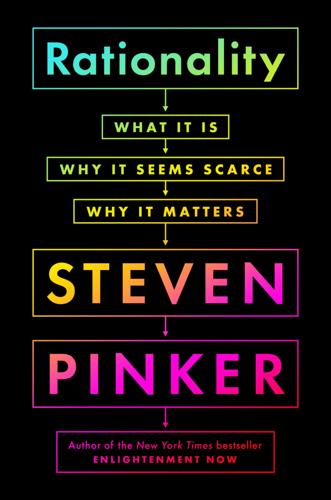
Rationality: What It Is, Why It Seems Scarce, Why It Matters
by
Steven Pinker
Published 14 Oct 2021
The forecasts of pundits are often driven by vivid narratives, probability be damned.47 A famous 1994 cover story in The Atlantic by the journalist Robert Kaplan predicted “The Coming Anarchy.”48 Kaplan forecasted that in the first decades of the twenty-first century, wars would be fought over scarce resources such as water; Nigeria would conquer Niger, Benin, and Cameroon; world wars would be fought over Africa; the United States, Canada, India, China, and Nigeria would break apart, whereupon American regions with many Latinos would erase the border with Mexico while Alberta would merge with Montana; crime would climb in American cities; AIDS would get worse and worse; together with a dozen other calamities, crises, and crackups. Yet as the article was becoming a sensation (including with President Bill Clinton, who passed it around the White House), the number of civil wars, the proportion of people without access to clean water, and the rate of American crime were sinking like stones.49 Within three years an effective treatment for AIDS would begin to decimate its death toll. And more than a quarter century later, national borders have barely budged. The conjunction fallacy was first illustrated by Tversky and Kahneman with an example that has become famous as “the Linda problem”:50 Linda is 31 years old, single, outspoken and very bright.

The Powerful and the Damned: Private Diaries in Turbulent Times
by
Lionel Barber
Published 5 Nov 2020
That apparently clinched the interview. I ask Malema whether things have improved after 20 years of ANC rule in South Africa. ‘No! We are worse off than we were under apartheid,’ says Malema, eyes flashing. ‘Before we did not have electricity or running water. Democracy has given us [blacks] the vote but there is still no clean water or electricity. We are in more pain than ever.’ Malema calls President Zuma ‘a monster’ and describes black empowerment entrepreneurs as ‘parasites’. His political heroes are Fidel Castro of Cuba, Hugo Chávez of Venezuela and Robert Mugabe in neighbouring Zimbabwe, ‘despite all his mistakes’. Malema’s own political programme fits the same revolutionary tradition: state expropriation of land and natural resources; launching a state mining company with 45 per cent offered to private investors; and a change in the constitution to allow control of the means of production.

Behave: The Biology of Humans at Our Best and Worst
by
Robert M. Sapolsky
Published 1 May 2017
* In addition to the high population-density correlates mentioned earlier, there are also more historical food shortages, lower food intake, and lower levels of protein and fat in the diet. In other words, these are cultures chronically menaced by empty stomachs. Cultural tightness was also predicted by environmental degradation—less available farmland or clean water, more pollution. Similarly, habitat degradation and depletion of animal populations worsens conflict in cultures dependent on bush meat. And a major theme of Jared Diamond’s magisterial Collapse: How Societies Choose to Fail or Succeed is how environmental degradation explains the violent collapse of many civilizations.
…
The gap between the state and the act can be enormous, especially when the goal is for the act to be not only effective but also pristine in its motives. For someone reading this book, a first challenge in bridging that gap is that much of the world’s suffering is felt by distant masses experiencing things that we haven’t an inkling of—diseases that don’t touch us; poverty that precludes clean water, a place to live, the certainty of a next meal; oppression at the hands of political systems that we’ve been spared; strictures due to repressive cultural norms that might as well be from another planet. And everything about us makes those the hardest scenarios for us to actually act—everything about our hominin past has honed us to be responsive to one face at a time, to a face that is local and familiar, to a source of pain that we ourselves have suffered.

Egypt
by
Matthew Firestone
Published 13 Oct 2010
In the opposite direction, south along the Nile is the Mosque of Sheikh Mohammed. This small place of worship sits on the riverbank next to the ruins of Bolbitine, the ancient settlement and port dating back to Roman times which eventually grew into Rashid further north. It’s locally famed for a well that supplies reliably cool, clean water, always offered to passers-by. Visits to the mosque must be arranged through the tourist police, who will organise the required boat transport (about E£60). Sleeping & Eating Rosetta sees few travellers and has limited tourist facilities, with only a handful of hotels and restaurants. Rasheed International Hotel ( 045 293 4399; www.rosettahotel.jeeran.com, in Arabic; Museum Garden Sq; s/d/tr E£100/130/160; ) This skinny 11-storey place has plainly decorated but spotless rooms, all with satellite TV, minibar and balconies with top views – on a clear day you can see the Mediterranean from the higher floors.
…
While some of the crafts are of high quality, you’ll need to bargain hard to get these, as the savvy women usually save their best wares for middlemen buying for Cairo shops. Al-Arish’s other attraction is its long beach, which packs in the crowds in the hot summer months. With its parade of palms, fine white sand, clean water and the occasional small wave, it is one of the better Mediterranean spots in Egypt, and wonderfully peaceful in the low season. Note that women may feel uncomfortable swimming here unless they’re in the confines of the Swiss Inn Resort. There is a beach curfew after dark, though it is only sporadically enforced.

Bourgeois Dignity: Why Economics Can't Explain the Modern World
by
Deirdre N. McCloskey
Published 15 Nov 2011
As a result of declining child mortality and of female control of reproduction, as Rosling shows in another of his amazing videos, birth rates in Bangladesh have fallen almost to replacement levels.17 During the recent period of intense globalization, access to clean water has dramatically improved. The distance to drinkable water is one of the heaviest burdens on the world’s poorest women, together with the hand-washing of clothes, which itself requires reasonably clean water. The women of Levi’s Italian villages in 1936–1937 “stood erect with the stately posture of those accustomed to balancing heavy weights on their heads”—the daily water or the wet clothes.18 The carrying of burdens on the head had the cost by age forty or so of agonizing arthritis of the neck.

Blockchain Revolution: How the Technology Behind Bitcoin Is Changing Money, Business, and the World
by
Don Tapscott
and
Alex Tapscott
Published 9 May 2016
The funds for major projects—from housing initiatives to the implementation of a water purification scheme—could simply go into escrow and be released only after the successful completion of key milestones—securing title for a site, importing raw materials, signing a contract with a local supplier, building the finished product, installing a certain number of clean water access points—is achieved. The result? Radically improved transparency and accountability in the delivery of foreign aid, and thus significant improvements in the end results. Foreign aid is the second-largest fund transfer from developed to developing nations, after remittances. Blockchain technology can enable transparency, accountability, and more efficient operations for well-meaning NGOs and better delivery of critical services in times of crisis and in normal circumstances.
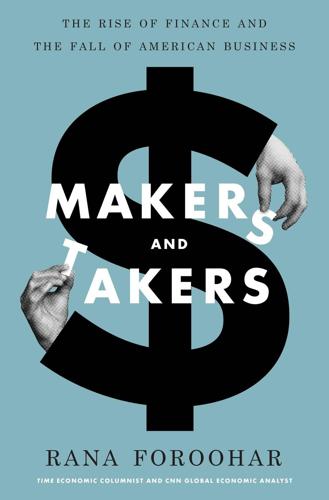
Makers and Takers: The Rise of Finance and the Fall of American Business
by
Rana Foroohar
Published 16 May 2016
The McKinsey Global Institute estimates that by 2025, emerging-economy nations will be spending $30 trillion a year in this way.46 That means future growth for companies like GE may once again center on making things. Indeed, GE has staked its future on that shift, with a new mandate to tackle real-world problems and products. The company will be providing fewer snazzy financial services and more “basic things, the sort of things that when you don’t have them, you have trouble—electricity, clean water, jet engines, efficient locomotives,” says Bornstein. “We want to be a technology company focused on solving the world’s biggest problems.”47 To that end, GE is trying to copy some of Silicon Valley’s methods. The company is crowdsourcing all over the world, posting engineering problems online and letting anyone who can solve them propose their solutions.
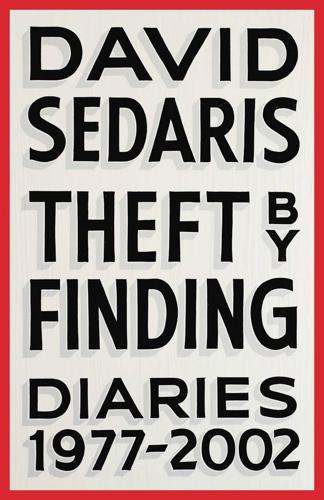
Theft by Finding: Diaries (1977-2002)
by
David Sedaris
Published 29 May 2017
March 18, 1986 Chicago I voted this morning at an elementary school. The children seemed excited to have so many adults around, one of whom, an older gay man in a leather vest, wore a pin that read DIGNITY. One of the people I voted for this morning was named Lee Botts. Her campaign slogan is HER BOTTOM LINE IS CLEAN WATER. Someone tampered with the sign she had in front of the school, and now it reads LEE BOTTS. HER BOTTOM IS CLEAN. March 21, 1986 Chicago On the L I sat next to a black woman studying a textbook. “How’s your math?” she asked as I settled in. I thought she’d said mouth, so I said, “Excuse me?”
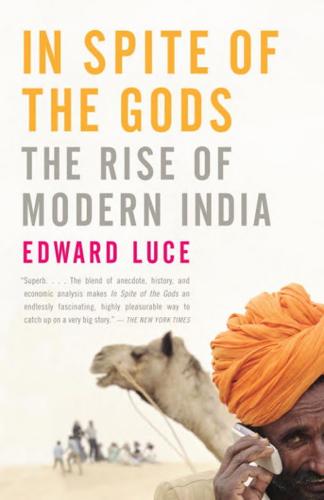
In Spite of the Gods: The Rise of Modern India
by
Edward Luce
Published 23 Aug 2006
Wheat and rice are also heavily water-intensive, and India can ill afford to continue wasting the fickle offerings of its rain gods. Crop diversification would also employ more people. Vegetable farming employs fifteen times more people per hectare than does rice or wheat farming. The government should also deliver reliable electricity and clean water to all its villages. Providing these resources free of charge to select categories of people (mostly the rich farmers), as is the case today, makes it uneconomic to provide them to anyone else. If utilities are allowed to charge customers for what they use, there is an incentive to supply it. There must also be better incentives for farmers to harvest rainwater.
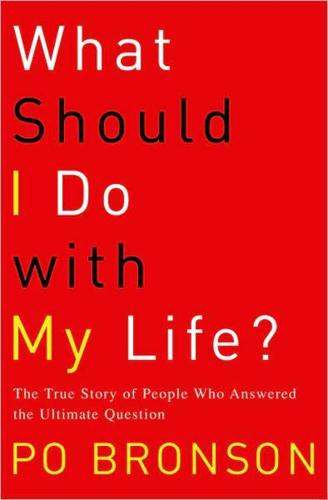
What Should I Do With My Life?
by
Po Bronson
Published 2 Jan 2001
After two and a half years, Bart couldn’t live on $28,000 anymore, and he was ready to be rewarded for his devotion. It was time to transition away from political skills and develop a policy specialty. He was appointed to the Department of Agriculture as regional coordinator for rural development in the Midwest. The agency ran a program that brought clean water to rural people by lending money for the construction of aqueducts and wells. Bart’s job wasn’t to run that program—the actual implementation of programs is done by entrenched civil servants. Political appointees set the agenda for the agency. The Republicans in Congress had just slashed the program’s budget by 35 percent, so Bart’s mission was to generate publicity, and get the word out that this was a program worth not only saving, but funding back to full levels.

The Rough Guide to Prague
by
Humphreys, Rob
S PORTS | Swimming • Gyms and saunas 224 Divoká Šárka Divoká Šárka, Vokovice T603 723 501, Wkoupaliste-sarka.webnode.cz; tram #20 or #26 to the Divoká Šárka terminus. Idyllically located in a craggy valley to the northwest of Prague, with two small outdoor pools filled with cold but fresh and clean water – great for a full, hot day out. Food and drink and plenty of shade available, too. May to mid-Sept daily 9am–7pm. Plavecký stadion Podolí Podolská 74, Podolí T 241 433 952, Wwww.pspodoli.cz; tram #3, #16, #17 or #21 to Kublov. The most famous of Prague’s outdoor pools, set against a sheltered craggy backdrop, with a children’s wading pool and water slide, grass and draught beer.

1946: The Making of the Modern World
by
Victor Sebestyen
Published 30 Sep 2014
Mining accidents, and loss of production in other industries, would not be the only consequences if too many Nazis were removed from their positions too quickly. Nazis were needed in every area of German life. The middle classes and professionals were disproportionately represented: in Bonn 102 out of 112 doctors were members; in Cologne, a city shattered by bombing, 18 of the 21 specialists in waste management, sewerage and clean water belonged to the Party. Most secondary school teachers had had to join almost as a condition of employment. Eighty of the 100 musicians in the Berlin Philharmonic Orchestra were members. The problem the Allies faced was how to find people in any positions of importance who had not been Nazis. As Lucius Clay, who took over from Eisenhower as American military commander, said, ‘Our major administrative problem was to find reasonably competent Germans who had not been affiliated or associated with the Nazi regime.

Dr. Johnson's London: Coffee-Houses and Climbing Boys, Medicine, Toothpaste and Gin, Poverty and Press-Gangs, Freakshows and Female Education
by
Liza Picard
Published 1 Jan 2000
After that, the wretched tight-pinned maid is a whirlwind of housework, doing every day all the things we sometimes think of doing occasionally, and a lot more, such as polishing locks (oily rag and a little rottenstone), blowing the dust off pictures and stucco work (bellows), and scouring the stairs (wet sand) – and all this is ‘before your mistress rises’, when she could set about the bedrooms. ‘Always leave a little clean water in your chamber chair pans, it prevents any offensive smell.’ Wood floors should be polished with a long-handled hard brush and herbs. They only needed another sweeping when the herbs had dried, and another polishing, for them to ‘look like mahogany, of a fine brown’. If the floor is only to be mopped, ‘trundle your mop well, drying the room very neat … sand and water cleans boards better than anything’.

The Future of the Professions: How Technology Will Transform the Work of Human Experts
by
Richard Susskind
and
Daniel Susskind
Published 24 Aug 2015
The nature of the obligation here is explained eloquently by the philosopher Anthony Kenny. Technology, writes Kenny, gives us ‘power’, but it also ‘corrupts’: not just by giving us power to do evil (for instance, to destroy the world with nuclear weapons), but by giving us the power to do good (for instance, the power to put clean water within the reach of the entire human race). It puts sins of omission as immediately and inevitably within our power as it puts sins of commission.79 To fail to introduce these feasible alternatives to today’s professions, therefore, would be to commit what Kenny describes as a ‘sin of omission’.
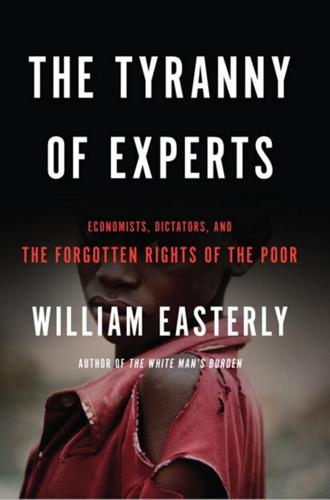
The Tyranny of Experts: Economists, Dictators, and the Forgotten Rights of the Poor
by
William Easterly
Published 4 Mar 2014
In 1908, Sara Josephine Baker (1873–1945), a New York pediatrician, started the “first municipal unit in the world devoted to the health protection of mothers and children,” a children’s hygiene unit at the Board of Health.33 Public-health nurses taught the importance of hygiene to the mothers—it does not help to have clean water if the water is recontaminated at home. Health education is vital but tedious (again: wash hands after visiting the bathroom!) Baker would be the US representative to the Health Committee of the League of Nations in the 1920s, crossing paths with League of Nations’ development efforts that would show up in China (as discussed in Chapter Three).
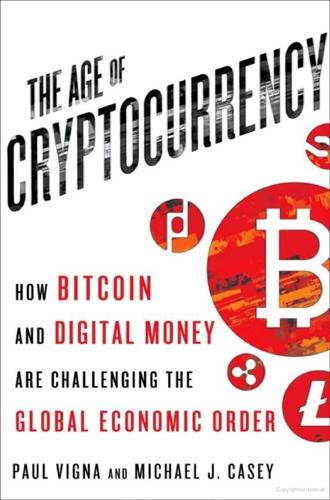
The Age of Cryptocurrency: How Bitcoin and Digital Money Are Challenging the Global Economic Order
by
Paul Vigna
and
Michael J. Casey
Published 27 Jan 2015
One member of the Dogecoin Foundation read about the Jamaican bobsled team’s being short of funds for a trip to the Sochi Olympics in 2014 and proposed raising money for their trip. Through campaigns launched on Reddit and elsewhere, with instructions about which wallet to send dogecoins to, they quickly raised the equivalent of $25,000 in their currency. Next, somebody suggested clean-water wells in Kenya. They raised $30,000 for wells in Kenya. They raised money for a coffee shop in Manchester, England. Our favorite dogecoin endeavor had more to do with marketing than philanthropy, though. Somebody read about a young NASCAR driver, Josh Wise, who was racing without a sponsorship.
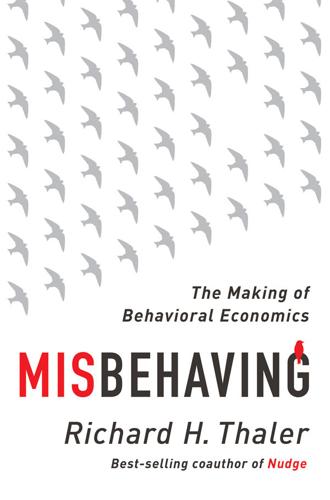
Misbehaving: The Making of Behavioral Economics
by
Richard H. Thaler
Published 10 May 2015
We occasionally run into examples of identified lives at risk in the real world, such as the thrilling rescue of trapped miners. As Schelling notes, we rarely allow any identified life to be extinguished solely for the lack of money. But of course thousands of “unidentified” people die every day for lack of simple things like mosquito nets, vaccines, or clean water. Unlike the sick girl, the typical domestic public policy decision is abstract. It lacks emotional impact. Suppose we are building a new highway, and safety engineers tell us that making the median divider three feet wider will cost $42 million and prevent 1.4 fatal accidents per year for thirty years.

Smart Cities: Big Data, Civic Hackers, and the Quest for a New Utopia
by
Anthony M. Townsend
Published 29 Sep 2013
In our final unthinkable future only the wealthy thrive, retreating to smart enclaves sustained by captured resources managed solely for their own benefit, or traded at onerous rates with the poor. This scenario is already the norm across much of the developing world, where the poor have less access to clean water, healthy food, and basic sanitation, and pay vastly higher prices for them when they do. As competition for natural resources heats up over the next century, and the impacts of climate change disrupt supplies, the rich may be able to wall themselves off from the consequences of their own overconsumption.

Woman On The Edge Of Time
by
Piercy, Marge
Published 1 Jan 1976
She had hardly walked in the past months and her feet were tender; her body was slack and weak from bad food and lack of exercise. She felt spent. She wanted to lie down in the drainage ditch. Sleep would rise slowly around her, sleep would rise around her aching body as warm water filled a tub, yes, warm sweet clean water rising slowly, rising up to cover her nice and warm. She was kneeling, her head bowed to the gravel. She forced herself to rise and march on. All right, she could run and trot no farther. But she could walk. One foot, two foot. Right foot, left foot. A march played in her mind that people had been singing at militia practice, a song they said was from the time they called the Struggles or the Thirty Years’ War.

The Book: A Cover-To-Cover Exploration of the Most Powerful Object of Our Time
by
Keith Houston
Published 21 Aug 2016
Next you must withdraw the skins and unhair them. Pour off the contents of the bath and repeat the process using the same quantities, placing the skins in the lime liquor and moving them once each day over eight days as before. Then take them out and wash them well until the water runs quite clean. Place them in another bath with clean water and leave them for two days. Then take them out, attach the cords and tie them to the circular frame. Dry, then shave them with a sharp knife after which leave for two days out of the sun. Moisten with water and rub the flesh side with powdered pumice. After two days wet it again by sprinkling with a little water and fully clean the flesh side with pumice so as to make it quite wet again.

The Patient Will See You Now: The Future of Medicine Is in Your Hands
by
Eric Topol
Published 6 Jan 2015
Will Flattening Increase or Decrease Health Disparities? Nicole Ellison, an associate professor in the School of Information at the University of Michigan, predicted, “As more of the global population comes online, there will be increased awareness of the massive disparities in access to health care, clean water, education, food, and human rights.”63 There are two divergent effects of relying on digital tools to improve health care throughout the world. On the one hand, it can, as we’ve seen through many examples, provide state-of-the-art medicine anywhere there is a mobile signal, and especially with a smartphone with Internet connectivity.

The Ones We've Been Waiting For: How a New Generation of Leaders Will Transform America
by
Charlotte Alter
Published 18 Feb 2020
At least sixty-four people died in the storm, but that was just the people they counted immediately after the hurricane left the island. When President Trump visited, he downplayed the disaster, saying it wasn’t a “real catastrophe, like Katrina,” and then threw rolls of paper towels to survivors. People went without clean water, electricity, and medical care for months. The blue tarps covering thousands of homes became the symbol of Puerto Rican resilience. A year after the storm, the true death toll emerged: more than 4,600 American citizens had died because of Hurricane Maria, almost as many as 9/11 and Hurricane Katrina combined.
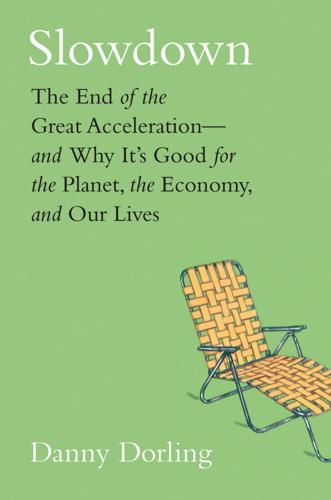
Slowdown: The End of the Great Acceleration―and Why It’s Good for the Planet, the Economy, and Our Lives
by
Danny Dorling
and
Kirsten McClure
Published 18 May 2020
The easy wins make it possible for the next and subsequent generations to grow tall again—until that too slows down within every country (and not just on average worldwide). If you doubt the situation I am describing of so little technological progress very recently, consider the process we currently use in sewage plants around the world to extract clean water from waste, which was not invented until 1913. The following year, 1914, William Lockett and Edward Ardern published details of the “active sludge” method in the Journal of the Society of Industrial Chemistry. It first became operational in Manchester’s Davyhulme wastewater treatment plant during the childhoods of Generation V.21 Good sanitation for very large numbers of people is a very recent development, beginning only within the lives of the first of the past five generations.
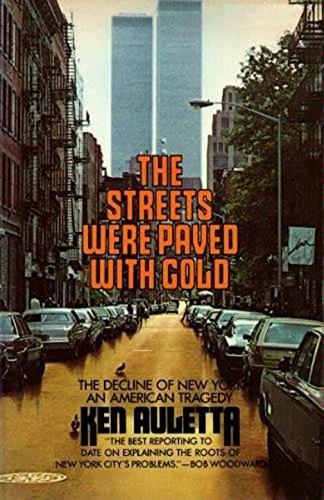
The Streets Were Paved With Gold
by
Ken Auletta
Published 14 Jul 1980
Standing on a nearby roof, the city traffic commissioner gently corrected his boss. The Mayor was viewing the wrong bridge. Traffic on the Williamsburg was moving easily. The Queensborough, several miles uptown, was backed up. Medicaid Nelson Rockefeller was seeking reelection in 1966. His TV commercials featured animated fish talking to each other about the clean water their governor had made possible. Polls were showing that his Irish-Catholic opponent, Frank O’Connor, was weak among Jewish and progressive voters, so Rockefeller donned his “liberal” mask. He hugged, kissed, poked and winked his charming way through an International Brotherhood of Electrical Workers union meeting in Queens.

Do You Dream of Terra-Two?
by
Temi Oh
Published 15 Mar 2019
Like most people his age, he had grown up with dreams of Terra-Two. Built papier-mâché models of the habitable exoplanet in kindergarten. He had been seven or eight when the Search for Life on Terra-Two had started, with unmanned satellites landing on alien shores and sending back images of the verdant earth, clean-water lakes, a thriving ecosystem and no humans. By the end of the twentieth century, many countries had mastered interplanetary travel and set their sights on neighbouring stars. When the grainy footage of this new and beautiful planet was broadcast across the globe, Terra-Two ignited the imagination of every child Jesse’s age.
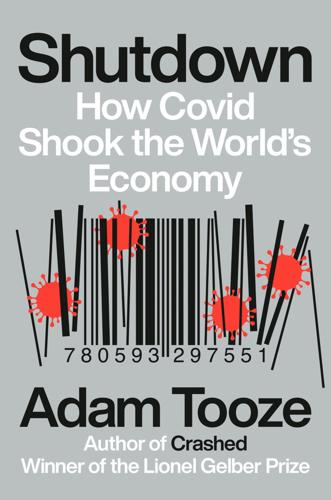
Shutdown: How COVID Shook the World's Economy
by
Adam Tooze
Published 15 Nov 2021
The Venezuelan economy was spiraling toward disaster as regular supplies of electricity were interrupted. In the country with the largest oil reserves in the world, 90 percent of the population had no access to petrol. 55 There was serious fear of harvest failure for lack of gasoline on the farms. Clean water was in short supply. The initial response by Maduro’s regime to the coronavirus crisis consisted in limiting Covid tests to two government-controlled hospitals. But it was not just the lower-income countries that struggled. So too did Chile, the poster child of Latin American economic development.
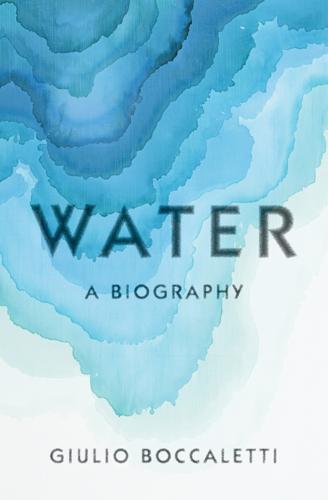
Water: A Biography
by
Giulio Boccaletti
Published 13 Sep 2021
Replumbing the planet on a scale commensurate to the Panama Canal required enormous amounts of finance to be locked up for decades in hard infrastructure. No private investor could spare that much for that long without explicit or implicit government guarantees. This reality had already become apparent in the provision of clean water for cities: after the financial crisis of the end of the nineteenth century, the only way to finance its development was through municipal bonds. The ability and drive of governments to finance and deliver a hydraulic transformation of the landscape was going to be the central story of the twentieth century, a collective investment in a future res publica.
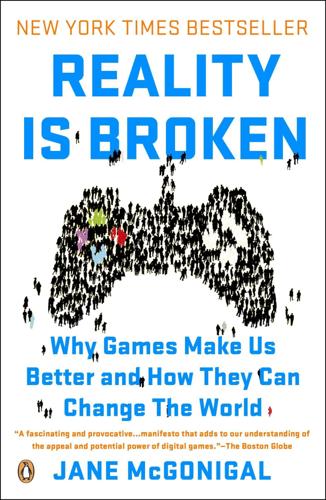
Reality Is Broken: Why Games Make Us Better and How They Can Change the World
by
Jane McGonigal
Published 20 Jan 2011
These are the two key insights that led me to my most recent game, EVOKE. EVOKE: A Crash Course in Changing the World EVOKE is designed to empower young people all over the world, especially in Africa, to start actively tackling the world’s most urgent problems—poverty, hunger, sustainable energy, clean-water access, natural disaster preparation, human rights. Dubbed as a “crash course in changing the world” and produced for the World Bank Institute, the learning arm of the World Bank, EVOKE is a social network game designed to help players launch their own world-changing venture in just ten weeks.
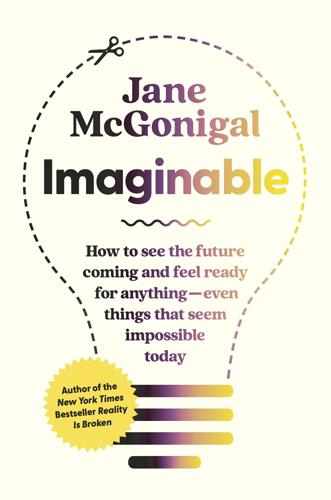
Imaginable: How to See the Future Coming and Feel Ready for Anything―Even Things That Seem Impossible Today
by
Jane McGonigal
Published 22 Mar 2022
Not to mention, there already exists a Grand Challenges Scholars Program (GCSP), created by the National Academy of Engineering in 2008 specifically for engineering students. As of 2020, roughly one hundred universities worldwide are approved as GCSP schools; they offer scholarships and custom learning paths to students who commit to focusing their education on grand challenges like “provide access to clean water,” “reverse-engineer the brain,” and “prevent nuclear terror.” These students are so lucky! I’d like to imagine that this concept could spread beyond a single discipline to engage a much wider and more inclusive set of learners. One smaller signal of this possibility is the African Leadership University (ALU), founded in 2015, which has 1,500 students in Mauritius and Rwanda.23 Students at ALU complete traditional undergraduate degree programs, such as in computer science or business studies, while also “declaring a mission” that forms the core of their assignments, fieldwork, and internships.
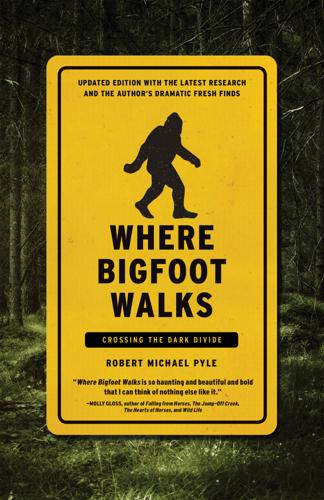
Where Bigfoot Walks: Crossing the Dark Divide
by
Robert Michael Pyle
Published 31 Jul 2017
This cruddy little pool was full of gunk, volcanic ash, and algal clots, but the signs of wildlife told me there was no point in looking further. California and Milbert’s tortoiseshells sipped minerals from fetid mud scribbled over with hundreds of animal tracks. The liquid looked awful, but I reckoned it would filter all right. The days of carefree reliance on clean water in the wild now long past, every sensible hiker carries a water filter or other means of purifying water sources that might be contaminated with the cysts that cause giardiasis or other ills. The water, shallow and silty, proved very difficult to gather and to filter, but I managed to secure a quart or so.
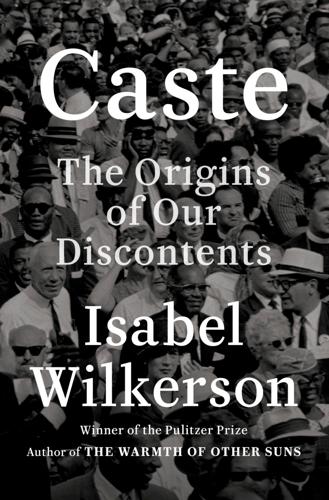
Caste: The Origins of Our Discontents
by
Isabel Wilkerson
Published 14 Sep 2020
Democrats expend energy and weaken their power pining for the die-hard voters of their opponents, the homecoming queens of the electorate, while taking for granted the majority that they already have. As the most loyal voters of their respective parties, white evangelicals are to Republicans what African-Americans are to Democrats, though each makes up a minority of the total electorate. But the foremost concerns of the Democrats’ most reliable voting bloc—affordable housing, clean water, police brutality, the racial wealth gap, and reparations for state-sanctioned discrimination (as has been accorded other groups discriminated against in the United States)—have remained on the back burner, or have even been considered radioactive issues for the party that African-Americans help to sustain.

Apocalypse Never: Why Environmental Alarmism Hurts Us All
by
Michael Shellenberger
Published 28 Jun 2020
Researchers with the Peace Research Institute Oslo note, “Demographic and environmental variables have a very moderate effect on the risk of civil conflict.”48 The IPCC agrees. “There is robust evidence of disasters displacing people worldwide, but limited evidence that climate change or sea level rise is the direct cause.”49 Lack of infrastructure plus scarcity of clean water brings disease. As a result, Congo suffers some of the highest rates of cholera, malaria, yellow fever, and other preventable diseases in the world. “Lower levels of GDP are the most important predictor of armed conflict,” write the Oslo researchers, who add, “Our results show that resource scarcity affects the risk of conflict less in low-income states than in wealthier states.”50 If resources determined a nation’s fate, then resource-scarce Japan would be poor and at war while the Congo would be rich and at peace.
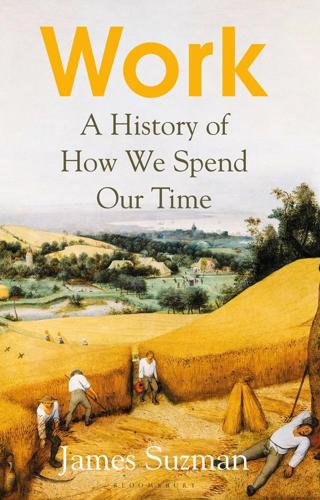
Work: A History of How We Spend Our Time
by
James Suzman
Published 2 Sep 2020
He did allow employees a week of annual vacation (unpaid) on the condition that they did not leave town while taking it. For the first few decades of the Industrial Revolution, and possibly for the first time since ancient cities began to coalesce in the valley of the Euphrates River, farmers had cause to feel better off than many city folk. Where they breathed fresh air and drank mostly clean water, those in the cities laboured longer hours, ate poorly, breathed air fouled with smog, drank dodgy water, and endured diseases like tuberculosis – which accounted for up to one-third of all recorded deaths in the UK between 1800 and 1850 – that raced through their crowded, perpetually coughing tenements.
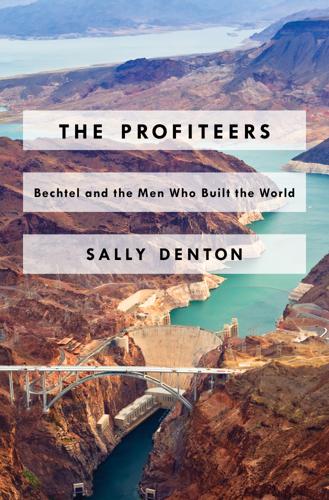
The Profiteers
by
Sally Denton
Within a few short years, it was involved in more than two hundred water and wastewater treatment plants that provided facilities to more than thirty million people throughout the world. Its twenty-five-year lease agreements in the Philippines were the largest in the world, but that “marriage between the major global corporations and the elite families of the Filipino oligarchy has not brought clean water to the millions of needy families in Manila,” as one account described the Metropolitan Waterworks and Sewerage System. “In Bolivia, Bechtel demonstrated that it has no moral compass whatsoever other than seeking profit off the poorest people in the world,” an activist told the Boston newspaper.

People, Power, and Profits: Progressive Capitalism for an Age of Discontent
by
Joseph E. Stiglitz
Published 22 Apr 2019
Robert Gordon of Northwestern University in his bestselling book The Rise and Fall of American Growth: The US Standard of Living Since the Civil War argues that the pace of innovation has actually slowed.2 Yes, we have Facebook and Google, but these innovations pale in comparison with the importance of electricity, or even indoor toilets and clean water that played such an important role in improving health and longevity. These past experiences may, however, not be a good guide for the future. More than a half century ago, John von Neumann, one of the leading mathematicians of the mid-twentieth century, suggested that there might be a point3 where it becomes less expensive to produce a machine to replace a human than to hire and train a human.

The Future Is Asian
by
Parag Khanna
Published 5 Feb 2019
Meanwhile, China’s overconsumption and pollution of its major rivers could speed up nascent plans to divert Russia’s mighty rivers southward toward China’s cities and farmland. Asia has the largest number of megacities facing water shortages from overconsumption. Some Chinese cities are projected to run out of clean water by 2020.35 India faces a crisis of water tables falling nationwide; Iranian protests have been spreading as taps run dry. Across the region, trillions of dollars of spending are necessary to fix leaky pipes and lay new ones, install efficient water management systems, and construct large-scale desalination facilities.

Open: The Story of Human Progress
by
Johan Norberg
Published 14 Sep 2020
Poverty is the worst polluter, as India’s prime minister Indira Gandhi used to say, since one can never get people to prioritize long-term environmental values over immediate health and education of their children. The Environmental Performance Index, which ranks the world’s countries according to as many environmental indicators as possible – from clean water to biological diversity – documents a strong relationship between countries’ GDP and a good environment. The researchers summarize that ‘income is a major determinant of environmental success’. Another important determinant is political openness: the first thirty-one countries in the ranking are democracies.66 In addition, zero growth would be completely insufficient to achieve our climate goals.

Sing Backwards and Weep: The Sunday Times Bestseller
by
Mark Lanegan
Published 29 Apr 2020
Once inside, he put the bike he’d stolen on top of a big pile of other bikes. The tiny place was completely packed with them, as well as pile upon pile of bicycle parts. While I vomited uncontrollably into his shitter, he got out a clean rig from a new bag of them, grabbed a clean spoon and a glass of clean water. He pulled out a piece of a cotton ball for a small filter and, tearing open a small bag of the store-bought citric acid needed for the dope, cooked and drew me up a very large shot. Seated now on yet another stranger’s toilet with explosive sick, slick black water firing out my asshole, I shakily found a vein.
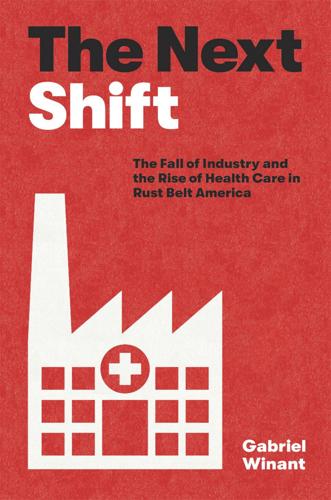
The Next Shift: The Fall of Industry and the Rise of Health Care in Rust Belt America
by
Gabriel Winant
Published 23 Mar 2021
Walking around was such a crucial part of the job that steel managers at various points calculated appropriate allowances of walking time for various distances within the plant and argued with the union over which parts of walking time counted as work time.40 Segregation of showers and locker rooms, similarly, kept foremen out of one of the few common social spaces that belonged to workers. It was no coincidence that workers’ locker rooms and bathrooms were often left unsanitary by management. “They were generally called shit houses,” wrote Salaj. The union had to agitate for potable water in drinking fountains, toilet paper in bathrooms, sufficiently large trashcans, even clean water in the sink; when the river ran high, water in the washroom turned brown with mud. Rather than use the bathroom, workers in the Duquesne Works open hearth at one point took to urinating in the corners of their shop floor.41 Relations of power in steelmaking, that is, gained expression in the social division of sitting and standing, cleanliness and filth, heat and cold, comfort and ache.
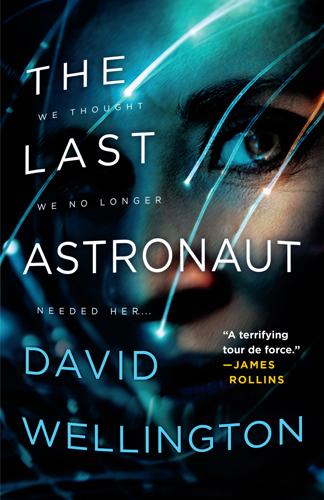
The Last Astronaut
by
David Wellington
Published 22 Jul 2019
It had the same porous texture that she remembered from her first visit to 2I. Before they’d reached the ice, she and Stevens had walked over a surface just like this. It was the unadulterated, unreconstructed surface of the drum. Whatever had cut its way through the island had dug all the way down to the floor. It had scraped this part of the drum clean. “Water didn’t do this,” she said. “Not in the time since we’ve been here.” “Things change pretty fast in here,” Hawkins pointed out. “All of this,” he said, gesturing at the island around them, “wasn’t here a day ago.” “Yeah, no, I’m a trained geologist,” she said. “They were going to send me to Mars, remember?
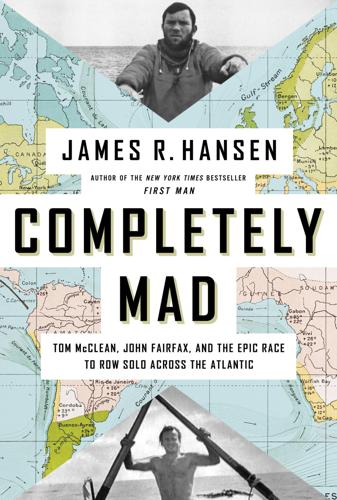
Completely Mad: Tom McClean, John Fairfax, and the Epic of the Race to Row Solo Across the Atlantic
by
James R. Hansen
Published 4 Jul 2023
Even the sun deigned to appear, albeit fleetingly, shyly peeping now and then from behind the white clouds overhead. Yet even without the sun it was a bright day. The sea was so clear and green that Tom would not have been surprised if he had discovered that it had emptied itself overnight and refilled with clean water. For once the smell of the sea did not remind him of drying seaweed and rotting driftwood. For once it was the sort of aroma that had to be inhaled deeply, filling the lungs and recharging the body with sharp, fresh, and pure oxygen. He could taste the iodine, almost feel the ozone. In short, he had, at last, fallen in love with the sea.
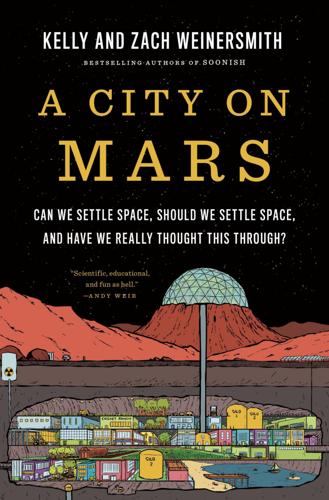
A City on Mars: Can We Settle Space, Should We Settle Space, and Have We Really Thought This Through?
by
Kelly Weinersmith
and
Zach Weinersmith
Published 6 Nov 2023
Like with space babies, the problem here isn’t just that the technology is challenging. Computers were challenging and so were airplanes, but we still built them. The problem is that getting from here to there is going to require understanding an extremely complex biological system that settlers will be reliant on for food, clean water, air, and not-dying in general. We can do it, but at the pace of ecology, not venture capital. Speaking of which, as with space babies, nobody is spending the kind of money necessary to get answers in a hurry, perhaps because there’s no obvious profit in things like orbital obstetrics or airtight greenhouses the size of two Singapores.[*] We still don’t know a lot of first-order stuff, and getting that knowledge is going to be expensive, time-consuming, and without an obvious return on investment.

Southeast Asia on a Shoestring Travel Guide
by
Lonely Planet
Published 30 May 2012
The Chinese have come to the table to play for big stakes and have pledged US$1.1 billion in assistance in the last couple of years, considerably more than all the other donors put together– ostensibly with no burdensome strings attached. There are two faces to Cambodia: one shiny and happy, the other dark and complex. For every illegal eviction of city dwellers or land grab by a general, there will be a new NGO school offering better education, or a new clean-water initiative to improve the lives of the average villager. Such is the yin and yang of Cambodia, a country that both inspires and confounds. Like an onion, the more layers you unravel, the more it makes you want to cry, but these are spontaneous tears, sometimes of sorrow, sometimes of joy. The royal family has been a constant in contemporary Cambodian history and no-one more so than the mercurial monarch King Sihanouk, who once again surprised the world with his abdication in 2004.
…
Bathing In remote corners or basic accommodation, you’ll meet the Southeast Asian version of a shower: a large basin that holds water for bathing. Water should be scooped out of the basin with a smaller bowl and poured over the body. Resist the urge to climb in like a bathtub or avoid washing directly over the basin, as this is your source for clean water. Modern facilities might have a cold-water shower that is a star-rated environmental choice, but it can be difficult to adequately rinse off soap and shampoo. Consider travelling with an easy-to-rinse, biodegradable soap. More expensive accommodation, large cities and colder regions will offer hot-water showers, usually point-of-use heaters, for an extra charge.
…
Tinea versicolor is also common – this fungus causes small, light-coloured patches, most commonly on the back, chest and shoulders. Consult a doctor. Cuts and scratches become easily infected in humid climates. Take meticulous care of them to prevent complications such as abscesses. Immediately wash all wounds in clean water and apply antiseptic. If you develop signs of infection (increasing pain and redness), see a doctor. Divers and surfers should be particularly careful with coral cuts as they can be easily infected. Snakes Southeast Asia is home to many species of both poisonous and harmless snakes. Assume that all snakes are poisonous and never try to catch one.

The Social Animal: The Hidden Sources of Love, Character, and Achievement
by
David Brooks
Published 8 Mar 2011
The bored interviewers inevitably loved it, or at least those at any place he actually wanted to work did. After college he went through a pseudo–Peace Corps phase of do-good think tankery. He worked at the Social Change Initiative, the Foundation for Global Awareness, and Common Concerns before serving as a senior fellow at Share, a clean-water distribution NGO founded by an aging rock star. Tiring of private-jet philanthropy, he then went through his editorial-associate phase. He applied for jobs at The Public Interest, The National Interest, The American Interest, The American Prospect, Foreign Policy and Foreign Affairs, and National Affairs.
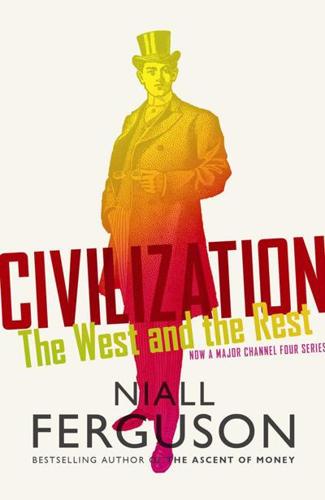
Civilization: The West and the Rest
by
Niall Ferguson
Published 28 Feb 2011
And today, an altogether different Western civilizing mission – the mission of the governmental and non-governmental aid agencies – has clearly achieved much less than was once hoped, despite the transfer of immense sums in the form of aid.6 For all the best efforts of Ivy League economists and Irish rock stars, Africa remains the poor relation of the continents, reliant either on Western alms or on the extraction of its raw materials. There are, it is true, glimmers of improvement, not least the effects of cheap mobile telephony, which (for example) is providing Africans for the first time with efficient and low-cost banking services. There is also a real possibility that clean water could be made far more widely available than it currently is.* Nevertheless the barriers to growth remain daunting, not least the abysmal governance that plagues so many African states, symbolized by the grotesque statue that now towers over Dakar, representing a gigantic Senegalese couple in the worst socialist-realist style.
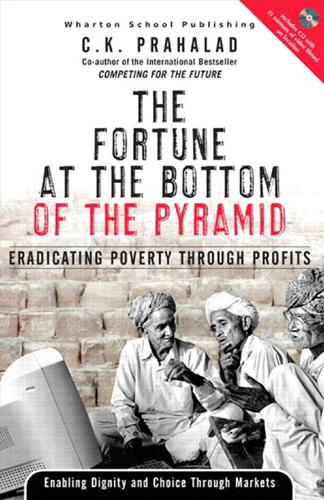
The fortune at the bottom of the pyramid
by
C. K. Prahalad
Published 15 Jan 2005
About 20 BOP: A Global Opportunity Developing a unique approach to BOP markets and learning from the experience 49 Fine-tuning the traditional approach Figure 3.1 Learning from the BOP. to 25 percent of the detergent soap can be lost in the process. Therefore, HLL developed a soap with a coating on five sides, which makes it waterproof. The coated soap saves 20 percent wastage even in a hostile user environment. The innovation is of interest to the rich as well. Access to clean water is a major concern at the BOP. Polluted water (particulate, bacterial, and viral pollutants) is common. Boiling water is the only current alternative to eliminating the bacterial and viral pollutants. A focus on solving this problem has to start with a cost target that is no more than the cost of boiled water.
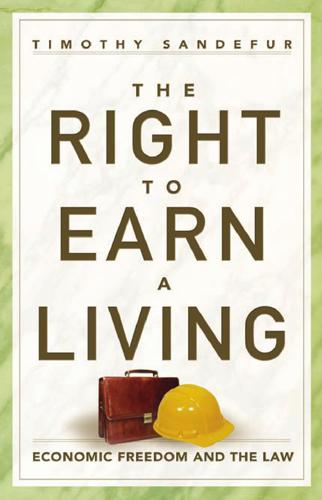
The Right to Earn a Living: Economic Freedom and the Law
by
Timothy Sandefur
Published 16 Aug 2010
So far, the Roberts Court has decided few property rights cases, and those have gone badly for owners. In a 2007 decision, the Court refused to allow a Wyoming rancher to sue the government when it engaged in a years-long campaign of harassment against him in an attempt to coerce him into giving up his land for free.107 And a case regarding whether the federal government has power under the Clean Water Act (which allows government to regulate the pollution of “navigable waters”) to control the use of land miles away from the nearest navigable waterway ended in a confusing split decision that left citizens with little guidance as to what federal officials can and cannot regulate.108 Given the fact that Roberts represented the government in the 2002 Tahoe-Sierra case, and given his pledge to Congress during his confirmation hearings that he would operate with “judicial modesty” (meaning he would not disturb the Court’s expansive and misguided interpretations of federal power109), it seems unlikely that the near future holds much hope for property owners.110 278 13.
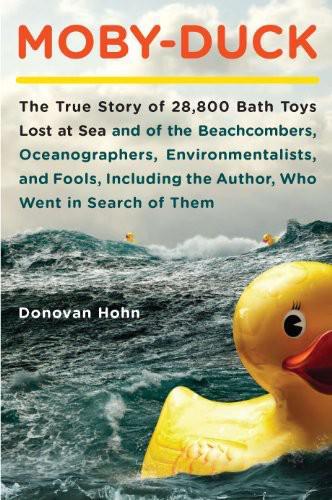
Moby-Duck: The True Story of 28,800 Bath Toys Lost at Sea and of the Beachcombers, Oceanographers, Environmentalists, and Fools, Including the Author, Who Went in Search of Them
by
Donovan Hohn
Published 1 Jan 2010
Environmental Protection Agency for permitting municipalities to pollute watersheds around Los Angeles. As a result of the lawsuit, Los Angeles County had to comply with stricter total maximum daily loads, or TMDLs, the local pollution limits that the EPA places on a region’s waterways under the Clean Water Act. The new TMDLs, the first in the country to treat floatables as a pollutant, will require the county to reduce the amount of solid waste escaping its rivers and creeks from 4.5 million pounds a year to zero by 2016. To meet that target, cities will have to invest in “full-capture systems,” filters that strain out everything larger than five millimeters in diameter.

An Empire of Wealth: Rise of American Economy Power 1607-2000
by
John Steele Gordon
Published 12 Oct 2009
This of course injected a powerful element of politics into the process and invited what today would be called corruption but then was regarded as business as usual. Hamilton’s political enemy—and eventual murderer—Aaron Burr was able to create a bank by sneaking a clause into a charter for a company, called the Manhattan Company, to provide clean water to New York City. The innocuous-looking clause allowed the company to invest surplus capital in any lawful enterprise. Within six months of the company’s creation, and long before it had laid a single section of water pipe, the company opened a bank, the Bank of the Manhattan Company. Still in existence, it is today J.
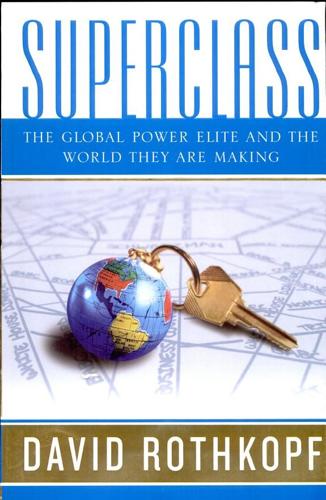
Superclass: The Global Power Elite and the World They Are Making
by
David Rothkopf
Published 18 Mar 2008
The former UN deputy secretary-general Mark Malloch Brown also believes the system needs an overhaul, arguing, however, that we should not be too quick to forget what does work. “You have to be really very hard-headed about what comparative advantages the UN system brings to the table in any given issue,” he told me. “But we shouldn’t overlook that these organizations have the ability to bring clean water to a couple of billion people or to close the investment gap in a country or to persuade the North Koreans to stop launching these missiles into the air. It just needs to be put into perspective … We are government organizations, but that is no longer enough … We are stuck between being where we started as a kind of intergovernmental civil service in the Anglo-Saxon tradition and some new role as a global advocate and entrepreneur.”

The Future of the Internet: And How to Stop It
by
Jonathan Zittrain
Published 27 May 2009
If these mass computer giveaways succeed, shortly we will have another billion users online who are being raised in environments of poverty, with little or no education about proper IT use, and often in countries where there is little history of tolerance (and considerable history of religious, ethnic and tribal strife). Access to eBay and YouTube isn’t going to give them clean water and freedom from disease. But it may help breed resentment and discontent where it hasn’t been before. Gee, I can barely wait. The metaphor that comes to mind is that if we were in the ramp-up to the Black Plague in the middle ages, these groups would be trying to find ways to subsidize the purchase of pet rats.15 Spafford appears to recognize the delicate condition of today’s Net, and he believes that a pause in expansion is needed—a bit of time to digest the problems that beset it.

The Zero Marginal Cost Society: The Internet of Things, the Collaborative Commons, and the Eclipse of Capitalism
by
Jeremy Rifkin
Published 31 Mar 2014
The Harvard curriculum includes courses with titles such as “Managing Social Enterprise” and “Introduction to Social Entrepreneurship.”35 The sociology department has an entrepreneurship “collaboratory” to immerse students in the sociological aspects of the new social economy. The President’s Challenge, another university initiative, distributes $150,000 to student teams engaged in academic and field work to find “solutions to global problems, from education to health to clean water and air.”36 Global networks like Ashoka, the Skoll Foundation, the Acumen Fund, and Duke University’s Center for the Advancement of Social Entrepreneurship serve as think tanks, trade associations, and funding agents to advance social entrepreneurship around the world. Bill Drayton, a leading figure in the social-entrepreneurial movement, is the founder of Ashoka.
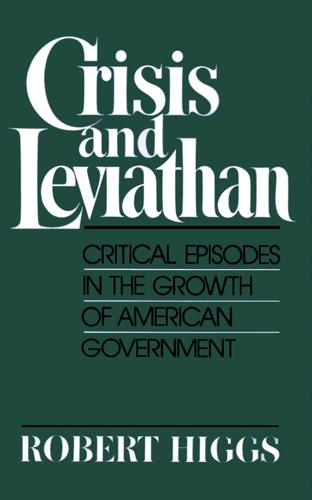
Crisis and Leviathan: Critical Episodes in the Growth of American Government
by
Robert Higgs
and
Arthur A. Ekirch, Jr.
Published 15 Jan 1987
APPENDIX TO CHAPTER TWO Federal Government Agencies, Programs, and Activities (by Acronym or Abbreviation), 1983 AMS Agricultural Marketing Service Amtrak National Railroad Passenger Corporation ABMC American Battle Monuments Commission ACDA Arms Control and Disarmament Agency ANA Agricultural Conservation Program Administration for Native Americans ADA Administration on Aging APHIS Animal and Plant Health Inspection Service ACP ACUS ACYF ADAMHA Administrative Conference of the United States Administration for Children, Youth, and Families Alcohol, Drug Abuse, and Mental Health Administration ADB Asian Development Bank ADD Administration on Developmental Disabilities AEDS Atomic Energy Detection System AFDC Aid to Families with Dependent Children AFIDA Agricultural Foreign Investment Disclosure Act AFIS American Forces Information Service AFPC Armed Forces Policy Council AFR AFRRI AFSC AID ALJ ASCS ATSDR Air Force Reserve Armed Forced Radiobiology Research Institute Agricultural Stabilization and Conservation Service Agency for Toxic Substances and Disease Registry BCP Blended Credit Program BEA Bureau of Economic Analysis BIA Bureau of Indian Affairs BIB Board for International Broadcasting BJS Bureau of Justice Statistics BLM Bureau of Land Management BLS Bureau of Labor Statistics BPA Bonneville Power Administration BSC Business Service Centers CAB CALS Civil Aeronautics Board Current Awareness Literature Service Armed Forces Staff College CBO Agency for International Development Congressional Budget Office CCA Crop Condition Assessment CCC Commodity Credit Corporation Administrative Law Judge 263 Appendix 264 CCEA Cabinet Council on Economic Affairs CCR Commission on Civil Rights CDBG Community Development Block Grant CDC Centers for Disease Control DAVA DCA Defense Audiovisual Agency Defense Communications Agency DCAA Defense Contract Audit Agency DCASR Defense Contract Administration Services Regions CEA Council of Economic Advisers DCII CEQ Council on Environmental Quality Defense Central Index of Investigations DCS Defense Communications System CFC Cooperative Finance Corporation DEA Drug Enforcement Administration CFTC Commodity Futures Trading Commission DIA Defense Intelligence Agency CFA CHAMPVA CIA Commission of Fine Arts Civilian Health and Medical Program of the Veterans Administration Central Intelligence Agency DIPEC DIS DISAM CIC Consumer Information Center COGP Comcen's Conrail CPSC Commission on Government Procurement Federal Communications Centers Defense Investigative Service Defense Institute of Security Assistance Management DLA Defense Logistics Agency DLS Defense Legal Services agency DMA Defense Mapping Agency Consolidated Rail Corporation OMS Defense Mapping School Consumer Product Safety Commission DNA Defense Nuclear Agency CRS Community Relations Service CSA Defense Industrial Plant Equipment Center Community Services Administration CSRS Cooperative State Research Service DOD Department of Defense DODCI Department of Defense Computer Institute DODDS Department of Defense Dependents Schools DOE Department of Energy DA Department of the Army DOT Department of Transportation DARPA Defense Advanced Research Projects Agency DSAA Defense Security Assistance Agency 265 Appendix DSN DVOP EDA Deep Space Network Disabled Veterans' Outreach Program Economic Development Administration FCIC Federal Crop Insurance Corporation FCS Foreign Commercial Service FCU Federal credit union FDA Food and Drug Administration EEOC Equal Employment Opportunity Commission FDIC EIA Energy Information Administration Federal Deposit Insurance Corporation FDPC Federal Data Processing Centers EOUSA EPA EPIC Executive Office for United States Attorneys Environmental Protection Agency Energy Conservation Program Guide for Industry and Commerce ERA Economic Regulatory Administration ERISA Employee Retirement Income Security Act ESA Employment Standards Administration ESF Economic Support Fund ETA Eximbank FAA FAIR Employment and Training Administration Export-Import Bank of the United States Federal Aviation Administration Fair Access to Insurance Requirements FAR Federal Acquisition Regulations FAS Foreign Agricultural Service FBI FEC FEMA Federal Election Commission Federal Emergency Management Agency FFB Federal Financing Bank FGB Foster Grandparent Program FGIS Federal Grain Inspection Service FHA Federal Housing Administration FHLBB Federal Home Loan Bank Board FHWA Federal Highway Administration FIA Federal Insurance Administration FIC Federal Information Centers FICC FIP FLETC Fixed Income Consumer Counseling Forestry Incentive Program Federal Law Enforcement Training Center Federal Bureau of Investigation FLRA Federal Labor Relations Authority FCA Farm Credit Administration FLITE FCC Federal Communications Commission Federal Legal Information Through Electronics FCIA Foreign Credit Insurance Association FMC FMCS Federal Maritime Commission Federal Mediation and Conciliation Service 266 Appendix FmHA Farmers Home Administration FNMA Federal National Mortgage Association FNS FOMC FPRS Food and Nutrition Service HRSA Health Resources and Services Administration HUD Department of Housing and Urban Development IADB Inter- American Defense Board; Inter-American Development Bank IAEA International Atomic Energy Agency Federal Open Market Committee Federal Property Resources Service IAF Inter-American Foundation FRA Federal Railroad Administration FRS Federal Reserve System ICAF FSIS Food Safety and Inspection Service Industrial College of the Armed Forces ICAO International Civil Aviation Organization FSLIC FSS FSTS Federal Savings and Loan Insurance Corporation Office of Federal Supply and Services Federal Secure Telephone Service FTC Federal Trade Commission FTS Federal Telecommunications System FWS Fish and Wildlife Service GAO General Accounting Office ICC Interstate Commerce Commission ICM Intergovernmental Committee for Migration IDA International Development Association; Institute for Defense Analyses IDCA United States International Development Cooperation Agency IFC International Finance Corporation IHS Indian Health Service Government National Mortgage Association IMF International Monetary Fund GPO Government Printing Office IMS Institute of Museum Services GSA General Services Administration INS Immigration and Naturalization Service INTERPOL International Criminal Police Organization GNMA HCFA Health Care Financing Administration HDS Office of Human Development Services IRS Internal Revenue Service HHS Department of Health and Human Services ITA International Trade Administration HNIS Human Nutrition Information Service ITU HRA Health Resources Administration International Telecommunication Union Appendix 267 Individual Yield Coverage program MTB Materials Transportation Bureau JAG Judge Advocate General MTN Multilateral trade negotiations IYC JCS Joint Chiefs of Staff JFMIP Joint Financial Management Improvement Program NARS National Archives and Records Service NASA National Aeronautics and Space Administration NATO North Atlantic Treaty Organization JTPA Job Training Partnership Act LC LMRDA LMSA LSC Library of Congress Labor Management Reporting and Disclosure Act NBS National Bureau of Standards Labor- Management Services Administration NCCB National Consumer Cooperative Bank Legal Services Corporation NCDC New Community Development Corporation LVER Local Veterans' Employment Representative MA Maritime Administration NCIC MAC Military Airlift Command NCJRS National Criminal Justice Reference Service NCI National Cancer Institute National Cartographic Information Center MBDA Minority Business Development Agency NCPC MDB's Multilateral development banks National Capital Planning Commission NCSL MEECN Minimum Essential Emergency Communications Network National Center for Service Learning MILSATCOM MSB-COD MSC MSHA Military Satellite Communications Systems Minority Small Business-Capital Ownership Development program NCUA National Credit Union Administration NDU National Defense University NFIP National Flood Insurance Program NHTSA National Highway Traffic Safety Administration NIC Military Sealift Command National Institute of Corrections NIE Mine Safety and Health Administration National Institute of Education NIH MSPB Merit Systems Protection Board National Institutes of Health NIJ MSSD Model Secondary School for the Deaf National Institute of Justice NIS Naval Investigative Service 268 Appendix NLM NLRB NMB National Library of Medicine OCSE Office of Child Support Enforcement National Labor Relations Board OECD Organization for Economic Cooperation and Development OES Office of Employment Security National Mediation Board NMCS National Military Command System NOAA National Oceanic and Atmospheric Administration OFCC Office of Federal Contract Compliance OFPP Office of Federal Procurement Policy OFR Office of the Federal Register NOS National Ocean Survey NRC Nuclear Regulatory Commission OGPS NSA National Security Agency Office of Grants and Programs Systems OICD NSC National Security Council Office of International Cooperation and Development NSF National Science Foundation OIRM Office of Information Resources Management NSTL National Space Technology Laboratories OJARS Office of Justice Assistance, Research and Statistics NTIA National Telecommunications and Information Administration OJJDP Office of Juvenile Justice and Delinquency Prevention NTID National Technical Institute for the Deaf NTIS National Technical Information Service NTS Naval Telecommunications System OMB Office of Management and Budget OPD Office of Policy Development OPIC Overseas Pri vare Investment Corporation OPM Office of Personnel Management NTSB National Transportation Safety Board ORM Office of Regional Management NWC National War College ORR Office of Refugee Relief OA Office of Administration OSCE Office of Child Support Enforcement OAS Organization of American States OSHA Occupational Safety and Health Administration OCA Office of Consumer Advisor OSHRC Occupational Safety and Health Review Commission OCCCA OCS Office of Congressional, Community and Consumer Affairs Office of Community Services OSTP OT Office of Science and Technology Policy Office of Transportation Appendix OTA 269 Office of Technology Assessment SAO Office of Trade Adjustment Assistance Smithsonian Astrophysical Observatory SBA OVRR Office of Veterans' Reemployment Rights Small Business Administration SBIC's OWBE Office of Women's Business Enterprise OTAA OWP Office of Water Policy PADC Pennsylvania Avenue Development Corporation PAHO Pan American Health Organization PBGC Pension Benefit Guaranty Corporation PBS PCC PHA's Public Buildings Service Panama Canal Commission Public Housing Agencies PHS Public Health Service PIK Payment-In-Kind program PRC Postal Rate Commission PTO Patent and Trademark Office RCWP REA RETRF RFE RL Rural Clean Water Program Rural Electrification Administration Rural Electrification and Telephone Revolving Fund Radio Free Europe Railroad Retirement Board RSA Rehabilitation Services Administration RSPA RSVP SCP Senior Companion Program SCS Soil Conservation Service SCSEP Senior Community Service Employment Program SEAN Scientific Event Alert Network SEC SGLI Research and Special Programs Administration Retired Senior Volunteer Program RTB Rural Telephone Bank SAC Strategic Air Command Securities and Exchange Commission Servicemen's Group Life Insurance SIL Smithsonian Institution Libraries SITES Smithsonian Institution Traveling Exhibition Service SLS Saint Lawrence Seaway Development Corporation SMIDA SPC SRIM Small Business Innovation Development Act South Pacific Commission Standing order microfiche service SRS Statistical Reporting Service SSA Social Security Administration Radio Liberty RRB Small Business Investment Companies SSI Supplemental Security Income Program SSS Selective Service System START Strategic arms reduction talks TAC Tactical Air Command TCE Tax Counseling for the Elderly Program Appendix 270 STDN TDP TRIMIS Spaceflight Tracking and Data Network Trade and Development Program USIA USICA United States International Communication Agency USITC United States International Trade Commission USMC United States Marine Corps T ri-Service Medical Information System TRI-TAC Joint Tactical Communications Program TSC Transportation Systems Center TVA Tennessee Valley Authority USN USNCB UCPP Urban Crime Prevention Program USPS UDAG Urban Development Action Grant USRA UIS Unemployment Insurance Service United States Information Agency USTTA United States Navy United States National Central Bureau United States Postal Service United States Railway Association United States Travel and Tourism Administration UMTA Urban Mass Transportation Administration VA UN United Nations VETS Veterans' Employment and Training Service VGLI Veterans Group Life Insurance UNESCO UNICEF UNICOR United Nations Educational, Scientific and Cultural Organization VITA Volunteer Income Tax Assistance Program VMLI Federal Prison Industries, Inc.
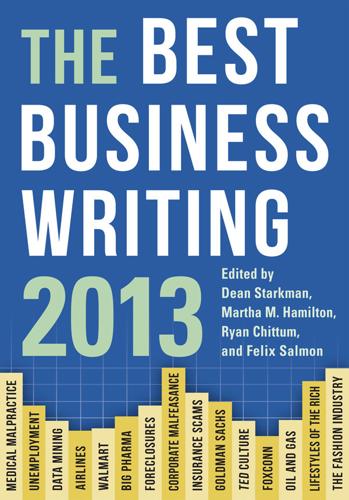
The Best Business Writing 2013
by
Dean Starkman
Published 1 Jan 2013
Being here leaves Kennan thoughtful; as if to preclude sentiment, he abruptly pulls out, and we drive along the length of the park: a broad, oak-canopied lawn along the creek, a spacious playground, a wading pool for kids, bathrooms. Kennan points to a public tap near the stream. “This park has everything, bro, everything you could want,” he says with the tenderness, almost wonderment, that people in the Safe Parking program express when talking about any public amenity that affords comfort: clean water, electrical outlets, showers, a safe green space, a good playground. From Oak Park we turn right onto a road leading back to Highway 101, Kennan excruciatingly conscious of the road’s steep grade. He’d run out of gas a few times trying to make it up the hill—the RV’s gas gauge was broken—and had to carefully roll downhill to get as close to the nearest gas station as he could.
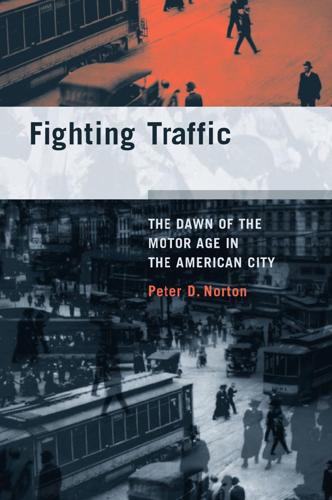
Fighting Traffic: The Dawn of the Motor Age in the American City
by
Peter D. Norton
Published 15 Jan 2008
They were willing to go to some lengths to shape demands—just as the scientific management reformers had not trusted workers or foremen, but insisted on prescribing and enforcing “the one best way.” The Lessons of Water Supply Engineers who wanted to treat American streets like public utilities faced technical and social obstacles similar to those that confronted earlier regulators. Municipal water supply is a useful example. In the nineteenth century, clean water was difficult to secure, especially in cities. Individualistic, private methods could be dangerously unreliable. Rooftop cisterns ran out; shallow wells went dry or were contaminated. Large-scale, collective water service would correct these problems, but entrepreneurs who would supply it faced daunting barriers.
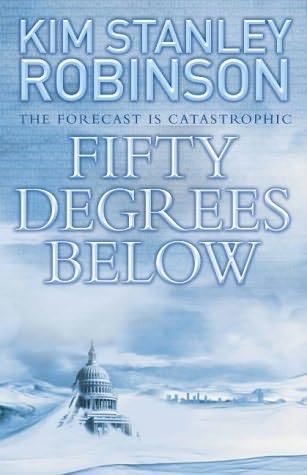
Fifty Degrees Below
by
Kim Stanley Robinson
Published 25 Oct 2005
Given some version of these foundational axioms, the scientific community suggests these platform particulars for government: (preliminary partial list, please add to as you see fit) “Contract with Our Children” 1. protection of the biosphere: sustainable uses; clean technologies; carbon balance; climate homeostasis. 2. protection of human welfare: universal housing, clothing, shelter, clean water, health care, education, reproductive rights. 3. full employment: Current economy defines 5.4% unemployment as optimum for desired “wage-pressure balance,” treating labor (people) as a commodity and using a supply/demand pricing model. Five percent in U.S.A. = approx. fifteen million people.

How Everything Became War and the Military Became Everything: Tales From the Pentagon
by
Rosa Brooks
Published 8 Aug 2016
Also you take a small stone, you sew it on a cloth and wear it around your wrist like a watch. That is to prevent the bullet that might come, because in battle it is acting as a mountain. So those people on the other side will look at you, but they will see only a mountain, and the bullets will hit the mountain and not hurt you. You also have water: they call it “clean water,” and they pour it into a small bottle. If you go to the front, you also have a small stick, and you dip it in the bottle and fling the water out. This is a river and it drowns the bullet that might come to you. Finally you wear a cross on a chain. But in the fighting you wrap it around your wrist and hold it in your hand.
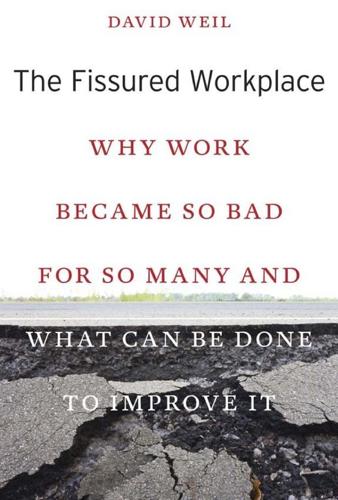
The Fissured Workplace
by
David Weil
Published 17 Feb 2014
OSHA also administers similar whistleblower protection for twenty-one statutes. Along with a number of statutes related to the workplace (e.g., the Federal Railroad Safety Act and the Surface Transportation Assistance Act, regulating safety in the railroad and trucking industries, respectively), this also includes whistleblower protections under the Sarbanes-Oxley Act, Clean Water Act, Safe Drinking Water Act, and other statutes. For a complete listing of whistleblower protection programs administered by OSHA, see http://www.whistleblowers.gov/index.html. 6. The percentage of complaints taken to employers versus through government agencies is reported in National Employment Law Project (2010); the 20% of employees who “either made a complaint in the last year or attempted to form a union” is reported in Bernhardt, Milkman, et al. (2009, 24).

The Men Who United the States: America's Explorers, Inventors, Eccentrics and Mavericks, and the Creation of One Nation, Indivisible
by
Simon Winchester
Published 14 Oct 2013
By the time Bell died and was laid to rest in Nova Scotia, there were thirteen million in America alone. Today there are more telephones in the United States than there are people. And while it would be idle to suggest that telephony is universal—billions of people, in Asia and Africa most commonly, still have little access to clean water or basic sanitation, let alone to even the plainest of telephone instruments—the statistic is undeniable: there are currently six billion cell phones in the world, a number that is increasing rapidly as long-distance conversation becomes almost a basic human right. As soon as the telephone had been invented in 1876, offering people the opportunity to have conversations from home with people far away, the instrument became fantastically popular.

Lonely Planet Panama (Travel Guide)
by
Lonely Planet
and
Carolyn McCarthy
Published 30 Jun 2013
The communities are typically made up of 30 to 40 bohíos (thatched-roof, stilted, open-sided dwellings), and they survive on subsistence agriculture, hunting, fishing and pastoralism. However, life can be extremely difficult in these frontier villages – the life expectancy is about 10 years below the national average and the majority of the Emberá and Wounaan communities lack access to clean water and basic sanitation. For the campesinos (farmers), life is also hard. A subsistence farmer in the interior might earn as little as US$10 per day, far below the national average of US$12,770 per capita. The dwelling might consist of a simple cinder block building, with a roof and four walls and perhaps a porch.

Connectography: Mapping the Future of Global Civilization
by
Parag Khanna
Published 18 Apr 2016
Building such complex water desalination, transportation, and recycling networks will be every bit as crucial to our future as oil and gas pipelines have been to date. Whereas enormous quantities of water have been used in energy production and mineral extraction, soon nuclear power will generate clean water for billions across Asia, the Middle East, and Africa. Israel has pioneered nuclear-powered water recycling, TerraPower (backed by Bill Gates) is developing reactors that use depleted rather than enriched uranium, and India is developing thorium reactors, all of which means cleaner and safer power.

More: The 10,000-Year Rise of the World Economy
by
Philip Coggan
Published 6 Feb 2020
In part it is down to a big fall in the child mortality rate; the global rate for infant mortality has dropped from 18% in the 1960s to 4% today (see chart).13 Governments have played a huge role in this decline. It is not just about building hospitals and training doctors. Governments have also delivered clean water and sanitation to households, and have sponsored medical research and public health campaigns, such as vaccination (around 88% of the world’s children now receive some kind of vaccination).14 However, healthcare costs seem to be on an inexorably rising trend, increasing from 5.5% of EU GDP in 1970 to more than 9.4% by 2012.15 In America, the rise has been even faster, from 5% of GDP in 1960 to 17.9% in 2016.16 As people live longer, they are more inclined to get chronic illnesses like diabetes and heart disease, which involve prolonged and recurring treatment; those who suffer from cancer or strokes can survive for many years.
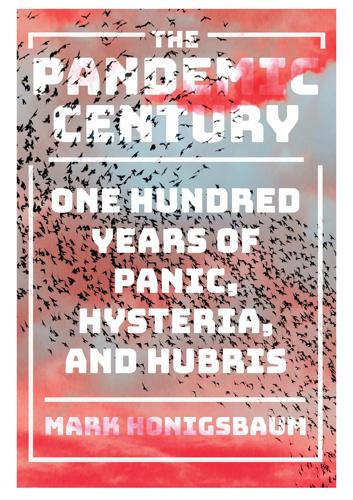
The Pandemic Century: One Hundred Years of Panic, Hysteria, and Hubris
by
Mark Honigsbaum
Published 8 Apr 2019
In addition, Zika can be transmitted by the “Asian tiger mosquito,” Aedes albopictus, which ranges as far north as Chicago and New York during the northern summer.¶ However, Zika has also been isolated from several species of Culex, including C. quinquefasciatus, which is abundant in Brazil, as well as in Asia. Moreover, unlike Aedes, which prefers clean water, C. quinquefasciatus favors dirty water and is happy to breed in sewer runoffs and canals clogged with refuse and other debris. In an office a few doors from Turchi’s, another Fiocruz researcher, Constância Ayres, had been taking a closer look at the Culex mosquito and the evidence that it might play a role in transmission.

The Vortex: A True Story of History's Deadliest Storm, an Unspeakable War, and Liberation
by
Scott Carney
and
Jason Miklian
Published 28 Mar 2022
West Pakistan ringed East Pakistan with troops to stop Bengalis from sneaking out to India for training, effectively walling up the country. Hai’s group originally planned to cross to the west, along with the fifty thousand refugees that fled each day to Calcutta, not only running from the genocide but also desperately searching for clean water because their village wells were ruined after the cyclone. On that route, troops pulled every able-bodied man they spied out of the procession. Any man without a family got interrogated. Most were never seen again. So Hai and his friends changed tack, opting instead to cross into India’s northeastern state of Tripura.
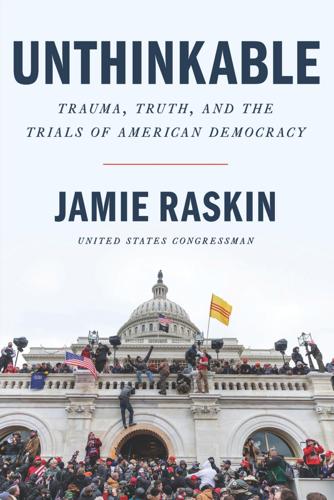
Unthinkable: Trauma, Truth, and the Trials of American Democracy
by
Jamie Raskin
Published 4 Jan 2022
“But these days,” I said, “my favorite thing to call myself is a conservative, because I want to conserve the land, the air, the water, the climate system, the Constitution, the Bill of Rights, Social Security, Medicare, the Affordable Care Act, the Fair Labor Standards Act, the National Labor Relations Act, the Clean Air Act, the Clean Water Act, the Civil Rights Act, and the Voting Rights Act. I don’t even know why you guys want to call yourselves conservatives anymore, because you want to tear everything down. That’s not conservatism. That’s nihilism.” I think he just chuckled. I was probably writing for about fifteen minutes when I closed my eyes and fell asleep with my laptop on my chest.

Discover Caribbean Islands
by
Lonely Planet
However, there are places for extra caution, including Pointe-à-Pitre (Guadeloupe), Fort-de-France (Martinique), urban areas of Jamaica, urban areas on St-Martin/Sint Maarten and downtown Port of Spain (Trinidad). In most areas there is a huge disparity between the income of locals and the (real or perceived) wealth of visitors. If you venture beyond the borders of the tourist areas, you may observe populations devastated by poverty, and a lack of medical supplies and clean water, in places such as Jamaica. Add to this the existence of drug production and trafficking and you can see why crime is a problem in some areas. It’s advisable to check your own government’s travel advisories for the latest information. Beware: Manchineel Trees Manchineel trees grow on beaches throughout the Caribbean.
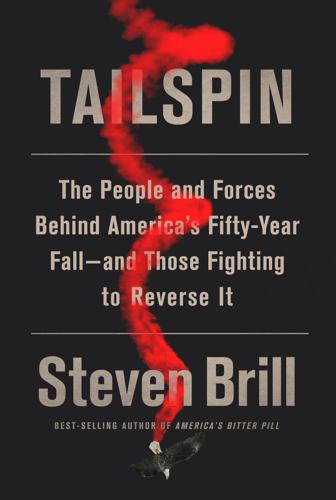
Tailspin: The People and Forces Behind America's Fifty-Year Fall--And Those Fighting to Reverse It
by
Steven Brill
Published 28 May 2018
It is not as if the need to spend much more is not clear, and not only in terms of the potholes, bursting airports, or stalled trains that everyone can see and that are supposed to serve a population that has grown by more than 60 percent since 1970. White papers abound confirming the obvious—that roads, train tracks, and structures have finite useful lives, and need regular repair and eventual replacement. The same studies say that America will be home to 70 million more people by 2050, requiring thousands more schools, new sources of clean water and energy, and better roads and rail systems to move all those people and, according to the projections, haul twice the freight the country’s infrastructure now handles. The fiscal logic of these investments is equally clear. They more than pay for themselves—in the long term. By 2020, America’s lagging infrastructure will cost millions of jobs and trillions in reduced gross domestic product.
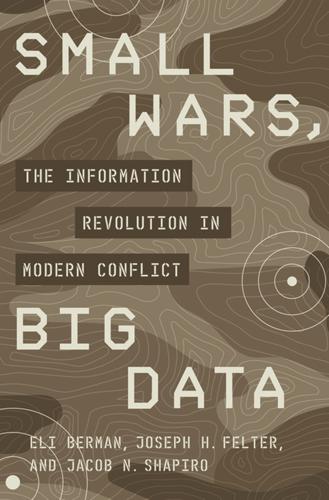
Small Wars, Big Data: The Information Revolution in Modern Conflict
by
Eli Berman
,
Joseph H. Felter
,
Jacob N. Shapiro
and
Vestal Mcintyre
Published 12 May 2018
And all of them were taking on tremendous personal risks to try to help make those places safer. The country director encouraged them to speak freely and speculate, noting that the funders of programs were not present and emphasizing that the research team could be trusted. “We think that it’s good to dig a well, because the children benefit from clean water, and the mothers save time fetching it. That can’t hurt.” “It’s difficult to know, as we seldom can actually visit the villages, so we rely on local staff.” “Sometimes the project can hurt, as the Taliban will come destroy it, frightening local families.” “The projects might come with increased troop presence, which increases confrontations and violence.”
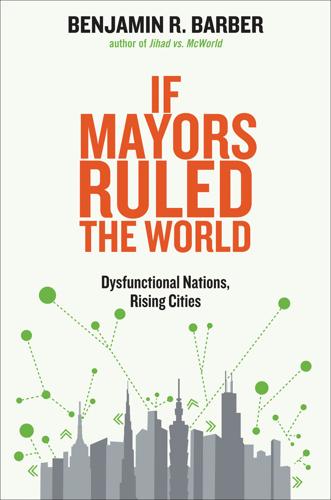
If Mayors Ruled the World: Dysfunctional Nations, Rising Cities
by
Benjamin R. Barber
Published 5 Nov 2013
Especially when we recall that urban life is largely coastal or water-oriented and that access to water as a feature of nature can be a key factor in achieving equality. When we debate transportation or education or housing, equal access seems an obvious issue, yet it often goes missing in the conversation about nature, water, and sustainability. Access to clean water, safe food, and breathable air is an aspect of the right to life. Moreover, in a world of interdependent water supplies, global agriculture, and cross-border pollution, the impact of cataclysmic climate change falls unevenly on the backs of the poor. The water wars devastate the poor above all.
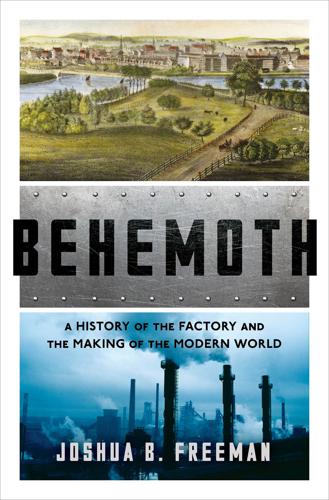
Behemoth: A History of the Factory and the Making of the Modern World
by
Joshua B. Freeman
Published 27 Feb 2018
In the years since it has been higher, with a peak, between 1950 and 1970, of nearly 3 percent. The cumulative effect of the increased production of goods and services has been utterly transformative, measured most basically in life expectancy, now over eighty in the United Kingdom, a bit higher in France, and nearly sixty-nine globally. Steady supplies of food, clean water, and decent sanitation have become the norm in much of the world, no longer restricted to tiny pockets of the wealthy in the most advanced areas. Meanwhile, the surface of the earth, the composition of the oceans, and the temperature of the air have been profoundly altered, to the extent of threatening the species itself.
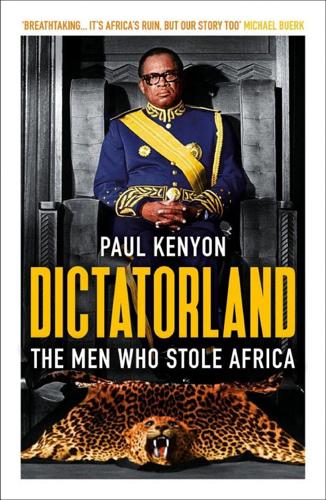
Dictatorland: The Men Who Stole Africa
by
Paul Kenyon
Published 1 Jan 2018
It then set to work expropriating vast tracts of Eritrean land as terre domaniale, crown property, for the production of cotton, tropical fruits and coffee, which was cultivated by cheap indigenous labour and exported back home to Italy. In the capital, Asmara, located on the northwestern edge of the highlands, an early form of apartheid was introduced. Superior whites occupied the capital’s newly developed European quarter, with its clean water and smart new buildings, while Eritreans were confined to the sprawling slums and alleyways of the ‘native’ districts. The Italians wasted little time in exploiting their new supply of manpower, forcibly conscripting thousands into their colonial army to help seize further territory in Africa. The Eritrean ascari fought under Italian officers, seven thousand of them in the disastrously failed attempt to take over Ethiopia, which ended for the time being with the wiping out of an Italian army at Adwa in 1896.
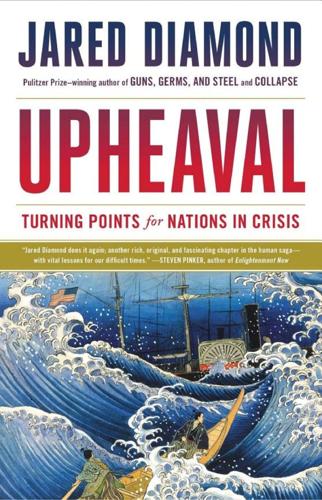
Upheaval: Turning Points for Nations in Crisis
by
Jared Diamond
Published 6 May 2019
Until they are practiced in Japan, Chinese and Koreans will continue to disbelieve Japanese scripted apologies, and to hate Japan. And as long as China and Korea are armed to the hilt while Japan remains without the means to defend itself, a big danger will continue to hang over Japan. All peoples depend for their existence on renewable natural resources, including trees, fish, topsoil, clean water, and clean air. All of those resources pose problems of management, about which scientists have already accumulated much experience. If the world’s forests and fisheries were managed according to recommended best practices, it might be possible to harvest forest products and aquatic food for the indefinite future, in quantities sufficient to meet the needs of the world’s current population.

Afgantsy: The Russians in Afghanistan, 1979-89
by
Rodric Braithwaite
Published 15 Jan 2011
The United States, the Soviet Union, Germany and others all gave aid to Afghanistan before the war. The Russians had the advantage of a direct model on which to base themselves: the Central Asian republics of the Soviet Union, to which in the course of a hundred years of imperial rule they had brought law and order, clean water, health care, universal education for boys and girls, economic development, and for the elite the prospect of glittering prizes in Moscow. This progress was achieved at a very high price: a protracted guerrilla war in the 1920s, perhaps a million dead in the collectivisation of Kazakhstan in the 1930s, widespread corruption, and political repression sometimes even more ruthless than elsewhere in the Soviet Union.

Coders: The Making of a New Tribe and the Remaking of the World
by
Clive Thompson
Published 26 Mar 2019
With the Industrial Revolution roaring onward, the country began urbanizing, and skyscrapers climbed in New York and Boston and Chicago. Suddenly it was crucial to figure out how, precisely, you could get millions of people to live in tight proximity without drowning in their own excrement and while providing them with reasonably clean water and air and some way of moving around. This required a ton of ingenious mechanics, so all of a sudden civil engineers, architects, and city planners were in the driver’s seat. Anyone who could work in those fields—subway builders, bridge-builders, park-planners—had an outsize role in determining how the city dwellers of the US would live.

Lamb: The Gospel According to Biff, Christ's Childhood Pal
by
Christopher Moore
Published 4 Feb 2003
“Buy what you need with what’s left over, just go.” Rumi skulked away and I went to help Joshua process the saltpeter. The concept of abundance was an abstract one to the Untouchables, except as it pertained to two categories, suffering and animal parts. If you wanted decent food, shelter, or clean water, you would be sorely disappointed among the Untouchables, but if you were in the market for beaks, bones, teeth, hides, sinew, hooves, hair, gallstones, fins, feathers, ears, antlers, eyeballs, bladders, lips, nostrils, poop chutes, or any other inedible part of virtually any creature that walked on, swam under, or flew over the subcontinent of India, then the Untouchables were likely to have what you wanted lying around, conveniently stored beneath a thick blanket of black flies.
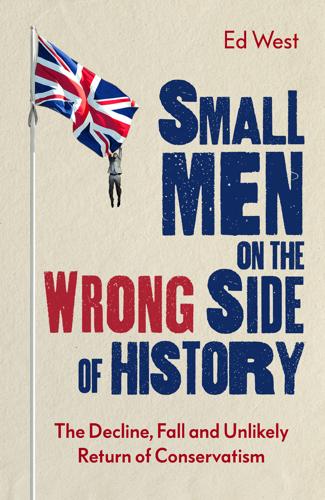
Small Men on the Wrong Side of History: The Decline, Fall and Unlikely Return of Conservatism
by
Ed West
Published 19 Mar 2020
Reform is necessary, but limited by the law of diminishing returns. You can solve the worst injustices in society but after that it becomes increasingly hard as you try to make the world a more perfect place. For example, it’s relatively easy in a poor country to immediately alleviate the most extreme poverty; all you have to do is provide clean water, birthing facilities and free basic education, and things such as infant mortality and other measures of absolute poverty will drastically fall. But once you move the bulk of people out of destitution those who remain will be harder to help, and increasingly people still left in poverty are there largely because of their inability to function or make good decisions.

Grand Transitions: How the Modern World Was Made
by
Vaclav Smil
Published 2 Mar 2021
The combination of the mass, complexity, and spatial extent of this global system and of the cost of equally reliable and affordable alternatives (even if they were fully available for mass-scale deployment) makes it obvious that its complete displacement will be a multigenerational task, and its success (however rapid or remote) depends on the sustained decline of atmospheric CO2. This shift is predicated on global effort. Post-1950 national efforts were highly effective in cleaning water or reducing air pollution—but even if such major economies as the United Kingdom or France became carbon-free overnight, fossil-fuel-based global economic growth would replace those emissions in a single year. Between 2010 and 2018 the annual global increase of emissions from fossil fuels and cement averaged nearly 340 Mt CO2, compared to the French output of 331 Mt and the British release of 368 Mt (GCP 2019).

As Gods: A Moral History of the Genetic Age
by
Matthew Cobb
Published 15 Nov 2022
This produces frustration either when the complex situation bites back, or when people who are the subject of such proposals, or who live in the area where GMOs are to be released, raise difficulties. Some humility may be in order – if, as is often argued, our fundamental concern is about saving human lives, then genetic engineering is surely not the most immediate nor the most cost-effective solution. Focusing funding efforts on, say, clean water and effective sewage systems around the world would surely be a better use of our resources. To use an example more directly related to genetic engineering, for all but a few dozen individuals around the world, pre-implantation embryo screening can respond to the desire for healthy biological offspring, a desire seen as so overwhelmingly important that it requires us to accept human heritable gene editing.
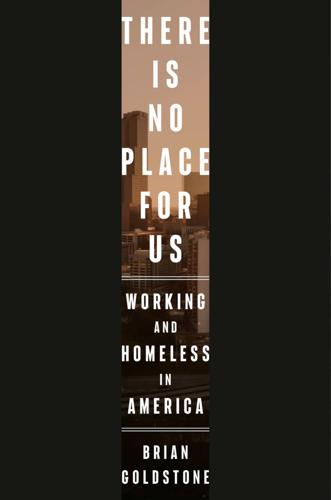
There Is No Place for Us: Working and Homeless in America
by
Brian Goldstone
Published 25 Mar 2025
Housing, in this view, is too precious and important to be left to the whims of the market: it is a cornerstone of both human dignity and societal well-being. In other words, housing is an essential public good—something that benefits society as a whole and contributes to the overall flourishing of communities. There are lots of things we consider public goods and fund accordingly: K-12 education, Social Security, clean water, parks, libraries, roads and highways, and other infrastructure. How have we allowed something as fundamental as shelter to be excluded from this list? The idea of a right to housing has a long and distinguished pedigree. It has been a core principle for countless social movements, and it’s enshrined in law by many of America’s peer countries.

Pandora's Star
by
Peter F. Hamilton
Published 2 Mar 2004
The inn was called the Last Pony, a long shambling wooden building camouflaged by an ancient vine that had colonized the sagging front wall to such an extent it was probably all that was now holding it up. The big indigo valentines of semiorganic precipitator leaves were draped along the eves, sucking clean water out of the humid air and funneling it into the building’s pipes for drinking and washing. A dozen young kids were playing in the dusty soil outside. The boys were dressed in badly worn trousers and shirts, made from natural fabrics in dark brown and gray colors. Most of the girls wore dresses that were frayed and patched.
…
None of them made physical nerve contact with the motiles anymore; their sensor stalk nerve receptors were all connected to an electronic network that connected them en masse to the herds as well as every mechanical segment of their territory. A battery of maser units perched above the valley ramparts extended the gigantic immotile group’s presence across the star system. Below the building floor, the mountain was riddled with pipes and sewers. The immotiles were bathed in a gentle shower of clean water produced in desalination plants north of the spaceport, and piped into the valley. Waste water carrying away body effluent was flushed straight back into the sea, while water carrying nucleiplasm batches was directed into the moat of congregation lakes around the base of the mountain. The vehicle drove over a six-kilometer-long causeway between lakes.

Empire of Things: How We Became a World of Consumers, From the Fifteenth Century to the Twenty-First
by
Frank Trentmann
Published 1 Dec 2015
Such manuals took their inspiration from Renaissance courtesy literature, but they were now addressed to ‘persons of all ranks and conditions’ and sold at one shilling, within reach of clerks.77 In Japan during the Tokugawa period (1600–1867), the standard of living also rose for merchants and commoners, but wealth was spent on better walls, wooden floors, drainage and clean water. The interior remained sparse, with core possessions kept in a trunk, and a solitary vase on display. Additional possessions were put in storehouses, out of sight.78 This culture of simple comfort, in part inspired by Zen Buddhism, made eminent sense in a country with few natural resources. Arguably, it gave Japan a higher well-being than Europe.
…
Yet as the movement spread, ideological divides began to open up between North and South. In part, this reflected a gulf in material conditions. Protecting consumers in affluent America meant one thing, doing so in developing Malaysia something quite different. Here it was first and foremost about access to food and shelter, clean water, education and other basic goods. Choice was for the rich. Anwar Fazal, the IOCU’s Asian regional president, went so far as to drop choice off the list of consumer rights altogether.94 The South left its mark on the IOCU’s increasingly ambitious programme. Its 1978 Charter put poverty relief and the environment at the heart of consumer protection.

Days of Fire: Bush and Cheney in the White House
by
Peter Baker
Published 21 Oct 2013
When it came time to vote, Cheney supported tax cuts, prayer in school, and the contra rebels in Nicaragua and, in his own words, “never met a weapons system he didn’t vote for.” He opposed abortion, the Equal Rights Amendment, creation of the Education Department, a ban on armor-piercing bullets, and anti-apartheid sanctions on South Africa. He voted against funding for the Clean Water Act, the Safe Drinking Water Act, and the Endangered Species Act. He opposed Head Start and Superfund. He earned a 91 percent lifetime rating from the American Conservative Union, edging out his classmate Newt Gingrich, with 90 percent. “I had no idea he was that conservative,” Michel said later.
…
Little wonder. In Tanzania, Bush had spent $817 million to provide medicine and other care to hundreds of thousands of AIDS patients. During his visit, the two leaders signed a $698 million, five-year Millennium Challenge contract to rebuild roads, expand electricity generation, and provide more clean water. Accompanied by Bob Geldof, the rocker-activist, Bush savored the interlude between crises and later called the trip “the best of the presidency.” Condoleezza Rice thought that may have been the happiest moment of Bush’s tenure. “He loved being in Africa,” she observed. “The last trip was very validating.”

The omnivore's dilemma: a natural history of four meals
by
Michael Pollan
Published 15 Dec 2006
To help dispose of the rising mountain of cheap corn farmers were now producing, the government did everything it could to help wean cattle off grass and onto corn, by subsidizing the building of feedlots (through tax breaks) and promoting a grading system based on marbling that favored corn-fed over grass-fed beef. (The government also exempted CAFOs from most clean air and clean water laws.) In time the cattle themselves changed, as the industry selected for animals that did well on corn; these animals, generally much bigger, had trouble getting all the energy they needed from grass. In dairy, farmers moved to superproductive breeds like the Holstein, whose energy requirements were so great they could barely survive on a diet of grass.
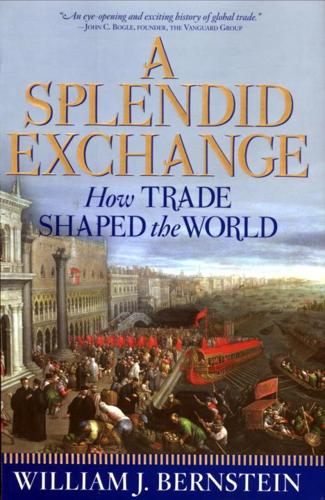
A Splendid Exchange: How Trade Shaped the World
by
William J. Bernstein
Published 5 May 2009
In cramped cities lacking effective sanitation, the nose discerned location as well as any map: the odor of feces from main sewer lines and slaughterhouses; the scent of urine surrounding government buildings, temples, and theaters; or the particularly offensive olfactory assaults of the tannery, the fishmonger, and the cemetery. Amid such stenches, and where regular bathing in clean water and regular changes of clothes were reserved for only the wealthiest citizens, few substances were as prized as myrrh oil, easily applied as a body lotion and capable of hiding the rank smells of everyday life. Physicians used myrrh liberally in medicinals, and it was also the ancient world's embalming fluid of choice.

Scale: The Universal Laws of Growth, Innovation, Sustainability, and the Pace of Life in Organisms, Cities, Economies, and Companies
by
Geoffrey West
Published 15 May 2017
And much of their water use goes to keeping their lawns and gardens looking as if they were growing in Singapore, whose annual rainfall is 92 inches. The good news is that most urban communities in the United States and across the globe are becoming much more sensitive to these issues, recognizing that clean water is a precious commodity that is being depleted at an alarming rate and that it cannot be taken for granted. Most are beginning to implement policies to significantly reduce water consumption but, like many “green” conservation measures, these may be too little too late. The point is that in all of these communities enormous resources have been put into the engineering infrastructure to artificially provide them with abundant water transported over great distances and/or from very deep aquifers, with the implicit assumption that these sources are inexhaustible and forever cheap—questionable, at best.

WTF?: What's the Future and Why It's Up to Us
by
Tim O'Reilly
Published 9 Oct 2017
We have yet to deal with the enormous transitions to our energy infrastructure that will be required to respond to climate change; the public health challenges of new infectious diseases; the demographic inversion in which a growing class of elders will be supported by a smaller cohort of workers; rebuilding the physical infrastructure of our cities; providing clean water to the world; feeding, clothing, and entertaining nine billion people. How do we turn millions of displaced people into settlers in the cities of the future rather than refugees in squalid encampments? How do we reinvent education? How do we better care for each other? History provides another story of jobs being taken by machines, more recent than the Luddites.

Frommer's Paris 2013
by
Kate van Der Boogert
Published 24 Sep 2012
Napoleon (1804–1814) Taking advantage of the post-revolutionary chaos, Napoleon Bonaparte crowned himself emperor of the French in 1804. He famously declared that “Paris is short of monuments” and so “It must be given them.” His desire to remake Paris into a city fit for an emperor led to an ambitious public building program. From 1802 onward, canals—including Canal St-Martin—were built to ensure that the city had a clean water supply. In 1806, Napoleon decided to build the Arc de Triomphe, which was intended to celebrate his victory at Austerlitz but was only completed 2 decades after his downfall, and a neo-classical “Temple to the Glory of the Great Army,” which was never fully completed and later became La Madeleine.
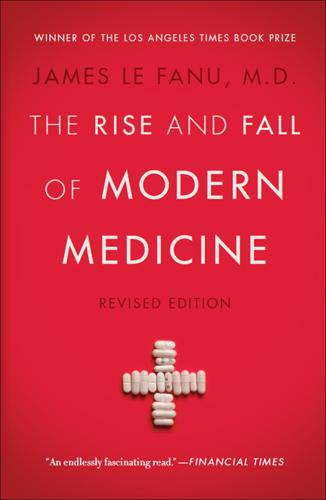
The Rise and Fall of Modern Medicine
by
M. D. James le Fanu M. D.
Published 1 Jan 1999
Meanwhile scientific investigations revealed that numerous other unsuspected hazards in people’s lives, including the minuscule quantities of chemicals and pollutants in air and water, were similarly implicated in a whole range of serious illnesses such as leukaemia, stomach cancer, infertility and much else besides. This was medicine on the grand scale of the great sanitary reforms of the nineteenth century when civil engineering, by providing a clean water supply, eradicated water-borne infectious diseases such as cholera. Now social engineering, by encouraging people to adopt healthy lifestyles, together with a serious assault on the environmental cause of disease, would have a comparably beneficial effect. While it is very difficult to evaluate all the relevant evidence for such assertions, their origin undoubtedly can be traced to a powerful and persuasive critique by Professor Thomas McKeown in 1976 of the prevailing view that the progress of medical science could take the credit for the prodigious improvements in health over the preceding 100 years.
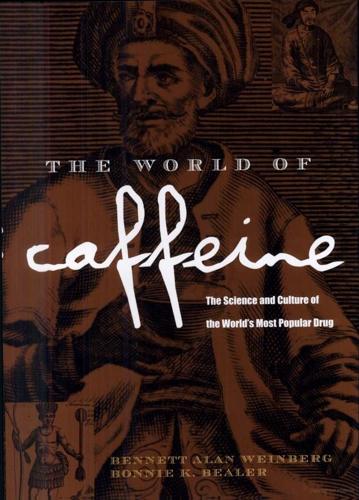
The World of Caffeine: The Science and Culture of the World's Most Popular Drug
by
Bennett Alan Weinberg
and
Bonnie K. Bealer
Published 5 Dec 2000
On May 8,1666, Samuel Speed (d. 1681), a stationer, bookseller, and writer headquartered at the Rainbow, was arrested on charges of publishing and selling treasonable books.18 Although the Rainbow continued doing business without interruption by the king’s Proclamation of 1675, discussed below, “Farr’s Coffee-house the Rainbow near the Temple” and Blount appear in a list of suspicious houses and persons published in 1679.19 A good idea of how coffee was being enjoyed in these Restoration coffeehouses can be gotten from this London recipe from 1662: To make the drink that is now much used called coffee The coffee-berries are to be bought at any Druggist, about three shillings the pound; Take what quantity you please, and over a charcoal fire, in an old pudding-pan or frying-pan, keep them always stirring until they be quite black, and when you crack one with your teeth that it is black within as it is without; yet if you exceed, then do you waste the Oyl, which only makes the drink; and if less, then will it not deliver its Oyl, which makes the drink; and if you should continue fire till it be white, it will then make no coffee, but only give you its salt. The Berry prepared as above, beaten and forced through a Lawn Sive, is then fit for use. Take clean water, and boil one third of it away what quantity soever it be, and it is fit for use. Take one quart of this prepared Water, put in it one ounce of your prepared coffee, and boil it gently one-quarter of an hour, and it is fit for your use; drink onequarter of a pint as hot as you can sip it.20 In the beginning, these coffeehouses served only coffee, but soon chocolate, tea, and sherbet were added to the bill of fare.

Red Plenty
by
Francis Spufford
Published 1 Jan 2007
Little by little, in the most undisciplined way, things he had never wanted to remember drifted up from the depths; foul stuff, past hours and minutes it did nobody any good to recall, leaving their proper places in oblivion and rising up into the mind, like muck stirred up from the bottom of a pond to stain the clean water above. He did his best to keep his thoughts in order, for self-pity would be disgusting, and he had the example of Nina Petrovna’s Bolshevik calm always before him. If she could manage the change in their lives, the change in her duties, without ever once complaining, so could he, surely. He could repair his mental filters and get through each day.
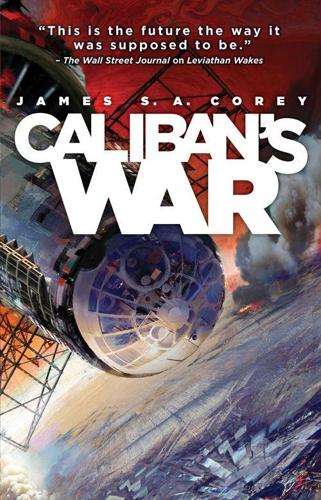
Caliban's War
by
James S. A. Corey
Published 6 Jun 2012
He couldn’t distract himself. There was no station—not even a wounded and dying one—to hunt through. There were only the cabin he’d been given, his hand terminal, a few jumpsuits a half size too big for him. A small box of generic toiletries. That was everything he had left. And there was enough food and clean water that his brain could start working again. Each passing hour felt like waking up a little more. He knew how badly his body and mind had been abused only when he got better. Every time, he felt like this had to be back to normal, and then not long after, he’d find that, no, there had been more. So he explored himself, probing at the wound at the center of his personal world like pressing the tip of his tongue into a dry socket.
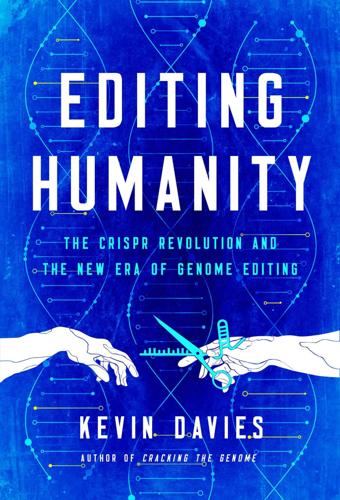
Editing Humanity: The CRISPR Revolution and the New Era of Genome Editing
by
Kevin Davies
Published 5 Oct 2020
—before CRISPR—that have entered the clinic to treat HIV and rare genetic disorders. And there are already enhancements to CRISPR, even more precise versions called base editing and prime editing that take us closer to the Holy Grail of safe, pinpoint control of the DNA sequence. There have been some momentous medical revolutions over the past few centuries: sanitation and clean water, anesthesia, vaccines, antibiotics, small-molecule drugs, biologics, in vitro fertilization (IVF) and prenatal diagnosis. In the basic sciences, new tools and technologies continually drive science. Tools to control neurons, map the architecture of the cell nucleus, and conduct a liquid biopsy of DNA fragments circulating in the bloodstream.

Smart Grid Standards
by
Takuro Sato
Published 17 Nov 2015
Among them, the Sino-Singapore Tianjin Eco-city is an international project launched by both China and Singapore Government in 2007. The Sino-Singapore Tianjin Eco-city has a total land area of 30 km2 , and is expected to be completed in around 2020. The science and technology project is promoted with focus on clean water, ecology, clean environment, green transport, clean energy, green building, and city management [58]. Experts from both countries gathered together and formulated the Key Performance Indicators (KPIs), which are used to guide the planning and development of the Smart Grid Standards 30 Eco-city.
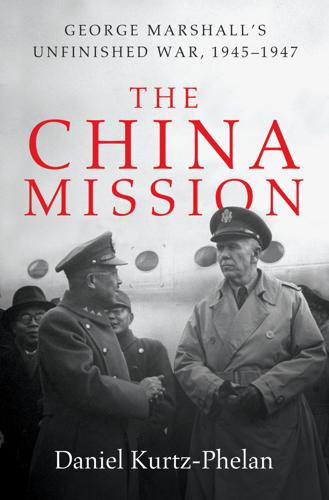
The China Mission: George Marshall's Unfinished War, 1945-1947
by
Daniel Kurtz-Phelan
Published 9 Apr 2018
“Everybody disagrees with the umpire,” he said. “But the game can’t go on without him.” Truce teams were operating in remote, rugged places—Americans said that going from urban to rural China was like going a thousand years back in time—and Marshall could see it was “a rough and thankless business.” Food supplies were uncertain, clean water scarce, illness frequent, support minimal. (Marshall chided Byroade, now head of operations, for not taking good enough care of men in the field.) Communications back to headquarters were fitful at best; even getting messages from Chongqing to Beijing could be a struggle. Each team carried a letter: “From evaluation of reports carefully considered by this Headquarters, it appears that the forces of your command are carrying on offensive action.
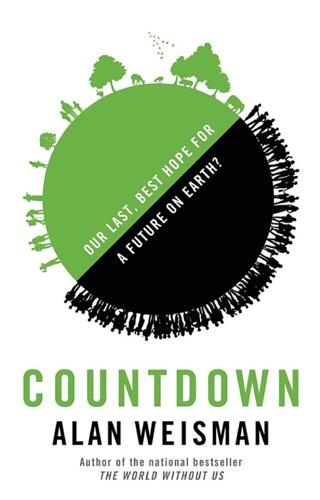
Countdown: Our Last, Best Hope for a Future on Earth?
by
Alan Weisman
Published 23 Sep 2013
Every plan for the future, he says, “is totally anthropocentric: What can we do to make us better? Let us also recognize that by diminishing the planet’s resources, we are threatening our own existence. Because, like all other plant and animal species, we rely on a planet being able to renew clean air, clean water, and fertile soils to keep us alive.” Like other biologists of his generation, he is confounded that his own kind is perpetrating an extinction the likes of which the planet has seen only five times previously over the past 4 billion years—and previously, always due to some monumental upheaval of geology, or a disaster of cosmology when an errant bit of creation collides with our own.
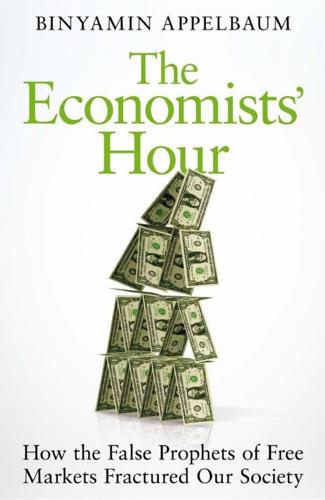
The Economists' Hour: How the False Prophets of Free Markets Fractured Our Society
by
Binyamin Appelbaum
Published 4 Sep 2019
Nordhaus argued masks would protect workers at lower cost, and he urged Schultze to take a “dramatic and confrontational” stand.48 The fight between Bingham and the economists soon spilled into public view, as did a number of related efforts by the economists to delay or weaken proposed regulations. Senator Edmund Muskie, the author of the Clean Air Act, summoned Schultze before a Senate committee and lashed the economist for obstructing the will of Congress. “I take issue with the idea that we have to have lengthy economic analysis before we can have clean air and clean water,” Muskie said. “Our standards of what is healthy are being compromised by economics.” Muskie said Congress already had weighed the merits of the nation’s laws — as he put it, “Charlie Schultze isn’t telling us anything we didn’t know” — and it was undemocratic for economists to substitute their own tallies of costs and benefits.49 In a 1979 speech, Muskie warned that the greatest threat to the environment was not pollution, but “anti-regulators who claim it is too costly and too burdensome to protect people from the hazards of pollution.”50 House Democrats also staged a hearing to air their grievances with cost-benefit analysis, inviting Ralph Nader to provide the entertainment.

Bill Marriott: Success Is Never Final--His Life and the Decisions That Built a Hotel Empire
by
Dale van Atta
Published 14 Aug 2019
On the other hand, my mother was quiet and rarely criticized. She didn’t have to, since I got enough from my dad.”18 Billy unconsciously drank in more lessons of perfectionism as he followed his father on Hot Shoppes inspections. J.W. required that floors be mopped from two buckets—one for clean water and one for dirty. Then he invented a bucket with two compartments. “He insisted that the parking lots be hosed down every night. He fussed about the dust on the venetian blinds. He wanted the hot food so hot it would burn your tongue; the cold food ice cold.” Billy once saw an argument between J.W. and a Hot Shoppes manager about the amount of salt on a hamburger.
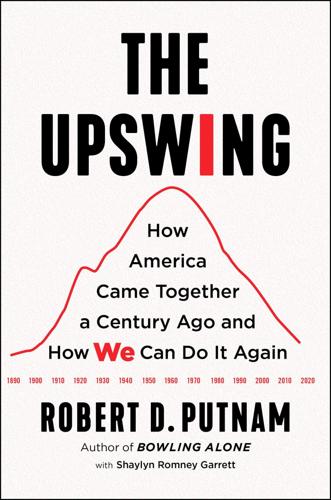
The Upswing: How America Came Together a Century Ago and How We Can Do It Again
by
Robert D. Putnam
Published 12 Oct 2020
FIGURE 2.4: INFANT MORTALITY, 1890–2013 Source: Historical Statistics of the United States, Table Ab 920. This seemingly inexorable improvement in population health actually represents two quite different eras during which different causes of mortality were mastered. The gains in the first half of the twentieth century derived from advances in public health (especially clean water), improved nutrition, and the development of antibiotics.9 Death rates from infectious diseases fell by 90 percent in the first half of the century, accounting for the lion’s share of rising life expectancy. The benefits in this first era were concentrated among children, while very little progress was made against the maladies of older Americans.

The Better Angels of Our Nature: Why Violence Has Declined
by
Steven Pinker
Published 24 Sep 2012
Shortly before he joined the British navy, the poet Rupert Brooke wrote: Now, God be thanked Who has matched us with His hour, And caught our youth, and wakened us from sleeping, With hand made sure, clear eye, and sharpened power, To turn, as swimmers into cleanness leaping. “Of course, the swimmers weren’t leaping into clean water but wading into blood.” So commented the critic Adam Gopnik in a 2004 review of seven new books that were still, almost a century later, trying to figure out exactly how World War I happened.123 The carnage was stupefying—8.5 million deaths in combat, and perhaps 15 million deaths overall, in just four years.124 Romantic militarism by itself cannot explain the orgy of slaughter.
…
Most childhood deaths in the developing world come from four causes: malaria; diarrheal diseases such as cholera and dysentery; respiratory infections such as pneumonia, influenza, and tuberculosis; and measles. Each is preventable or treatable, often remarkably cheaply. Mosquito nets, antimalarial drugs, antibiotics, water purifiers, oral rehydration therapy (a bit of salt and sugar in clean water), vaccinations, and breast-feeding (which reduces diarrheal and respiratory diseases) can save enormous numbers of lives. Over the last three decades, vaccination alone (which in 1974 protected just 5 percent of the world’s children and today protects 75 percent) has saved 20 million lives.76 Ready-to-use therapeutic foods like Plumpy’nut, a peanutbutterish goop in a foil package that children are said to like, can make a big dent in malnutrition and starvation.

Shantaram: A Novel
by
Gregory David Roberts
Published 12 Oct 2004
‘And good to see you, my dear friend,’ Didier replied, smiling despite the distressing heat. ‘But, I must be honest, you look a little worse for wear, as Lettie would say.’ ‘It’s nothing. A misunderstanding, that’s all. Give me a minute to wash up.’ I stripped off my torn, bloody shirt, and poured a third of a bucket of clean water from the clay matka. Standing on the flattened pile of stones beside my hut, I washed my face, arms, and chest. Neighbours passed me as I washed, smiling when they caught my eye. There was an art to washing in that way, with no wasted drop of water and no excess of mess. I’d mastered that art, and it was one of the hundred little ways my life imitated theirs, and folded into the lotus of their loving, hoping struggle with fate.
…
It stood within sight of his restaurant, and with a wide view of the dark sea. I entered to find a single room, which he lit with candles and lamps. The floor was sand. There was a table and two chairs, a bed with a bare rubber mattress, and a metal rack for hanging clothes. A large matka was filled with clean water. He announced, with pride, that the water had been drawn that day from a local well. There was a bottle of coconut feni on the table, with two glasses. Assuring me that the bike and I would be safe there, because it was known by all in the area to be his house, Dashrant handed me the key to the door’s chain and padlock, and told me to stay until I found my girl.
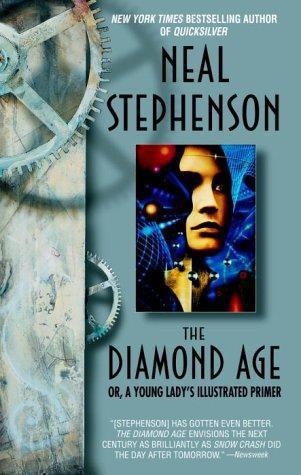
The Diamond Age
by
Neal Stephenson
Published 2 May 2000
Tourists, aerobicizing pensioners, and ranks of uniformed schoolchildren marched through it year in and year out, peering through walls of glass (actually solid diamond, which was cheaper) at various phases of the molecular disassembly line that was Source Victoria. Dirty air and dirty water came in and pooled in tanks. Next to each tank was another tank containing slightly cleaner air or cleaner water. Repeat several dozen times. The tanks at the end were filled with perfectly clean nitrogen gas and perfectly clean water. The line of tanks was referred to as a cascade, a rather abstract bit of engineer's whimsy lost on the tourists who did not see anything snapshot-worthy there. All the action took place in the walls separating the tanks, which were not really walls but nearly infinite grids of submicroscopic wheels, ever-rotating and many-spoked.
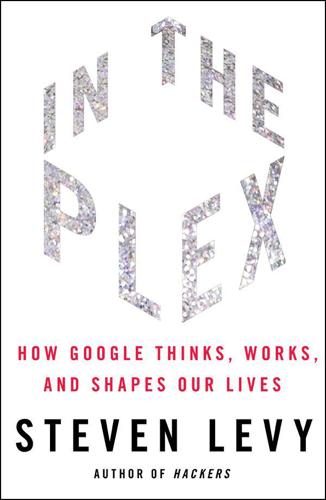
In the Plex: How Google Thinks, Works, and Shapes Our Lives
by
Steven Levy
Published 12 Apr 2011
The average summer temperature in Brussels is around 70 degrees, but during the occasional scorcher, Google would shift the information load to other data centers. “Most data centers run chillers a lot, but we use free cooling, for the most part,” says Eric Teetzel, who works on Google infrastructure. The Belgium center was the first where Google didn’t need access to relatively clean water; it had discovered ways to use more readily available tainted water. In Belgium the water is drawn from a polluted canal. “We literally build treatment plants and run the water through our evaporative cooling towers,” says Teetzel. “That’s the beauty of energy efficiency—it will save you money.”

Pathfinder
by
Orson Scott Card
Published 22 Nov 2010
“So we call your active expendable ‘Ram.’” “And this wallfold?” asked Umbo. “And your name?” “Vadesh,” said the expendable. “This is Vadeshfold, and I am called Vadesh.” “Did you notice that he actually answered somebody who wasn’t me?” said Rigg. “That’s progress.” “Is there fresh water around here?” asked Loaf. “Drinkable water? Clean water? Safe water? In quantities we can use to refill our water bags—do I need to be more specific?” “I’ll lead you to water,” said Vadesh. “But I can’t make you drink.” Rigg looked at the others, puzzled, then turned back to Vadesh. “Why would you say that? Why would you need to make us drink?” “It’s an old saying,” said Vadesh.

Sweden
by
Becky Ohlsen
Published 19 Jun 2009
Tiveden Wild hills, forests and lakes, plus extensive boulder fields, beaches and excellent viewpoints. Minor roads and trails pass through it; access from Rd 49. Return to beginning of chapter ENVIRONMENTAL ISSUES Ecological consciousness among Swedes is high, and reflected in concern for native animals, clean water and renewable resources. Sweden has a good record when it comes to environmental policies. Industrial and agricultural waste is highly regulated, sewage disposal advanced, greenhouse gas emissions low, and recycling extremely popular. The North and, particularly, the Baltic Seas are suffering severe pollution, eutrophication and vast algae blooms, caused partly by nitrogen run-off from Swedish farms.

Extreme Money: Masters of the Universe and the Cult of Risk
by
Satyajit Das
Published 14 Oct 2011
My Indian heritage has gotten me an invitation to the Indian Bankers’ Association party themed “India Shining,” a shameless sales pitch for investment in India. A minister extols the virtues of India, citing statistics on growth, resource availability, and opportunities. There is no mention of the fact that the vast majority of the Indian population has no access to sanitation, clean water, education, or healthcare. There is no mention of the aging colonial era infrastructure where inadequate electricity supply results in daily load shedding or brownouts interrupting power supplies for several hours most days. An American banker finds India fascinating and full of opportunity. “A billion people, a billion consumers, wow!”

How to Hide an Empire: A History of the Greater United States
by
Daniel Immerwahr
Published 19 Feb 2019
Because the federal government funds those programs less generously in Puerto Rico than on the mainland, the commonwealth found itself accruing unsustainable debt to pay its bills. The hurricane turned crisis into catastrophe. Puerto Ricans were knocked back a century as they made do without phones or electricity. Doctors were forced to perform surgeries by flashlight, city dwellers to search desperately for clean water. Hurricane Maria struck at nearly the same time as two other storms hit the mainland, Hurricane Harvey in Texas and Hurricane Irma (which also struck the U.S. Virgin Islands) in Florida. The difference in response was palpable. Though Puerto Ricans were far more likely to die from storm damage, they saw fewer federal personnel, markedly less media coverage, and only a fraction of the charitable giving.

Atomic Accidents: A History of Nuclear Meltdowns and Disasters: From the Ozark Mountains to Fukushima
by
James Mahaffey
Published 15 Feb 2015
The critical time is that first hour, when the energy rate from the decaying fission products, freshly made in a core that was running at nearly full power, is falling rapidly from The fuel, the controls, and the oxidized zirconium structural elements247 megawatts down to 57 megawatts. If you can just keep water covering the fuel for that first hour, then everything else will work out fine. It does not have to be cool water or clean water, and it does not have to cover anything but the naked fuel pins, but if any fuel is left without water to conduct the heat away, it is going to start glowing cherry-red and melt down the supporting structures. It happens with merciless dispatch. With its gas-tight metal covering melted away, the uranium oxide and any soluble fission products embedded in it are free to dissolve in whatever water or steam is left in the reactor vessel, and this becomes a perfect vehicle for the highly radioactive, newly created elements to escape the normal confines of the tightly sealed PWR primary cooling system.

1491
by
Charles C. Mann
Published 8 Aug 2005
But their finest accomplishment may have been the creation of a remarkable intellectual tradition, one that like the Greeks began with the questions of lyric poets and then went on to distinct schools of inquiry associated with elite academies. Mexica histories begin by relating their migration to the Basin of Mexico. Fringed by mountains, the basin was about a hundred miles long from north to south and perhaps half that size from east to west. At its center was Lake Texcoco, a fifty-mile-long volcanic lake with exceptionally clear, clean water. Around the time of Christ, a small village on its northeast periphery named Teotihuacan emerged as a military power. During the next four centuries its realm steadily expanded until it ruled directly over much of central Mexico and indirectly, through puppet governments, as far south as Guatemala.
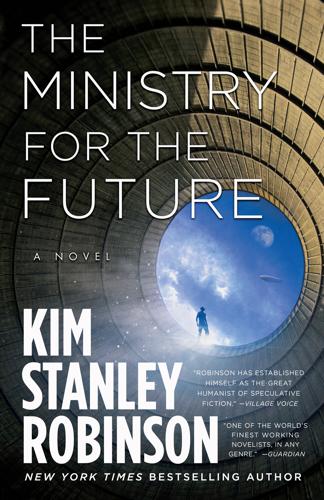
The Ministry for the Future: A Novel
by
Kim Stanley Robinson
Published 5 Oct 2020
They spoke enthusiastically of carbon-negative agriculture, clean energy, fleets of sailing ships, fleets of airships, carbon-based materials created from CO2 sucked out of the air and replacing concrete; thus direct air capture of CO2, a necessary component of the drawdown effort, would provide most construction materials going forward. Cheap clean desalination, clean water, 3-D printed houses, 3-D printed toilets and sewage, universal education, vastly expanded medical schools and medical facilities. Landscape restoration, habitat corridors, ag/habitat combinations— “Okay!” Mary said, chopping short their flood of suggestions. She could see that the people in these divisions were feeling a little neglected.

Power and Progress: Our Thousand-Year Struggle Over Technology and Prosperity
by
Daron Acemoglu
and
Simon Johnson
Published 15 May 2023
However, at key moments in the 1870s and again in Bengal in the 1940s, under Winston Churchill’s wartime administration, the British authorities declined to do so, and millions of Indians died. Plenty of excuses were, and still are, given, but the fact remains that the British never invested enough in irrigation, inland waterways, and clean water, and they never focused the power of railways on feeding people at times when they had no other sources of food or could not afford what was provided by the market. The British attitude was well summarized by Churchill’s response in 1929, when he was asked to meet leaders from India’s independence movement to become better informed about changes in the country: “I am quite satisfied with my views of India.
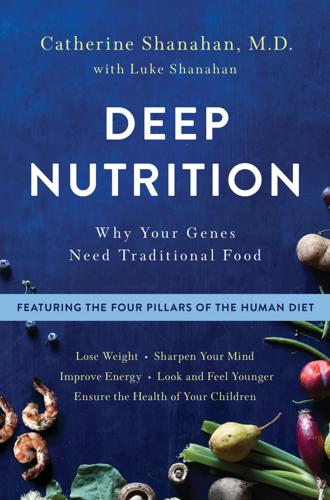
Deep Nutrition: Why Your Genes Need Traditional Food
by
Catherine Shanahan M. D.
Published 2 Jan 2017
Applying creams with beneficial bacteria has the same benefits to your skin that eating probiotic-rich foods like yogurt has to your intestinal tract: healthy numbers of beneficial critters outnumber any potentially invasive bacteria. This would have helped people in the past—who generally had little or no clean water to wash with—from getting infected after cutting their skin.597 Next time you’re having lunch with one of your friends and she’s pouring on the low-fat dressing, ask her if she’d use the same ingredients to condition her hair or moisturize her skin. Probably not. Quality beauty products are made with natural saturated fats.

Sweden Travel Guide
by
Lonely Planet
It usually rains in winter in the far south (Skåne). Norway’s mountain ranges act as a rain break, so yearly rainfall is moderate. Swedish summers are generally sunny, with only occasional rainfall, but August can be wet. Environmental Issues Ecological consciousness in Sweden is very high and reflected in concern for native animals, clean water and renewable resources. Swedes are fervent believers in recycling household waste. Most plastic bottles and cans can be recycled – supermarket disposal machines give 0.50kr to 2kr per item. Two organisations that set standards for labelling products as ecologically sound are the food-focused KRAV (www.krav.se), a member of the International Federation of Organic Agriculture Movements, and Swan (www.svanen.se), which has a wider scope and certifies entire hotels and hostels.

Empire of AI: Dreams and Nightmares in Sam Altman's OpenAI
by
Karen Hao
Published 19 May 2025
There is a different way forward. Artificial intelligence doesn’t have to be what it is today. We don’t need to accept the logic of unprecedented scale and consumption to achieve advancement and progress. So much of what our society actually needs—better health care and education, clean air and clean water, a faster transition away from fossil fuels—can be assisted and advanced with, and sometimes even necessitates, significantly smaller AI models and a diversity of other approaches. AI alone won’t be enough, either: We’ll also need more social cohesion and global cooperation, some of the very things being challenged by the existing vision of AI development.

Europe by Eurail 2023
by
Laverne Ferguson-Kosinski
and
C. Darren Price
Published 8 Jan 2023
In September, for example, the seawater is still warm enough for swimming. If you do not want to swim, you can lie on the beach, take a walk in the surrounding area, go for a bicycle tour, hire a horse, or just relax. Hanko in autumn is an unusually peaceful place. No matter when you go there, you will find clean water, lots of fresh air, and lots of things to do. The peninsula where Hanko lies, known long ago among seafarers, was used for centuries as a harbor where sailing vessels could seek refuge from storms or winter ice packs. With time on their hands, many navigators, merchants, and soldiers kept themselves busy by carving their names or family coats of arms in the rocks along the shoreline of the harbor.

Central America
by
Carolyn McCarthy
,
Greg Benchwick
,
Joshua Samuel Brown
,
Alex Egerton
,
Matthew Firestone
,
Kevin Raub
,
Tom Spurling
and
Lucas Vidgen
Published 2 Jan 2001
For campesinos (farmers), life is hard. A subsistence farmer in the interior might earn as little as US$8 per day, far below the national average of US$5510 per capita. In the Emberá villages of the Darién, traditional life continues as it has for hundreds of years. The majority of these people lack clean water and basic sanitation. The middle and upper class largely reside in and around Panama City with a level of comfort similar to their counterparts in Europe and the USA. They live in large homes or apartments, have a maid, a car or two, and for the lucky few a second home on the beach or in the mountains.
…
Fly into Corazón de Jesus. Yandup Lodge ( 261-7229; www.yandupisland.com; cabins per person incl 3 meals & tour US$125) Just five minutes by boat from Playón Chico, tiny islet Yandup is run by an attentive Spaniard-Kuna family. The octagonal thatched-roof cabins have private bathrooms, solar-generated light and clean water. Guests can request vegetarian meals and get tailored excursions, which include cultural visits as well as the usual snorkeling and hiking. The island’s grassy grounds and powder-fine beach might be reason enough to just stay put. SHOPPING Molas are the most famous of Panamanian traditional handicrafts.

The mote in God's eye
by
Larry Niven; Jerry Pournelle
Published 30 Jan 2011
He does the same things over and over, and they always bring disaster, and he never learns." There were small sounds of whispering in MacArthur's wardroom. Renner's image said, "For instance?" Renner's Motie's image paused to think. It said, "When a city has grown so overlarge and crowded that it is in immediate danger of collapse . . . when food and clean water flow into the city at a rate just sufficient to feed every mouth, and every hand must work constantly to keep it that way . . . when all transportation is involved in moving vital supplies, and none is left over to move people out of the city should the need arise . . . then it is that Crazy Eddie leads the movers of garbage out on strike for better working conditions."

Unreal Estate: Money, Ambition, and the Lust for Land in Los Angeles
by
Michael Gross
Published 1 Nov 2011
A group of movie stars, including Fairbanks and Pickford, Tom Mix, Rudolph Valentino, Harold Lloyd (who’d just bought a house on ten acres in Benedict Canyon for his mother), and Will Rogers (who’d recently installed a polo field behind his mansion near the hotel), joined the anti-annexationists, worried a change would threaten both the city’s low taxes and their special status as big fish in a small pond. Signs were posted all over town by the pro-annexationists, led by Rodeo’s latest broker, Frank Meline, a department store window dresser who’d reinvented himself as a luxury realtor, warning that when clean water supplies ran low, the city would be left with nothing but sulfurous water with “laxative qualities.” After Charles Canfield’s death, Burton Green had become the largest shareholder in Rodeo, and he took the lead in fighting for annexation. Stanley Anderson was against it and sought the support of Canfield’s son-in-law Silsby Spalding, who’d served as a city trustee since 1919, and then quit his job as a stockbroker to become its second president and then its first mayor.
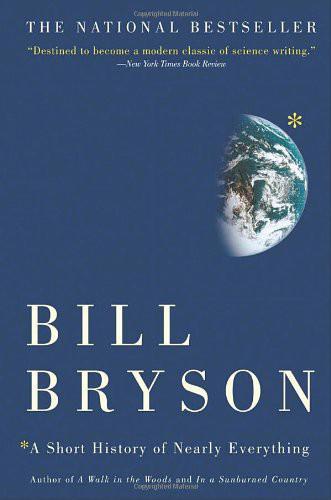
A Short History of Nearly Everything
by
Bill Bryson
Published 5 May 2003
For the longest time, no one could figure out what could be responsible for this. Alvin's discovery of the deep-sea vents provided the answer. Geophysicists realized that the vents were acting much like the filters in a fish tank. As water is taken down into the crust, salts are stripped from it, and eventually clean water is blown out again through the chimney stacks. The process is not swift—it can take up to ten million years to clean an ocean—but it is marvelously efficient as long as you are not in a hurry. Perhaps nothing speaks more clearly of our psychological remoteness from the ocean depths than that the main expressed goal for oceanographers during International Geophysical Year of 1957–58 was to study “the use of ocean depths for the dumping of radioactive wastes.”
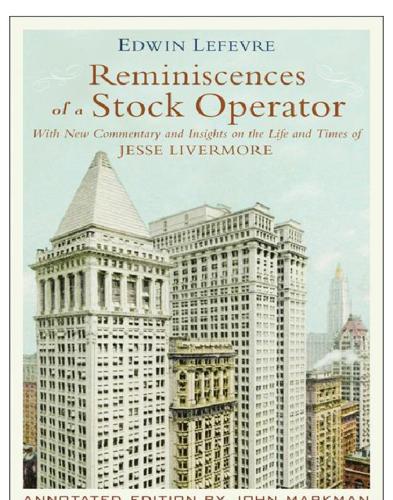
Reminiscences of a Stock Operator
by
Edwin Lefèvre
and
William J. O'Neil
Published 14 May 1923
Baruch’s medical practice was slow to grow in war-ravaged Camden, but the family was still among the most prosperous in town. The area was too backwoods for his wife, though, so after the dueling death of a close friend, the family moved to the lightly populated Upper East Side of New York in 1880. Dr. Baruch soon developed a successful new medical practice from scratch and became a leading advocate for clean water. 4 By the late 1890s, the family was successful enough to afford servants, although they were not considered truly rich. 5 At left, Bernard Baruch in 1919. Above, seated at far right during the Versailles Peace Conference, he served as an advisor to President Wilson. To his left are Louis Loucheur, Winston Churchill and David Lloyd George.
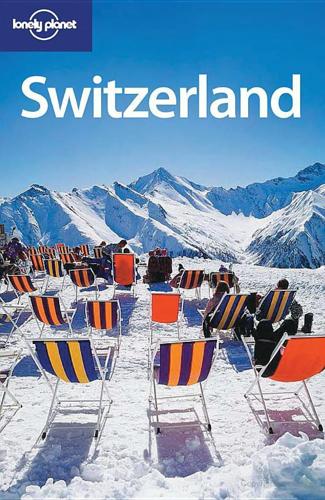
Switzerland
by
Damien Simonis
,
Sarah Johnstone
and
Nicola Williams
Published 31 May 2006
Dehydration is the main danger with any diarrhoea, particularly in children or the elderly as dehydration can occur quite quickly. Under all circumstances fluid replacement (at least equal to the volume being lost) is the most important thing to remember. Weak black tea with a little sugar, soda water, or soft drinks allowed to go flat and diluted 50% with clean water, are all good. Stick to a bland diet as you recover. Swiss restaurants generally have very high standards of hygiene, and food poisoning is rare – although, naturally, always possible. Some of the country’s dairy products have very high levels of fat, however. ENVIRONMENTAL HAZARDS Altitude Sickness This disorder can occur above 3000m, but very few treks or ski runs in the Austrian, French, Italian or Swiss Alps reach heights of 3000m or more – Mont Blanc is one exception – so altitude sickness is unlikely.

Bali & Lombok Travel Guide
by
Lonely Planet
Tinea versicolor is also common – this fungus causes small, light-coloured patches, most commonly on the back, chest and shoulders. Consult a doctor. Cuts and scratches These can easily get infected in tropical climates so take meticulous care of any cuts and scratches. Immediately wash all wounds in clean water and apply antiseptic. If you develop signs of infection see a doctor. Divers and surfers should be careful with coral cuts because they become easily infected. Sunburn Even on a cloudy day sunburn can occur rapidly, especially near the equator. Don't end up like the dopey tourists you see roasted pink on Kuta Beach.

Nepal Travel Guide
by
Lonely Planet
However, diarrhoea is usually self-limiting and most people recover within a few days. Dehydration is the main danger with diarrhoea, particularly in children, pregnant women or the elderly. Soda water, weak black tea with a little sugar, or soft drinks allowed to go flat and half-diluted with clean water will help you replace lost liquids. In severe cases, take oral rehydration salts made up with boiled or purified water. In an emergency you can make up a solution of six teaspoons of sugar and half a teaspoon of salt to a litre of boiled or bottled water. Stick to a bland diet as you recover. Loperamide (Imodium) or diphenoxylate (Lomotil) can be used to bring temporary relief from the symptoms, but they do not cure the problem.

The Code: Silicon Valley and the Remaking of America
by
Margaret O'Mara
Published 8 Jul 2019
Now it was 1969, and new start-ups were growing all over the Santa Clara Valley, helped along by new venture capital funds and specialist law firms and marketing operations, many of them started by young guys like him. With his charm and connections, Zschau knew he could start something up. But what was the something? He’d mull the possibilities during his morning shower. Finally, he found it. The raft of new environmental measures just signed into law by Richard Nixon—the Clean Water Act, Clean Air Act, the creation of the EPA—created a big demand for pollution-measuring instruments. And now there were these minicomputers, selling by the thousands. Why not build a computer system that used a mini to automate and analyze all this environmental data? It turned out to be not just a million-dollar idea, but ultimately a $100 million one—a company called System Industries that started off measuring water quality and the composition of moon rocks and then graduated to providing data storage.

Four Battlegrounds
by
Paul Scharre
Published 18 Jan 2023
Social media manipulation in the United States is widespread, with Bradshaw and Howard concluding, “the adoption of techniques to influence political opinion online seems to have become general electoral and political practice.” U.S. government agencies, from the DoD to the EPA, have been accused of manipulative practices on social media to promote messages, ranging from countering ISIS propaganda to promoting clean water regulations. Members of both political parties, Democratic and Republican, have employed astroturfing, a manipulative social media practice intended to create the illusion of grassroots support. Bots can be used to create the illusion of public support for ideas by amassing fake followers or artificially inflating content.
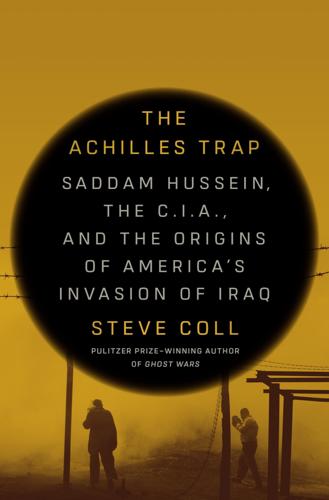
The Achilles Trap: Saddam Hussein, the C.I.A., and the Origins of America's Invasion of Iraq
by
Steve Coll
Published 27 Feb 2024
The destruction of Iraq’s electric power systems degraded the country’s water purification plants, contributing to the revival of previously vanquished diseases. Iraq had no recorded cholera cases in 1989, but by 1994, it had 1,344 cases per one hundred thousand people. The prevalence of typhoid grew by more than tenfold. As Oil-for-Food started, Kofi Annan reported that nearly a third of children under five suffered from malnutrition and that clean water and medical supplies were “grossly inadequate.”[14] In a post-1997 study too sensitive for public release, the Baath Party documented its own examination of the country’s economic collapse. Per capita Iraqi incomes had fallen from about $4,200 dollars in 1979 to just $485 in 1993, it reported.

Frommer's New Mexico
by
Lesley S. King
Published 2 Jan 1999
New Mexico has also become conscious of its CO2 footprint in relation to food. More and more residents and restaurants now buy produce from local farmers, rather than large suppliers who ship long distances. Such practices support small, often organic, agriculture, which helps protect the region’s clean water from pesticides and rural land from development. Yet, there is still massive waste of water and other resources here. Golf courses, including those on Native American–owned lands, have become more and more common, with only a few that are desert oriented. Public transportation is relatively scarce, though the recent introduction of the New Mexico Rail Runner Express train has helped reduce some of the automobile travel between Albuquerque and Santa Fe and outlying communities.

Frommer's Los Angeles 2010
by
Matthew Richard Poole
Published 28 Sep 2009
If you’re just visiting for the day, Michelle offers her own pampering facility for you to visit. Prices range from $85 to $135. 11 S A N TA C ATA L I N A I S L A N D Snorkeling, scuba diving, and sea kayaking ar e among the main r easons mainlanders head to Catalina. Catalina I sland’s naturally clean water and giant kelp for ests teeming with marine life hav e made it a r enowned diving destination that attracts exper ts and beginning divers alike. Casino Point Marine Park, Southern California’s first city-designated underwater park, was established in 1965 and is located behind the Casino . Due to its conv enient location, it can get outrageously cr owded in the summer (just like everything else at that time of y ear).

The Dreaming Void
by
Peter F. Hamilton
Published 1 Jan 2007
It was centered on one of Kajaani’s old parks. Under the protective auspice of the force field, the ground had been decontaminated and replanted. Grass grew once again, as did a short avenue of trees. Clusters of airborne polyphoto spheres shone an imitation sunlight onto the lush greenery; irrigation pipes provided clean water; there were even native birds and insects humming about, oblivious to the dark sky with its subzero winds outside. They landed on a small patch of concrete on the edge of the park that held just one other starship, a thirty-year-old commercial combi-freighter with a continuous wormhole drive that could carry a mix of cargo and passengers.
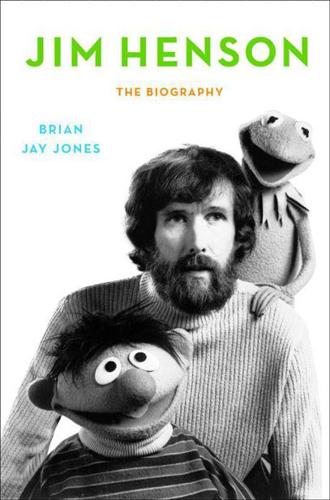
Jim Henson: The Biography
by
Brian Jay Jones
Published 23 Sep 2013
“At some point in my life,” said Jim, “I decided, rightly or wrongly, that there are many situations in this life that I can’t do much about: acts of terrorism, feelings of nationalistic prejudice, cold war, etc. So what I should do is concentrate on the situations my energy can affect.” In 1983, then, he had agreed to produce several public service announcements for the National Wildlife Federation, filming Kermit and Fozzie in Central Park talking about clean water as they fished junk out of a pond, and in March 1984, Kermit delivered the keynote address at the National Wildlife Federation’s annual meeting. Several years later, Jim would get similarly involved with the more politically inclined Better World Society, an organization founded by media giant Ted Turner to educate the media on global and social issues.
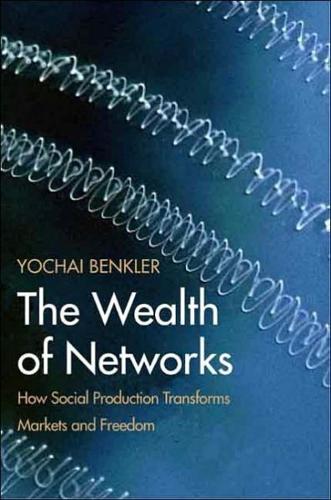
The Wealth of Networks: How Social Production Transforms Markets and Freedom
by
Yochai Benkler
Published 14 May 2006
Part Two: The Political Economy of Property and Commons 537 Chapter 9 Justice and Development Liberal Theories of Justice and the Networked Information Economy Commons-Based Strategies for Human Welfare and Development Information-Embedded Goods and Tools, Information, and Knowledge Industrial Organization of Hdi-Related Information Industries Toward Adopting Commons-Based Strategies for Development Software Scientific Publication Commons-Based Research for Food and Medicines Food Security: Commons-Based Agricultural Innovation Access to Medicines: Commons-Based Strategies for Biomedical Research Commons-Based Strategies for Development: Conclusion 538 How will the emergence of a substantial sector of nonmarket, commons-based production in the information economy affect questions of distribution and human well-being? The pessimistic answer is, very little. Hunger, disease, and deeply rooted racial, ethnic, or class stratification will not be solved by a more decentralized, nonproprietary information production system. Without clean water, basic literacy, moderately well-functioning governments, and universal practical adoption of the commitment to treat all human beings as fundamentally deserving of equal regard, the fancy Internet-based society will have little effect on the billions living in poverty or deprivation, either in the rich world, or, more urgently and deeply, in poor and middle-income economies.

Britain at Bay: The Epic Story of the Second World War: 1938-1941
by
Alan Allport
Published 2 Sep 2020
Individual cases of blight and poverty, compiled by the city’s famous social statistician Seebohm Rown-tree, told the story. One family of eight, he recorded, was packed into two bedrooms, their ‘extremely dark and unhealthy’ kitchen equipped only with a defective oven. Another family of nine was in a sink-less house with no clean water supply, their five girls, aged seven to sixteen, sleeping in the same room as the parents. Another family of five was living in a Corporation house so persistently damp that every resident was suffering from chronic respiratory illness. A seventy-two-year-old widow was living alone, sleeping on a sofa in a one-room hovel, with just 3s. 3d. a week to spare for food.

The Eternal City: A History of Rome
by
Ferdinand Addis
Published 6 Nov 2018
The earliest Romans trod carefully by the springs of the seven hills, wary of the nymphs who haunted the fern-draped pools and wooded streams. But the city grew fast. The swamp under the Capitol was drained, then paved to become the Forum. The streams were culverted and buried beneath paving stones; the springs were buried under the foundations of grand houses and apartment blocks. Clean water became scarce. So, in 312 BC, the censor Appius Claudius Caecus – Claudius the Blind – initiated the construction of Rome’s first aqueduct, a 16-kilometre channel that brought a flow of cool clear water from the Alban hills, down its carefully calibrated gradient to a giant storage tank near the Forum Boarium.

Homeland: The War on Terror in American Life
by
Richard Beck
Published 2 Sep 2024
The dead include 250 health workers, more than 60 journalists and media workers, and at least 6,600 children.[17] With much of Gaza reduced to rubble, rescuers relying on little more than their bare hands to dig in search of casualties, and Israel making no genuine effort to avoid killing civilians, the real death toll is undoubtedly higher. Those who survive (for now) face a lack of clean water, insufficient food, a health-care system that has been largely destroyed, and no way out of the war zone. Though the stated goal of Israel’s war is to destroy Hamas and oversee the installation of a new political authority in Gaza, Israel’s leaders are well aware that eliminating Hamas through military force is an impossibility.

Wired for War: The Robotics Revolution and Conflict in the 21st Century
by
P. W. Singer
Published 1 Jan 2010
One hundred twenty-seven million Americans are “obese,” the polite way of saying “so fat as to be dangerous to themselves,” while half a billion people in the developing world are “chronically malnourished,” the nice way of saying “starving.” Nineteen billion dollars a year is spent in the United States for tap water that has been repackaged as “bottled water,” while more than 1.3 billion people in the developing world lack access to clean water. We may be living through Charles Dickens’s proverbial “best of times,” but most of the world is still suffering as if it were “the worst of times.” This disparity points to a series of changes that are crucial to understanding poverty’s link to technology and war in the twenty-first century. As Dickens’s A Tale of Two Cities told, poverty and social inequality have always driven rage and rebellion.

Political Order and Political Decay: From the Industrial Revolution to the Globalization of Democracy
by
Francis Fukuyama
Published 29 Sep 2014
The system is rife with corruption and patronage; 34 percent of the winners of India’s 2014 elections have criminal indictments pending against them, including serious charges like murder, kidnapping, and sexual assault. A rule of law exists, but it is so slow and ineffective that many plaintiffs die before their cases come to trial. Compared to China, the country has been completely hamstrung in its ability to provide modern infrastructure or services like clean water, electricity, or basic education to its population. It was for this reason that Narendra Modi, a Hindu nationalist with a troubled past, was elected prime minister in 2014 by an impressive majority in the hope that he will somehow be able to cut through all the blather of routine Indian politics and actually get something done.

The Evolutionary Void
by
Peter F. Hamilton
Published 18 Aug 2010
That first night they made camp on the edge of a small forest of tall trees with broad weeping branches. The Delivery Man took a hand-size cylindrical condenser unit from his belt, which whirred quietly as it propelled air along its short length. Its water sac slowly expanded out from one end like a sallow tumor as it extracted moisture from the air. When it was full, he pumped the clean water into flat packets of food concentrate. It didn’t taste too bad, though he would have preferred something hot. Tyzak just gulped down a couple more potfuls of the cold gloop he’d carried in a backpack. As the dark fell, night animals began their calls. The Delivery Man expanded his tent up and out from a square of plastic.

The Taste of War: World War Two and the Battle for Food
by
Lizzie Collingham
Published 1 Jan 2011
In Britain nutritionists had a different agenda. Professor Edward Mellanby, one of the scientists who had discovered vitamins, argued that if the government were to ensure that every citizen had access to nutritious food this would have an impact on public health as revolutionary as the nineteenth-century introduction of clean water and a functioning sewage system.2 But the British government was reluctant to take on such an expensive commitment and it was not until the war that, by introducing rationing, the government was forced to take responsibility for the food its citizens ate. All combatant nations introduced rationing during the war.

The Transhumanist Reader
by
Max More
and
Natasha Vita-More
Published 4 Mar 2013
Social and political factors play a larger role. Mortality rates vary shockingly between nations and even states or regions within nations. If we mean to ensure the best feasible health for everyone, we need to start with the basics. Enough food and supplements for mothers and infants. Sufficient for the rest of the community as well. Clean water and air. Modern sanitation. Immunization programs. Decent medical and dental care. The most frightening apartheid one could imagine is a future world in which extended life is allowed only to a few – the very wealthy, the political elite and their chosen followers, Mafia, military, scientists, sports heroes, movie stars.

Israel & the Palestinian Territories Travel Guide
by
Lonely Planet
HaDekel (Palm) BeachBEACH ( MAP GOOGLE MAP ) Just south of town, HaDekel is less crowded than North Beach but is wedged between the ugly port and naval base. It's a popular snorkelling spot. Village BeachBEACH ( MAP GOOGLE MAP ) Just north of Coral Beach, this stretch of sand has free umbrellas, clean water for snorkelling and a bar hosting loud parties during summer. 2Activities Eilat offers activity options for every age and level of expertise. Water Sports The Red Sea offers some great diving opportunities and Eilat has no shortage of dive clubs. However, due to the sheer volume of divers, the reef has seen some inevitable damage over the years.
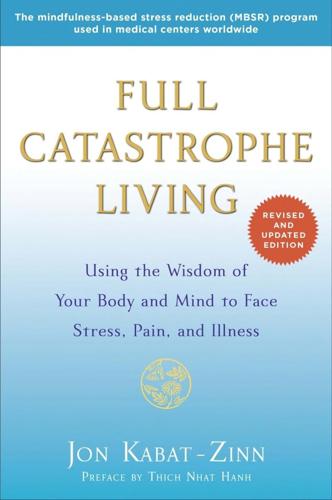
Full Catastrophe Living (Revised Edition): Using the Wisdom of Your Body and Mind to Face Stress, Pain, and Illness
by
Jon Kabat-Zinn
Published 23 Sep 2013
But they might become addicted to it pretty quickly, both to the miraculous convenience of food acquisition in modern life (what we call shopping) and to the marvels of unimaginably seductive high-calorie and high-fat foods. There is no question that, as a population, we are probably healthier than ever before. While many people would ascribe much of this to our diets, it turns out that this may be only partially true. Clean water and sanitation played an enormous role in lowering mortality and extending our longevity. And we may be at a critical inflection point in the health of our society. There is mounting and very convincing evidence that health in America and in many other first-world countries that are unfortunately following our lead is now being impaired by diseases associated with an overconsumption of food in general and of certain foods in particular, diseases occasioned by our affluence and abundance.

Lonely Planet Poland
by
Lonely Planet
Łeba POP 3700 Summer in Łeba (weh-bah) brings Polish and German holidaymakers by the busload, who create a relaxed, good-humoured buzz as they stroll the streets, eat out and enjoy the amusements that spring up to keep them diverted. Outside high season, this small fishing port slams the shutters and hunkers down to survive another long Baltic winter. Most come here for the generous expanse of wide sandy beach and clean water for swimming. The town is also within day-trip distance from Gdańsk, while the attractive Słowiński National Park is within walking distance. 4Sleeping & Eating Camping Nr 41 AmbréCAMPGROUND€ (%59 866 2472; www.ambre.leba.info; ul Nadmorska 9a; per adult/tent 17/14zł, bungalows 280-560zł; W) This camping ground has a handy range of rooms, a restaurant and delicatessen, and neat, cared-for grounds and facilities.
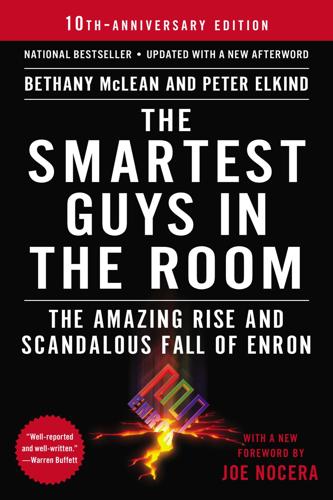
The Smartest Guys in the Room
by
Bethany McLean
Published 25 Nov 2013
These trips entered Enron lore, serving as symbols of the company’s macho, risk-taking culture. For those at the top of Enron, excess was a part of daily life. Enron had a fleet of corporate jets, limousines on constant call, and even its own concierge, who would pick up busy employees’ dry cleaning, water houseplants, and shop for anniversary presents. At bonus time, there was a rush on Houston’s luxury car dealerships; flashy wheels (Porsches were a particular favorite) were de rigueur for top earners. Many built new homes and bought vacation properties or ranches. After living modestly for several years following his divorce, Skilling began construction on an 8,000-square-foot Mediterranean villa in River Oaks, full of modernist touches and with black-and-white decor.
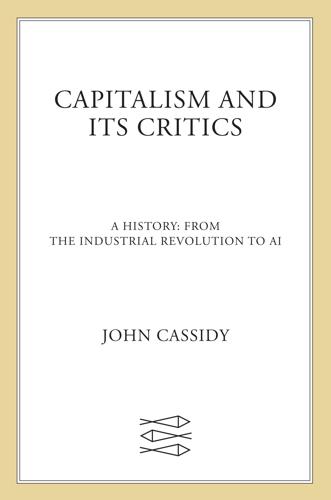
Capitalism and Its Critics: A History: From the Industrial Revolution to AI
by
John Cassidy
Published 12 May 2025
“It does not seem to occur to them that if you have a conceptual problem about the activity of half the human species, you then have a conceptual problem about the whole.”46 Waring coupled her criticisms of GDP figures, and governments that compiled them, for ignoring domestic labor with a call for the statisticians to also recognize the enormous flows of value created by natural resources, such as fresh air, clean water, and sites of natural beauty. Like the economic benefits of housework, these flows had remained hidden for far too long, she argued. In her final chapter, she called for a global campaign of consciousness raising around these issues, and she commended the activism of Dalla Costa and Wages for Housework for having “helped to have feminist issues understood by 12 million Italian housewives—which is no mean feat.”47 Replicating this success on a global scale represented a mighty challenge, she conceded.

Lonely Planet Mexico
by
John Noble
,
Kate Armstrong
,
Greg Benchwick
,
Nate Cavalieri
,
Gregor Clark
,
John Hecht
,
Beth Kohn
,
Emily Matchar
,
Freda Moon
and
Ellee Thalheimer
Published 2 Jan 1992
There are also plenty of taxis, and a taxi stand opposite the cathedral. Return to beginning of chapter AROUND TEPIC Laguna Santa María del Oro Surrounded by steep, forested mountains, idyllic Laguna Santa María del Oro (elevation 730m) fills a volcanic crater 2km around and is thought to be over 100m deep. The clear, clean water takes on colors ranging from turquoise to slate. It’s a pleasure to walk around the lake and in the surrounding mountains, spotting numerous birds (some 250 species) and butterflies along the way. You can also climb to an abandoned gold mine, cycle, swim, row on the lake, kayak or fish for black bass and perch.
…
Other destinations include Paraíso (M$10, 20 minutes, 25 daily) and Frontera (M$76, 2½ hours, three daily). Paraíso & Around 933 / pop (Paraíso) 25,000 About 20km north of Comalcalco, Paraíso is prospering due to the Pemex oil installations on the nearby coast at Dos Bocas, and is something of a recreation center for western Tabasco. Wide, sandy beaches front the warm, clean waters of the Gulf of Mexico north of town. Playa Varadero (7.5km from town), Playa El Paraíso (9km) and Balneario Palmar (10.5km) all have simple beach restaurants, but only El Paraíso normally has midweek service. At Puerto Ceiba, 6km northeast of Paraíso, the Parador Turístico Puerto Ceiba ( 333-22-57; 5 de Febrero s/n; mains M$70-85; 7am-7pm or later) is an enjoyable waterfront restaurant where you can take 1¼-hour boat rides (up to 10 people M$400; 7am-7pm) along the palm-lined Río Seco and into Laguna Mecoacán, with its mangroves and birdlife.

Italy
by
Damien Simonis
Published 31 Jul 2010
But they were an ingenious lot who came up with some practical ideas that can only, however grudgingly, have impressed the folk they went about conquering. The Romans gave us the loo. Rome’s Cloaca Maxima, or Big Sewer, was created in the 8th century BC and is still in use! Romans came up with flushing latrines and regular clean water supply via aqueducts. The Turks can’t really claim a patent on Turkish baths, since the idea of steam rooms and hot tubs is Roman. Indeed, the Romans created public and private bath complexes throughout the Empire. Fourth-century-AD Rome had 11 public baths, some 900 private ones and more than 1000 public fountains.
…
Riviera Fiorita (www.turismovenezia.it) Party like it’s 1527 with baroque costume parties at the Villa Pisani and Villa Widmann, historically correct country fairs, even gelati in baroque-era flavours; held second weekend in September. Venice Marathon (www.venicemarathon.it) Run like Casanova caught in the act from Villa Pisani along the Brenta to Venice, with the final legs crossing pontoon bridges. Usually held in October, with proceeds funding clean-water projects in Africa. Eating Across the road from La Malcontenta is Ristorante da Bepi el Ciosato ( 041 69 89 97; www.hotelgallimberti.it; Via Malcanton 33, Malcontenta; meals €26; lunch & dinner), a country bistro that serves very urbane fish baked into pasticcio di pesce (fish pie) or wrapped in an artichoke crust.

The Rough Guide to Australia (Travel Guide eBook)
by
Rough Guides
Published 14 Oct 2023
The standard approach is from Mole Creek (see page 652), then south, following the Mersey River via the unsealed road east of Lake Rowallan to a car park. You ascend through forest into the park, which has no ranger outpost (although rangers do patrol). However, tracks are well kept, with boardwalks laid in places, there’s plenty of clean water to drink from the streams, and there are a couple of camping platforms with composting toilets – the old wooden trappers’ huts are really for emergencies only. For years, the Walls was something of a walkers’ secret. Now, visitor numbers have increased so much that there has been talk of summer quotas to preserve the delicate habitat.
…
Hellyers Road Distillery and around 153 Old Surrey Rd, 3km east of Burnie, off the Bass Highway • Daily 10am–4.30pm • Tours 10.30am–3pm, 40min • Charge • http://hellyersroaddistillery.com.au Recent decades have seen a rise the production of Tasmanian whiskey, with producers taking advantage of the island’s exceptionally clean water and high-quality ingredients. Australia’s largest producer of Aussie single malts, Hellyers Road Distillery, runs tours of its award-winning distillery plus sales (and tastings, including a standout Pinot Noir barrel-aged whisky) in a visitor shop. While you’re in the area, visit Fernglade, a peaceful, forested stretch of the Emu River known for its platypus reserve; the elusive marsupials are most active at dawn and after dusk.
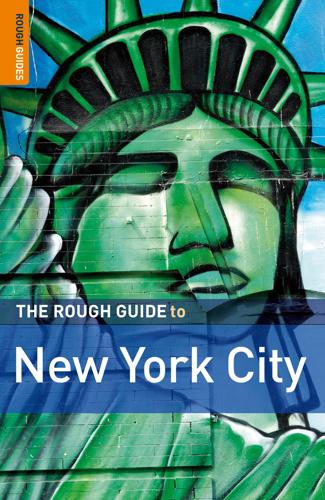
The Rough Guide to New York City
by
Martin Dunford
Published 2 Jan 2009
This 1400-member club offers many rides. 411 Fishing Sometimes the amount of concrete in New York can make you forget that the city is actually surrounded by water, much of it teeming with fish. Call the New York State Department of Health’s Center for Environmental Health Information line (T 1800/458-1158) for the latest tips on clean water and if you should toss your catch in the frying pan or back into the current. S PORT S A ND O U T D O O R AC T I V I T I E S | Participatory activities 412 Big City Fishing Pier 46 (West Village), Pier 84 (Midtown West) T 212/627-2020. Hudson River Park Trust runs this free program every summer weekend, providing free fishing rods, reels, and bait (as well as instruction) on a first-come, first-served basis, with a half-hour limit when others are waiting.

The Stack: On Software and Sovereignty
by
Benjamin H. Bratton
Published 19 Feb 2016
Over the course of four years, nearly a quarter of Puerto Rico's 337 public housing developments were “rescued” or “occupied,” leading to arrests of residents, the establishment of police outposts, and the erection of fences to control movement. Dr. Pila became a gated public housing development. The opportunity to live behind walls and under armed guard is available anywhere, it seems. It may even be true that in some circumstances, Users of a city-shaped camp (its autochthonous refugees), may have their clean water supply turned off if service fees are overdue.30 What remains persistent, however, is that the mutualizing interiority/exteriority of every enclave/camp condition is reversible, even if movement between one zone and another and the right of exit is not.31 The geodesign problems of generalizable secession are now dominated by the artificially narrowed interest of capital transactions (and transactors) to protect themselves from direct contact with their own externalities, not by the general interest to seek out viable access to that capital.

The River Cottage Fish Book: The Definitive Guide to Sourcing and Cooking Sustainable Fish and Shellfish
by
Hugh Fearnley-Whittingstall
Published 19 Nov 2007
Happily, measures can be taken to eliminate it in two phases, one pre- and one postcooking. Ideally, all bivalves gathered from the wild should be “purged.” This means immersing them in a large bucket of clean seawater for several hours, and remembering to give them a stir from time to time. As they filter the clean water, the bivalves should rinse out much of their grit. If you can suspend them in the upper part of the water, on a rack or colander (or a salad strainer—see the image below), then so much the better—the sand released will sink to the bottom of the bucket. If you think that your shellfish are really gritty, then several changes of water and a purging period of 12 hours or longer may be in order.
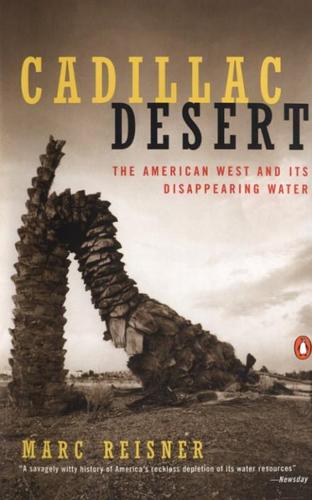
Cadillac Desert
by
Marc Reisner
Published 1 Jan 1986
Qualifying “improvement” is especially advised here, because the Monfort feedlot—100,000 cows on a couple of thousand acres—was an insult to all five senses. Its downwind neighbors found themselves wishing wistfully that they could replace it with a paper mill. One of the largest sources of nonpoint pollution in the country, the feedlot would sooner or later run into the Clean Water Act, and might be shut down for good. Rumor had it that Joe Monfort would be happy to have someone pay him to take it off his hands. But the Hardin site, if it was substituted for Narrows, would have to be authorized all over again. At its authorization hearings, it would run into cost-conscious members of Congress and the environmental movement, which hadn’t existed when Narrows was first authorized.

Total Recall: My Unbelievably True Life Story
by
Arnold Schwarzenegger
and
Peter Petre
Published 30 Sep 2012
There was no plumbing, no shower, and no flushing toilet, just a kind of chamber pot. The nearest well was almost a quarter mile away, and even when it was raining hard or snowing, one of us had to go. So we used as little water as we could. We’d heat it and fill the washbasin and give ourselves sponge or cloth baths—my mother would wash herself first with the clean water; next, my father would wash himself; and then Meinhard and I would have our turn. It didn’t matter if we had slightly darker water as long as we could avoid a trip to the well. We had wood furniture, very basic, and a few electric lamps. My father liked pictures and antiques, but when we were growing up, these were luxuries he couldn’t afford.

The Railways: Nation, Network and People
by
Simon Bradley
Published 23 Sep 2015
The latter type in particular had the drawback of exposing the user to howling draughts from below, especially in colder weather and when the train was moving at speed. The remedy, not always pursued, was to fit a sprung flap at the bottom of the chute or at the back of the pan, to be forced open by the flush. The 1880s brought the washdown closet, in which a fresh discharge of clean water replaced the water and waste in the pan. This became the standard British type. Its chief disadvantage, as most people discover, is that it stops working as soon as the water runs out. The drawbacks of the other kinds will be familiar to many with experience of railway travel overseas. Gentlemen visiting the facilities in the Great Northern’s carriage of 1882 were presented with a choice between a water closet and a urinal.

She Has Her Mother's Laugh
by
Carl Zimmer
Published 29 May 2018
Making matters even worse, the Industrial Revolution took place decades before the discovery of the germ theory of disease. On the crowded streets of American and European cities, outbreaks flared up and doctors had little idea how to stop them. By the end of the nineteenth century, things had gotten much better, and people’s height reflected the improvement. Clean water and sewer systems helped children stay healthy. Railroad networks brought high-protein food into cities at affordable prices. At the same time, the size of families shrank, making it possible for parents to provide more care to fewer children. Now the scales of the Industrial Revolution tipped in height’s favor.

Lonely Planet Scotland
by
Lonely Planet
From the village of Coldingham, with its twisting streets, take the B6438 downhill to the small fishing village of St Abbs, a gorgeous, peaceful little community with a picture-perfect harbour nestled below the cliffs. 1Sights & Activities St Abbs Visitor CentreMUSEUM (%01890-771672; www.stabbsvisitorcentre.co.uk; Coldingham Rd, St Abbs; h10am-5pm Apr-Oct)F This modern exhibition in St Abbs has interesting interactive displays on the often stormy history of this harbour village. Spoken reminiscences from locals like a fisherman and lighthouse keeper are the highlight. St Abbs & Eyemouth Voluntary Marine ReserveNATURE RESERVE (%01890-771443; www.marine-reserve.co.uk)S The clear, clean waters around St Abbs form part of St Abbs & Eyemouth Voluntary Marine Reserve, one of the best cold-water diving sites in Europe. The reserve is home to a variety of marine life, including grey seals and porpoises. Visibility is about 7m to 8m but has been recorded at up to 24m. Beds of brown kelp form a hypnotically undulating forest on the seabed.

Lonely Planet Scotland
by
Lonely Planet
From the village of Coldingham, with its twisting streets, take the B6438 downhill to the small fishing village of St Abbs, a gorgeous, peaceful little community with a picture-perfect harbour nestled below the cliffs. 1Sights & Activities St Abbs & Eyemouth Voluntary Marine ReserveNATURE RESERVE (%01890-771443; www.marine-reserve.co.uk) S The clear, clean waters around St Abbs form part of St Abbs & Eyemouth Voluntary Marine Reserve, one of the best cold-water diving sites in Europe. The reserve is home to a variety of marine life, including grey seals and porpoises. Visibility is about 7m to 8m but has been recorded at up to 24m. Beds of brown kelp form a hypnotically undulating forest on the seabed.

The Rough Guide to New York City
by
Rough Guides
Published 21 May 2018
Fishing Sometimes the amount of concrete in New York can make you forget that the city is actually surrounded by water, much of it teeming with fish. If you’re looking to get out on the water, it’s best to hit City Island. Call the New York State Department of Health’s Environmental Health Information line (1 800 458 1158) for the latest tips on clean water and to find out if you should toss your catch in the frying pan or back into the current. Big City Fishing Pier 25 (N Moore St), Pier 63 (W 23rd St), Pier 84 (W 44th St) 212 627 2020, hudsonriverpark.org. Hudson River Park Trust runs this free summer programme, July and Aug (weather permitting), on different days: Mon at 5pm on Pier 25 and 63, and Sun at 11am on piers 25 and 84.

The Rough Guide to Sri Lanka
by
Rough Guides
Published 21 Sep 2018
Kuttam Pokuna Northeast of the Buddha lie the superbly preserved Kuttam Pokuna (“Twin Baths”), constructed in the eighth century for monks’ ritual ablutions. Standing at the far end of the smaller pond and looking to your right you can see a small stone pool at ground level. Water would have been fed into this and the sediment left to settle, after which the cleaned water would have been released into the smaller bath through the conduit with the eroded lion’s head on one side. The superb naga (snake) stone next to this conduit was a symbol of good fortune, while the urns at the top of the stairs down into the bath symbolize plenty. Water passed from the smaller to the larger bath through small holes connecting the two.

I Am Charlotte Simmons: A Novel
by
Tom Wolfe
Published 9 Nov 2004
She had the distinct feeling that if she stood up, she would pass out. She fished a washrag from out of the slop on the floor by the tub and crawled back to the toilet and wiped off the rim and crawled back to the tub and retrieved another rag and a hand towel and crawled back to the toilet bowl and dipped the rag into the now more or less clean water in the bowl and tried to scrub the bodice clean and dipped the towel and washed off her face and wiped her mouth. She was all right as long as she stayed on all fours, like an animal, and didn't have to raise her head. She crawled out of the bathroom, leaving the light on, and crawled on the carpet all the way back to the bed and crawled up on the bed on all fours and pulled the covers down and crawled under the covers, puked-on wet dress and all, and curled up on her side and sobbed herself to sleep.

The Man Who Saved the Union: Ulysses Grant in War and Peace
by
H. W. Brands
Published 1 Oct 2012
The village was small and poor, with adobe buildings with earthen floors lining its dirt streets. The water supply and sanitary facilities barely accommodated the resident population and were quickly overwhelmed by the needs of the invading force. Grant and the army regulars understood how to dig latrines and where to find clean water, but the volunteers made a horrible mess of their hydraulics and paid the price. “About one in five is sick all the time,” Grant wrote Julia. Many of the soldiers recovered, but some fifteen hundred died of their illnesses. Grant received a new assignment for the welcome journey away from the fever zone.
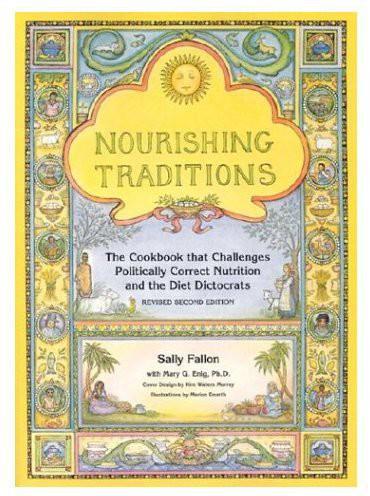
Nourishing Traditions: The Cookbook That Challenges Politically Correct Nutrition and The...
by
Sally Fallon
,
Pat Connolly
and
Mary G. Enig, Phd.
Published 14 May 1995
For this reason, we advise you to avoid freshwater fish unless you are sure of their origin, especially cat fish, carp and other scavengers, and to avoid overconsumption of shell fish. Shoreline feeders, such as sole and flounder, may be contaminated with PBC's. You needn't be concerned about mercury levels in deep-sea fish, such as salmon, tuna and swordfish, or from sole or flounder that come from relatively clean waters, such as those of the North Atlantic. Small amounts of mercury occur naturally in these fish, and they contain substances that bind with mercury to take it out of the body. Farm-raised fish are best avoided. Their fatty acid profile will not be as good as that of wild fish, and they are usually given inappropriate feed, such as soy pellets containing pesticide residues.

Memoirs of Extraordinary Popular Delusions and the Madness of Crowds - the Original Classic Edition
by
Charles MacKay
Published 14 Jun 2012
"Take of moss growing on the head of a thief who has been hanged and left in the air; of real mummy; of human blood, still warm—of each, one ounce; of human suet, two ounces; of linseed oil, turpentine, and Armenian bole—of each, two drachms. Mix all well in a mortar, and keep the salve in an oblong, narrow urn." With this salve the weapon, after being dipped in the blood from the wound, was to be carefully anointed, and then laid by in a cool place. In the mean time, the wound was to be duly washed with fair clean water, covered with a clean, soft, linen rag, and opened once a day to cleanse off purulent or other matter. Of the success of this treatment, says the writer of the able article on Animal Magnetism, in the twelfth volume of the Foreign Quarterly Review, there cannot be the least doubt; "for surgeons at this moment follow exactly the same method, except anointing the weapon!

Scandinavia
by
Andy Symington
Published 24 Feb 2012
Four of Sweden’s large rivers (Kalixälven, Piteälven, Vindelälven and Torneälven) have been declared National Heritage Rivers in order to protect them from hydroelectric development. Green Sweden Ecological consciousness in Sweden is very high and reflected in concern for native animals, clean water and renewable resources. Swedes are fervent believers in sorting and recycling household waste – you’ll be expected to do the same in hotels, hostels and camping grounds. Most plastic bottles and cans can be recycled – supermarket disposal machines give Skr0.50 to Skr1 per item. Sweden makes it easy to be a responsible traveller: recycling is practically effortless, as bins and sorting instructions are everywhere, from hotel rooms to highway rest stops.

Scotland Travel Guide
by
Lonely Planet
Sights & Activities From the village of Coldingham, with its twisting streets, take the B6438 downhill to the small fishing village of St Abbs, a gorgeous, peaceful little community with a picture-perfect harbour nestled below the cliffs. St Abbs is a great place for walking – head for the car park at the harbour and have a stroll over the rocky sea walls to get a feel of this fabulous location. The clear, clean waters around St Abbs form part of St Abbs & Eyemouth Voluntary Marine Reserve (www.marine-reserve.co.uk; Northfield, St Abbs) , one of the best cold-water diving sites in Europe. The reserve is home to a variety of marine life, including grey seals and porpoises. Visibility is about 7m to 8m but has been recorded at 24m.
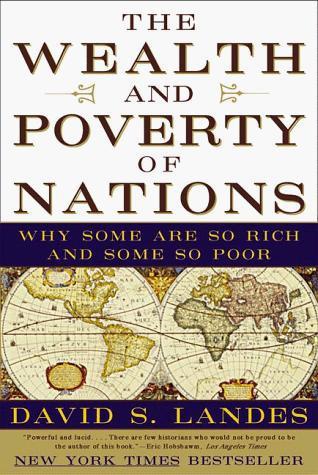
The Wealth and Poverty of Nations: Why Some Are So Rich and Some So Poor
by
David S. Landes
Published 14 Sep 1999
Medicine has made enormous strides since Nathan Rothschild’s time. But better, more efficacious medicine—the treatment of illness and repair of injury—is only part of the story. Much of the increased life expectancy of these years has come from gains in prevention, cleaner living rather than better medicine. Clean water and expeditious waste removal, plus improvements in personal cleanliness, have made all the difference. For a long time the great killer was gastrointestinal infection, transmitted from waste to hands to food to digestive tract; and this unseen but deadly enemy, ever present, was reinforced from time to time by epidemic microbes such as the vibrio of cholera.
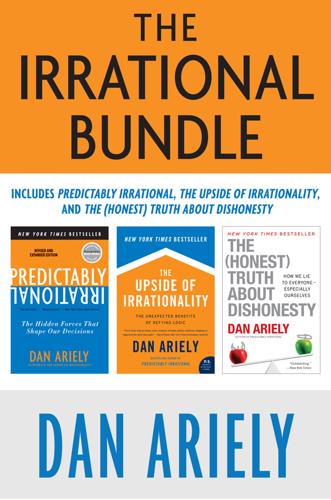
The Irrational Bundle
by
Dan Ariely
Published 3 Apr 2013
We honor innovators, praise and envy those who have original minds, and shake our heads when others aren’t able to think outside the box. There’s good reason for all of this. Creativity enhances our ability to solve problems by opening doors to new approaches and solutions. It’s what has enabled mankind to redesign our world in (sometimes) beneficial ways with inventions ranging from sewer and clean water systems to solar panels, and from skyscrapers to nanotechnology. Though we still have a way to go, we can thank creativity for much of our progress. After all, the world would be a much bleaker place without creative trailblazers such as Einstein, Shakespeare, and da Vinci. But that’s only part of the story.

Lonely Planet Morocco (Travel Guide)
by
Lonely Planet
,
Paul Clammer
and
Paula Hardy
Published 1 Jul 2014
Laid out as a large grid of downtown streets, surrounded by spacious residential suburbs, Agadir’s concrete-covered inland quarters are ugly and sterile. However, the city hits its stride on the beachfront promenade, where Moroccan street life comes with a refreshing sense of space. Arching south of the shiny white marina, the sheltered sandy beach offers clean water and 300 sunny days a year. Agadir caters mainly to package-tour holidaymakers, and will appeal less to independent travellers with an interest in Moroccan culture. Families will also enjoy relaxing on the beach and wandering around the handful of sights. If you do not have children in tow, however, we recommend heading elsewhere to make the most of a visit to Morocco.

The Rough Guide to Peru
by
Rough Guides
Published 27 Apr 2024
Located 40km beyond Chosica, the easiest way to visit this amazing site in the hard-to-access Santa Eulalia Valley is on a day-trip from the capital. The second week of October sees the start of the annual Festival del Agua, eight days of celebrations with music, dance and festivities. There is no clean water or food at the site, so make sure to take all provisions with you. San Pedro de Casta Only a few kilometres from Marcahuasi (2hr 30min–3hr trek), SAN PEDRO DE CASTA makes a good overnight stop – unless you choose to camp at Marcahuasi. It’s a small and simple Andean village, quaint but without much choice in its limited range of facilities.

Europe: A History
by
Norman Davies
Published 1 Jan 1996
He was learned in potions and remedies, concocting an elixir of life for the Bishop of Carcassonne and a diet of quince jelly for the Papal Legate. He worked in plague-stricken Marseilles and Avignon when all other doctors had left, refusing to bleed patients as was customary, and insisting on fresh air and clean water. More than once, as a suspected wizard, he attracted the notice of the Inquisition and fled abroad. On one such journey in the 1540s he is said to have met a young Italian monk and former shepherd, Felice Peretti, whom he addressed without hesitation as ‘Your Holiness’. Forty years later, long after Nostradamus’s death, Peretti was elected Pope as Sextus V.
…
But the guilty agent was eventually identified in 1883 as a bacterium, vibrio cholerae 01, which infected the small intestine after being imbibed with contaminated water. First observed by British Army doctors in India, the launch-pad of all the pandemics, physicians eventually realized that it could best be prevented by a clean water supply and best treated by simple rehydration techniques. The initial outbreak of 1817–23 had moved eastwards round Asia. But all subsequent pandemics—in 1829–51, 1852–9, 1863–79, 1881–96, and 1899–1923—visited Europe with a vengeance. The second pandemic, which had raged for fifteen years in the USA, came round again for a final fling in Europe in 1847–51.

The Great War for Civilisation: The Conquest of the Middle East
by
Robert Fisk
Published 2 Jan 2005
His desk was piled with statistics the UN didn’t want to know; that Iraq’s electrical power stations were producing less than 40 per cent of capacity, that water and sanitation systems were on the point of breakdown. Doctors were forced to reuse rubber gloves during operations, their wards were without air-conditioning or clean water. Without electrical pumps, water pressure was falling in the pipes and sewage was being sucked into the vacuum. “The government here used to encourage the use of infant formula—and infant formula with contaminated water is a real killer.” But Halliday was worried by other, long-term effects of this suffering.
…
Contamination of drinking water, he wrote, was the main reason why the proportion of Iraqi children who died before they reached twelve months had risen from 3.5 per cent in the year before sanctions to 12 per cent nine years later. Lack of spare parts for electrical equipment, absence of staff and the subsequent reduced power supply had cut off clean water in many areas.154 Western humanitarian workers sometimes felt their own contribution was near-useless. Judy Morgan, who worked for CARE in Baghdad, described how she felt like a poor relative of King Canute. “The water is lapping round our feet before we’ve even had the chance to order the tide to turn back,” she told me one afternoon in 1998.
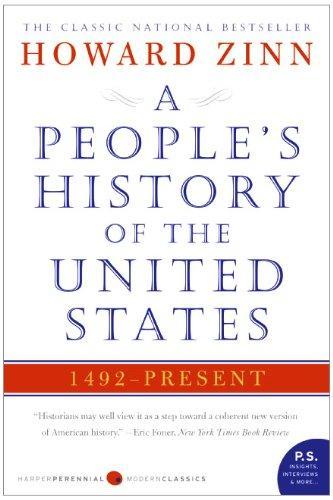
A People's History of the United States
by
Howard Zinn
Published 2 Jan 1977
We are hated because our government denies these things to people in Third World countries whose resources are coveted by our multinational corporations. That hatred we have sown has come back to haunt us in the form of terrorism. . . . Instead of sending our sons and daughters around the world to kill Arabs so we can have the oil under their sand, we should send them to rebuild their infrastructure, supply clean water, and feed starving children. . . . In short, we should do good instead of evil. Who would try to stop us? Who would hate us? Who would want to bomb us? That is the truth the American people need to hear. Voices like that were mostly shut out of the major American media after the September 11 attacks.
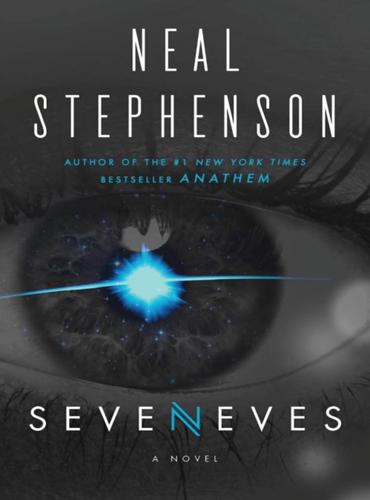
Seveneves
by
Neal Stephenson
Published 19 May 2015
After that, however, they had to suspend operations, since they’d used up all the propellant stored in the Shipyard’s ice-buried tanks. They needed to give the reactor and the splitters some time to catch up. Even a nuclear power plant could split water only so fast. Not long after, the operation was shut down for a week by problems in feeding clean water to the system. For another month it could only operate at about a quarter of its planned capacity. But over time they worked the bugs out and began to burn the engines more and more at each perigee, gradually extending Endurance’s reach toward Cleft. If they could keep it up, that reach would get less gradual over time.

The Vietnam War: An Intimate History
by
Geoffrey C. Ward
and
Ken Burns
Published 4 Sep 2017
That would never be easy. “There were many Vietnam wars,” recalled intelligence officer Stuart Herrington. “I saw a different war from my friends who were in infantry units. We lived in the villages. Our war and the infantry war canceled each other out. We worked to create a safe environment, with clean water, schools, etc. We advised the ARVN military how to protect themselves, got to know the people in the villages. We tried to insulate the hamlets from the VC, tried to help the government do things so the villagers would have a stake. We’d do that for a year. Then the infantry would come in and set up a bivouac.
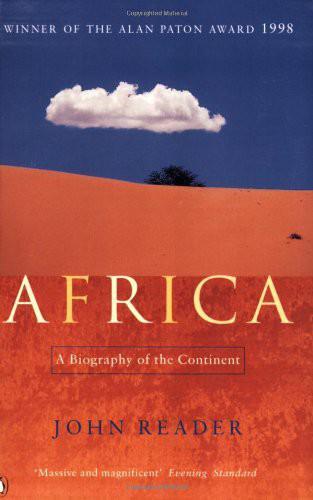
Africa: A Biography of the Continent
by
John Reader
Published 5 Nov 1998
To reduce their operational efficiency still further, the British commander, Lord Kitchener, ordered that the farmhouses of combatant Boers should be burned, their crops destroyed, their livestock removed, and their families herded into concentration camps. By October 1901 the population of the concentration camps stood at 111, 619.22 Conditions were appalling, lacking even the minimal requirements of clean water, food, and shelter that are essential to survival. Typhoid, dysentery, and measles were rampant, nursing care totally inadequate. Between June 1901 and May 1902, 27,927 Boer refugees perished in the British concentration camps, a death toll that amounted to twice the number of men killed in action on both sides, and represented perhaps 10 per cent of the Boer population of the two republics.

Rainbow Six
by
Tom Clancy
Published 2 Jan 1998
Popov made a show of looking through the pipe, but saw nothing at all, the metal tube was so packed with sediment, he guessed from what Miles had said. Then the plumber took it back and inserted a small screwdriver, jammed it like the ramrod of a musket to clear it out, then switched ends to do the same from the other direction. "So, we're going to get clean water for our coffee?" a voice asked. "I expect so, sir," Miles replied. Popov looked up and managed to keep his heart beating. It was Clark, Ivan Timofeyevich, as the KGB file had identified him. Tall, middle fifties, smiling down at the two workmen, dressed in suit and tie, which somehow looked uncomfortable on him.

Northern California Travel Guide
by
Lonely Planet
(Some say Muir died of heartbreak when Congress approved the construction project in 1914.) Lately a small, but vocal, minority has called for the draining of the reservoir to restore Hetch Hetchy Valley to its natural state. Opponents argue that not only is the valley's pristine state now irretrievable, but that un-damming it would undermine San Francisco’s supply of clean water. Voters agreed, and with 77% of the vote, soundly defeated a 2012 ballot measure to tear down the dam. The San Francisco airport introduced green ‘hydration stations’ at its state-of-the-art terminal to decrease waste from bottled water. The stations came with a snappy slogan, offering a drink from the ‘pristine Sierra snowmelt.’

To Sleep in a Sea of Stars
by
Christopher Paolini
Published 14 Sep 2020
“Any chance that the UMC’s hunters might intercept the signal?” Kira asked. “Eh,” said Falconi. “There’s a chance, but it’s literally astronomical.” 3. For the rest of the day, Kira helped Falconi run diagnostics throughout the Wallfish as he checked on the systems necessary for the smooth functioning of the ship. Air duct filters needed to be cleaned, water lines flushed, the fusion drive test fired, computers restarted, and outside sensors replaced, along with all the many little and not-so-little tasks that made survival in space possible. Falconi didn’t ask for help, but Kira had never been one to sit around when work needed doing. Besides, she could tell he was still suffering from the aftereffects of cryo.

In Europe
by
Geert Mak
Published 15 Sep 2004
I'm awakened by the groans of the man in the next room, and a few yelping cries from one of the working girls. It is quiet for a bit, and then together they sing a sweet melancholy song in an incomprehensible language. Meanwhile I lie there feeling a bit out of place in a Western bed, next to a shower that actually produces clean water. Just as my mattress springs easily back into shape, so has this entire city sprung back in a moment to European life, as though there had never been anything in between. Still, it was only ten years ago that people here first dared openly to celebrate Christmas. And ten years ago that they formed that human chain, right through three Baltic States, 650 kilometres long, with two million participants.

Lonely Planet Peru
by
Lonely Planet
In the Amazon rainforest, deforestation has led to erosion and a decline in bellwether species such as frogs. Erosion has also led to decreased water quality in this area, where silt-laden water is unable to support microorganisms at the base of the food chain. Potable water is an issue for a large number of Peruvians: in urban areas 87% of the population has access to clean water; in rural areas, the percentage drops to 62% of residents. There is also the problem of water pollution caused by mining in the highlands. Sewage contamination along the coast has led to many beaches around some coastal cities being declared unfit for swimming. In the south, pollution and overfishing have led to the continued decline of the Humboldt penguin (its numbers have declined by more than a third since the 1980s).
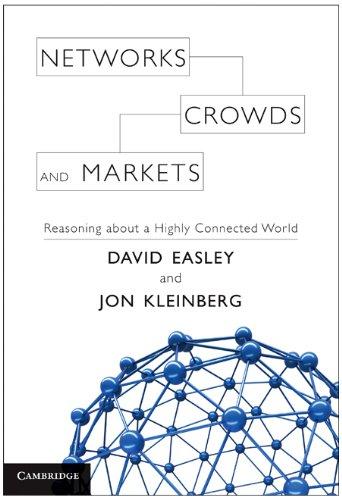
Networks, Crowds, and Markets: Reasoning About a Highly Connected World
by
David Easley
and
Jon Kleinberg
Published 15 Nov 2010
The power plant pays for many of the goods that it uses in the process of generating power; goods such as labor, capital equipment, and fuel are purchased on the market at prices that compensate the sellers of the these goods for the harm they suffer in giving them up. But the power plant also implicitly uses up clean air and clean water in the process of production. If the power plant had to pay a price that reflected the harm it causes to others — both individuals and other firms — by converting clean air and water into dirty air and water, then the allocation of power, air, and water would be socially optimal. Just as in the case of smoking in a restaurant, establishing a property right to either clean air and water or a property right giving the power plant the right to pollute the air and water, would in principle work to produce a socially optimal allocation of both power and the degree of pollution of air and water.

Golden Holocaust: Origins of the Cigarette Catastrophe and the Case for Abolition
by
Robert N. Proctor
Published 28 Feb 2012
When Raymond Pearl showed that smokers shorten their lives, for example, German industrialists asked how it could be that people living where lots of cigarettes were smoked tended to live longer than people in poorer parts of the world where fewer cigarettes were smoked.23 The puzzle should have taken about five seconds to solve, since it is based on a simple flaw. People in richer parts of the world tend to live longer for many reasons—foremost among these being that they are far more likely to survive infancy, childhood diseases, and childbirth. Rich people had (and still have) better access to clean water, clean jobs, and quality health care. It also happens to be true—or at least used to be true—that the rich were more likely to smoke. People in wealthier parts of the world therefore live longer, despite also smoking more. Studies like Pearl’s made it clear, though, that people in developed countries would live even longer if they didn’t smoke.
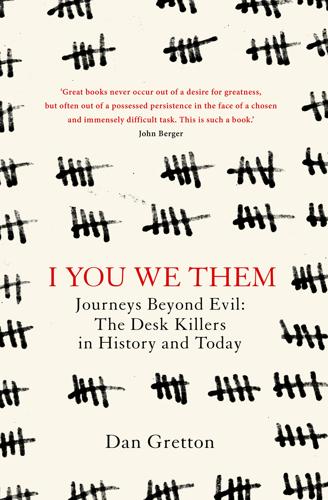
I You We Them
by
Dan Gretton
And all the teams of treasury economists, the whole of the World Bank, all the pink pages of the financial papers cannot shift that voice in my head. A voice as clear as justice. And perhaps the most important questions of all – how then can we connect to the lives of others? How can we open ourselves to the experiences of the majority of people on our planet who do not have access to clean water or electricity or health services? To try and connect, even on an imaginative level, or a level of knowledge, is disturbing, even painful – yet the impulse is also at the heart of what makes us human beings. It is the impulse which lies behind Primo Levi’s terrible warning – describing a transmission between two worlds that are, in reality, one.

The Pursuit of Power: Europe, 1815-1914
by
Richard J. Evans
Published 31 Aug 2016
In addition to Koch, the French chemist Louis Pasteur (1822–95) had made significant discoveries based on the germ theory of disease, developing vaccines for anthrax and rabies, and inventing the technique of ‘pasteurization’ to heat milk and kill any germs it might be carrying. But direct medical intervention did little to prevent and still less to cure infectious diseases in the nineteenth century. The sanitary revolution that took place in Europe’s cities in the second half of the century, with the provision of clean water and proper sewage disposal, certainly helped stop the spread of cholera, just as it reduced the incidence of typhus and typhoid and similar diseases. After 1892, border controls, the disinfection of railway travellers and other similar measures were remarkably effective in preventing the spread of cholera across Europe.

The Year's Best Science Fiction: Twenty-Sixth Annual Collection
by
Gardner Dozois
Published 23 Jun 2009
Even slight blessings came with a bitter edge. When rain fell, as it did several times, sudden cloudbursts that scoured the rocks and then evaporated like water on a frying pan, everyone in camp, guard and deacon and penitent, ran outside to wash themselves and their clothes, to open their mouths to the sky and drink clean water that didn’t taste like sand or iron, to fill whatever cup or bowl they had for later, an extra portion that only left them longing for more. Comparisons to others were just as bitter; for example the realization one day, as he was pretending to accidentally drop his hat in the water so that it would cool his head as he worked, that the Adareans worked without hats, with their overalls opened, because they took energy from the sun, however slight, even while it beat Max down and drained him.

The scramble for Africa, 1876-1912
by
Thomas Pakenham
Published 19 Nov 1991
Typhoid, dysentery and (for children) measles – killers endemic to South Africa wherever people are concentrated – broke out and spread with frightening speed. But where were the doctors, the matrons, the nurses, the orderlies, the blankets, the medicines and the food for the invalids? Even the necessities for ordinary life on the veld were missing – a healthy diet, clean water, protection against the sun and frost. Stung by the campaign against ‘methods-of-barbarism’, and the outcry provoked in France and Germany, the government sent out a Ladies Commission of investigation led by Dame Millicent Fawcett, feminist and Liberal Unionist. The Fawcett Report confirmed the grim forecasts of Emily Hobhouse.
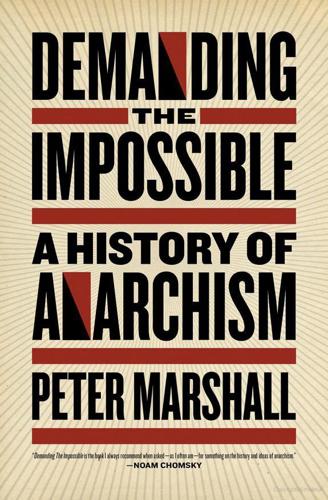
Demanding the Impossible: A History of Anarchism
by
Peter Marshall
Published 2 Jan 1992
In the Utopias of the anarcho-capitalists, there is little reason to believe that the rich and powerful will not continue to exploit and oppress the powerless and poor as they do at present. It is difficult to imagine that protective services could impose their ideas of fair procedure without resorting to coercion. With the free market encouraging selfishness, there is no assurance that ‘public goods’ like sanitation and clean water would be provided for all. Indeed, the anarcho-capitalists deny the very existence of collective interests and responsibilities. They reject the rich communitarian tradition of the ancient Greek polis in favour of the most limited form of possessive individualism. In their drive for self-interest, they have no conception of the general good or public interest.

Andrew Carnegie
by
David Nasaw
Published 15 Nov 2007
Disease coursed through the city, striking down the youngest and the oldest. There were cholera epidemics in 1849, 1850, 1854, and 1855.15 The Carnegies had not expected to find paradise in Allegheny City. For all its Old World charms, Dunfermline too had had its epidemics, its scavenging rodents, muddy streets, and clean water shortages. The reason why the Hogans and the Aitkins and the Carnegies and thousands like them had come to the United States in general, and the Pittsburgh area in particular, had less to do with health, hygiene, or the physical environment than with an abundance of well-paid jobs. In this respect, Pittsburgh and Allegheny City were everything that Dunfermline was not: their markets for manufactured goods were expanding rapidly, their economies were diversified, and there were no craft restrictions on the employment of skilled artisans.

Frommer's California 2007
by
Harry Basch
,
Mark Hiss
,
Erika Lenkert
and
Matthew Richard Poole
Published 6 Dec 2006
The specialized gardens, a project of Ada Wrigley, showcase plants endemic to California’s coastal islands. It’s open daily from 8am to 5pm; admission is $5, children under 12 are free. DIVING, SNORKELING & SEA KAYAKING Snorkeling, scuba diving, and sea kayaking are among the main reasons mainlanders head to Catalina. Catalina Island’s naturally clean water and giant kelp forests teeming with marine life have made it a renowned diving destination that attracts experts and beginning divers alike. Casino Point Marine Park, Southern California’s first city-designated underwater park, was established in 1965, behind the Casino. With its convenient location, it can get outrageously crowded in the summer.

Caribbean Islands
by
Lonely Planet
It’s hard to imagine more tranquil areas than Saba and Sint Eustatius, where most people don’t even have locks on their doors; whereas walking the streets of Port of Spain (Trinidad) or Fort-de-France (Martinique) after dark can certainly be a risky venture, especially for women ( Click here for more information specific to female travelers). In most areas there is a huge disparity between the income of locals and the (real or perceived) wealth of visitors. If you venture beyond the borders of the tourist areas, you may observe populations devastated by poverty, and a lack of medical supplies and clean water, in places like Jamaica and Haiti. Add to this the existence of drug production and trafficking and you can see why crime is a problem in some areas. Any notable safety concerns for each country are given in the chapter directories. It’s advisable to check your own government’s travel advisories for the latest information.
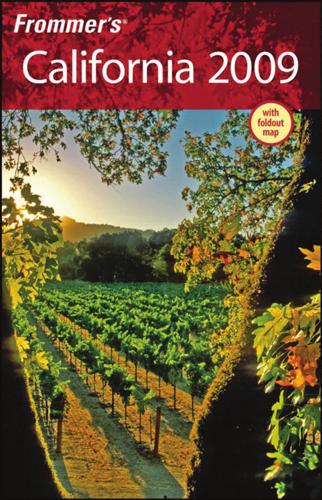
Frommer's California 2009
by
Matthew Poole
,
Harry Basch
,
Mark Hiss
and
Erika Lenkert
Published 2 Jan 2009
Descanso Beach Club offers the best beach in town but also gets crowded very quickly. Your best bet is to kayak out to a secluded co ve where you have the beach virtually to yourself. DIVING, SNORKELING & SEA K AYAKING Snorkeling, scuba diving, and sea kayaking are among the main reasons mainlanders head to Catalina. Catalina Island’s naturally clean water and giant kelp for ests teeming with marine life hav e made it a r enowned diving destination that attracts exper ts and beginning div ers alike. Casino Point Marine Park, Southern California’s first city-designated under water park, was established in 1965 and is located behind the Casino . Due to its conv enient location, it can get outrageously crowded in the summer (just like ev erything else at that time of y ear).

Lonely Planet China (Travel Guide)
by
Lonely Planet
and
Shawn Low
Published 1 Apr 2015
Beihai 1Sights 1Former British Consulate BuildingC2 2Former German Consulate BuildingC2 3Former Post OfficeC1 4Maruichi DrugstoreB1 4Sleeping 5 Backpacker InnA1 5Eating 6Aunty Li's Shrimp PancakesA1 7Old Town Coffee, Bar & RestaurantA1 Information 8ICBCC2 9Public Security BureauC1 Transport 10Buses to Silver BeachC1 11Central Long-Distance Bus StationD1 1Sights & Activities Silver BeachBEACH (Yintan GOOGLE MAP ) A long stretch of silvery-yellow sand with apparently clean water, about 8km south of the city centre. Take bus 3 (¥1.50) from the central bus station. Former British Consulate BuildingHISTORIC BUILDING (Yingguo Lingshiguan Jiuzhi MAP GOOGLE MAP ; Beihai No 1 Middle School, 1 Beihai Lu) Beihai's first consulate of a Western country is a whitewashed edifice built in 1885 that now sits inside an elite school.

The Rough Guide to France (Travel Guide eBook)
by
Rough Guides
Published 1 Aug 2019
The St-Cyprien quarter If you follow the rue de Metz westward from the Musée des Augustins, you come to the Pont-Neuf – begun in 1544 – where you can cross over to the St-Cyprien quarter on the left bank of the Garonne. At the end of the bridge on the left, an old water tower, erected in 1822 to supply clean water to the city’s drinking fountains, now houses the Galerie Municipale du Château d’Eau (Tues–Sun 1–7pm; €4; 05 61 77 09 40, galeriechateaudeau.org), a small but influential photography exhibition space and information centre, with frequently changing exhibitions. Next door, in the old hospital buildings at 2 rue Viguerie, there’s a small medical museum (Thurs, Fri & Sun 11am–5pm; free; 05 61 77 84 25, museemedecine.free.fr), which houses a selection of surgical instruments and pharmaceutical equipment.

Great Britain
by
David Else
and
Fionn Davenport
Published 2 Jan 2007
While some coastal areas may still be dirty and polluted, there are many other areas (around southwest England, and much of Wales and Scotland, for example) where the water is clear and many popular holiday beaches are proud holders of ‘blue flag’ awards. These awards show they meet international standards of cleanliness – on the sand and in the waves. The birds and whales like clean water too; the tourists are happy, the locals make some money and the scenery is stunning. Everybody wins! Return to beginning of chapter Outdoor Activities * * * WALKING CYCLING OTHER ACTIVITIES * * * What’s the best way to get off the beaten track as you travel around Britain?